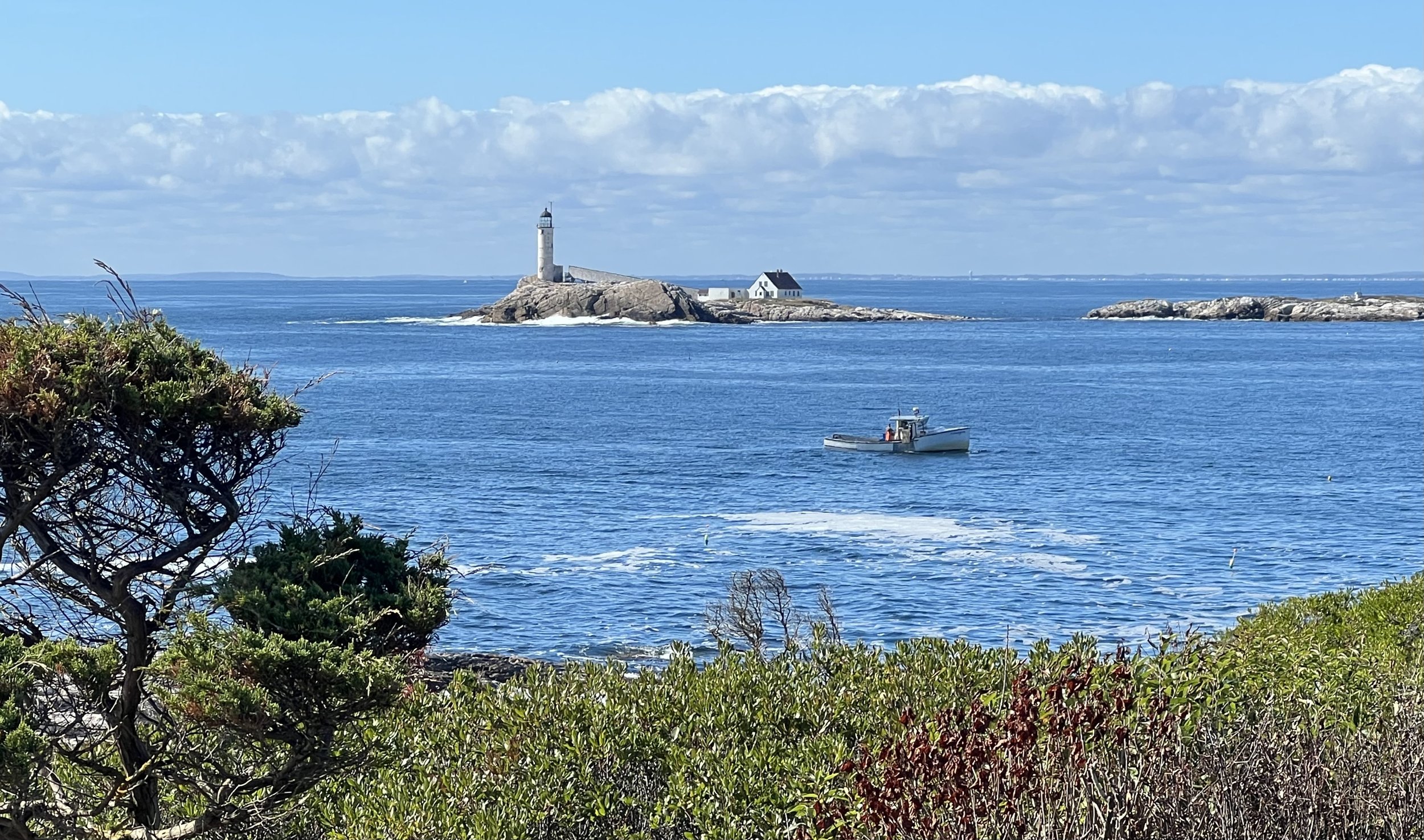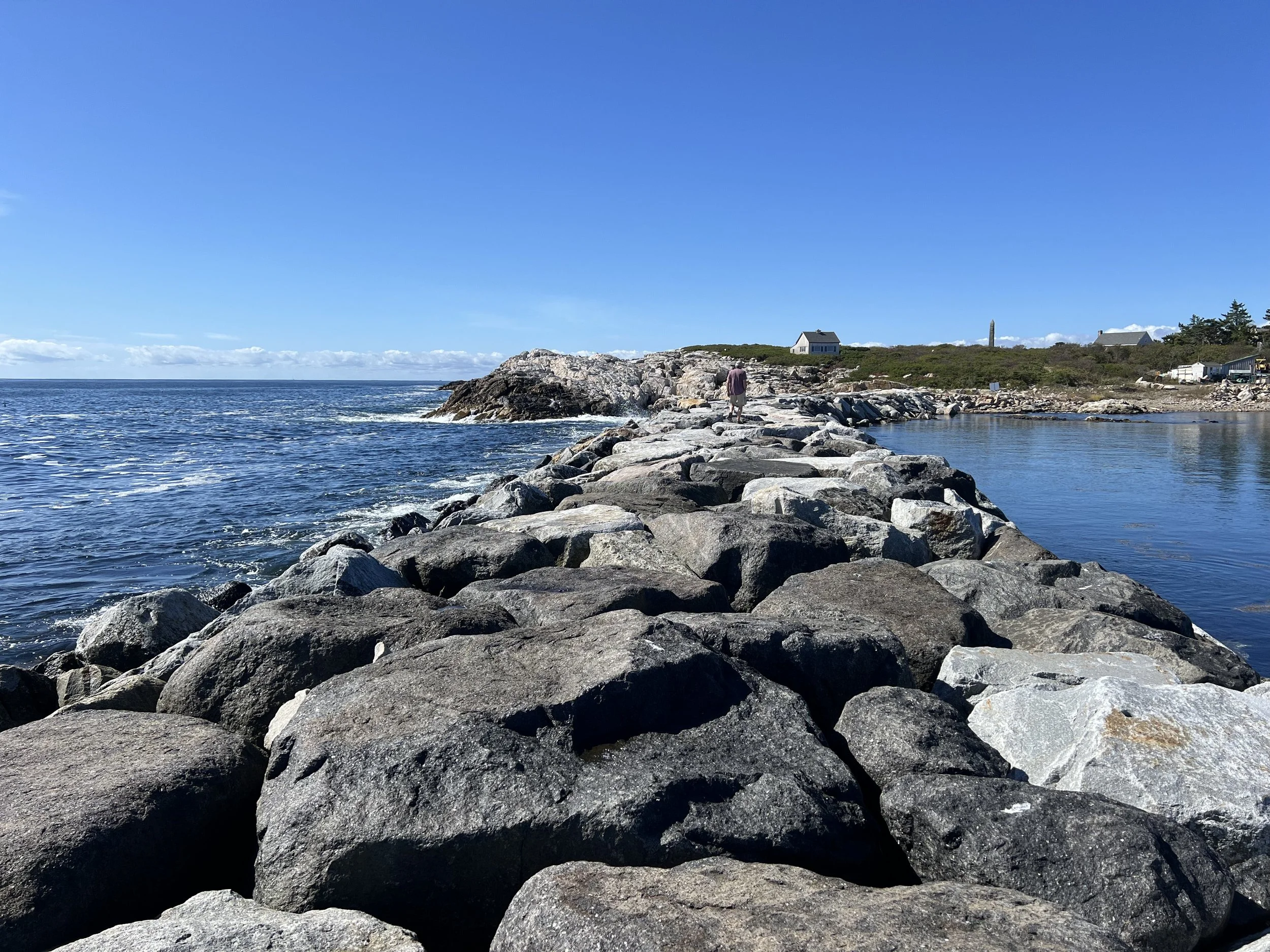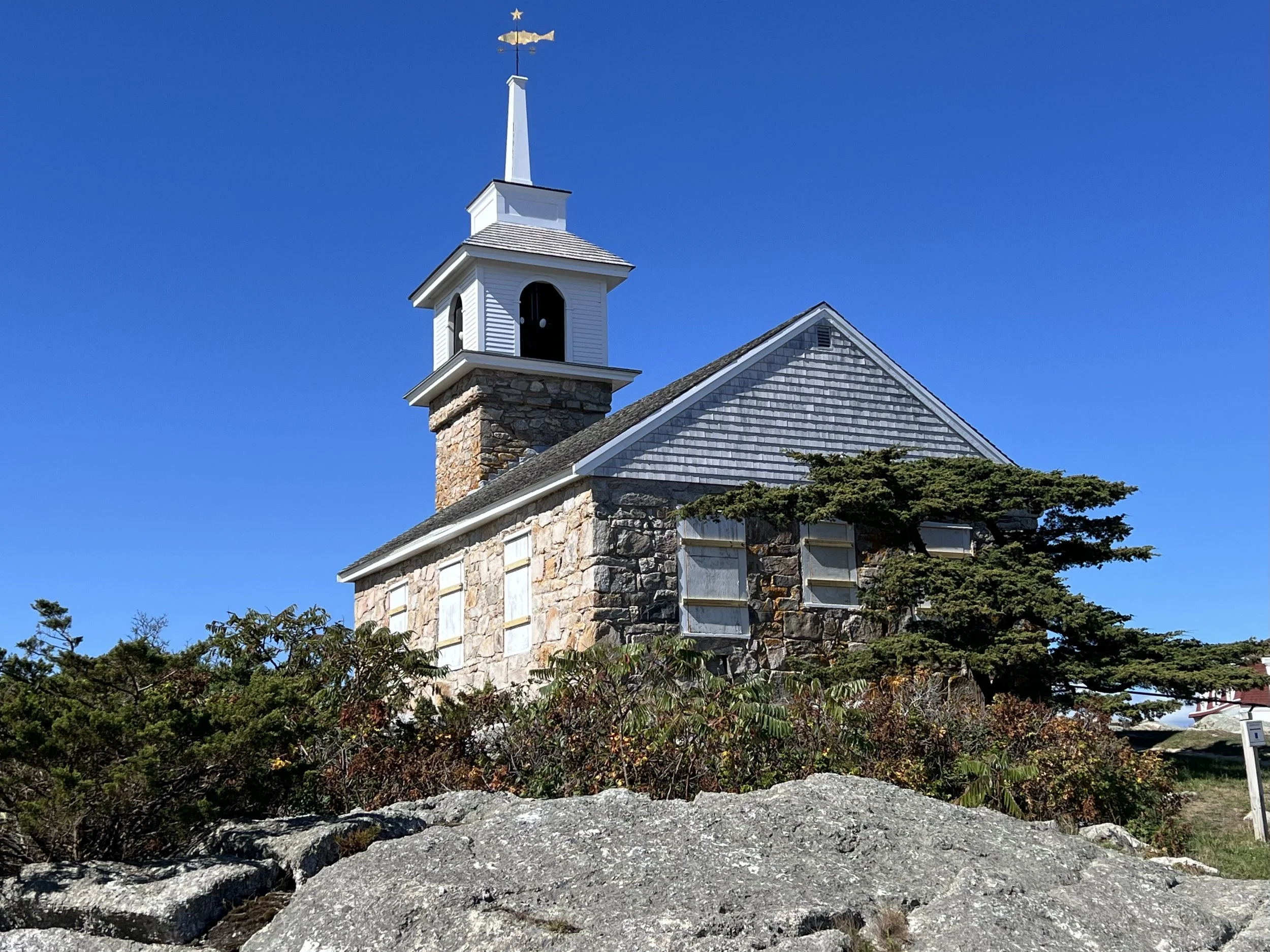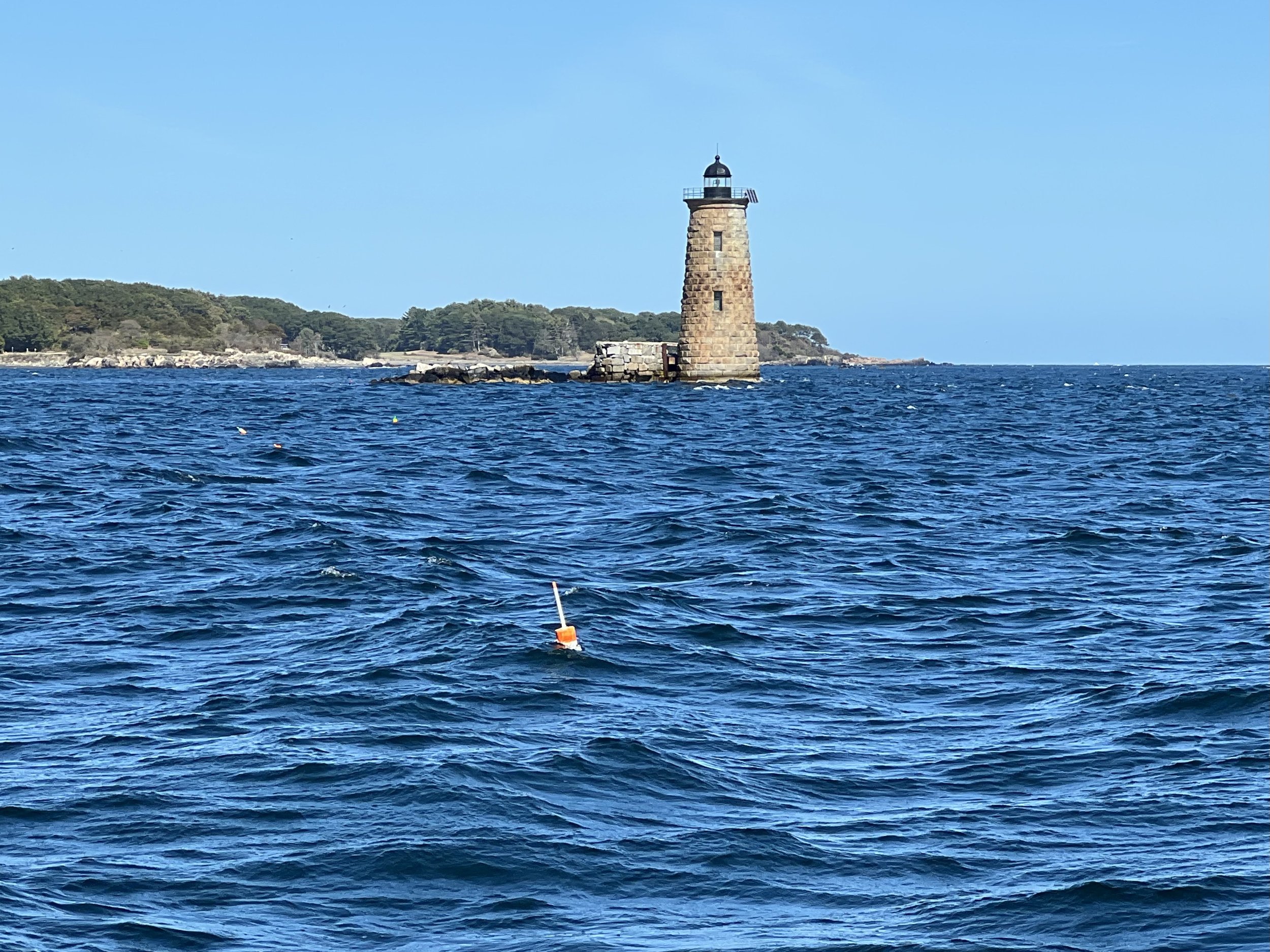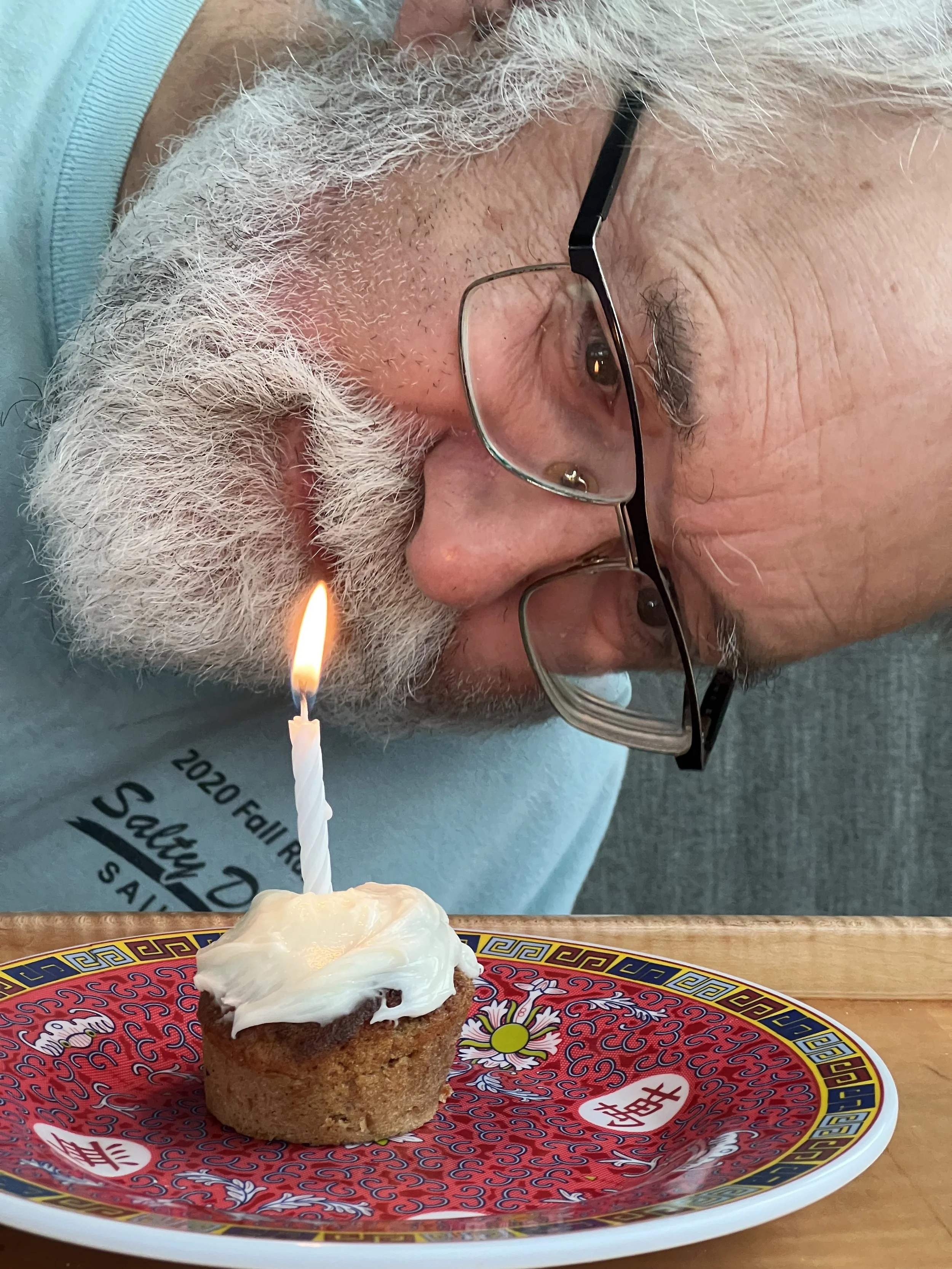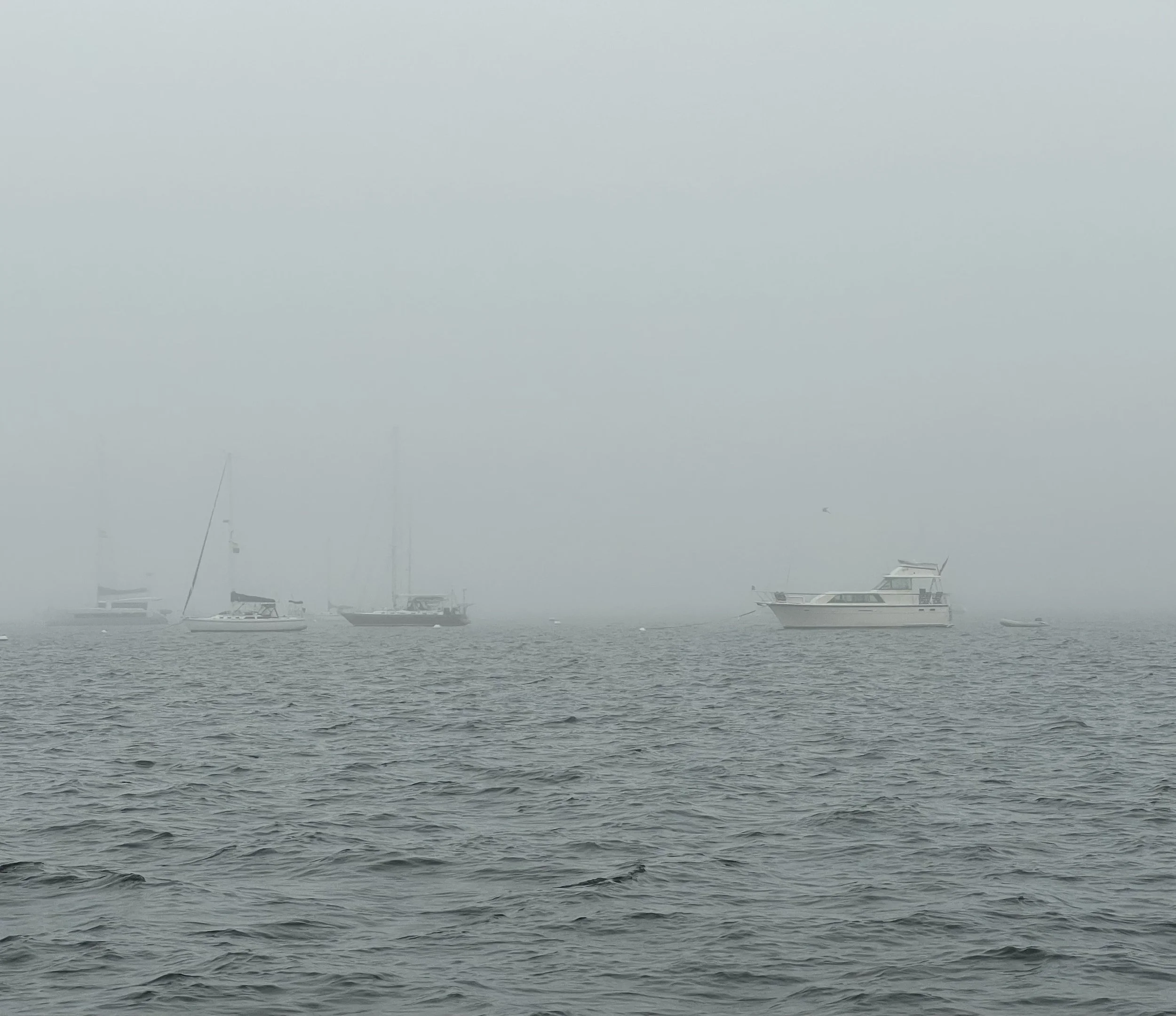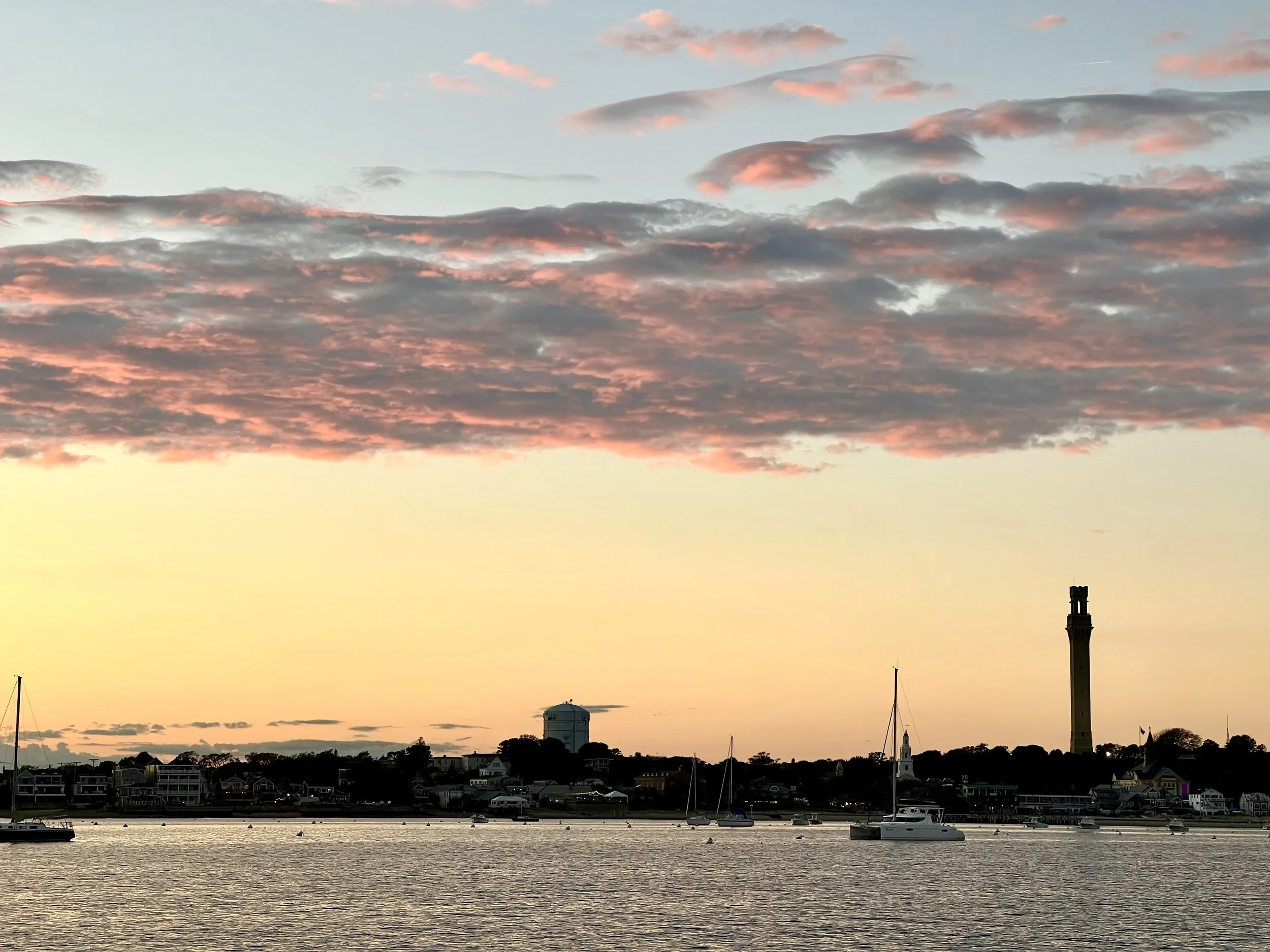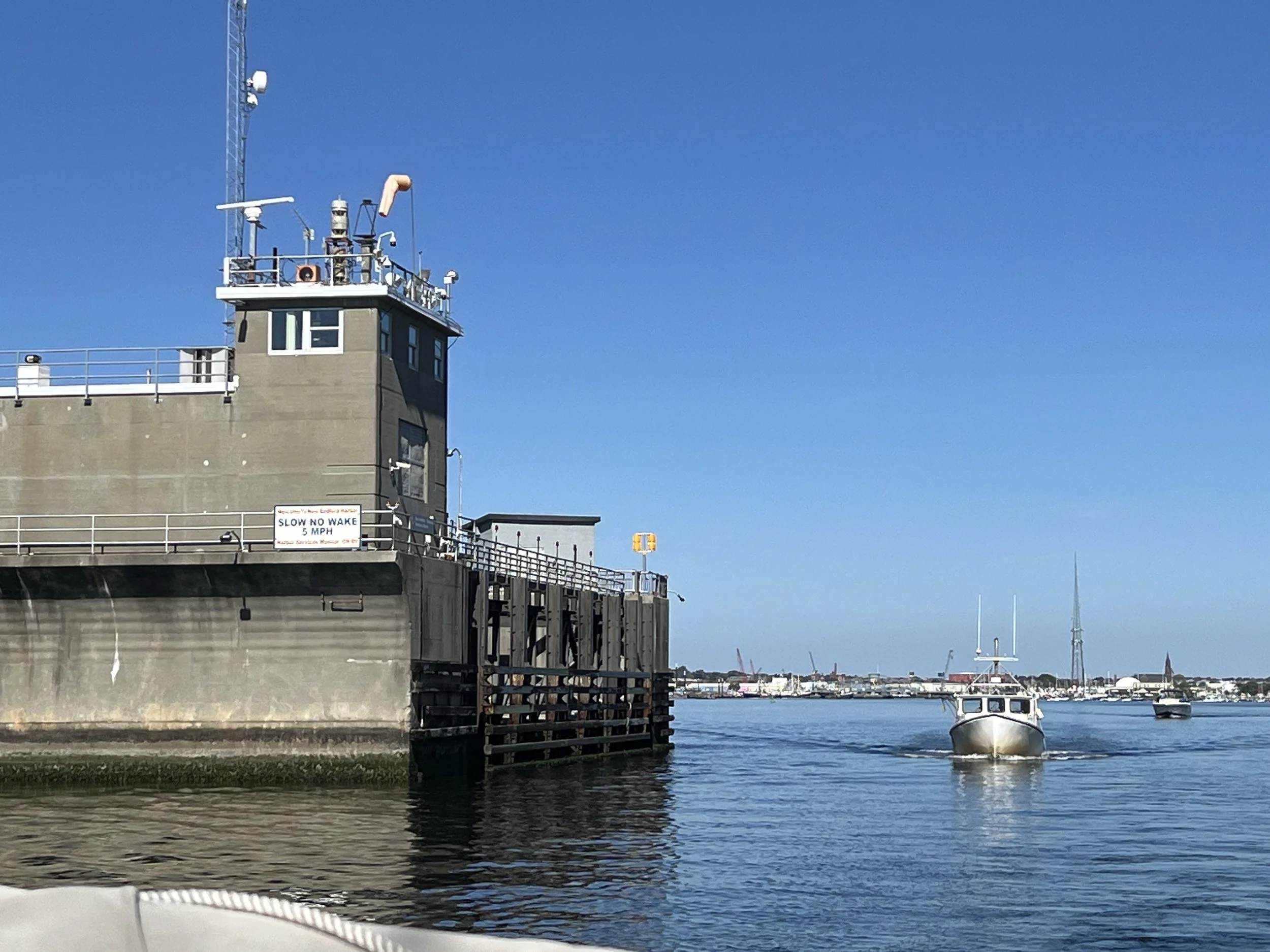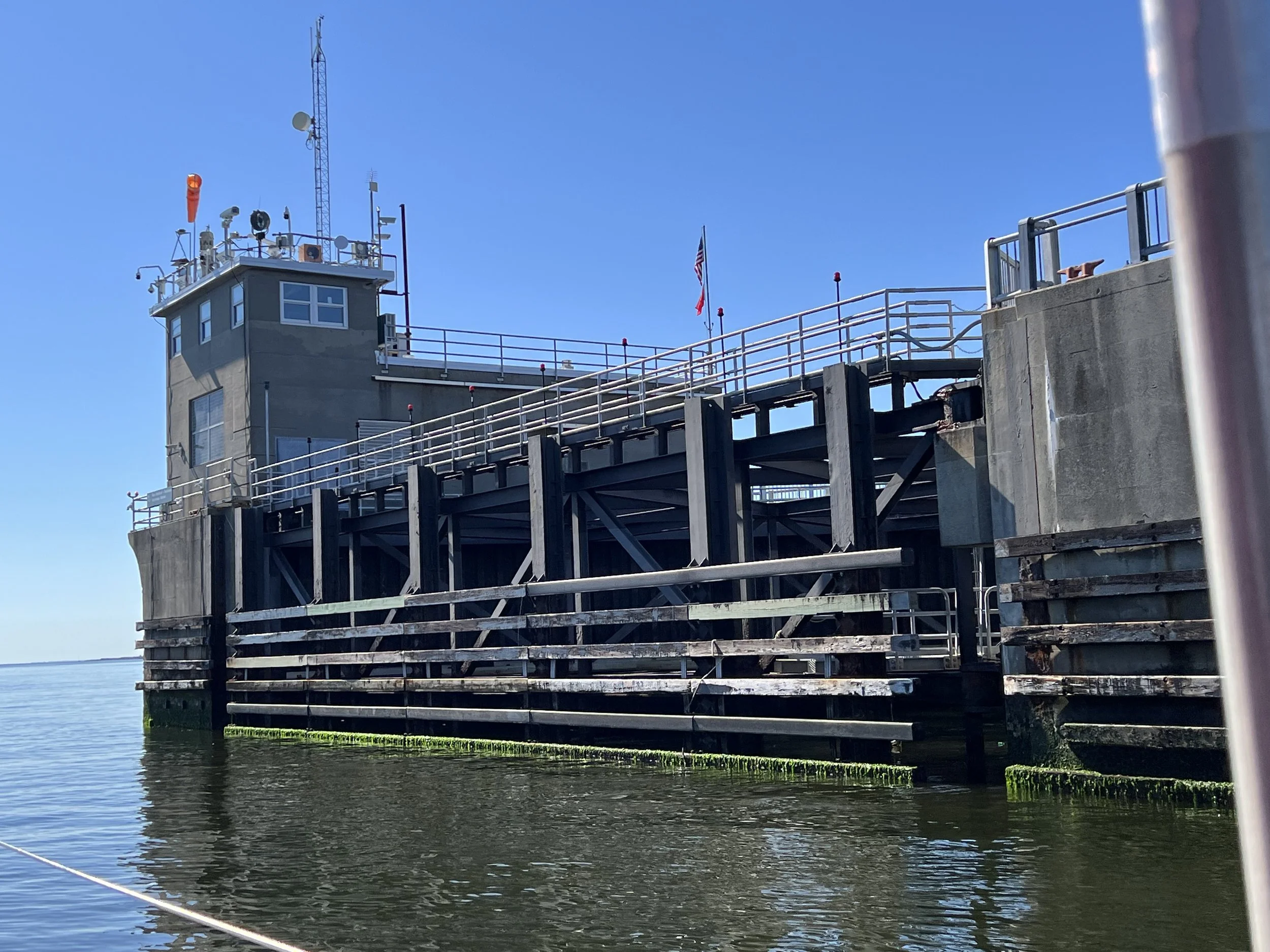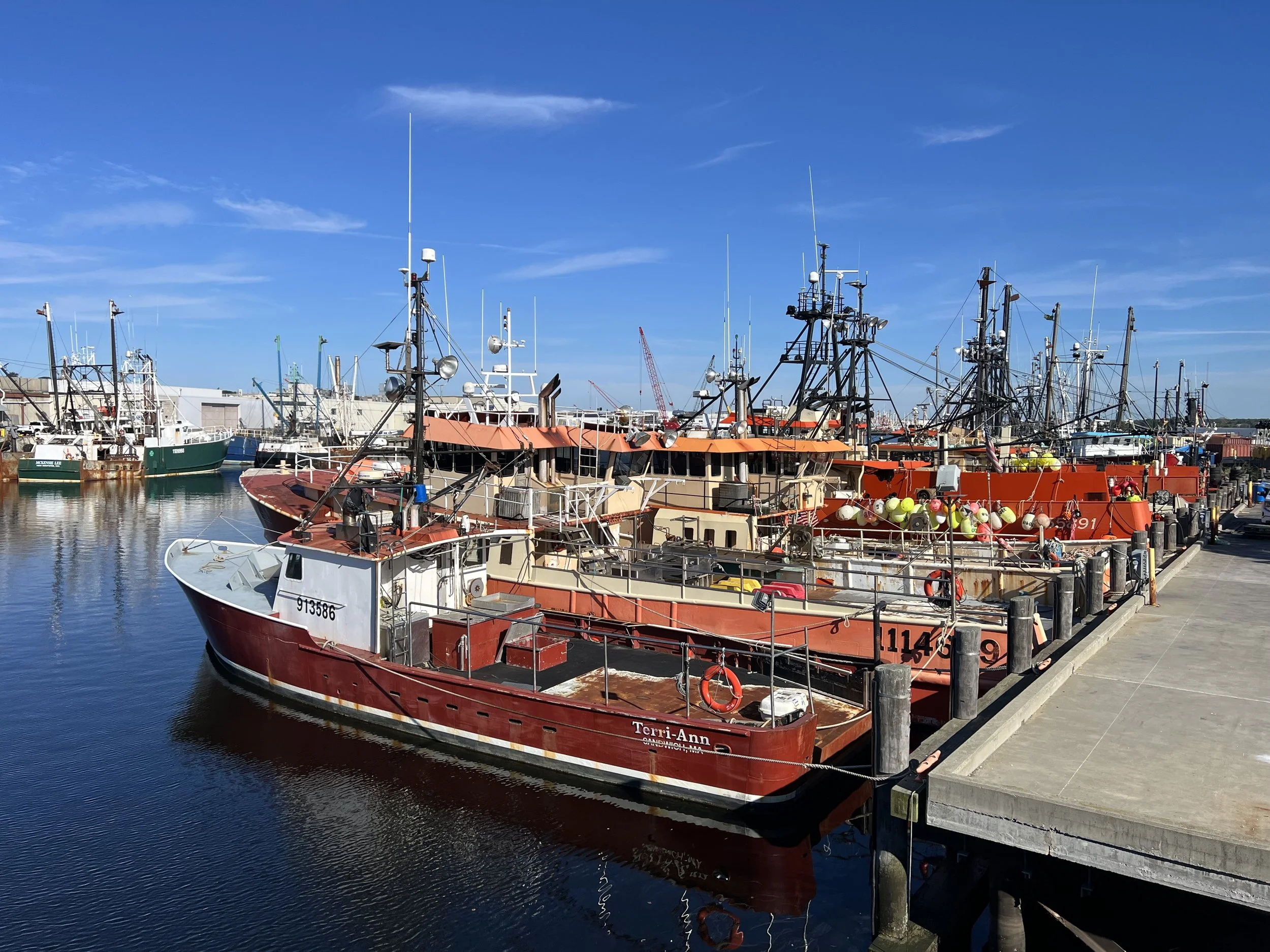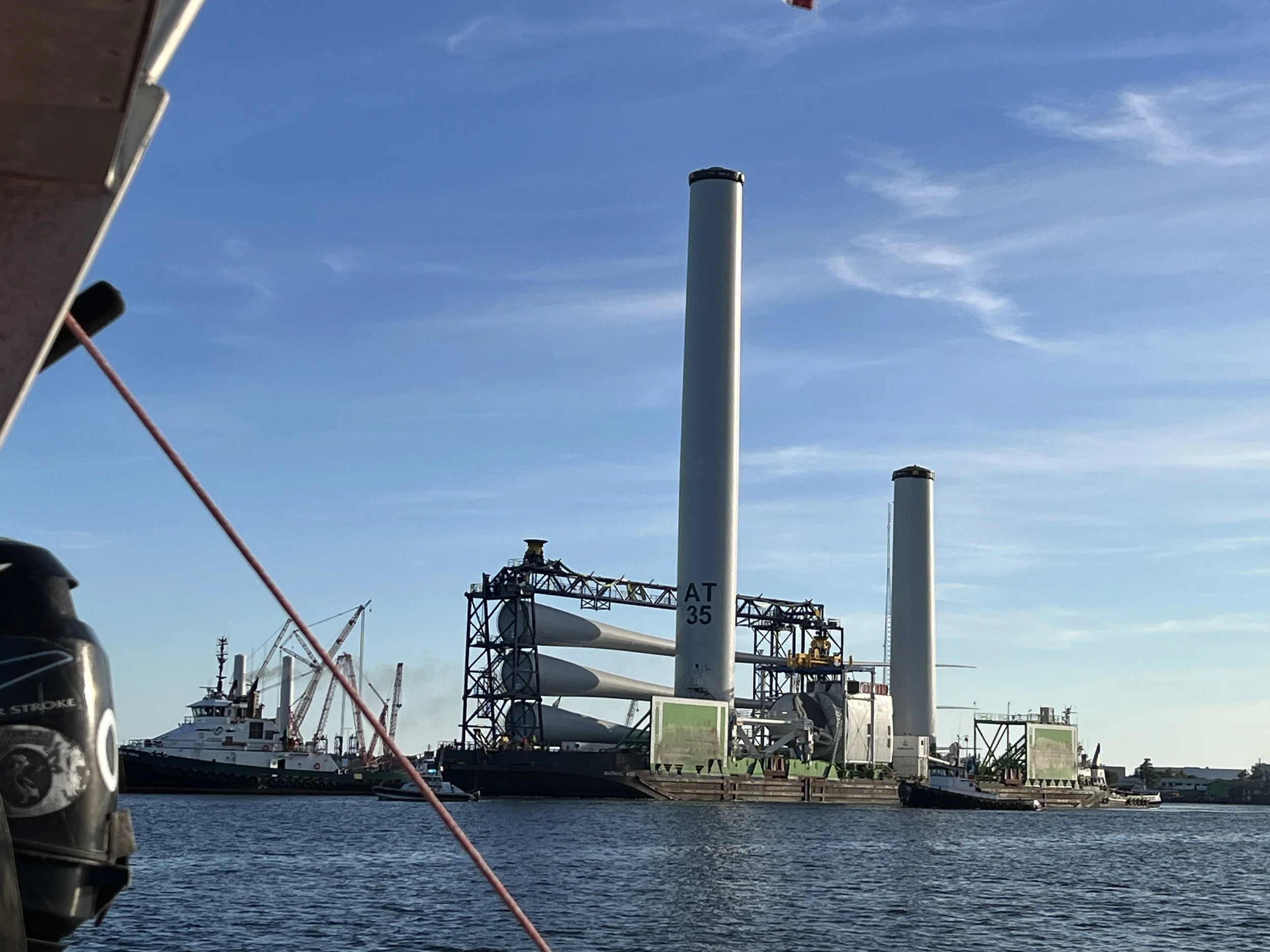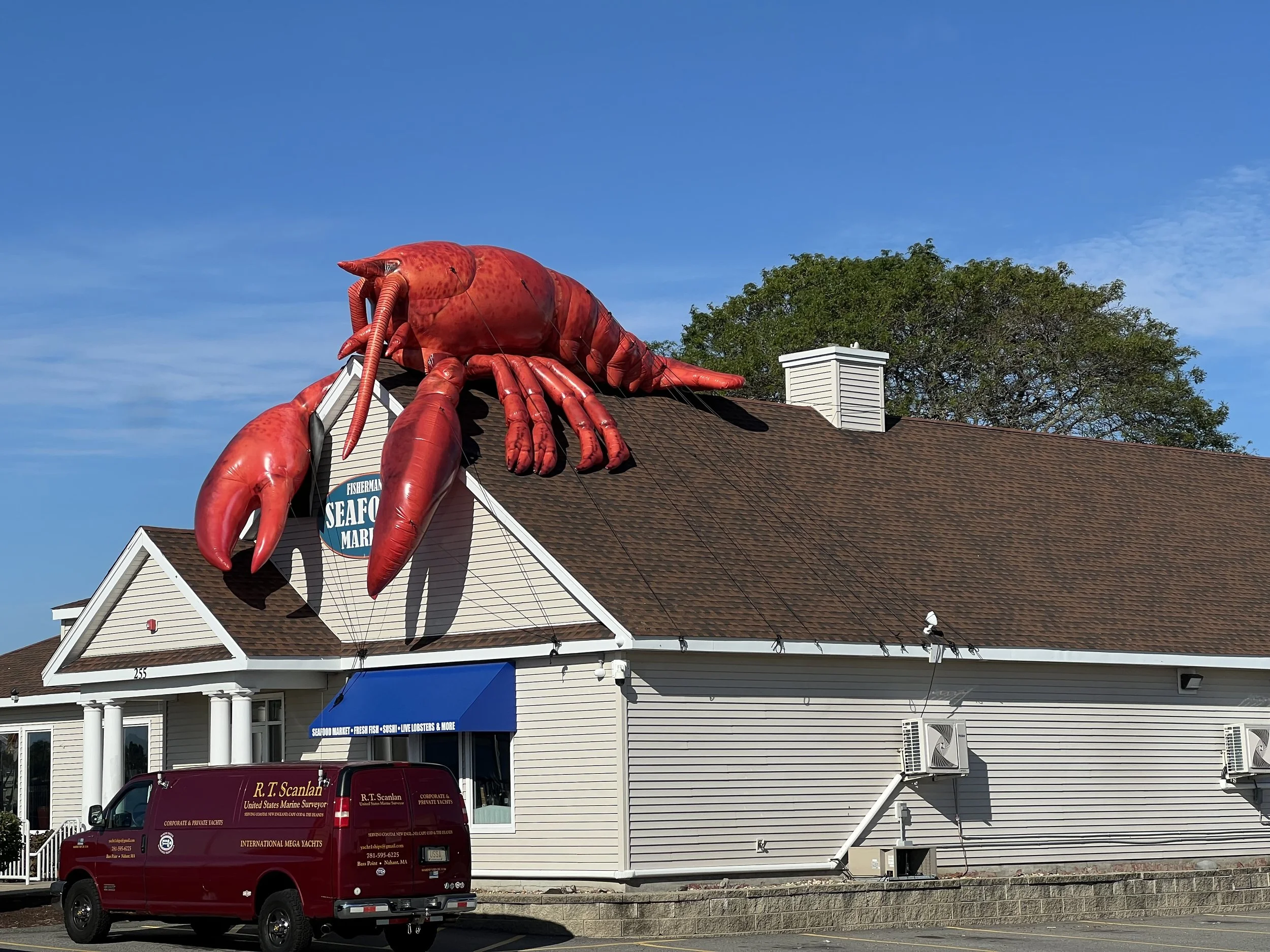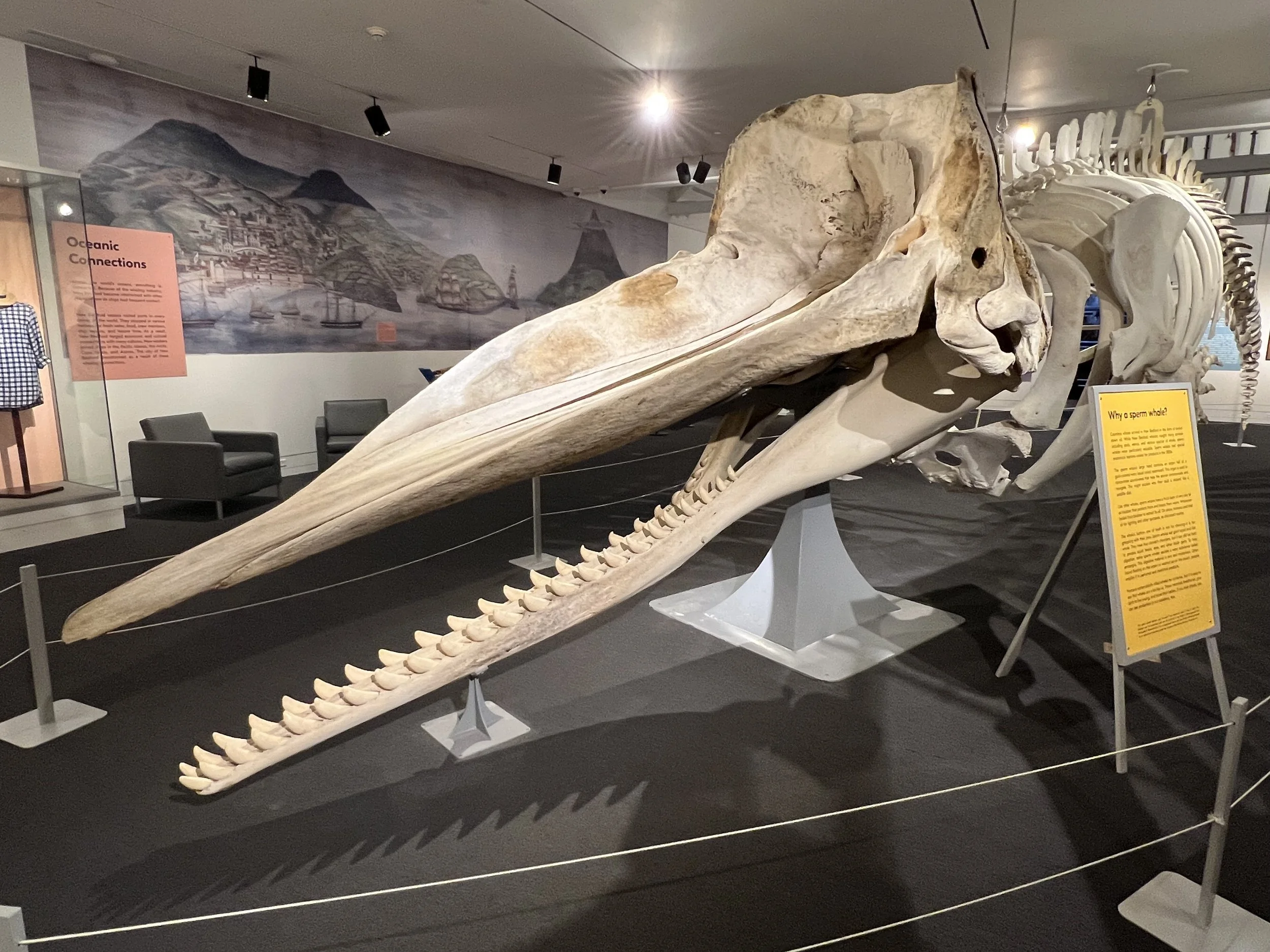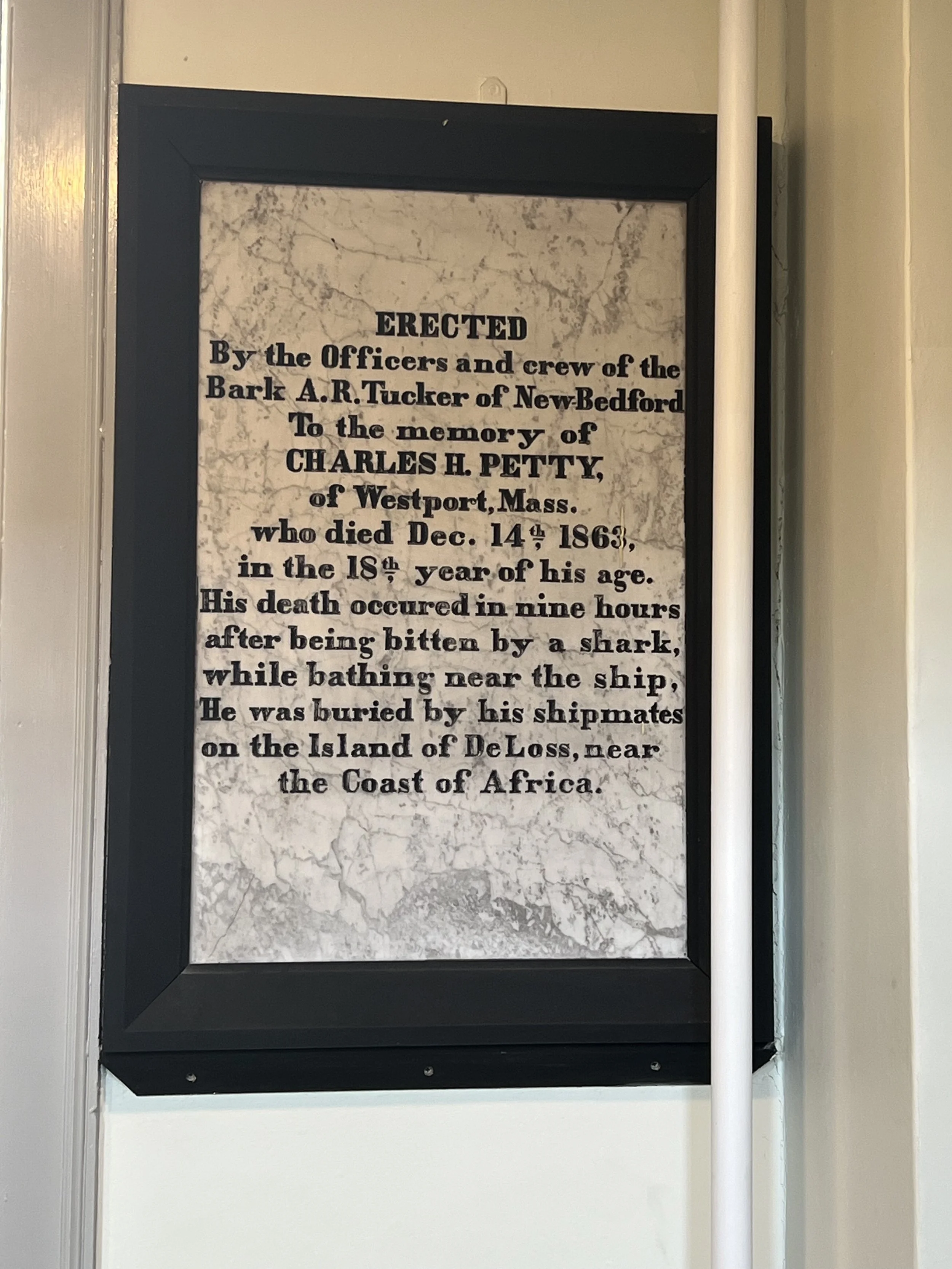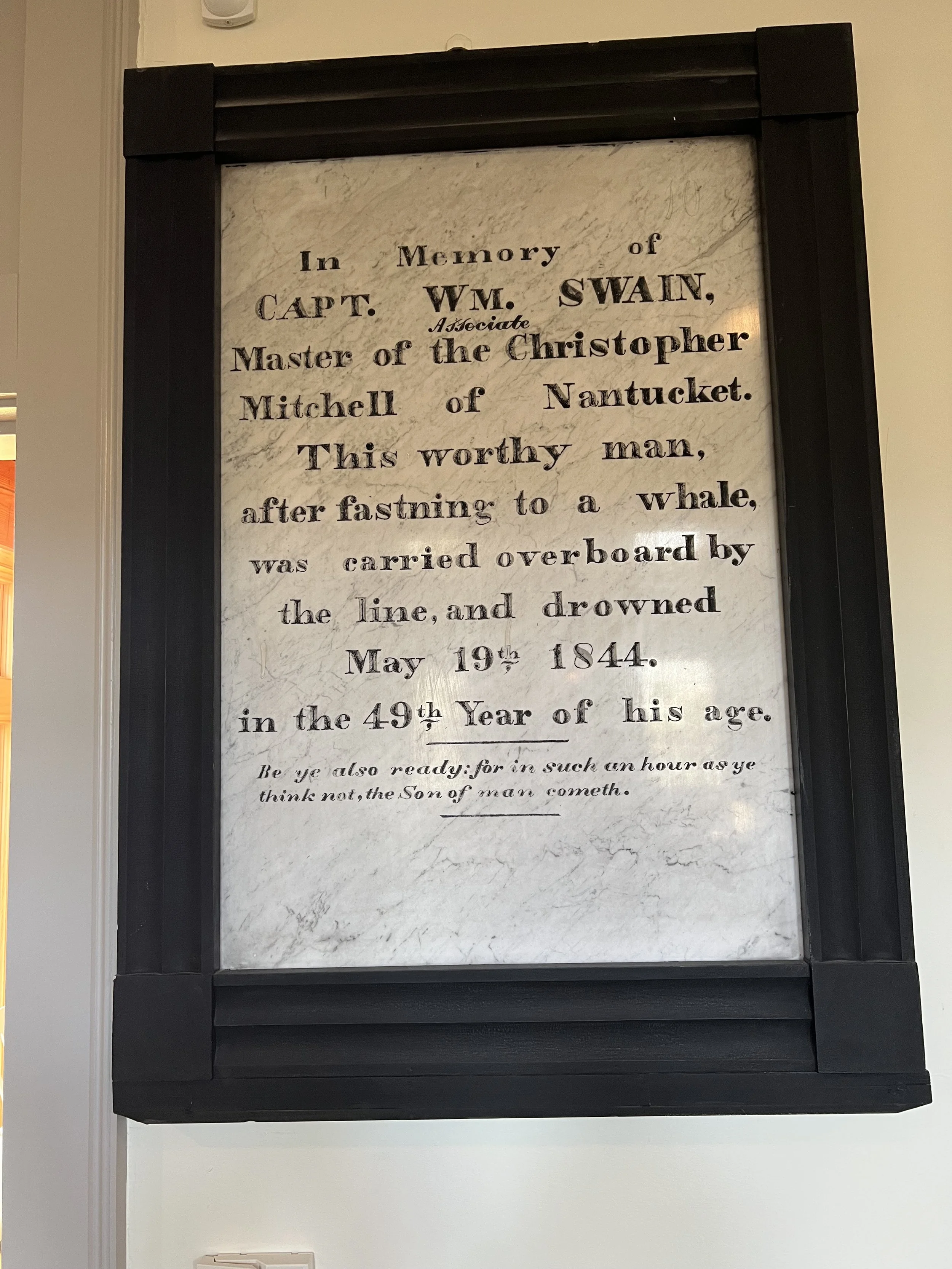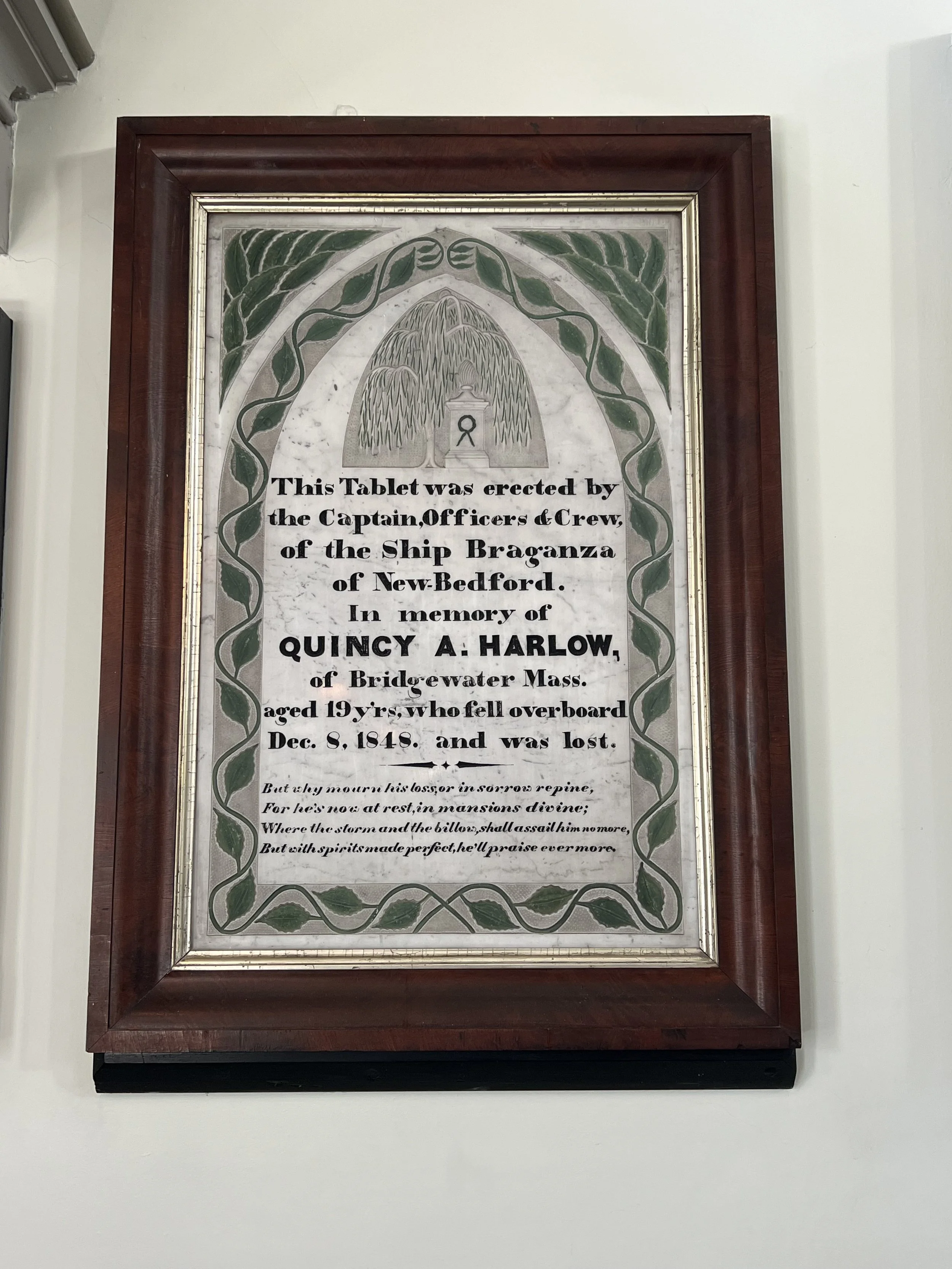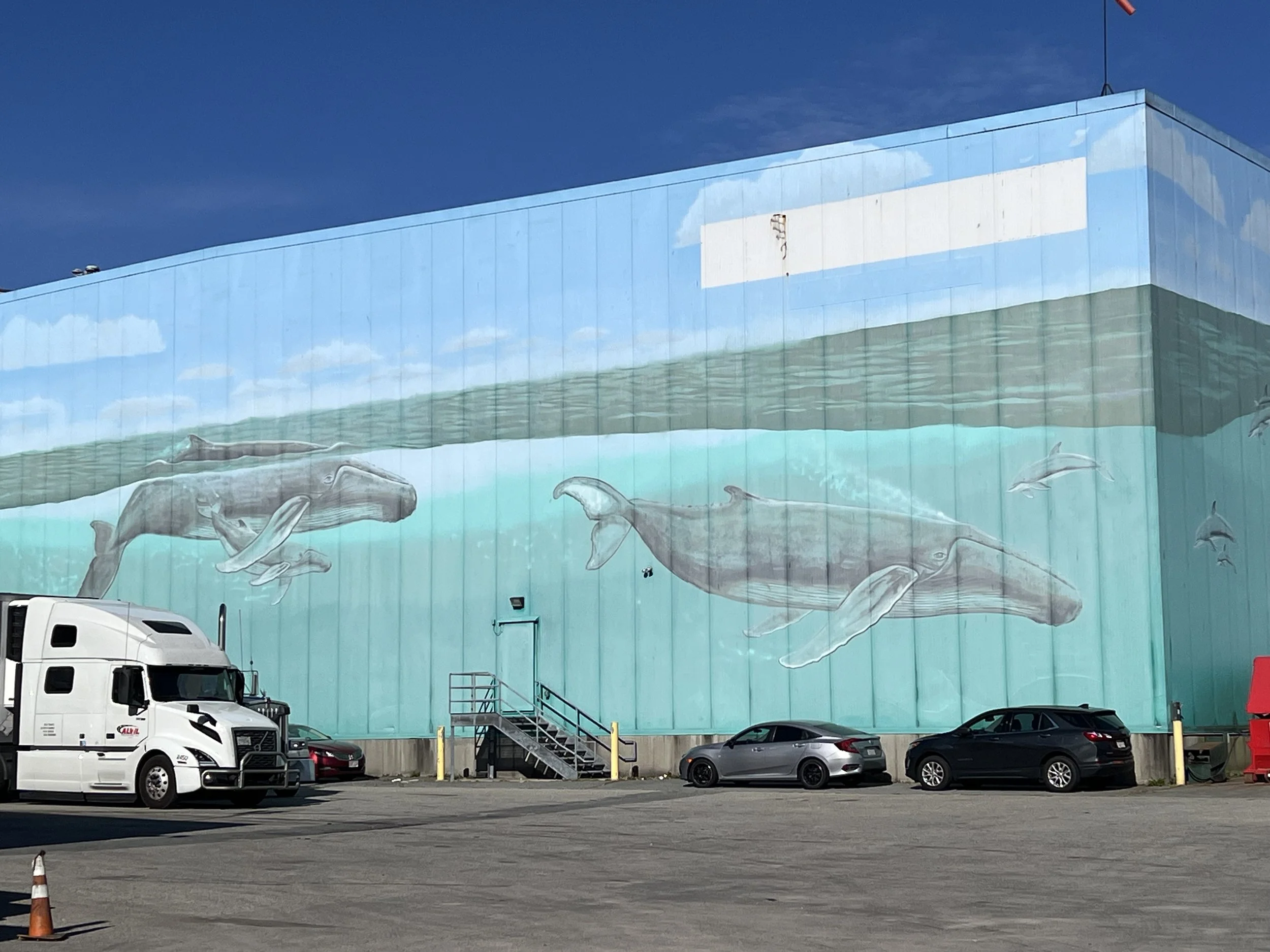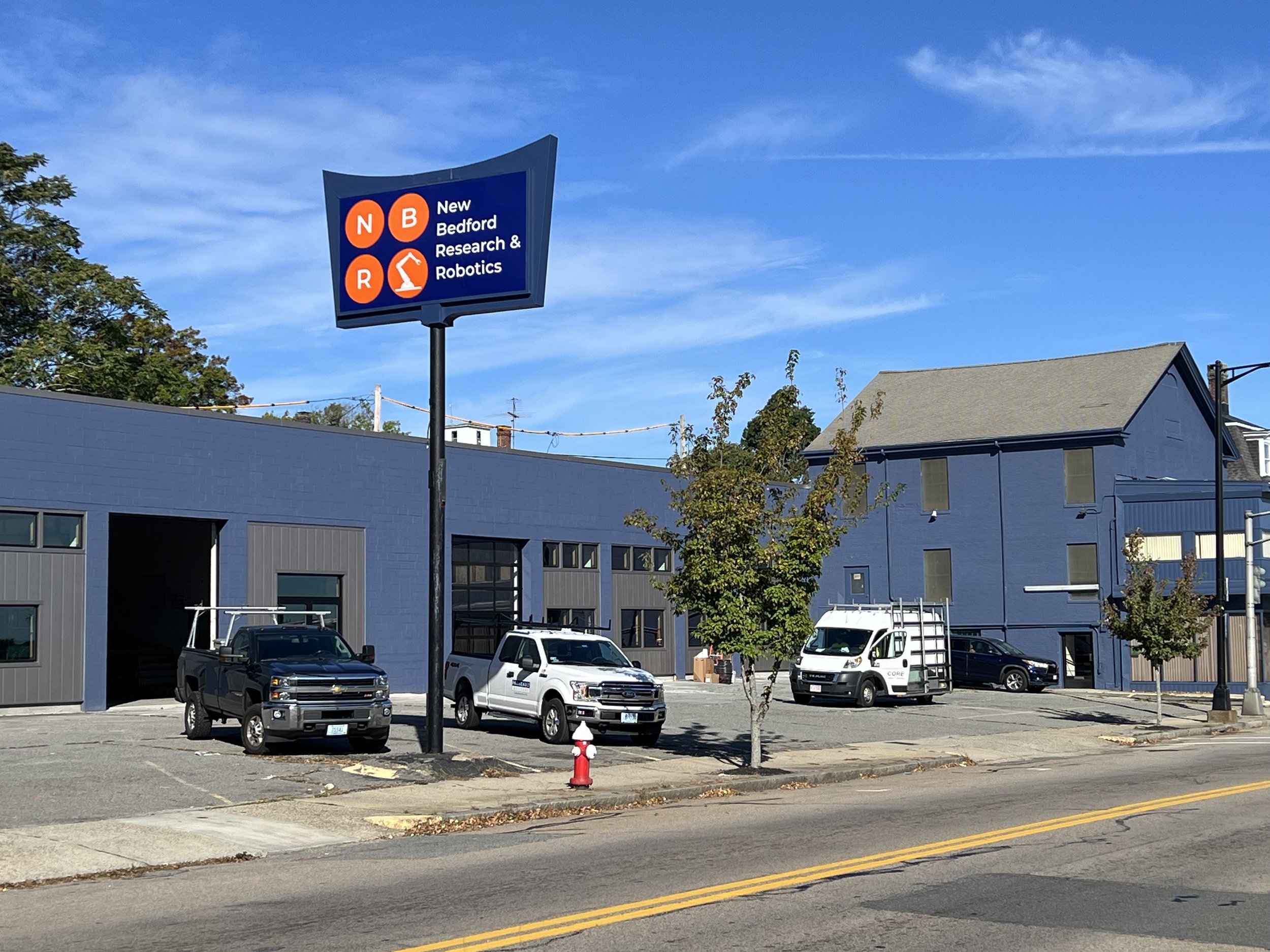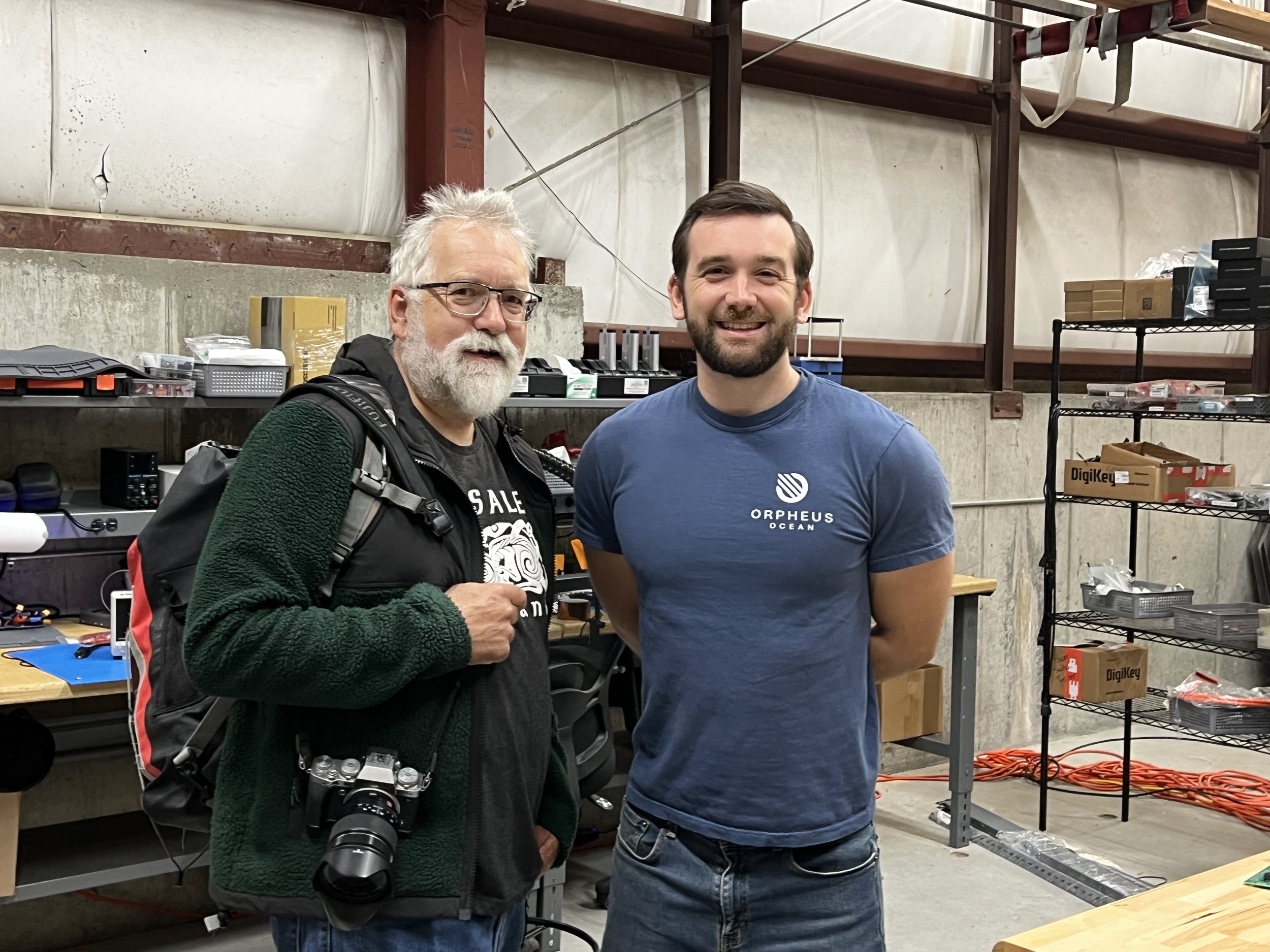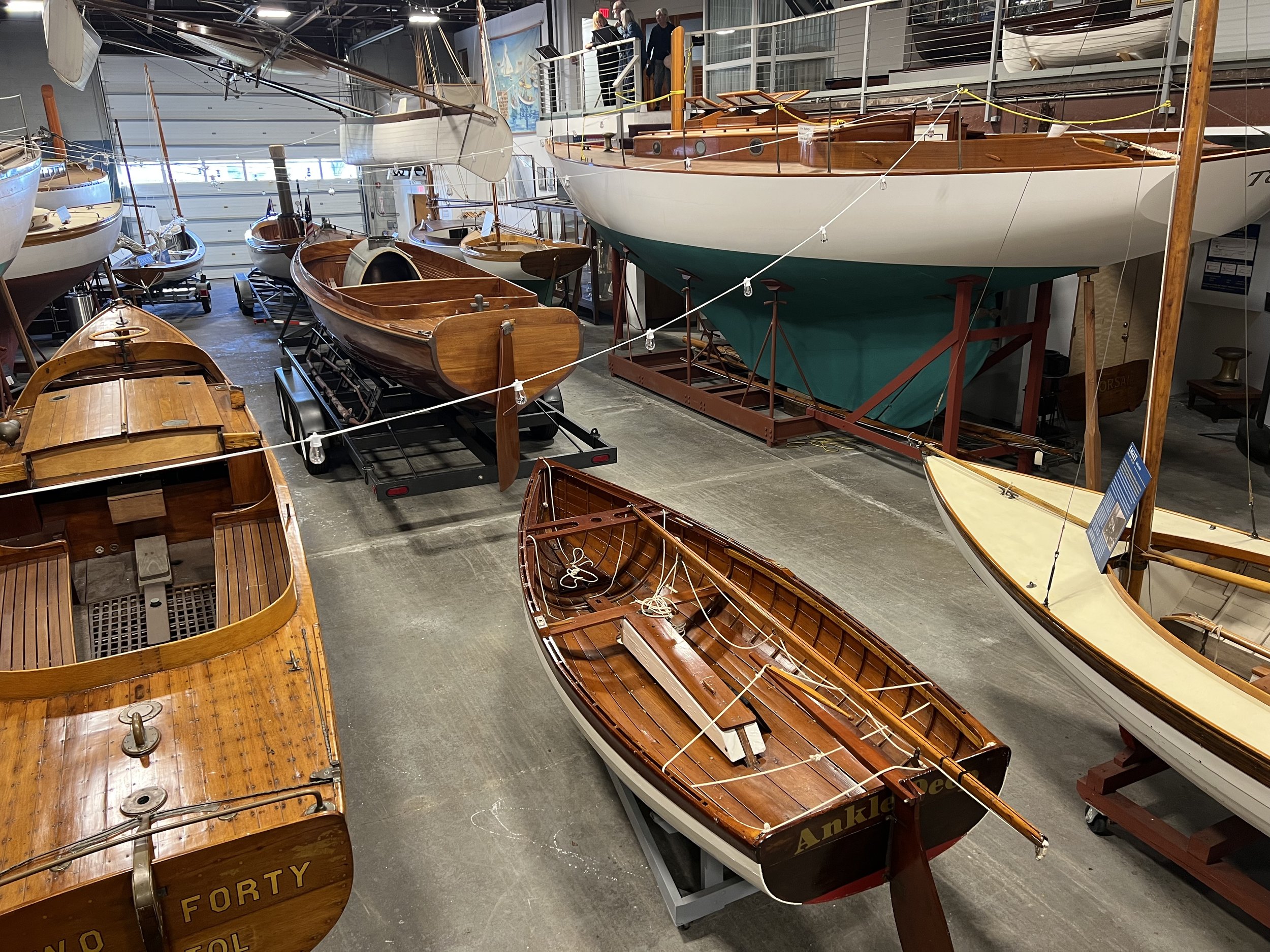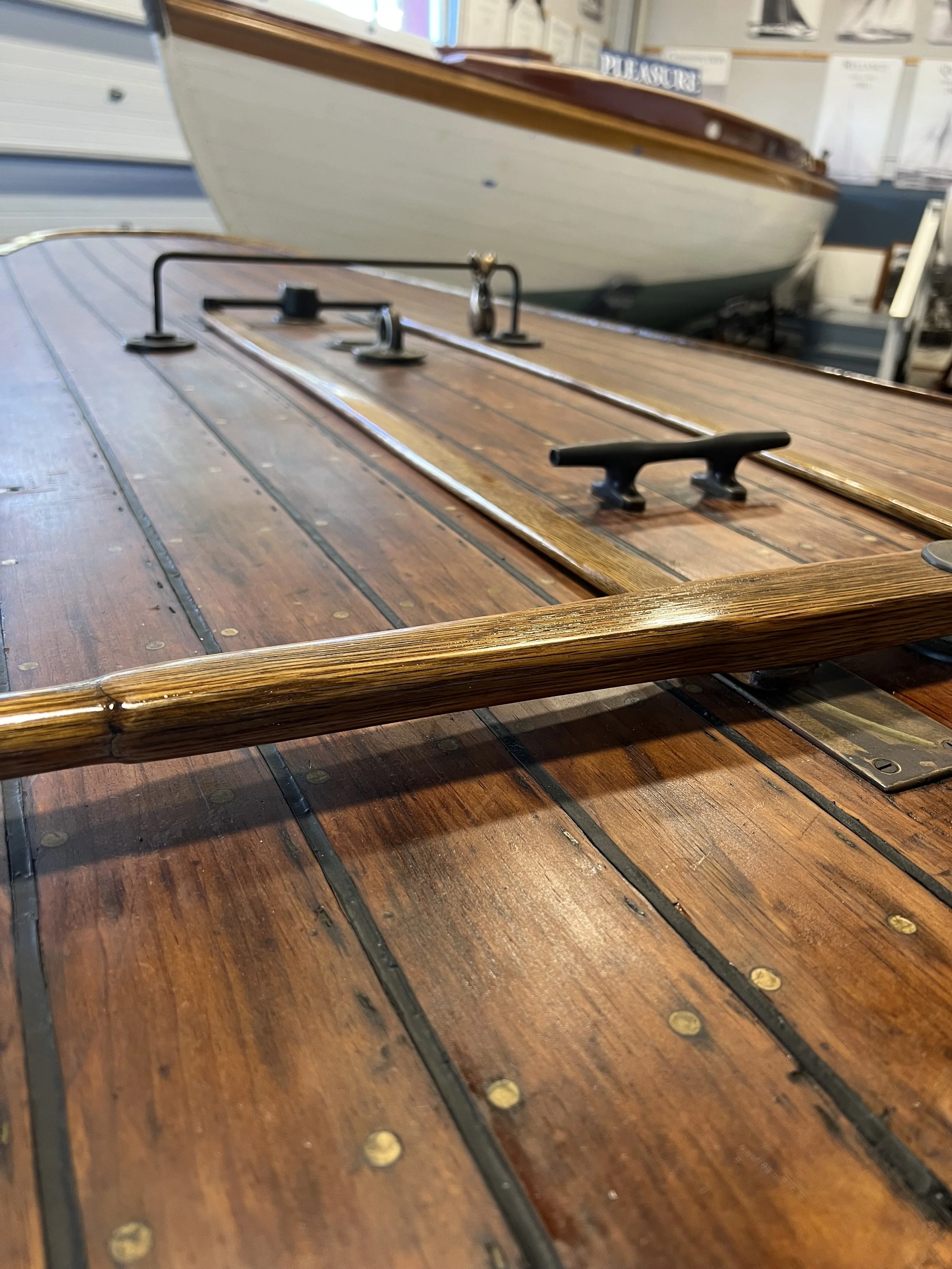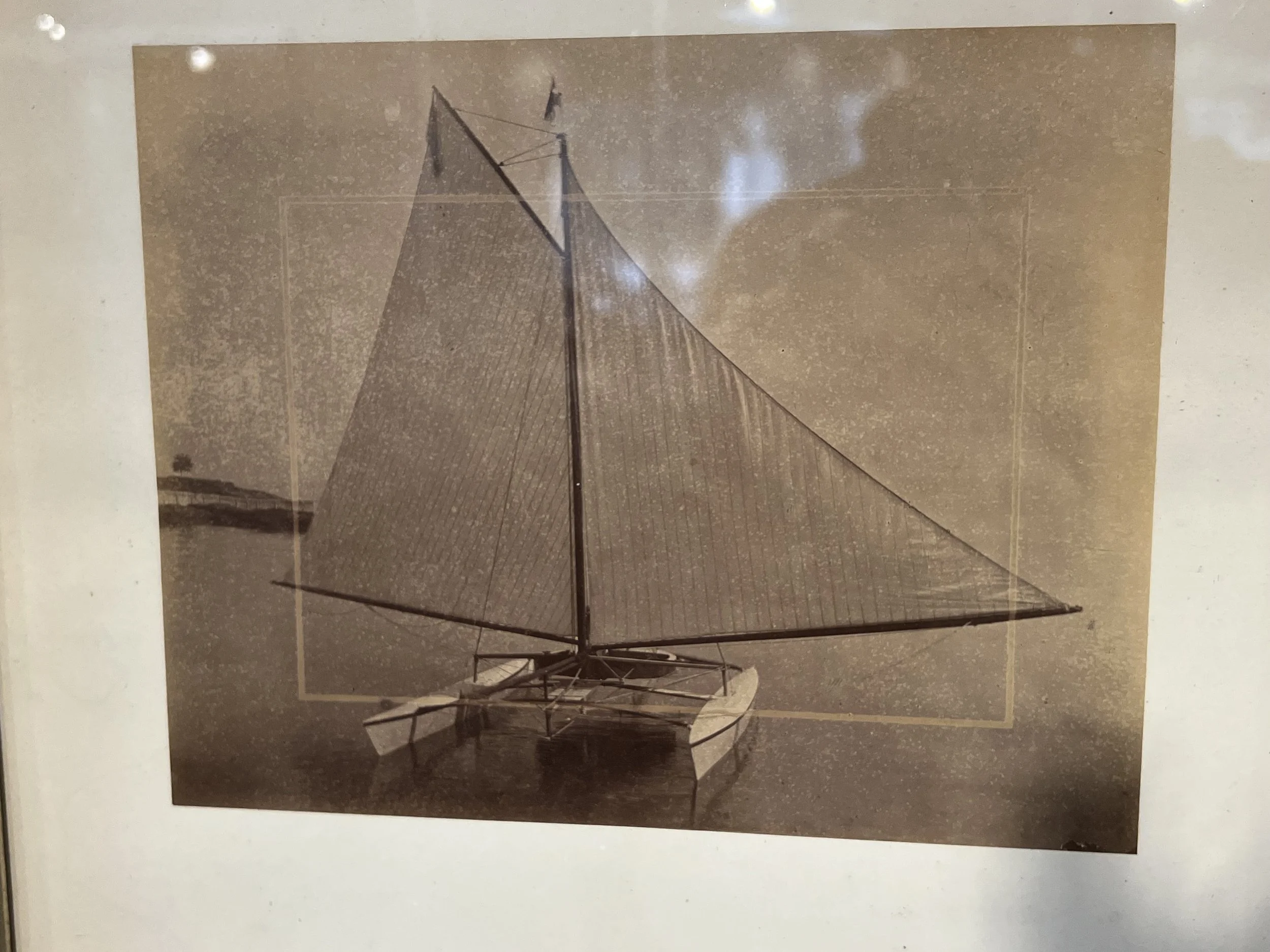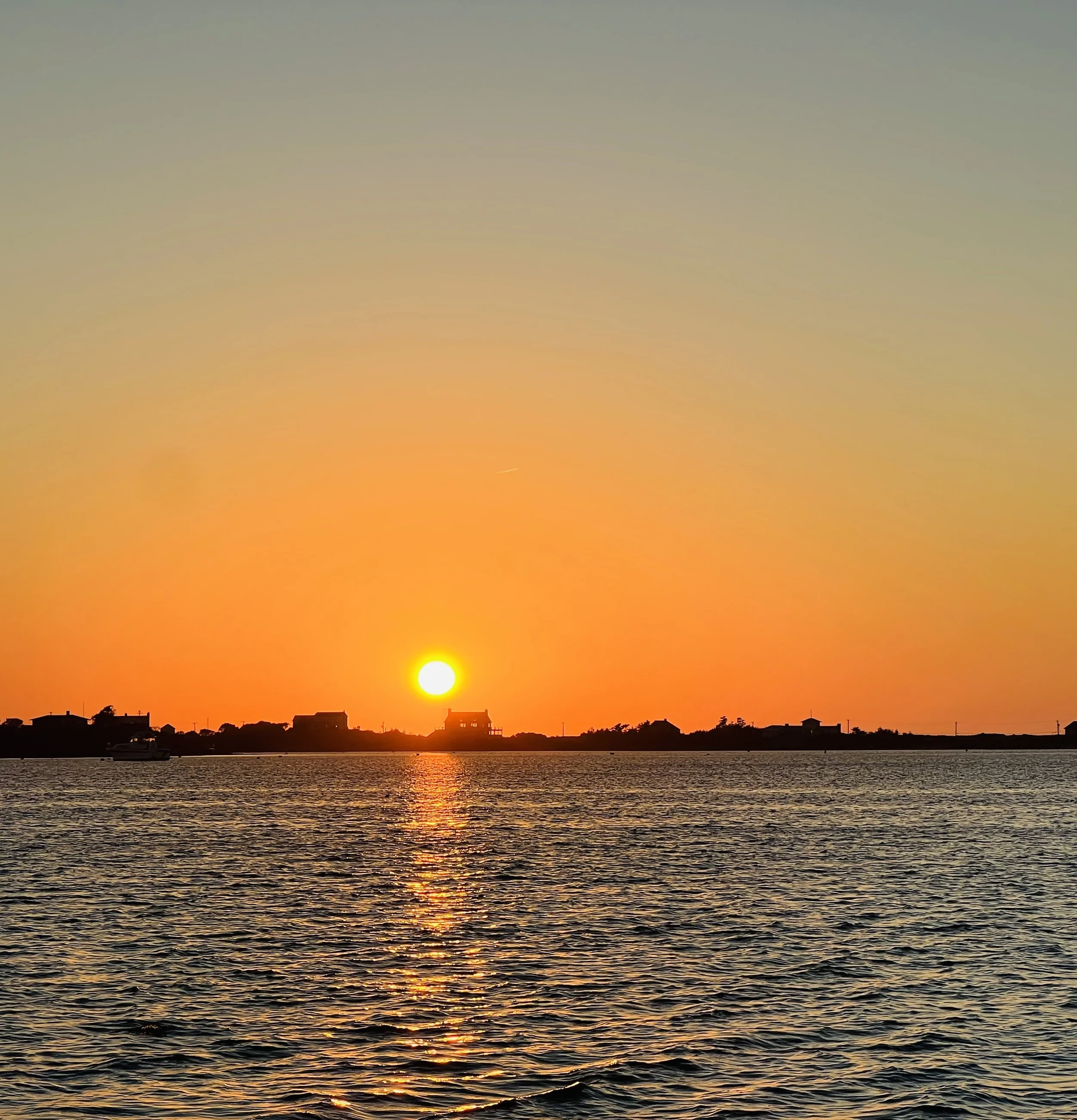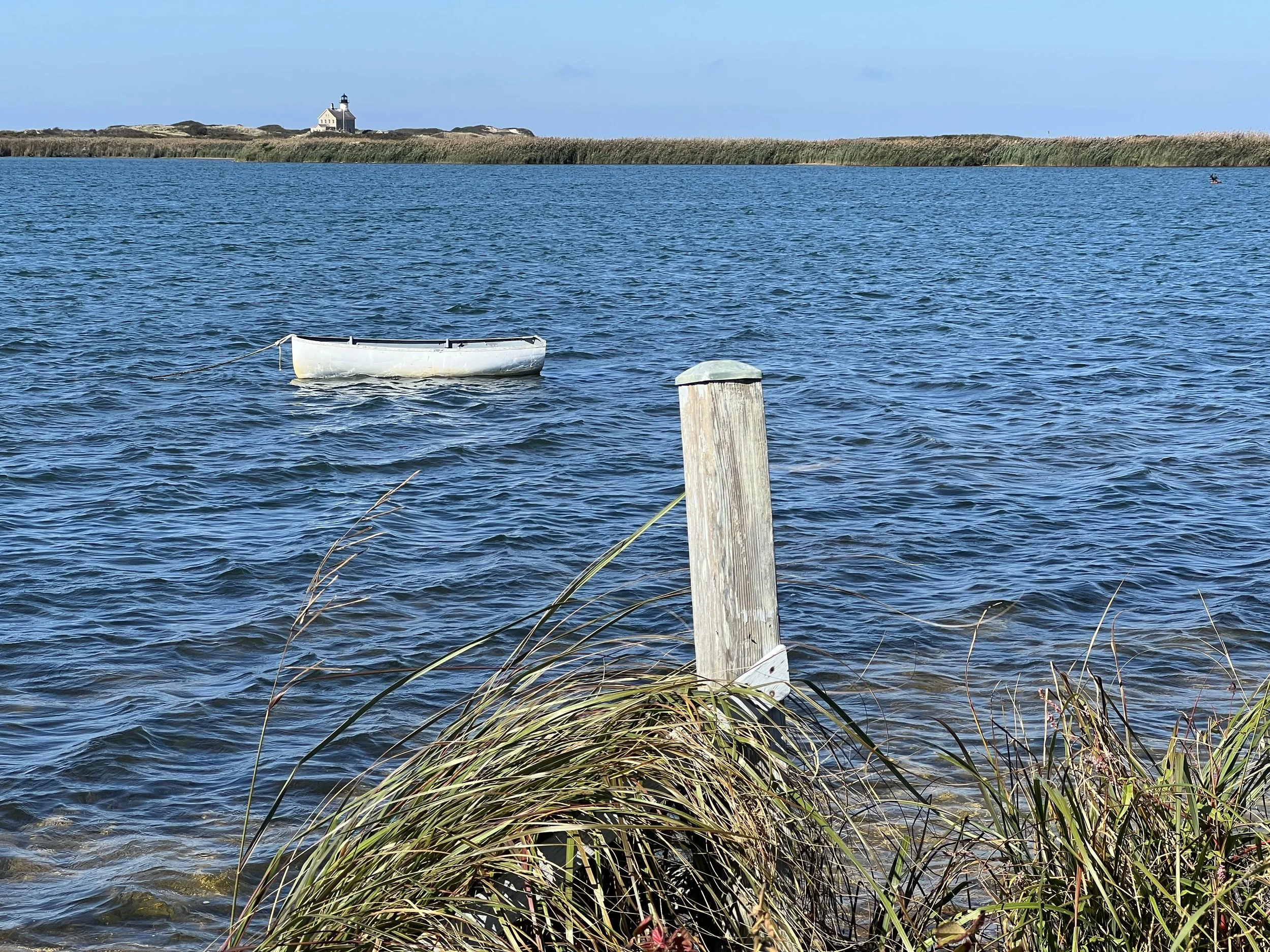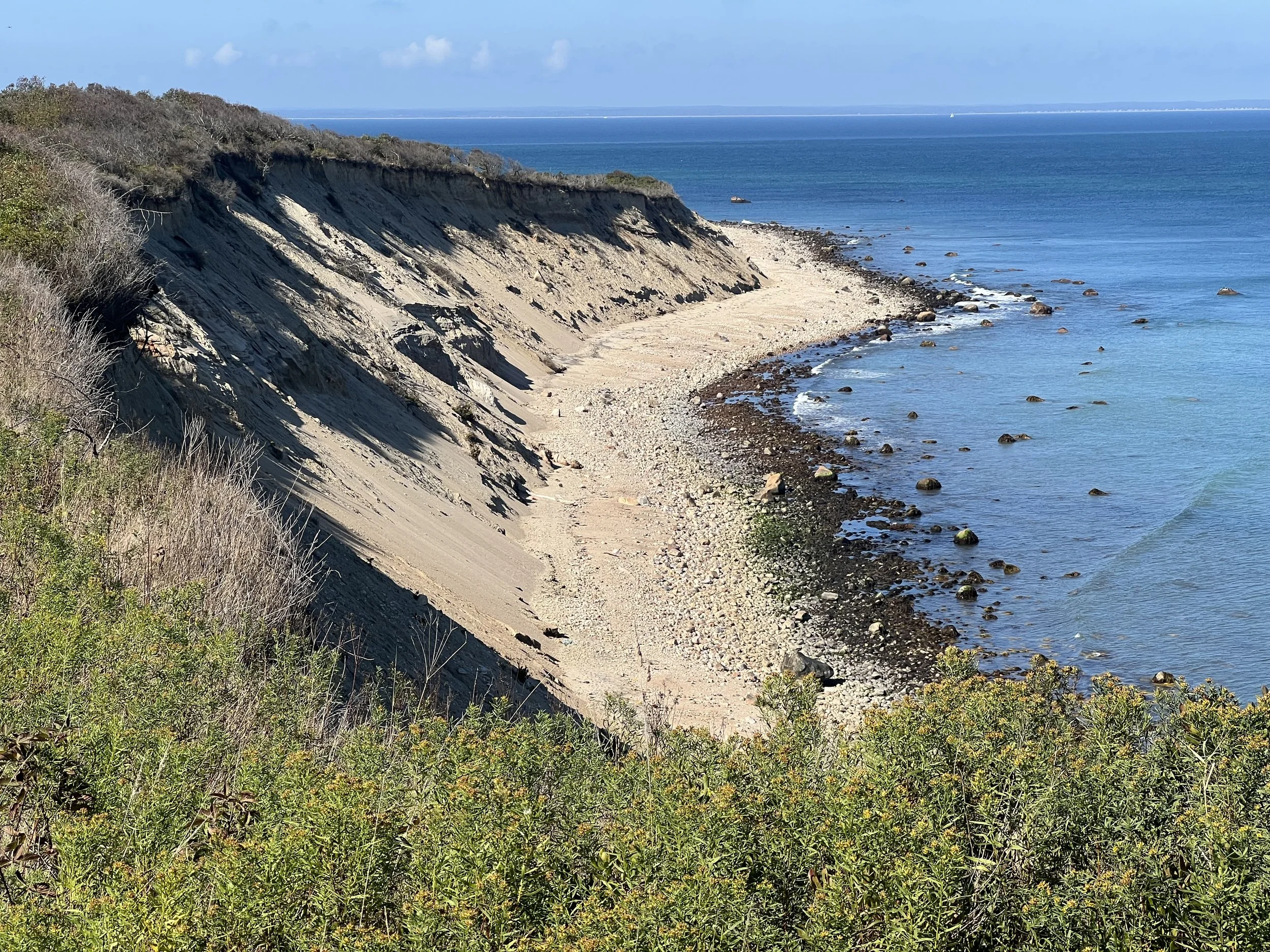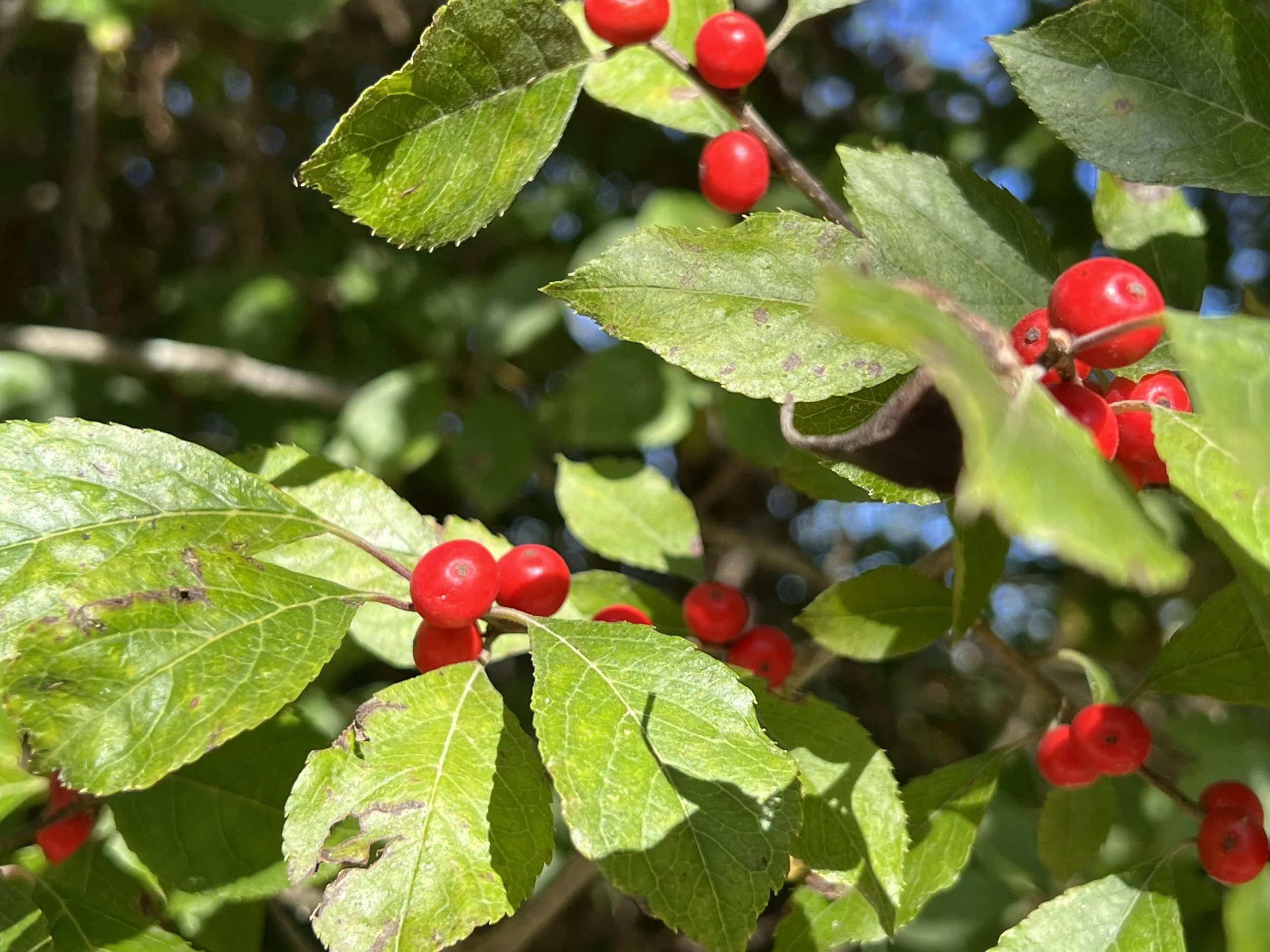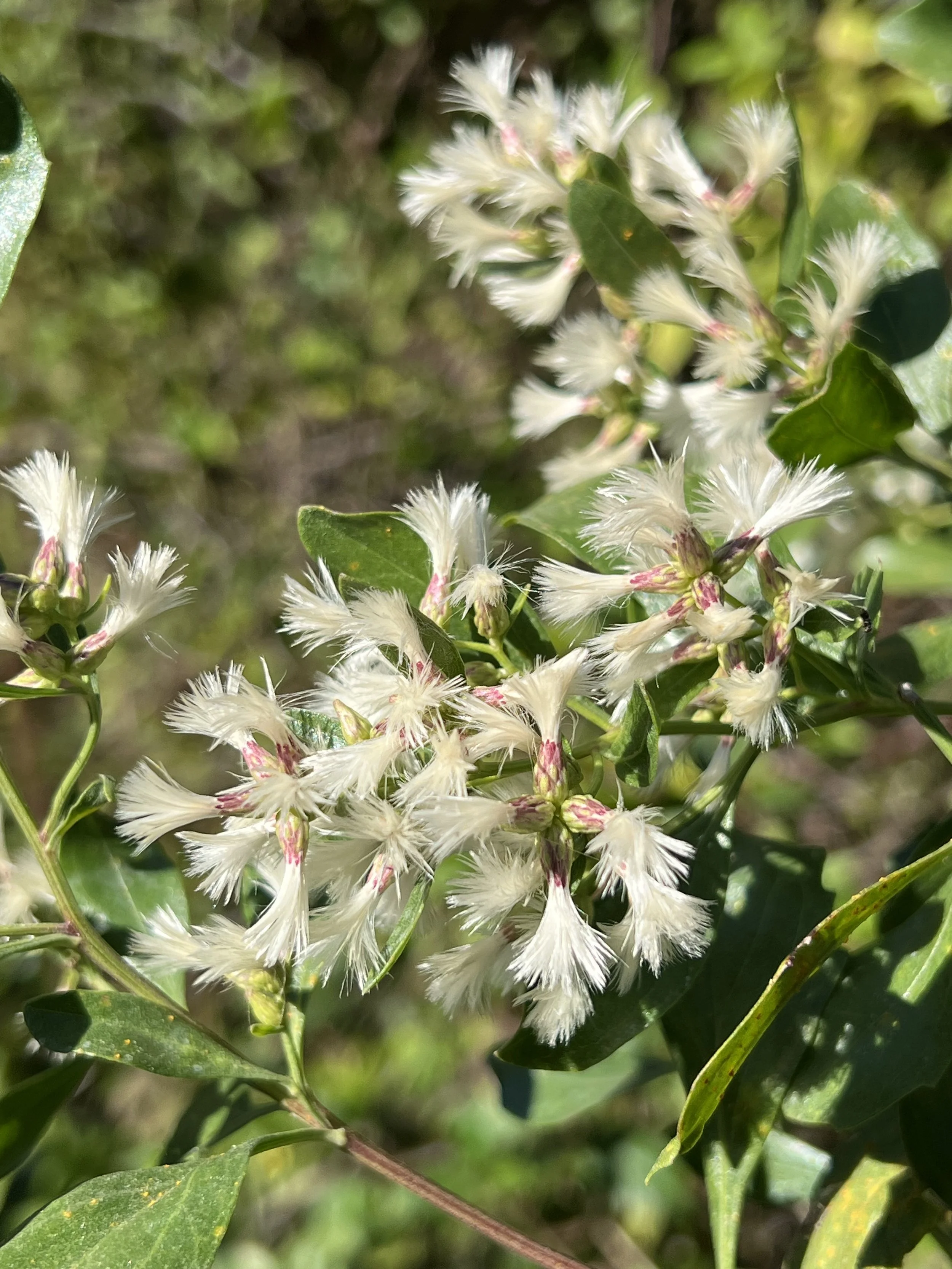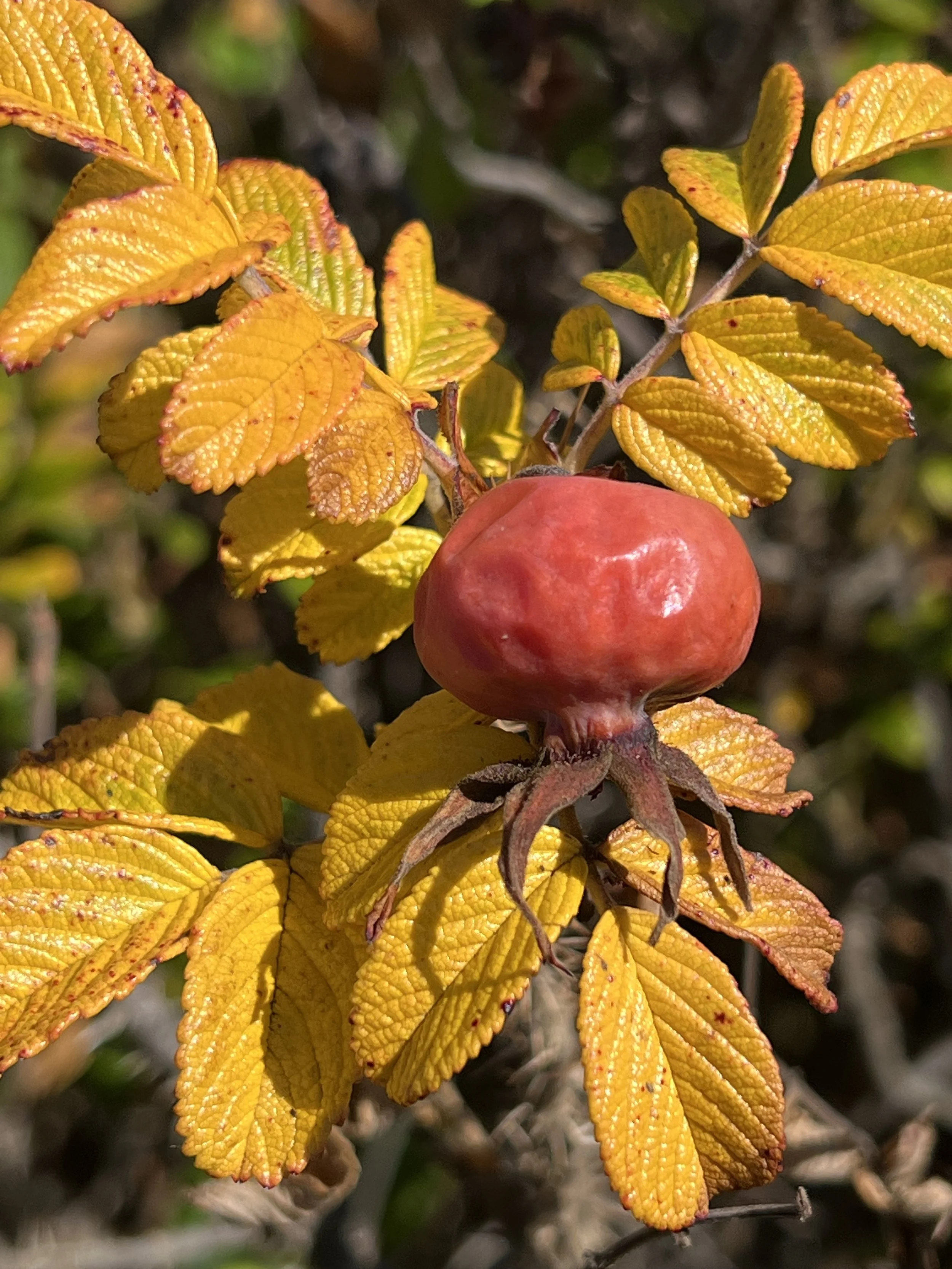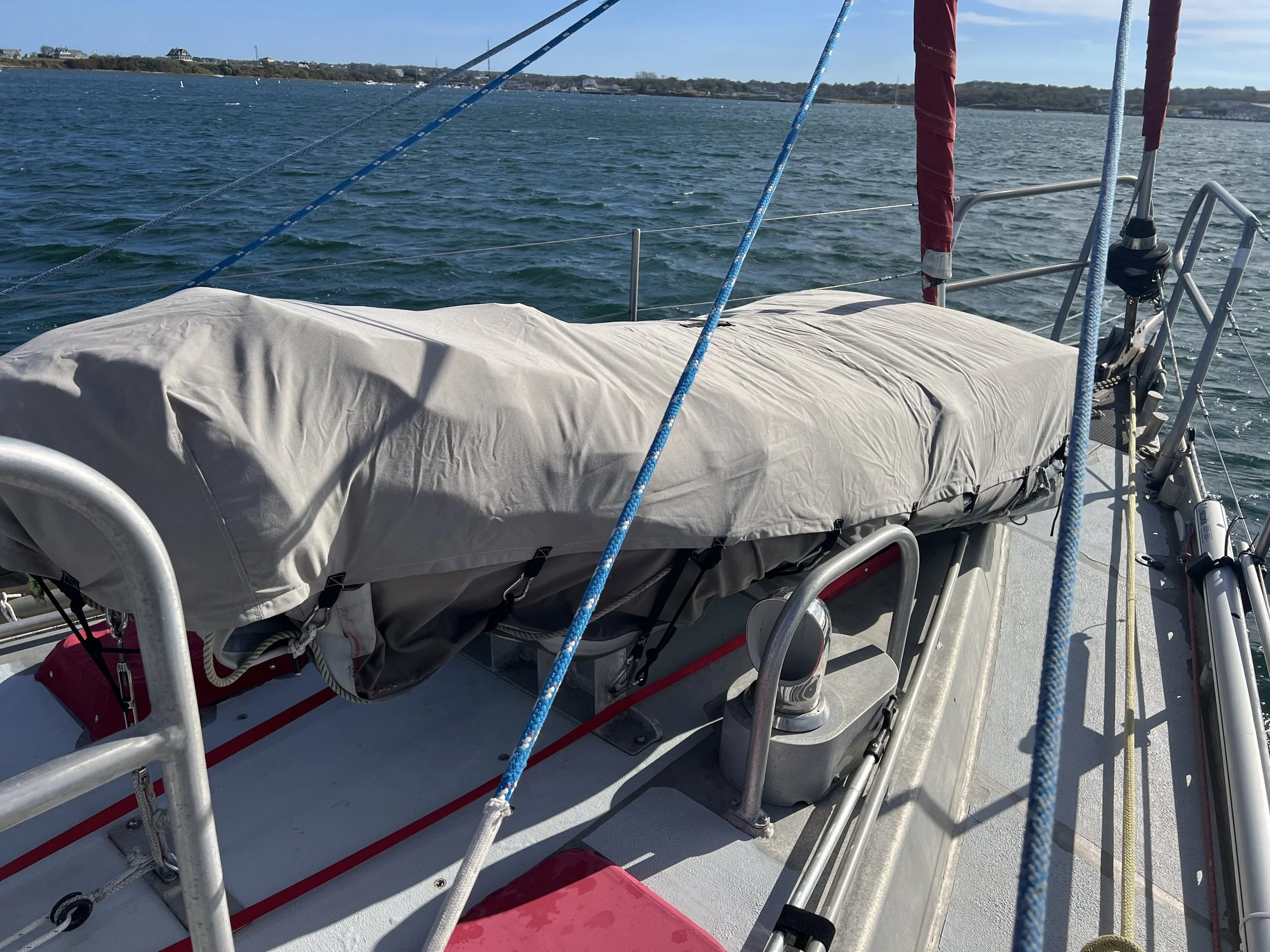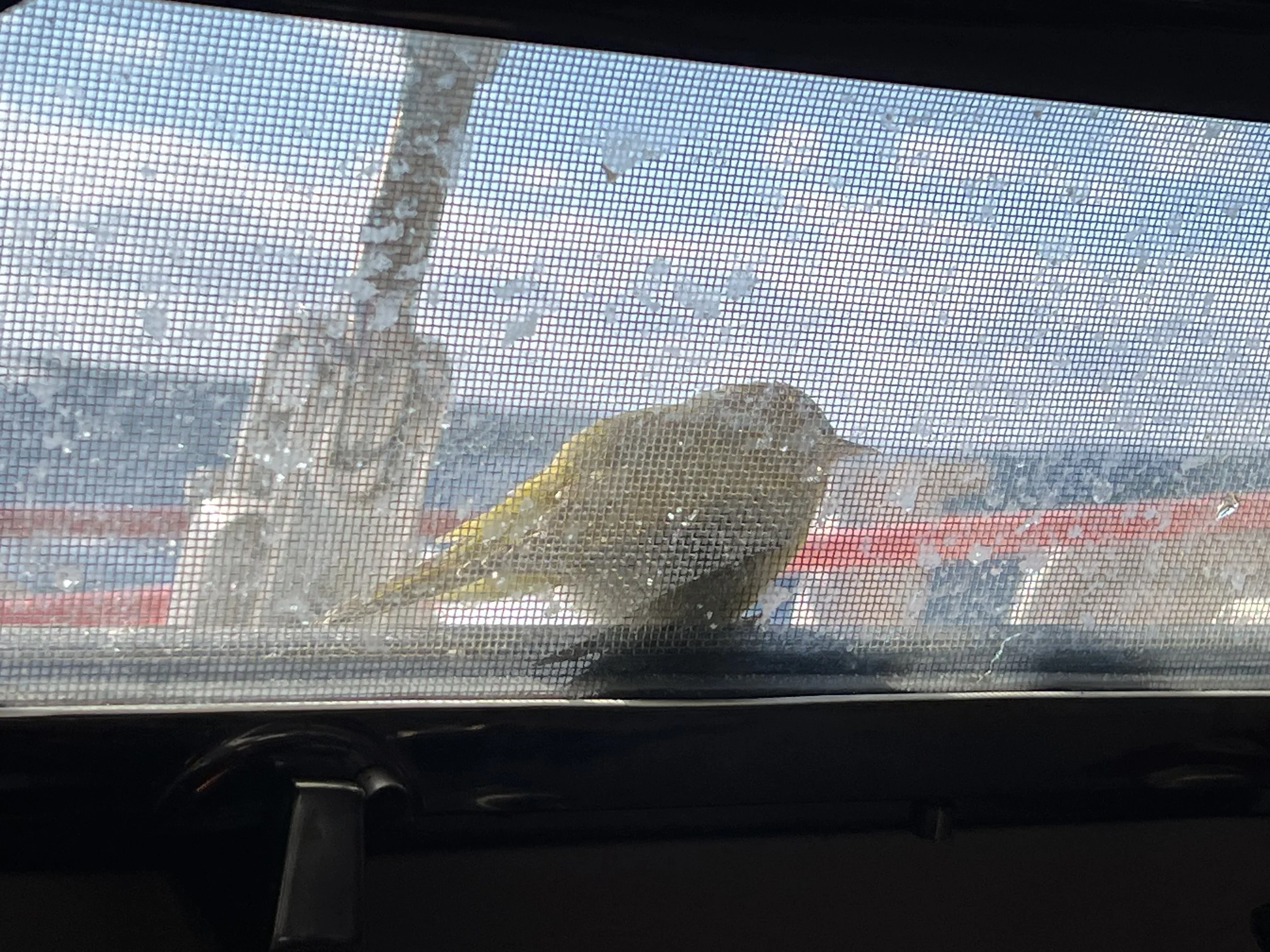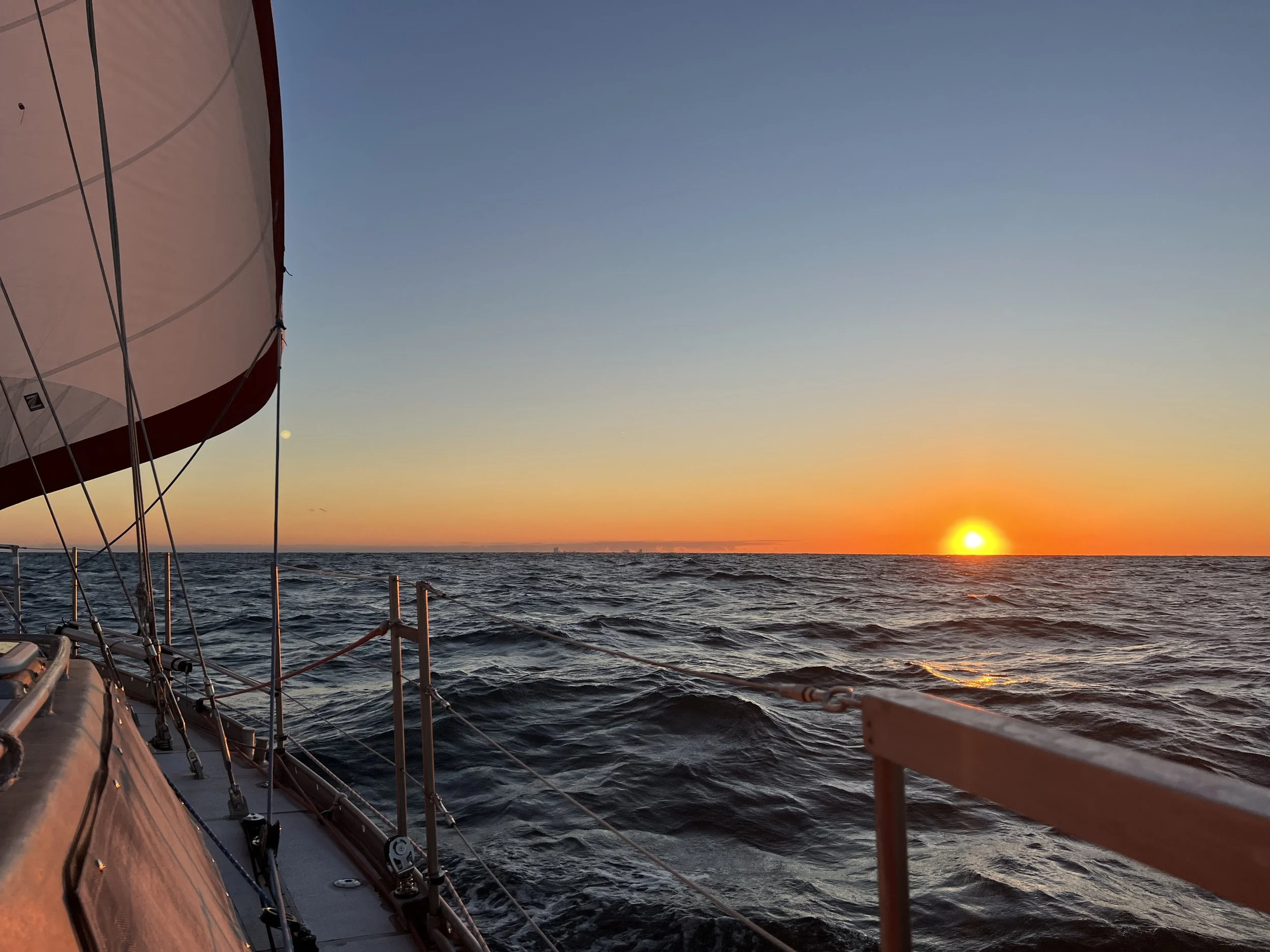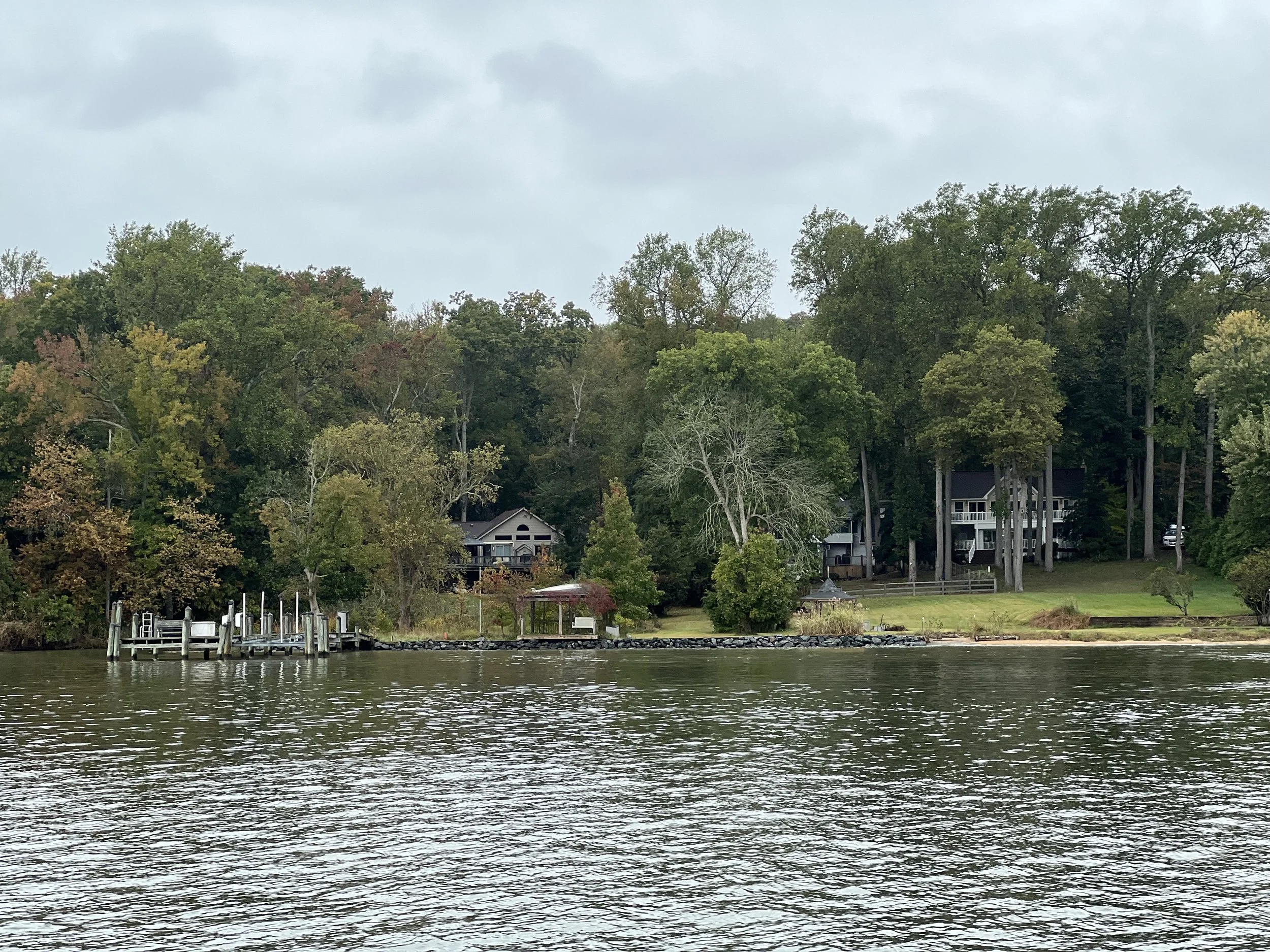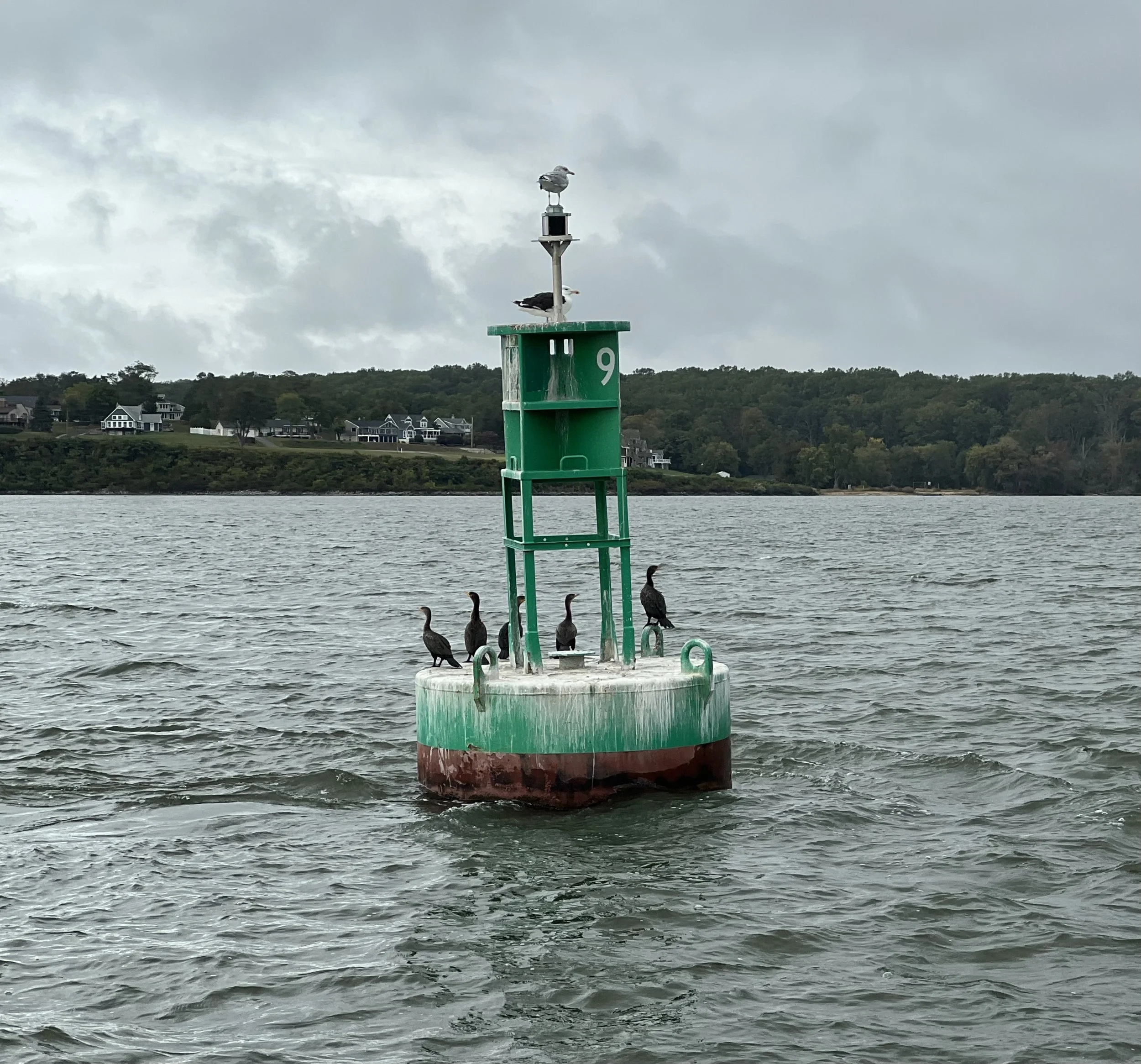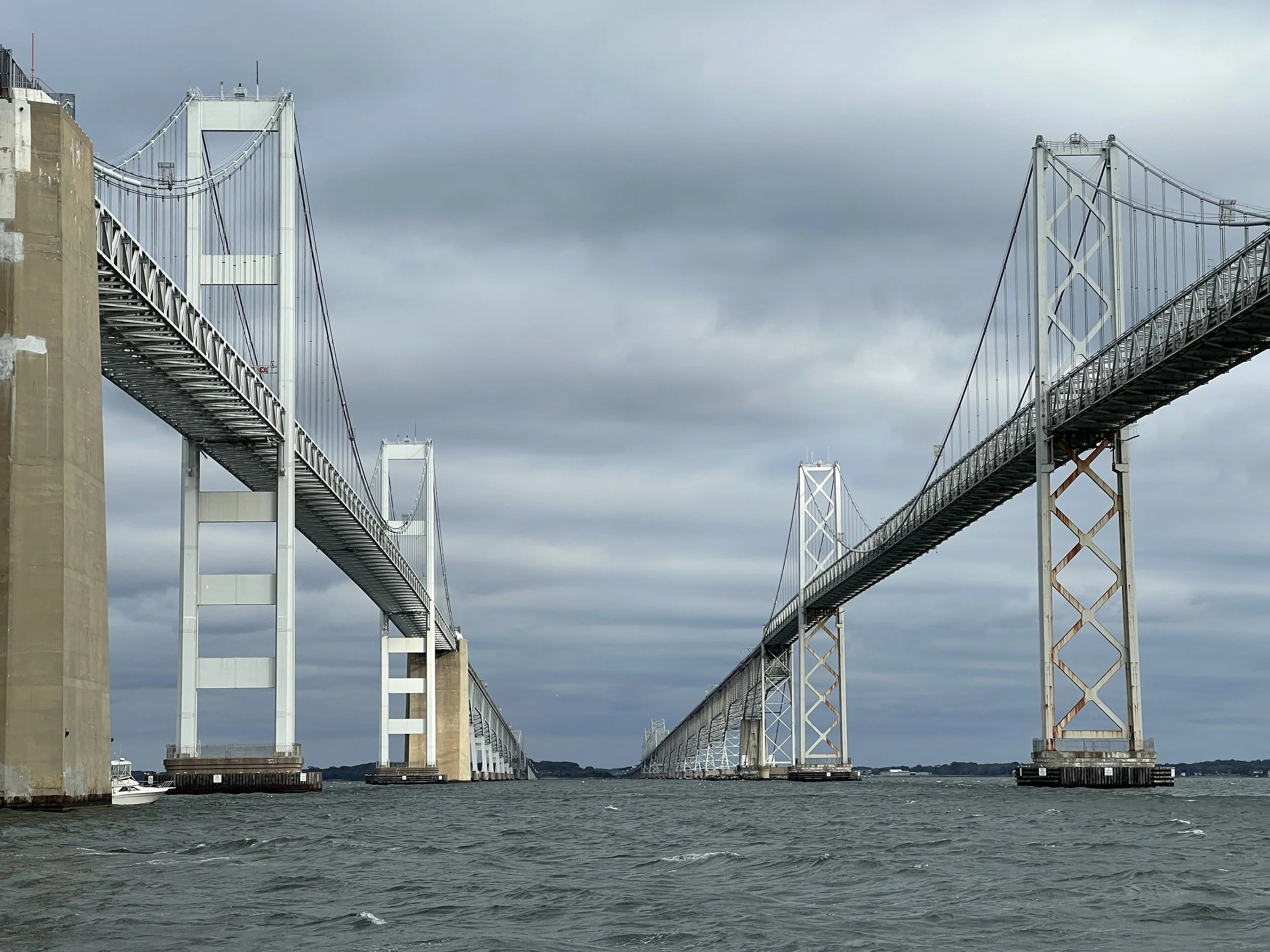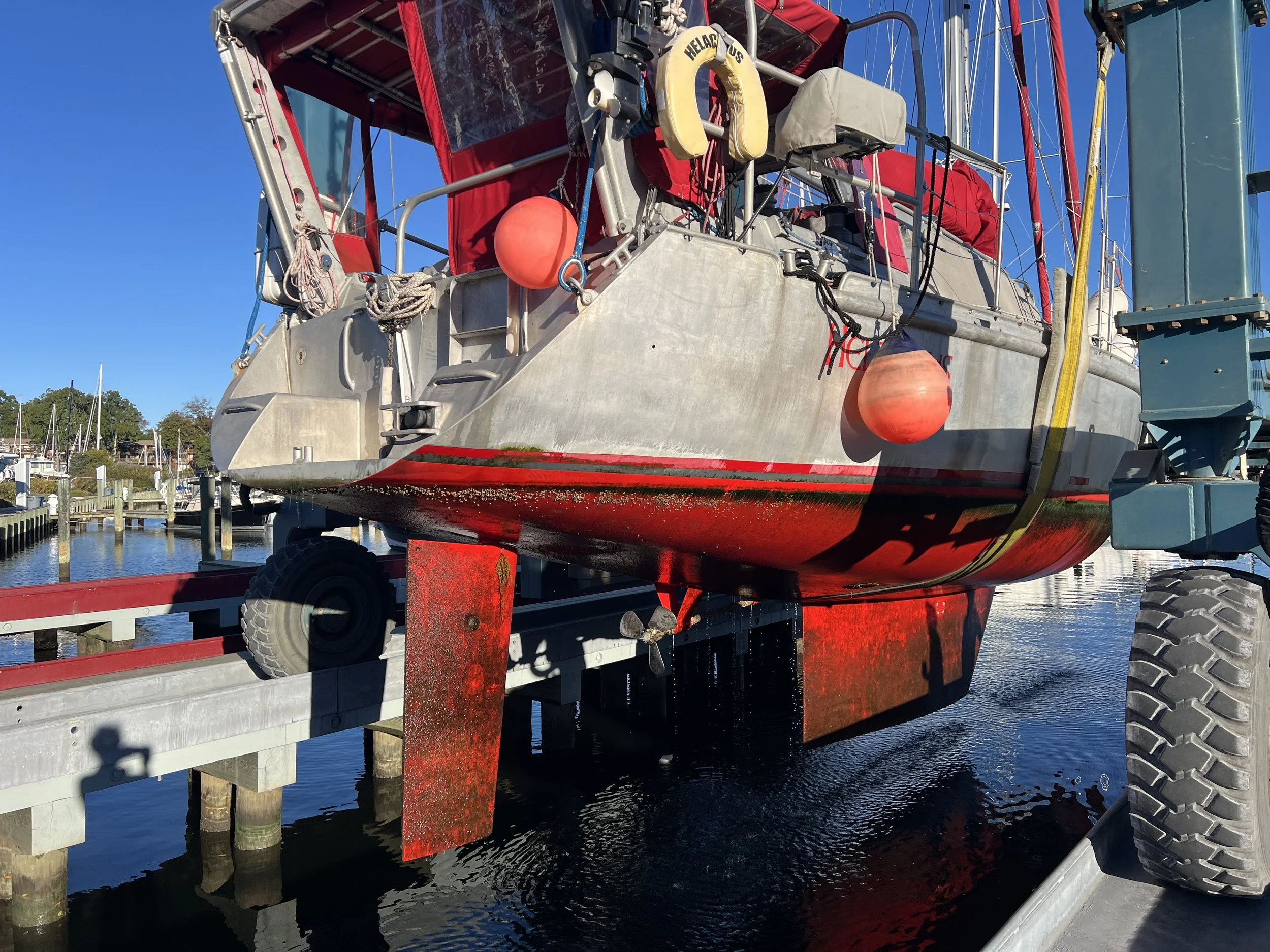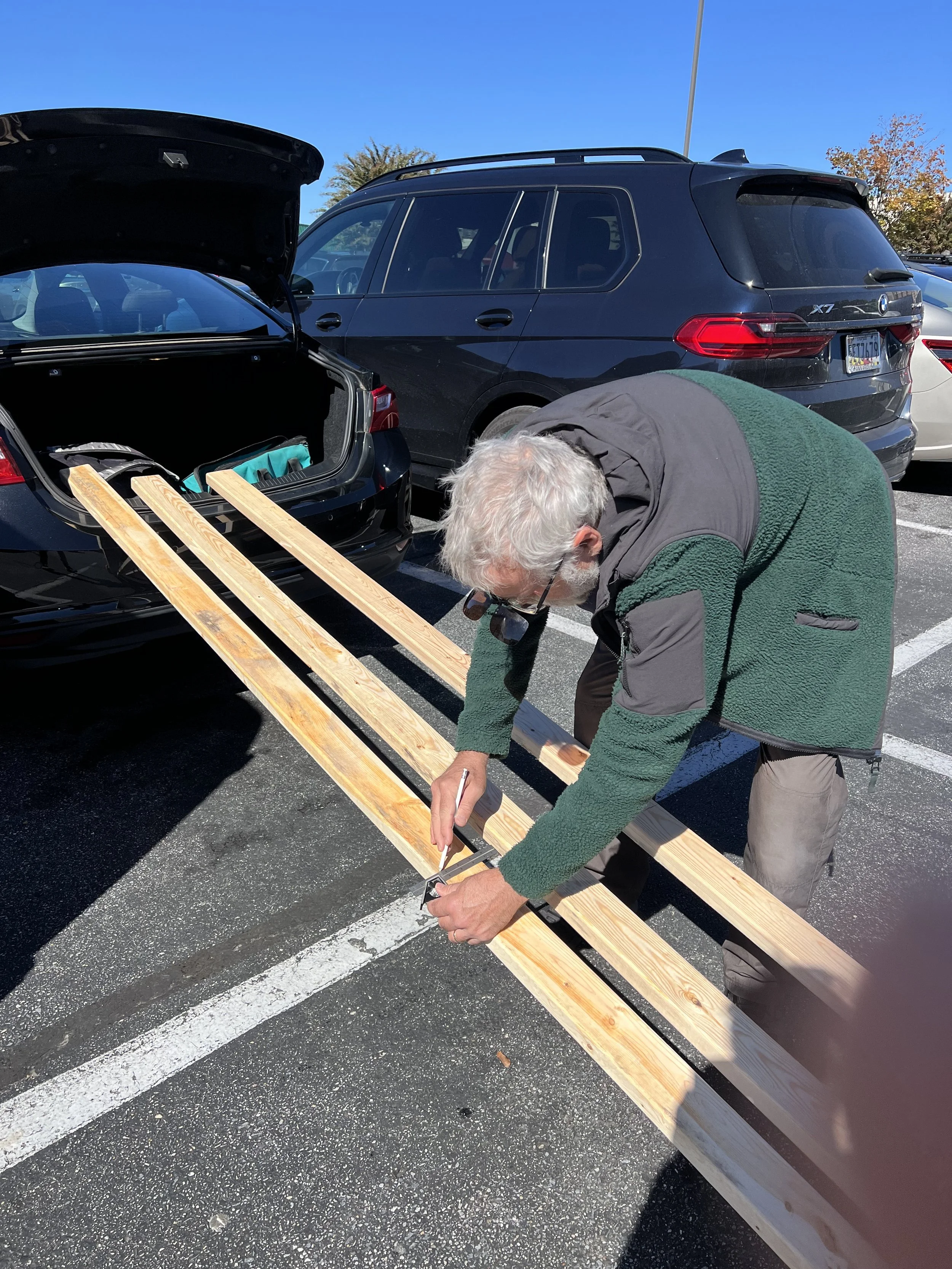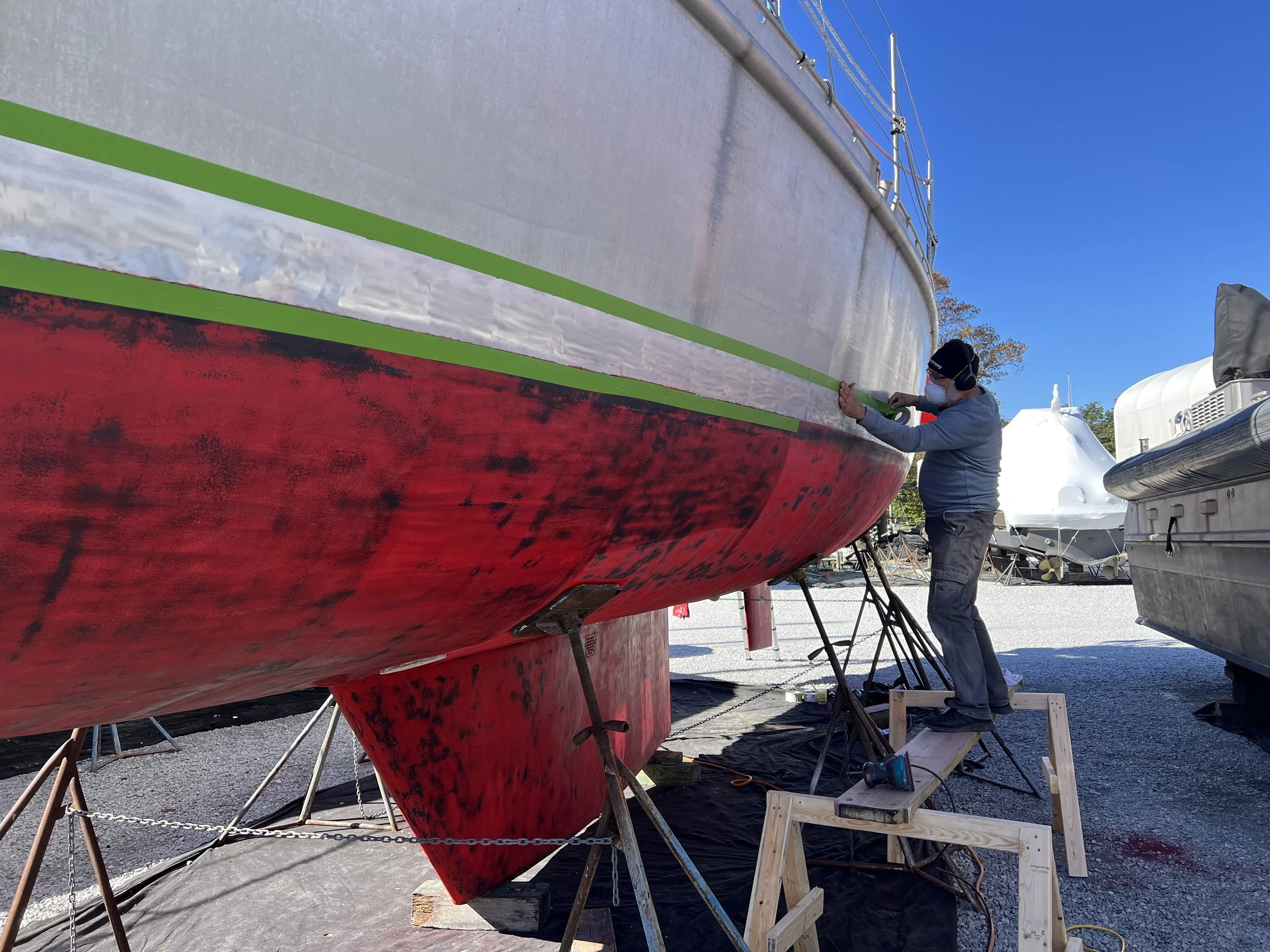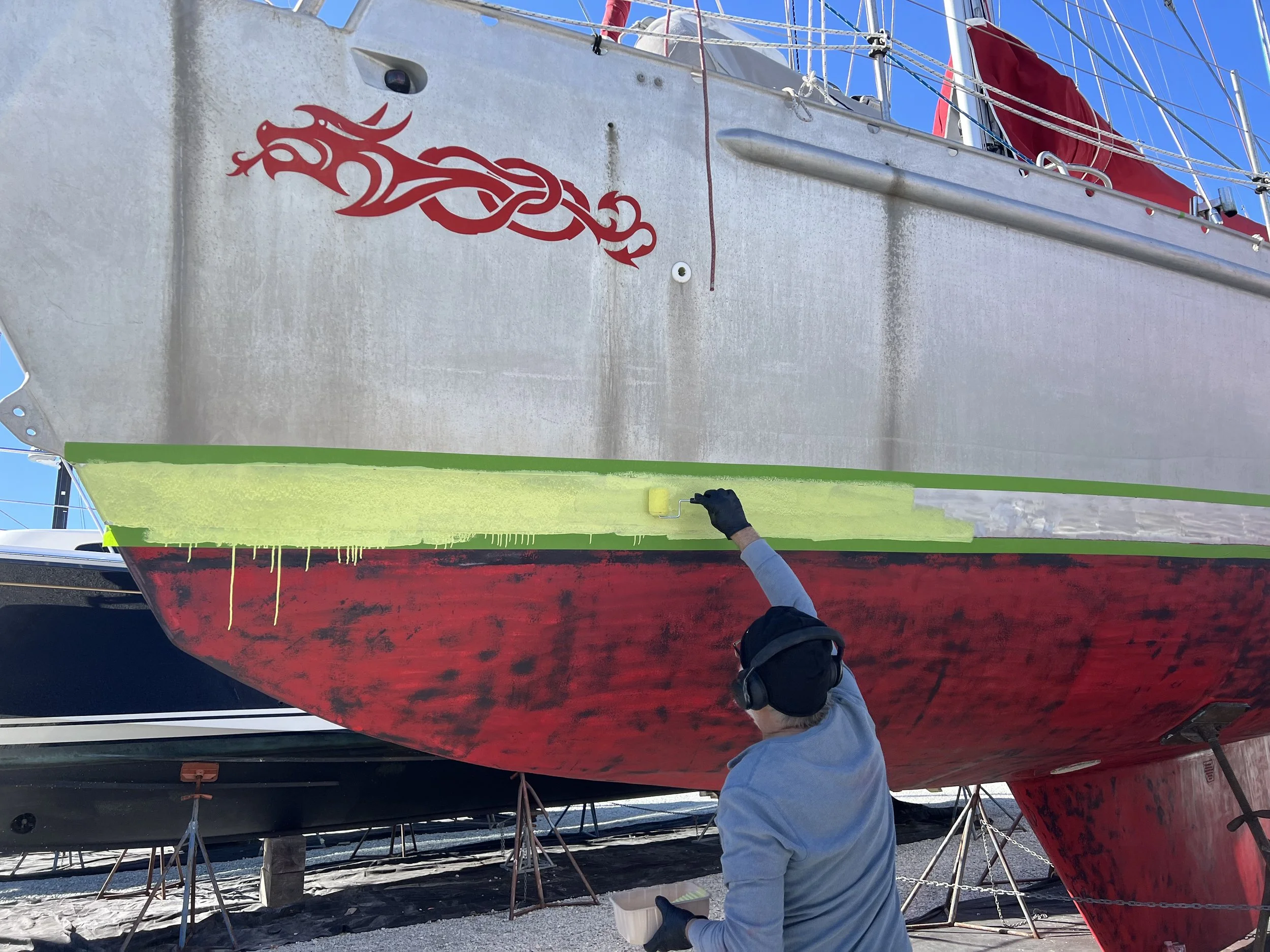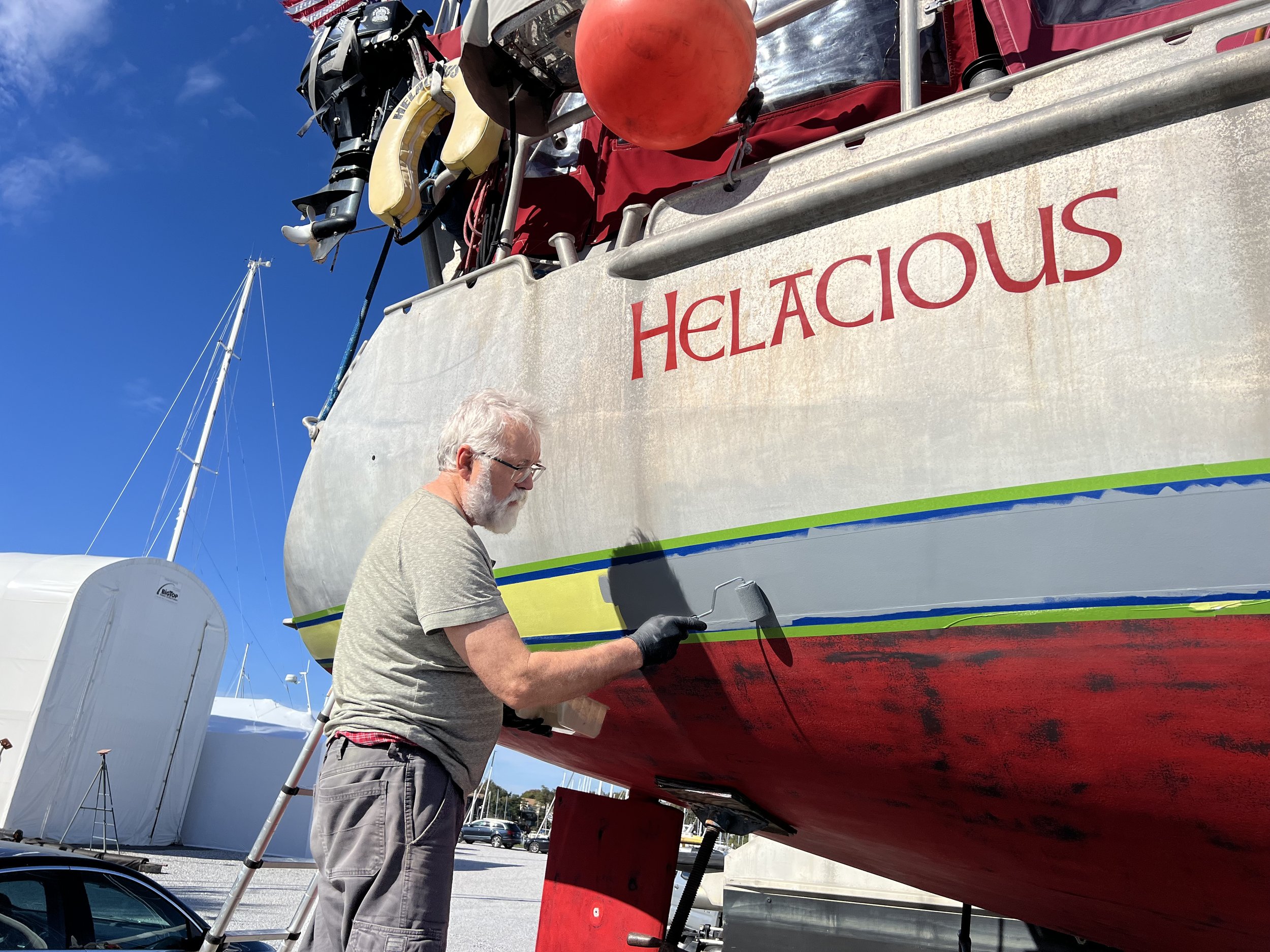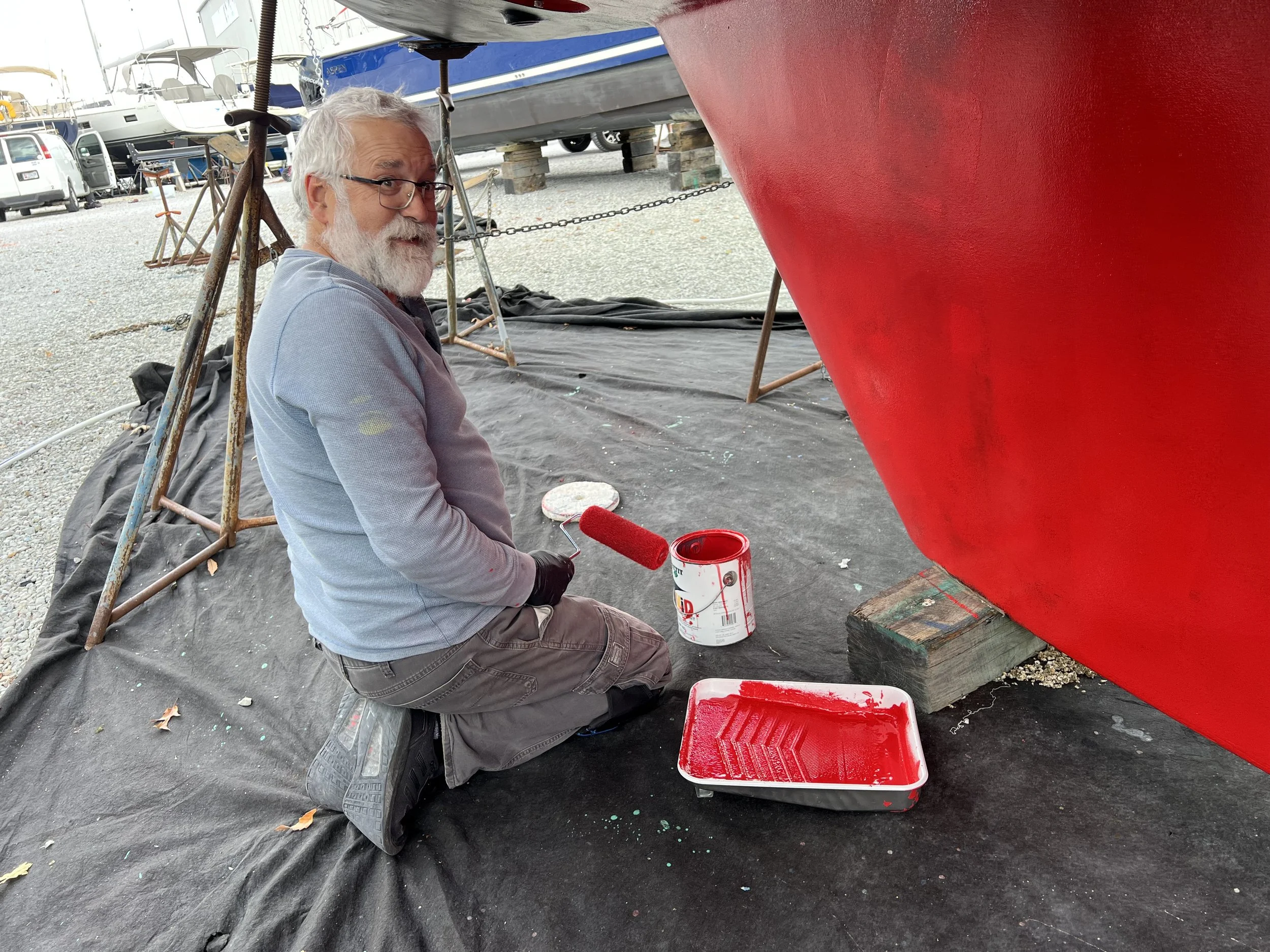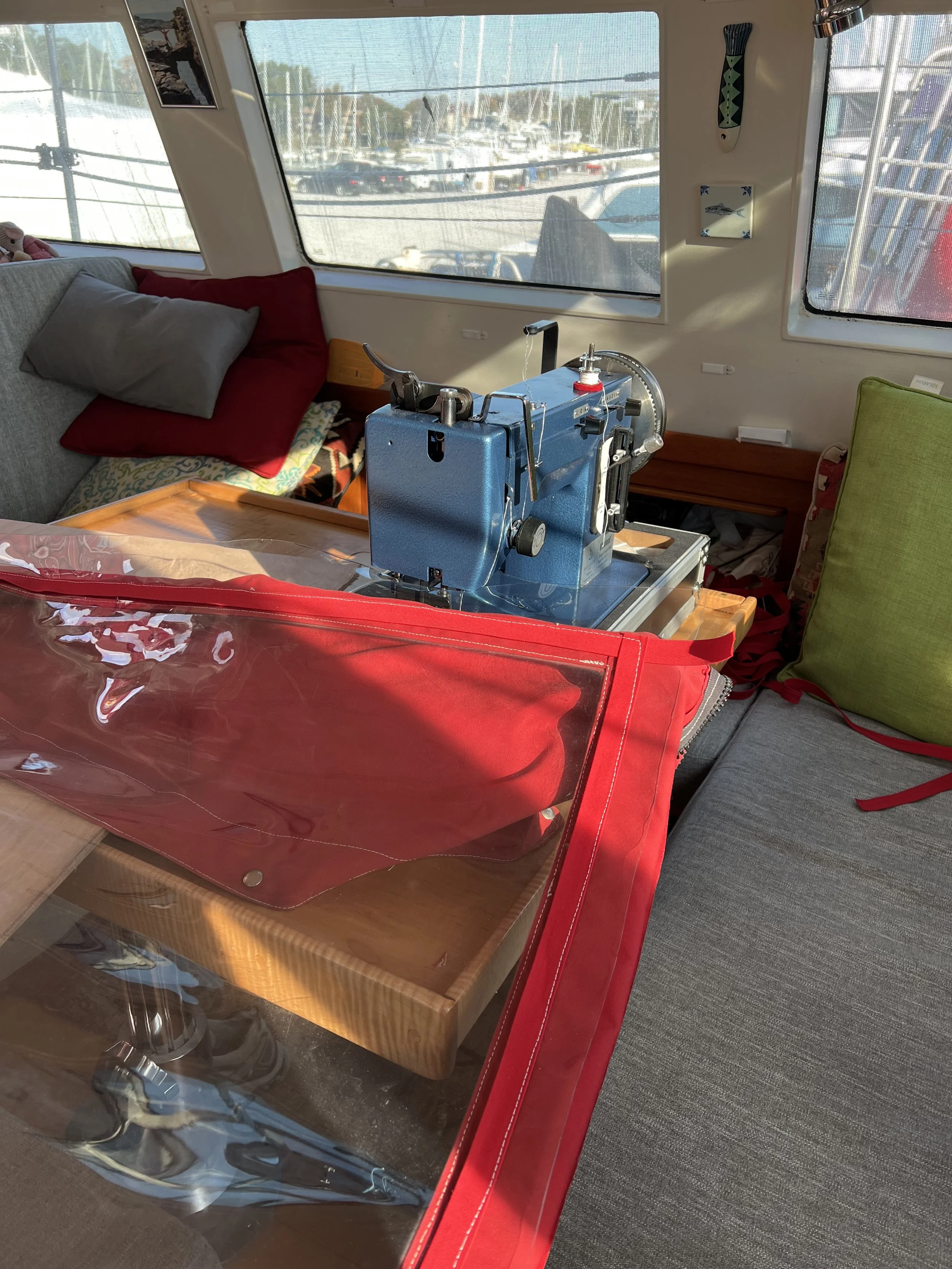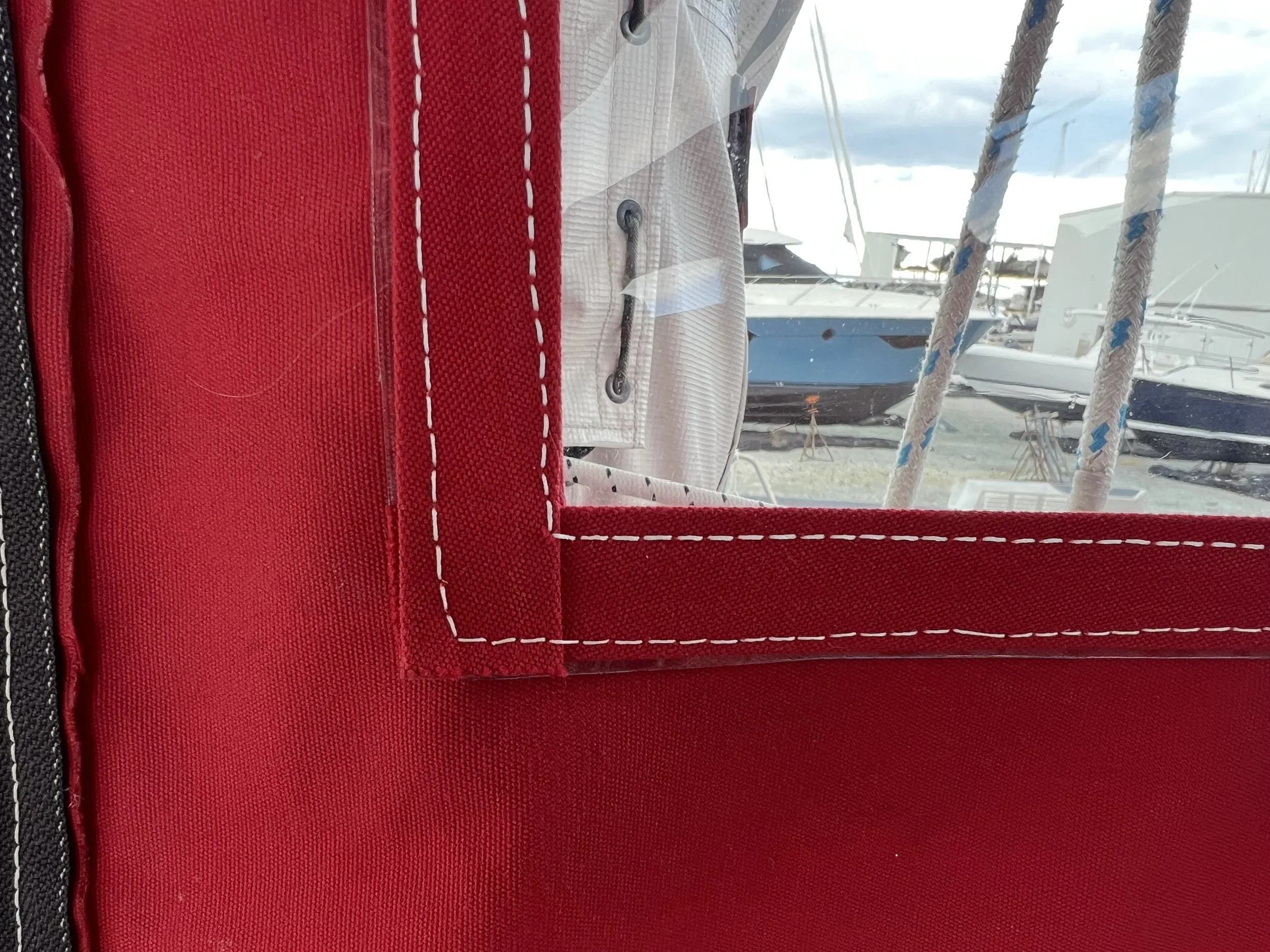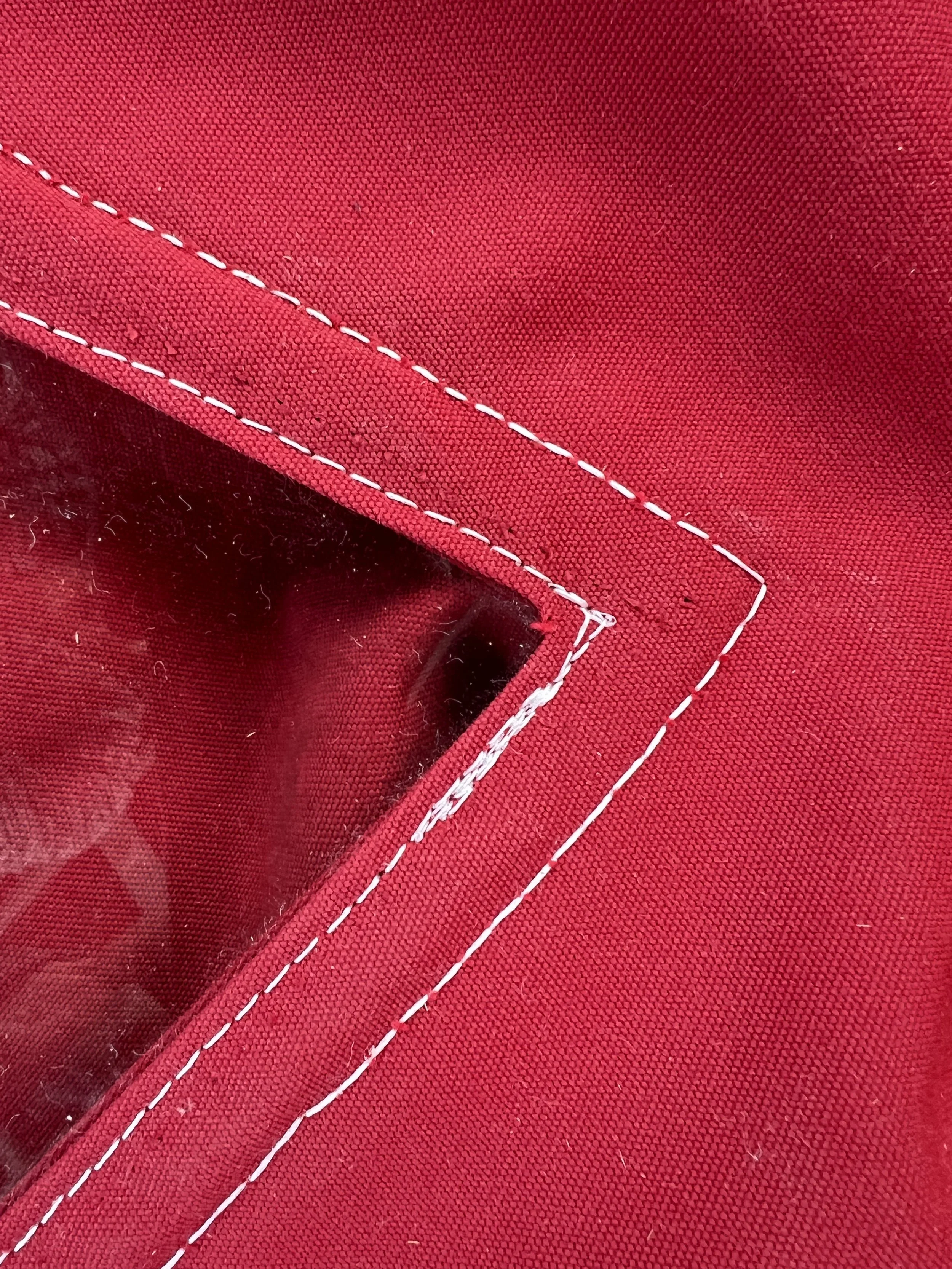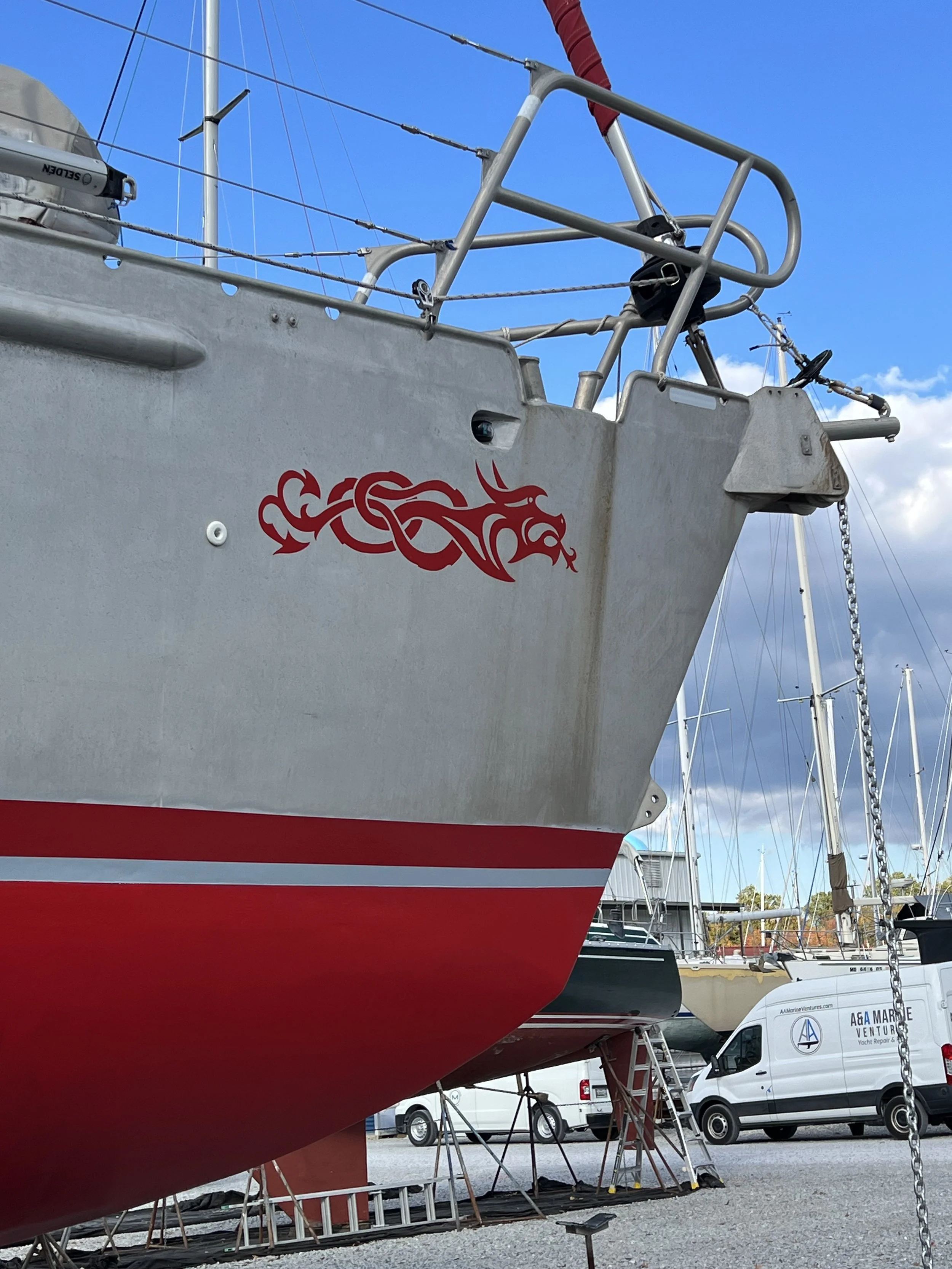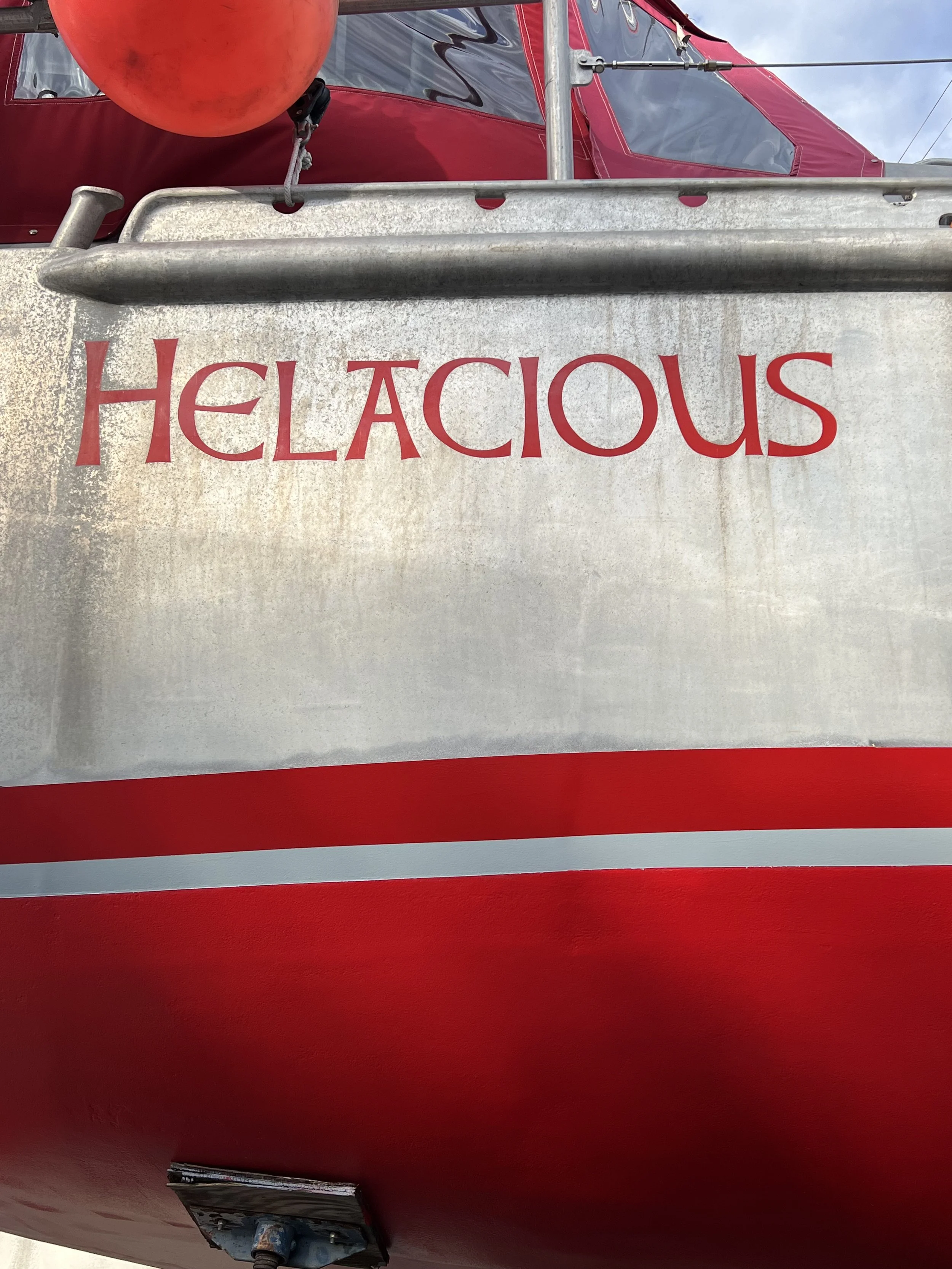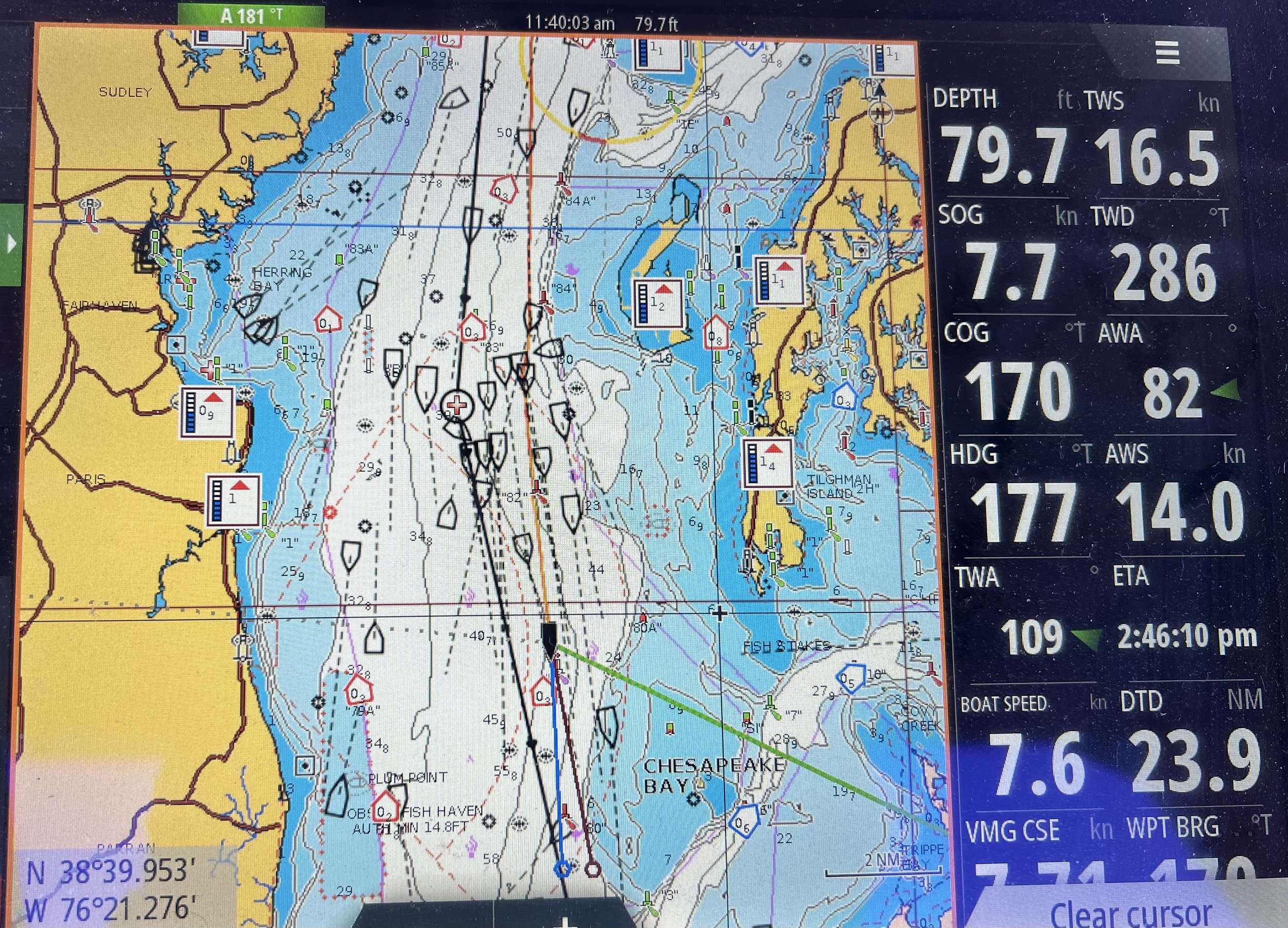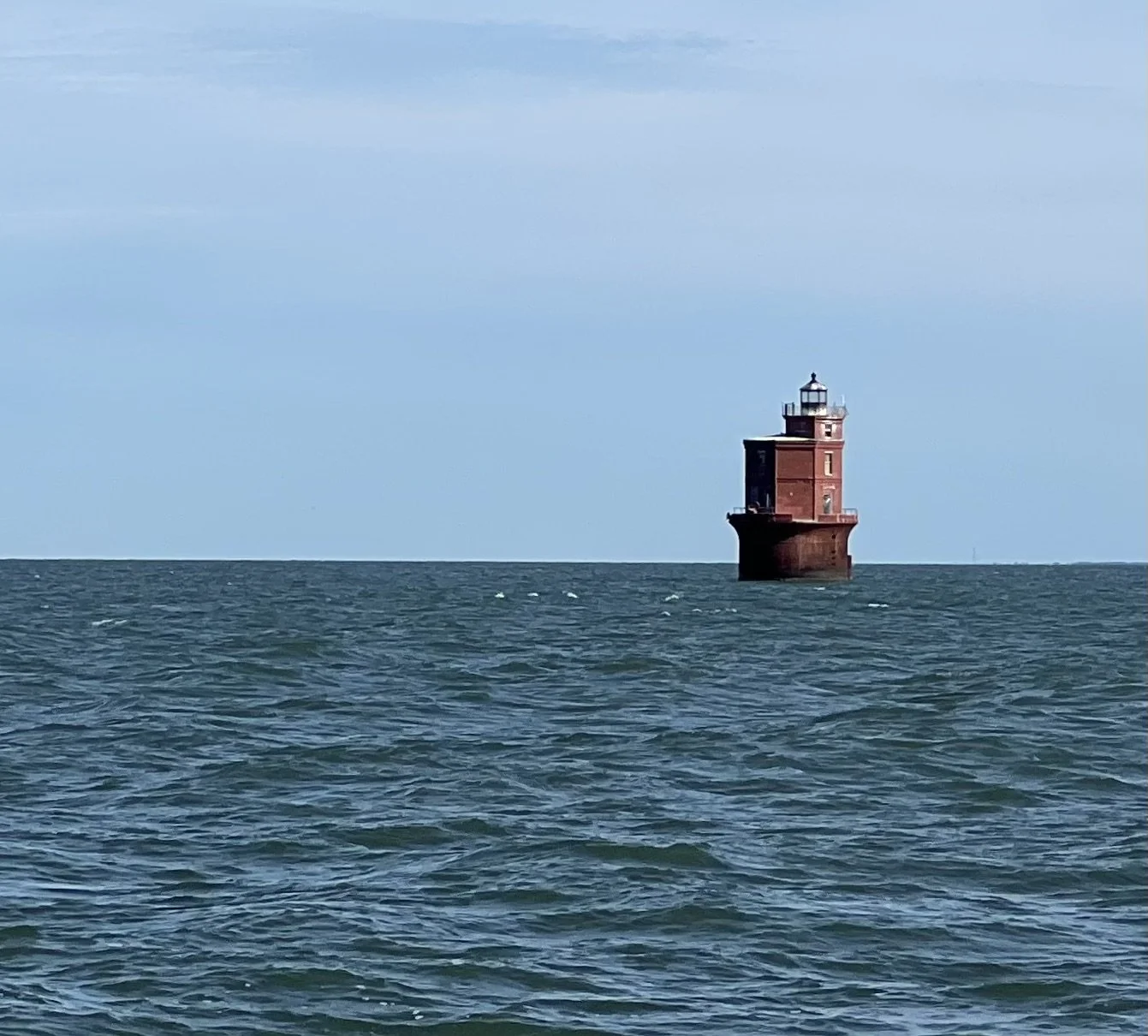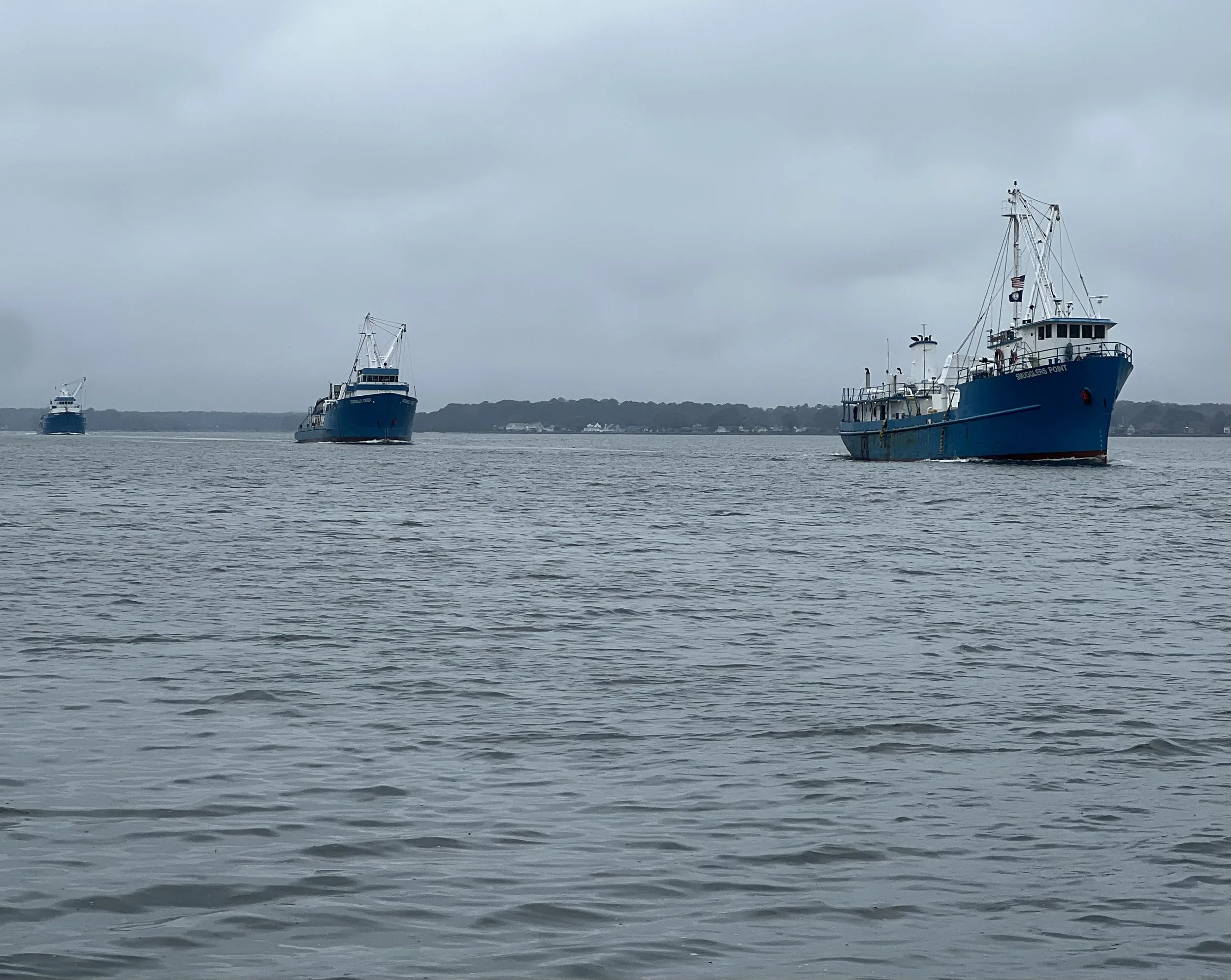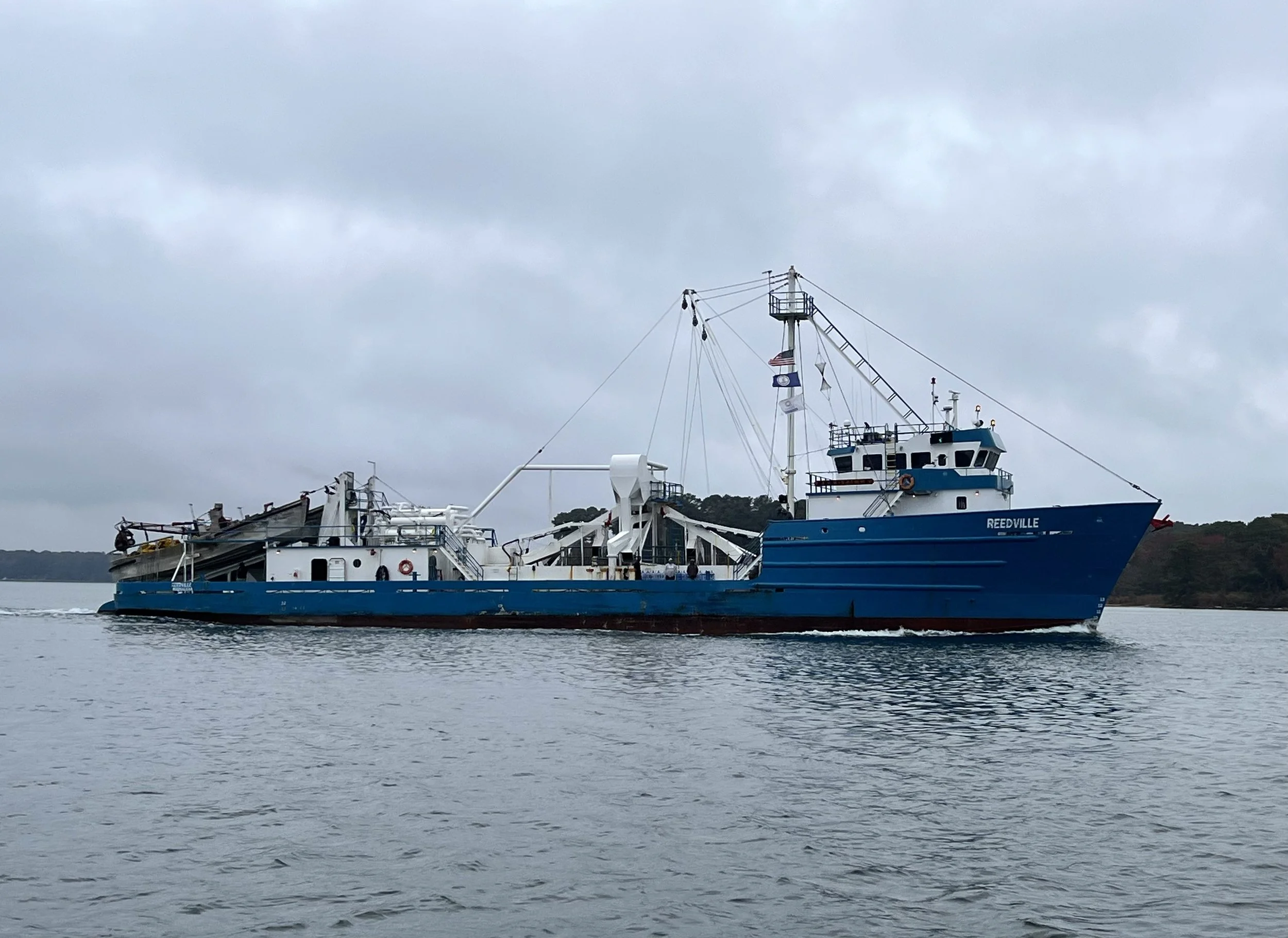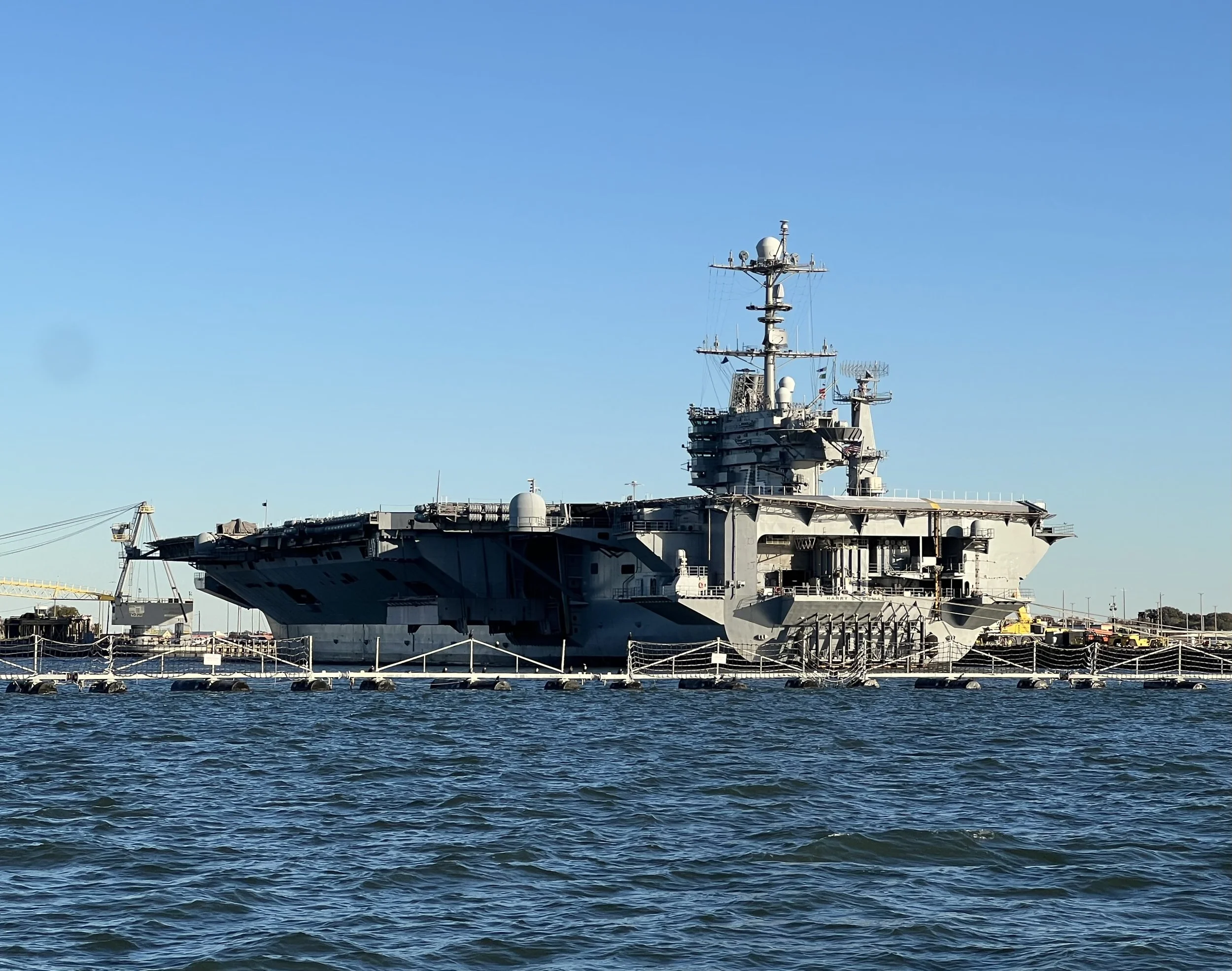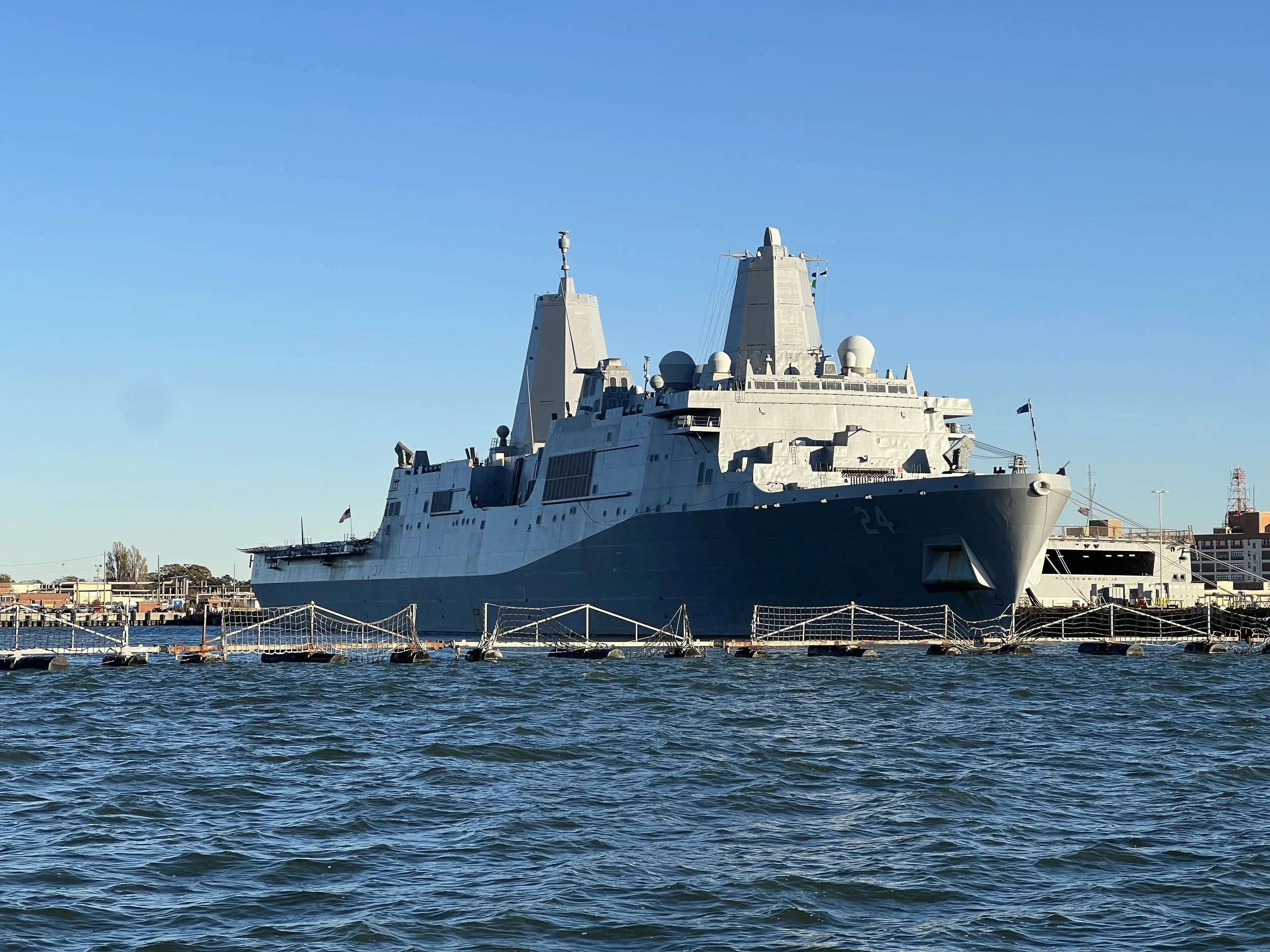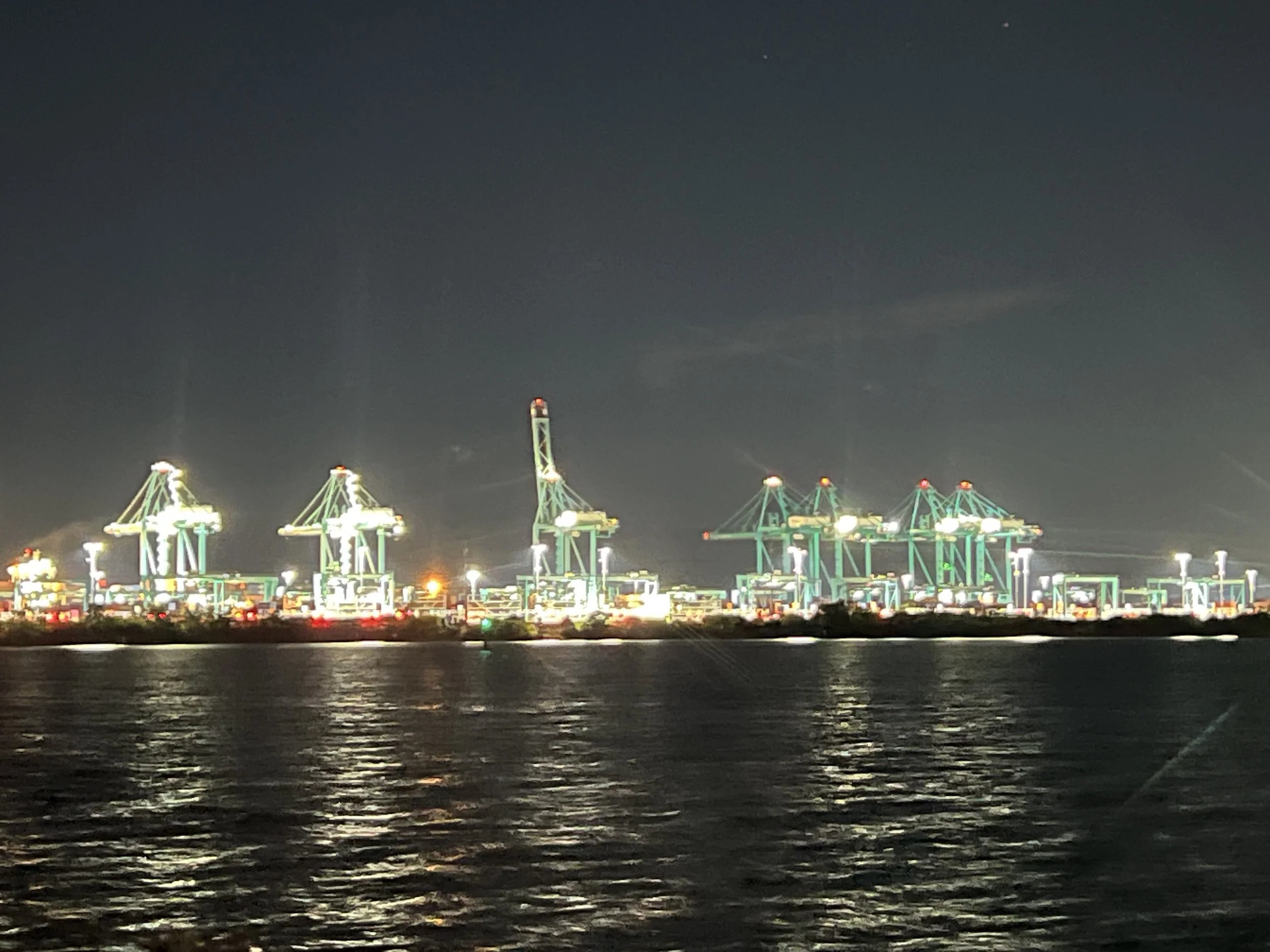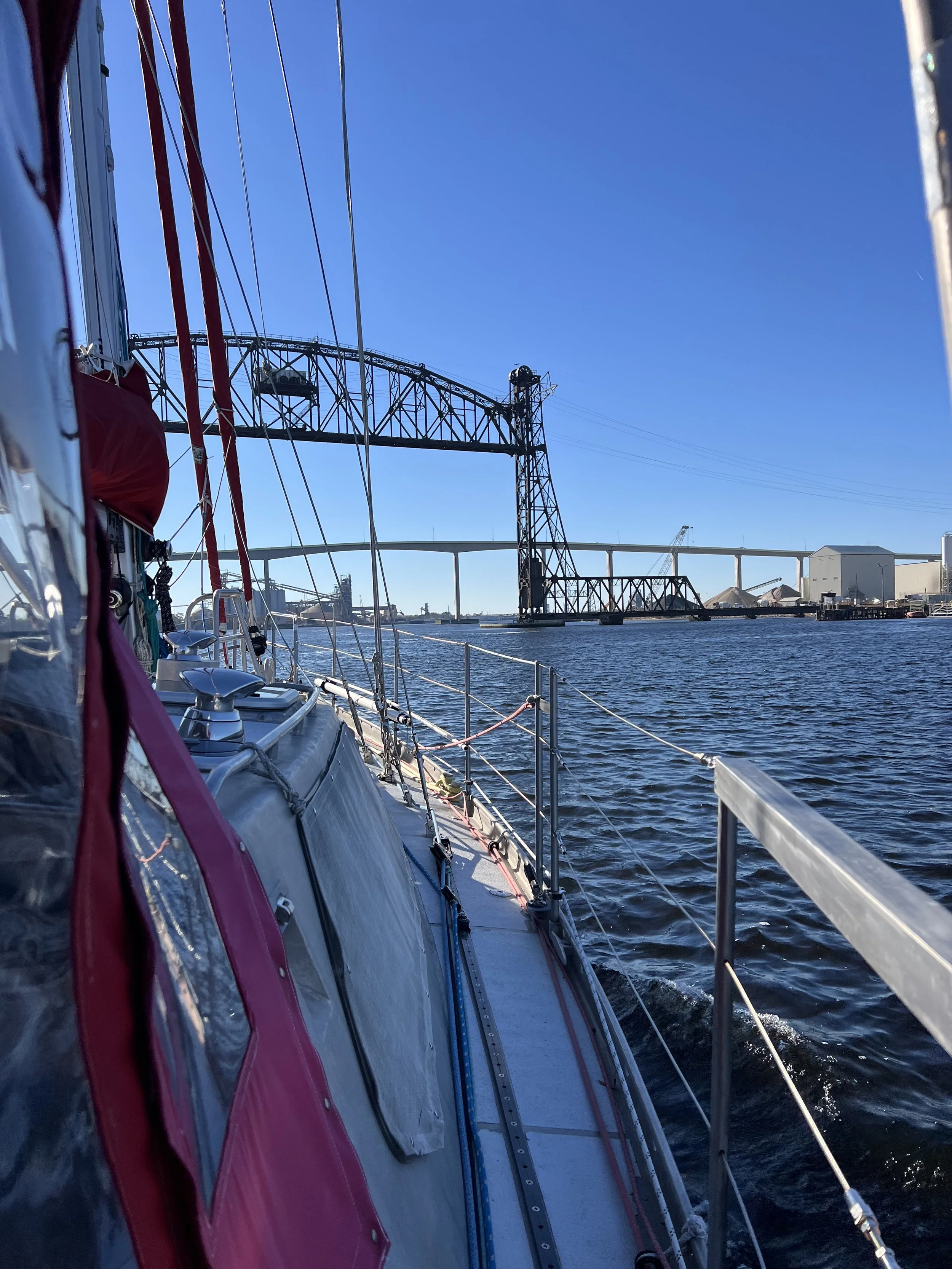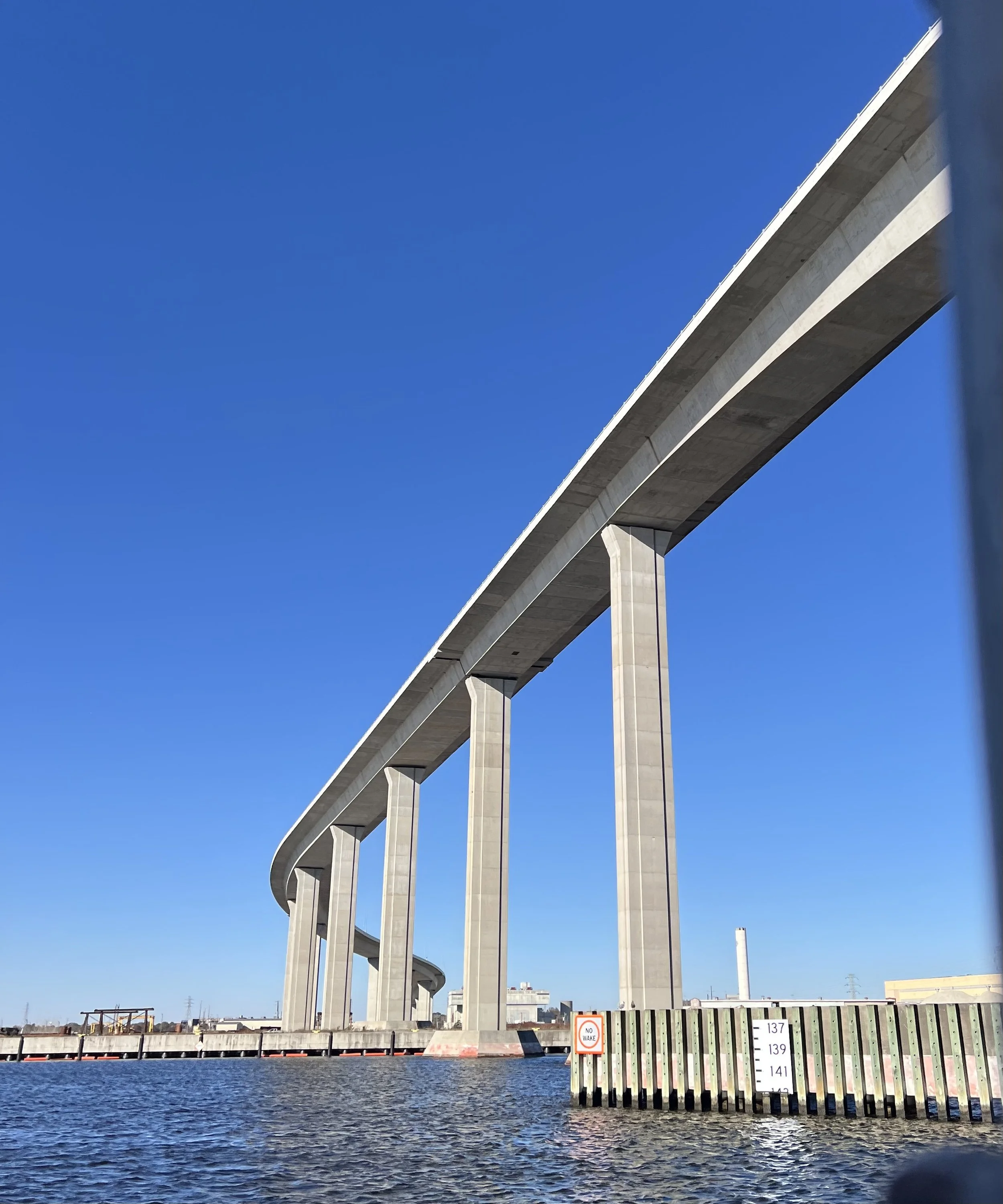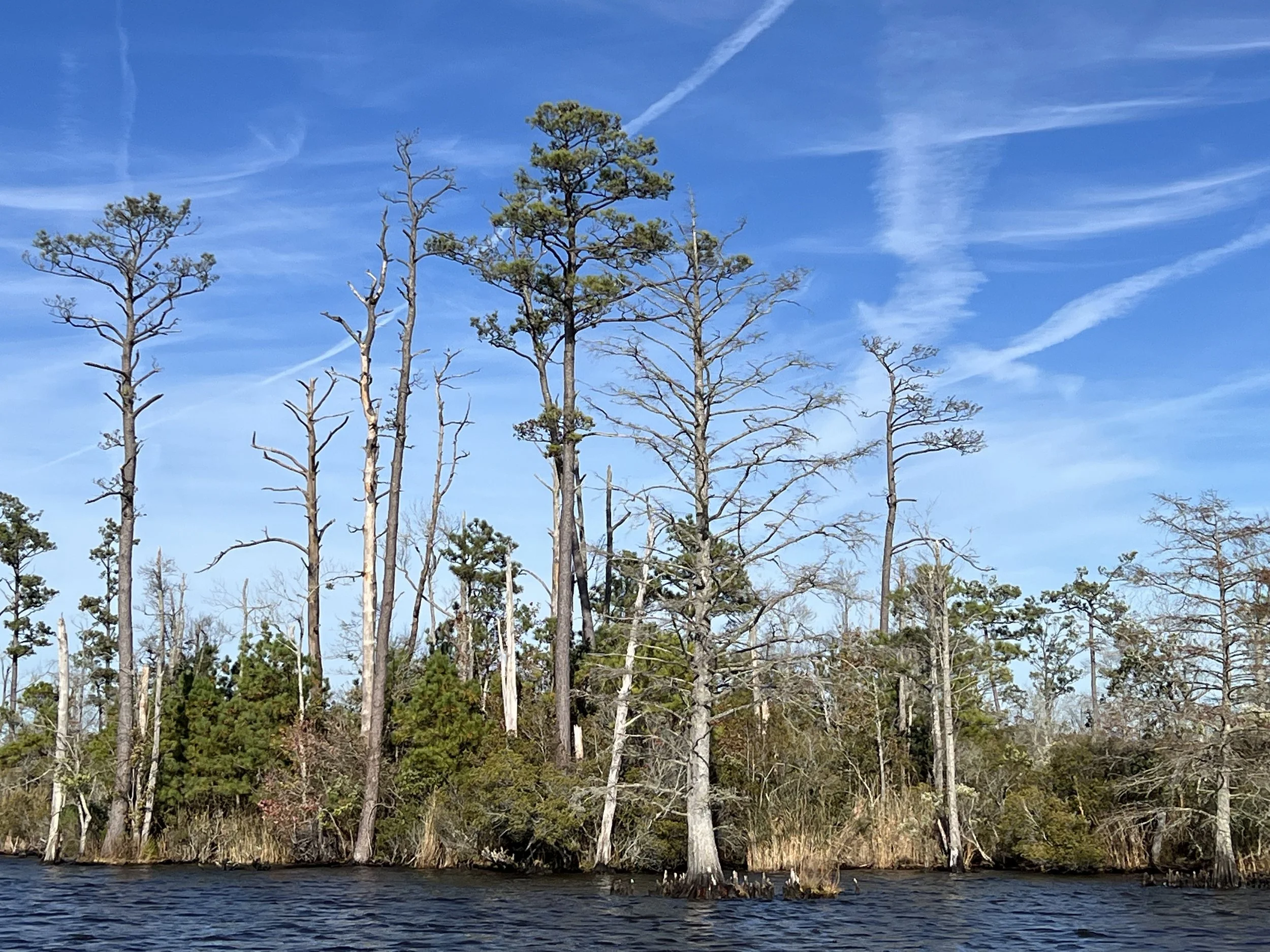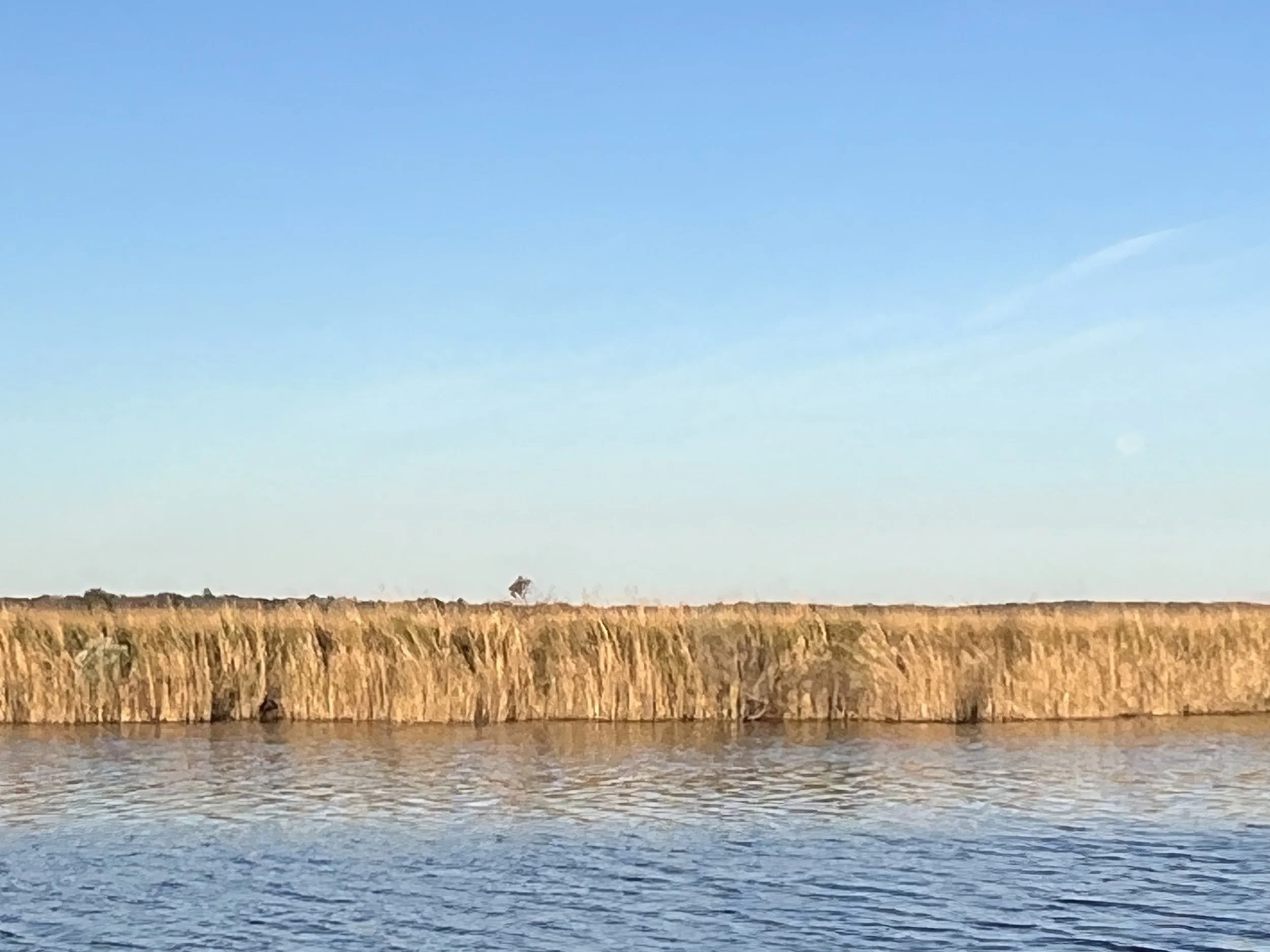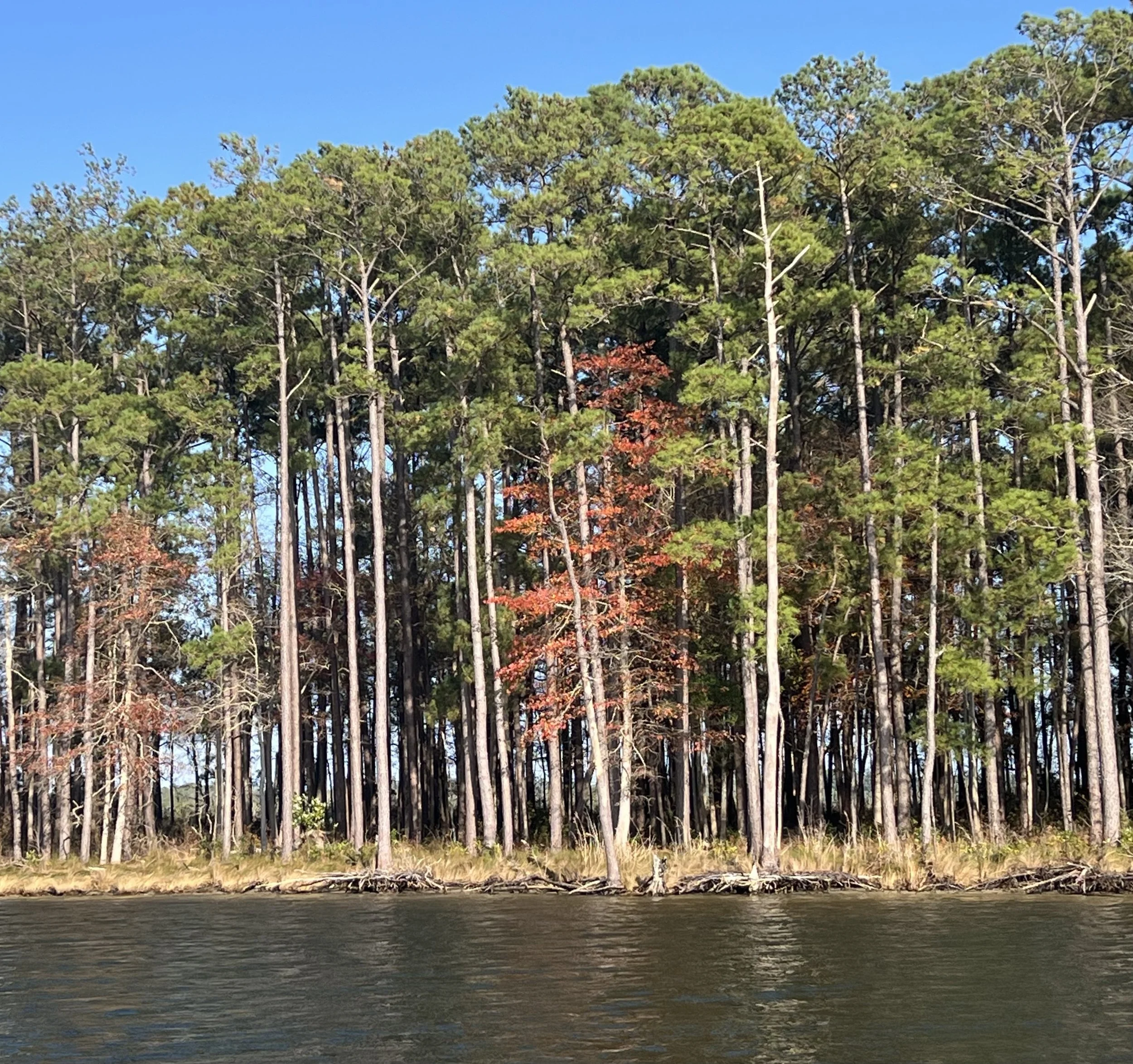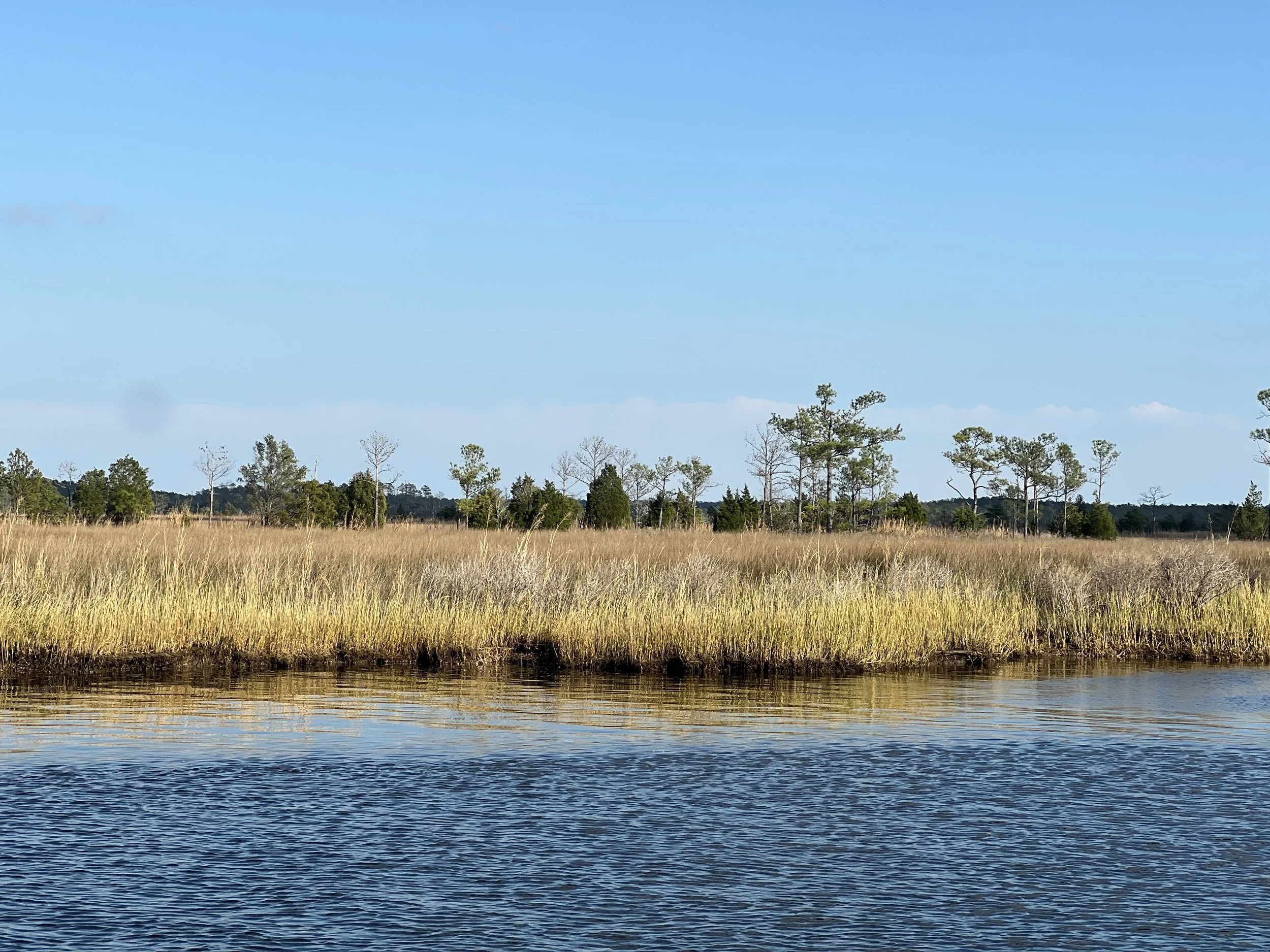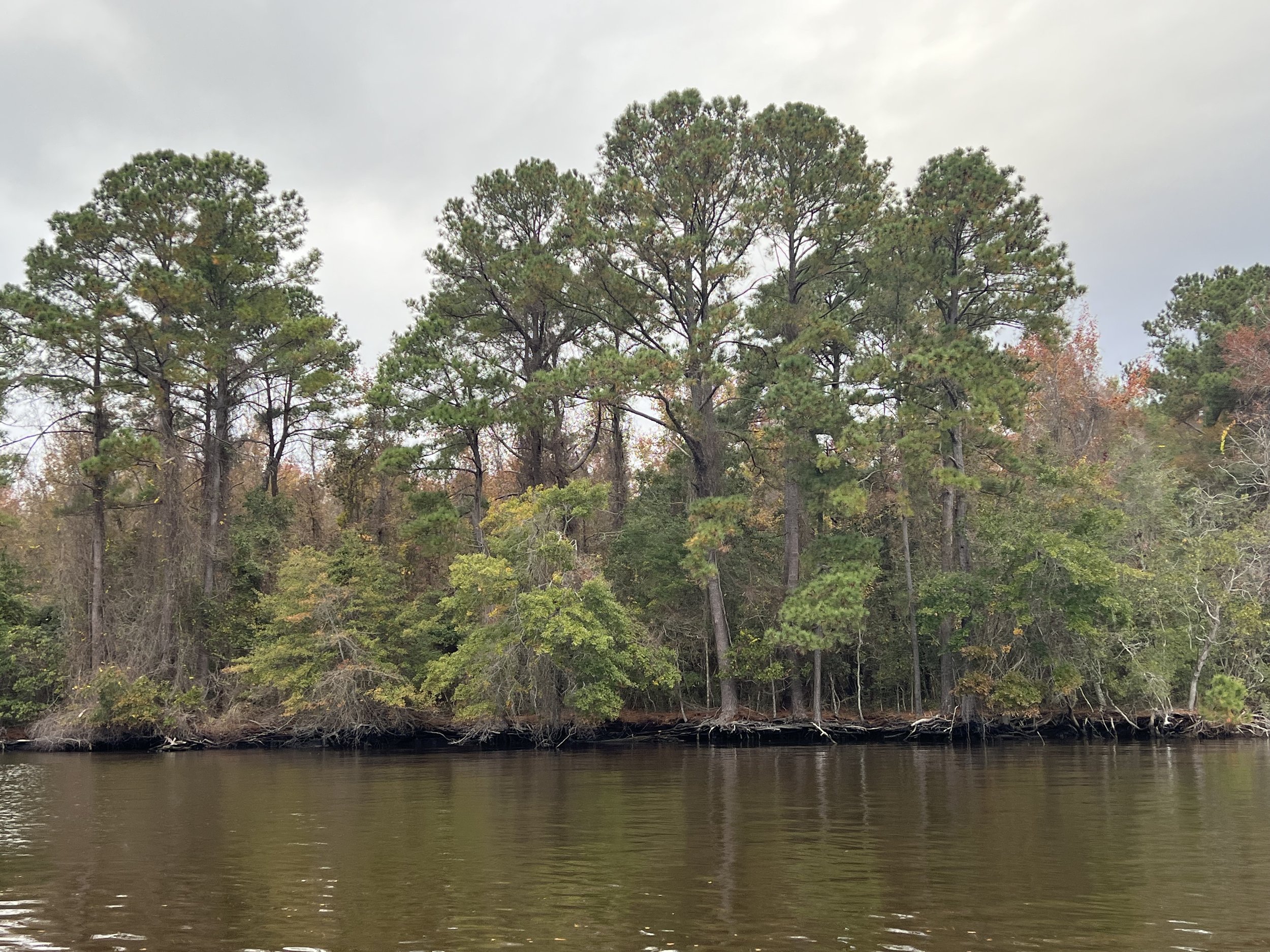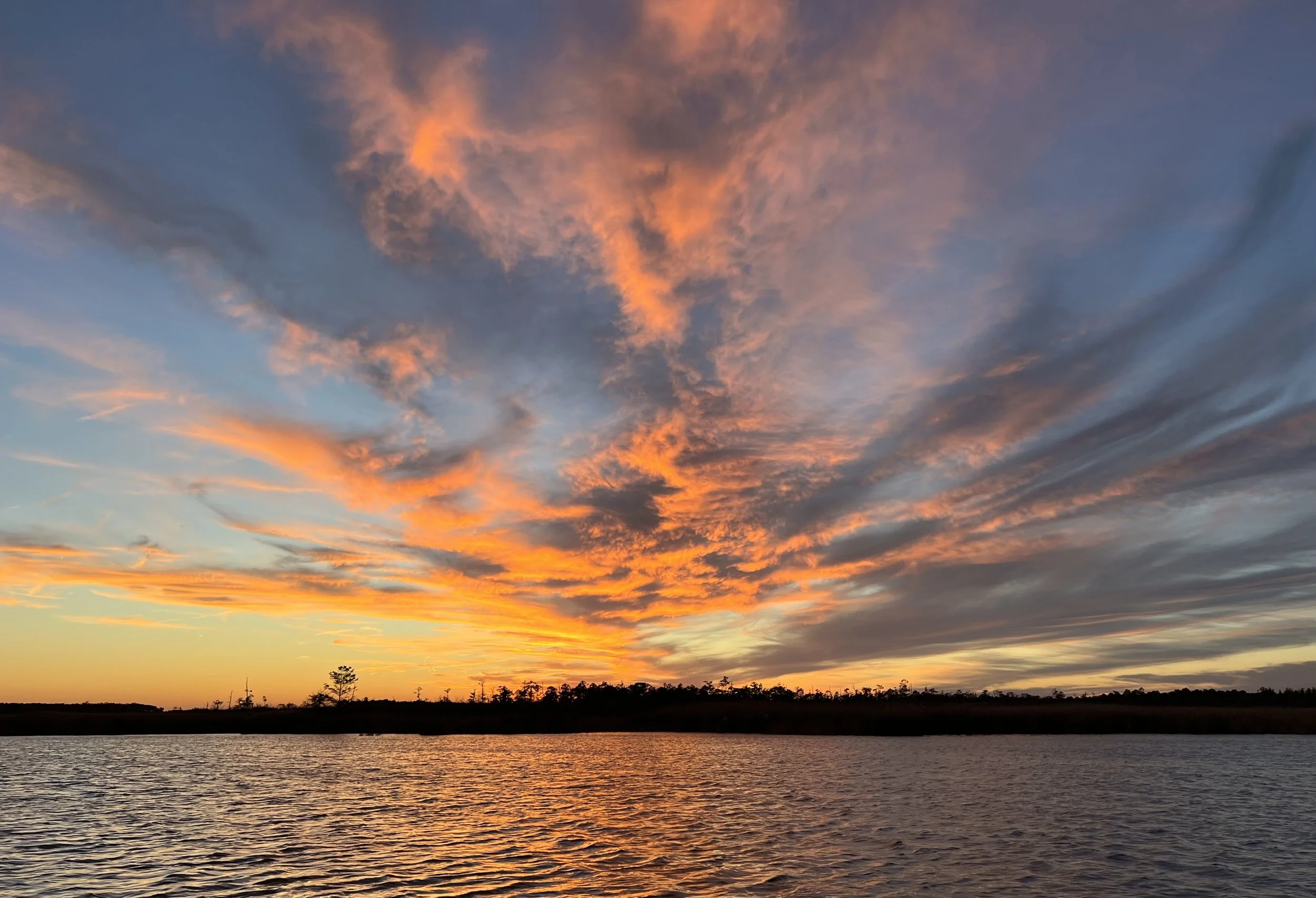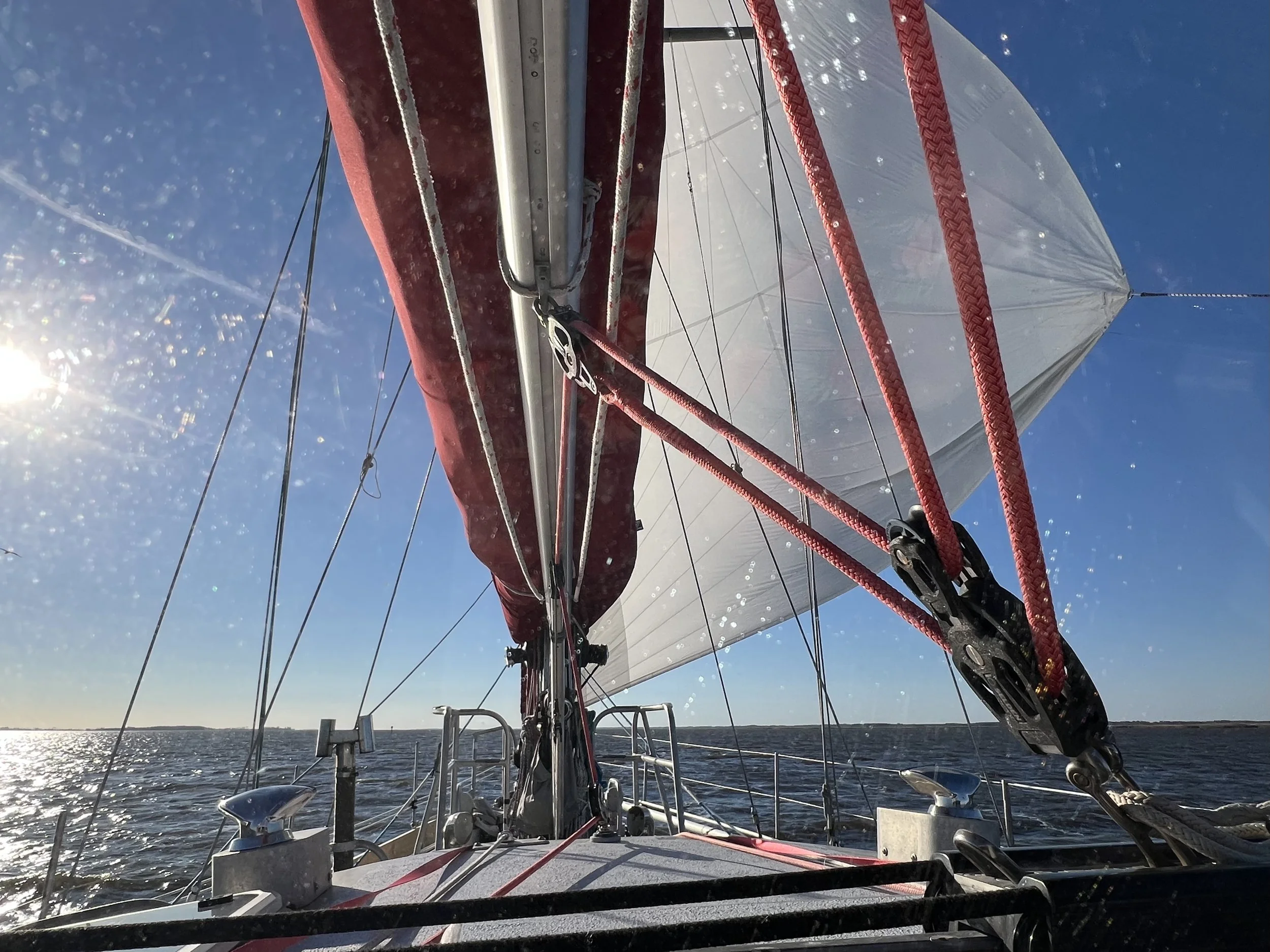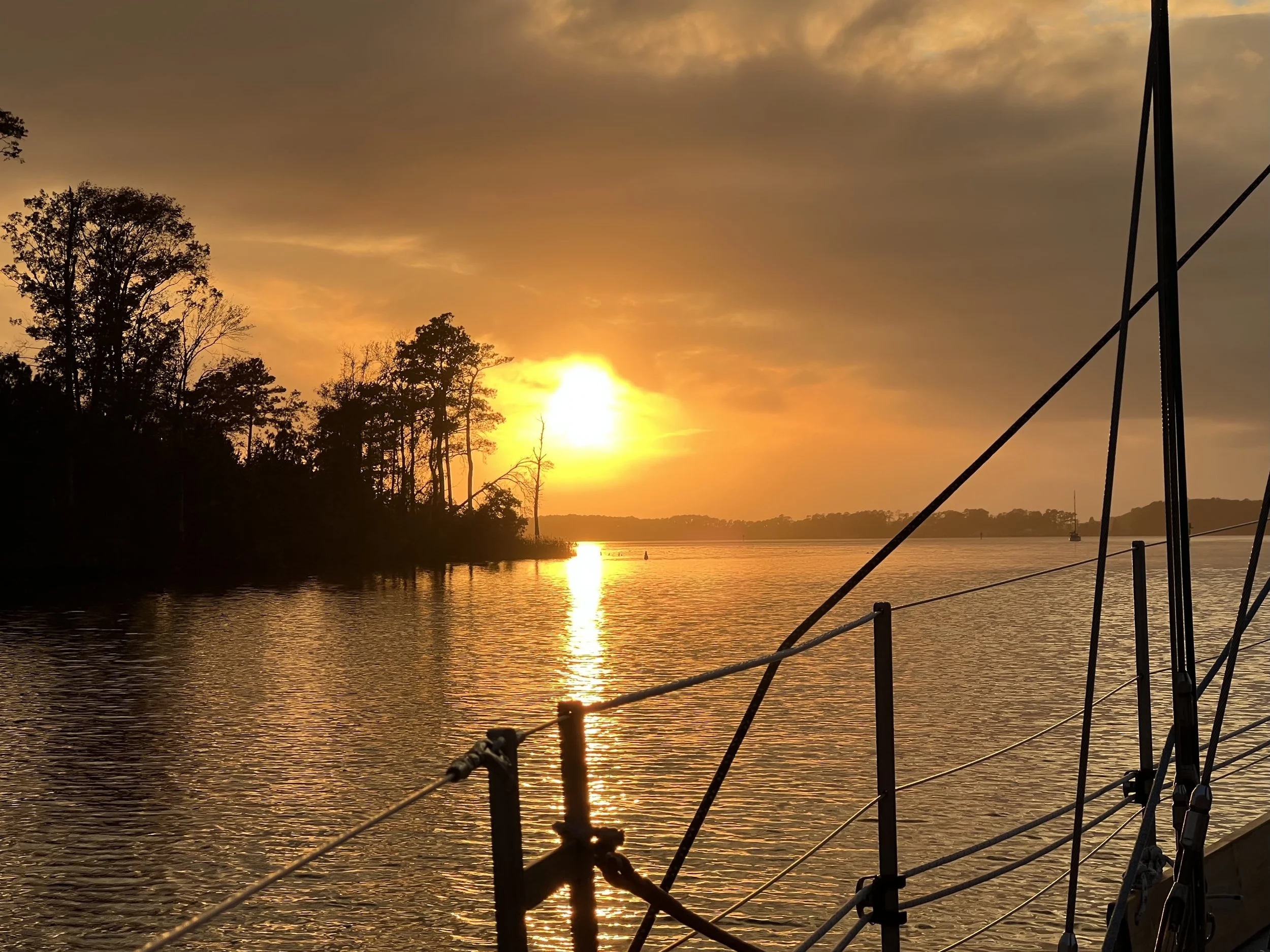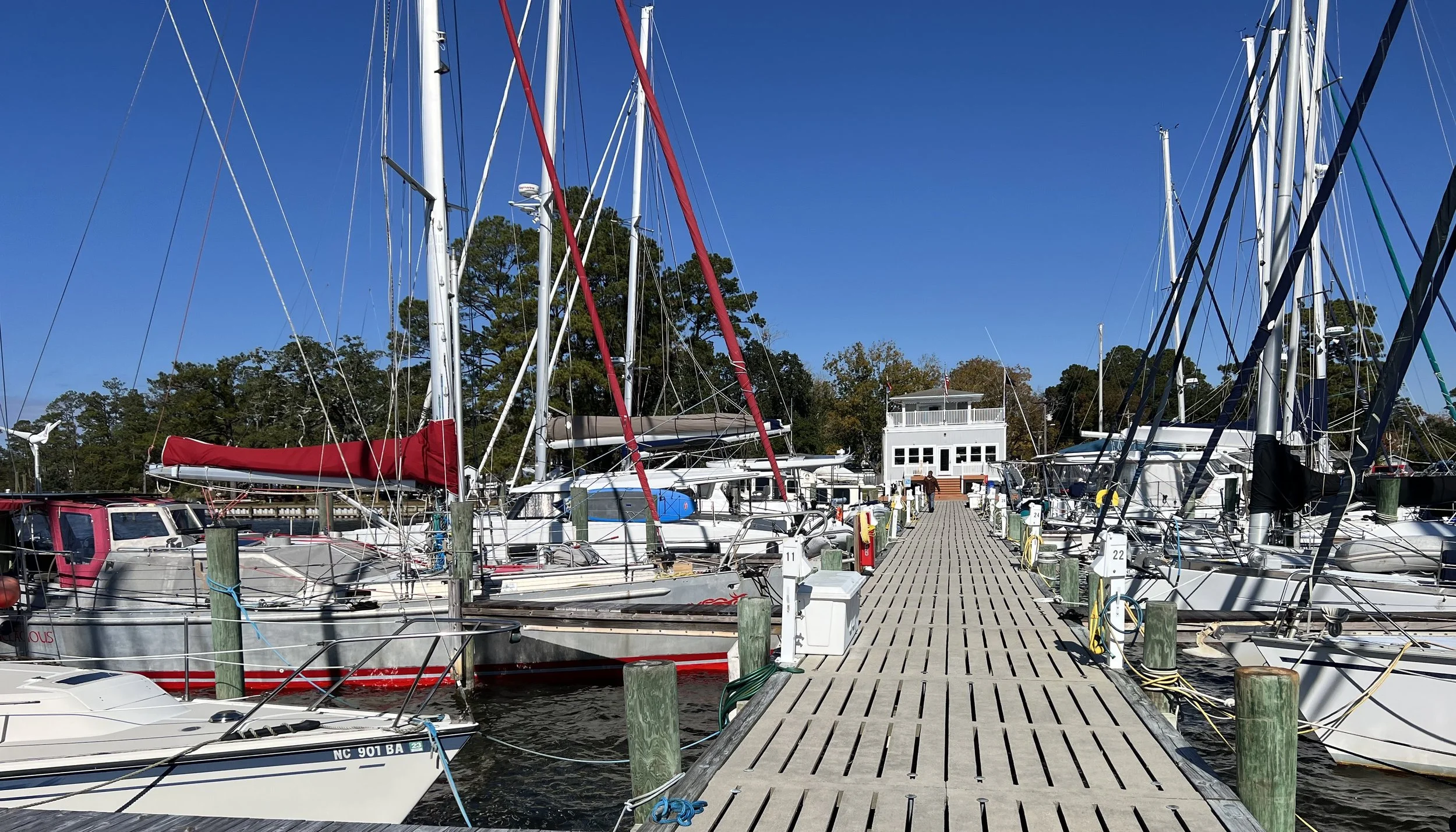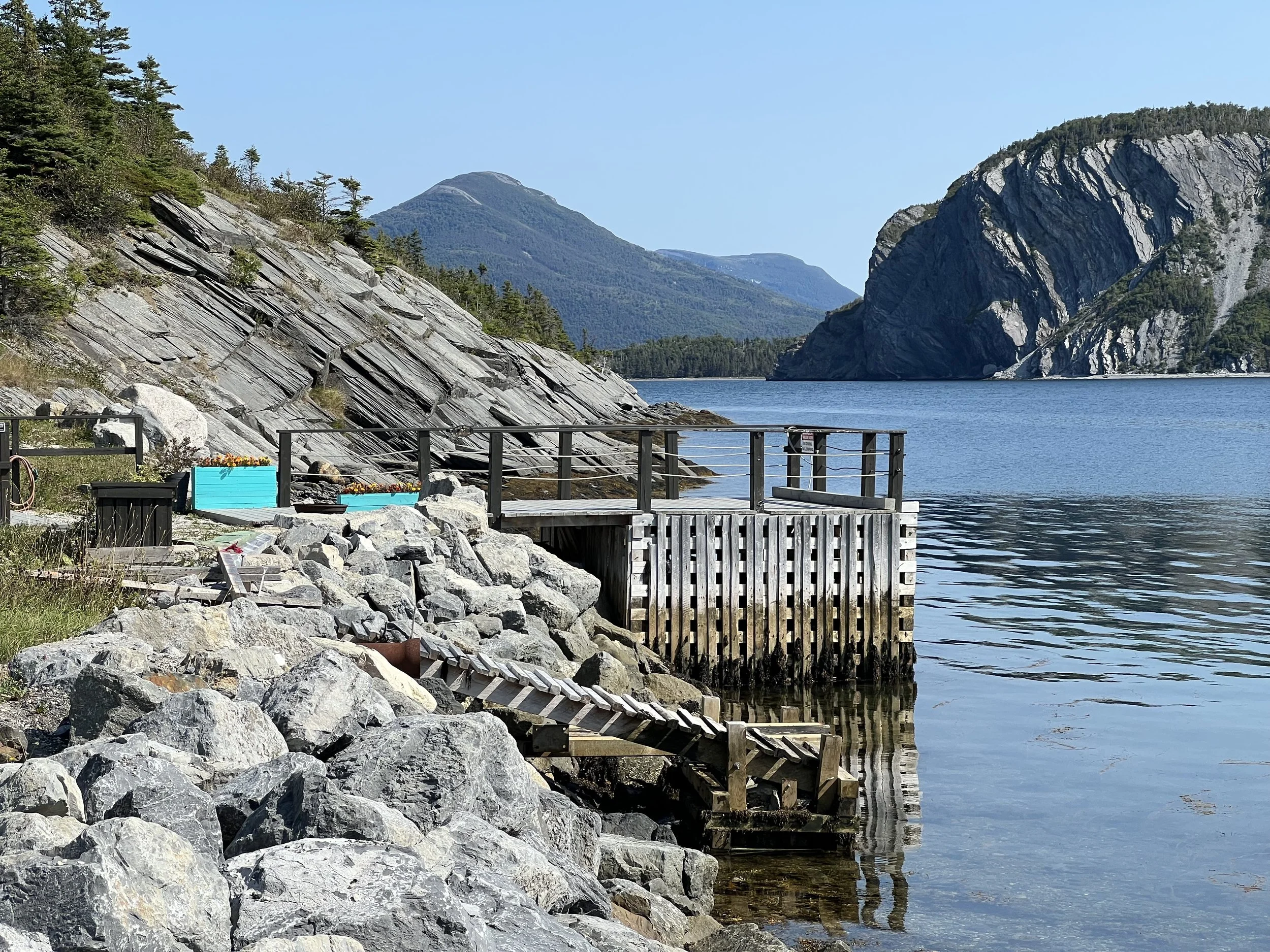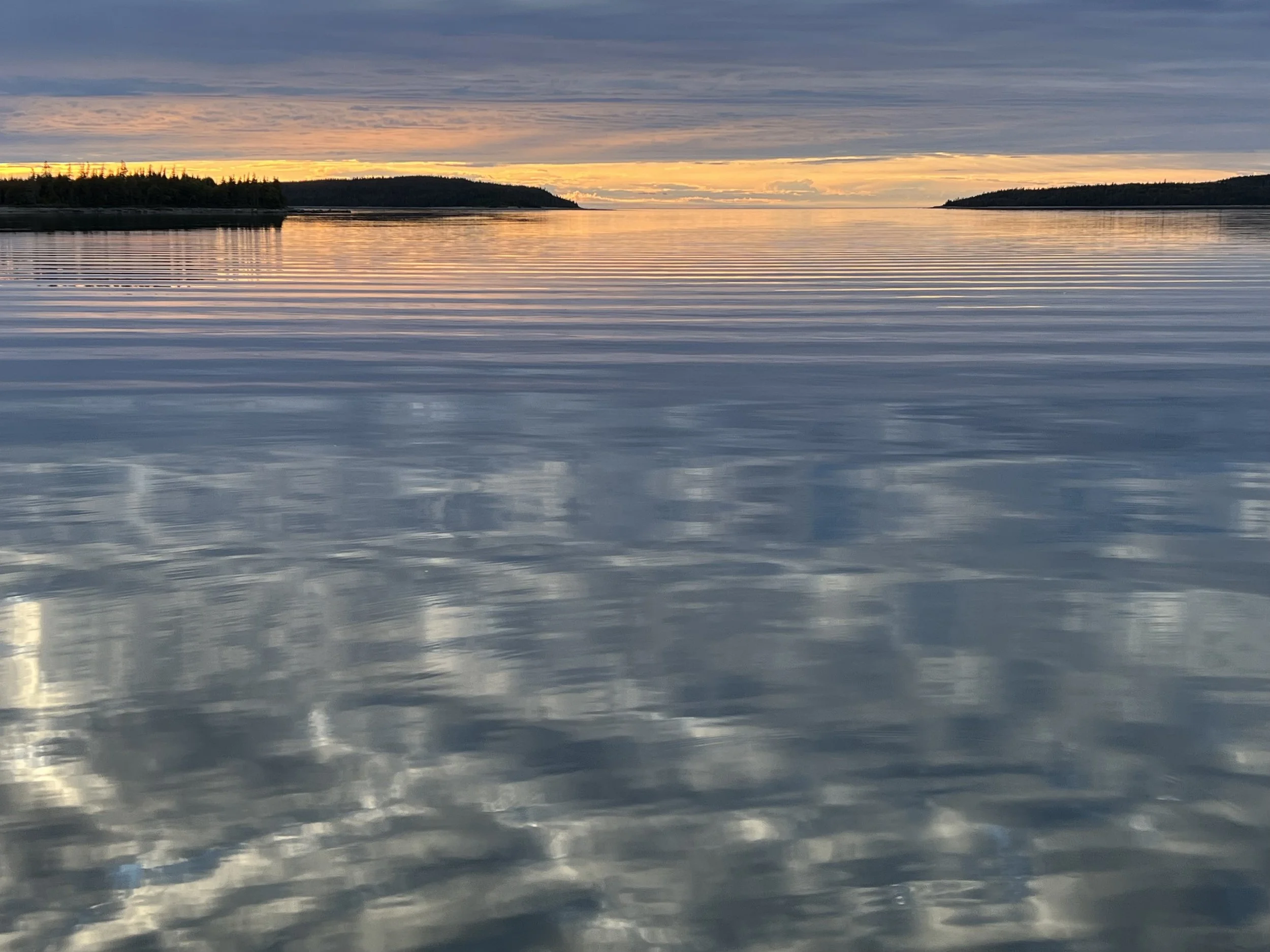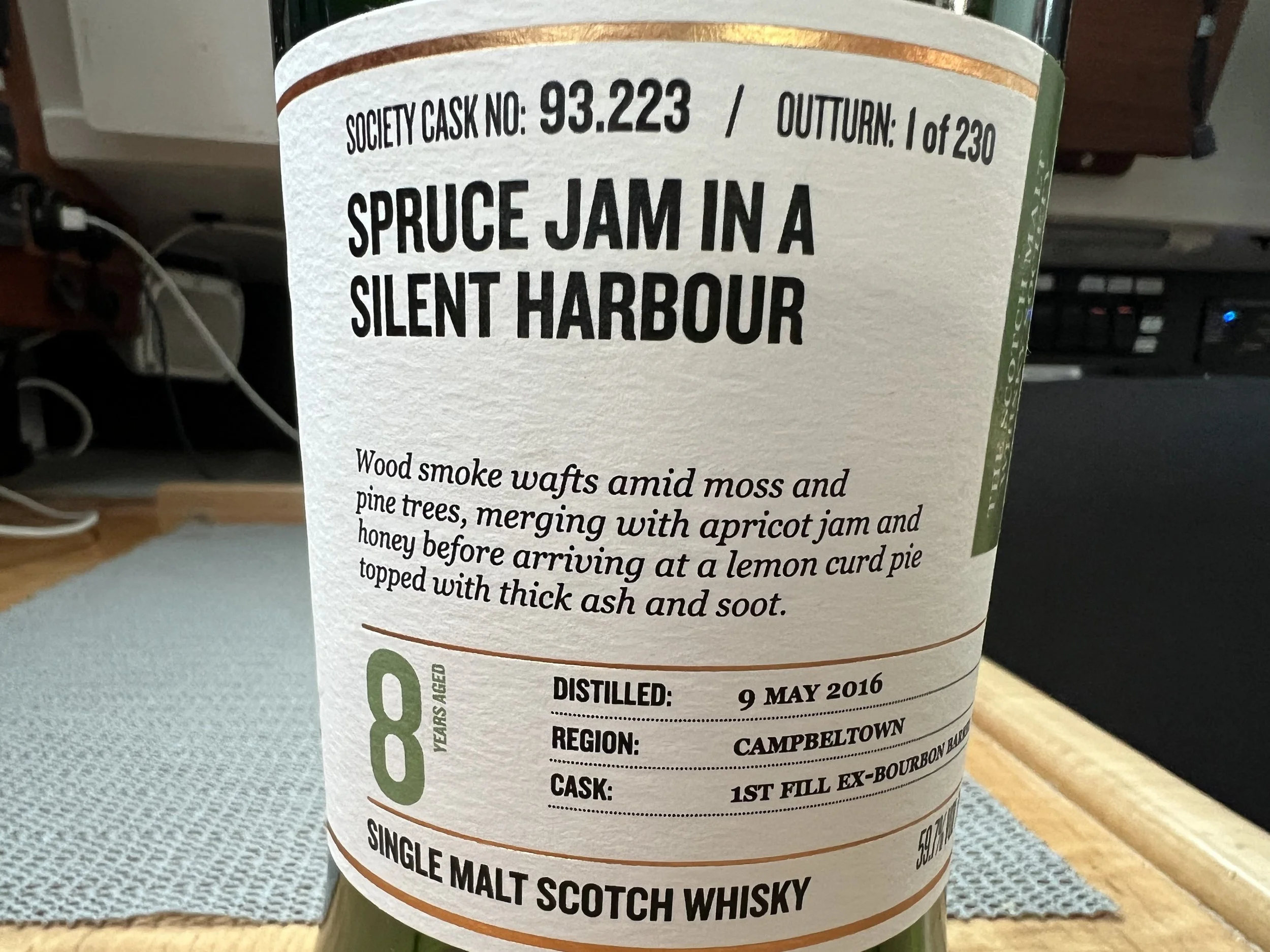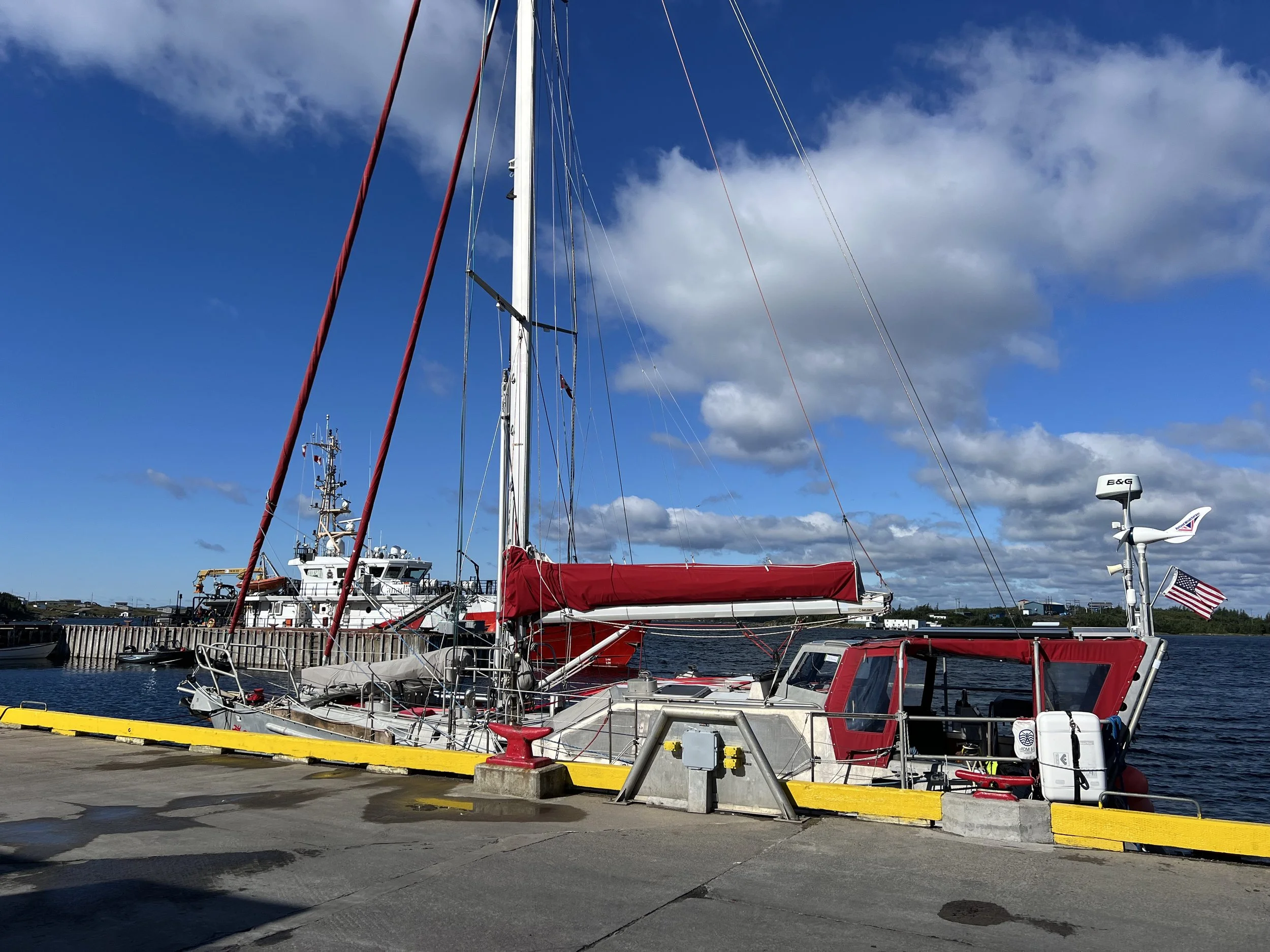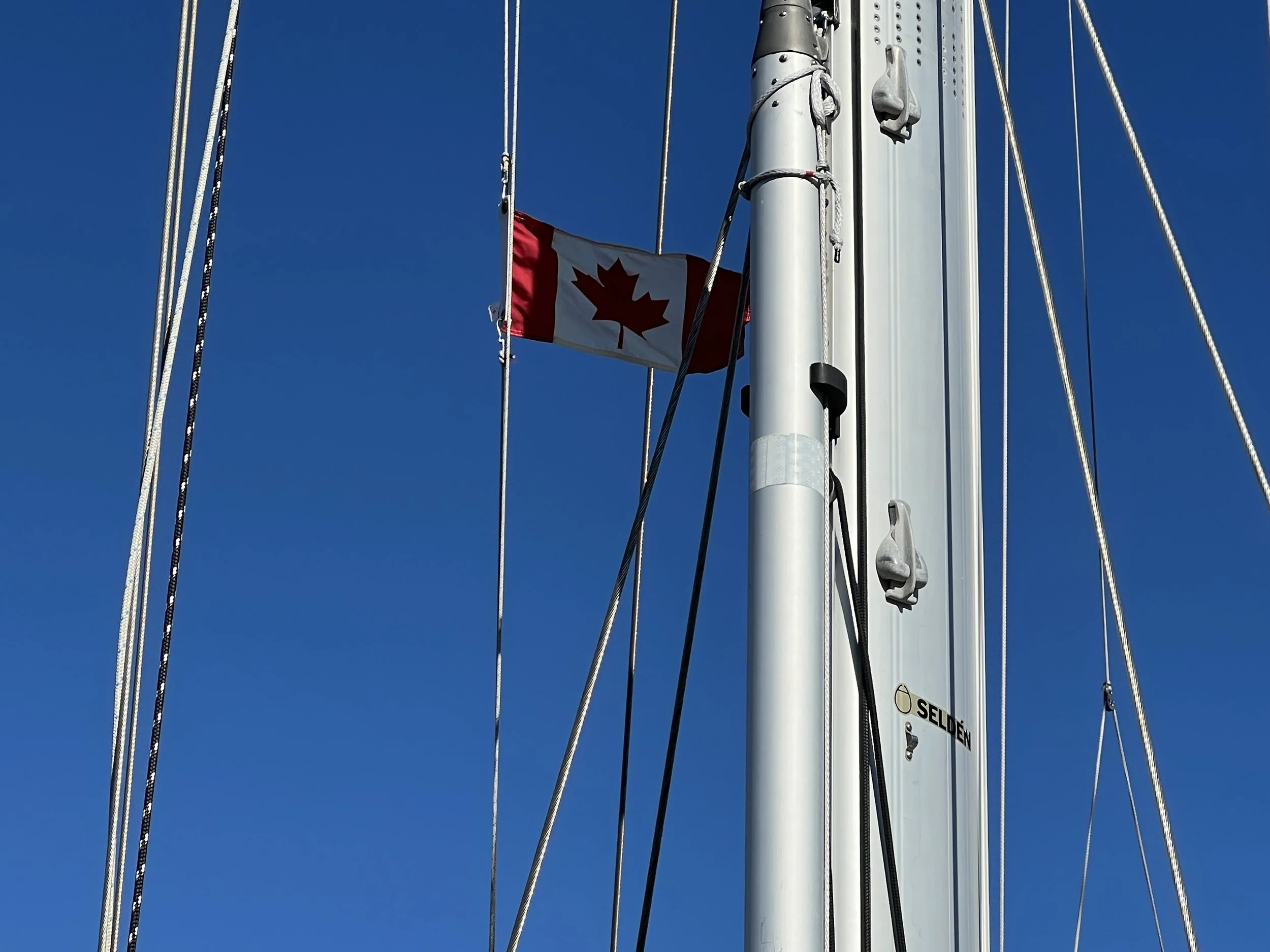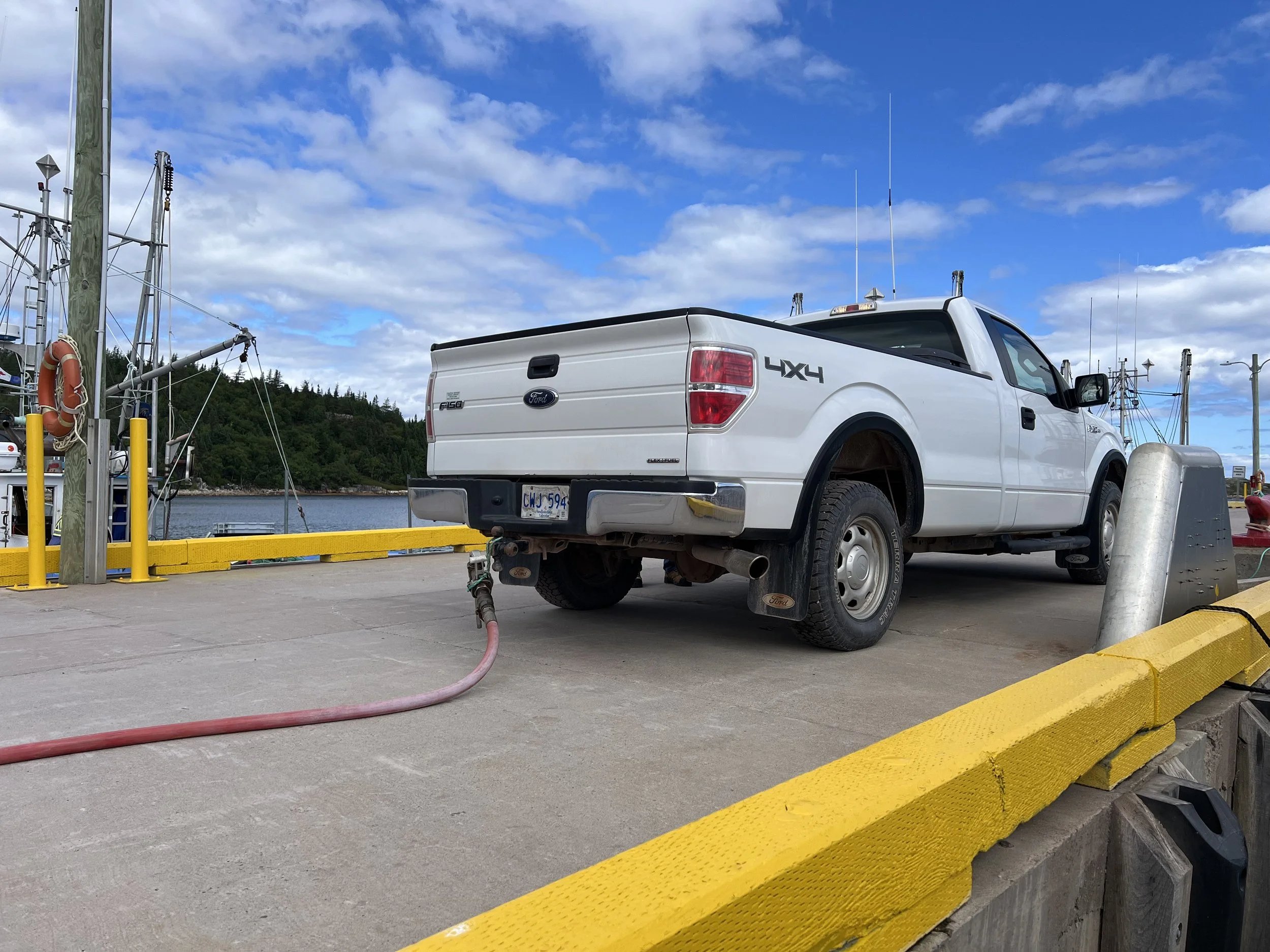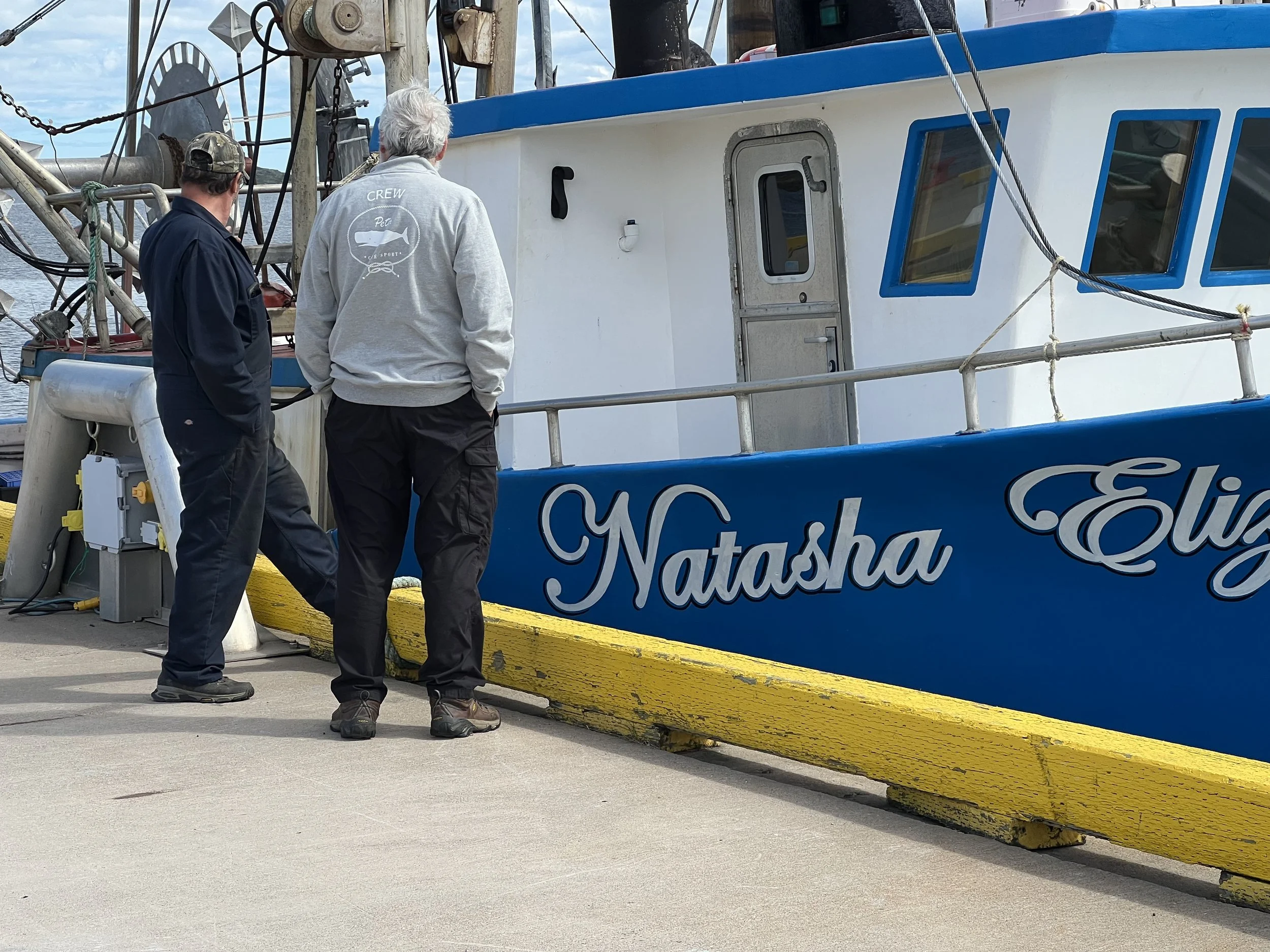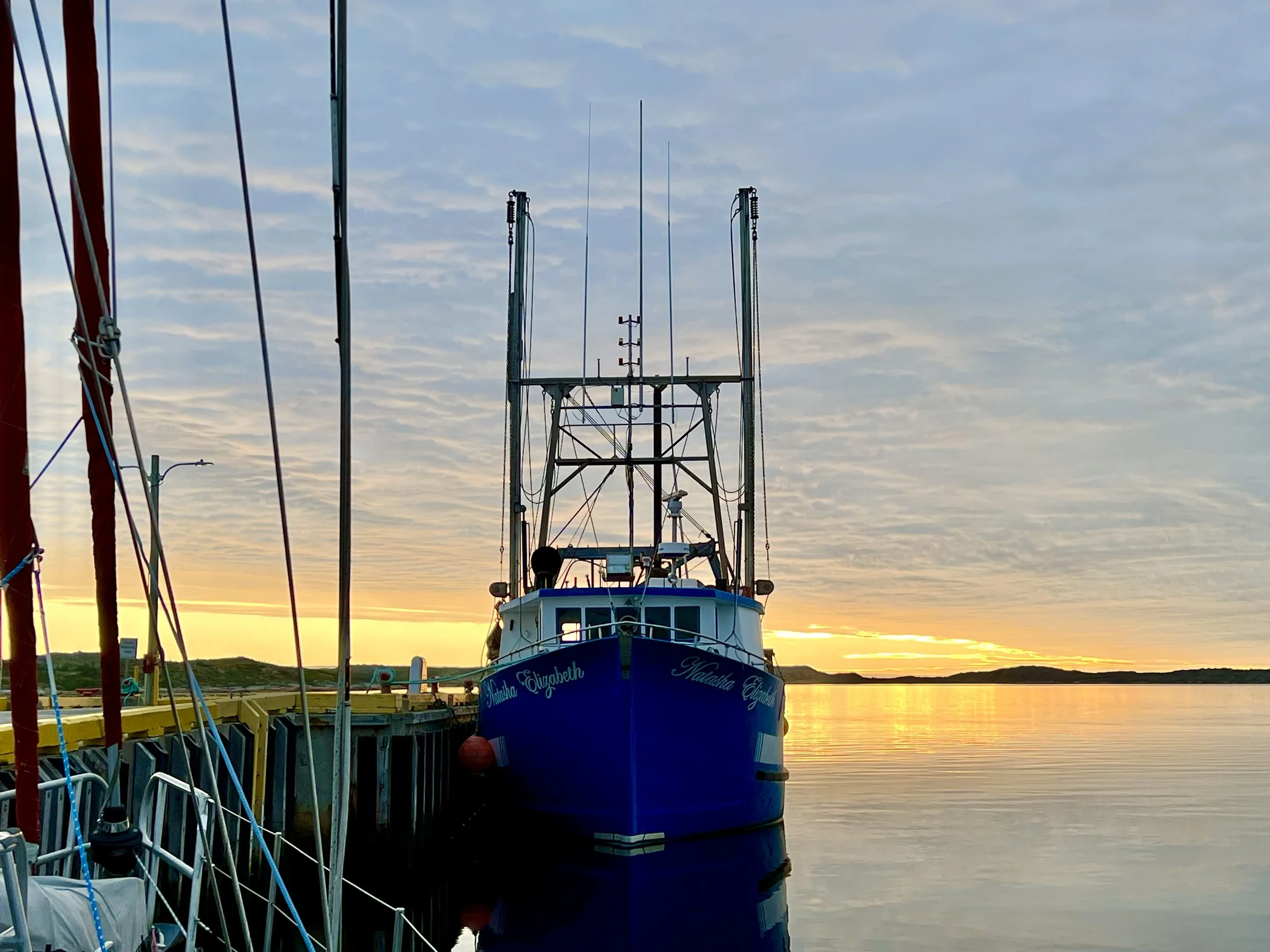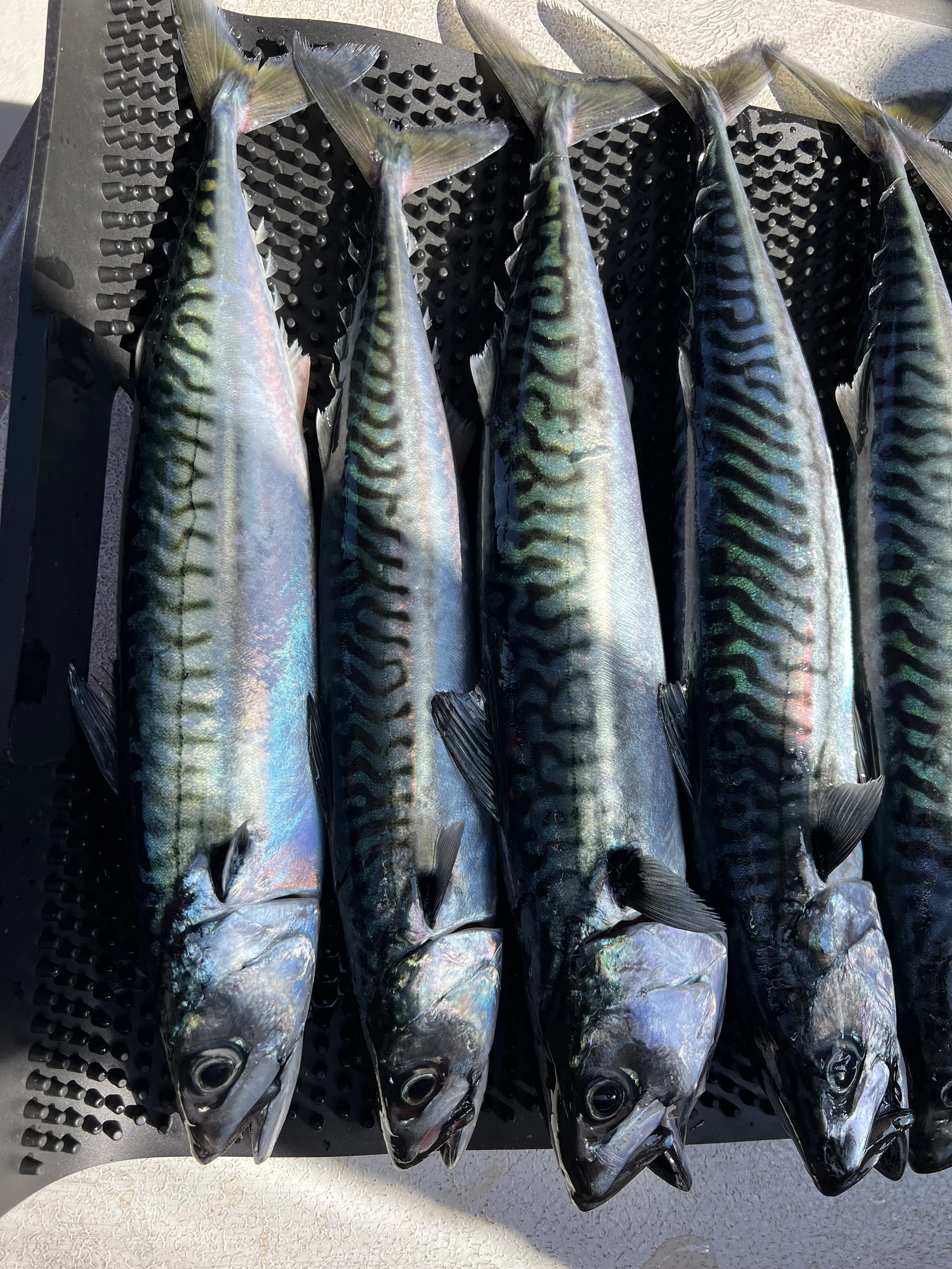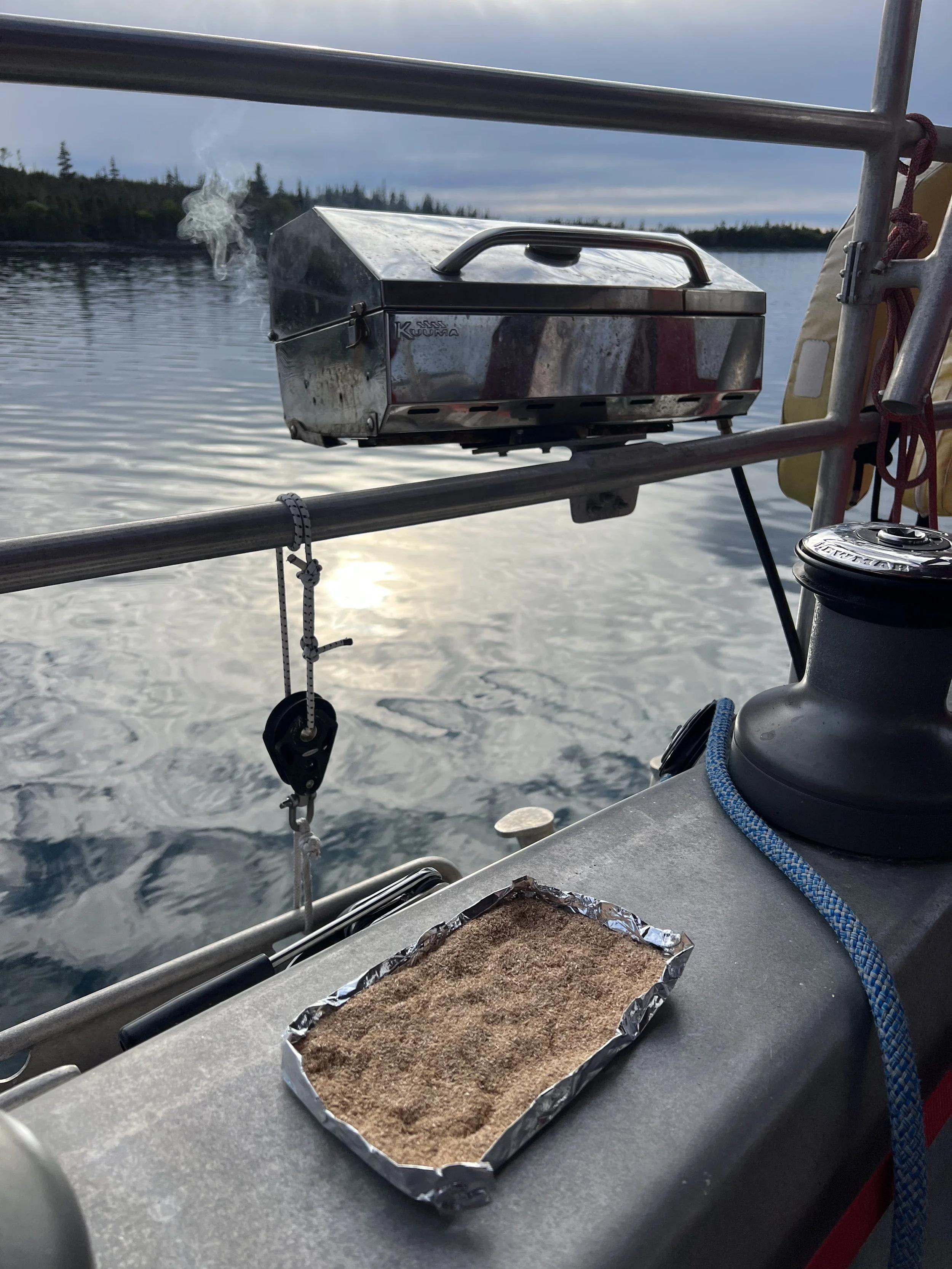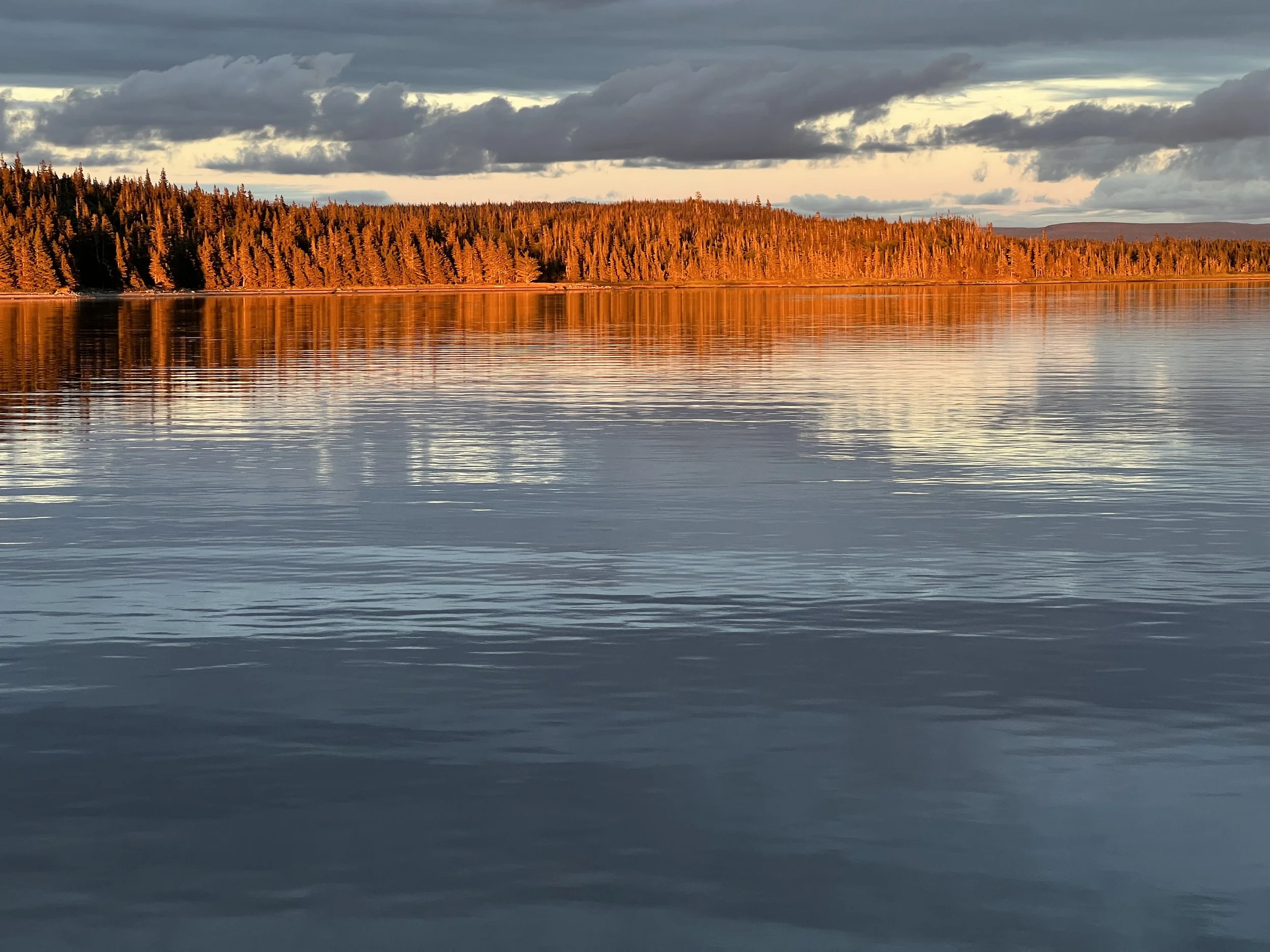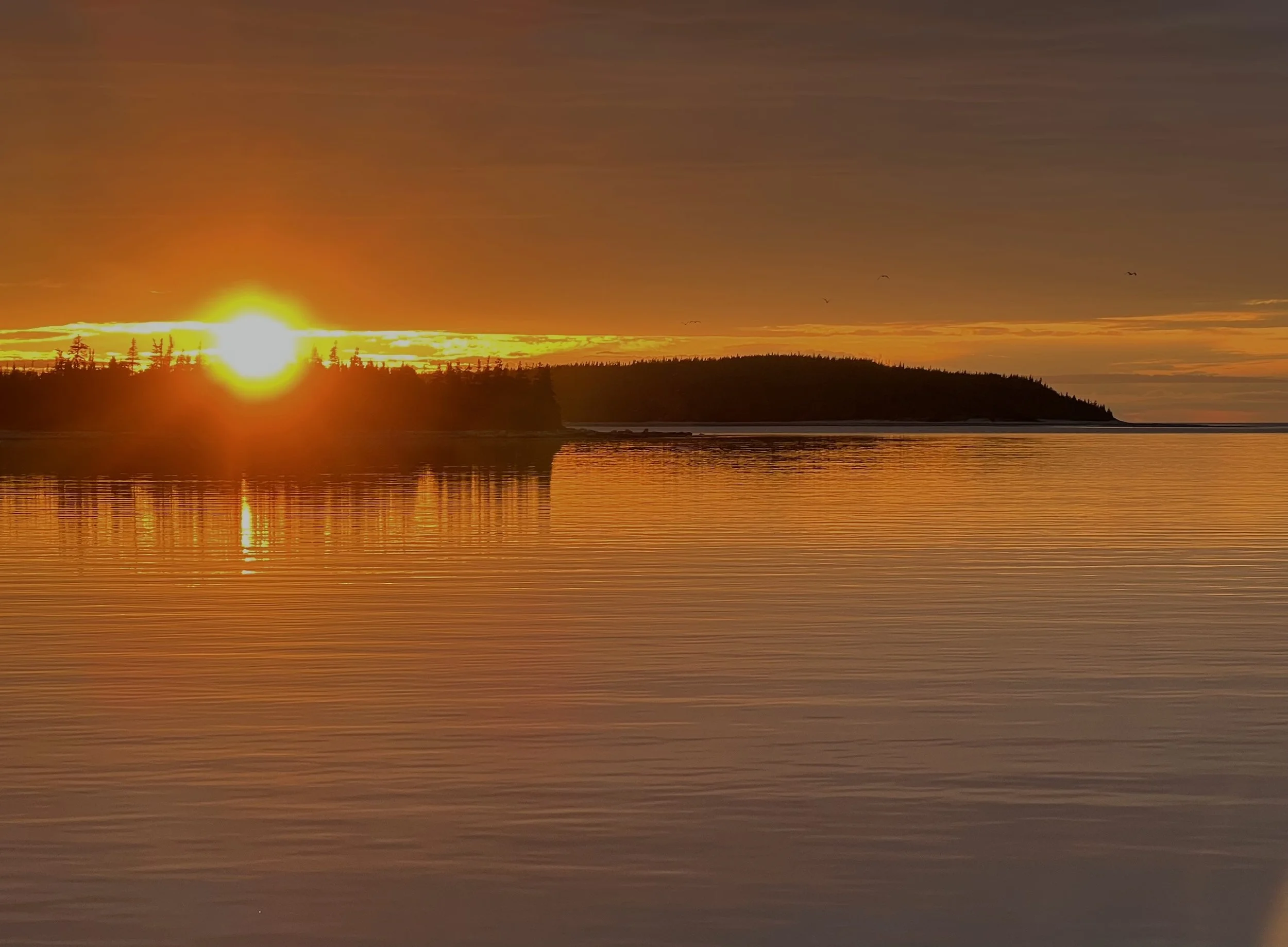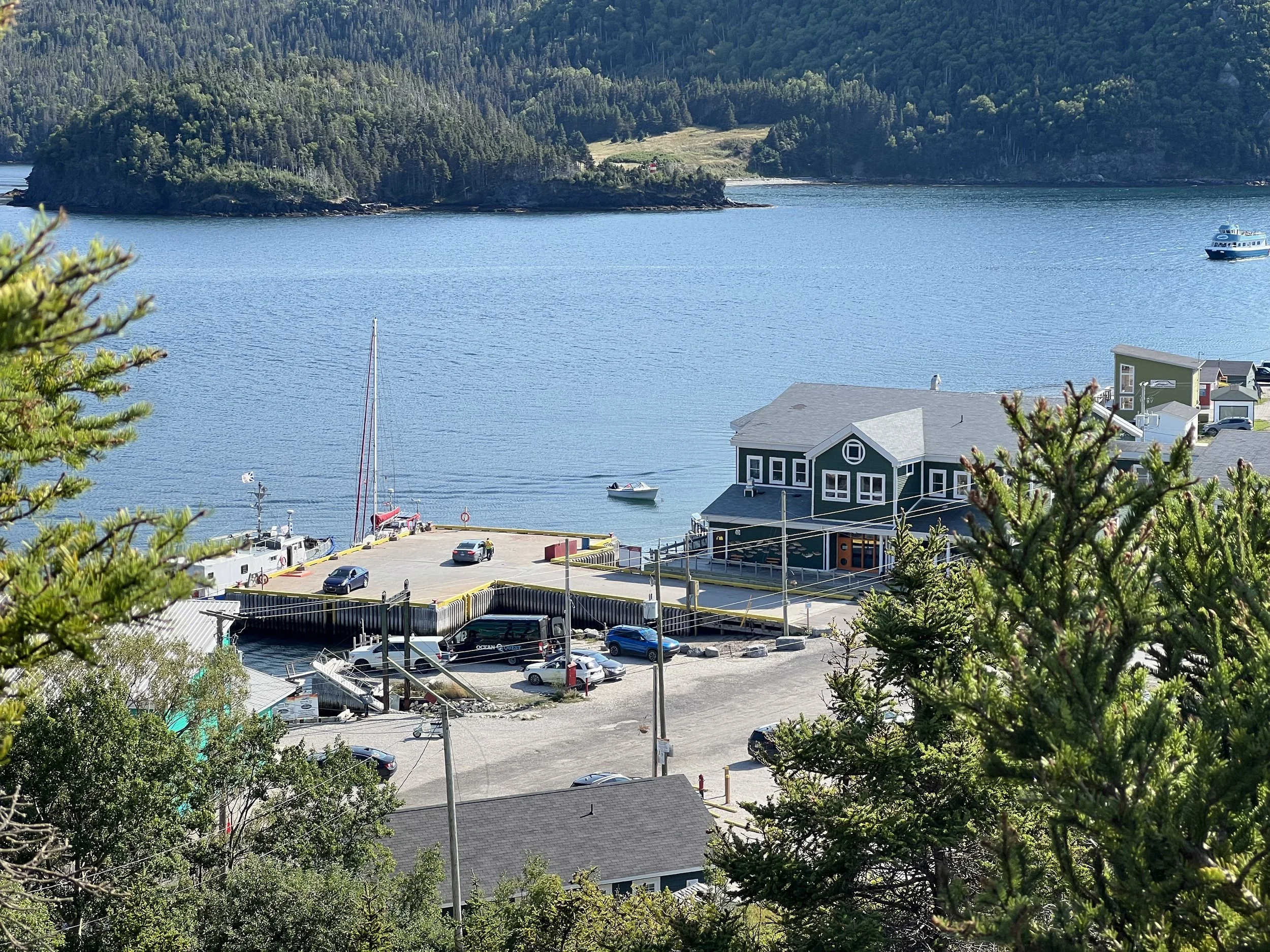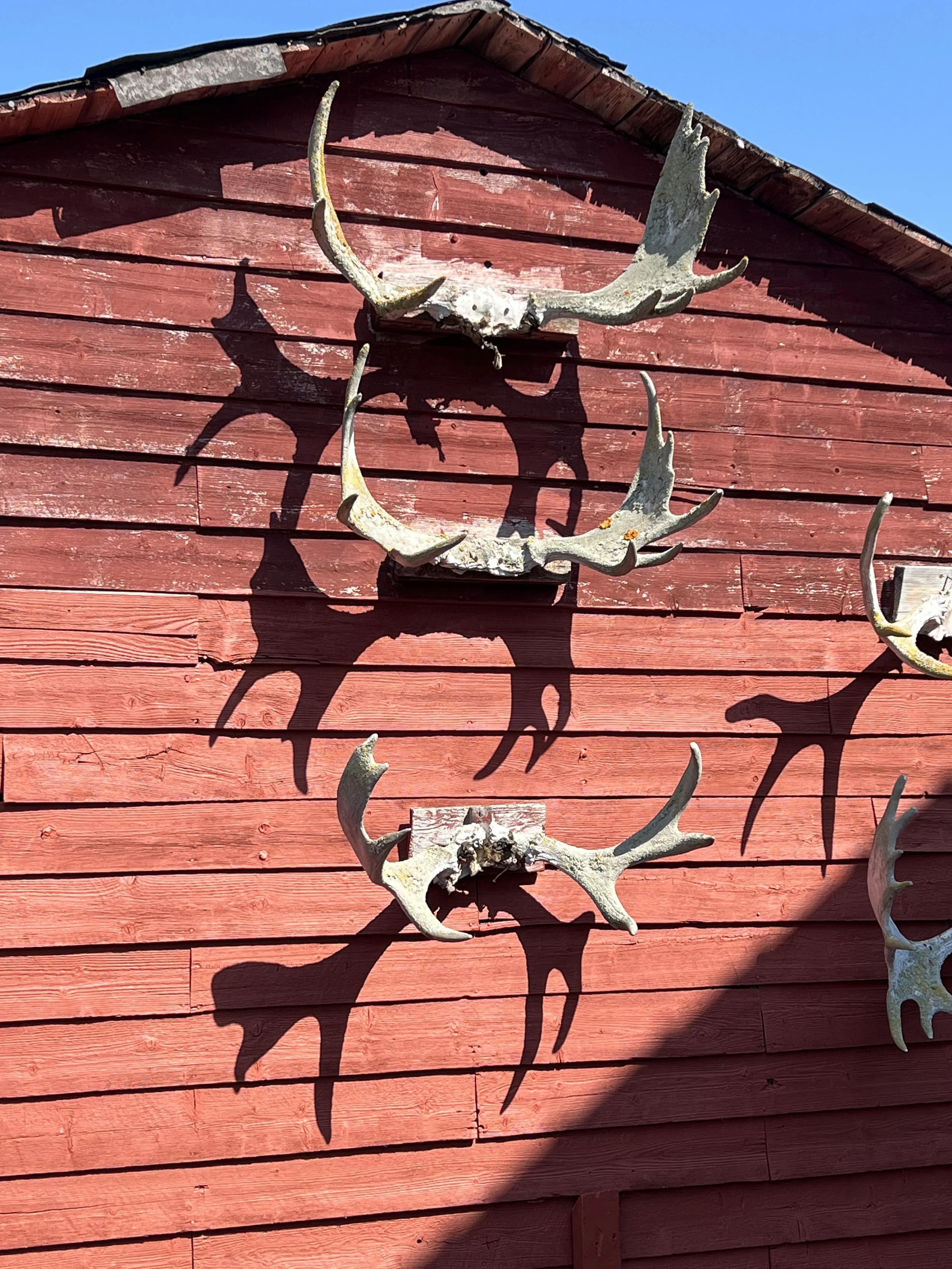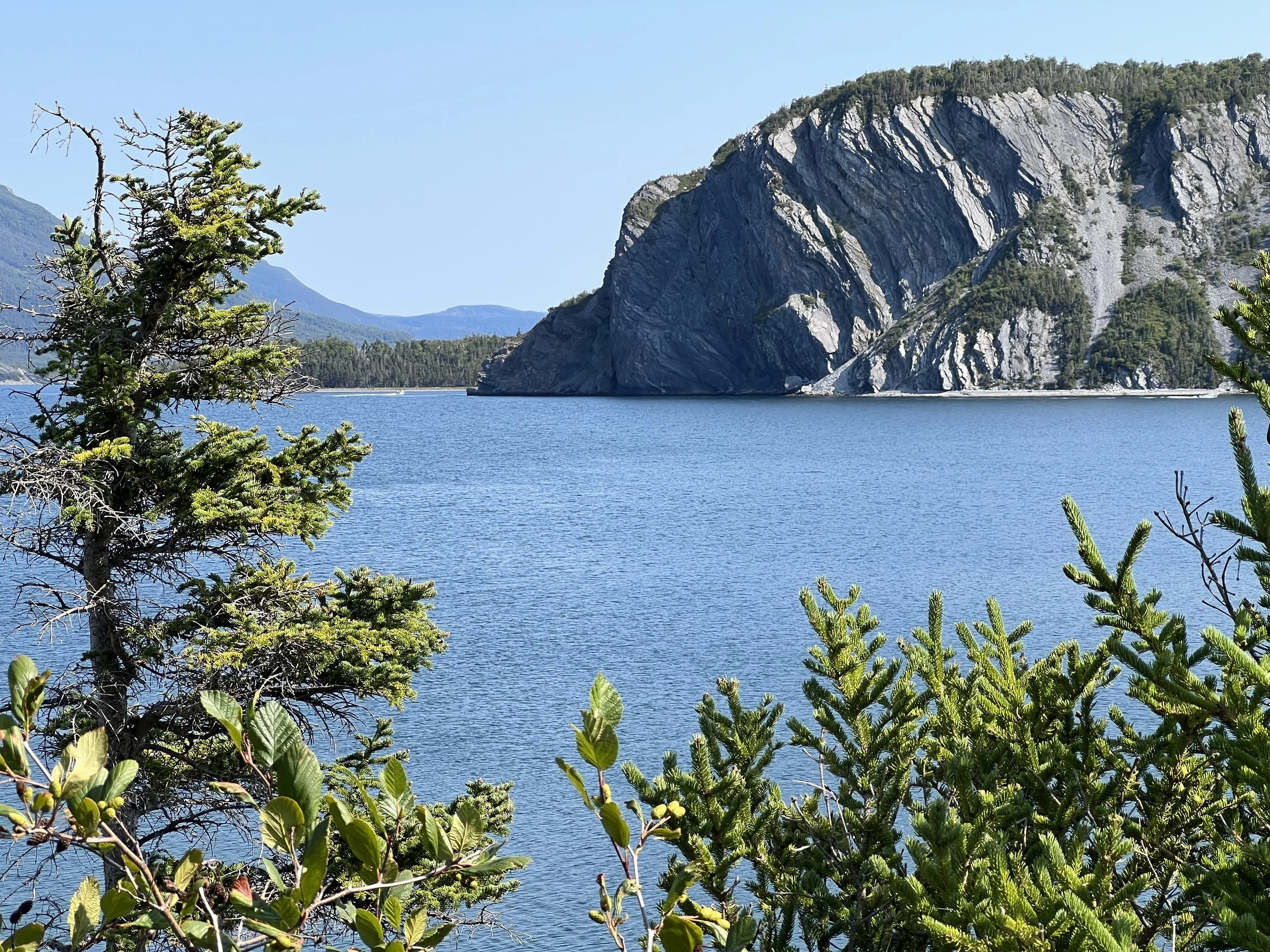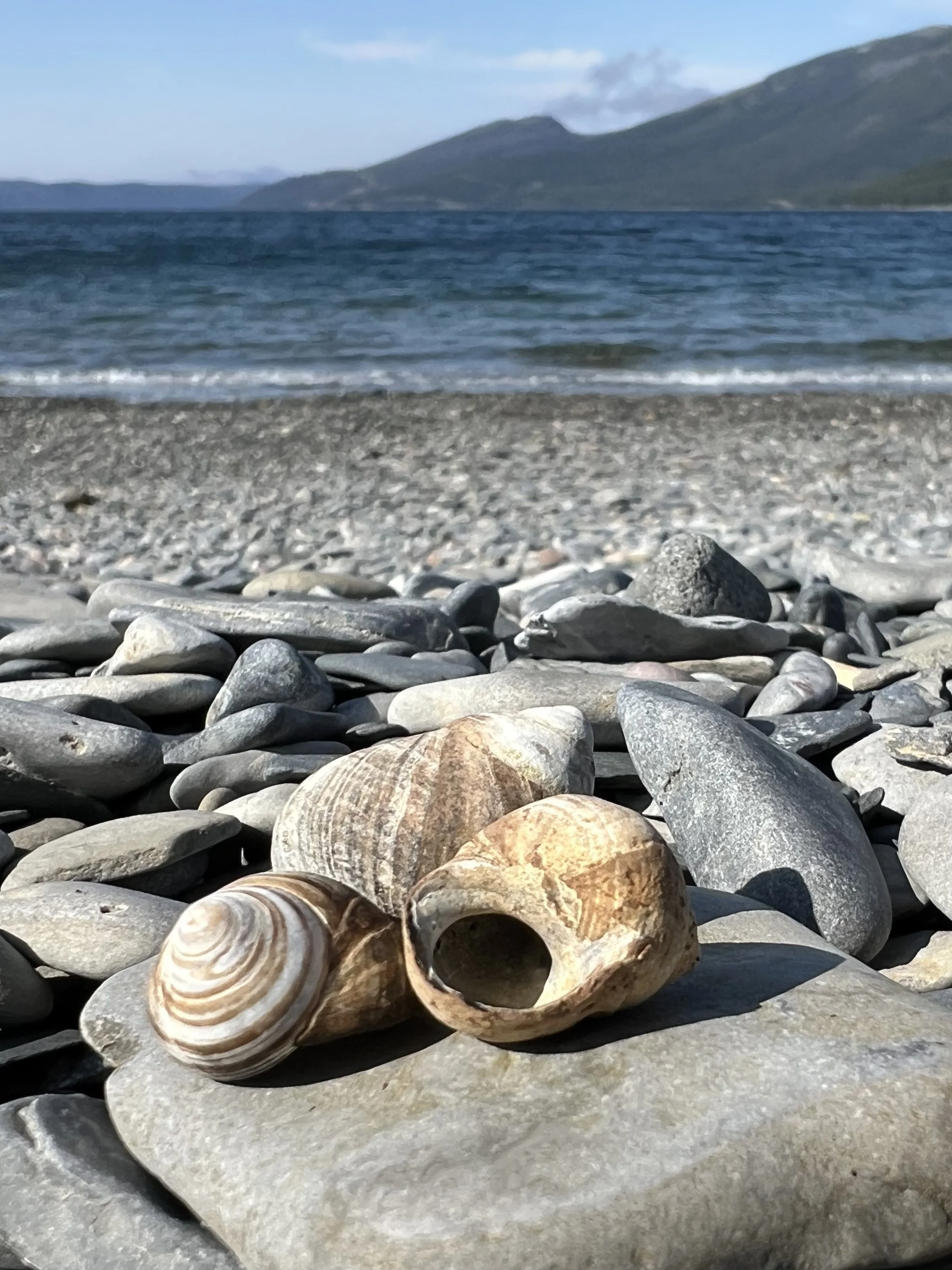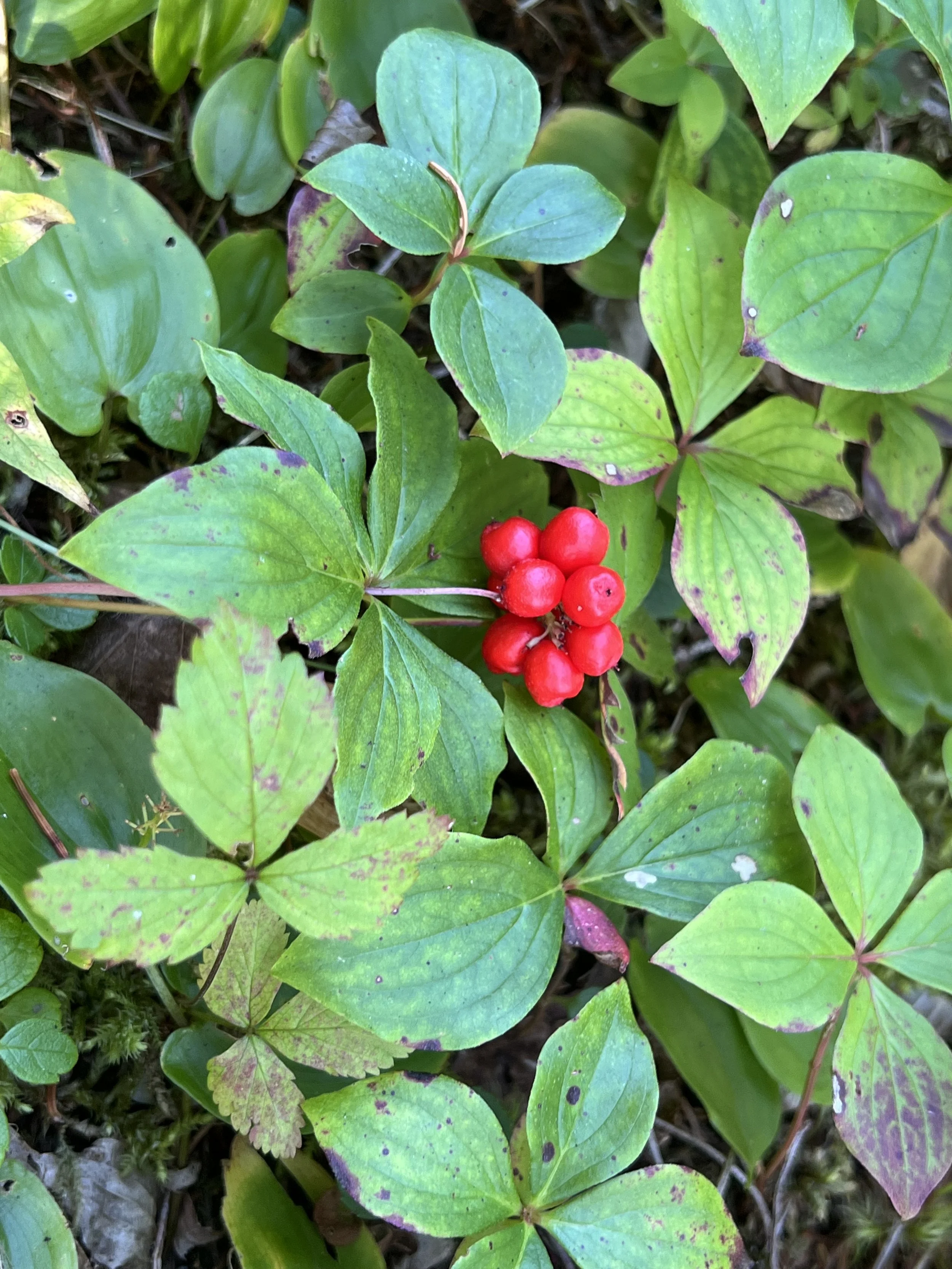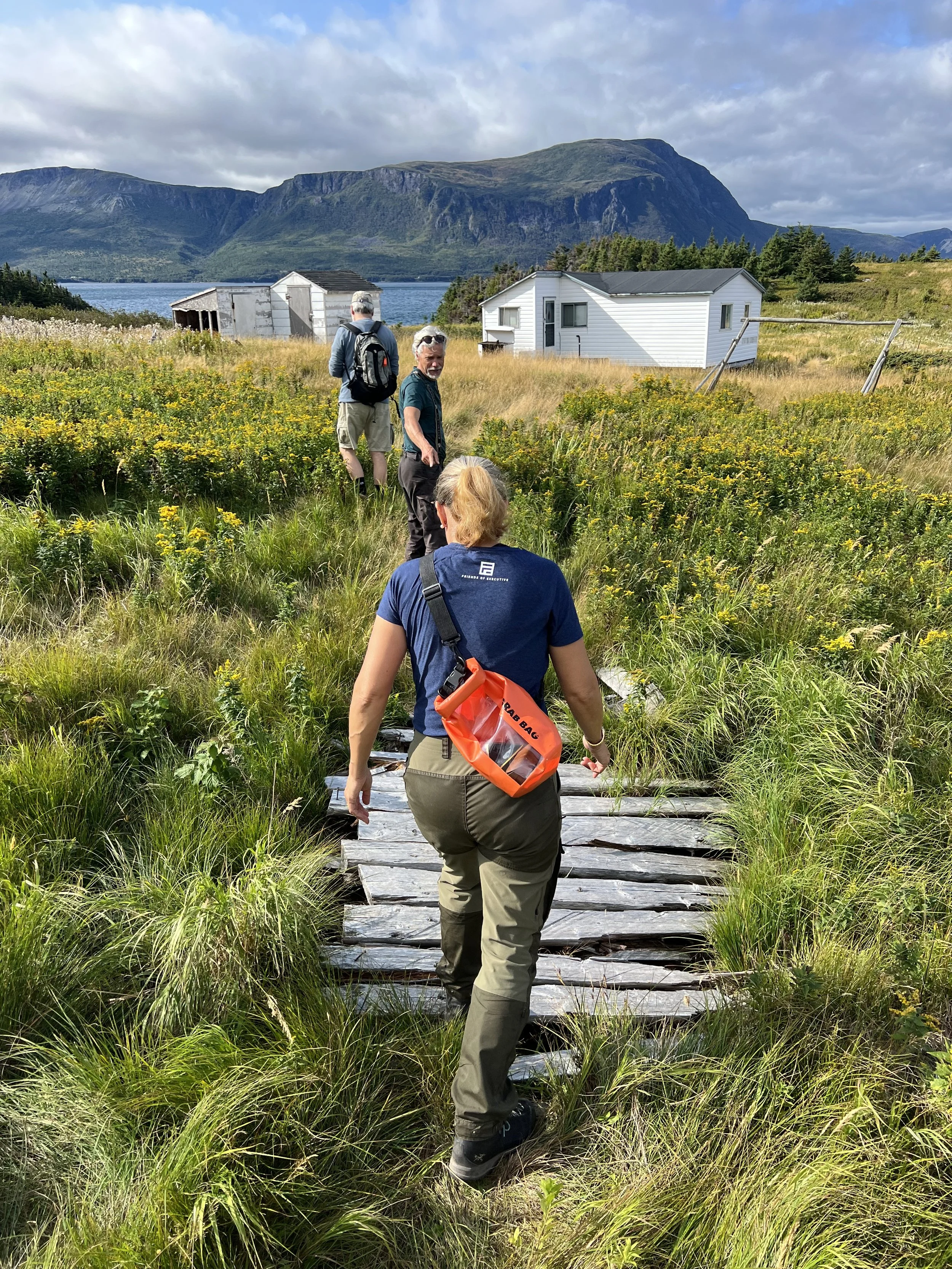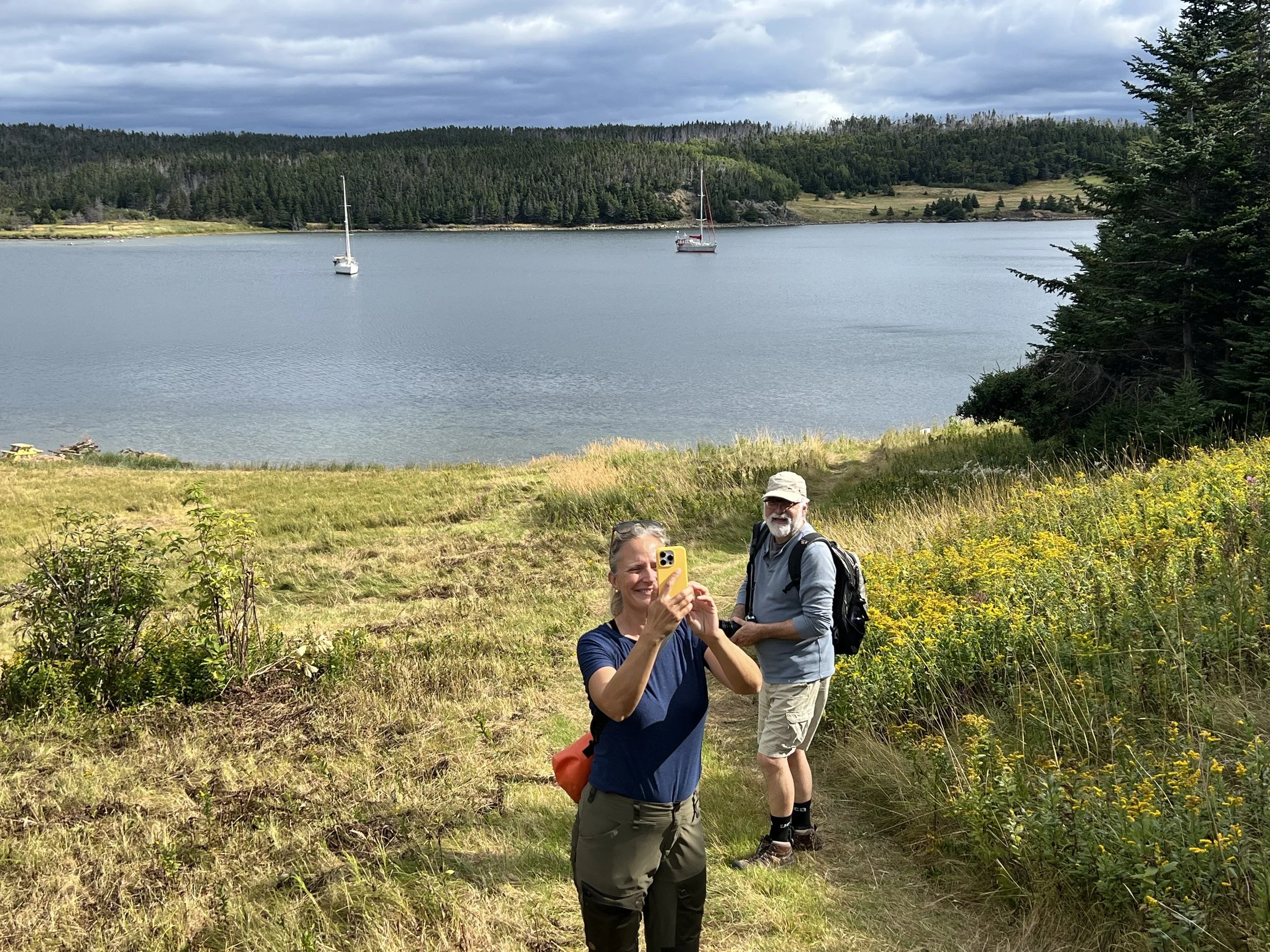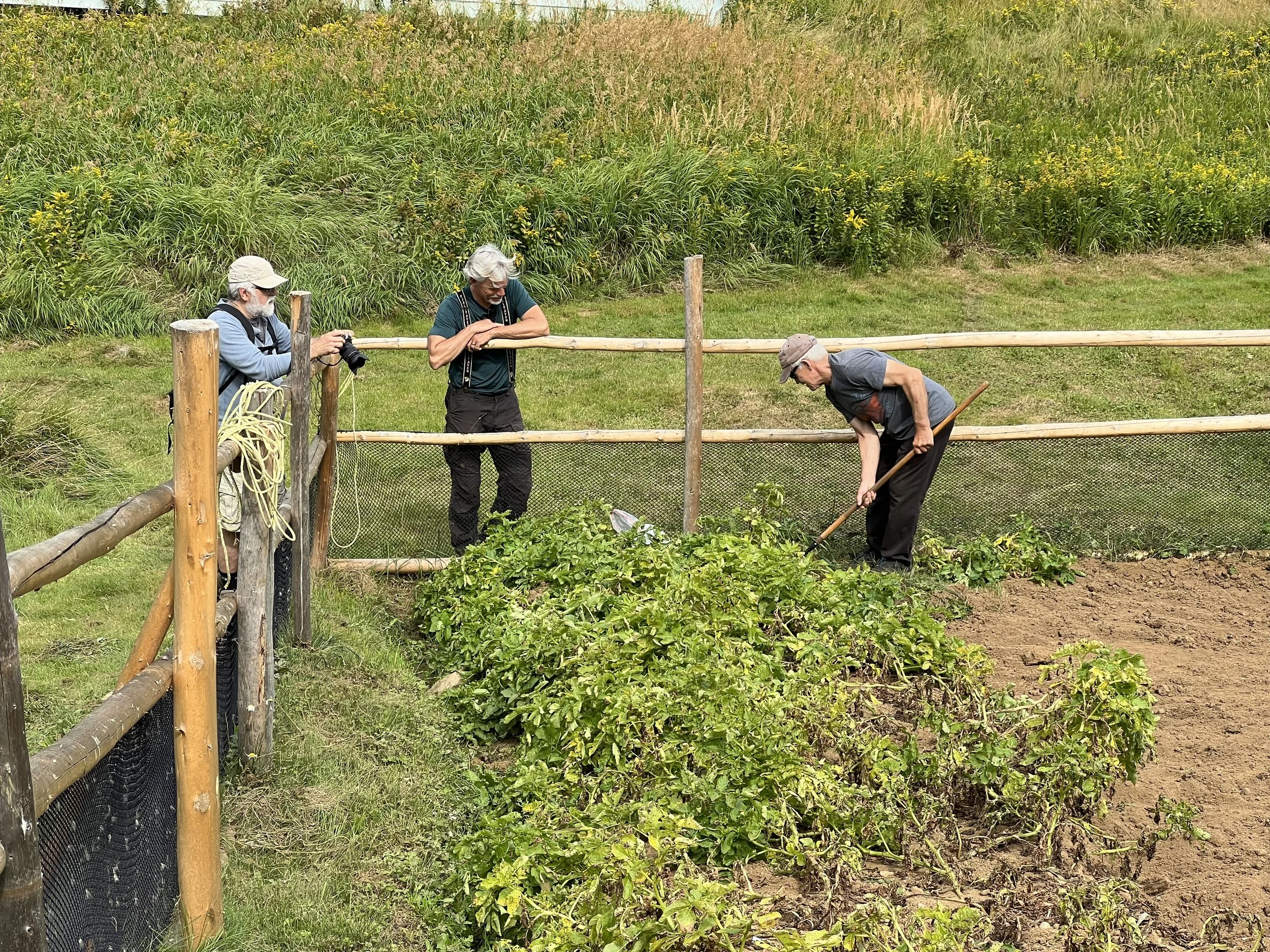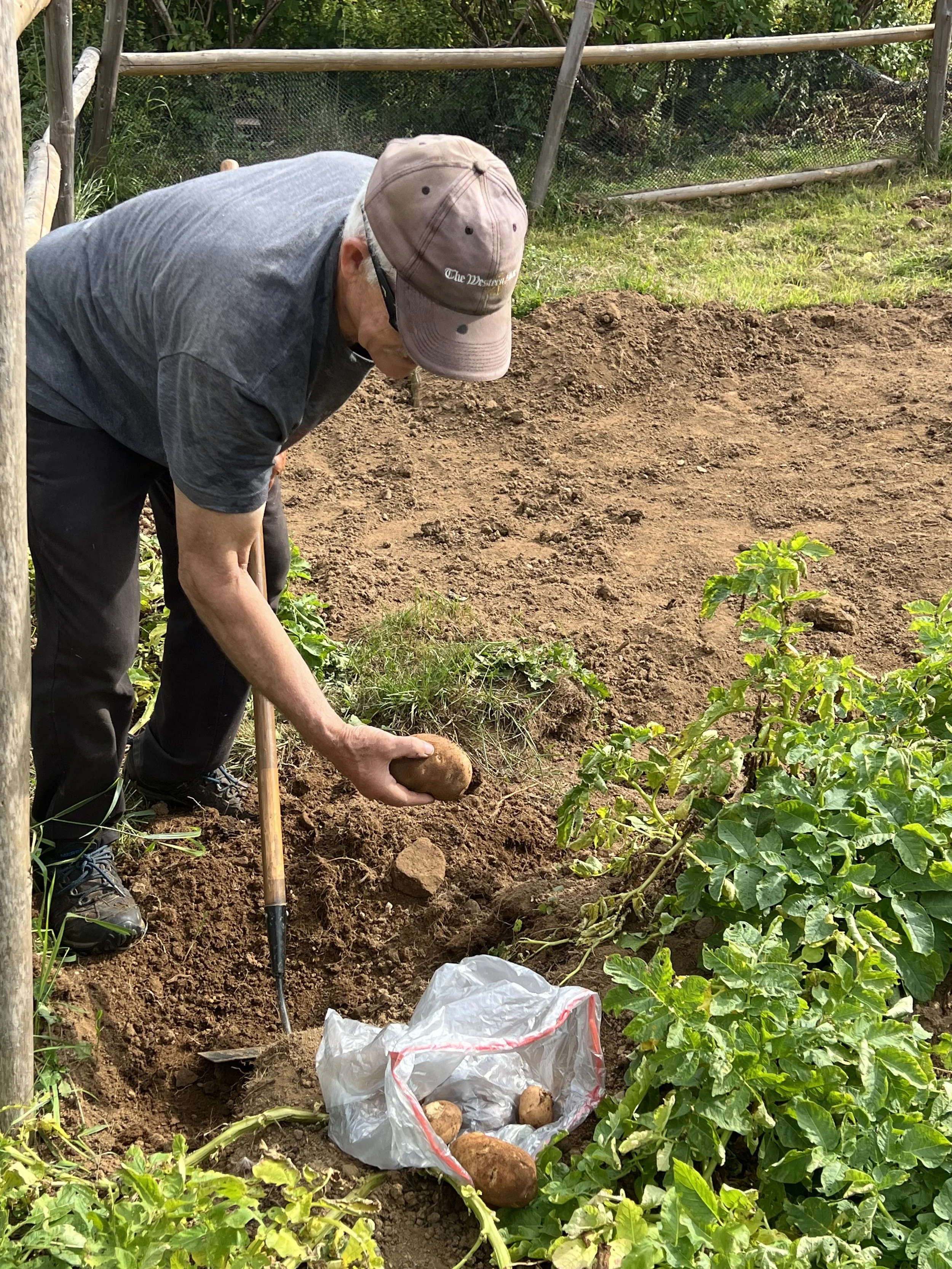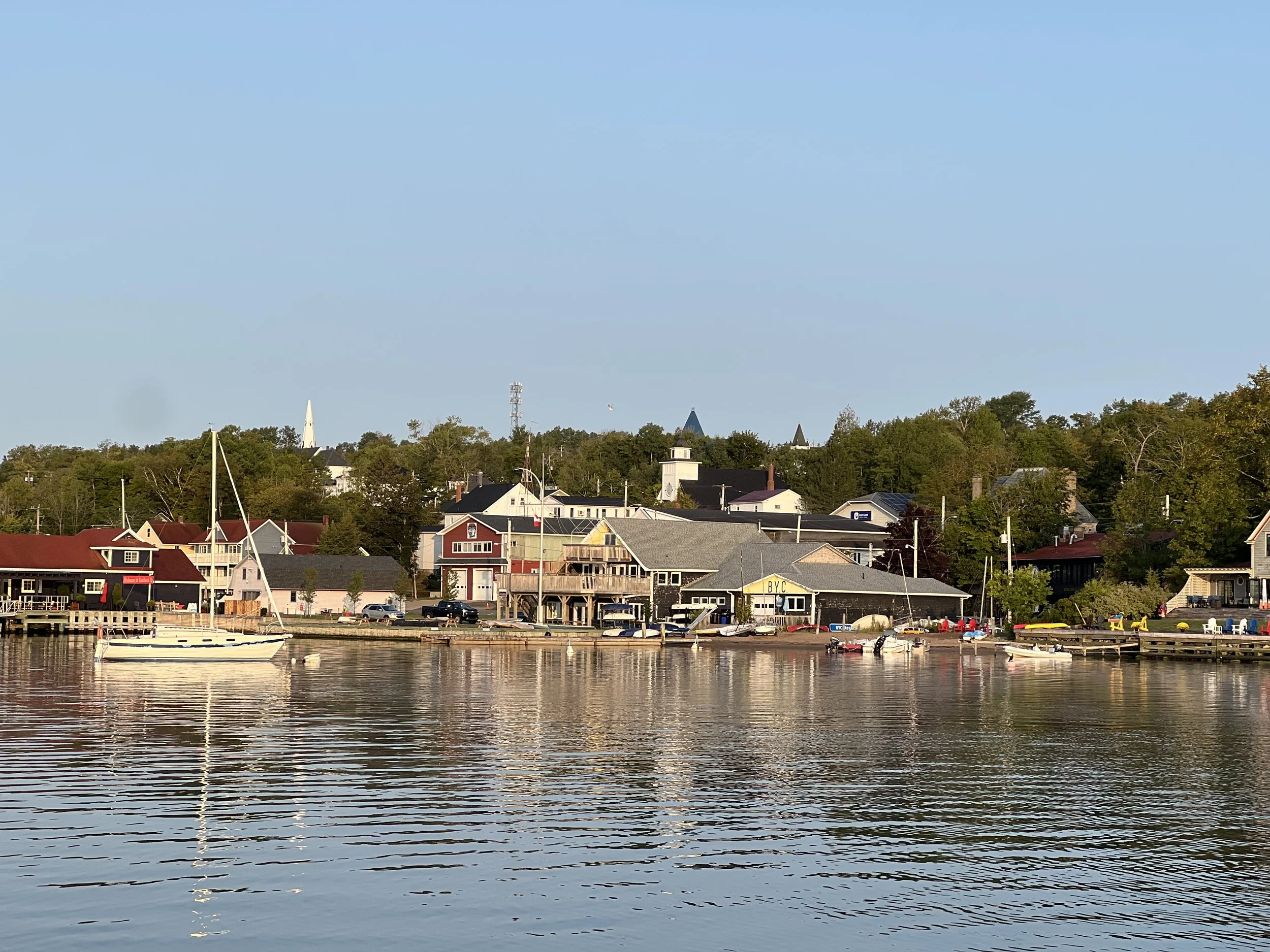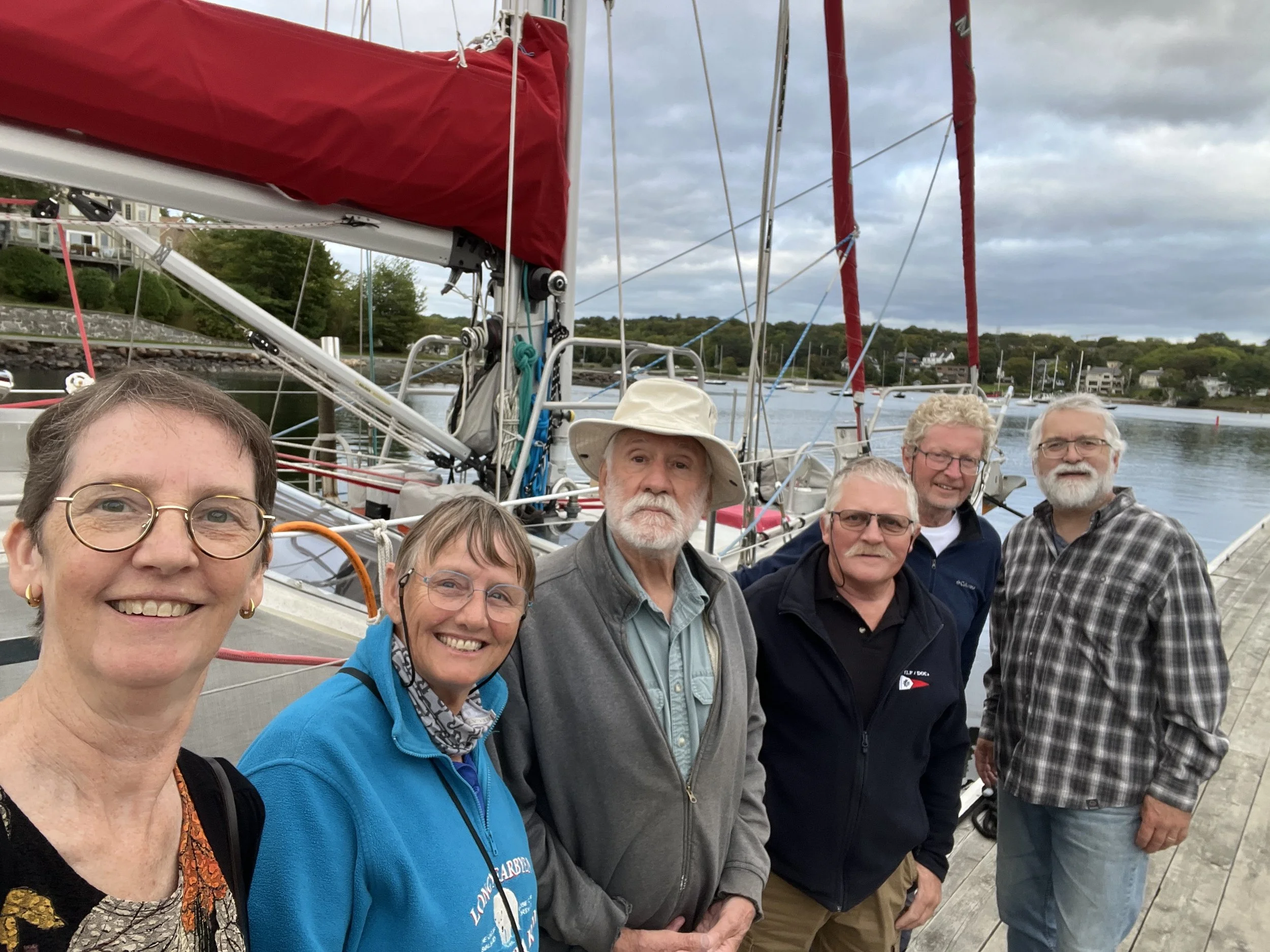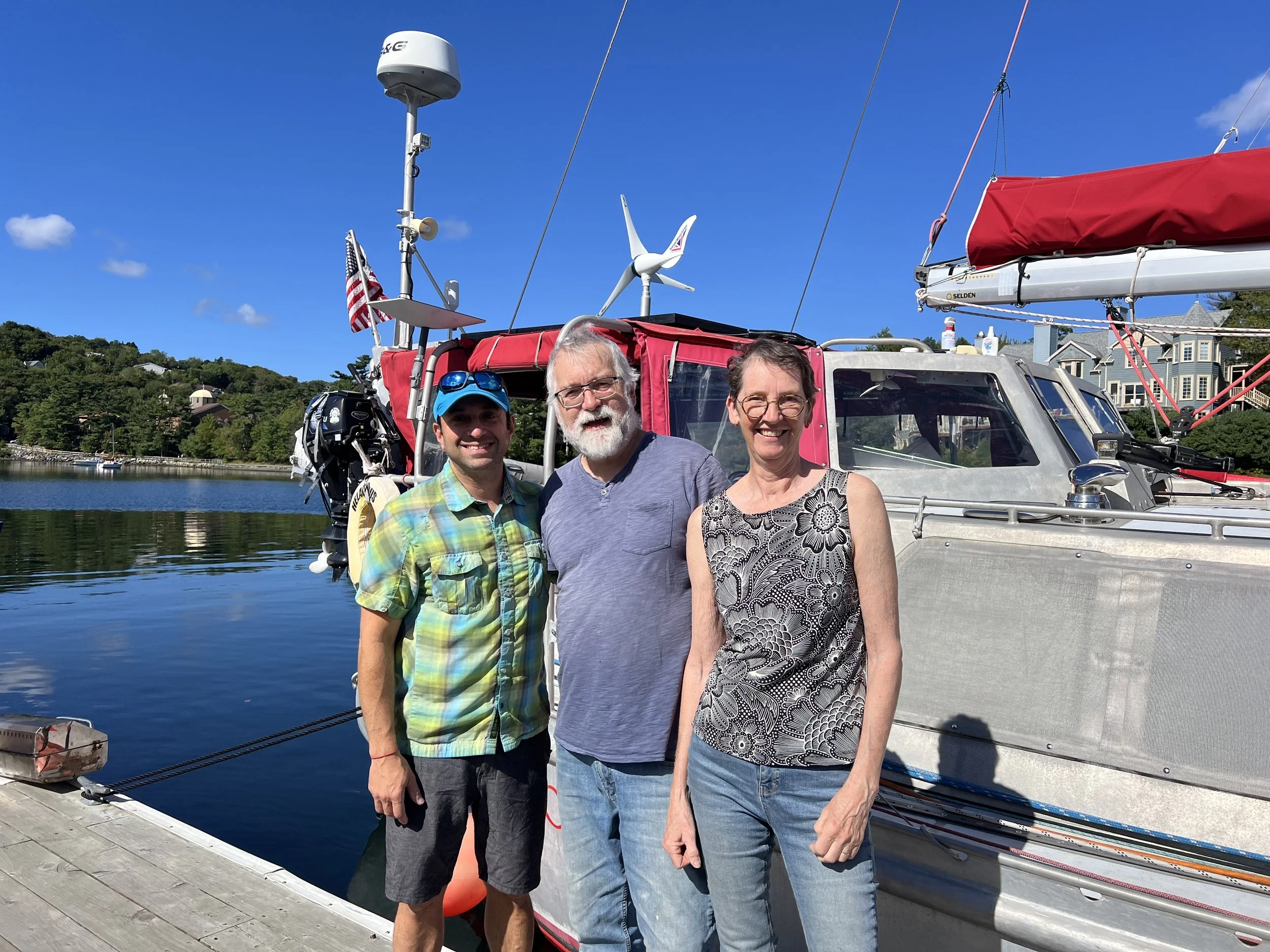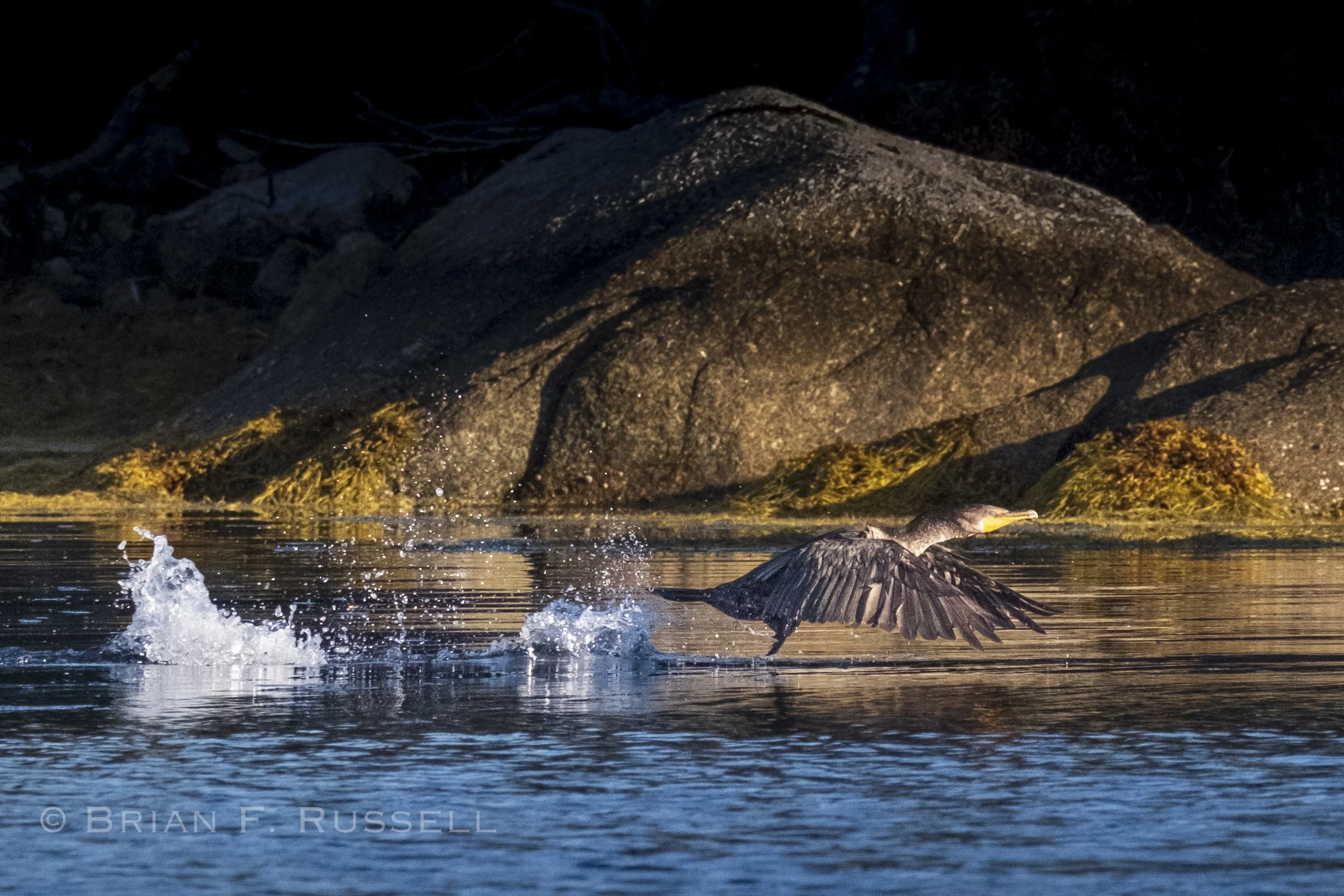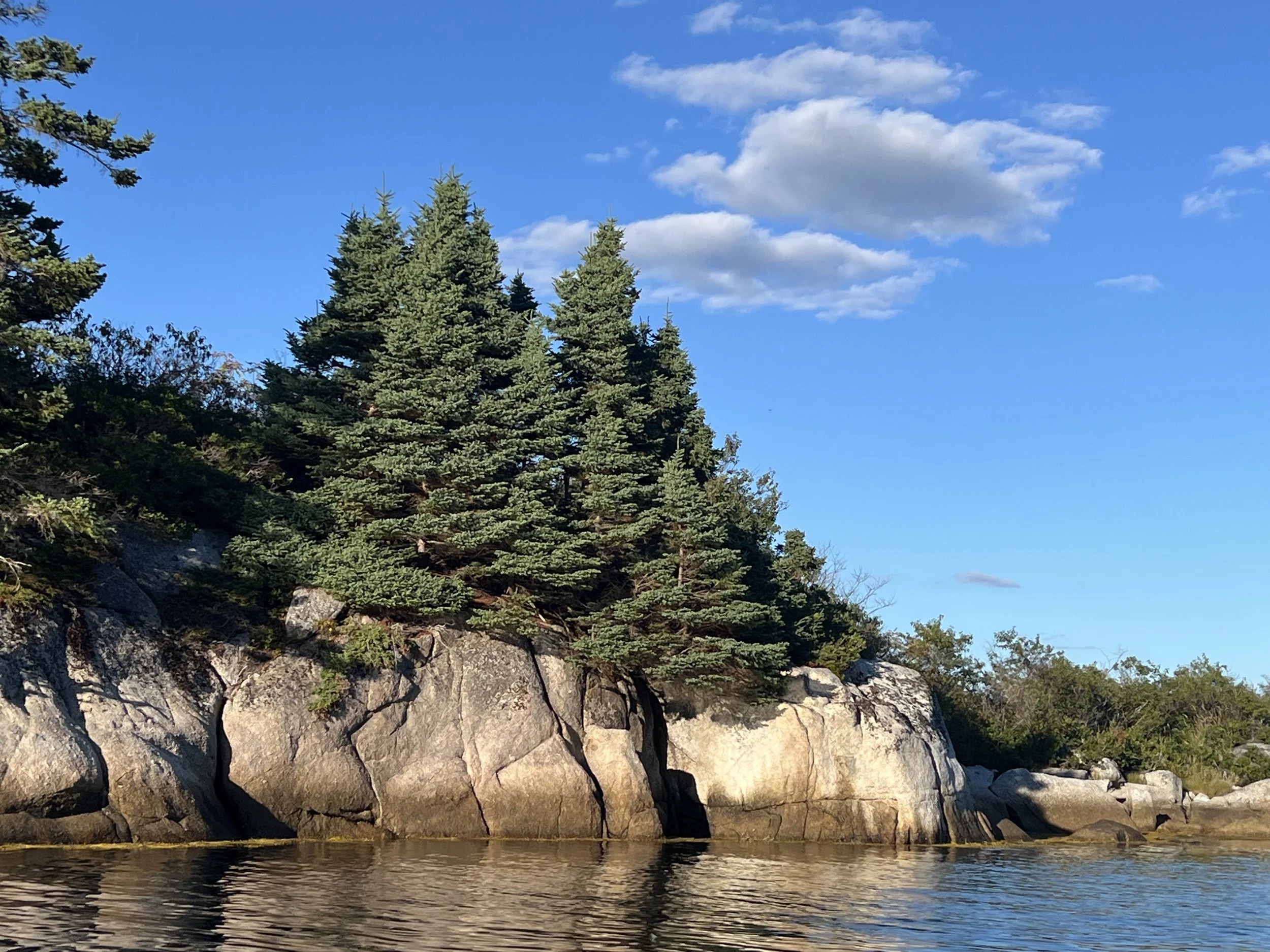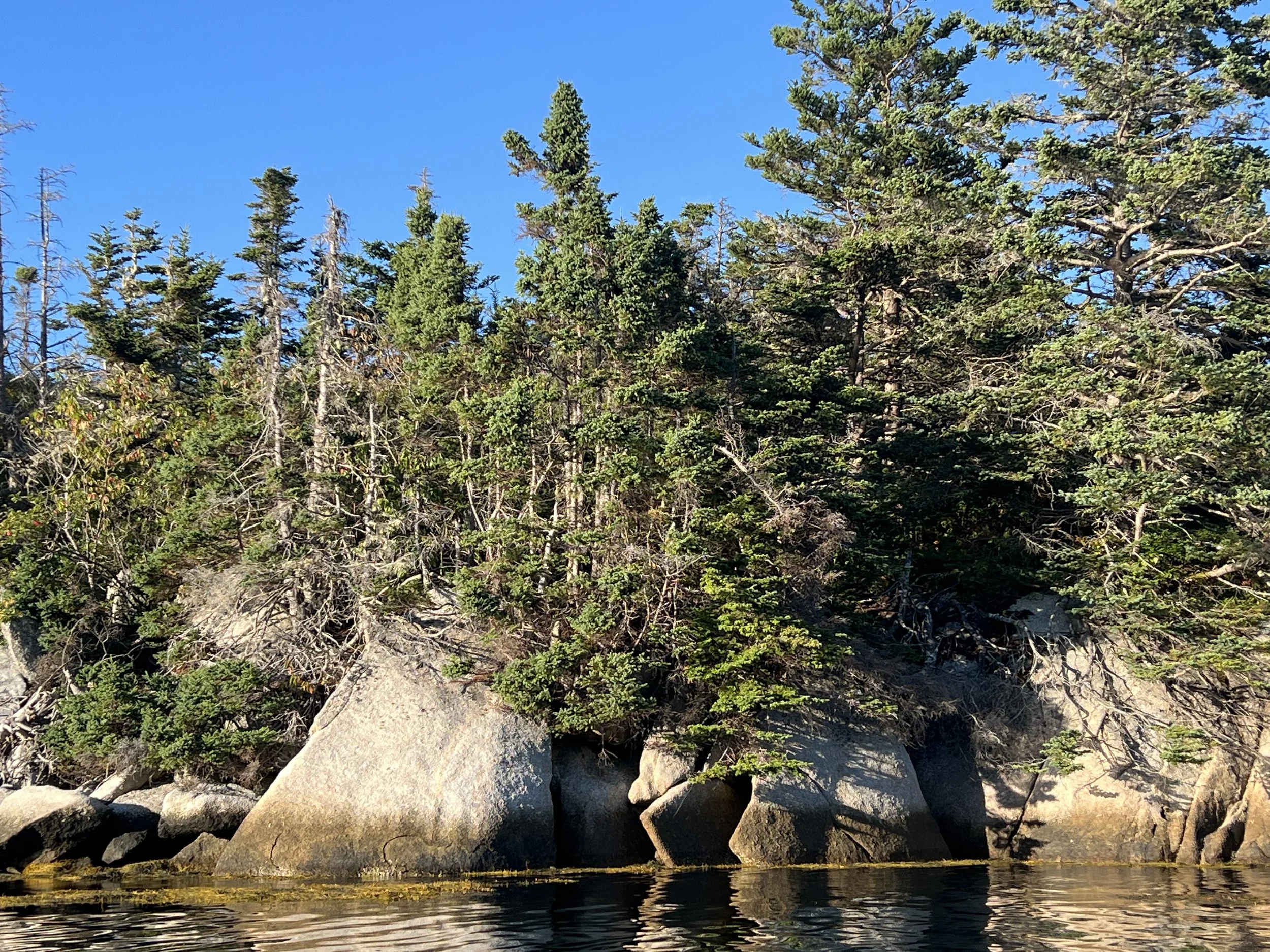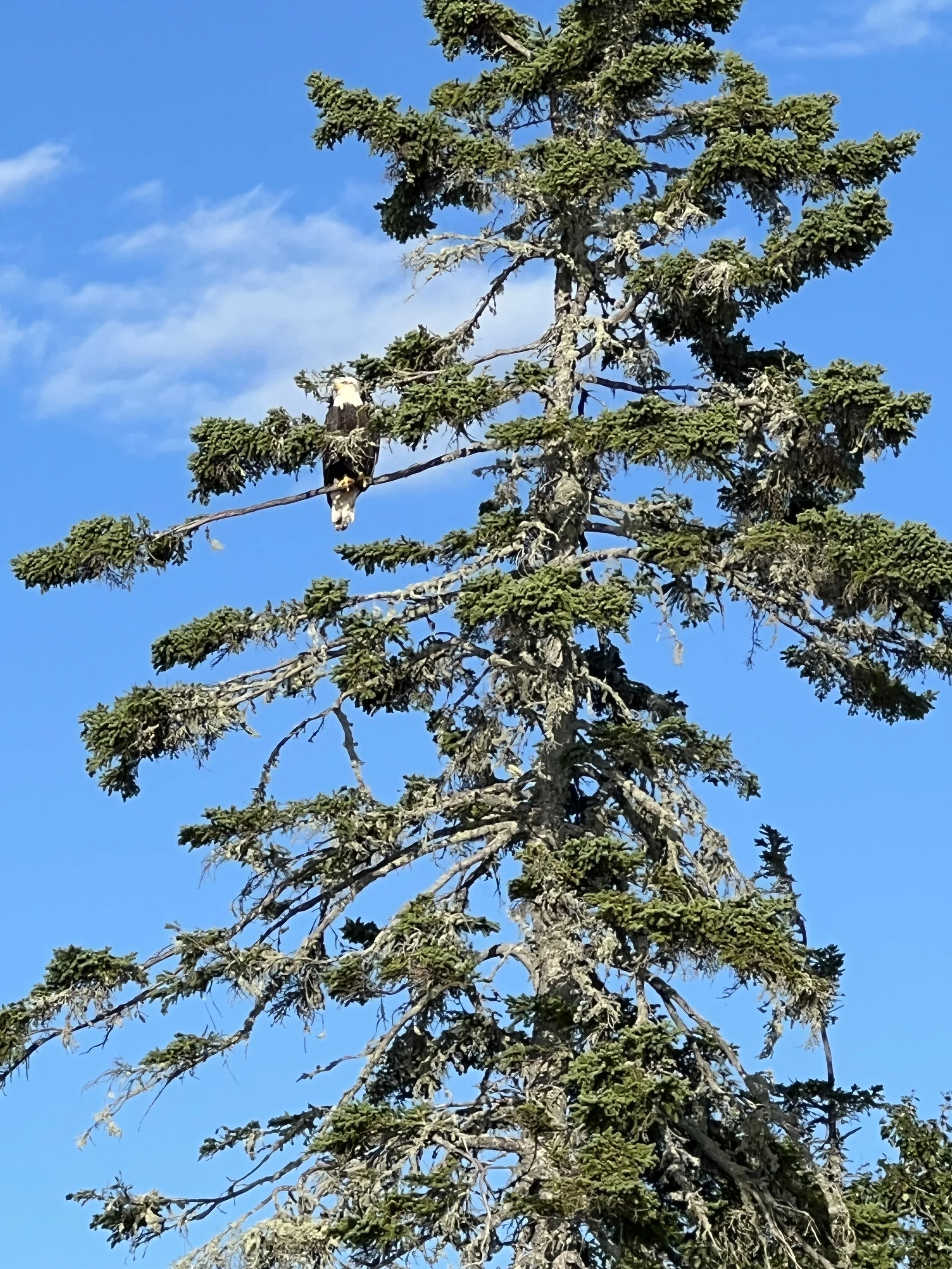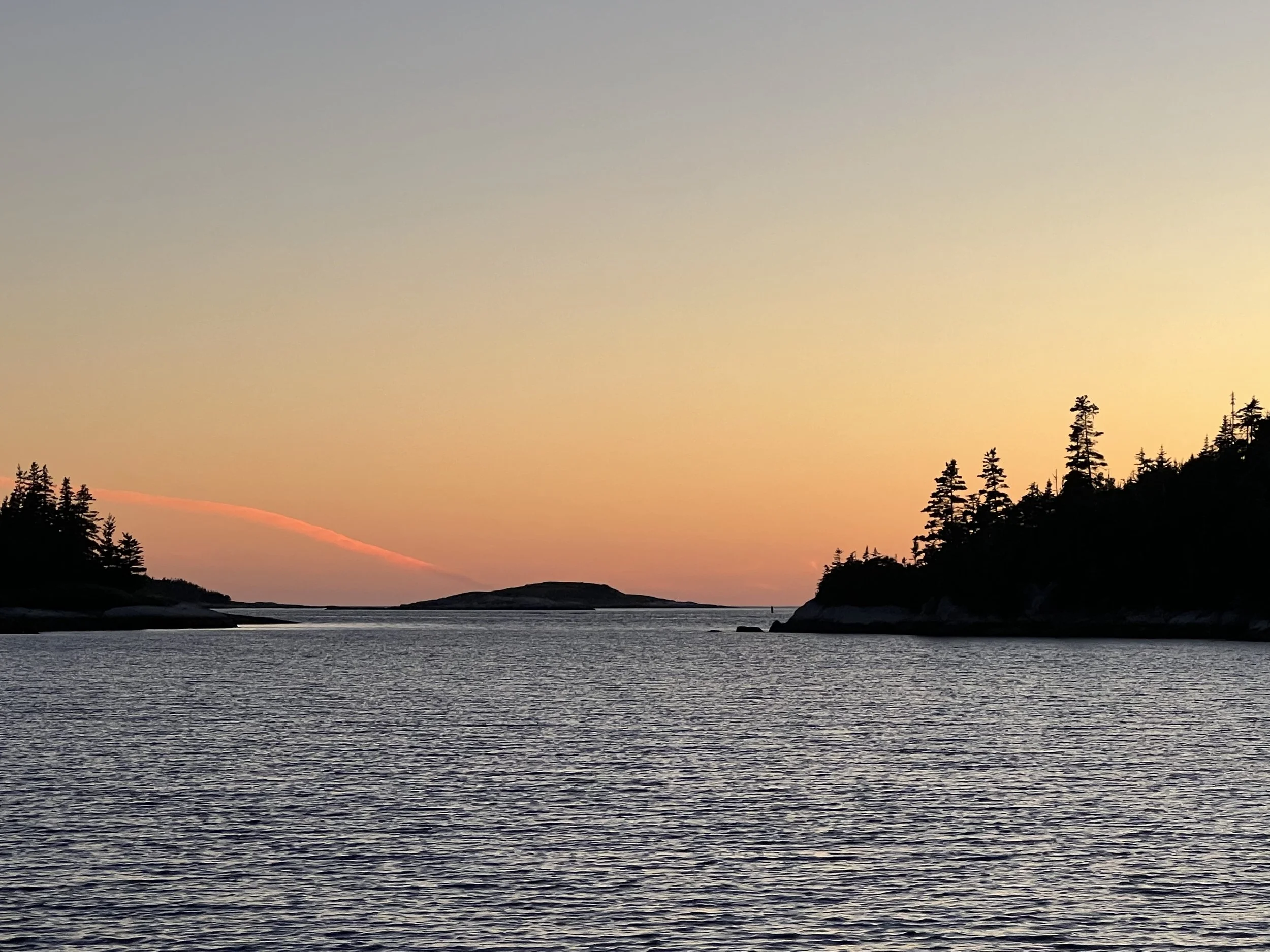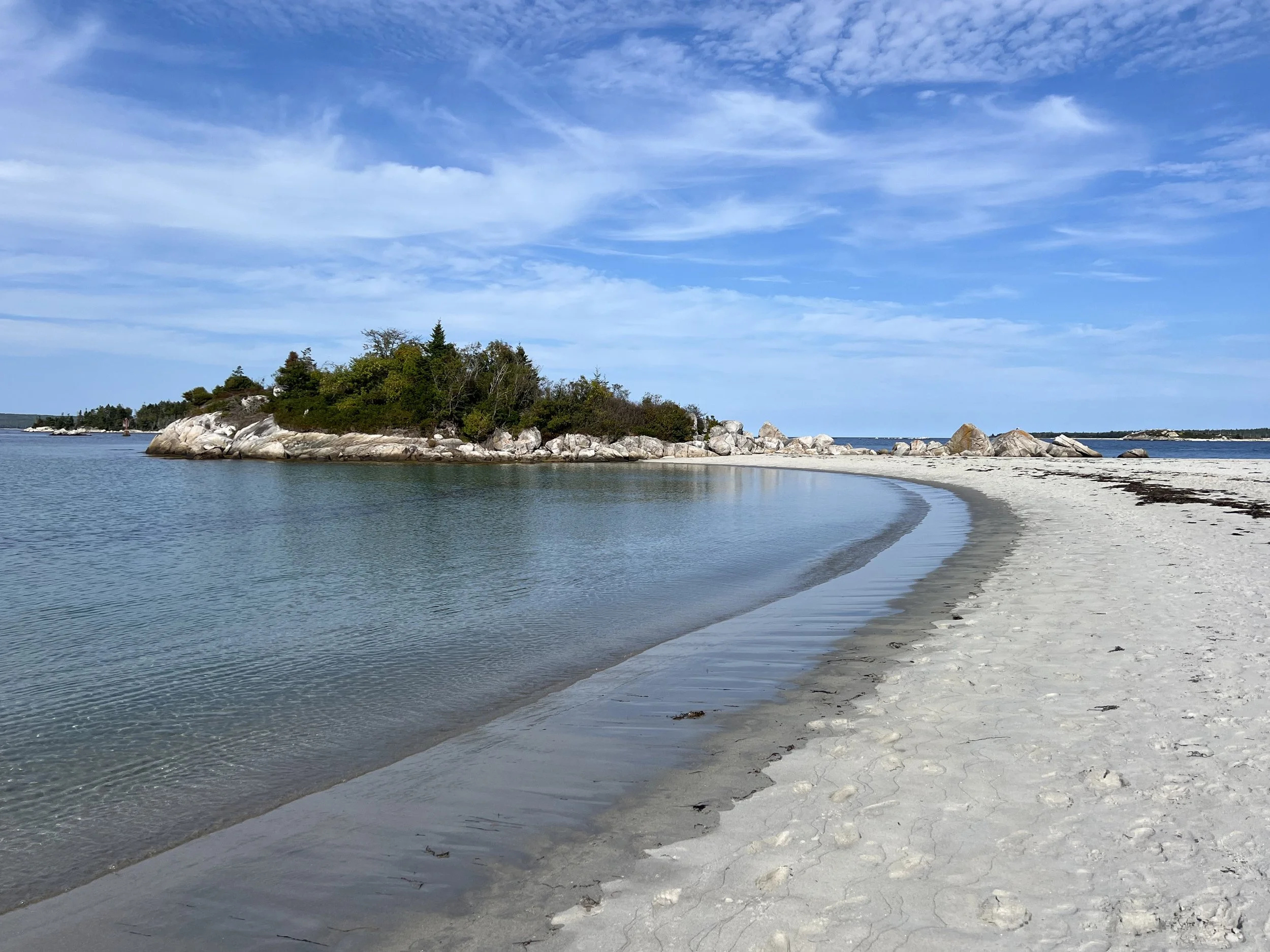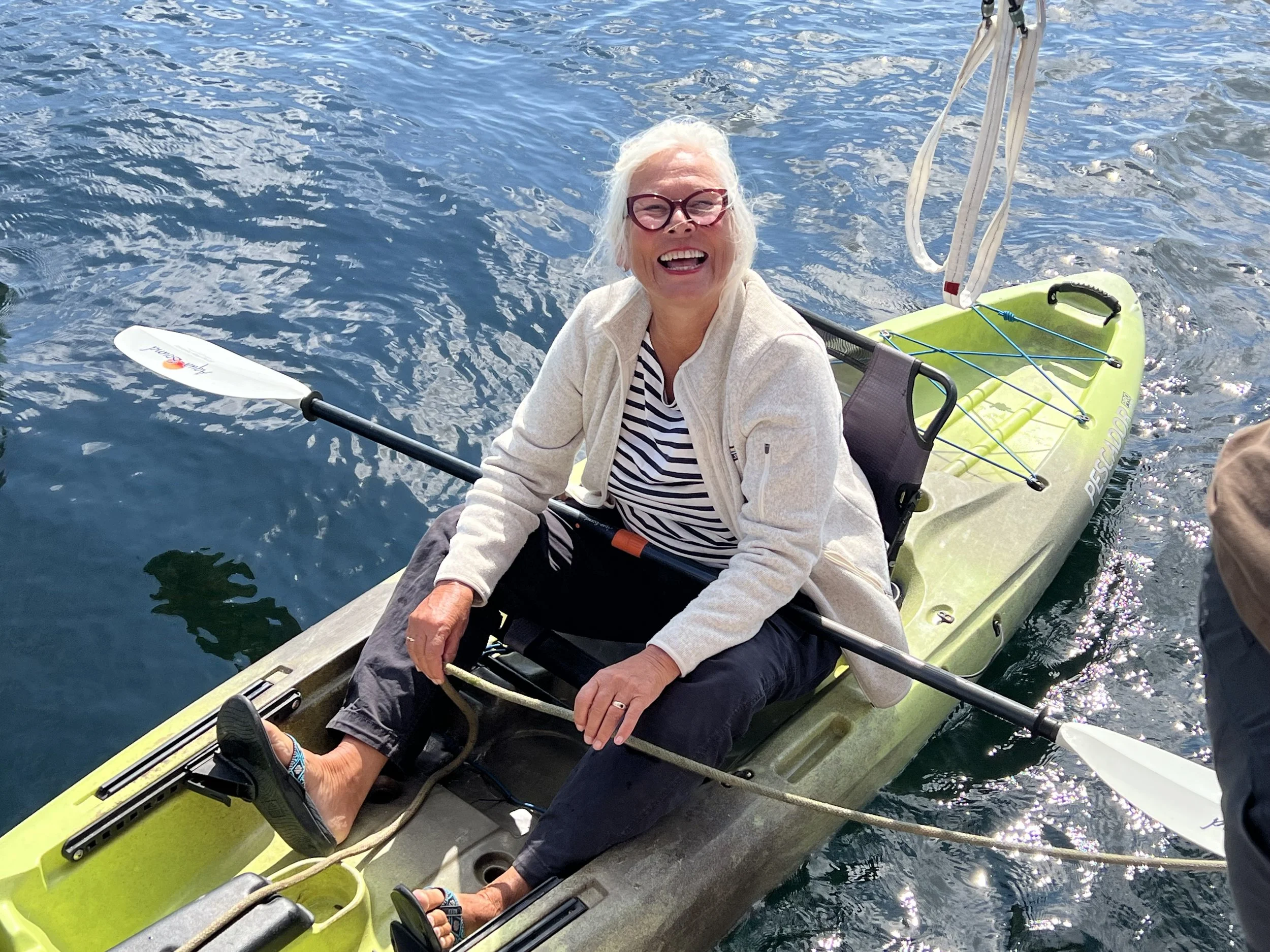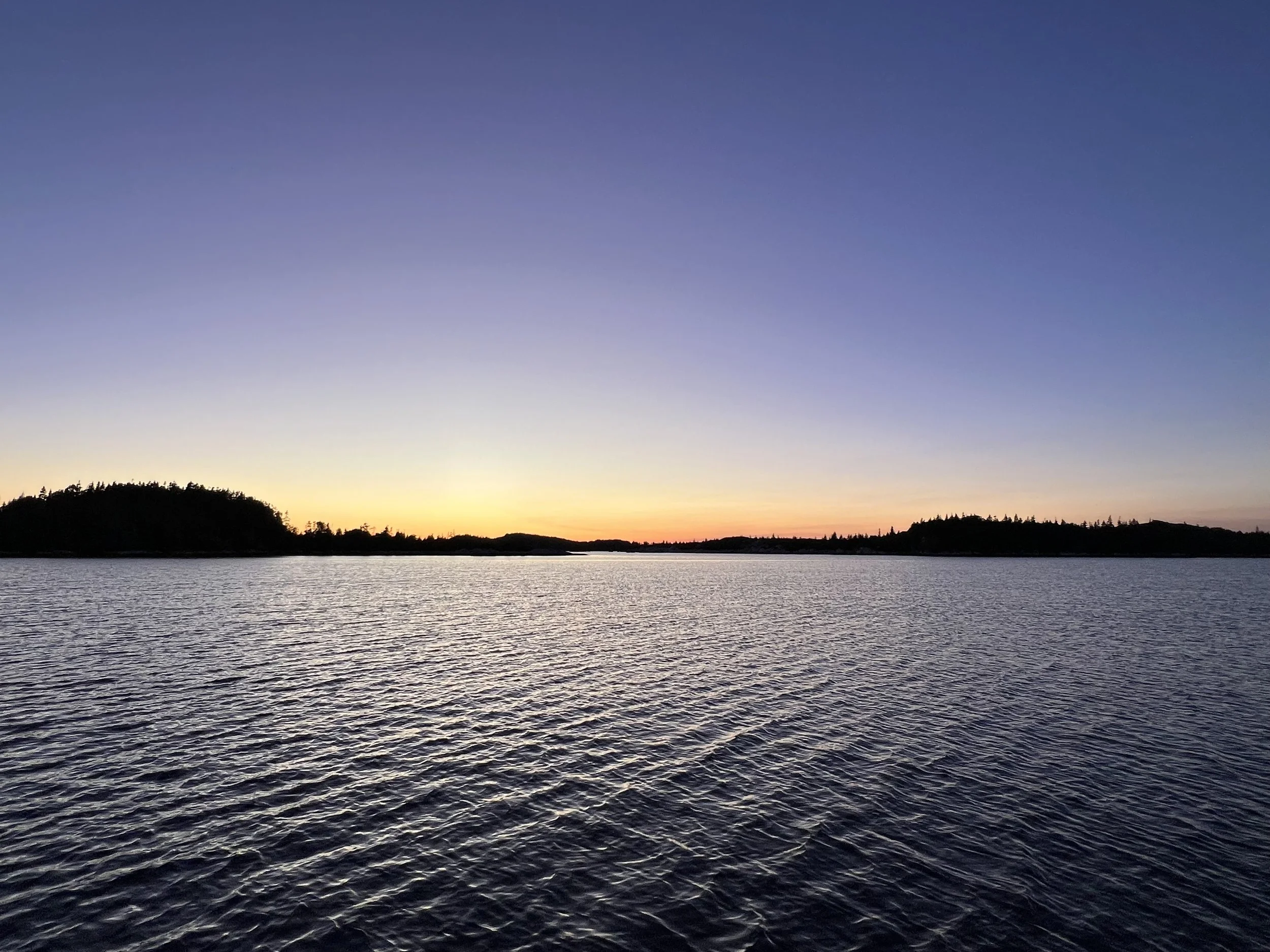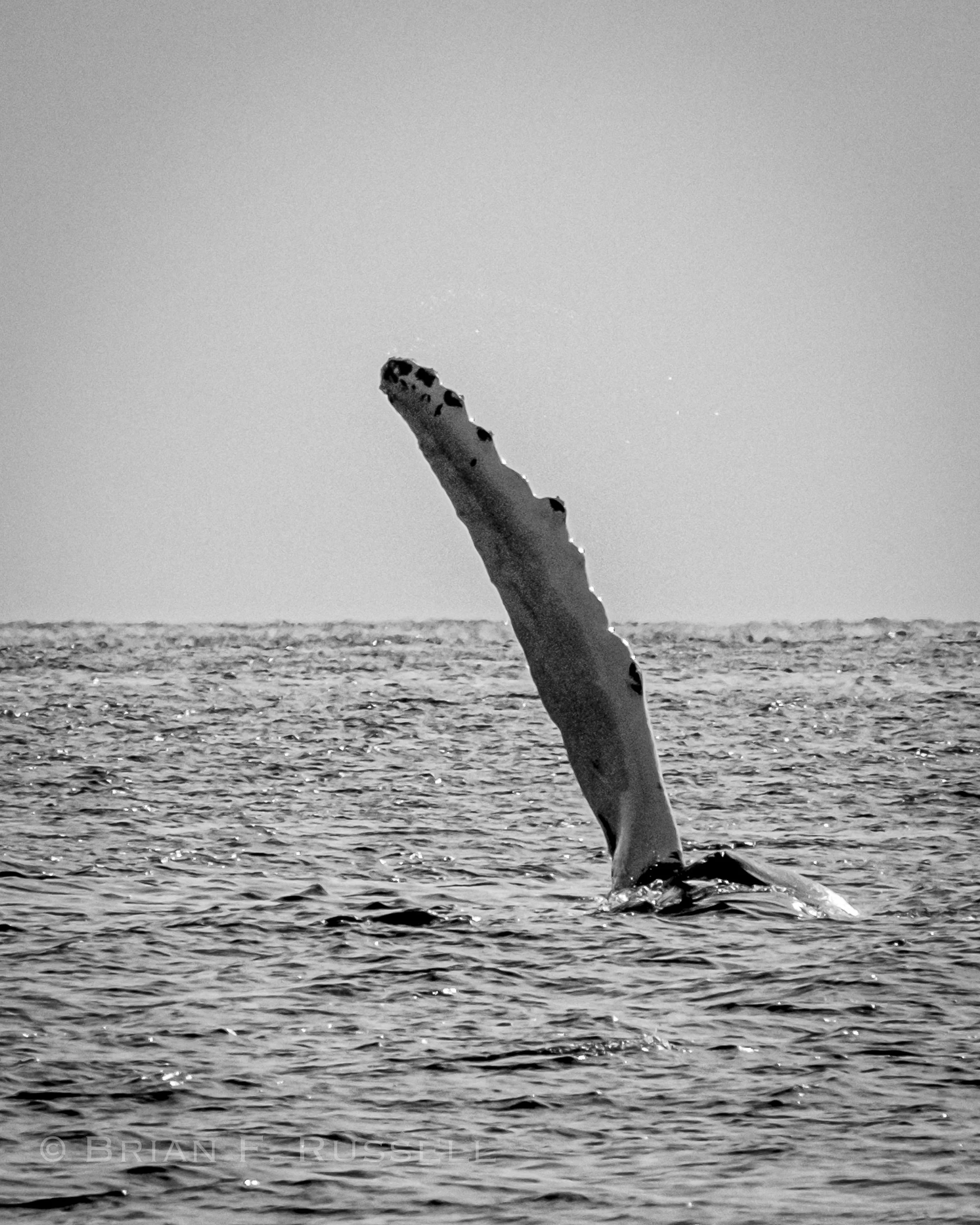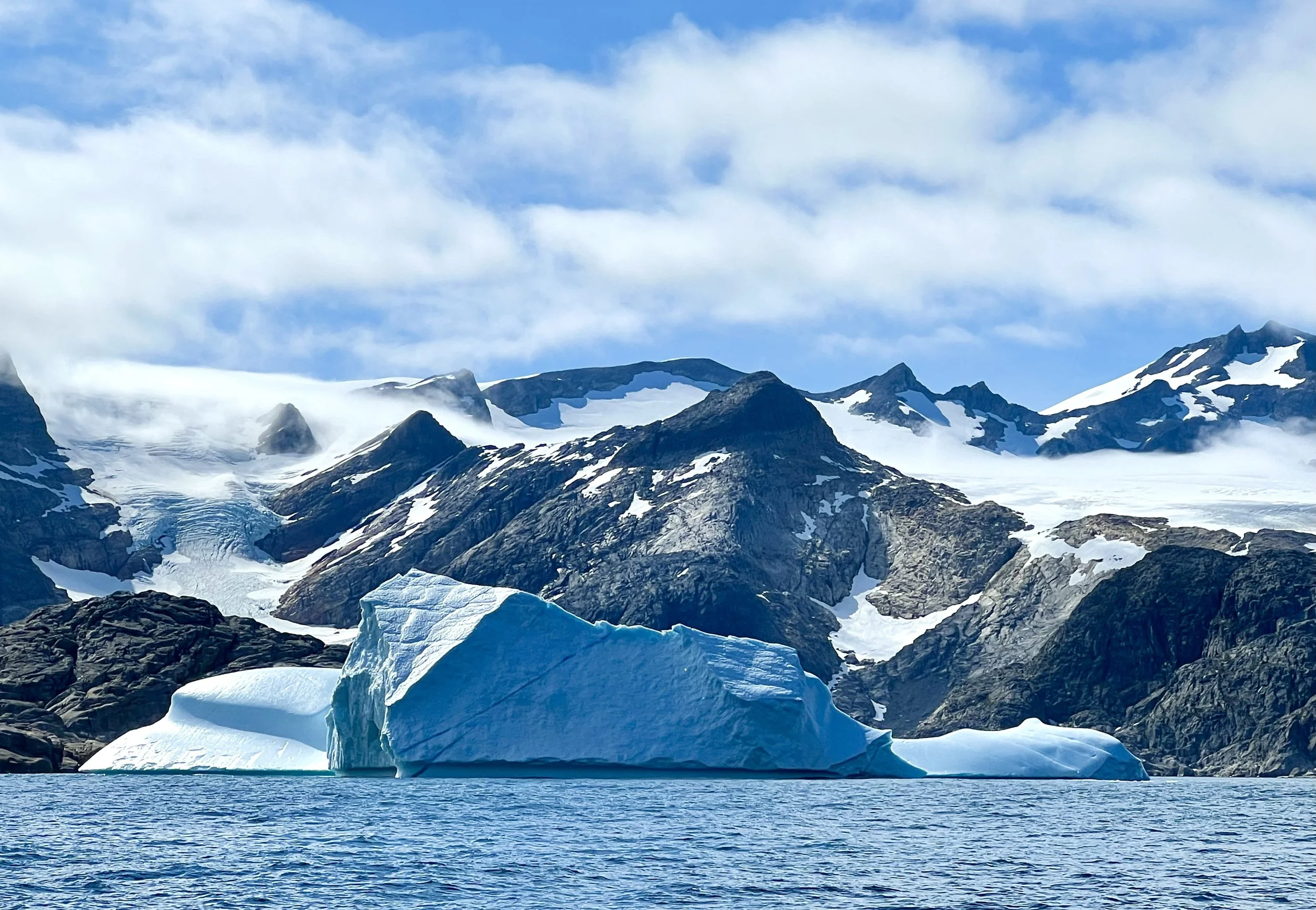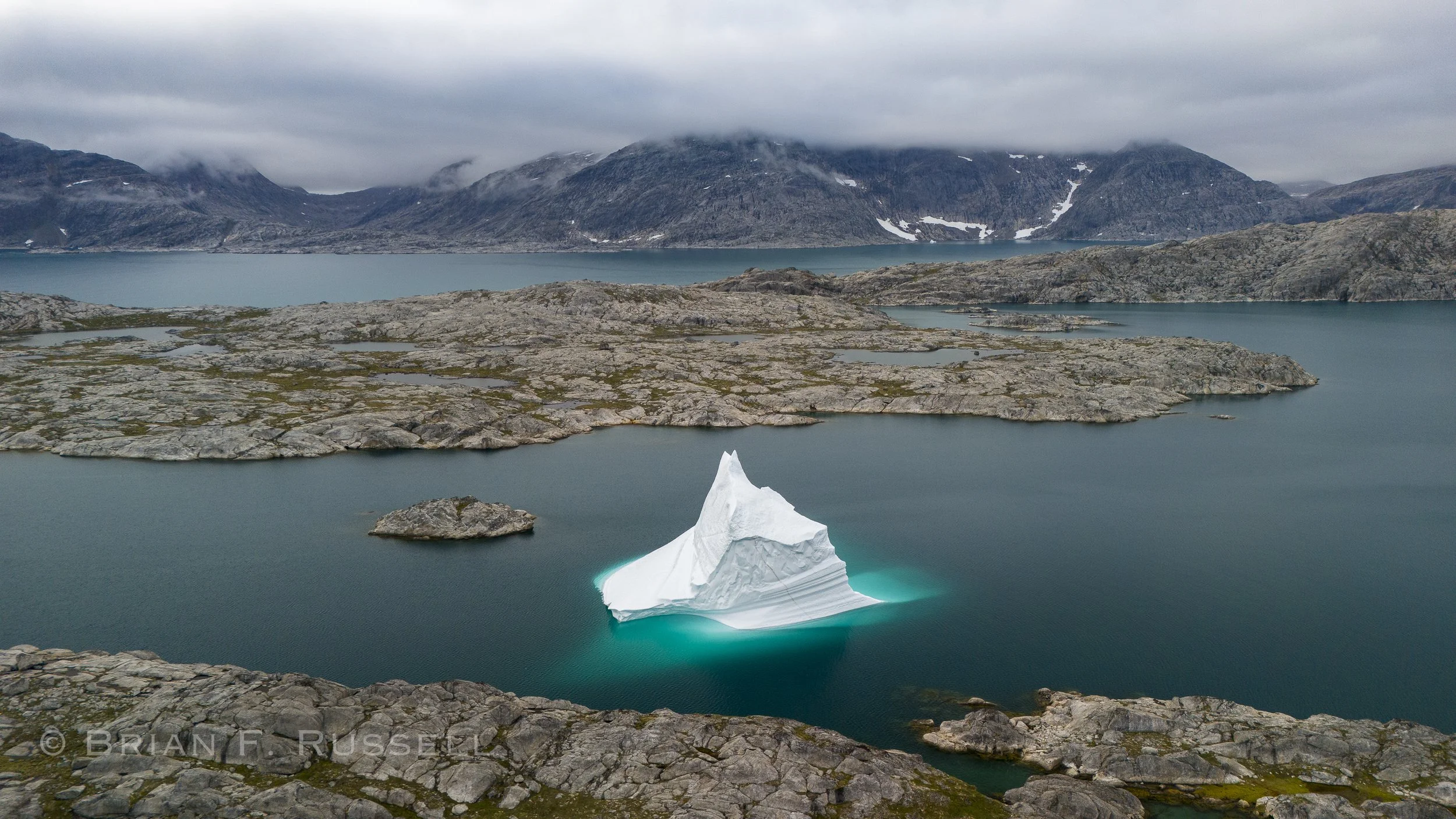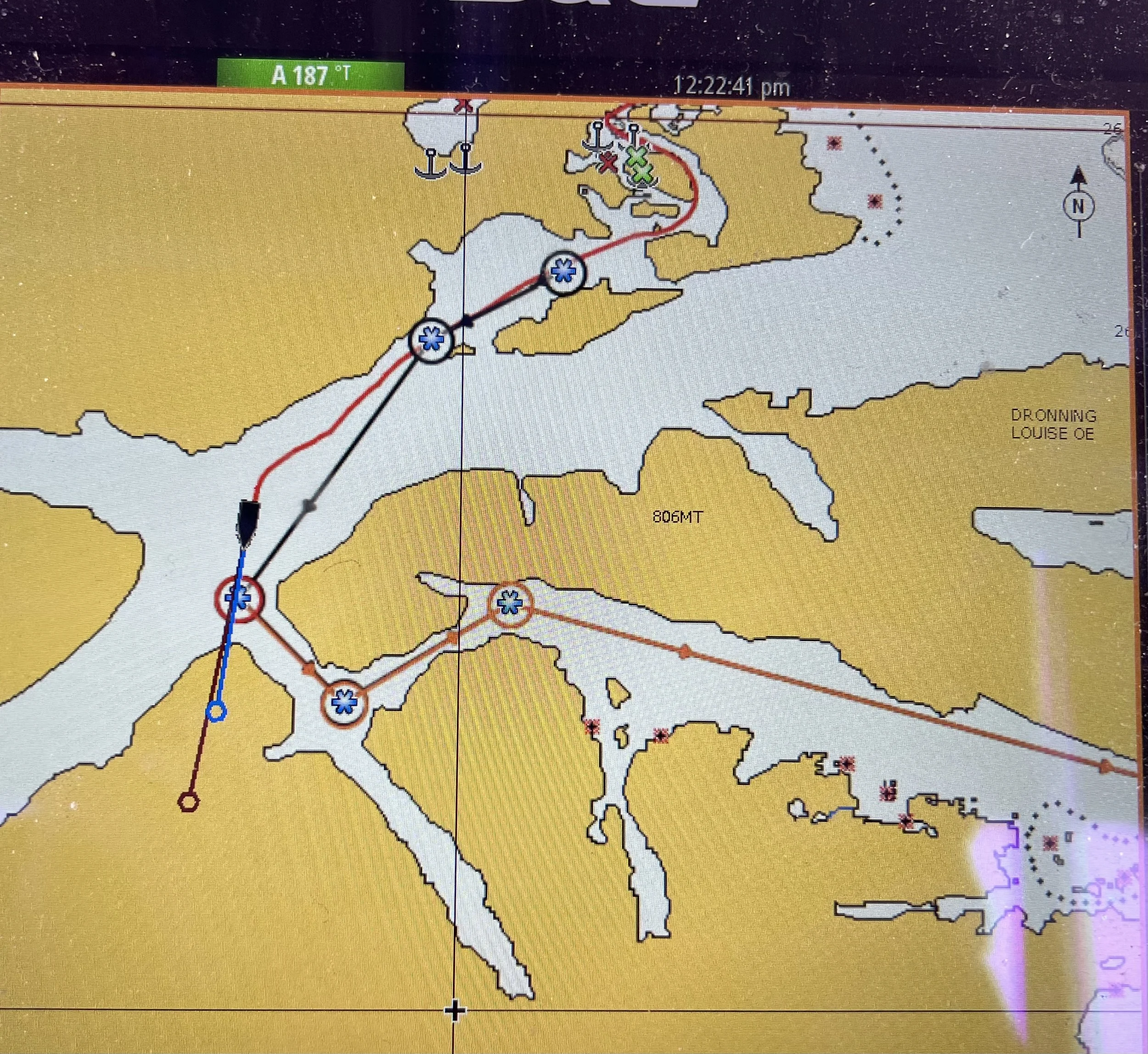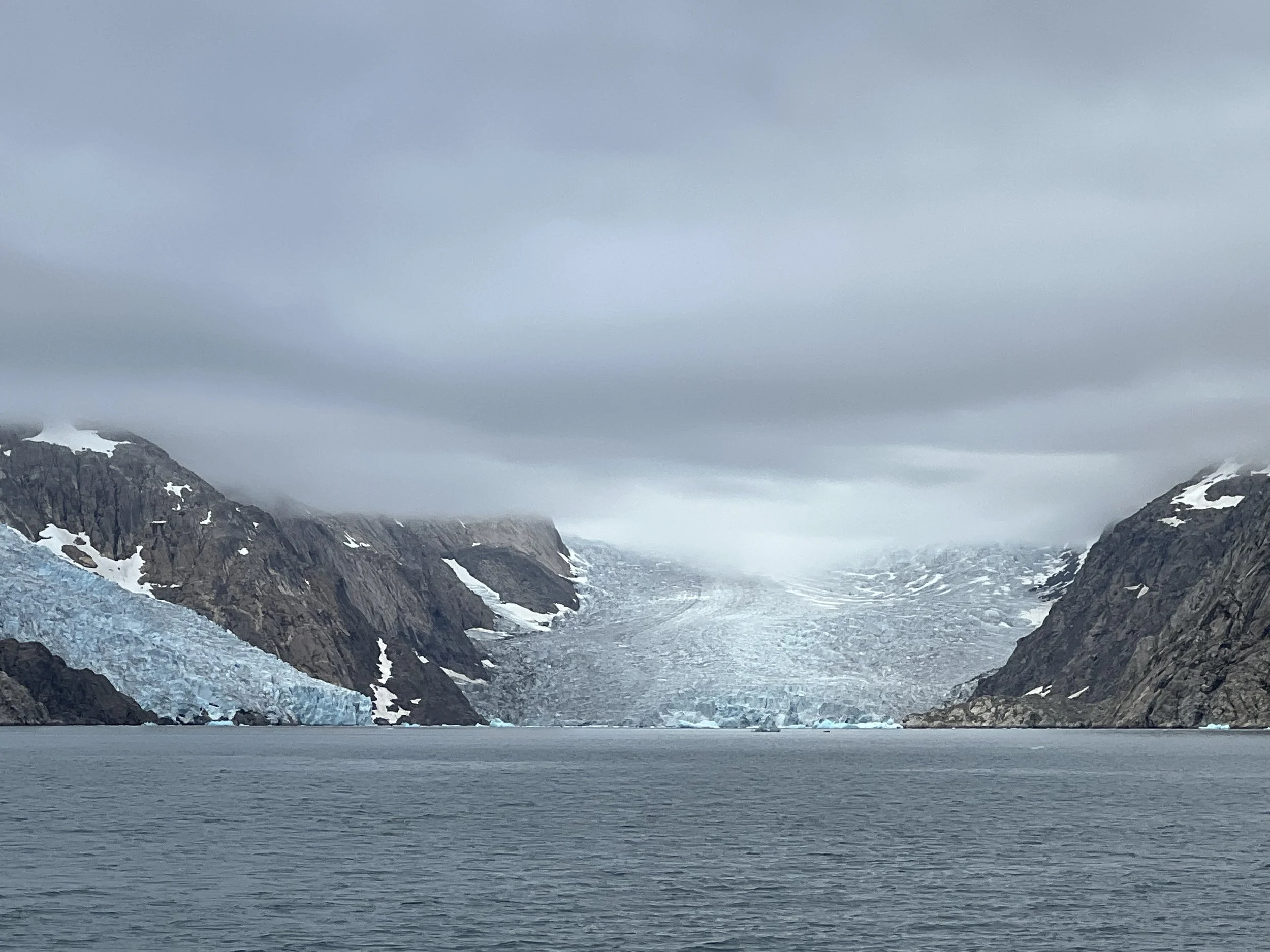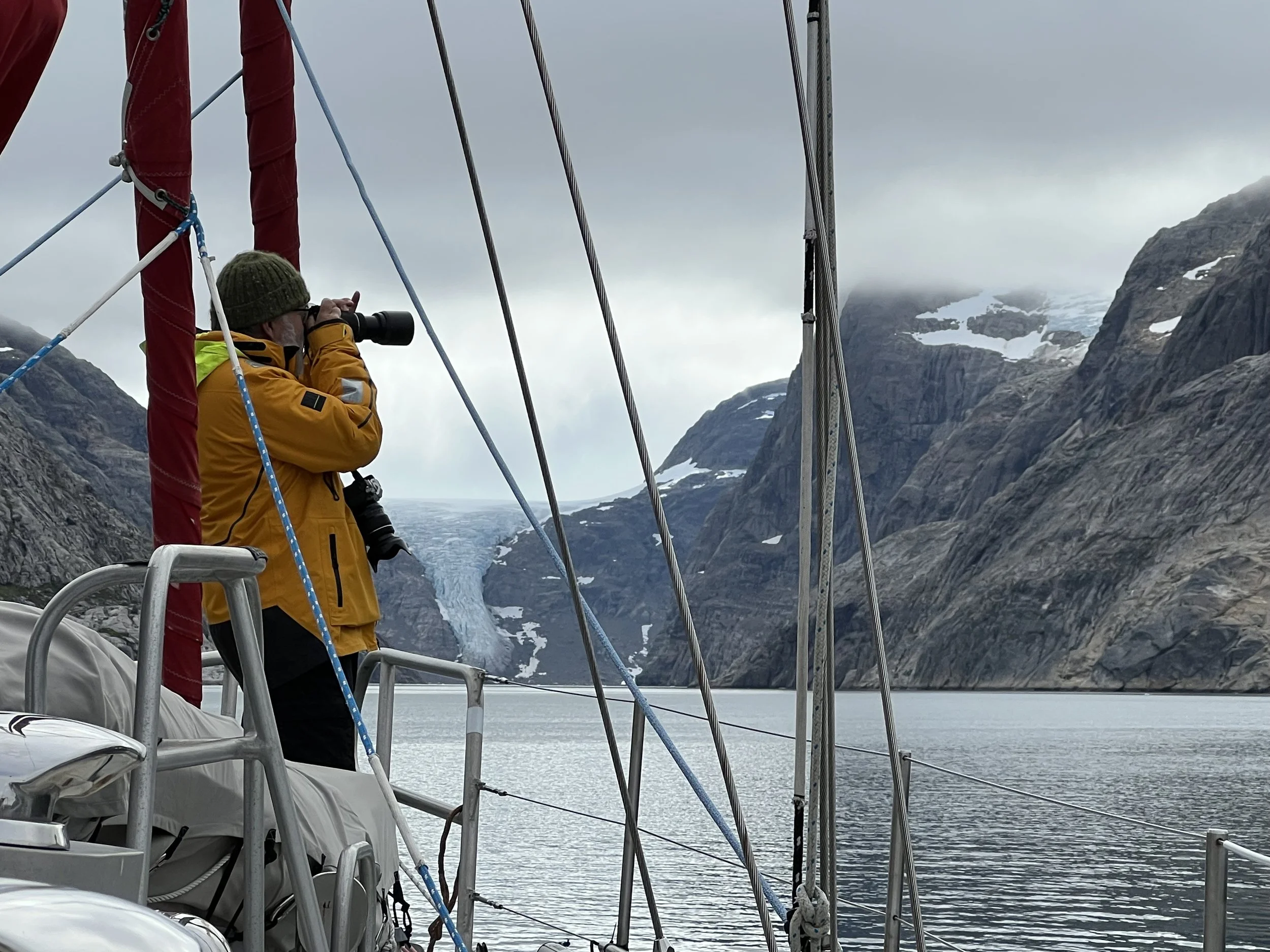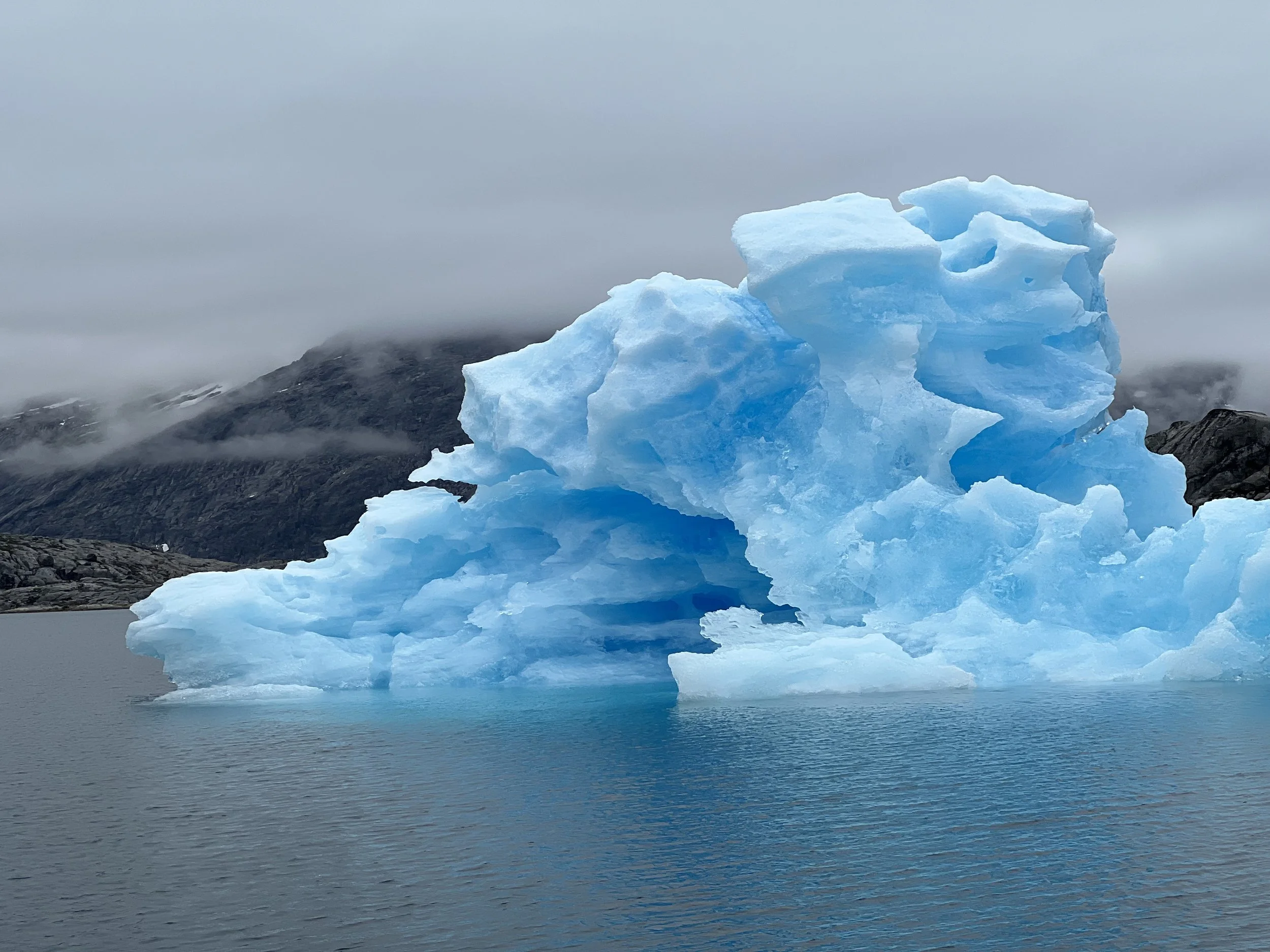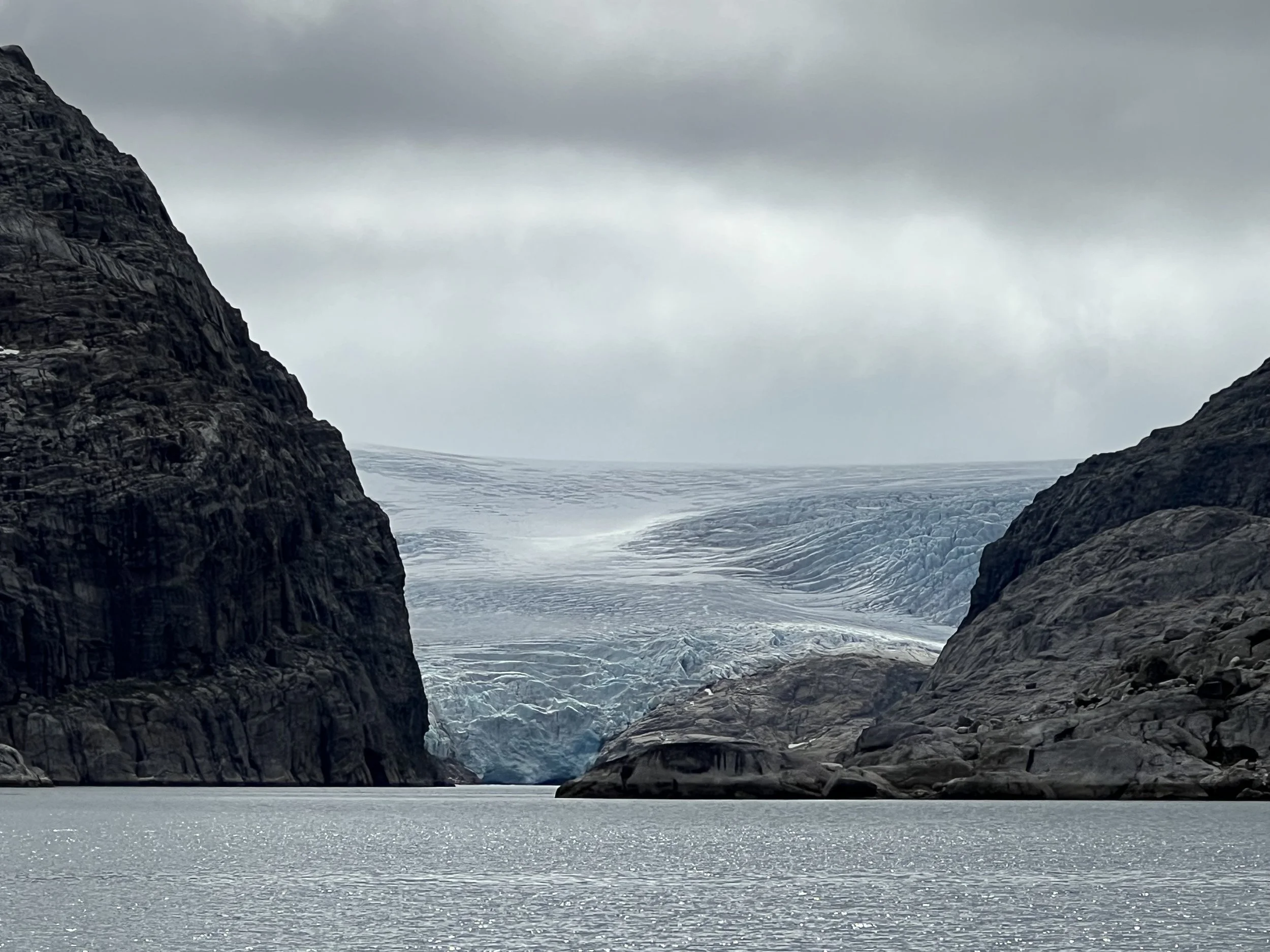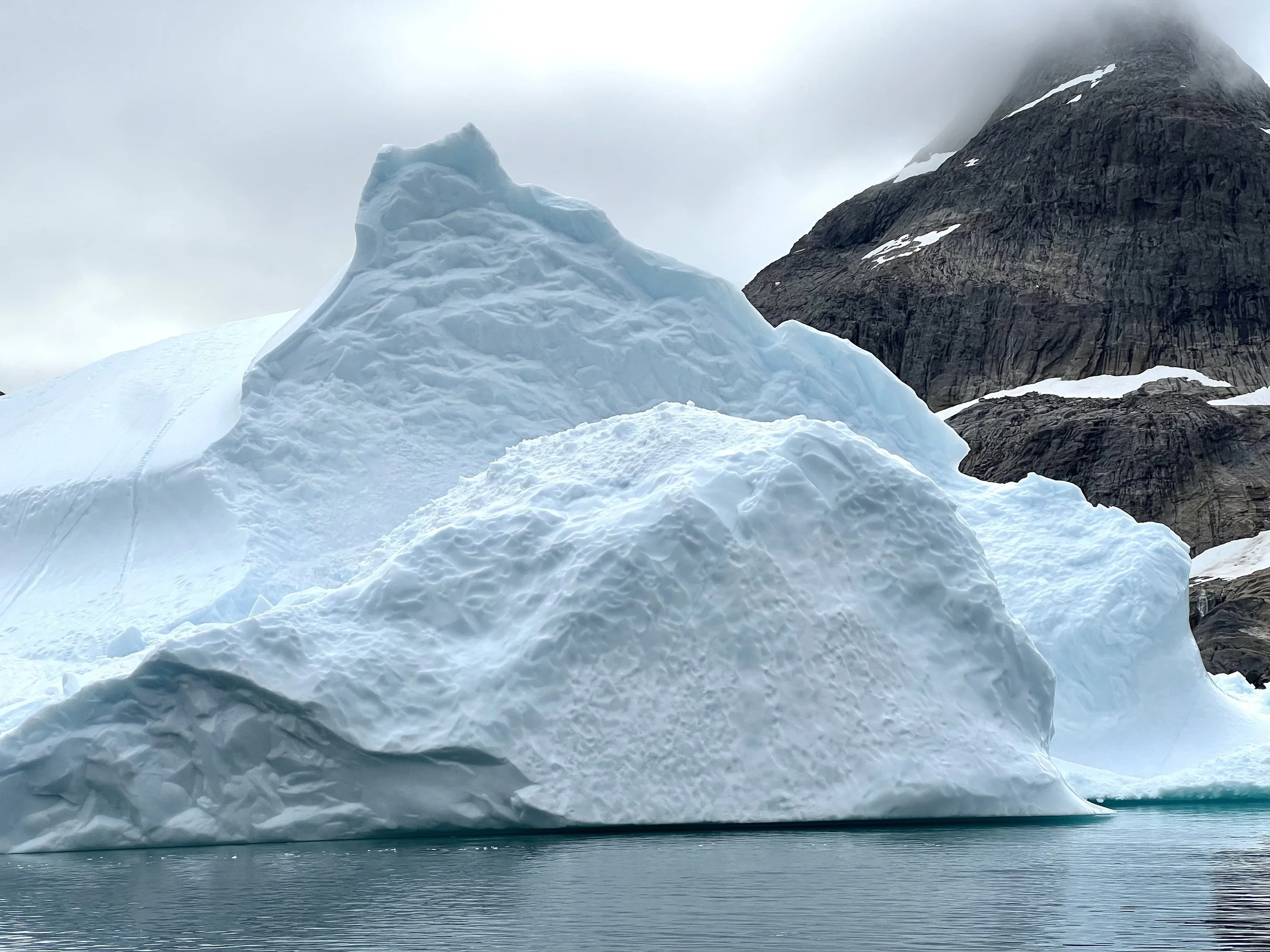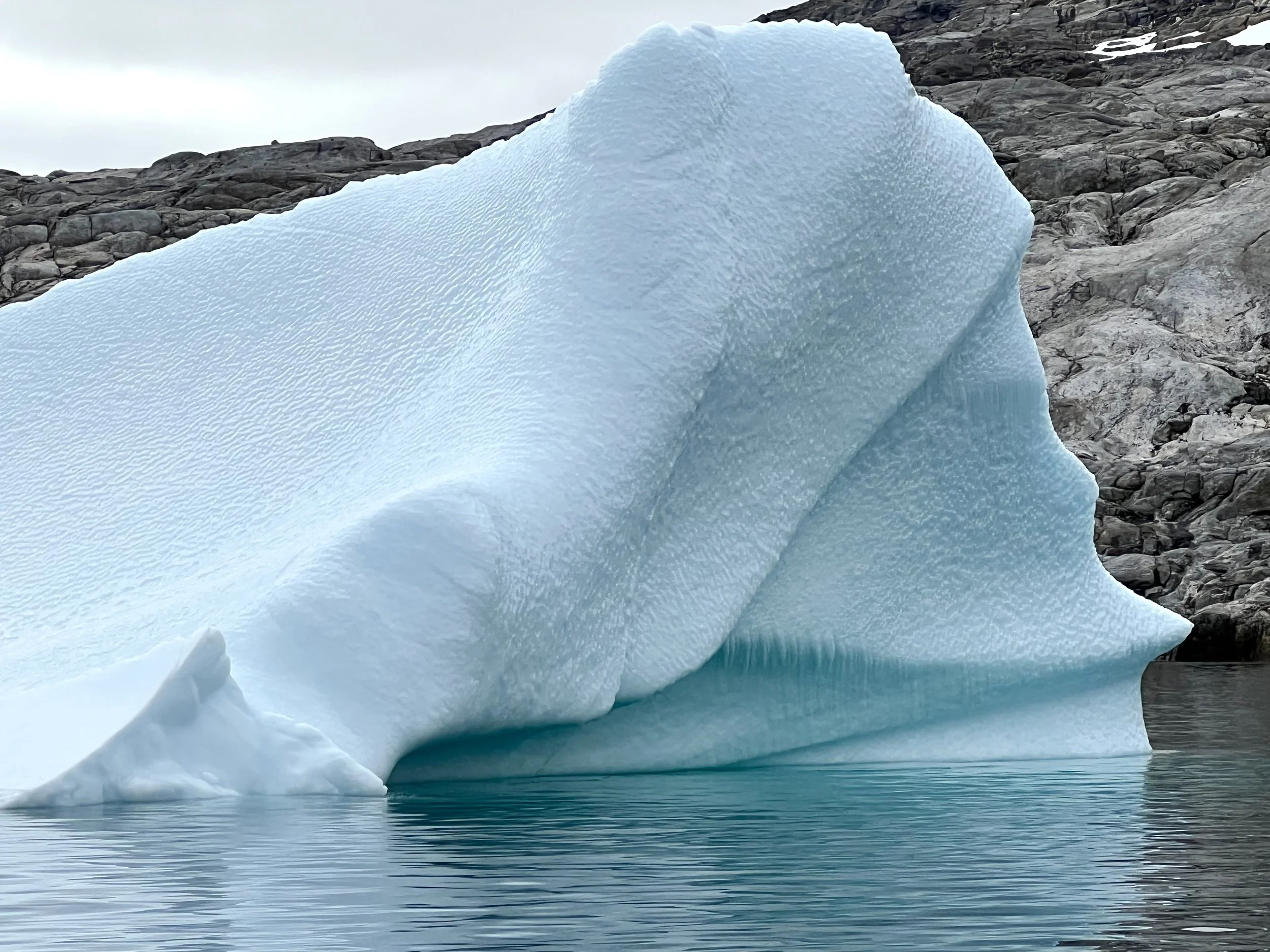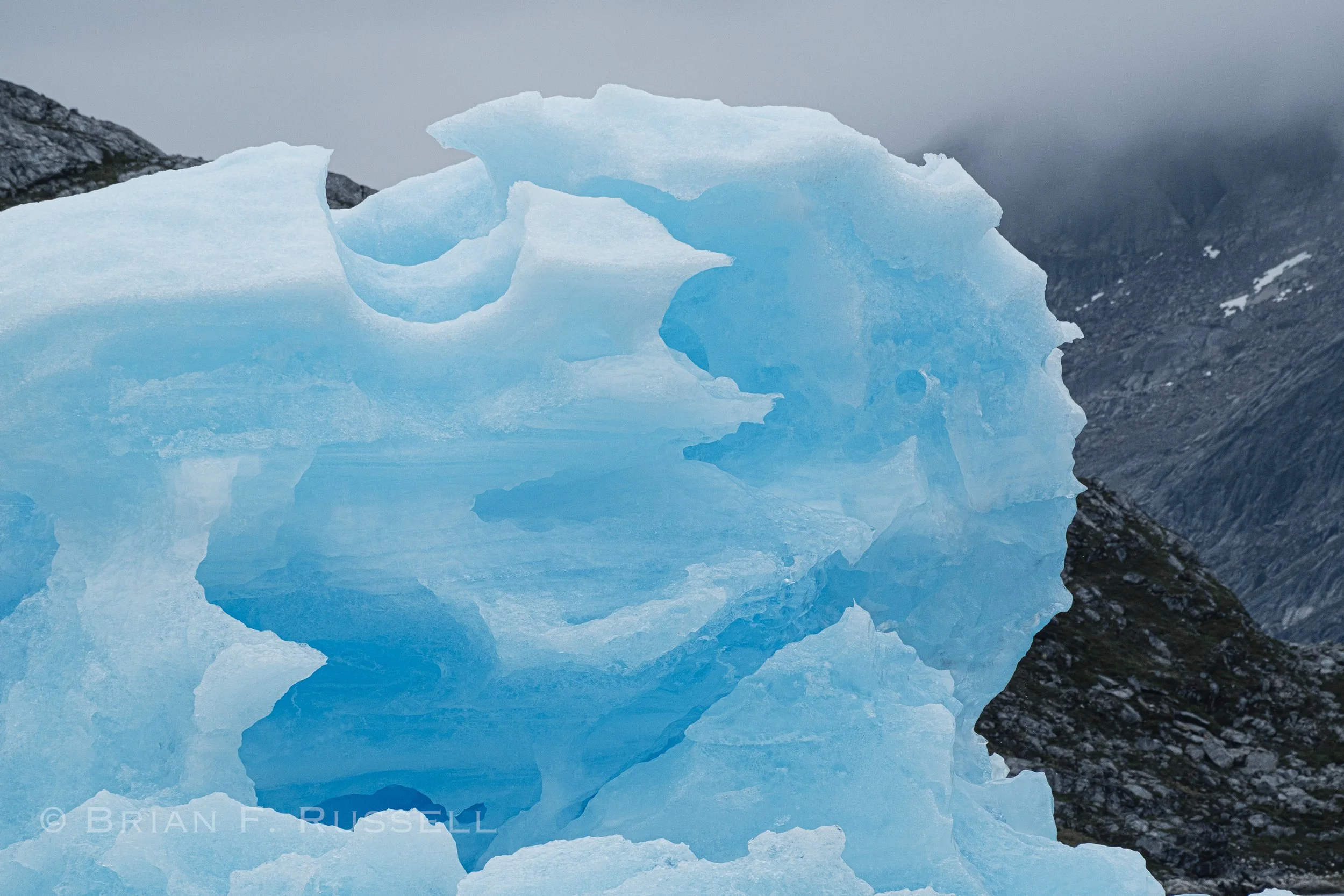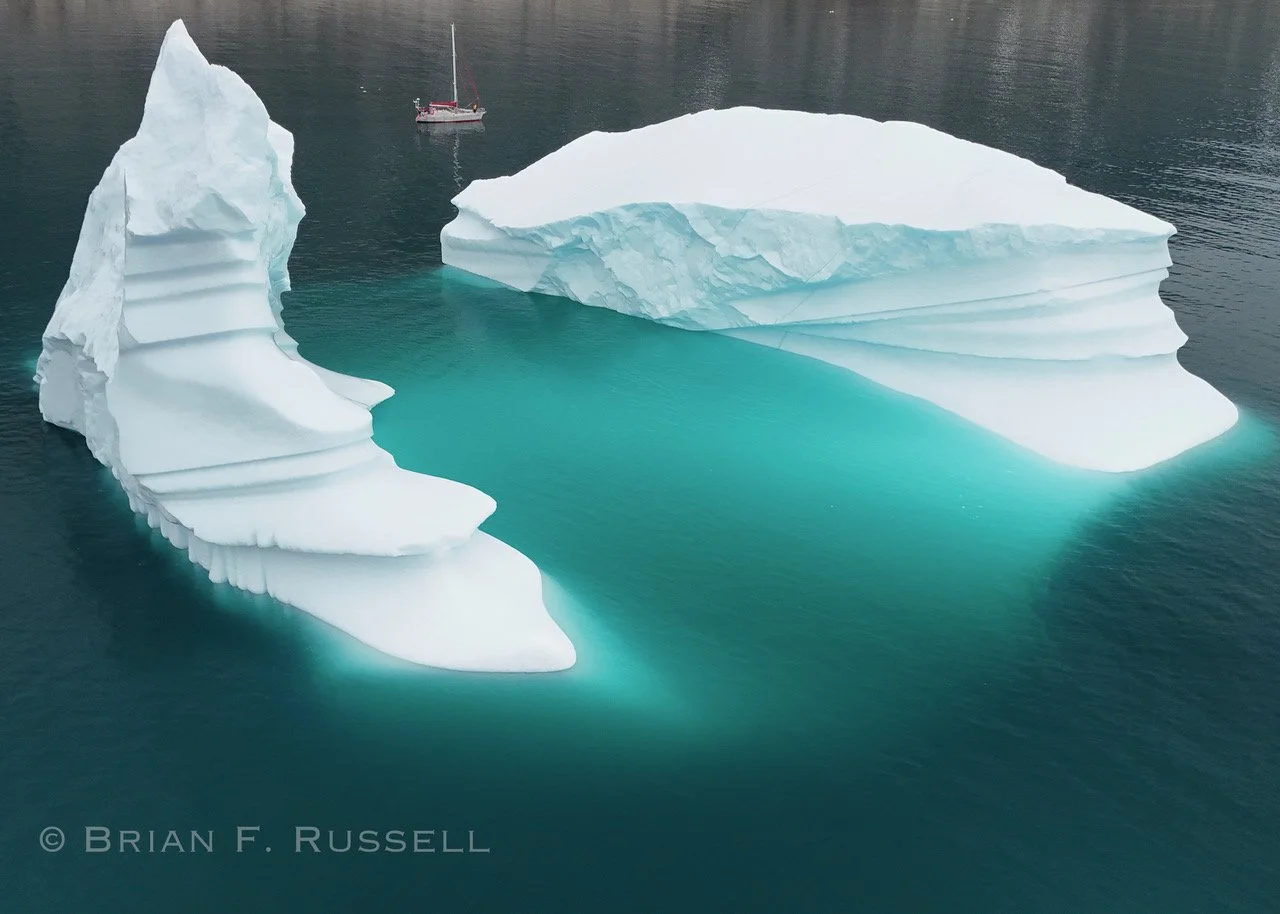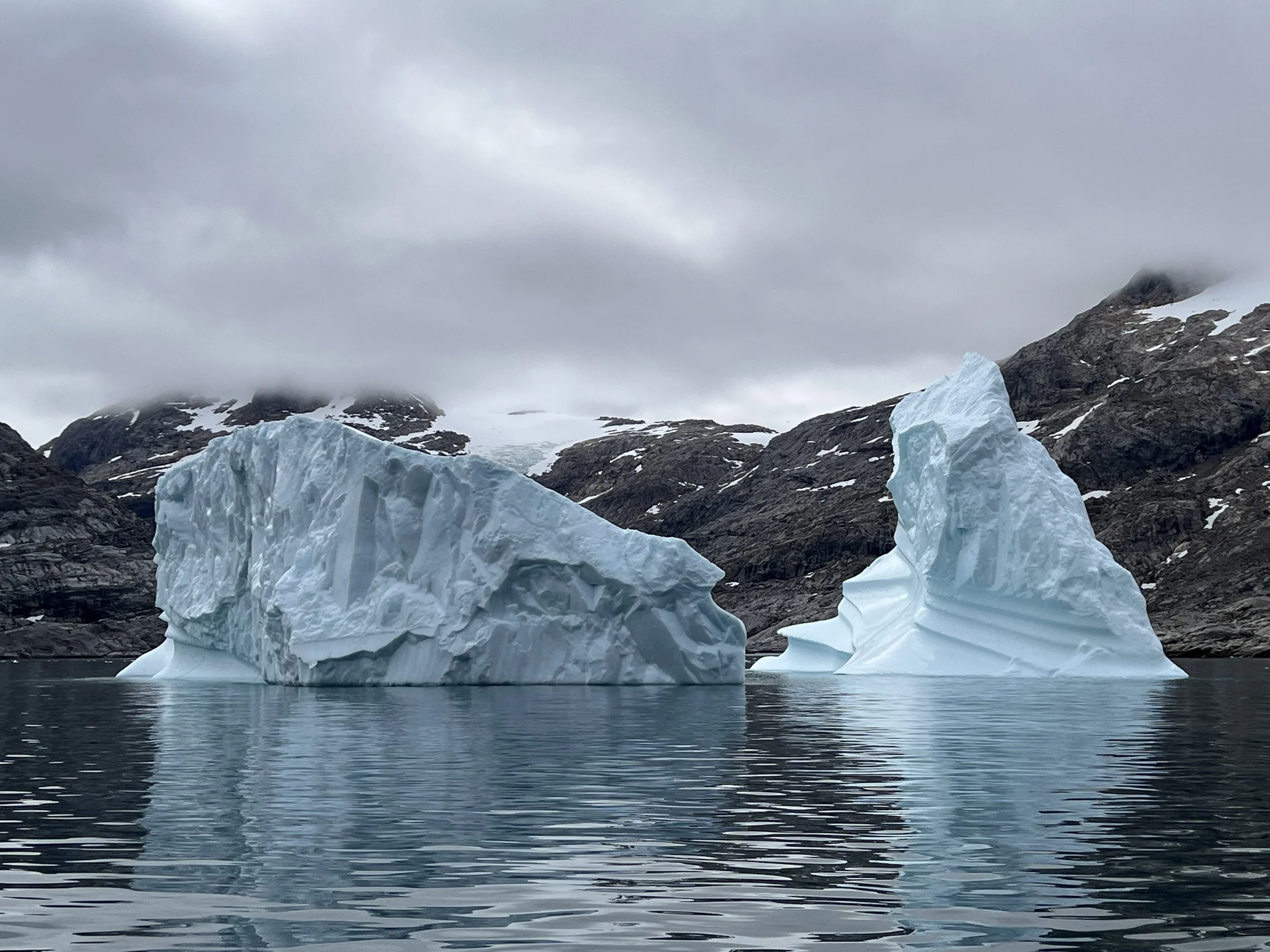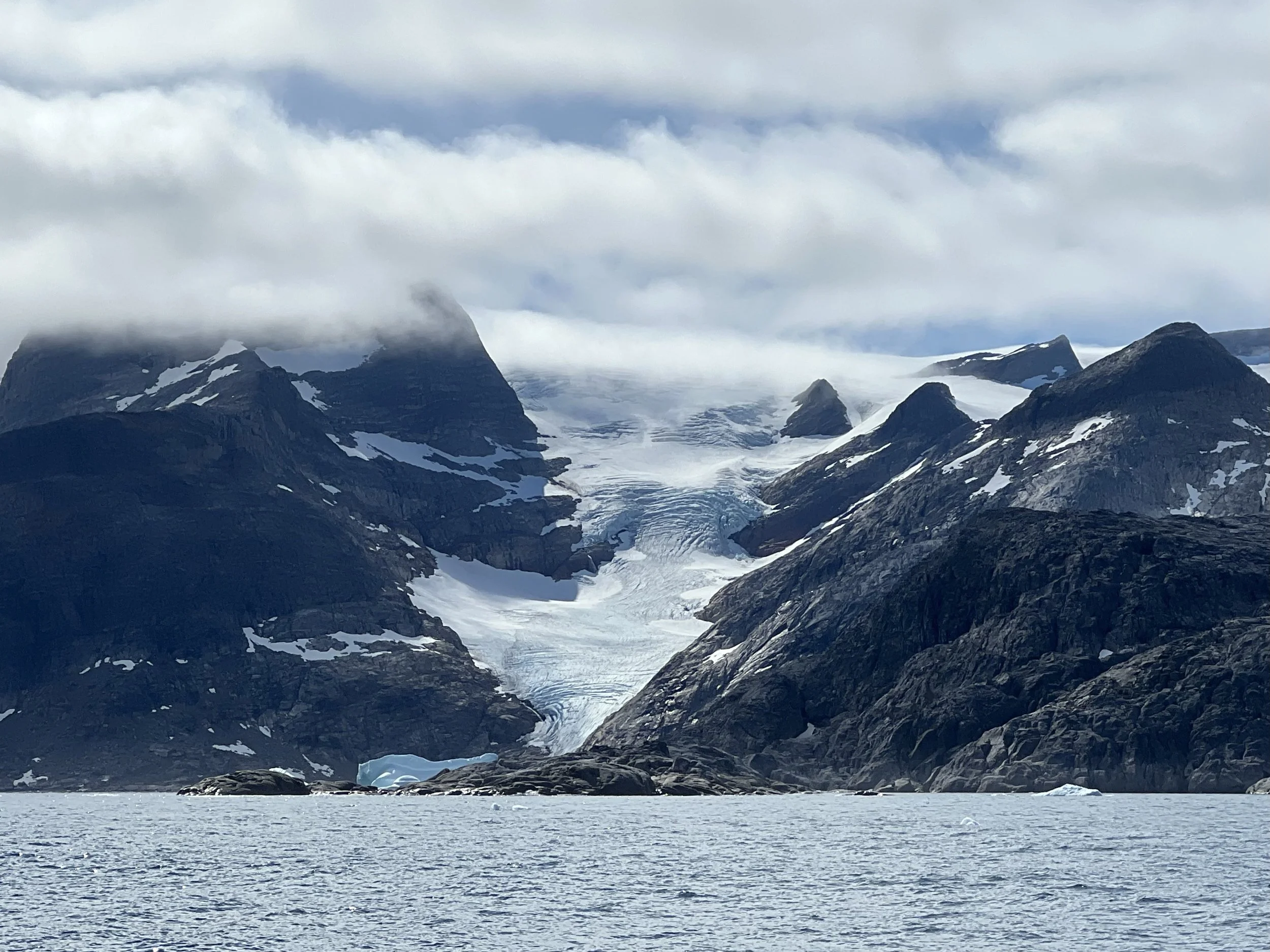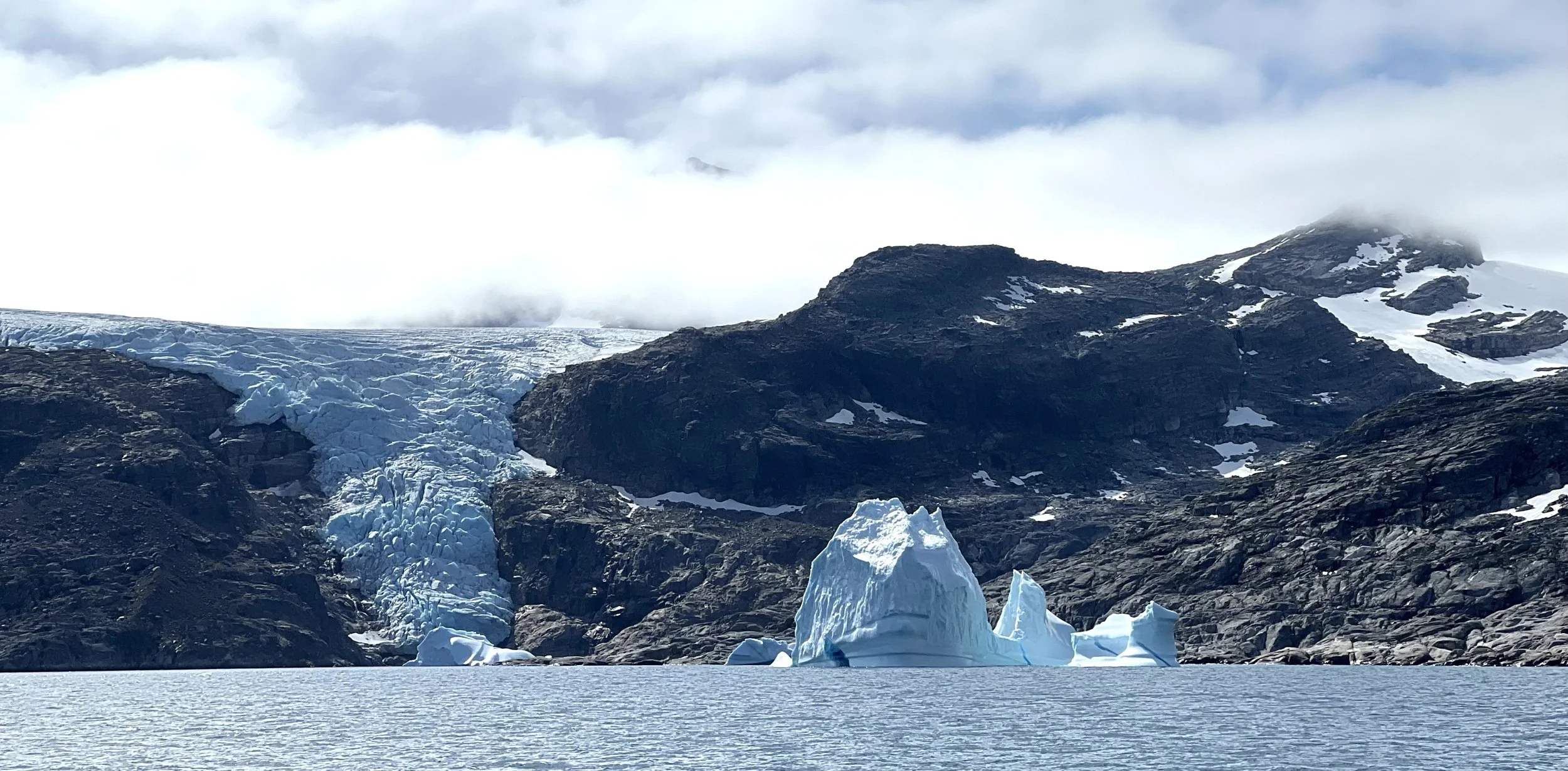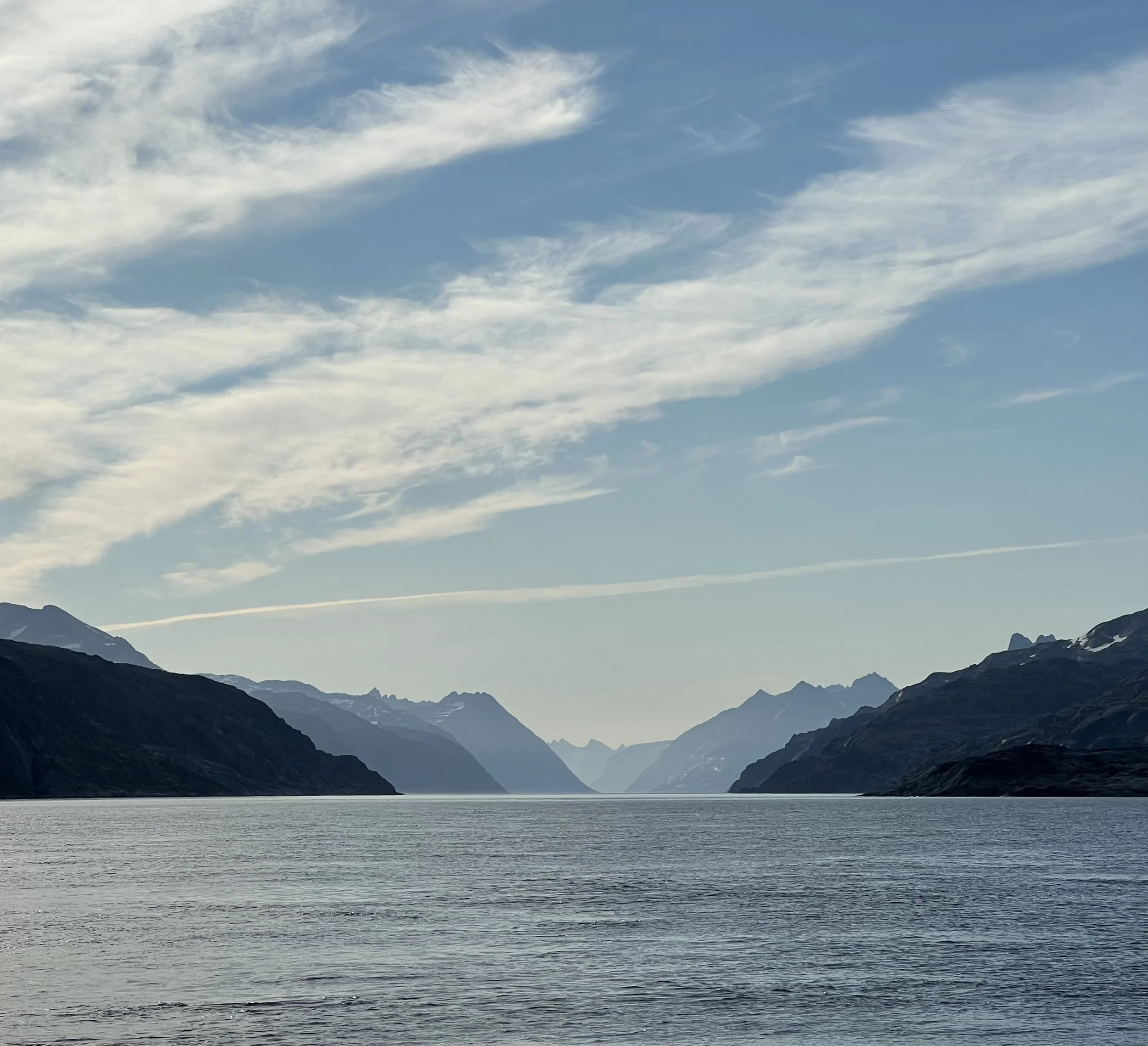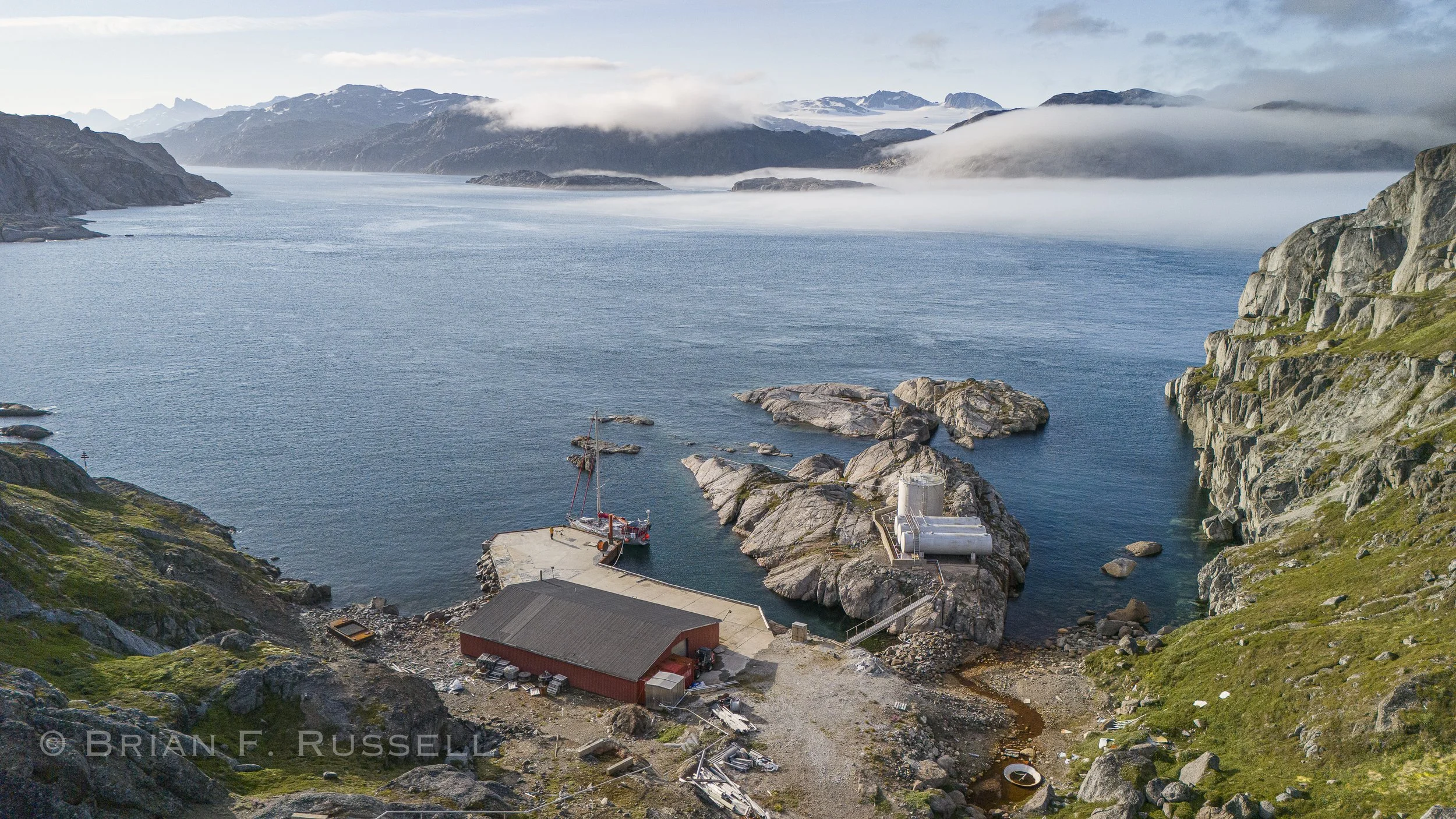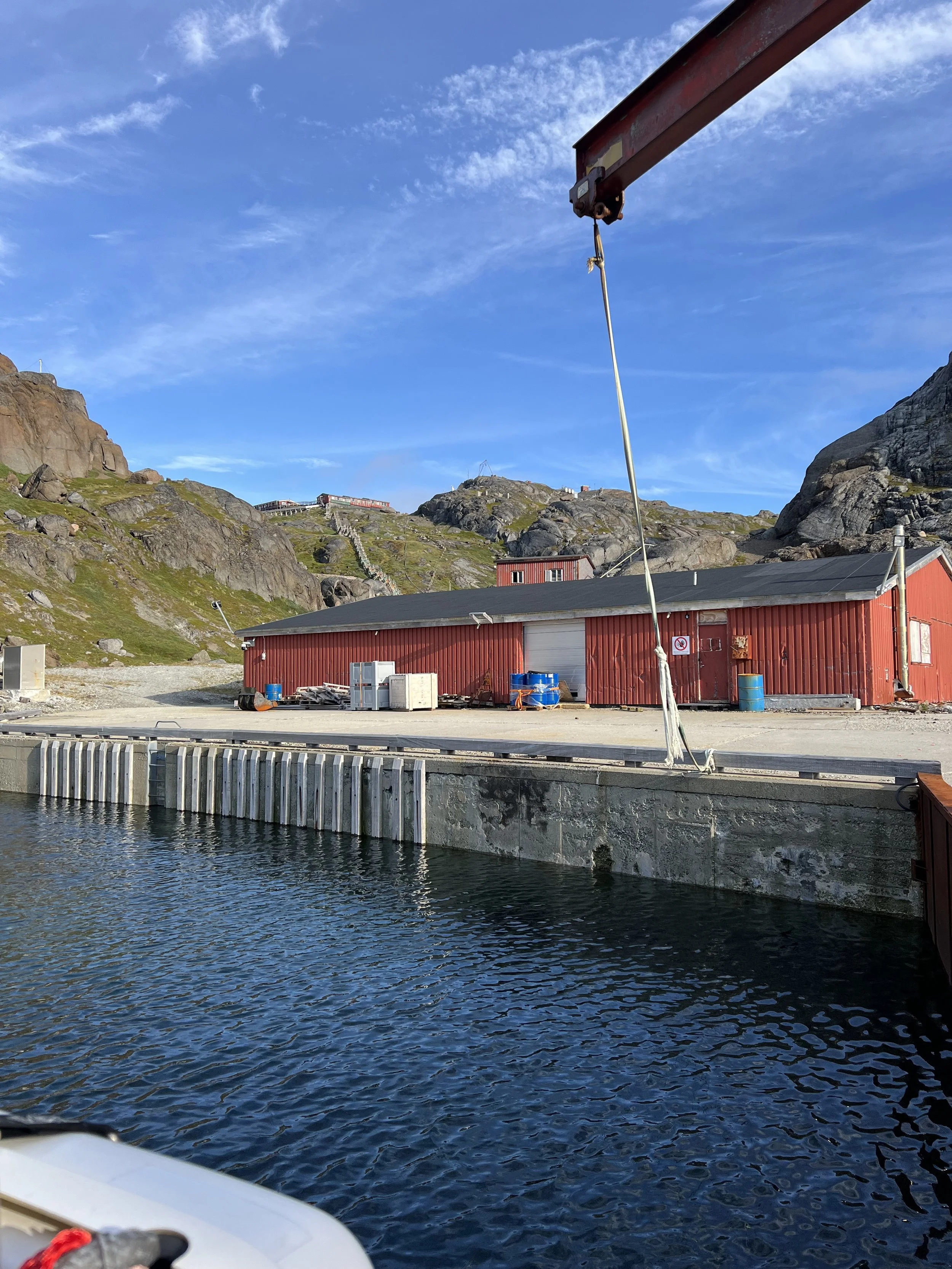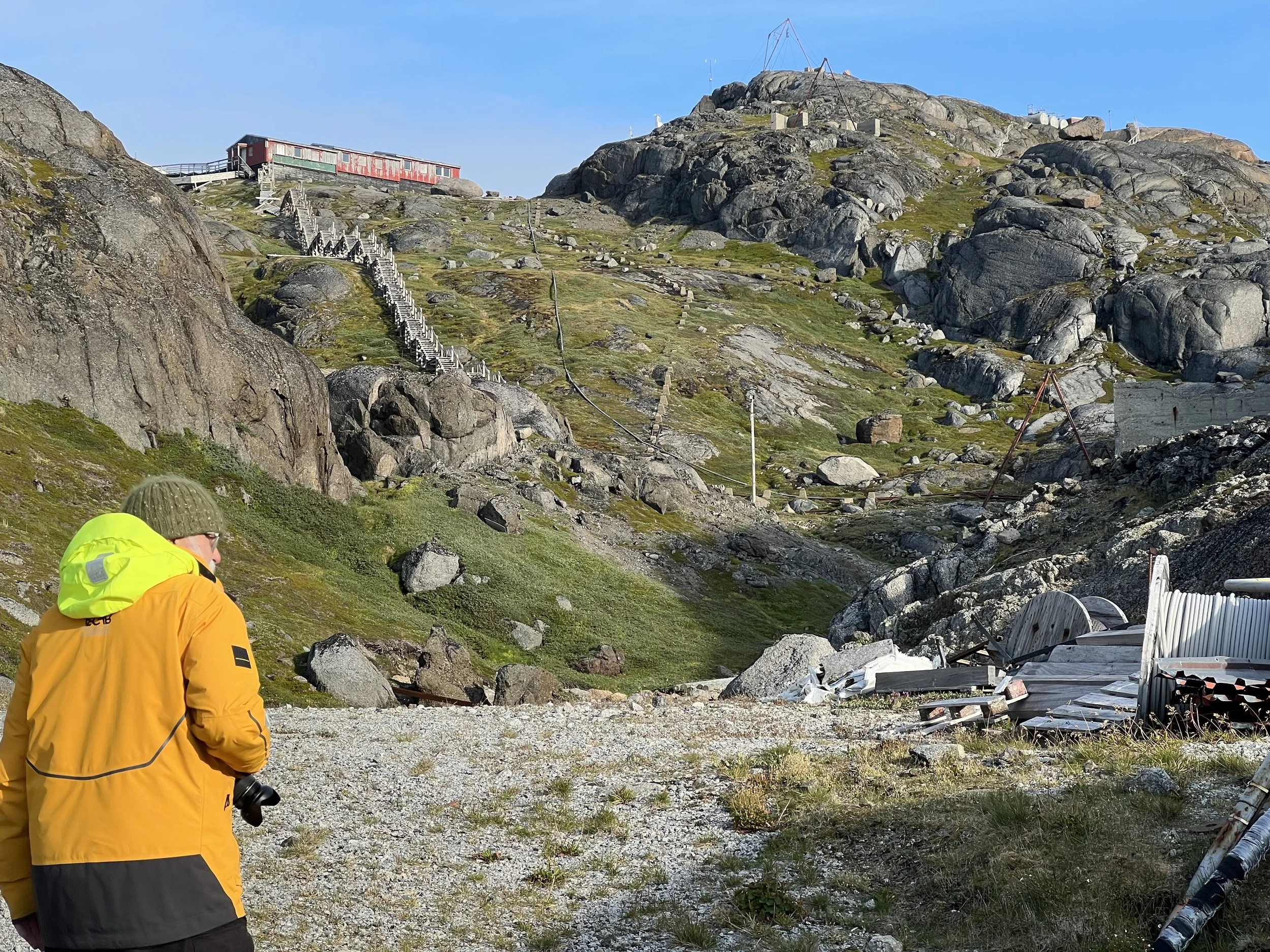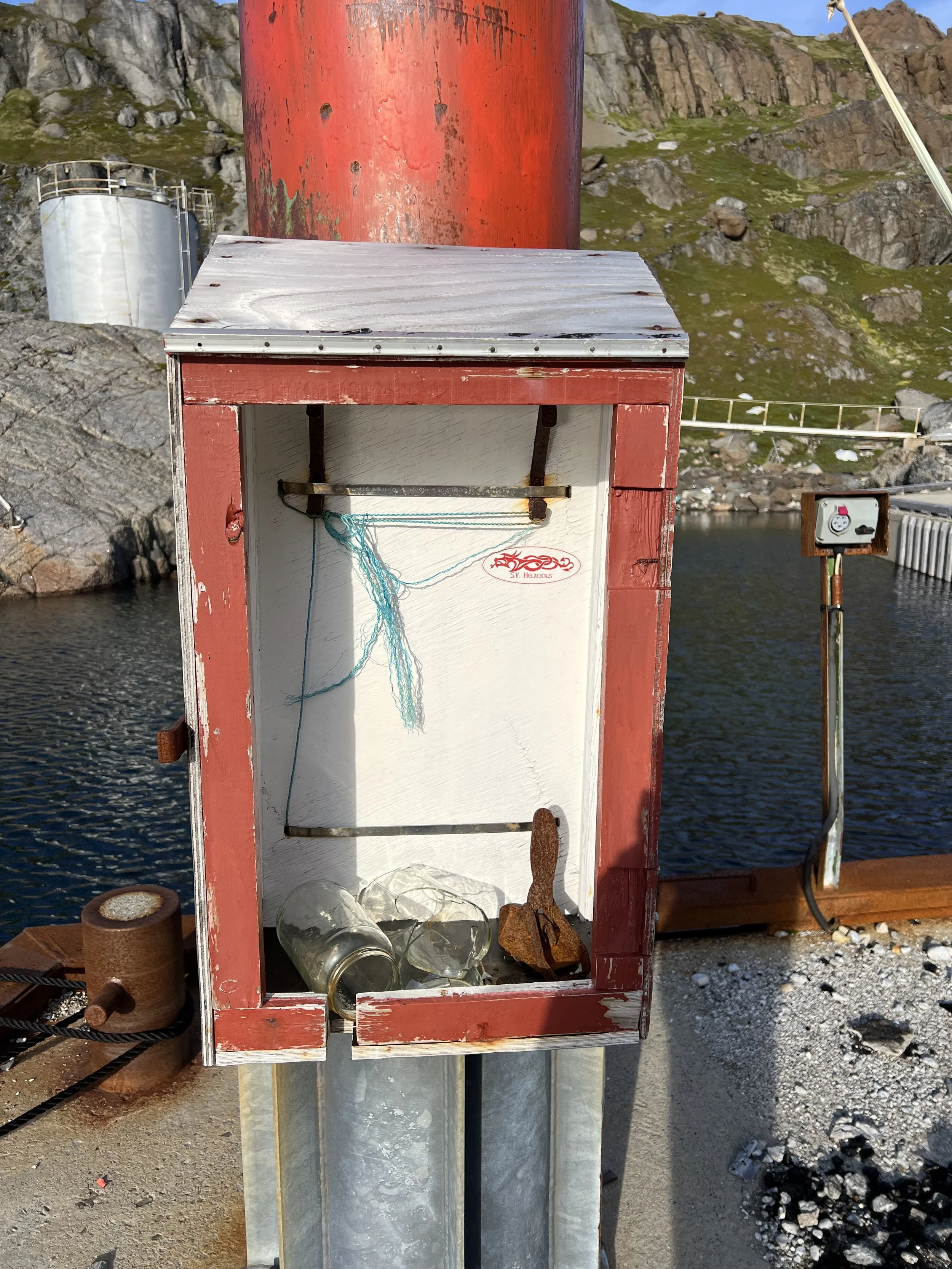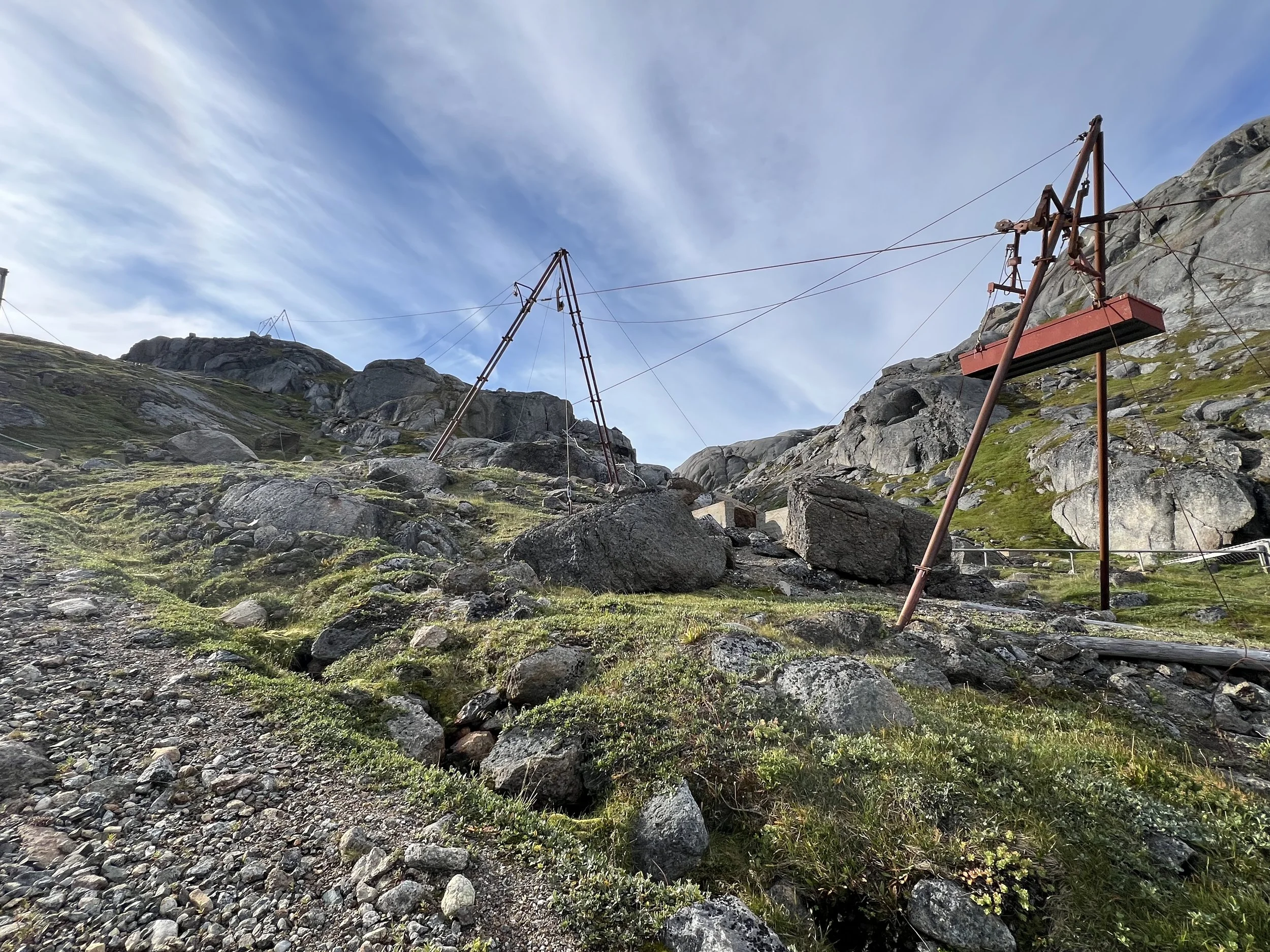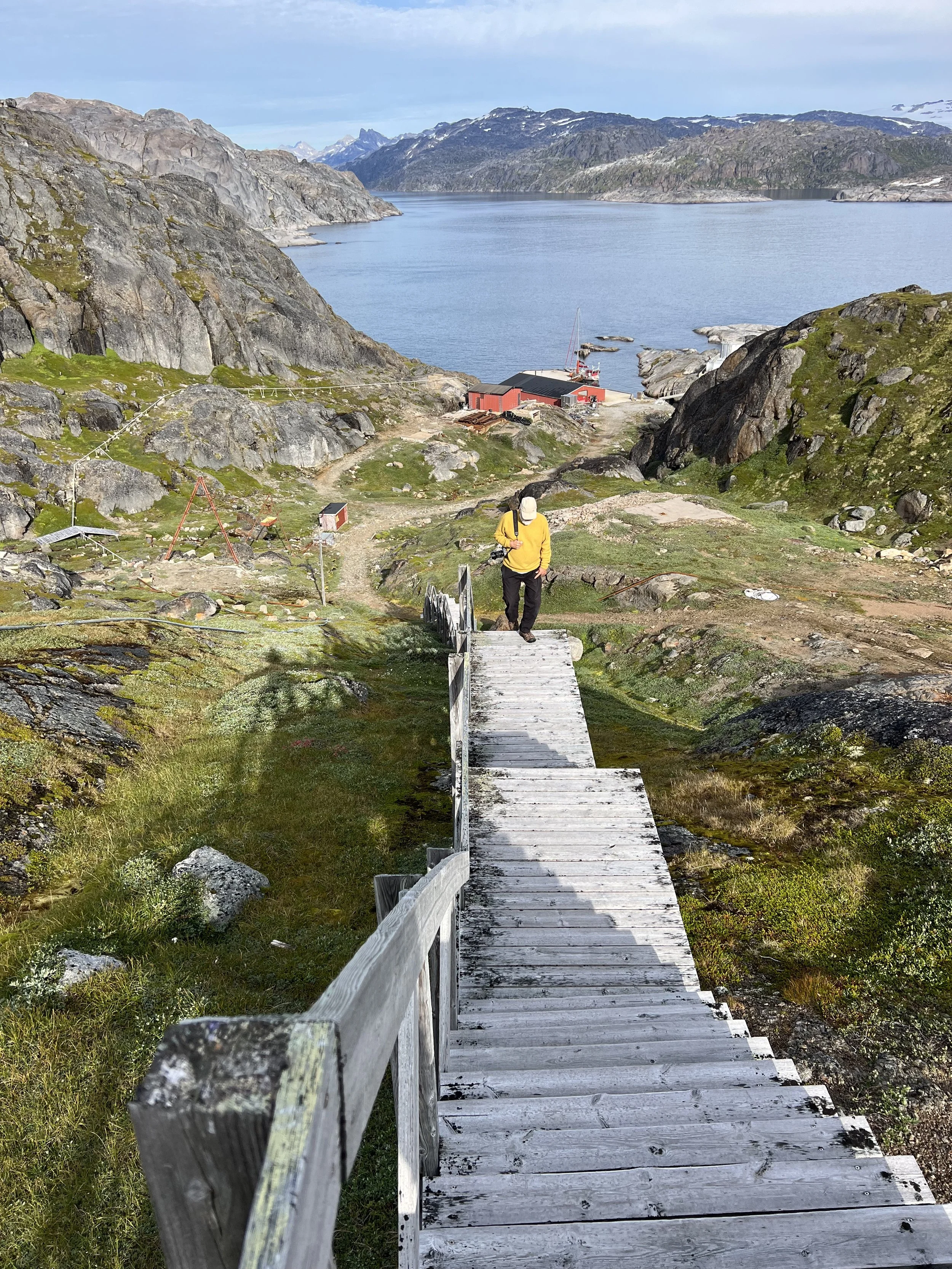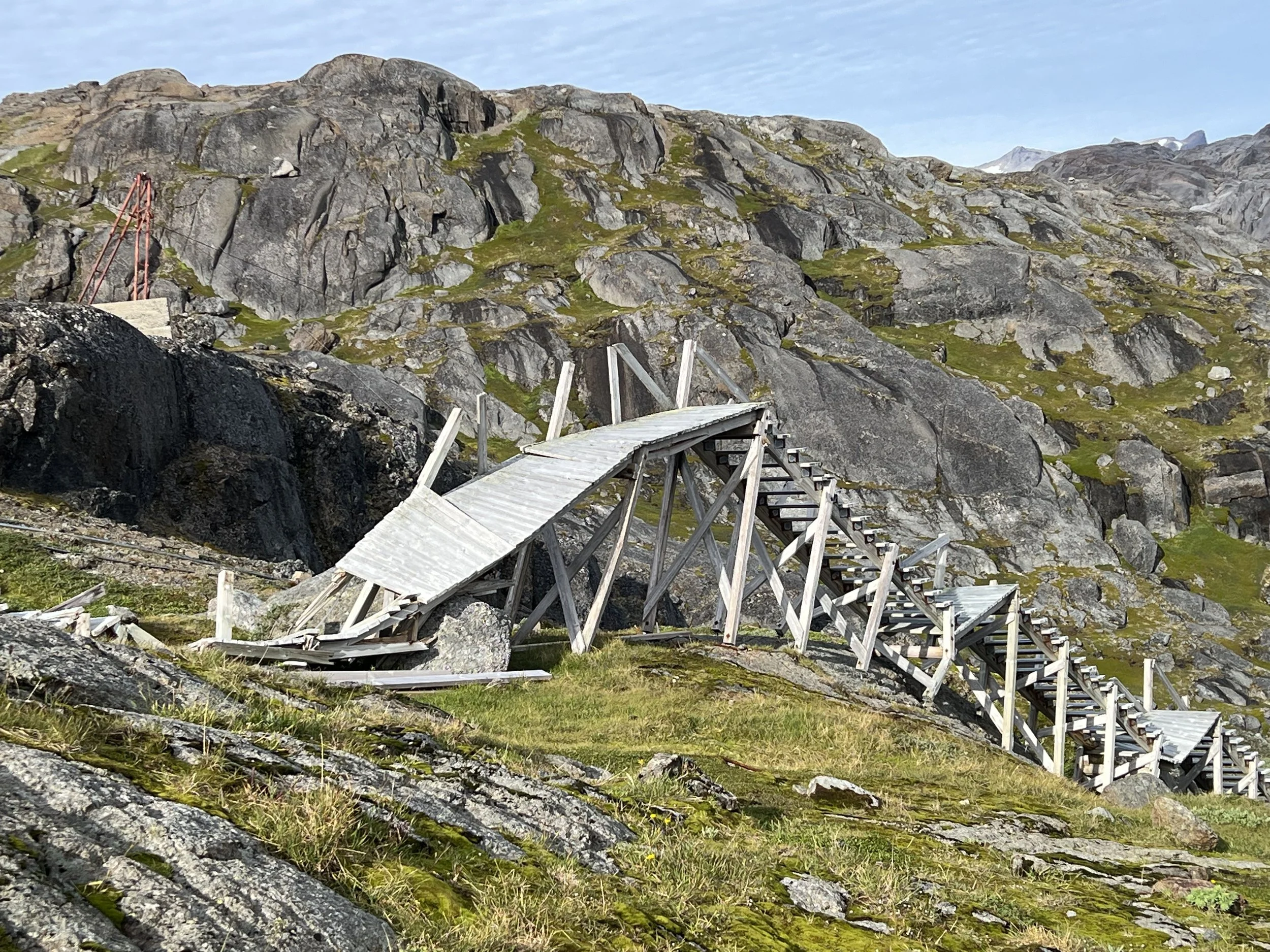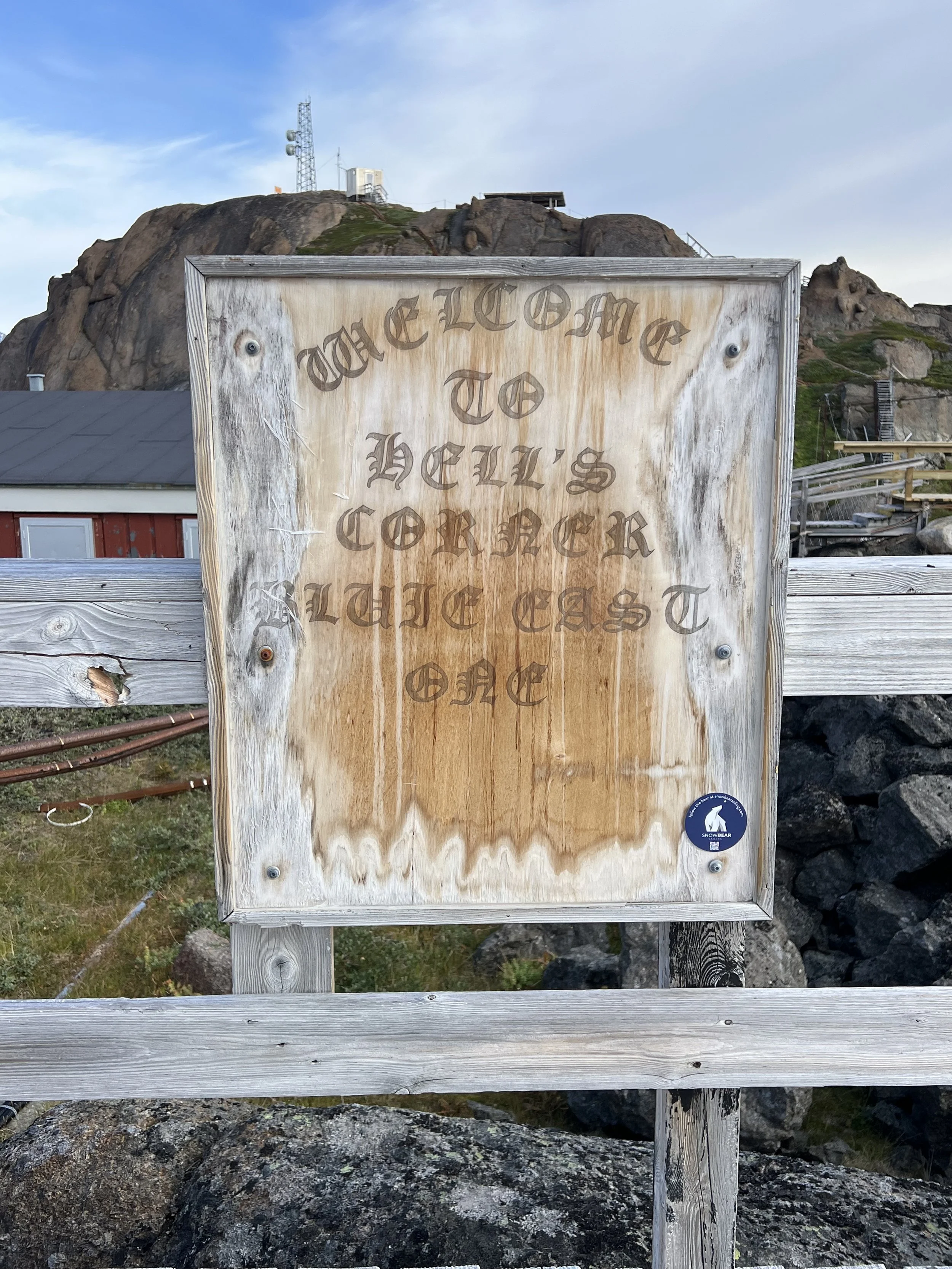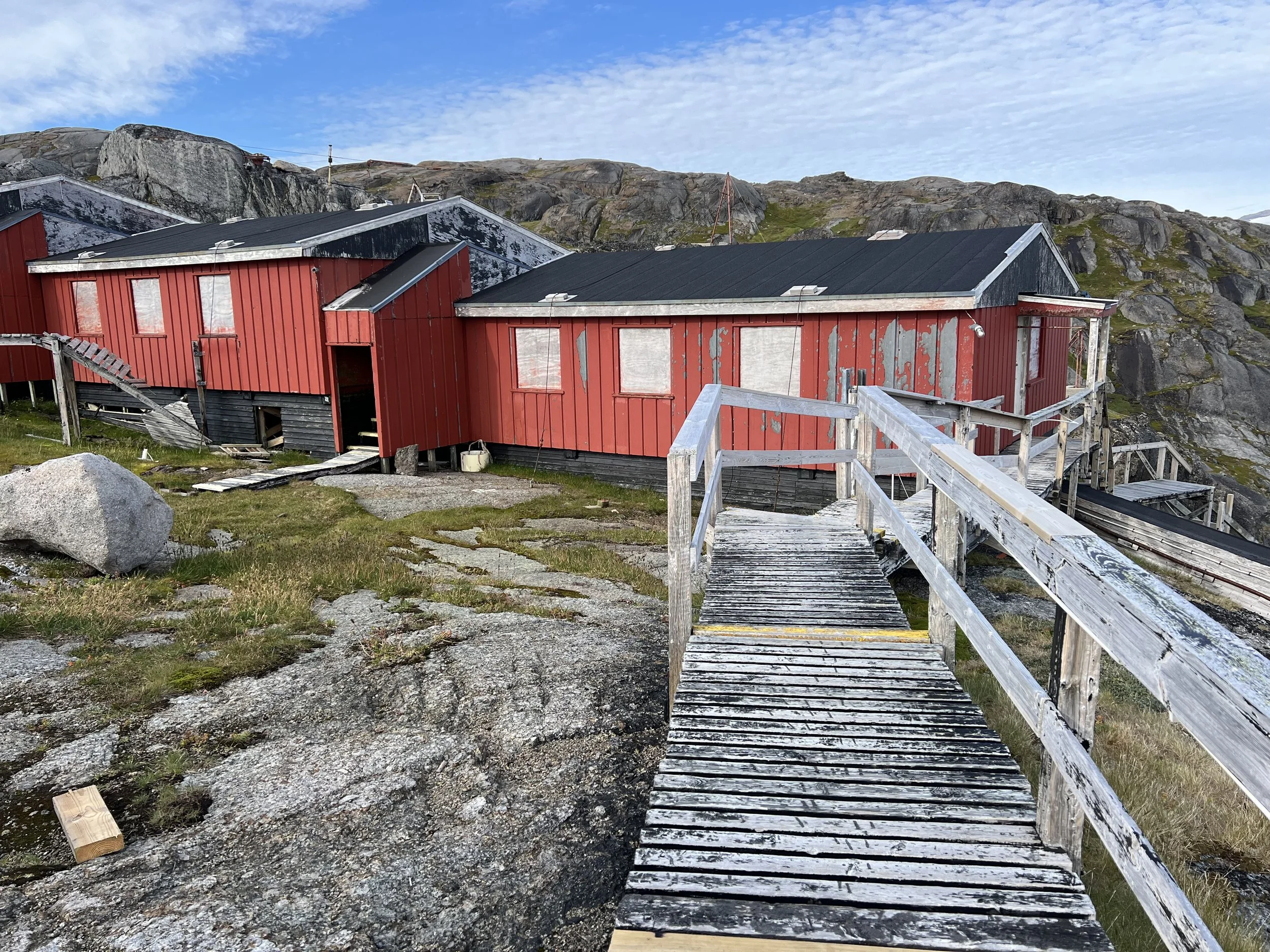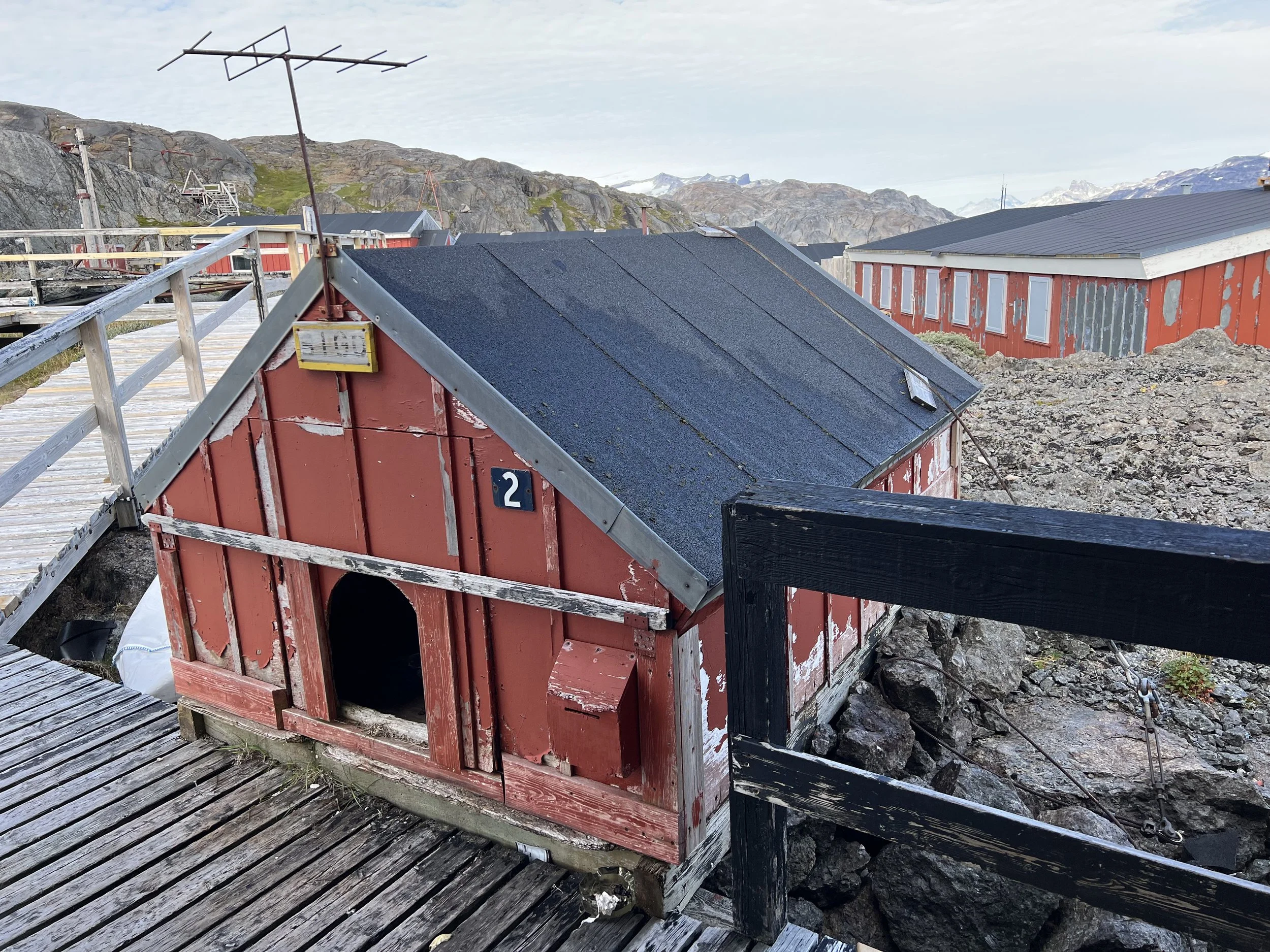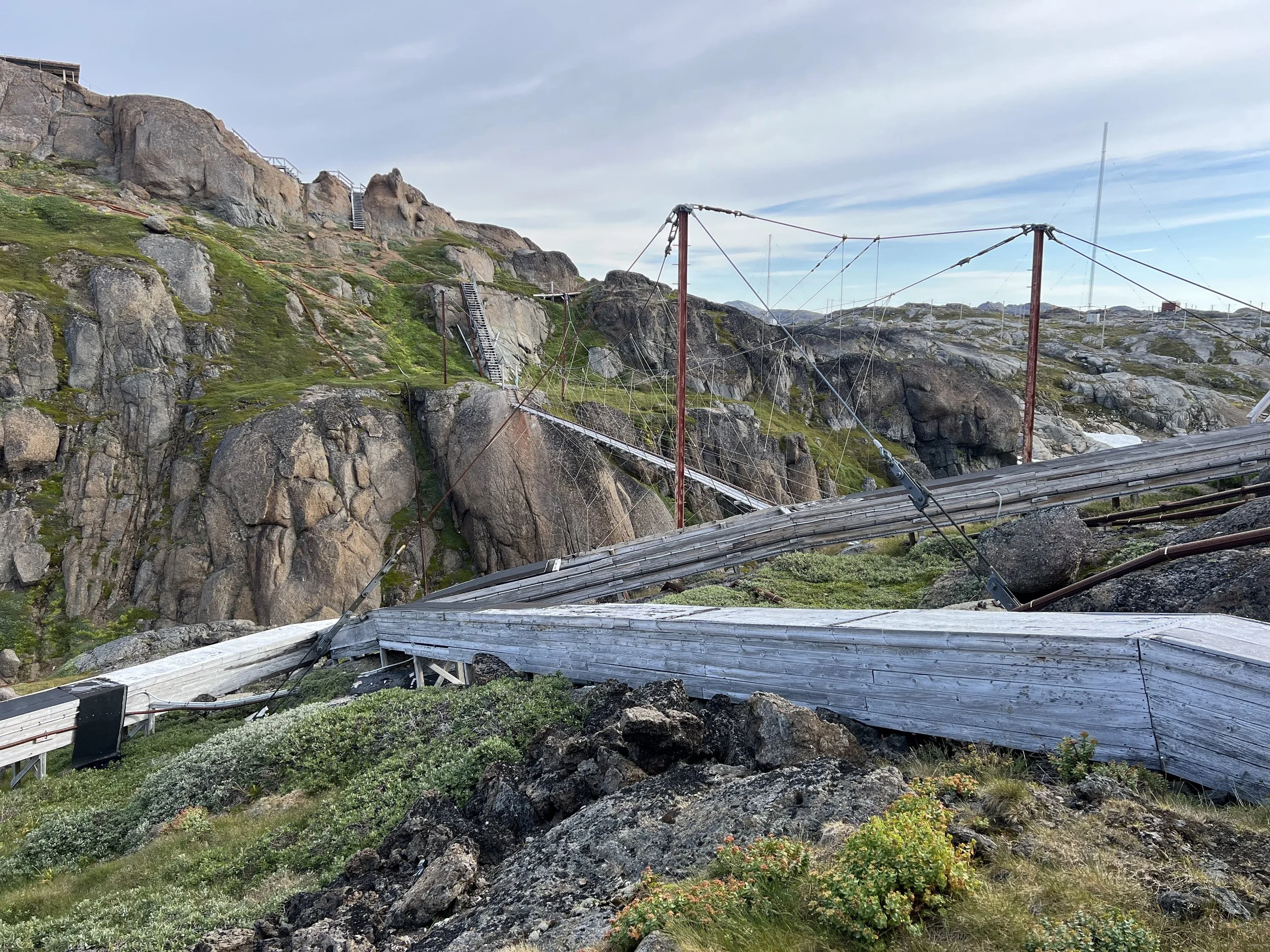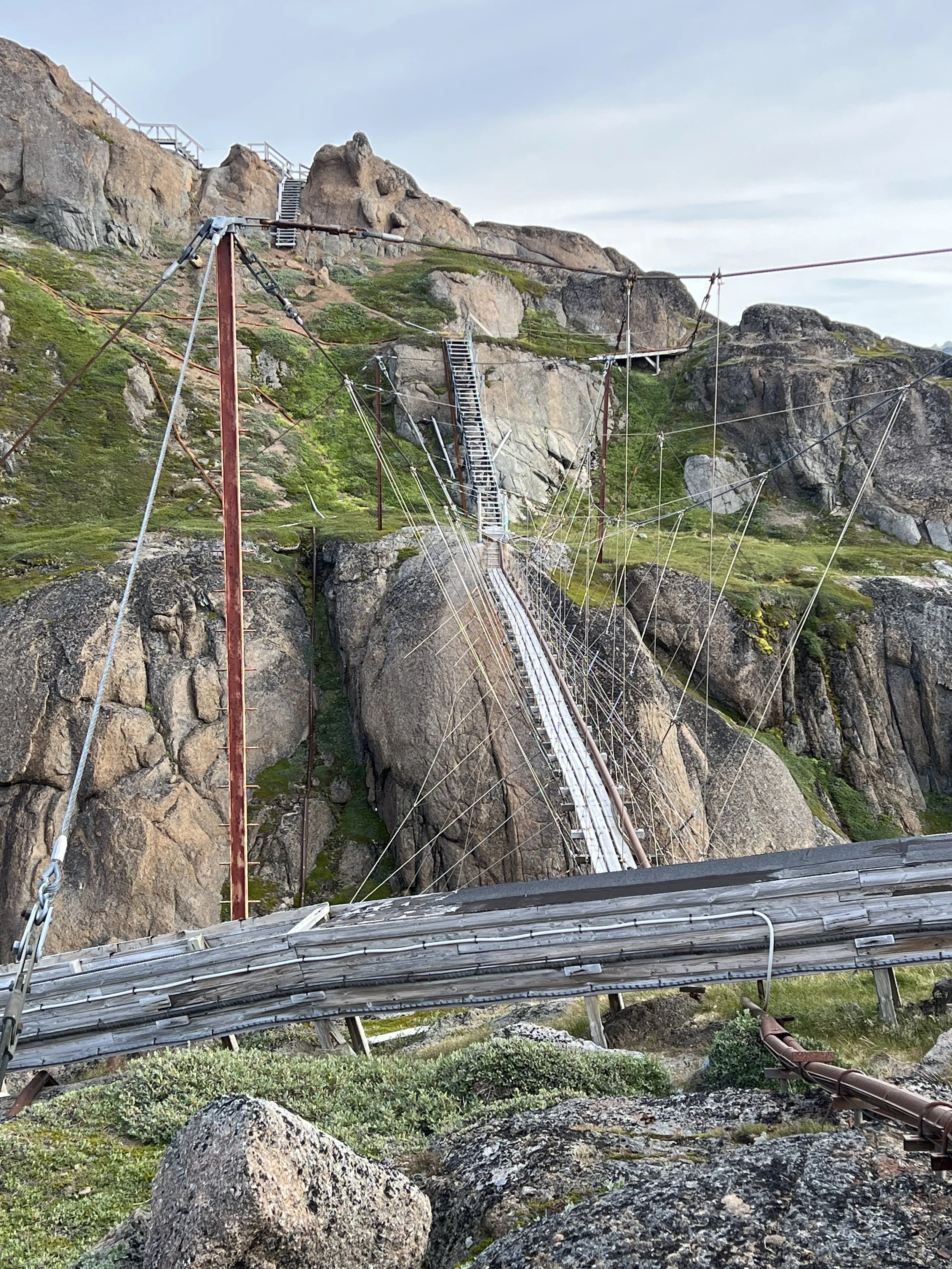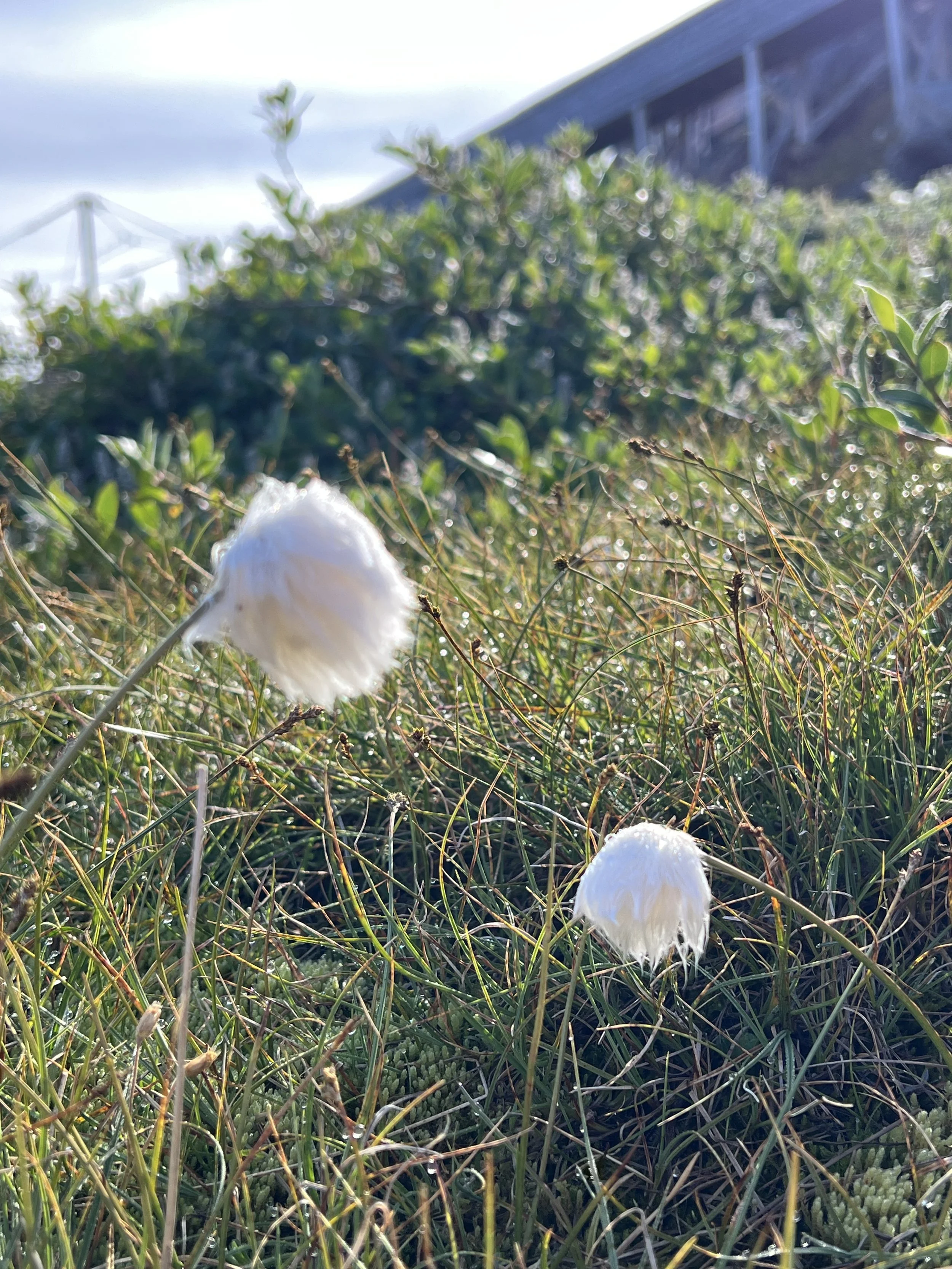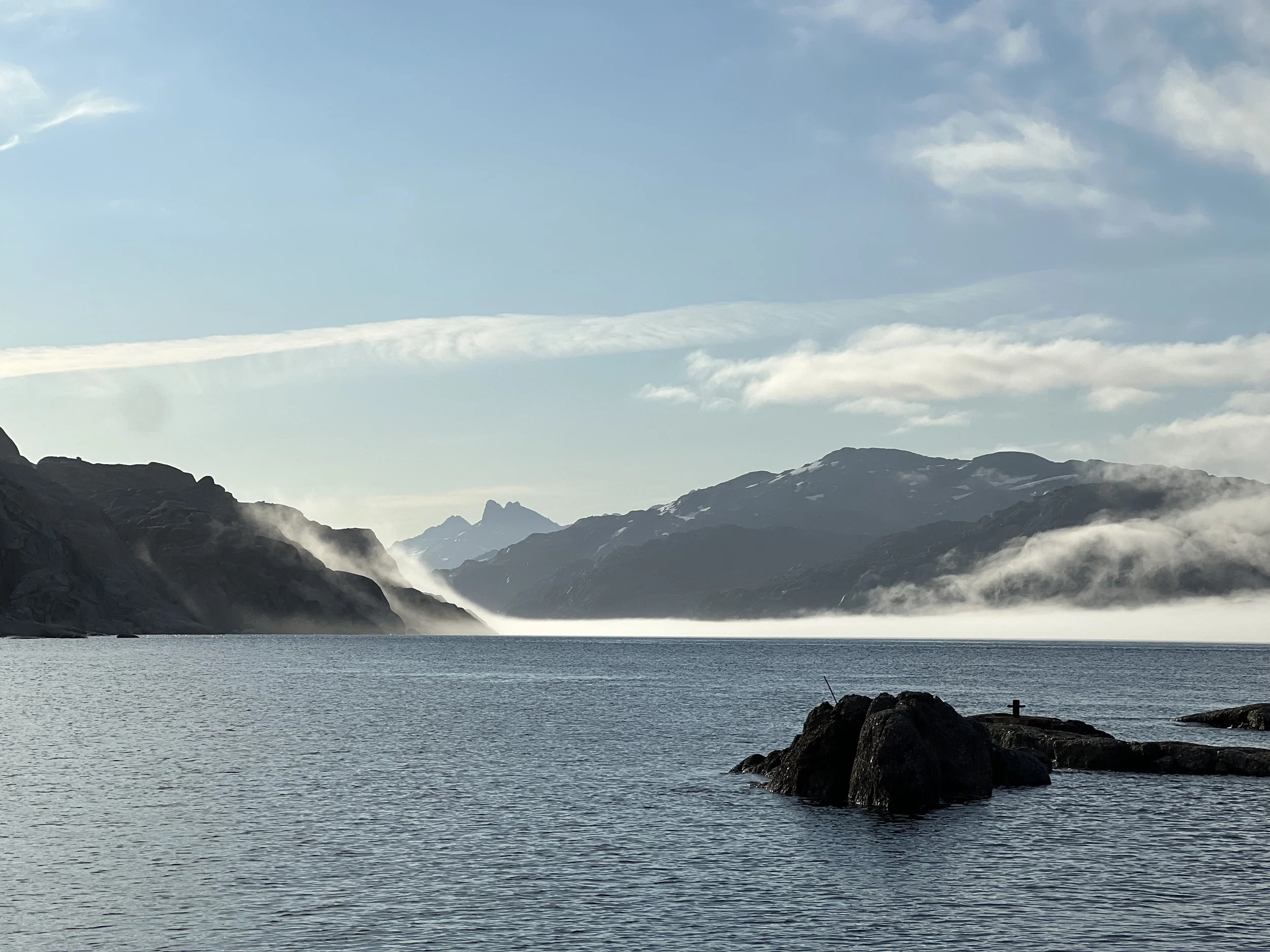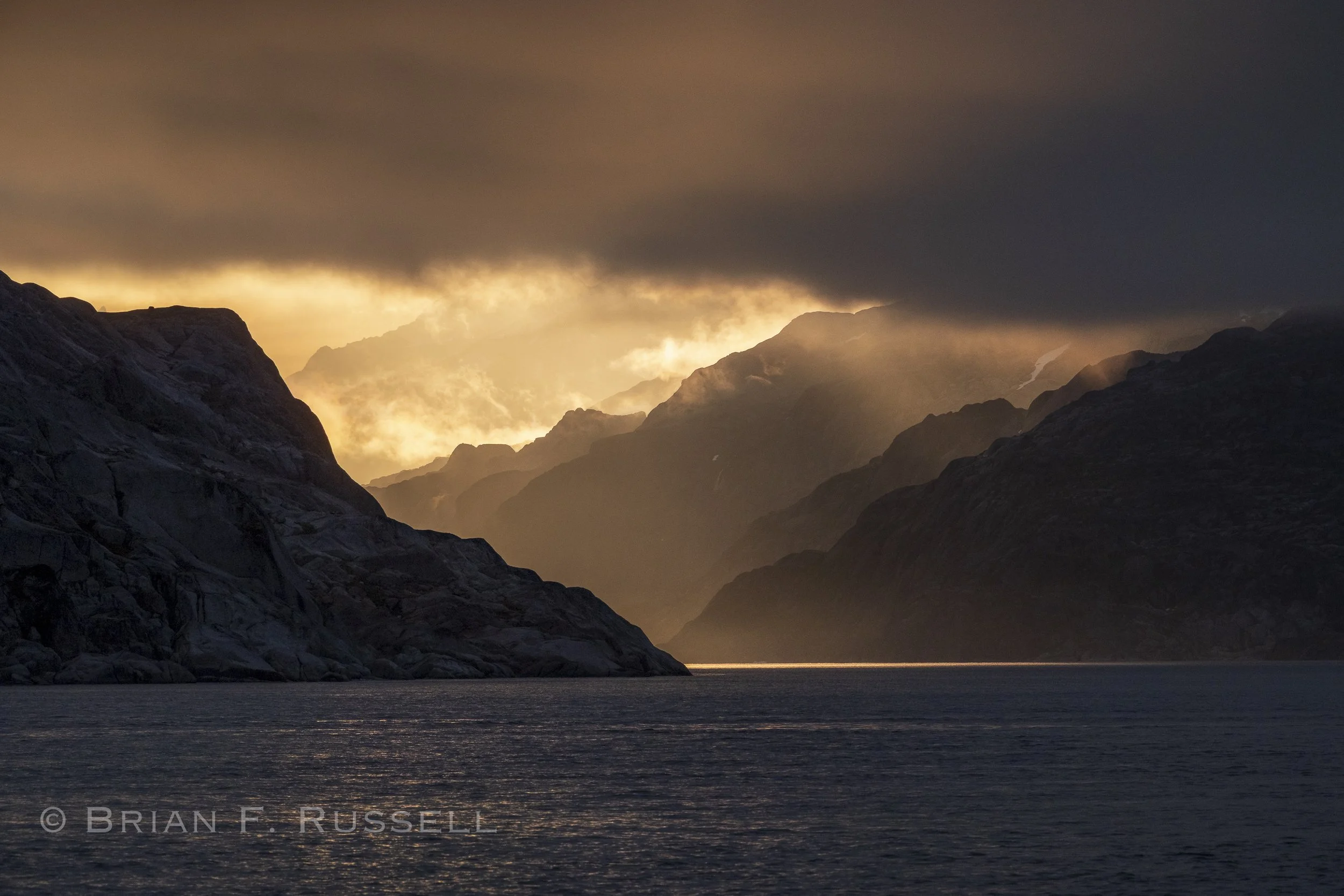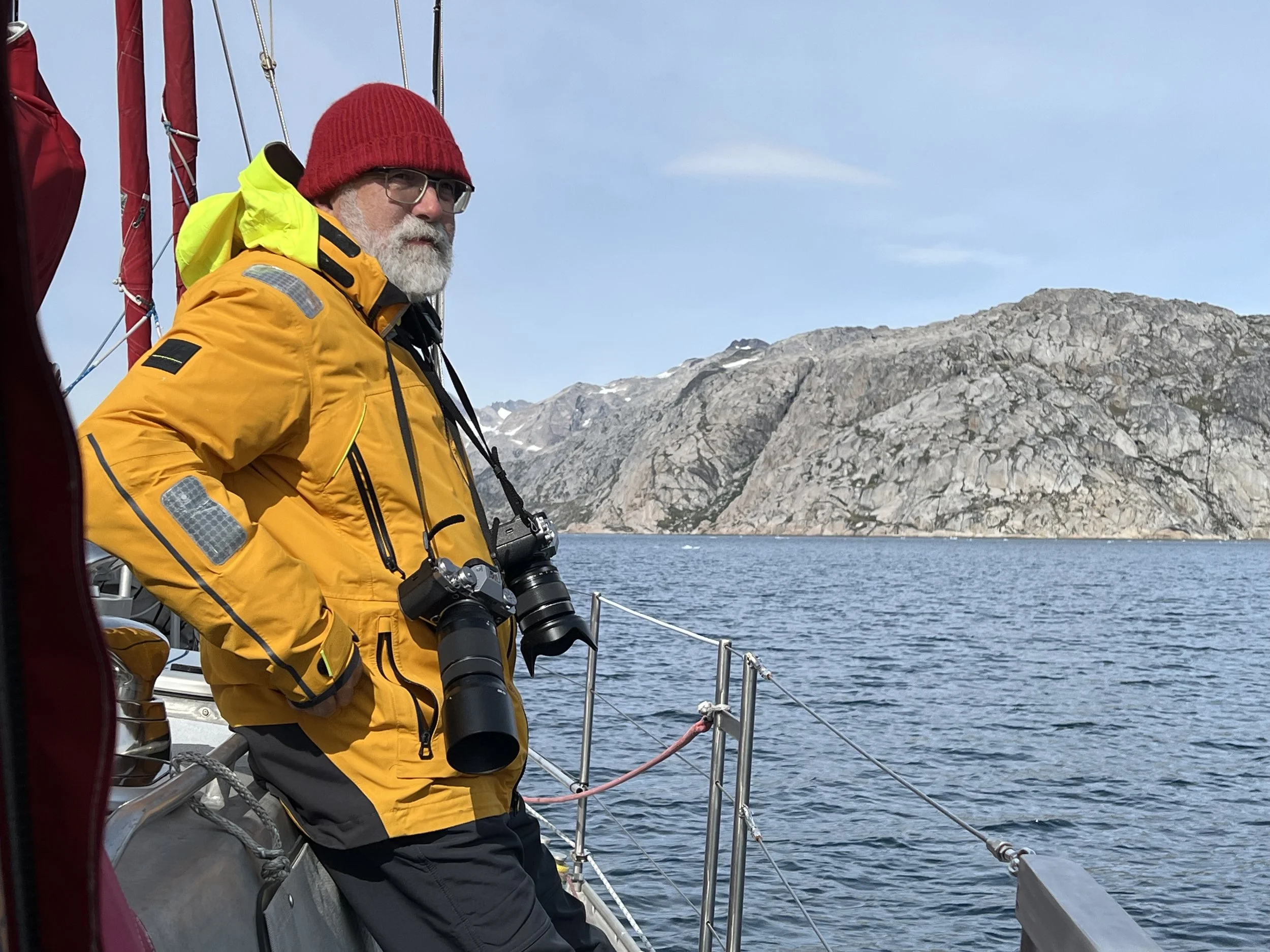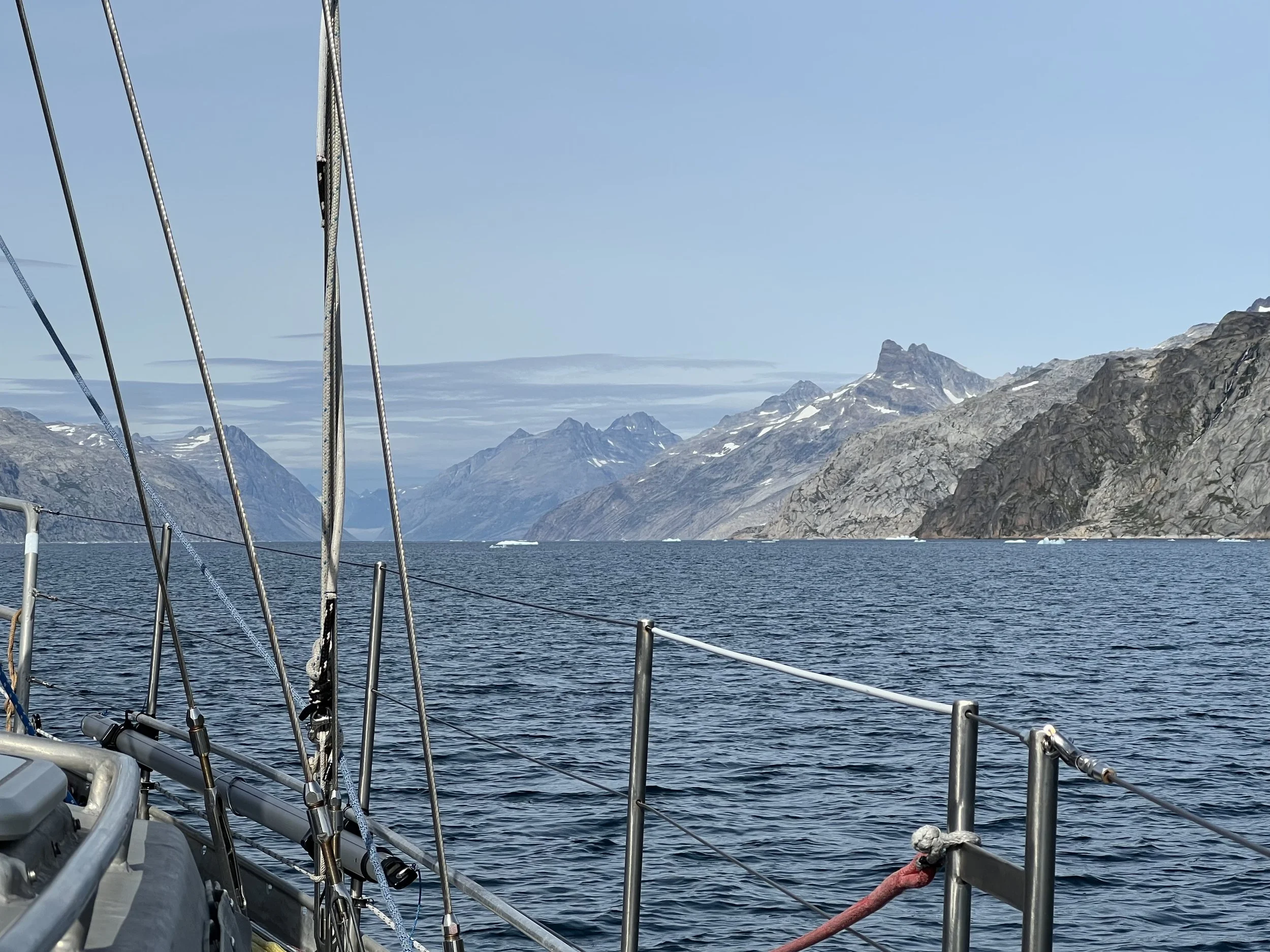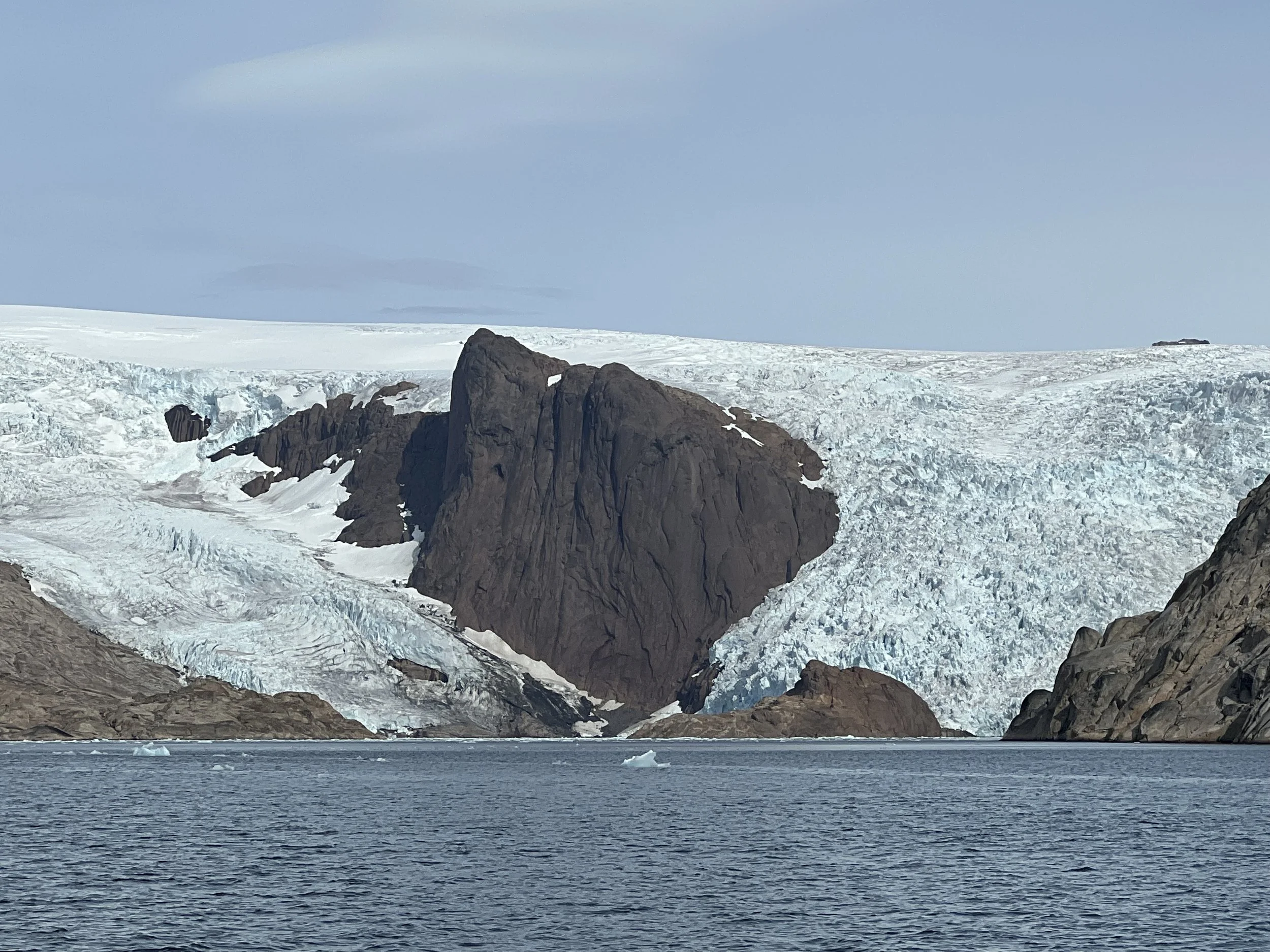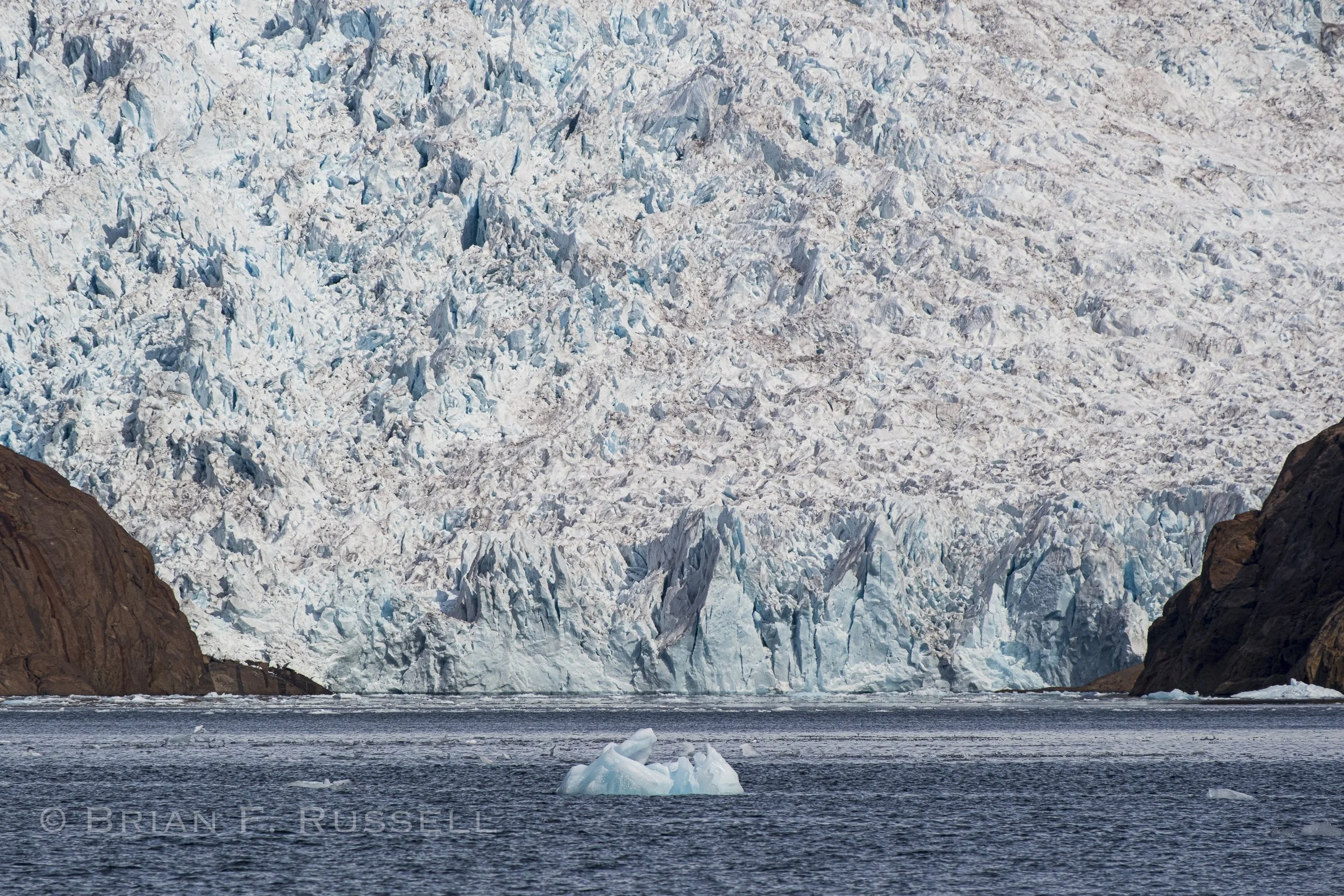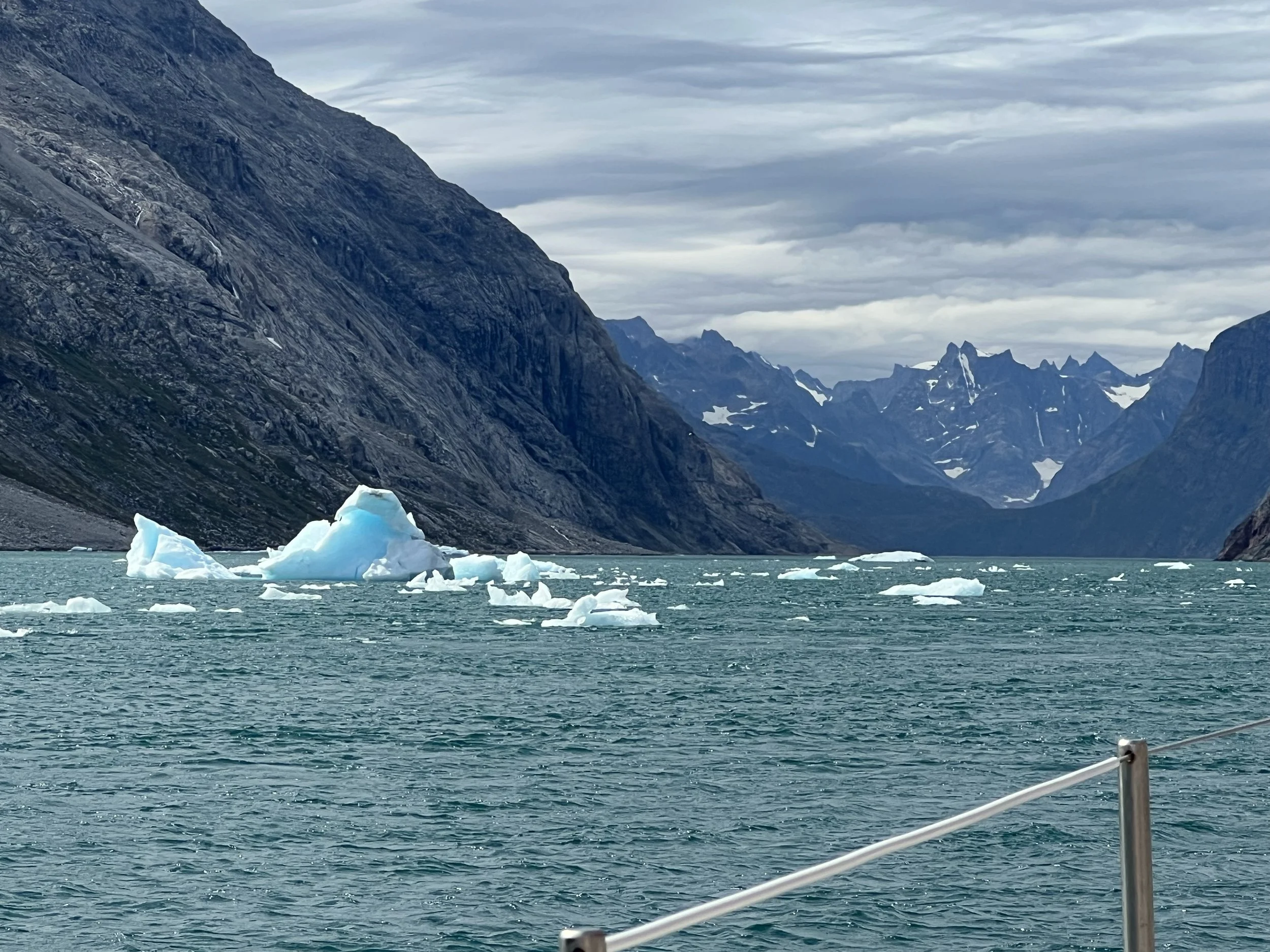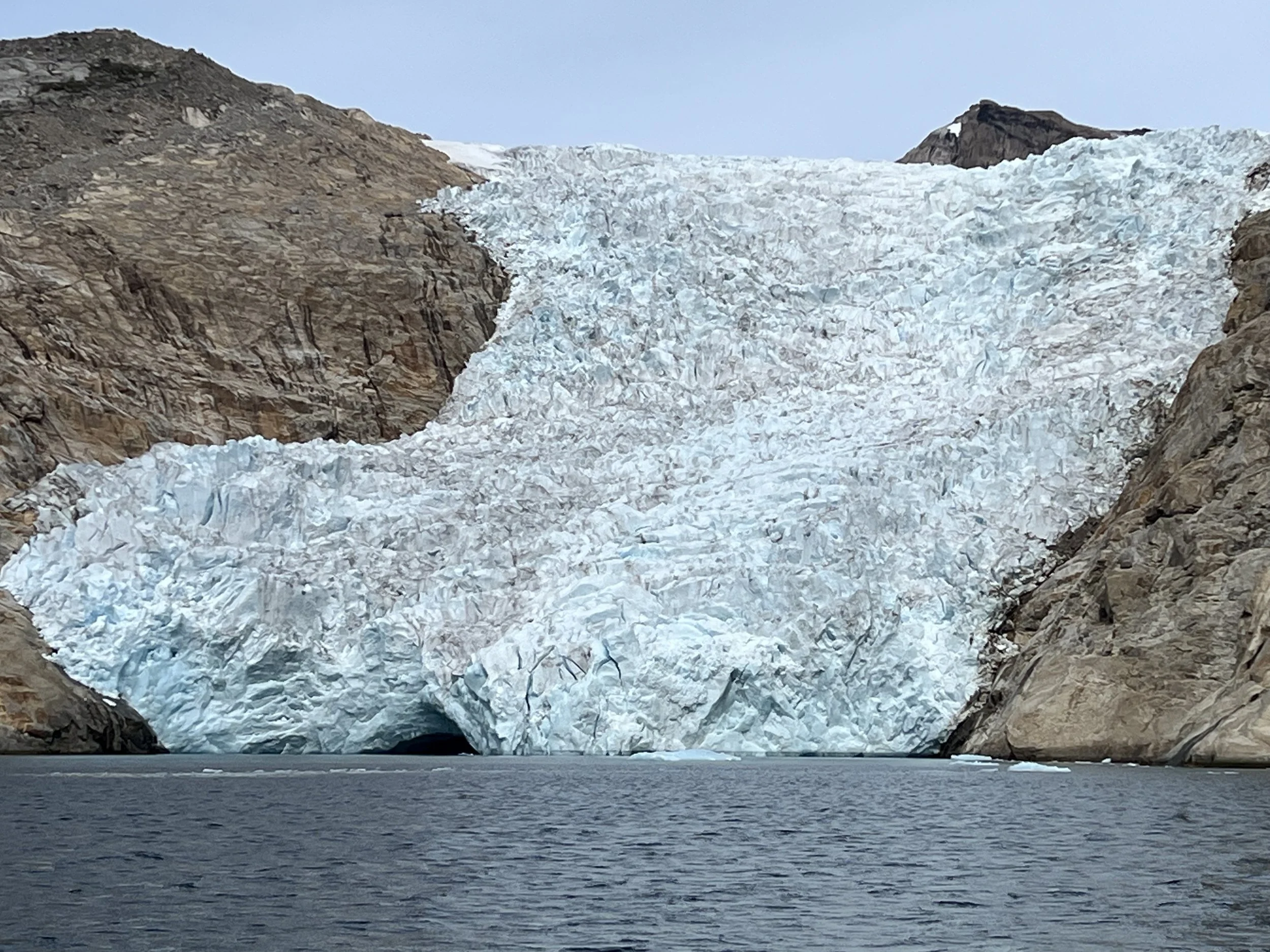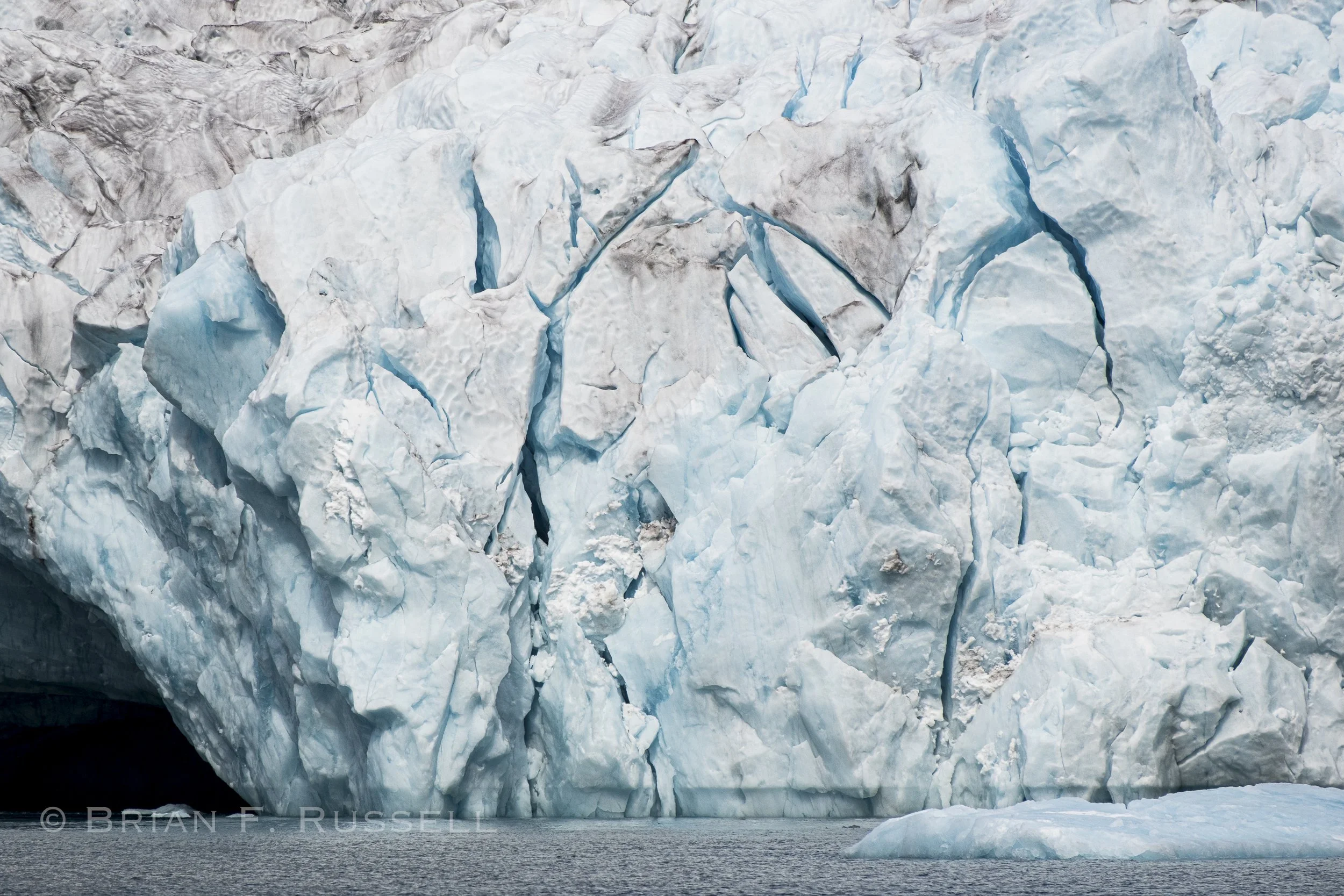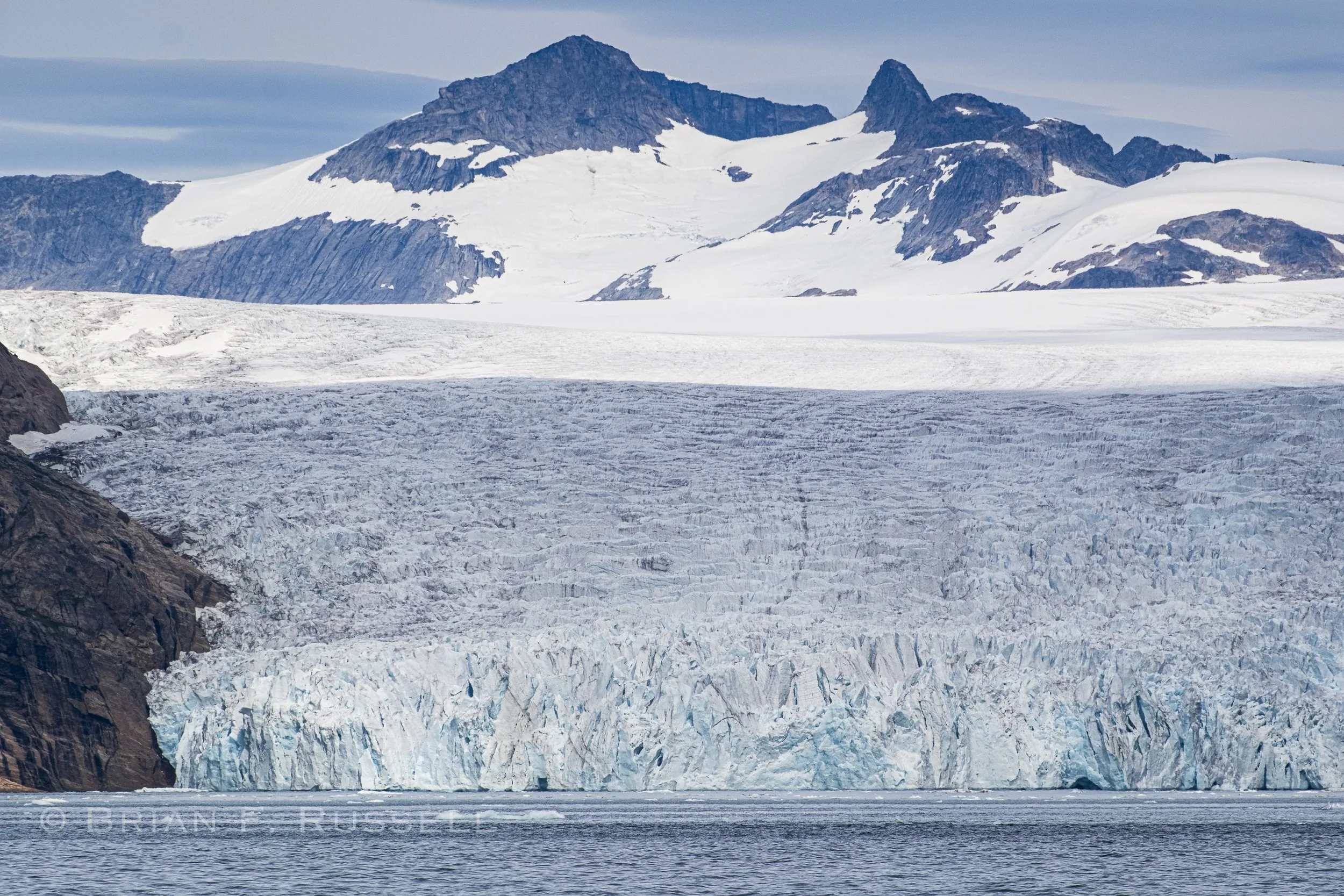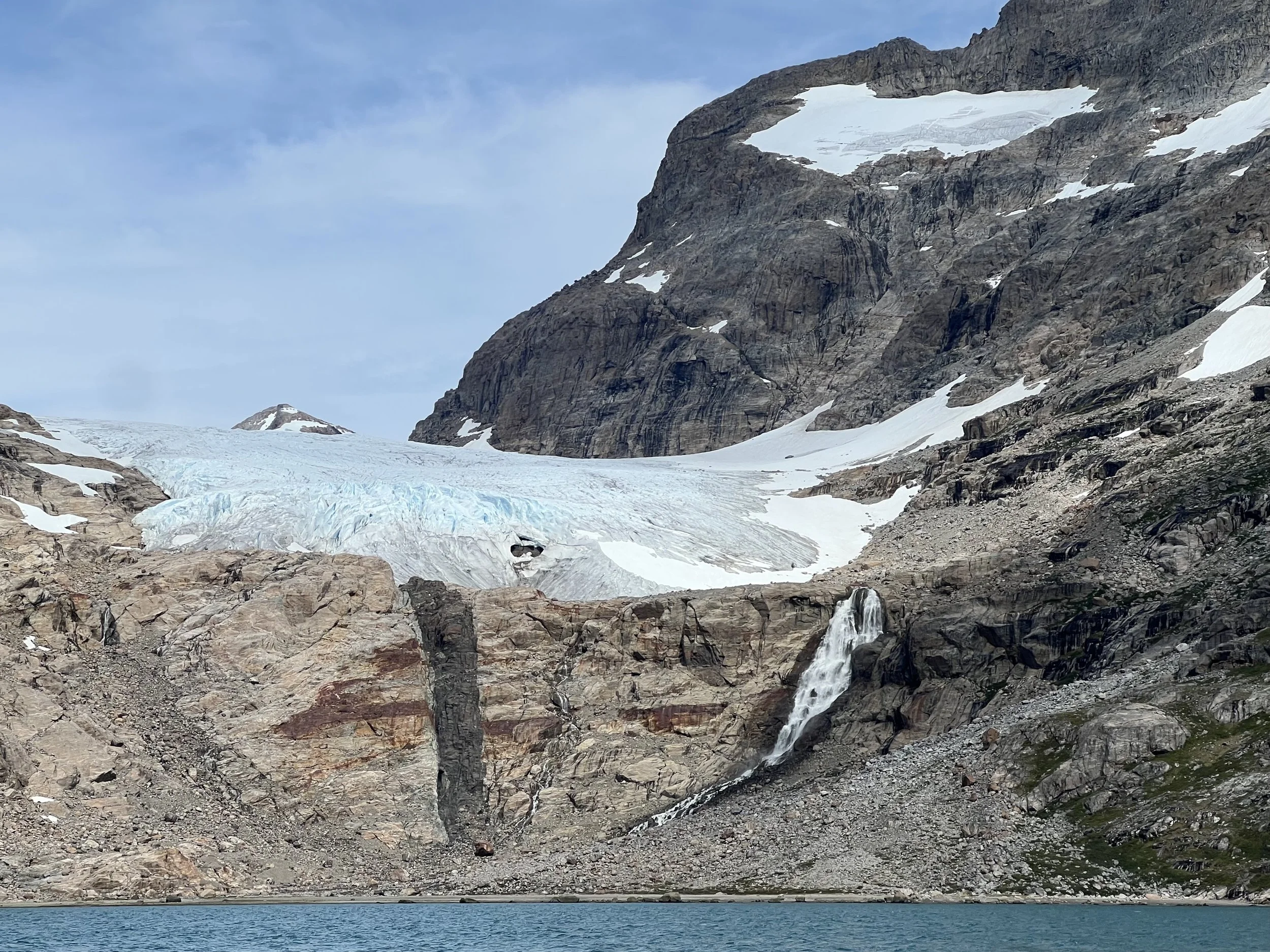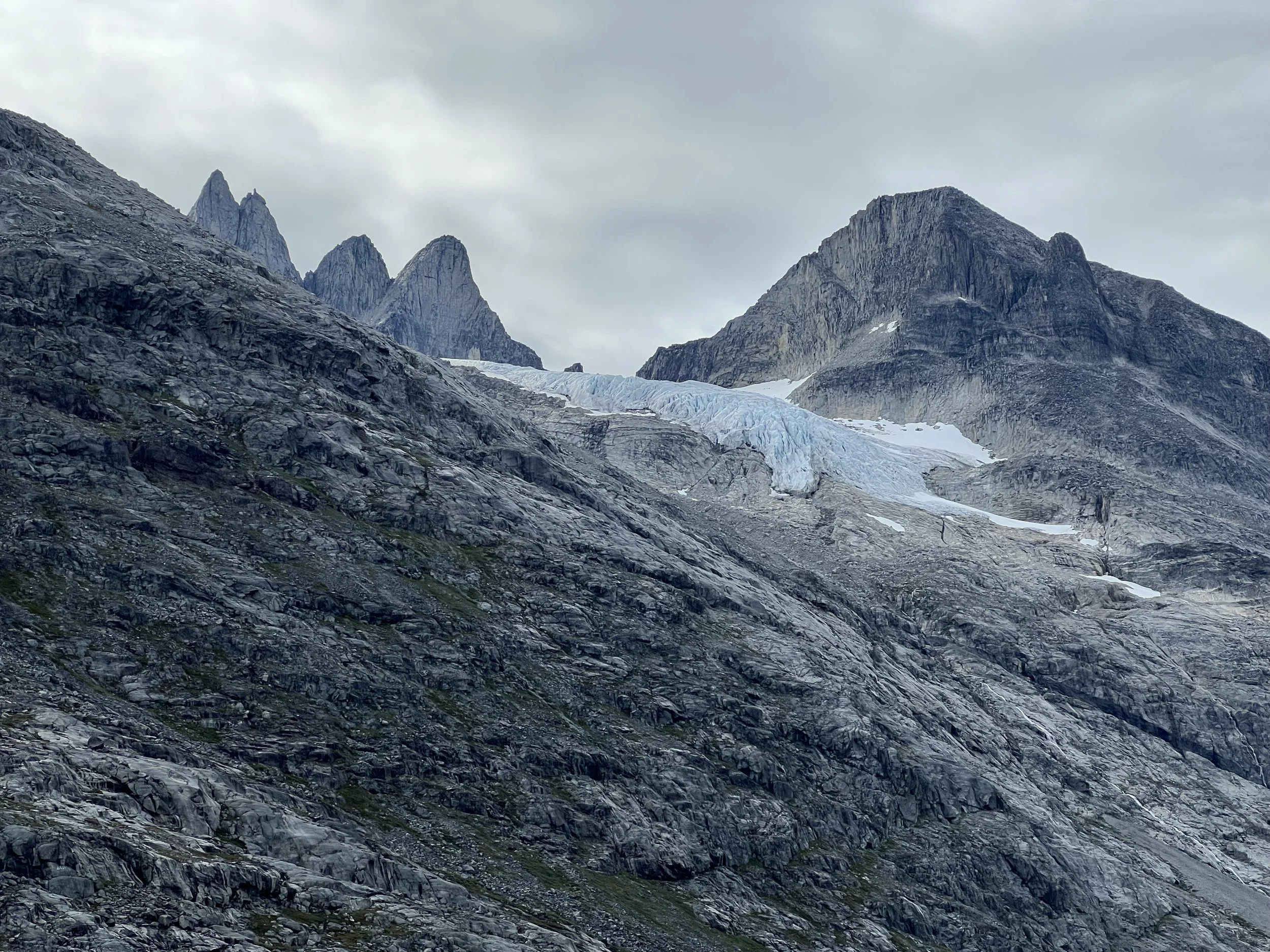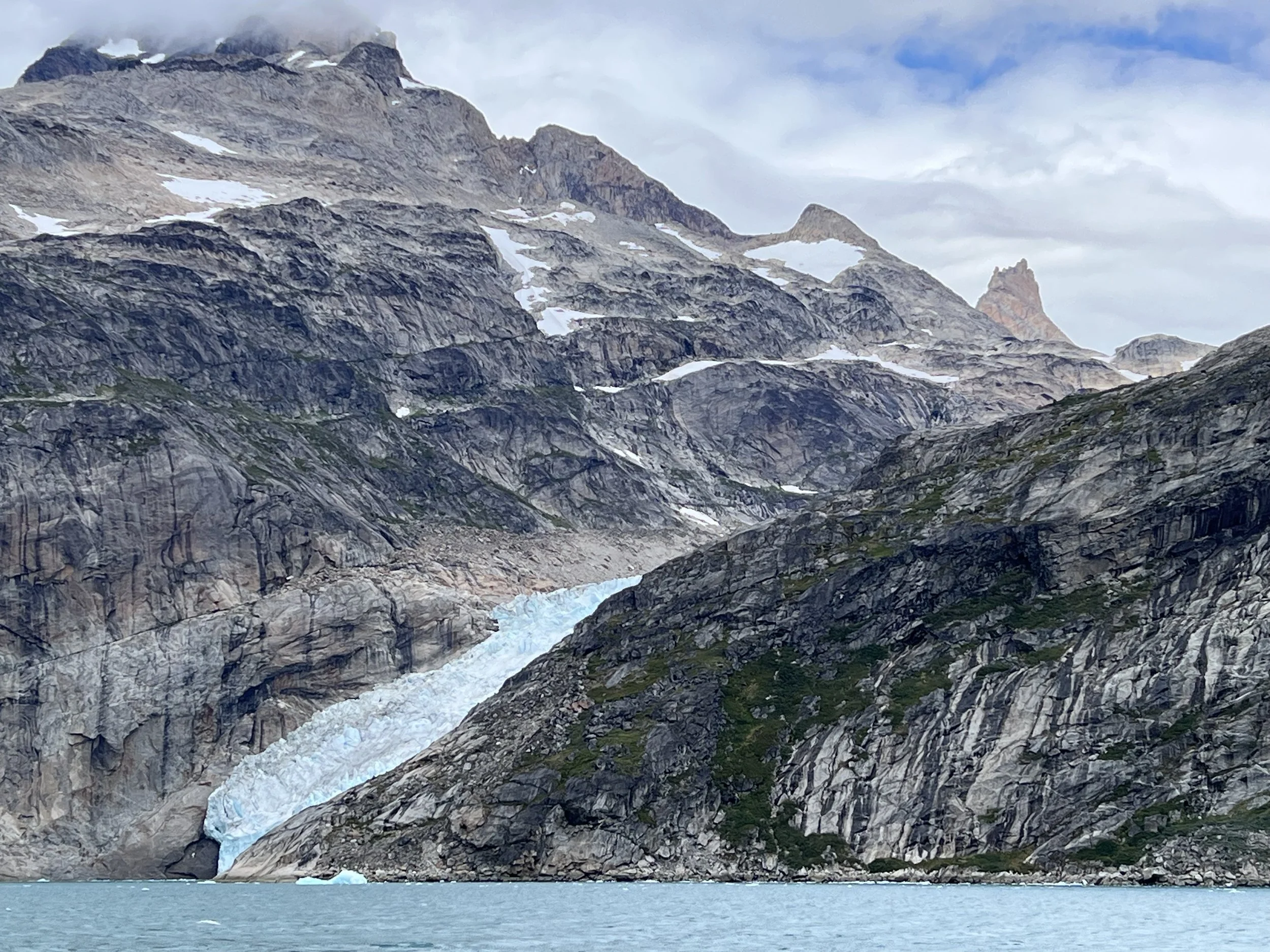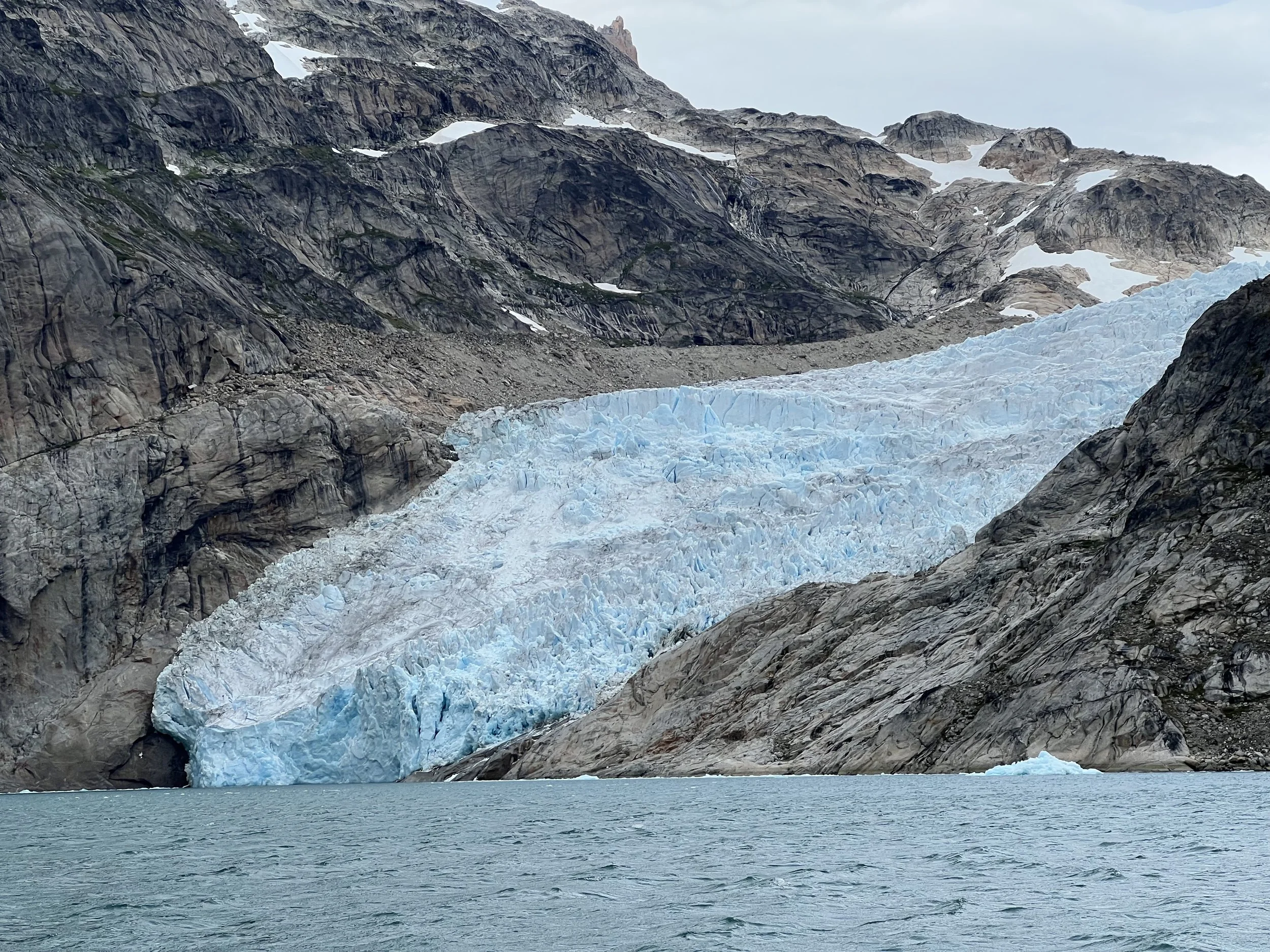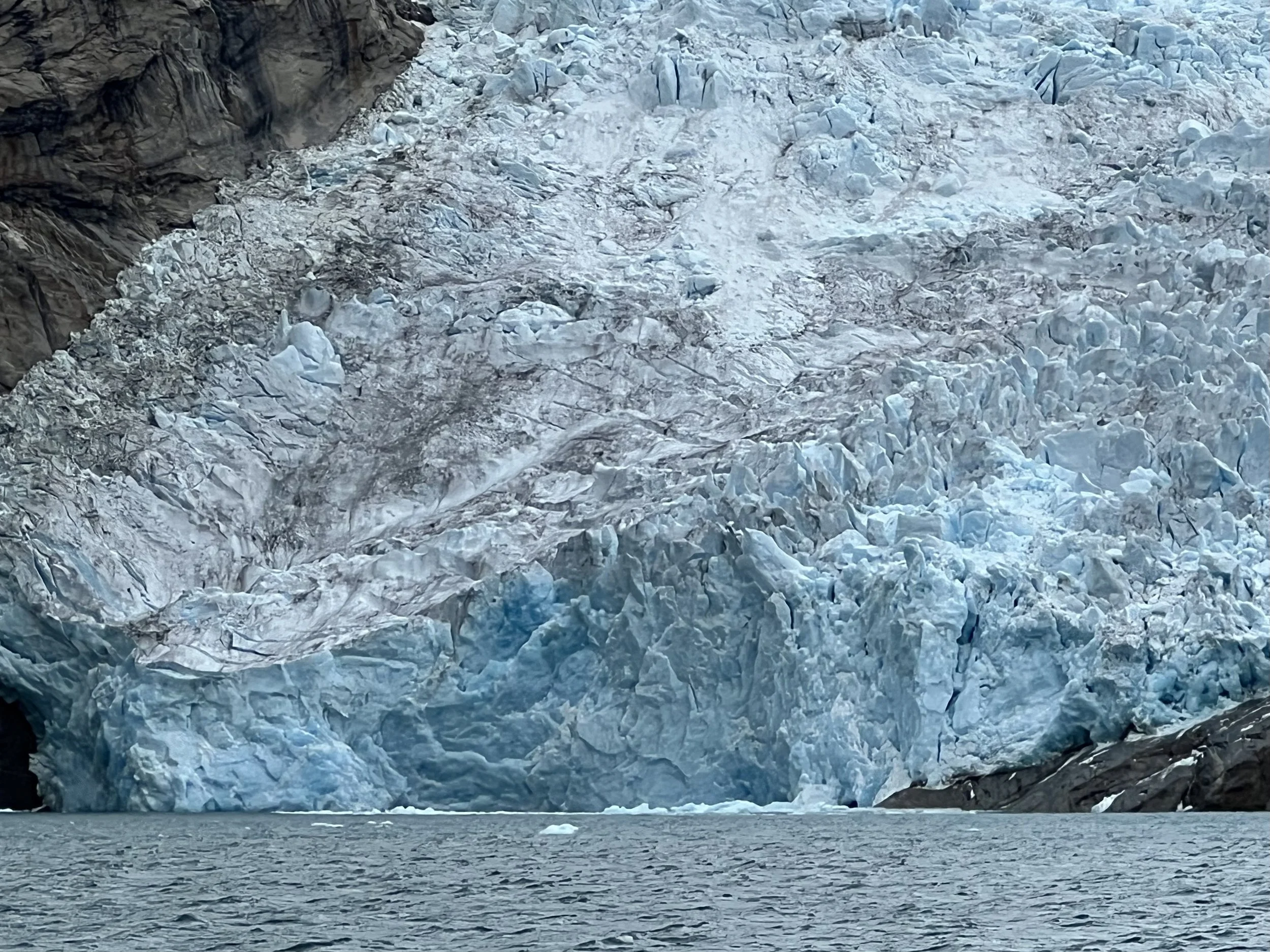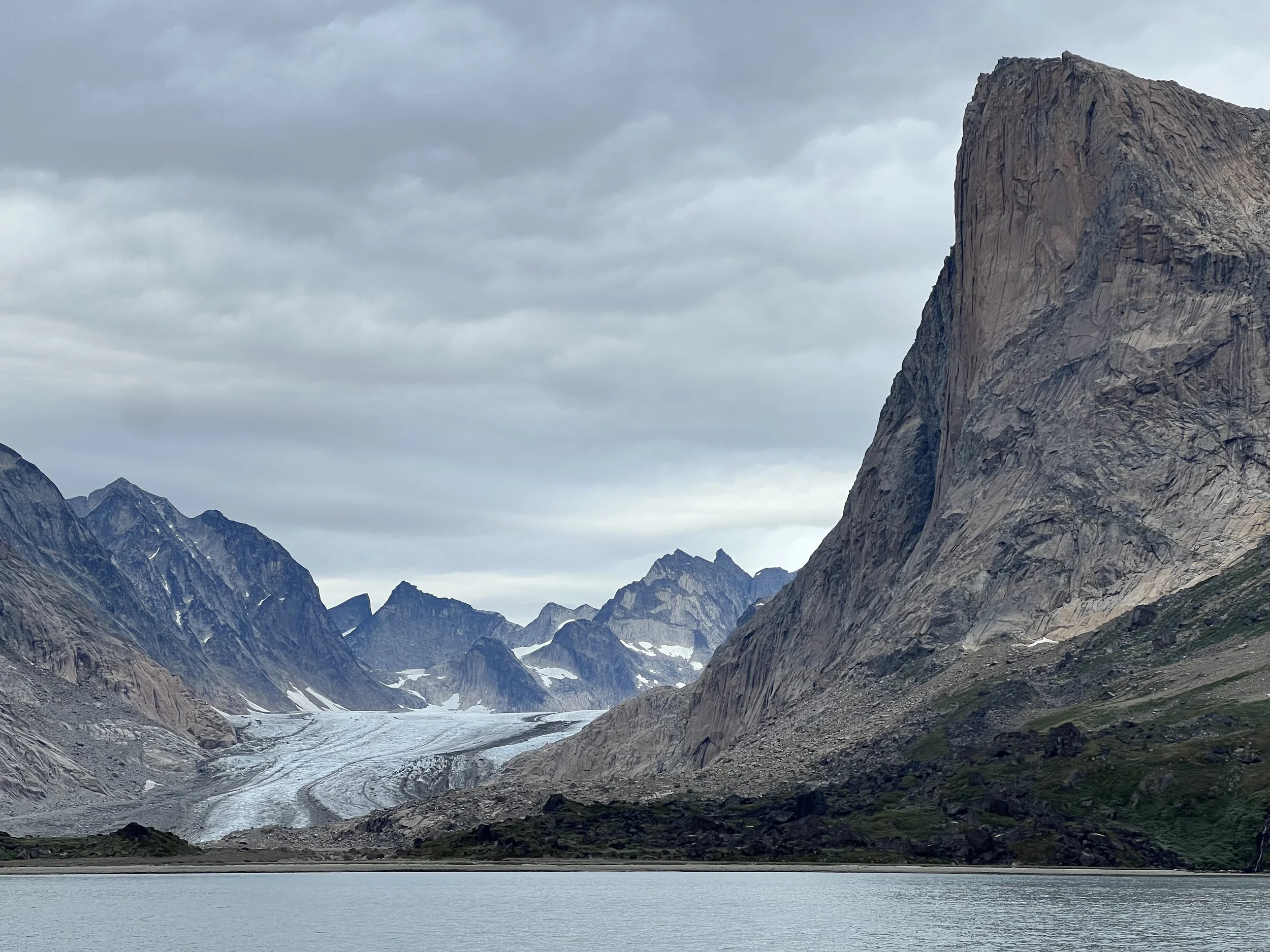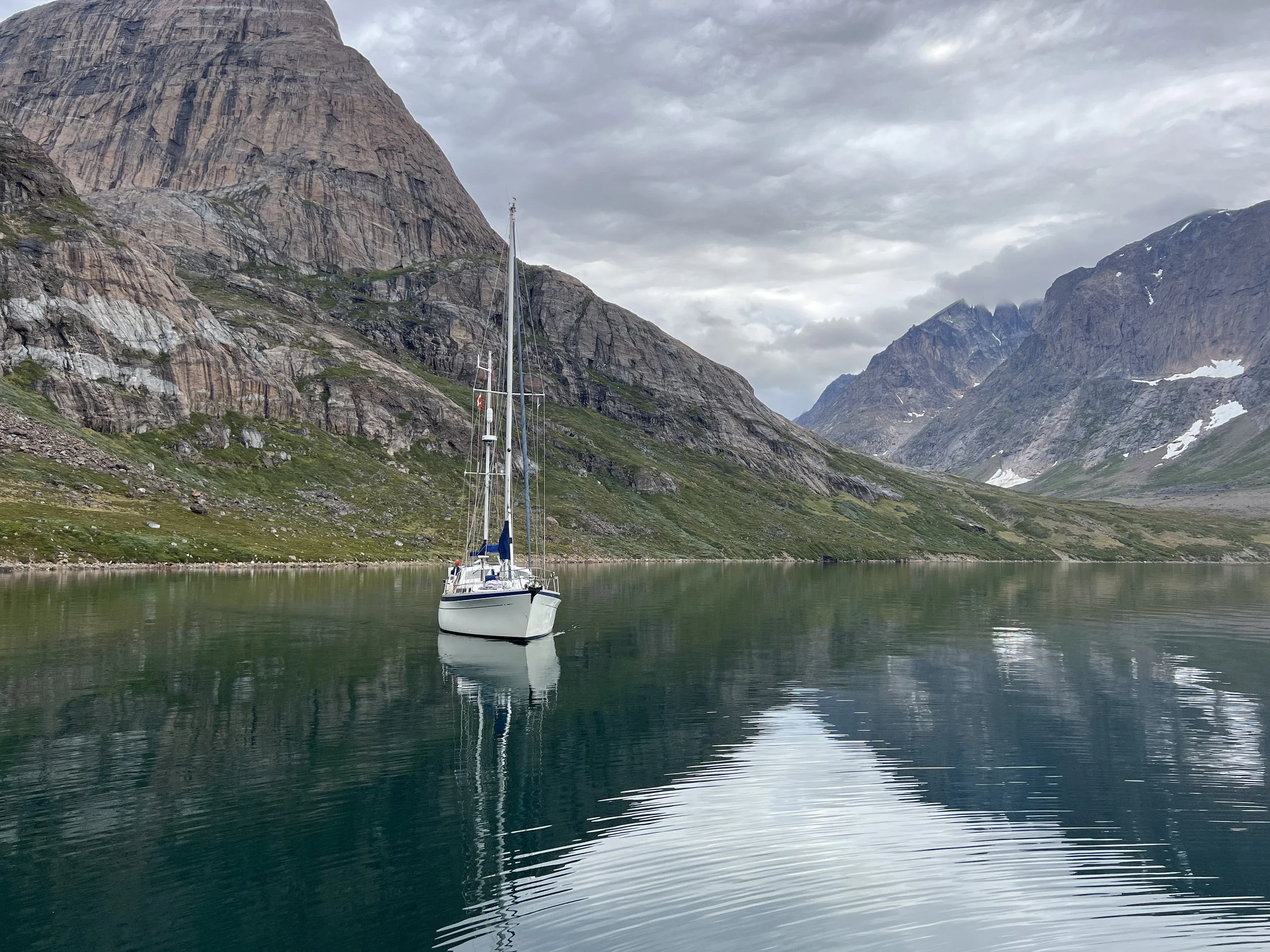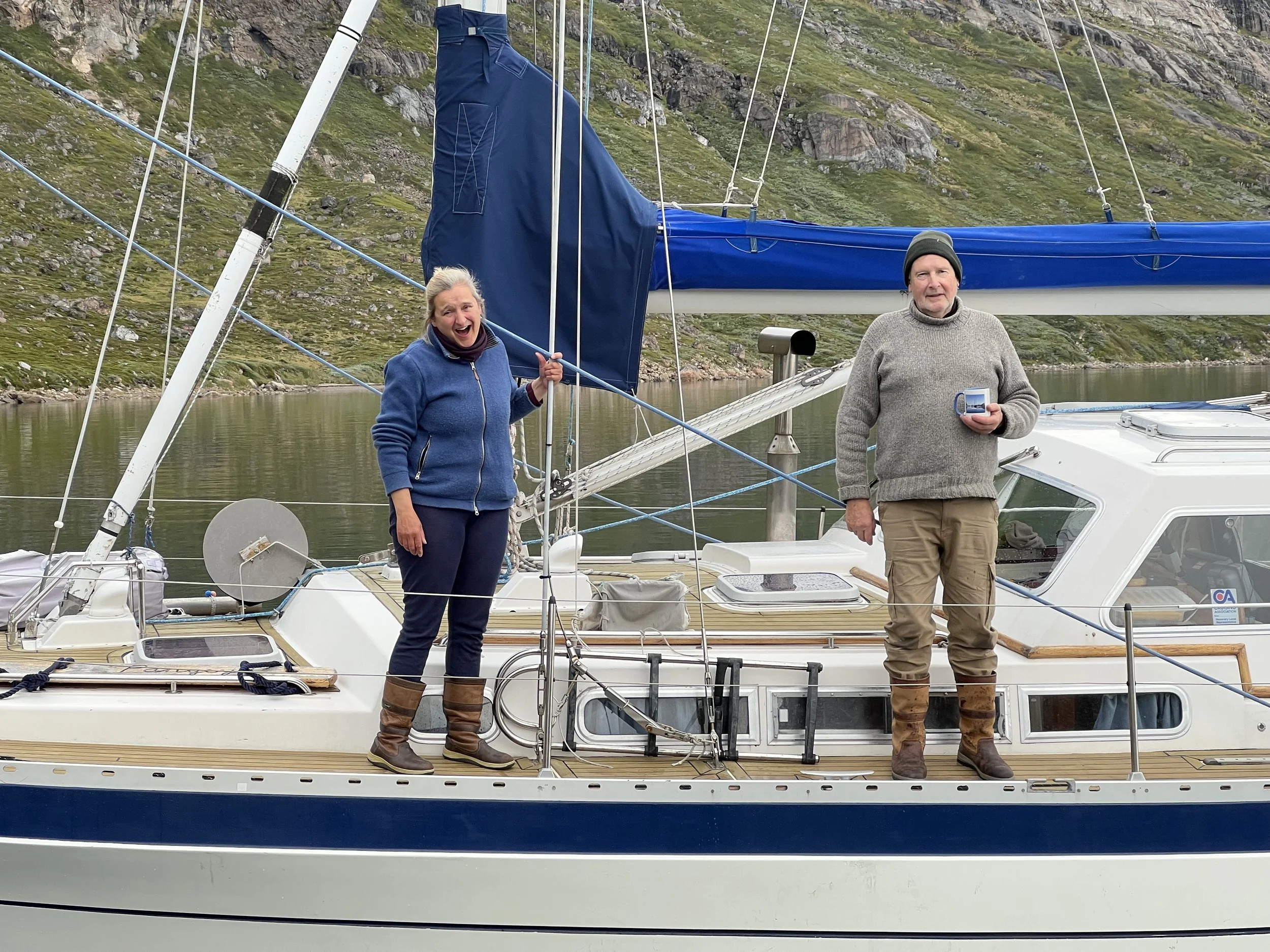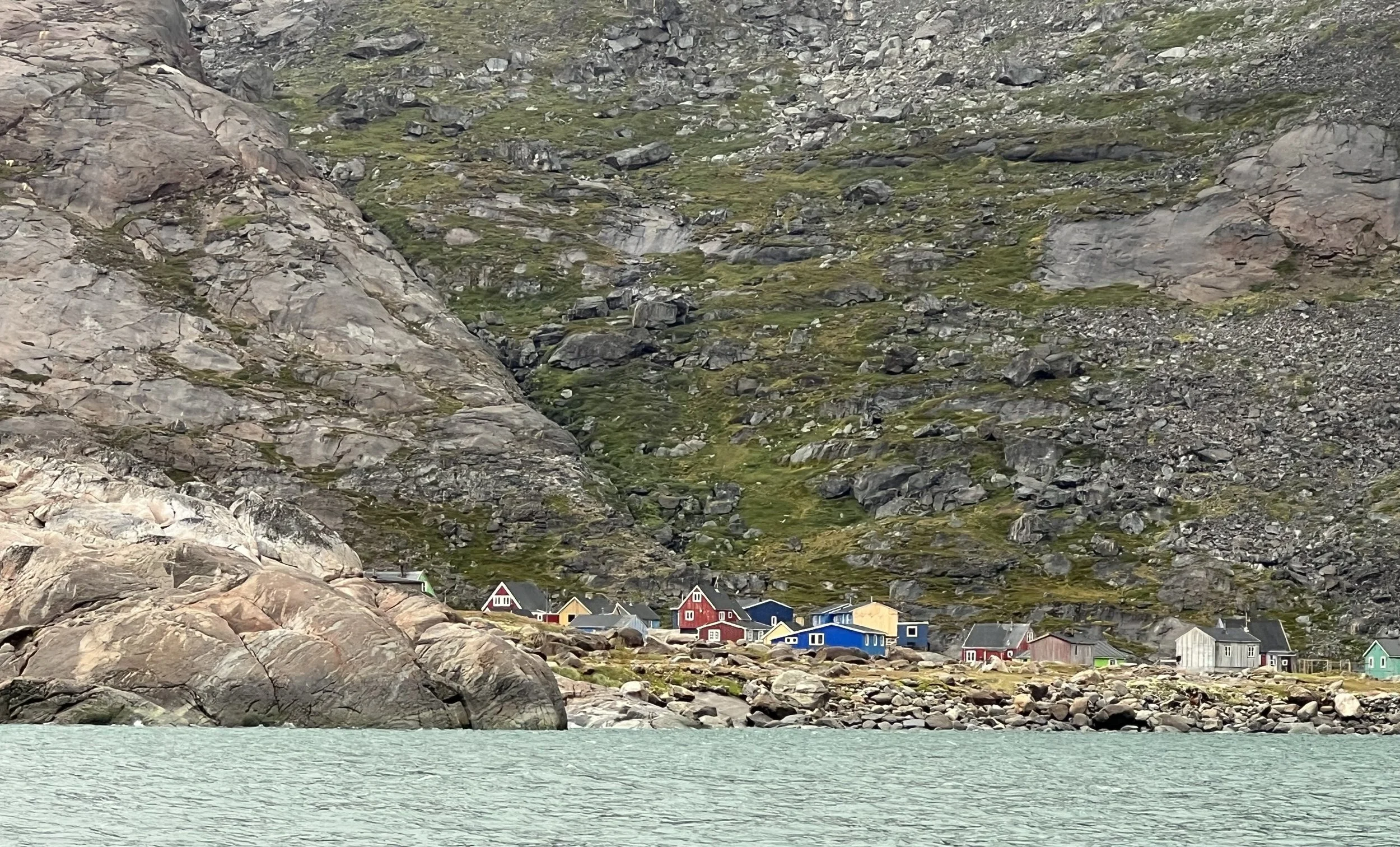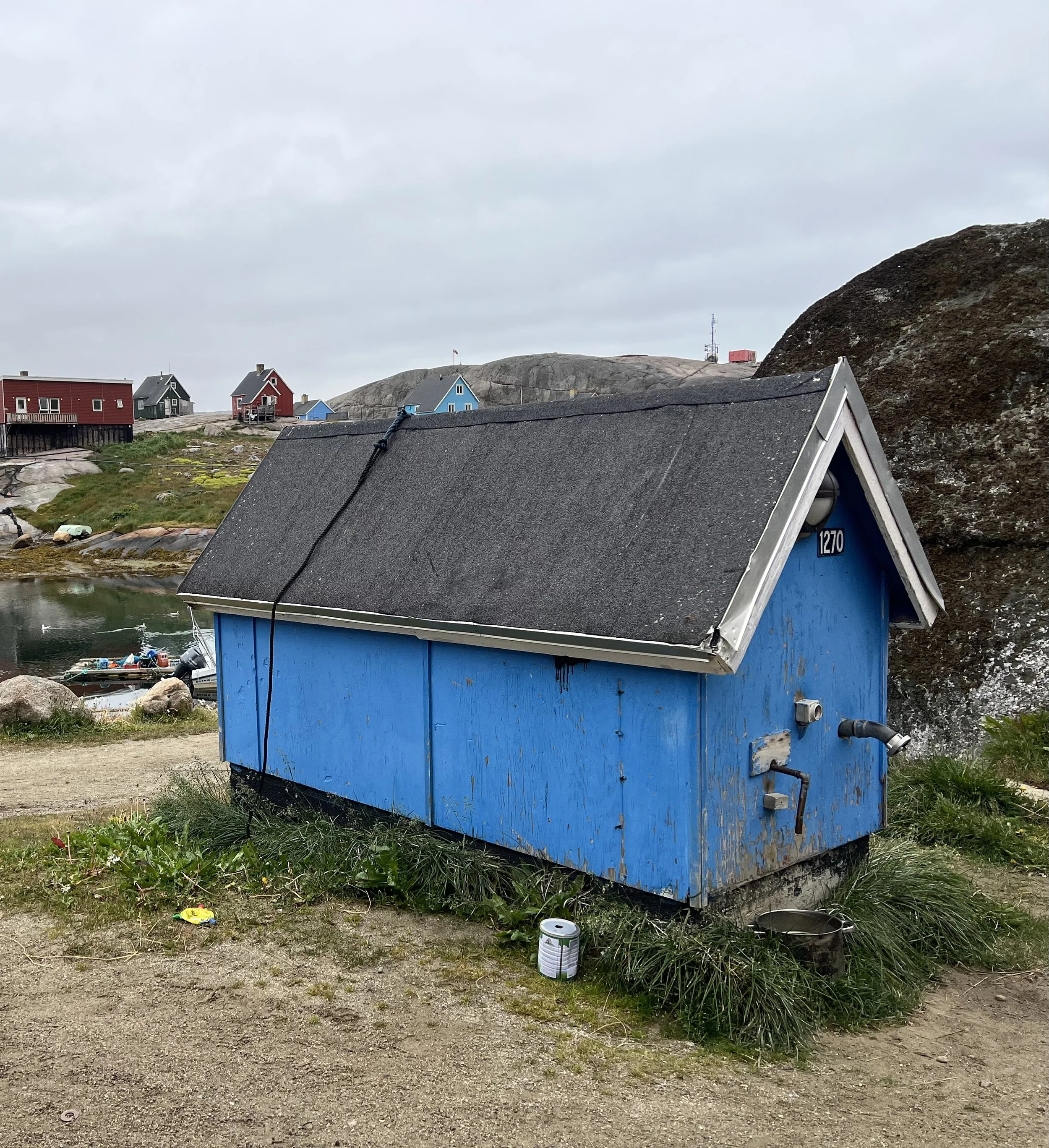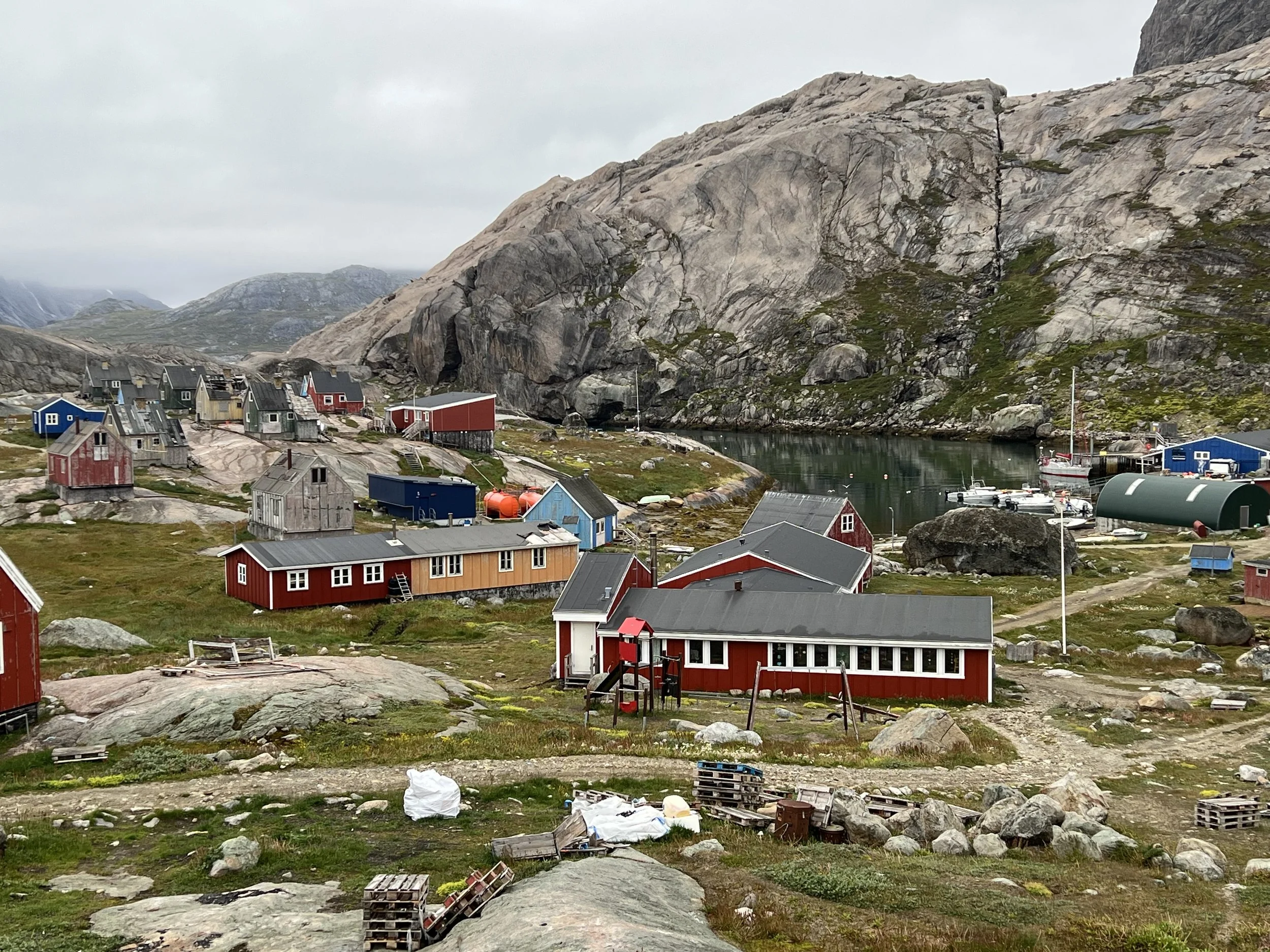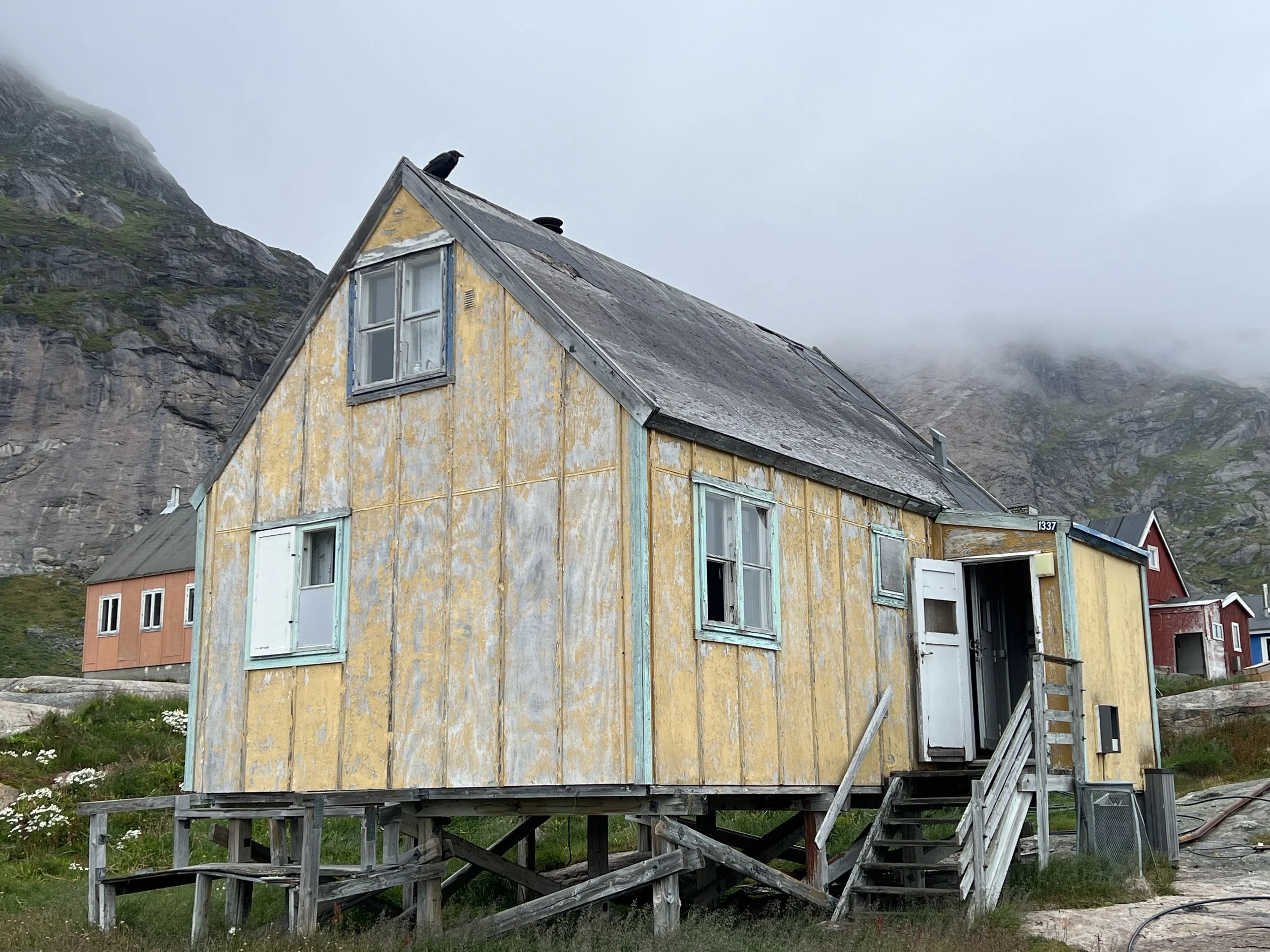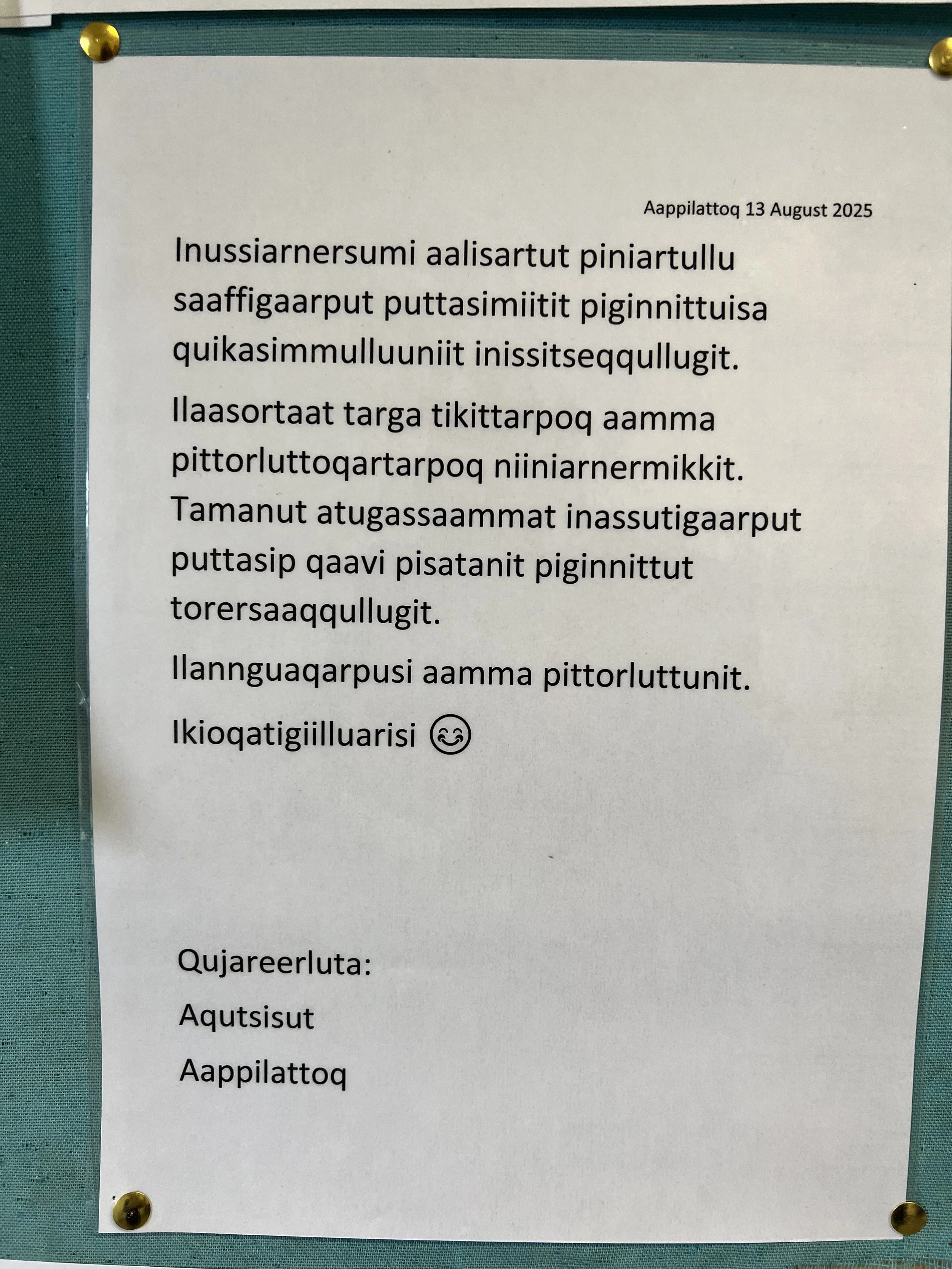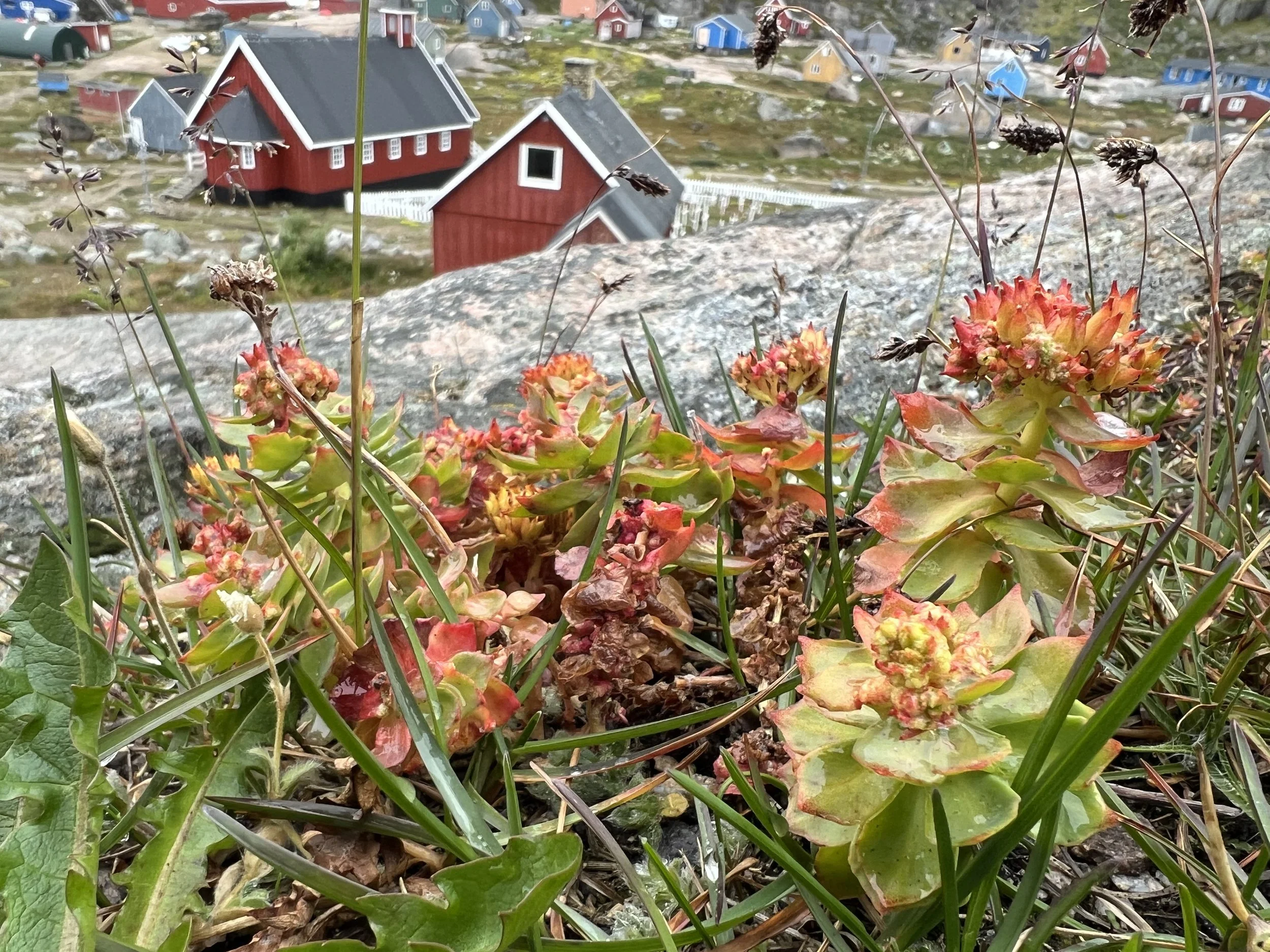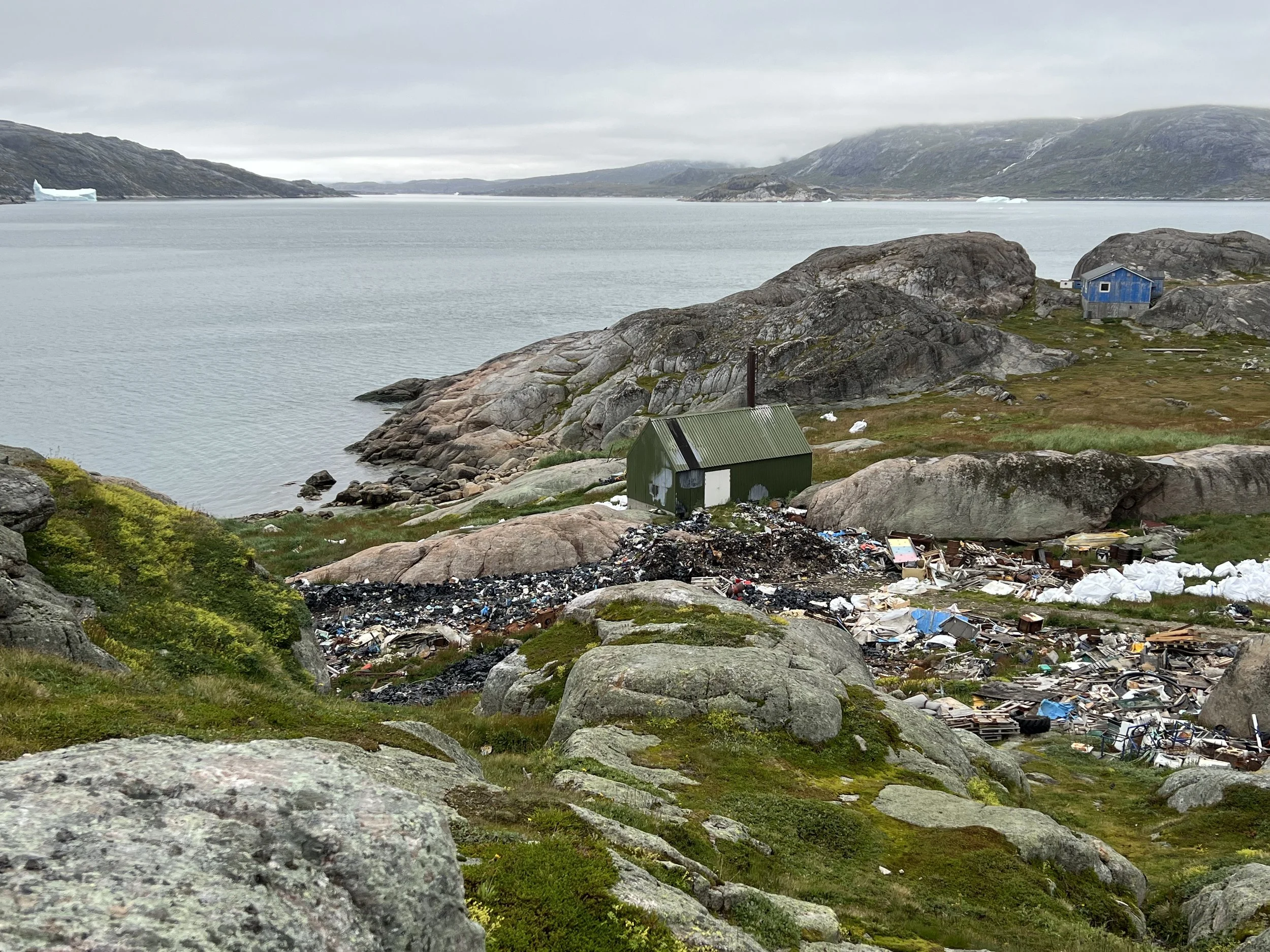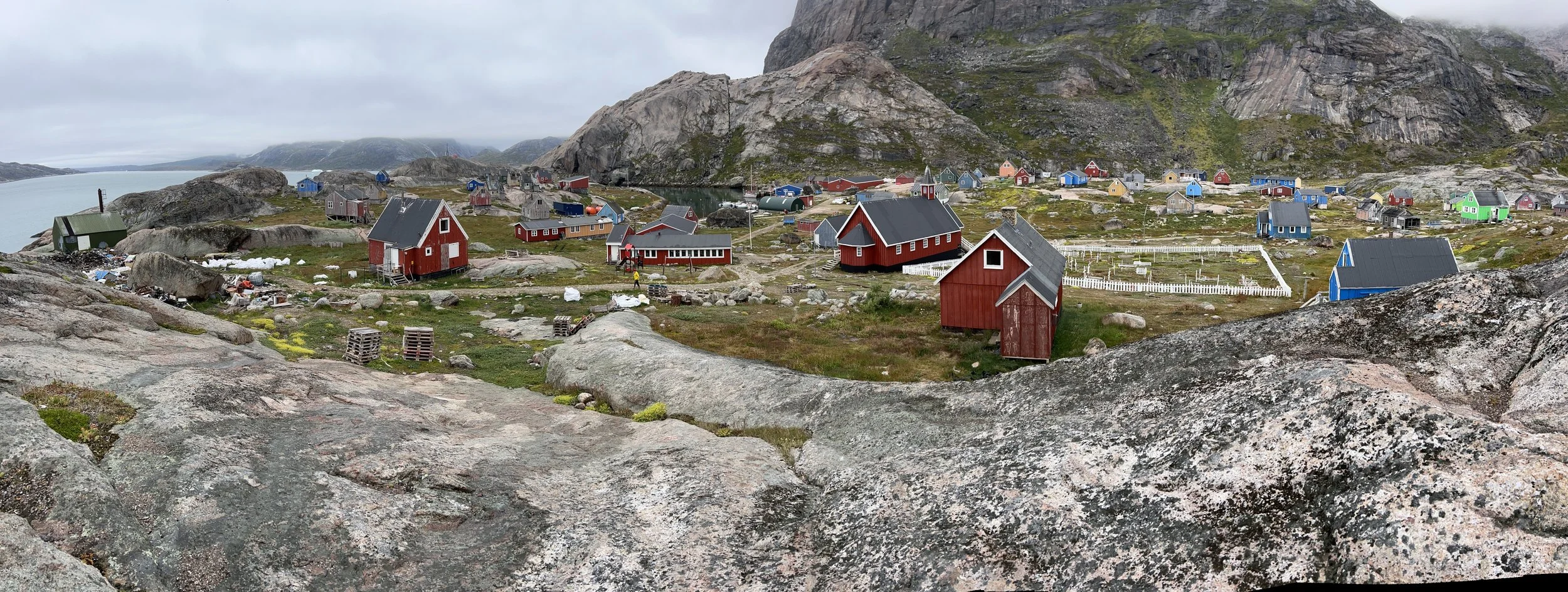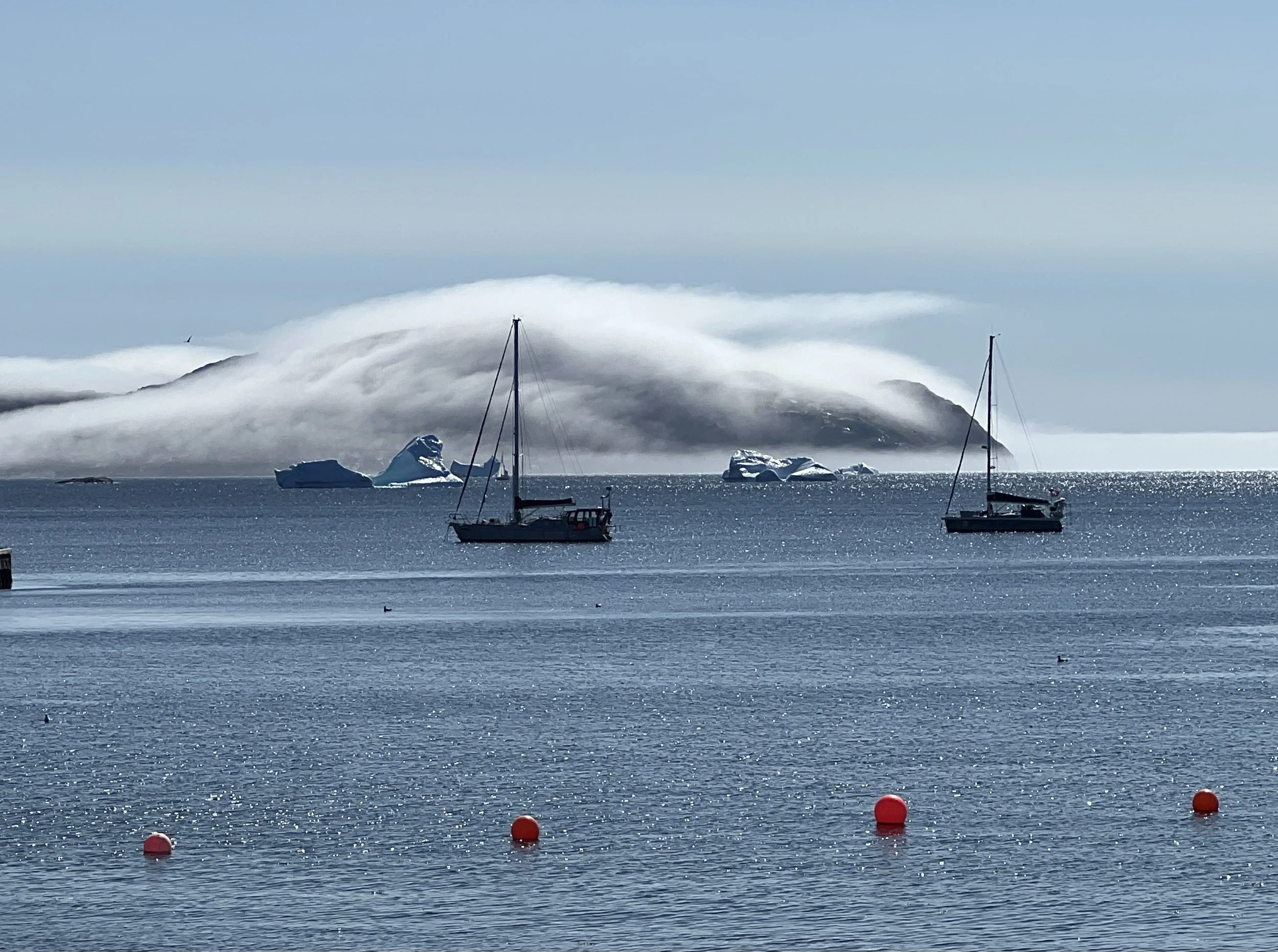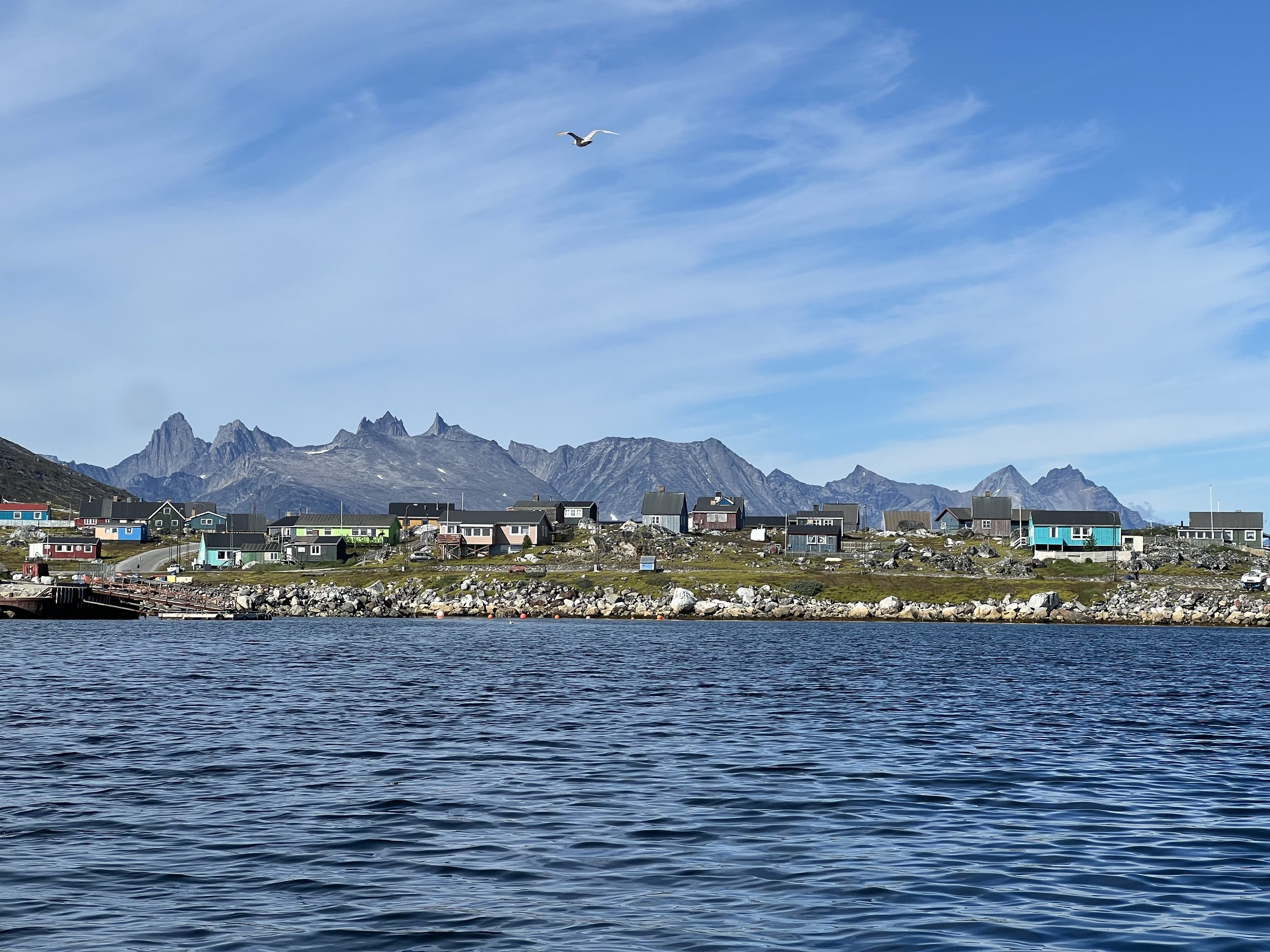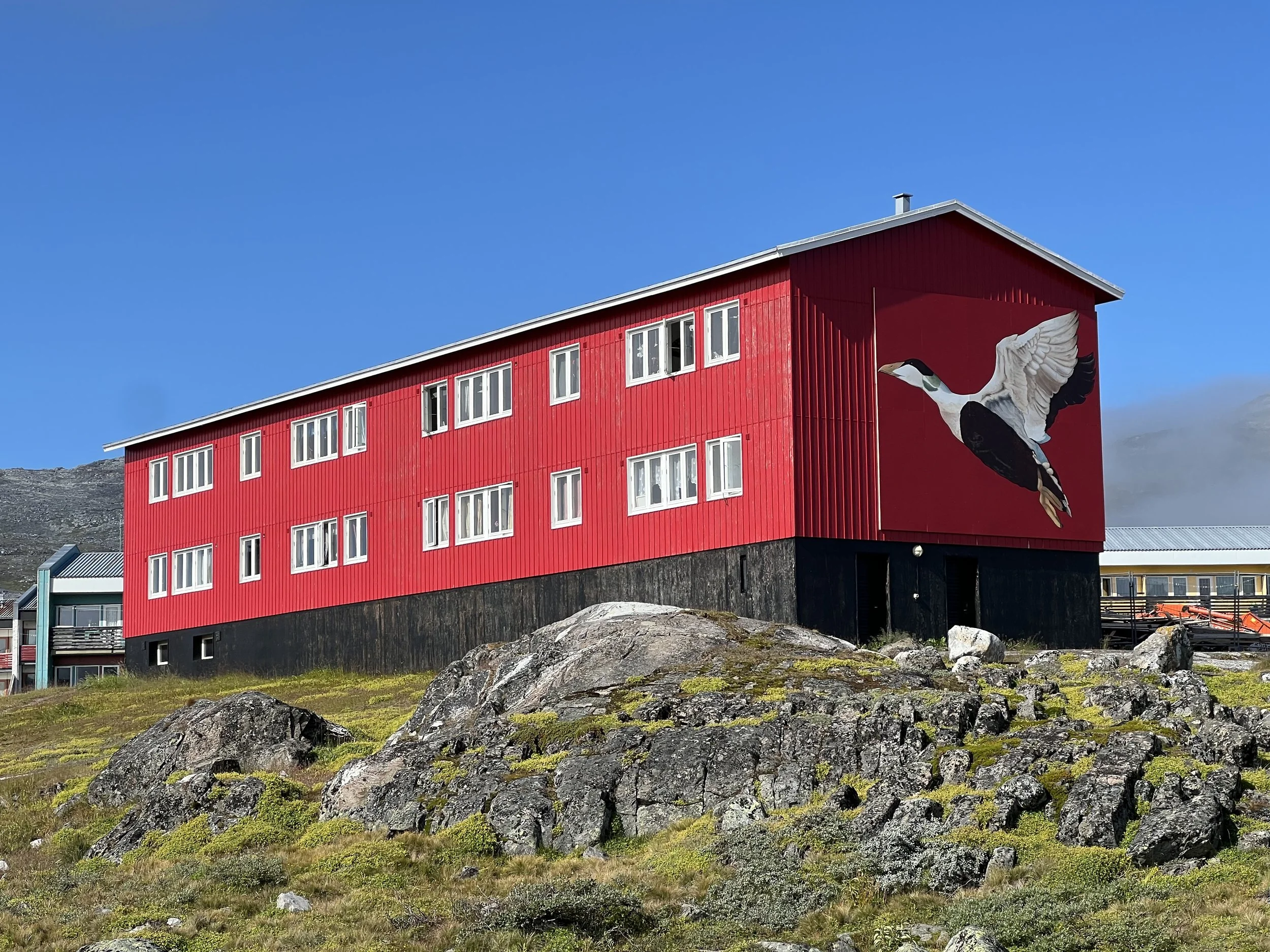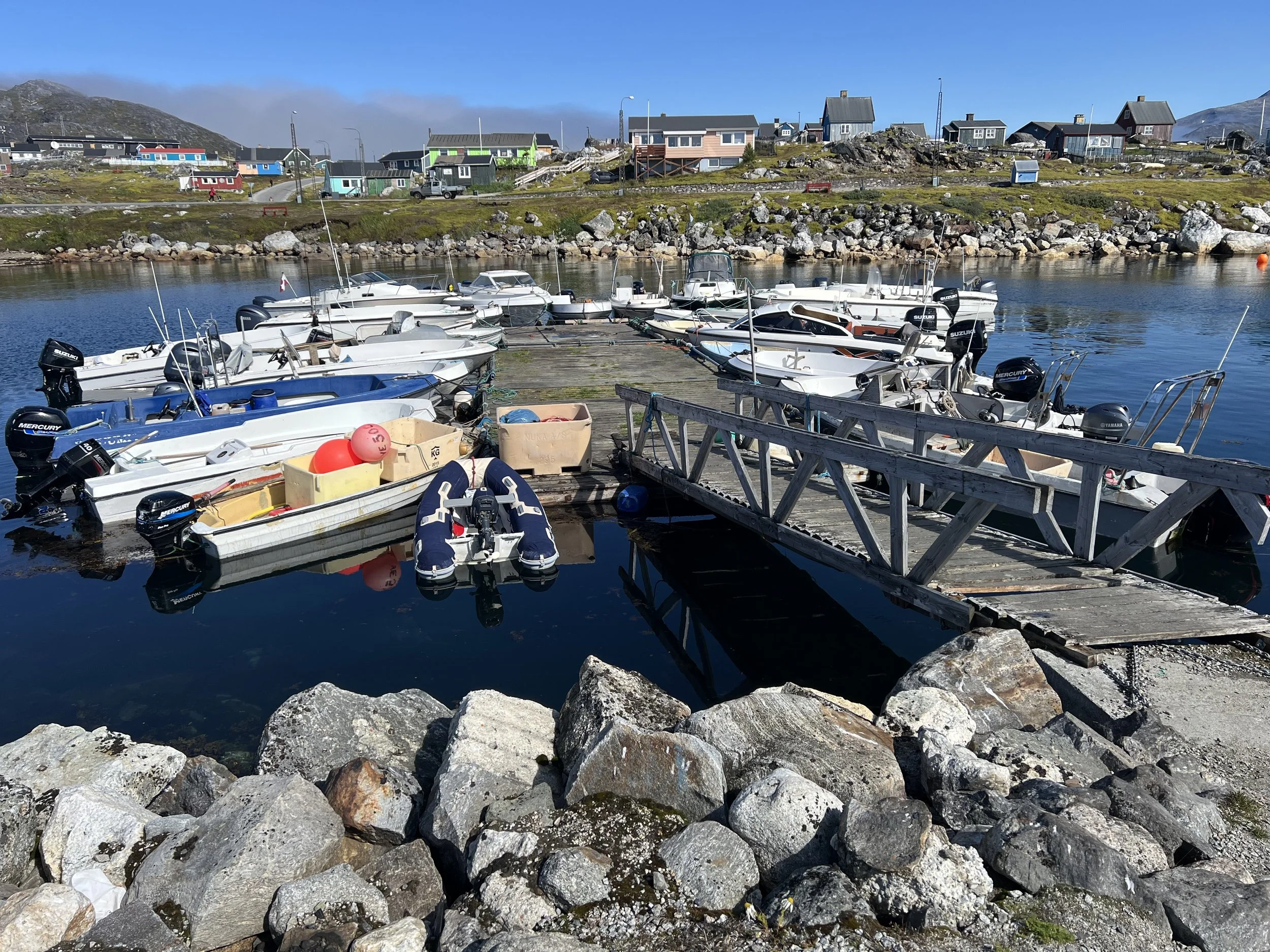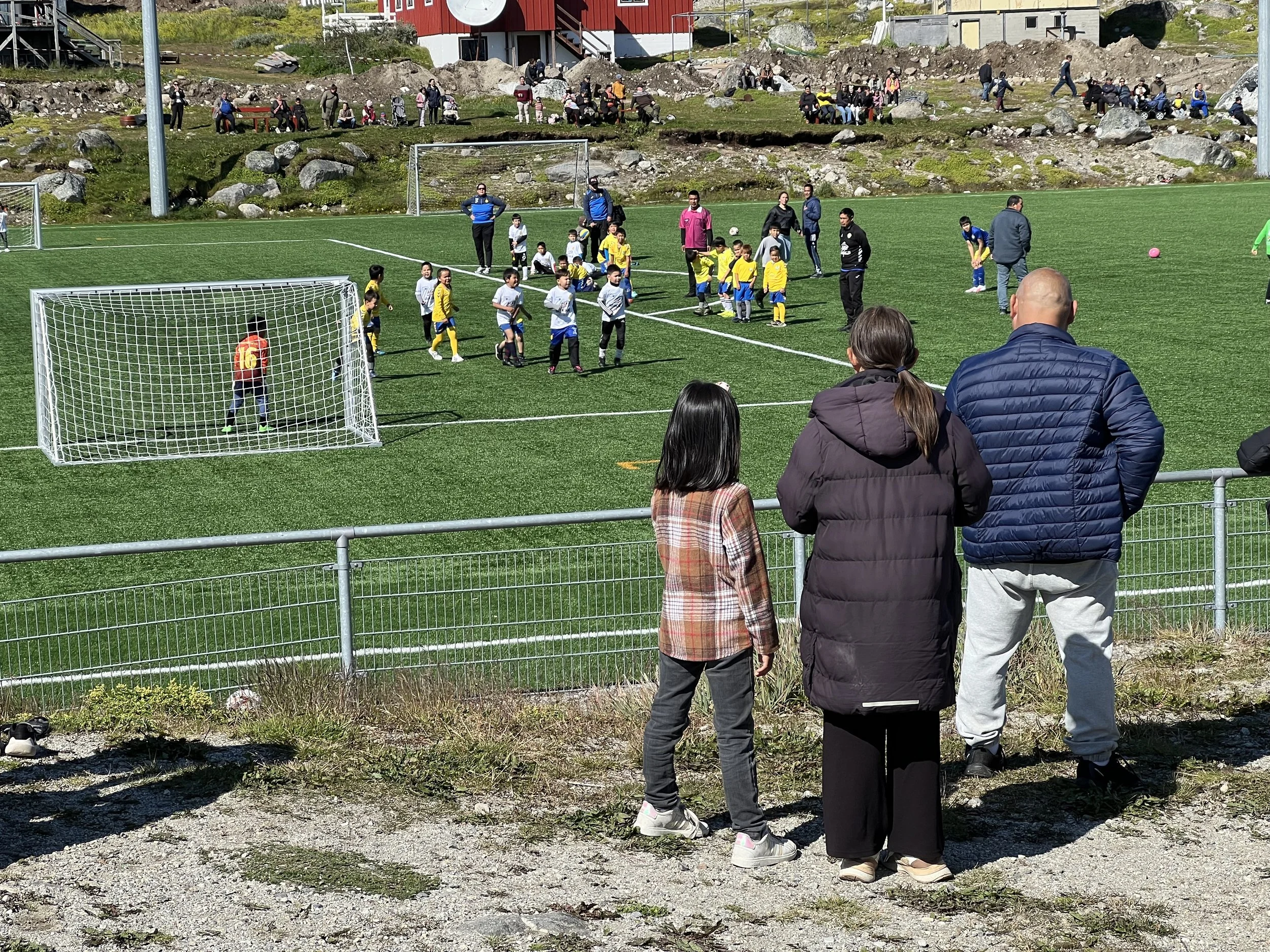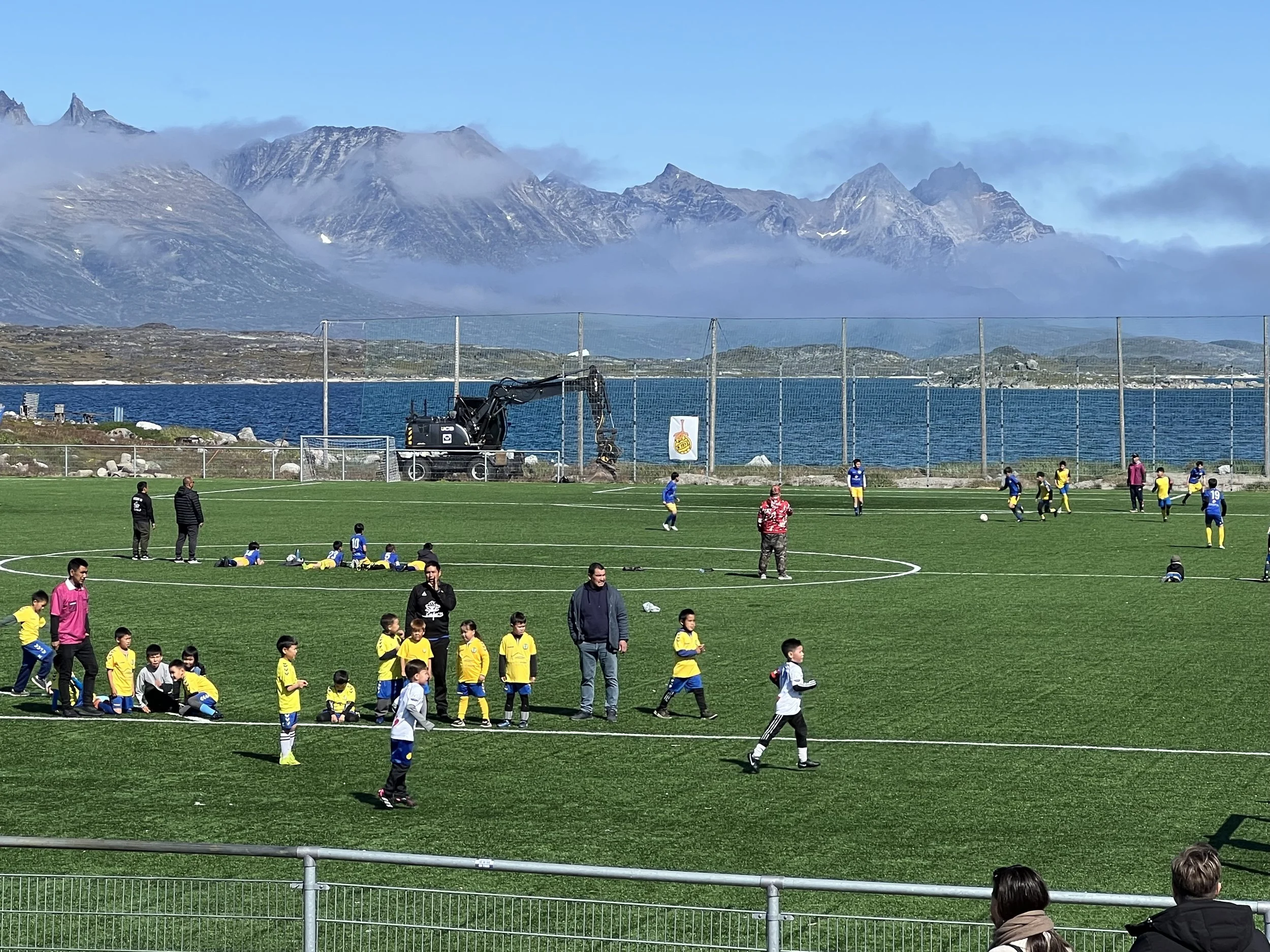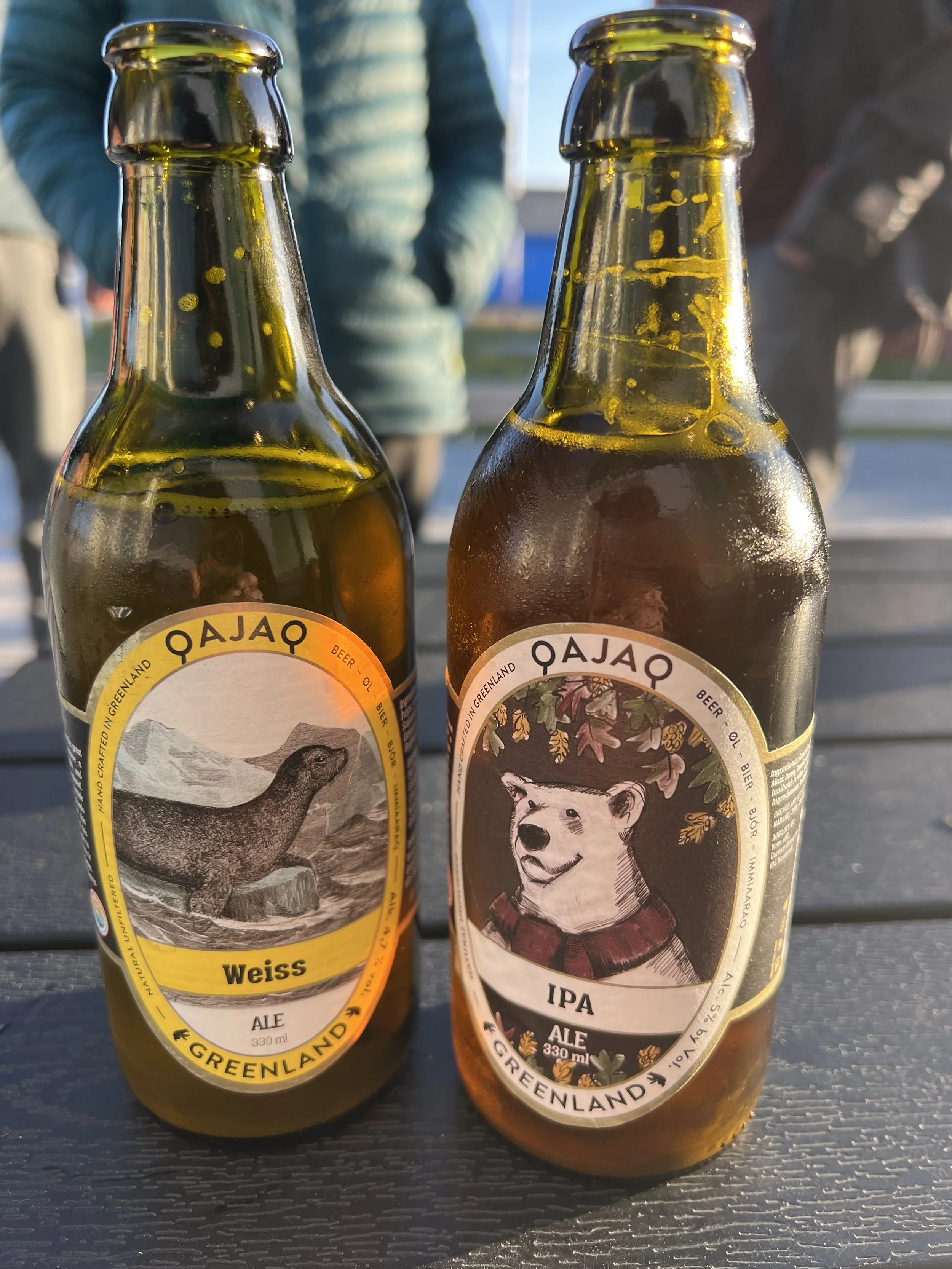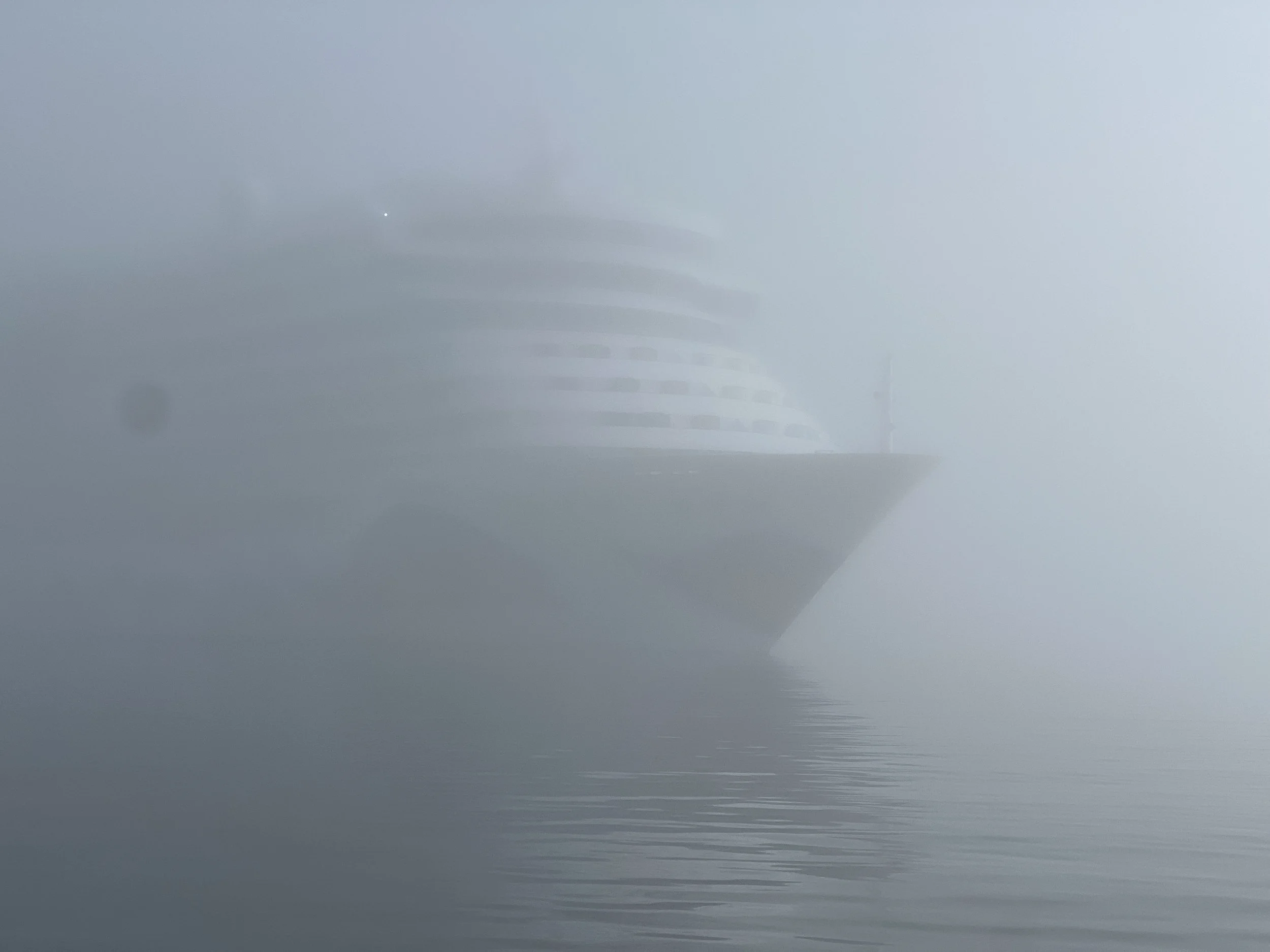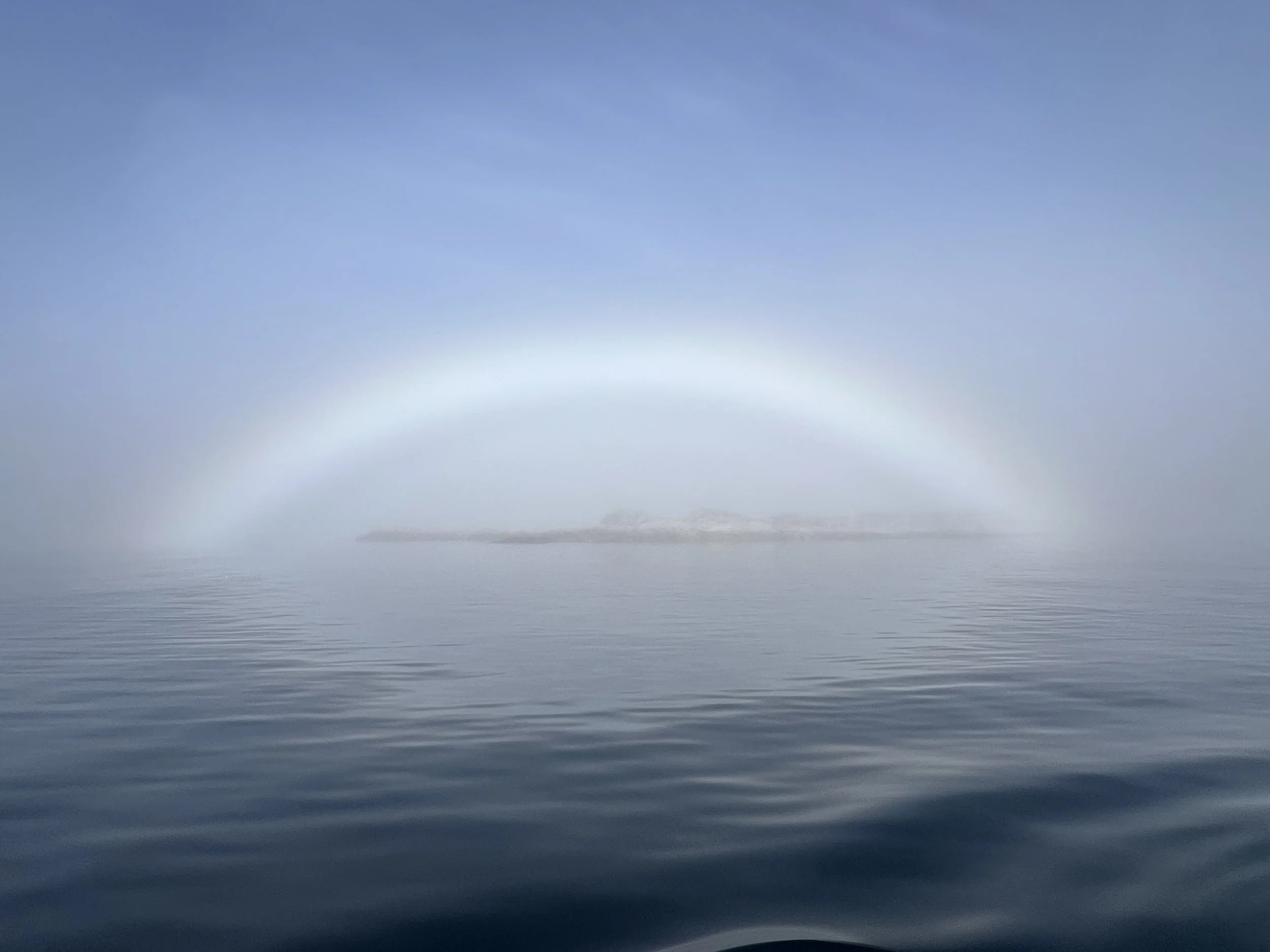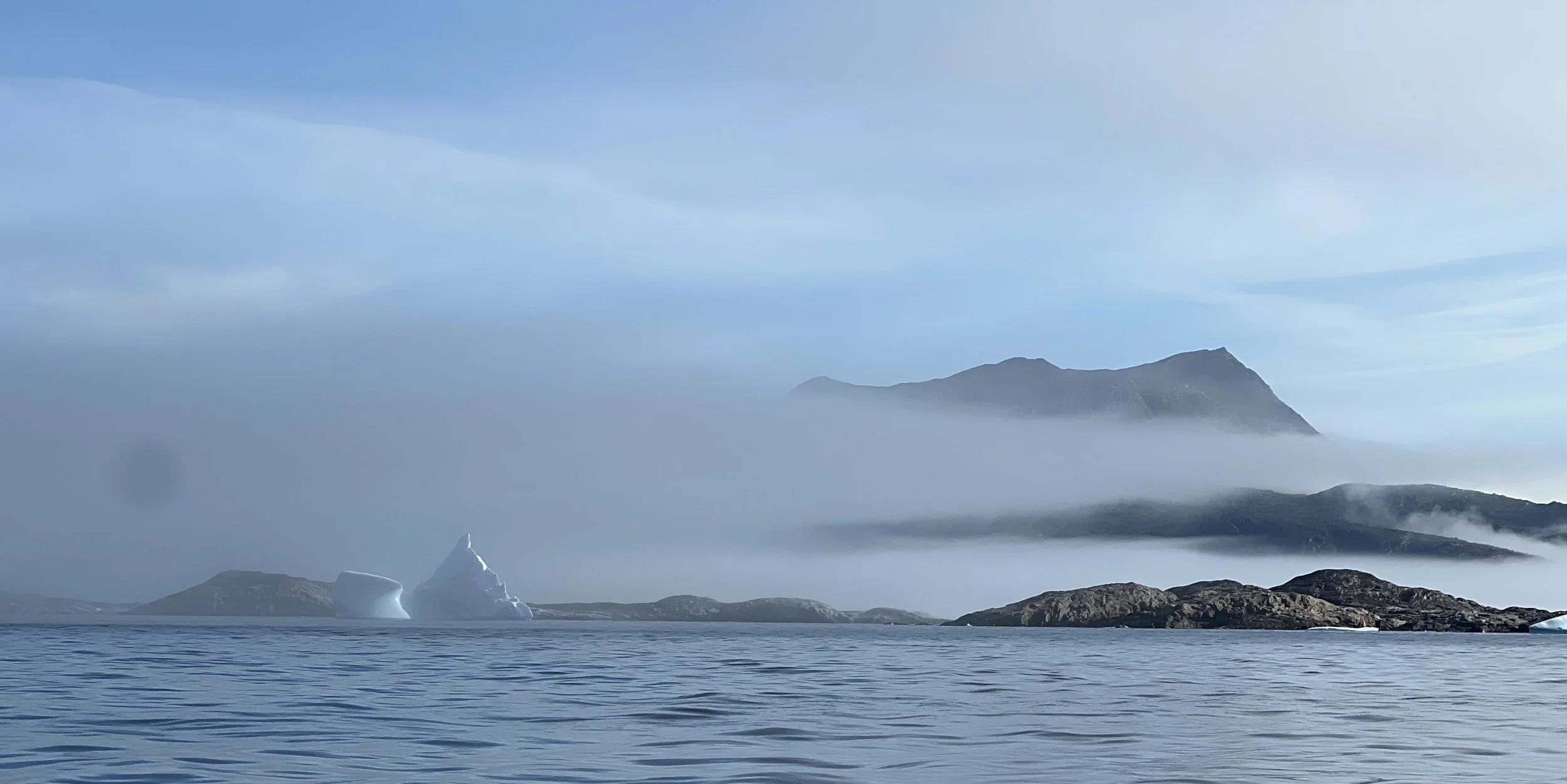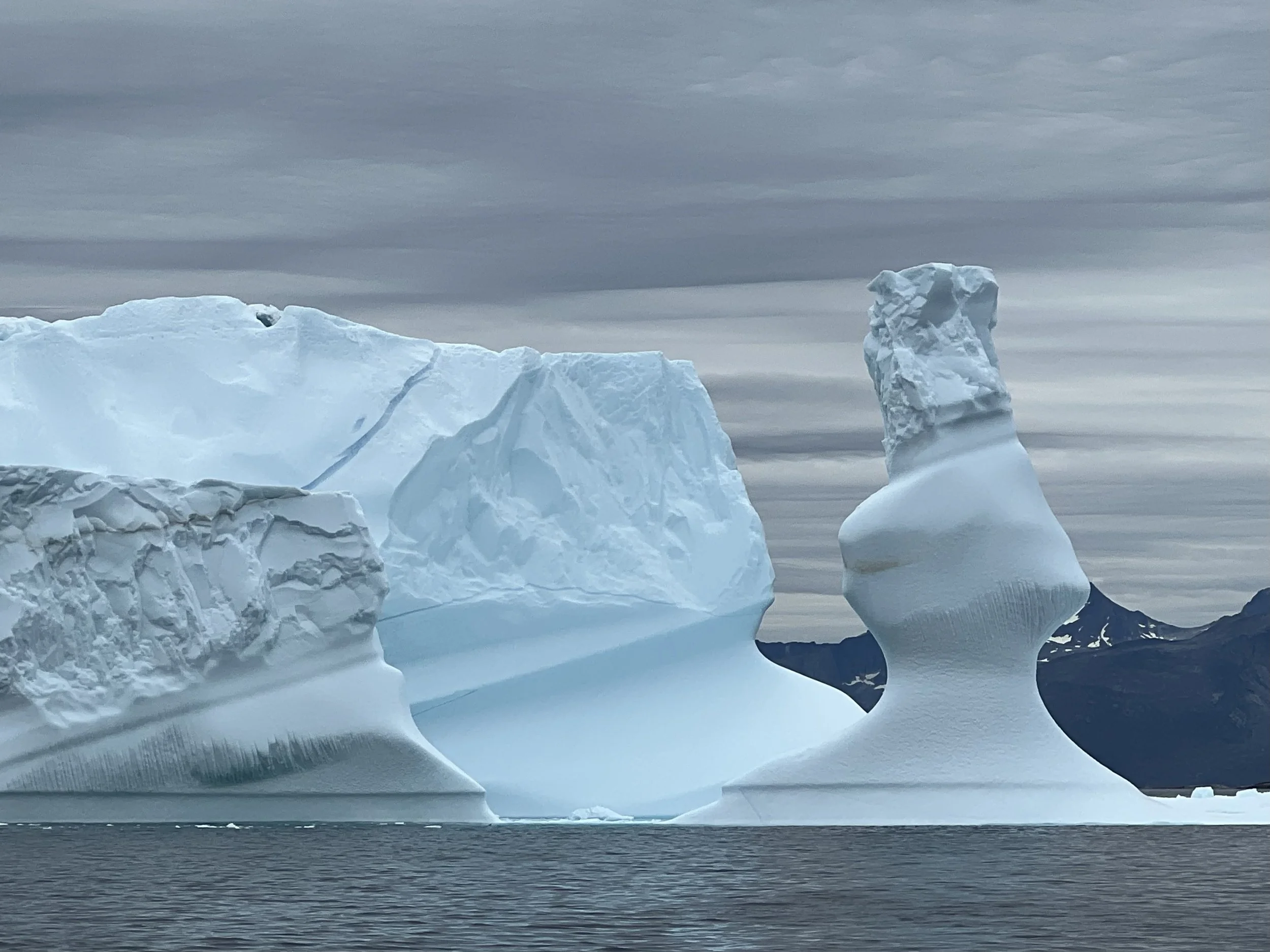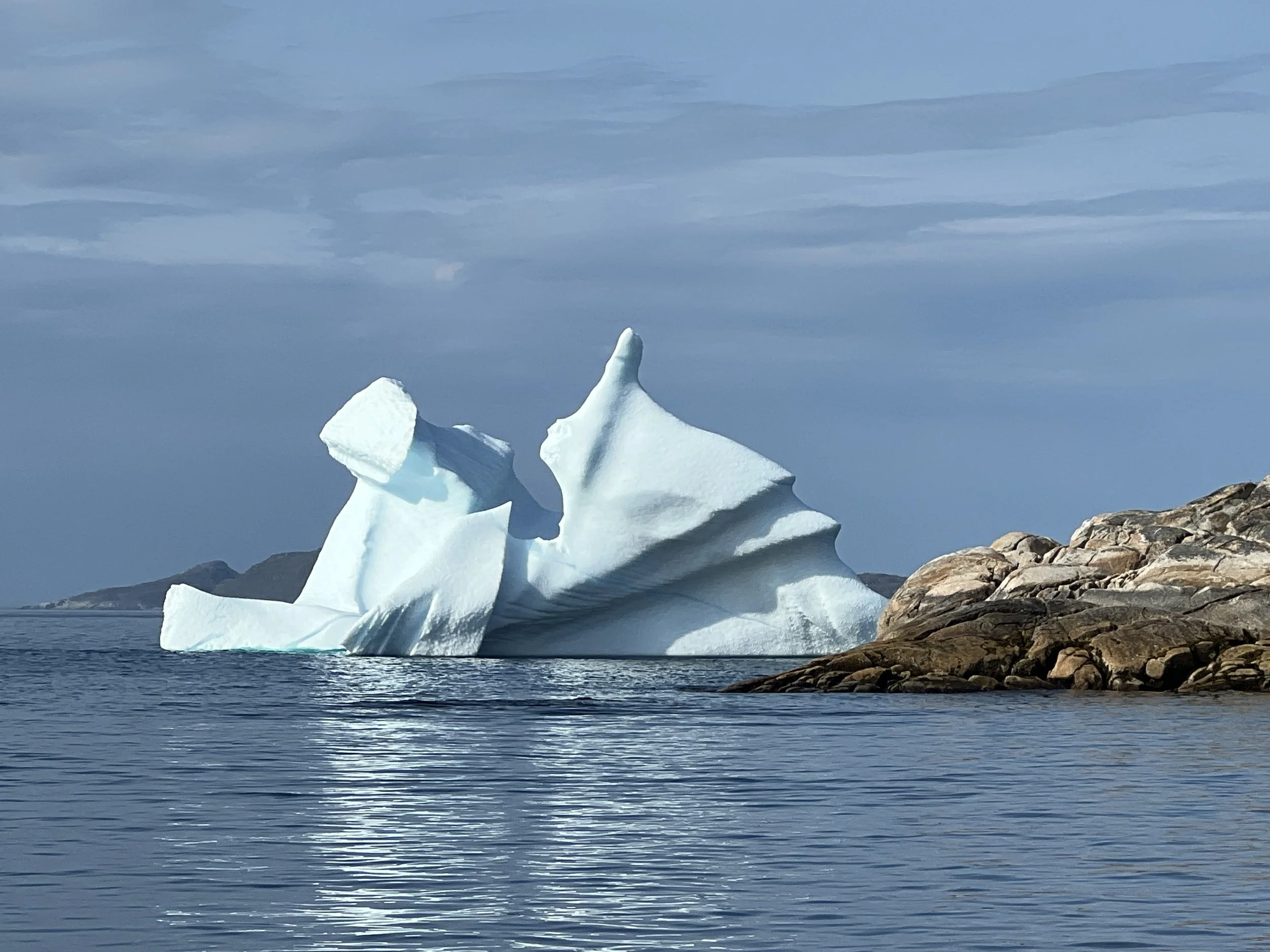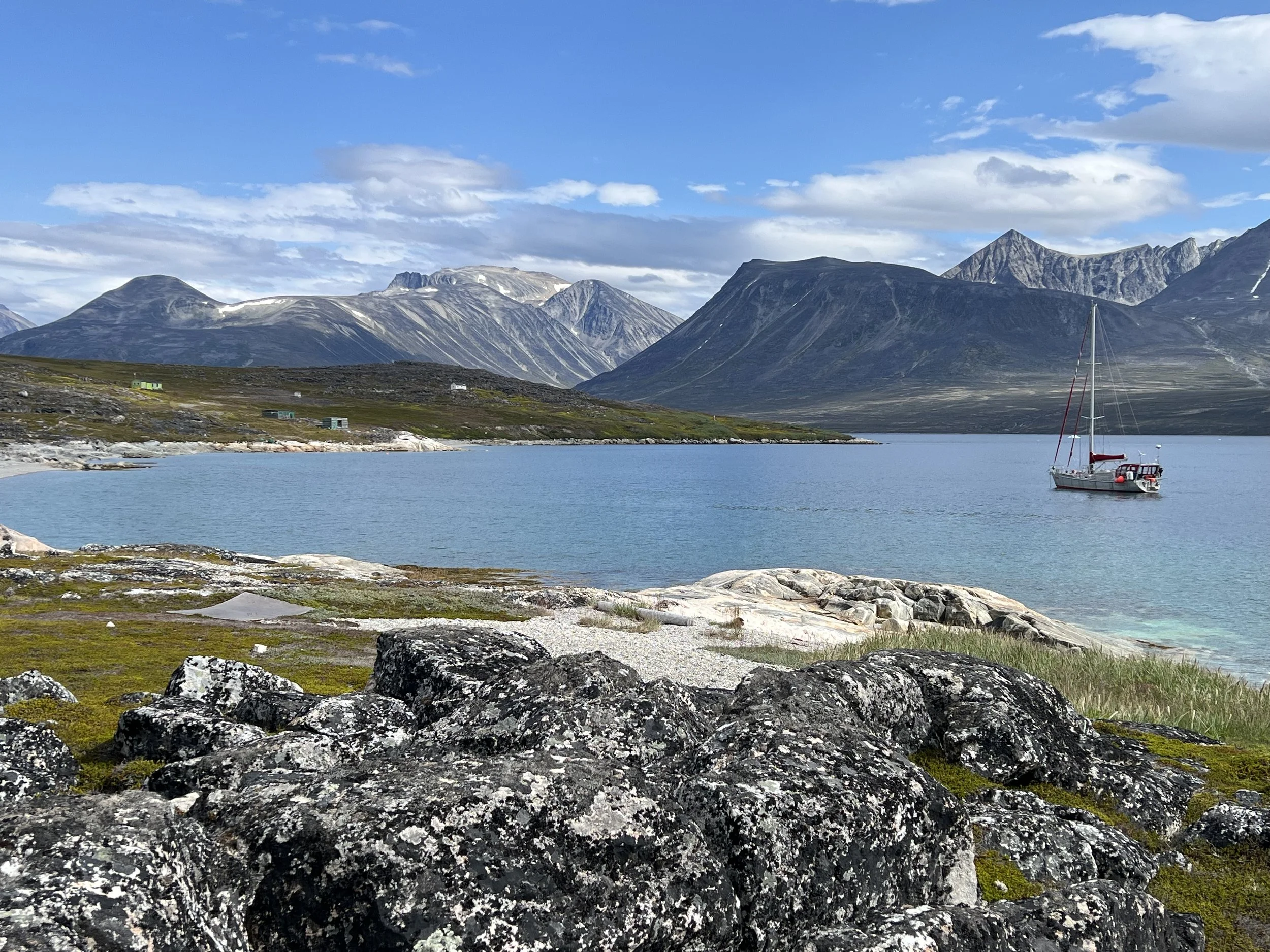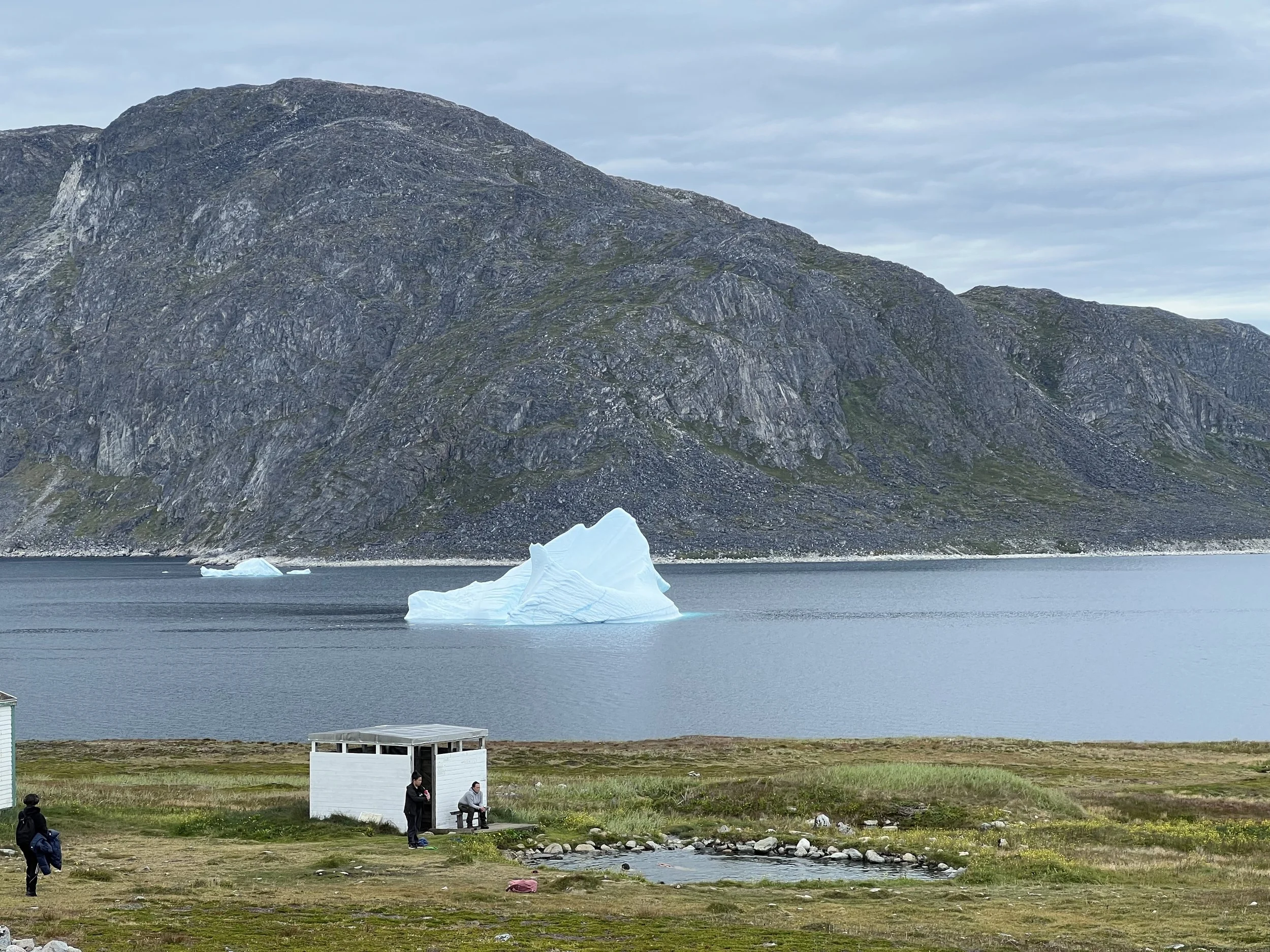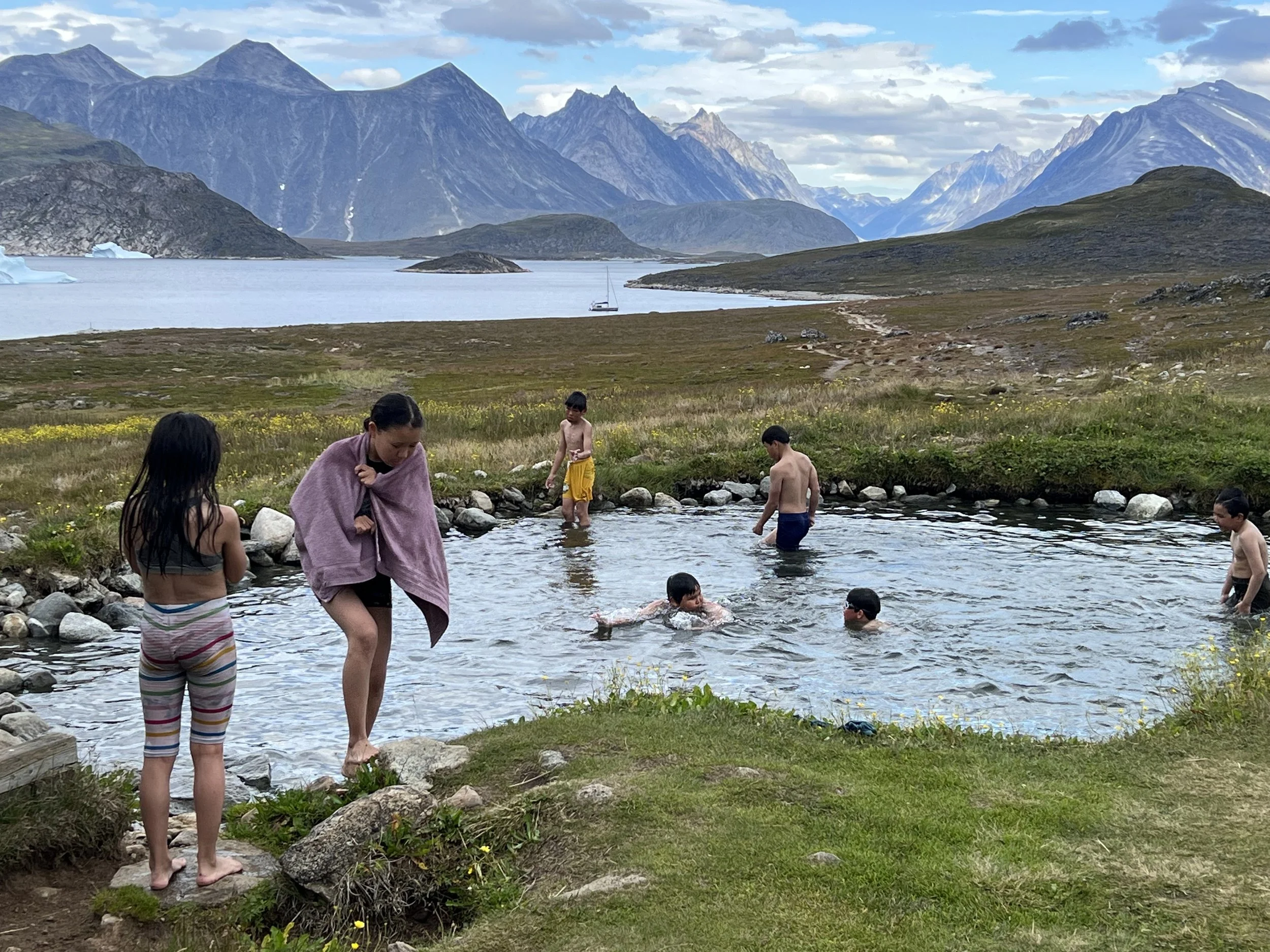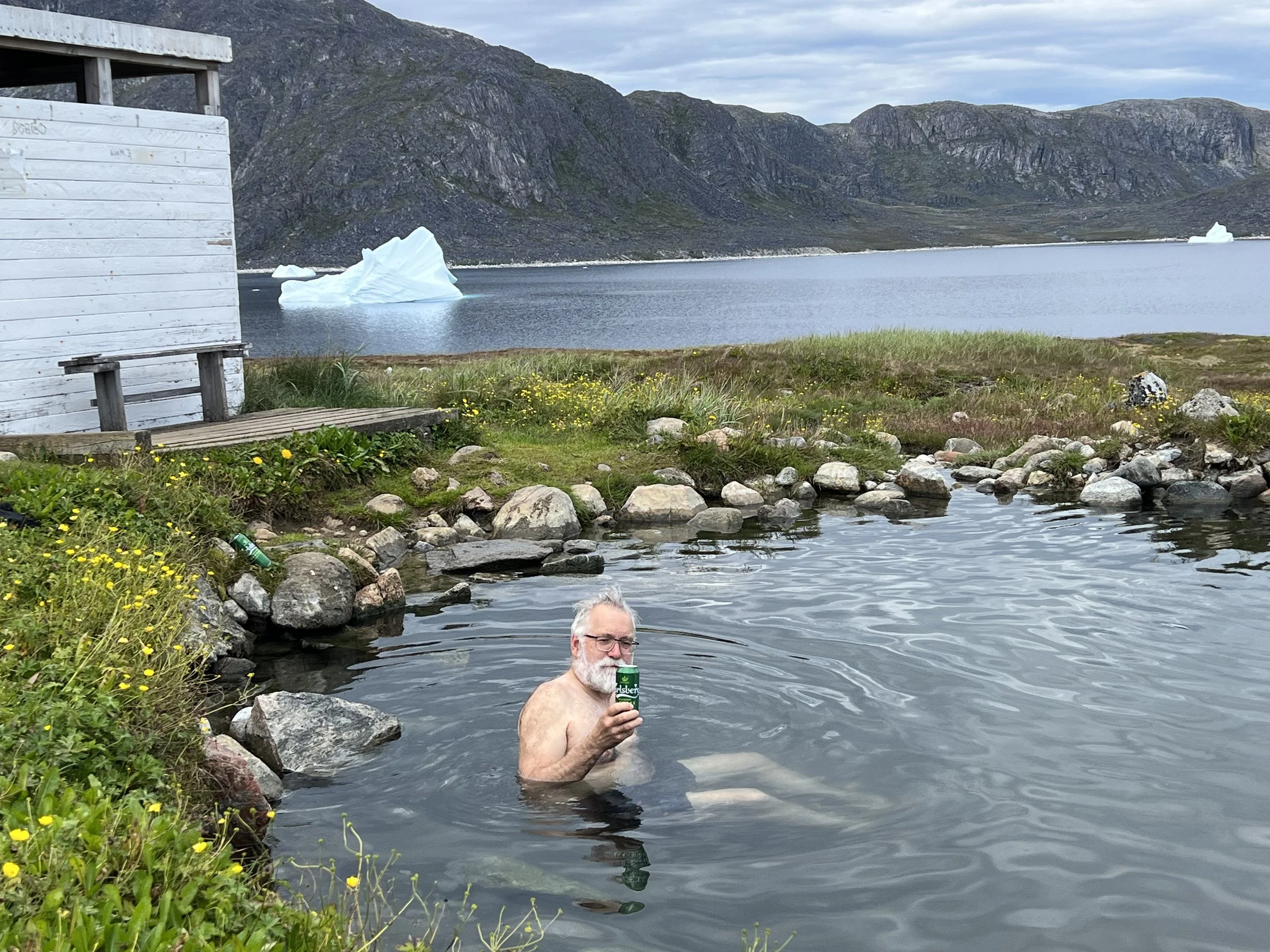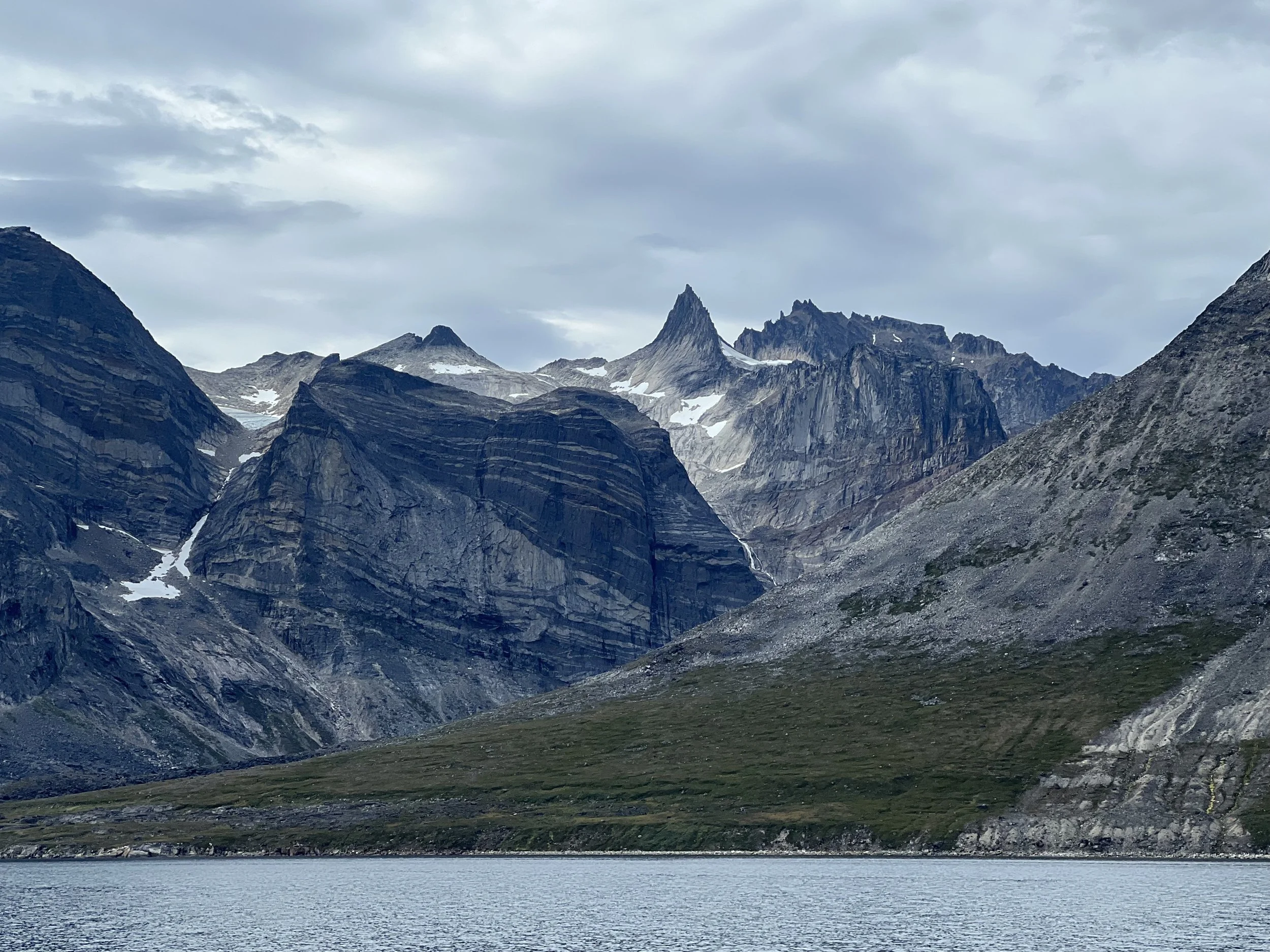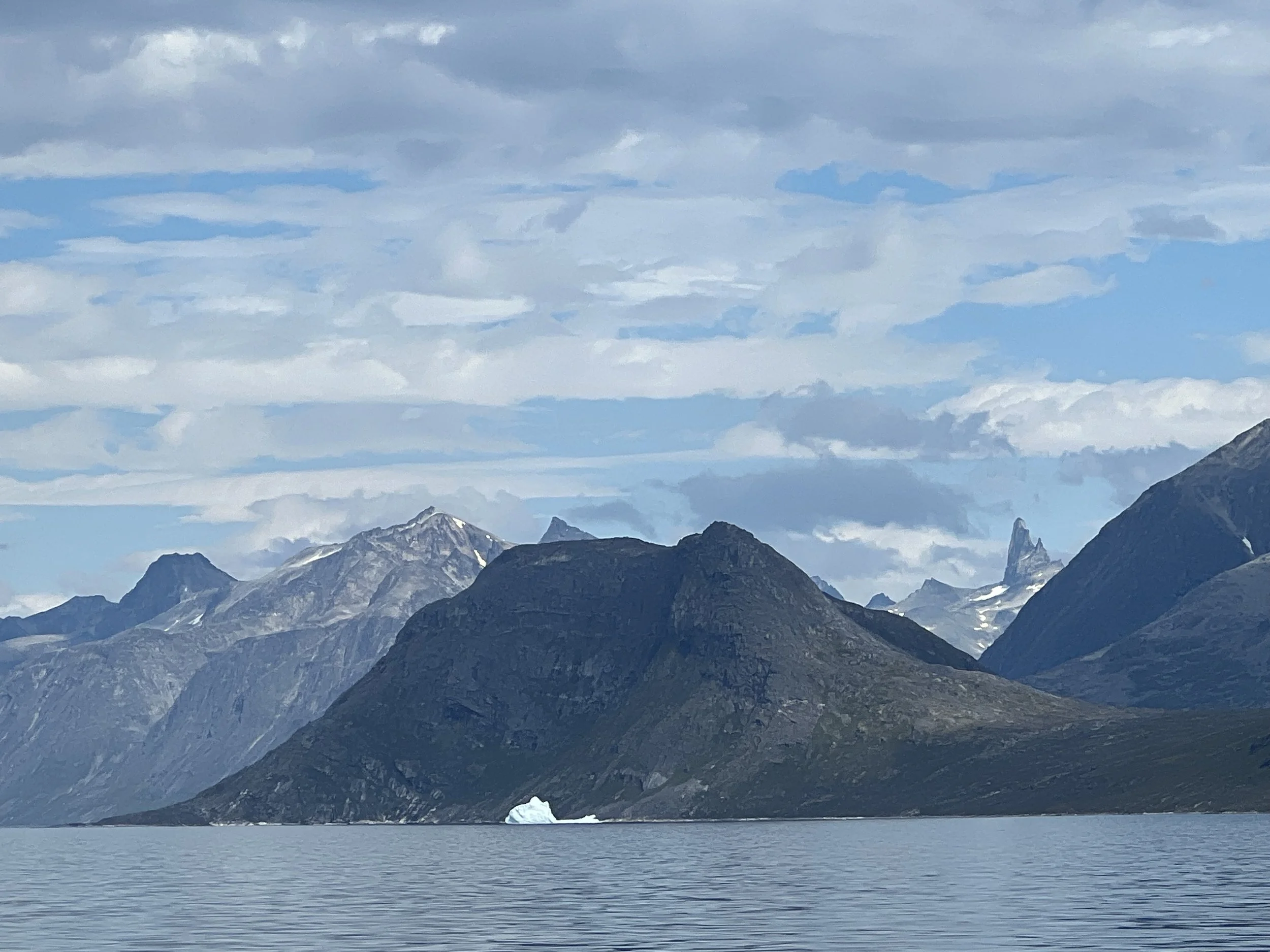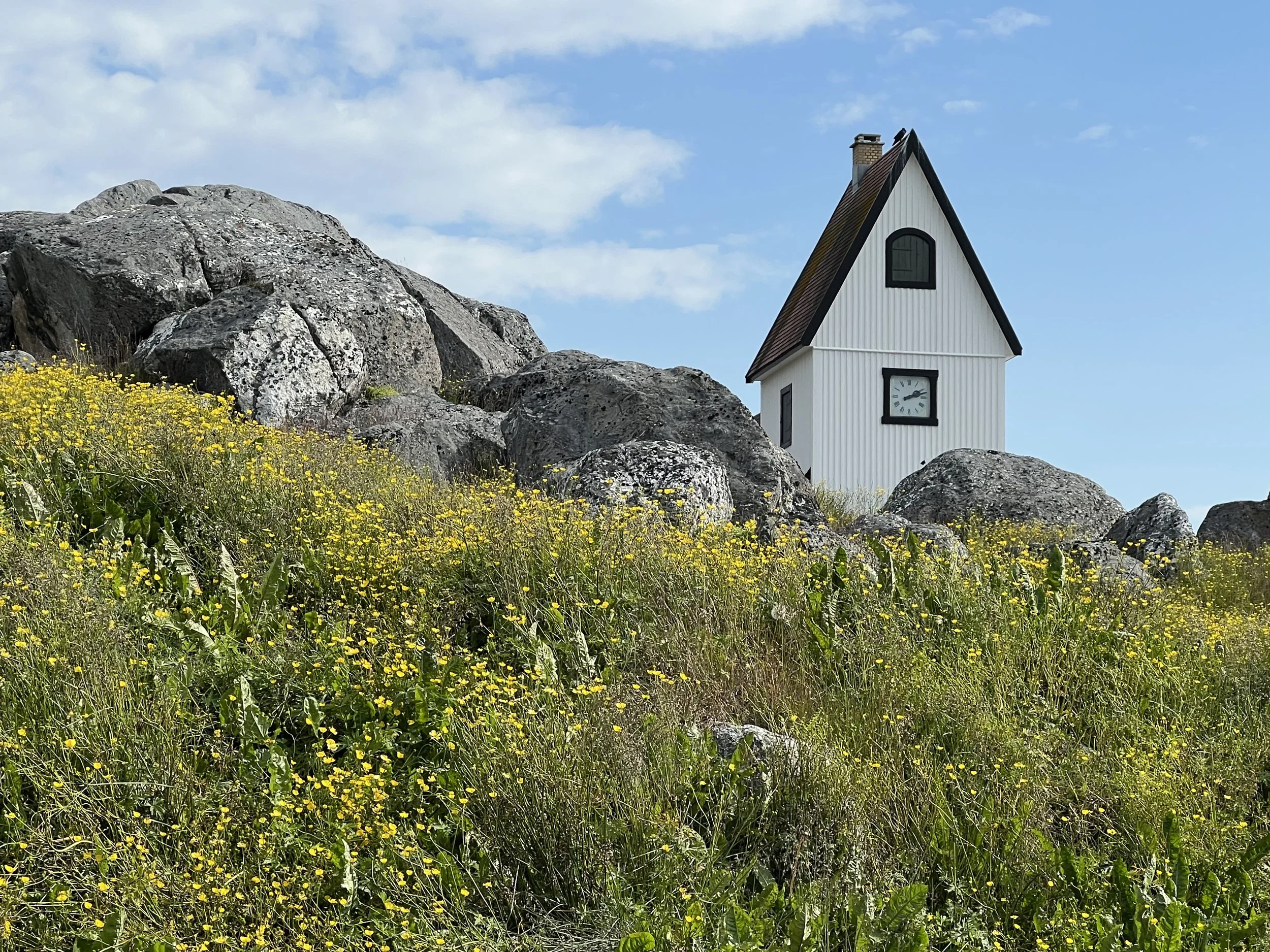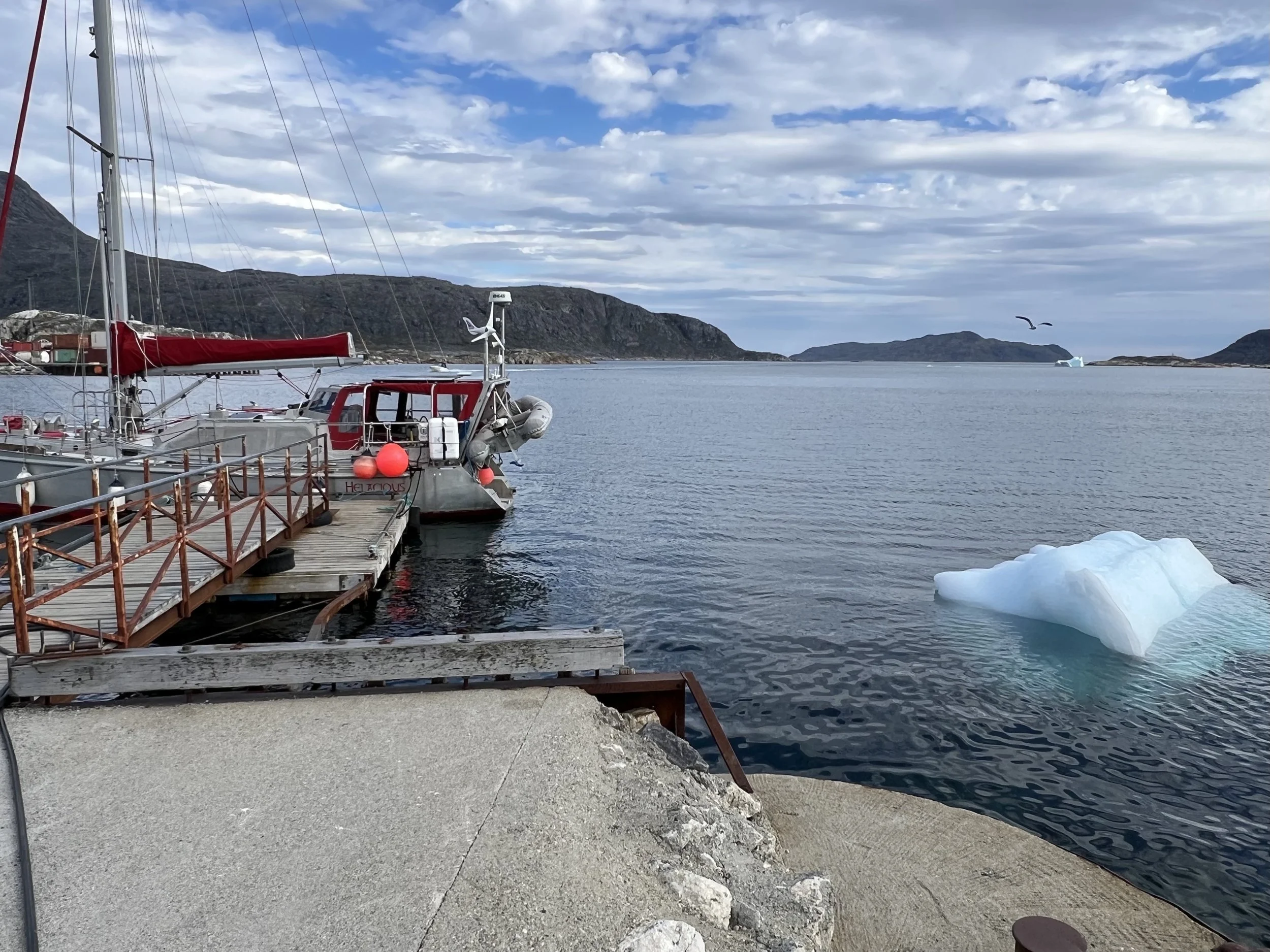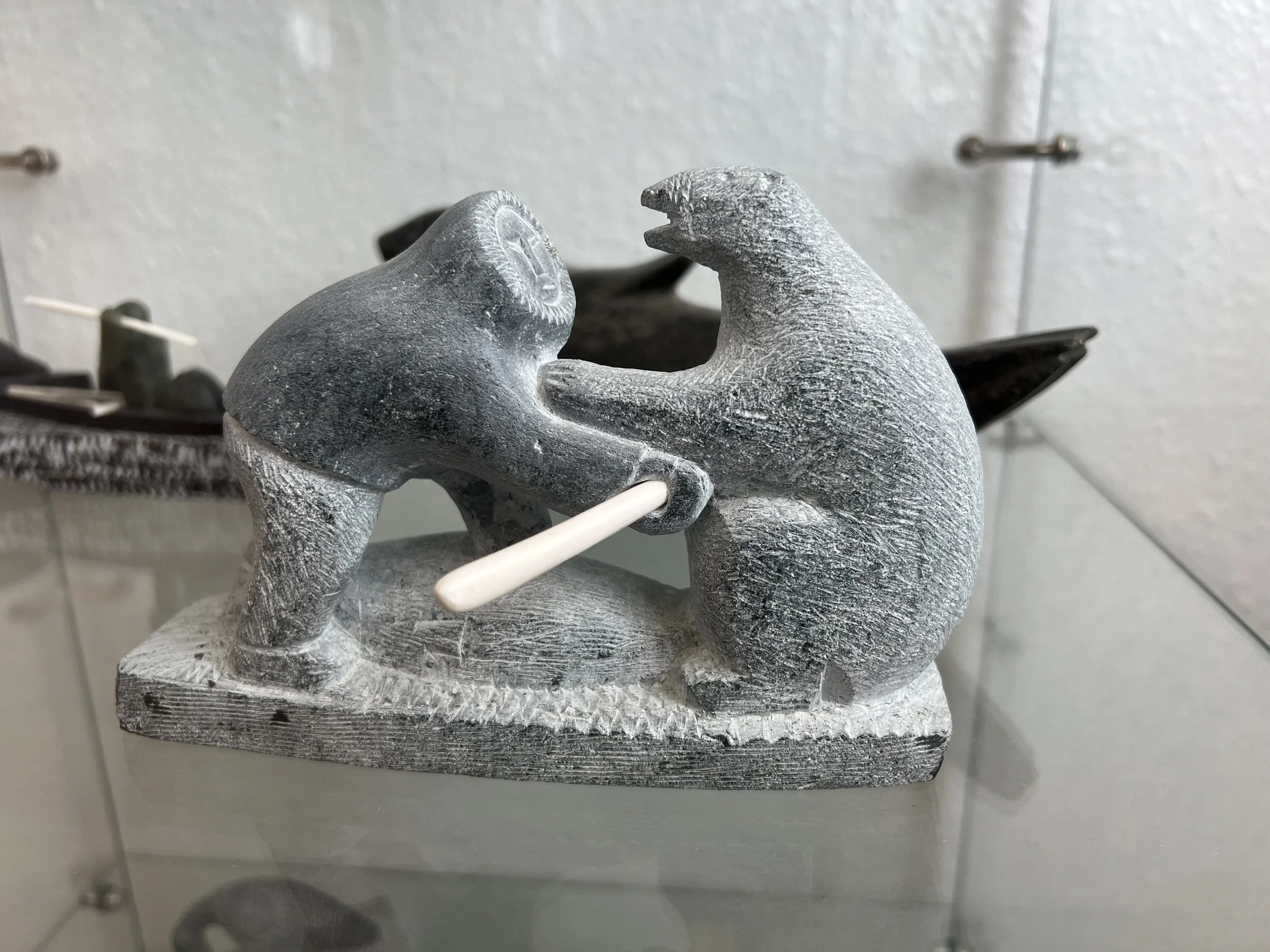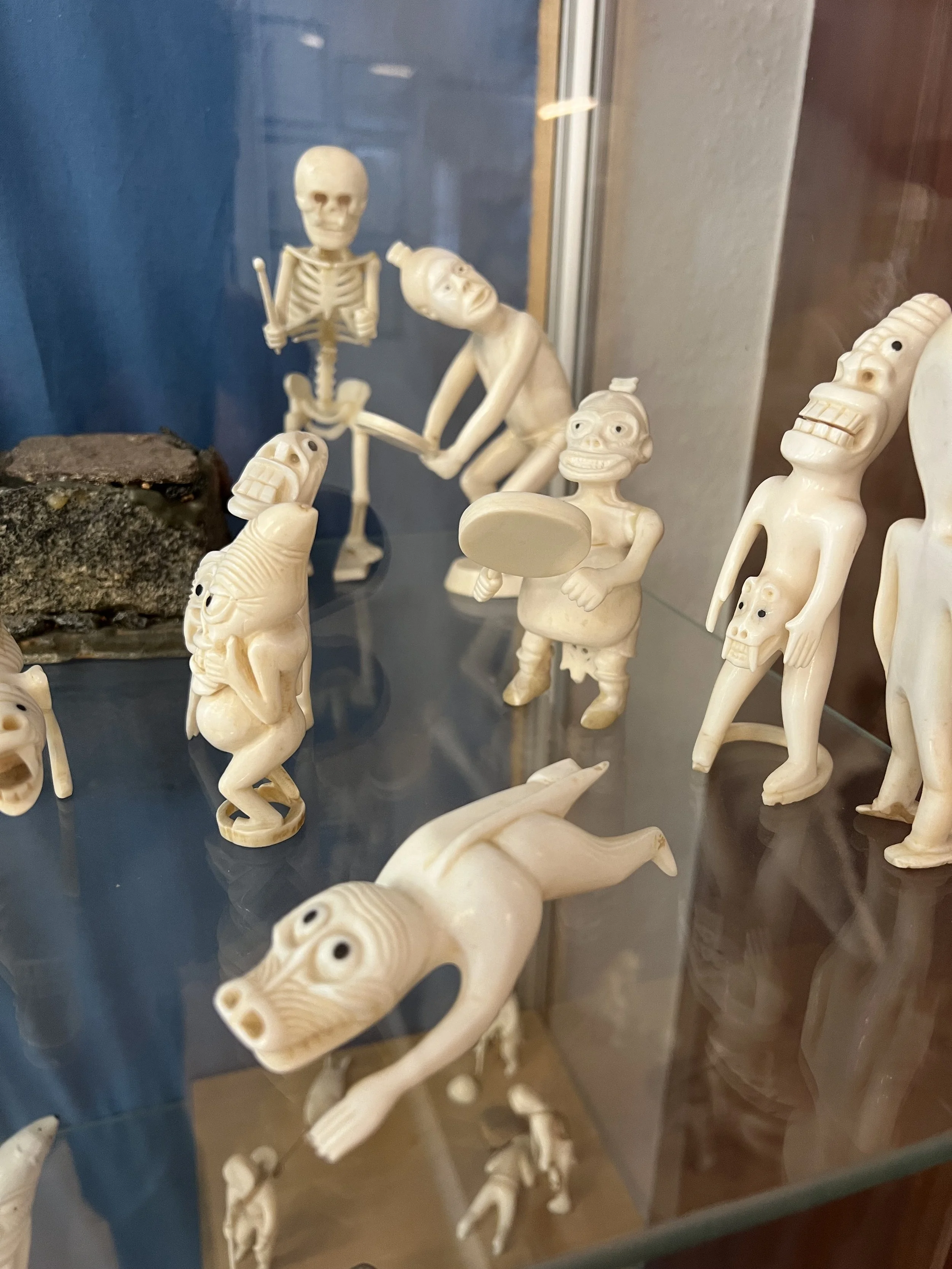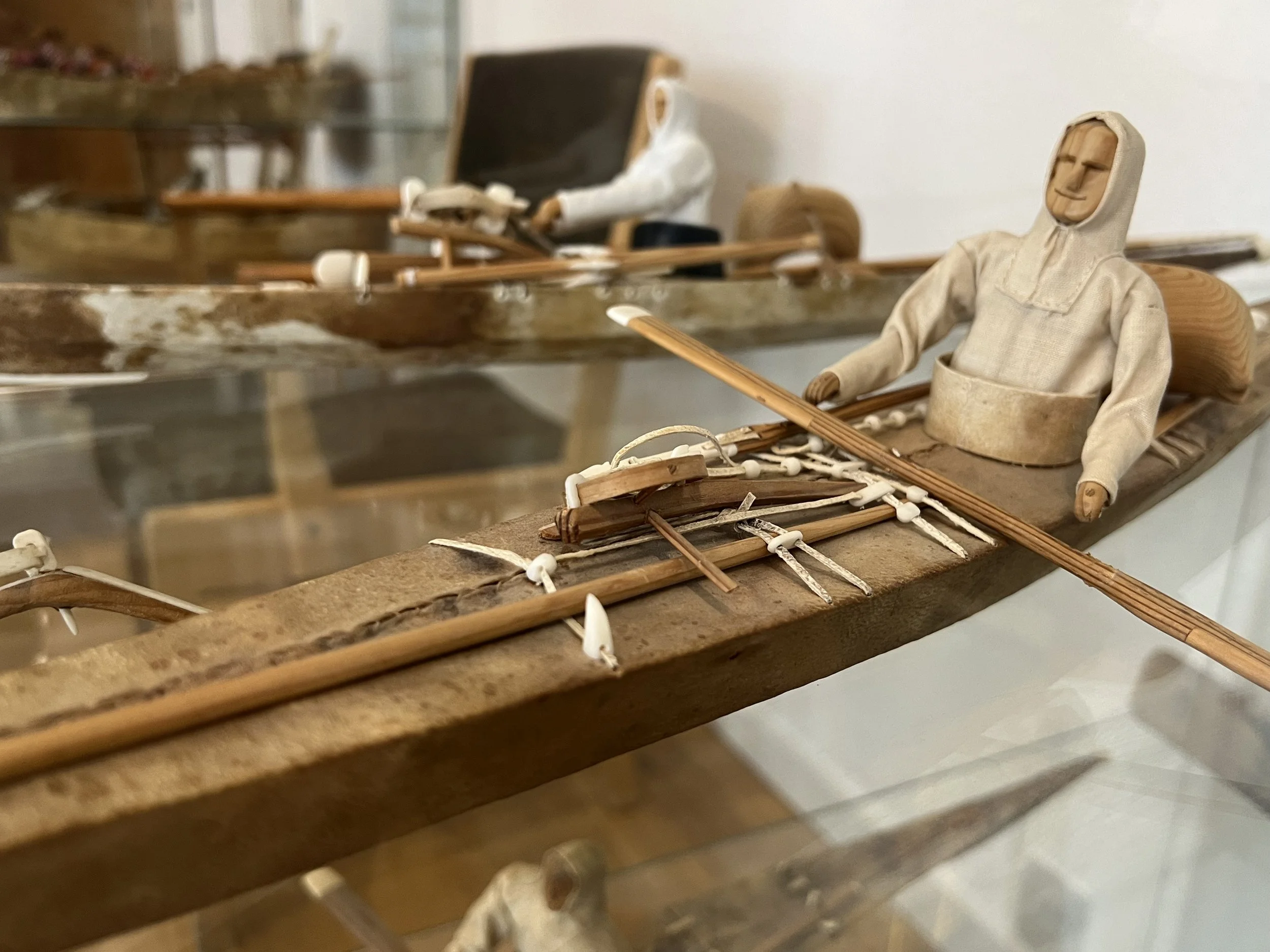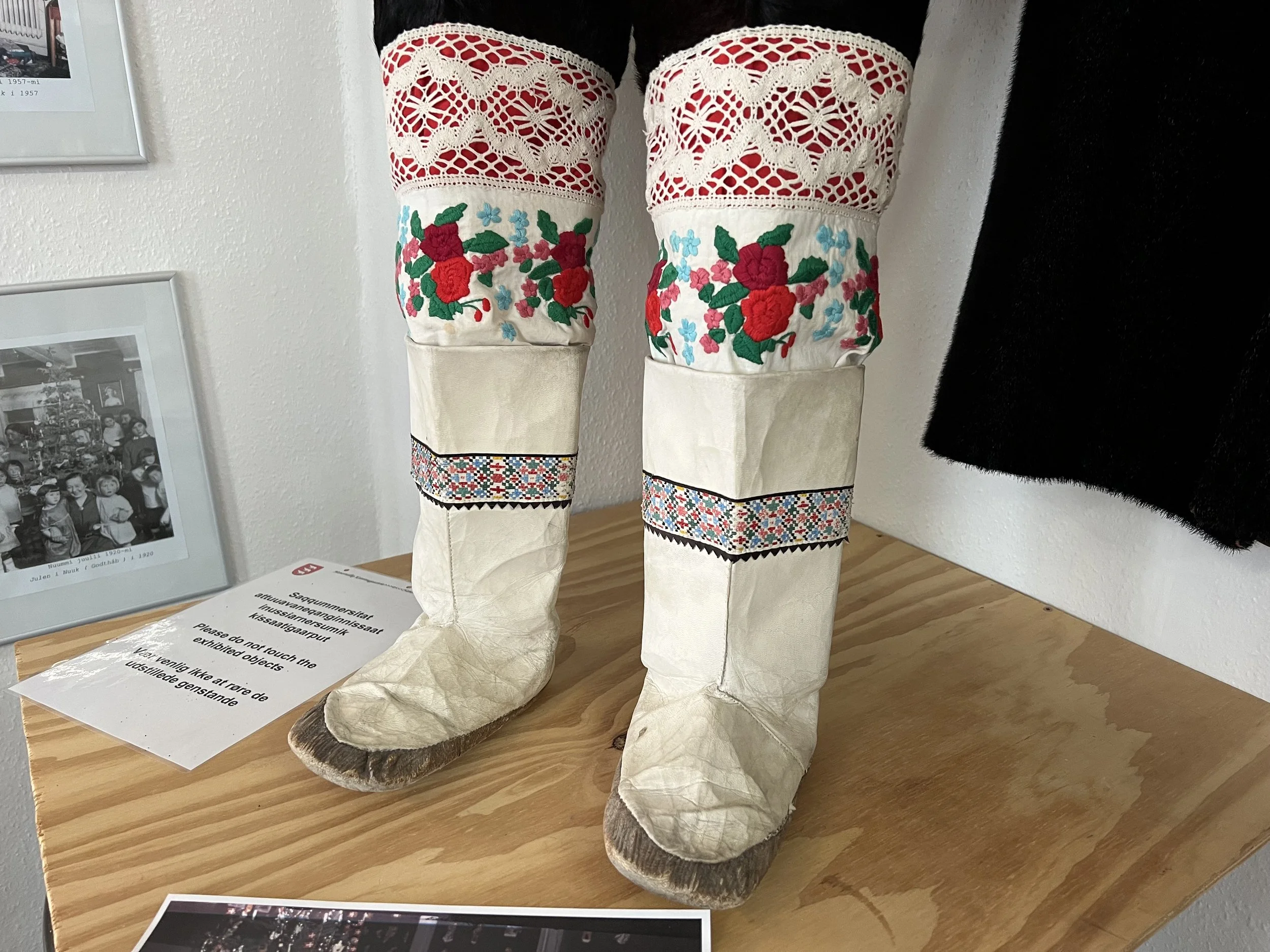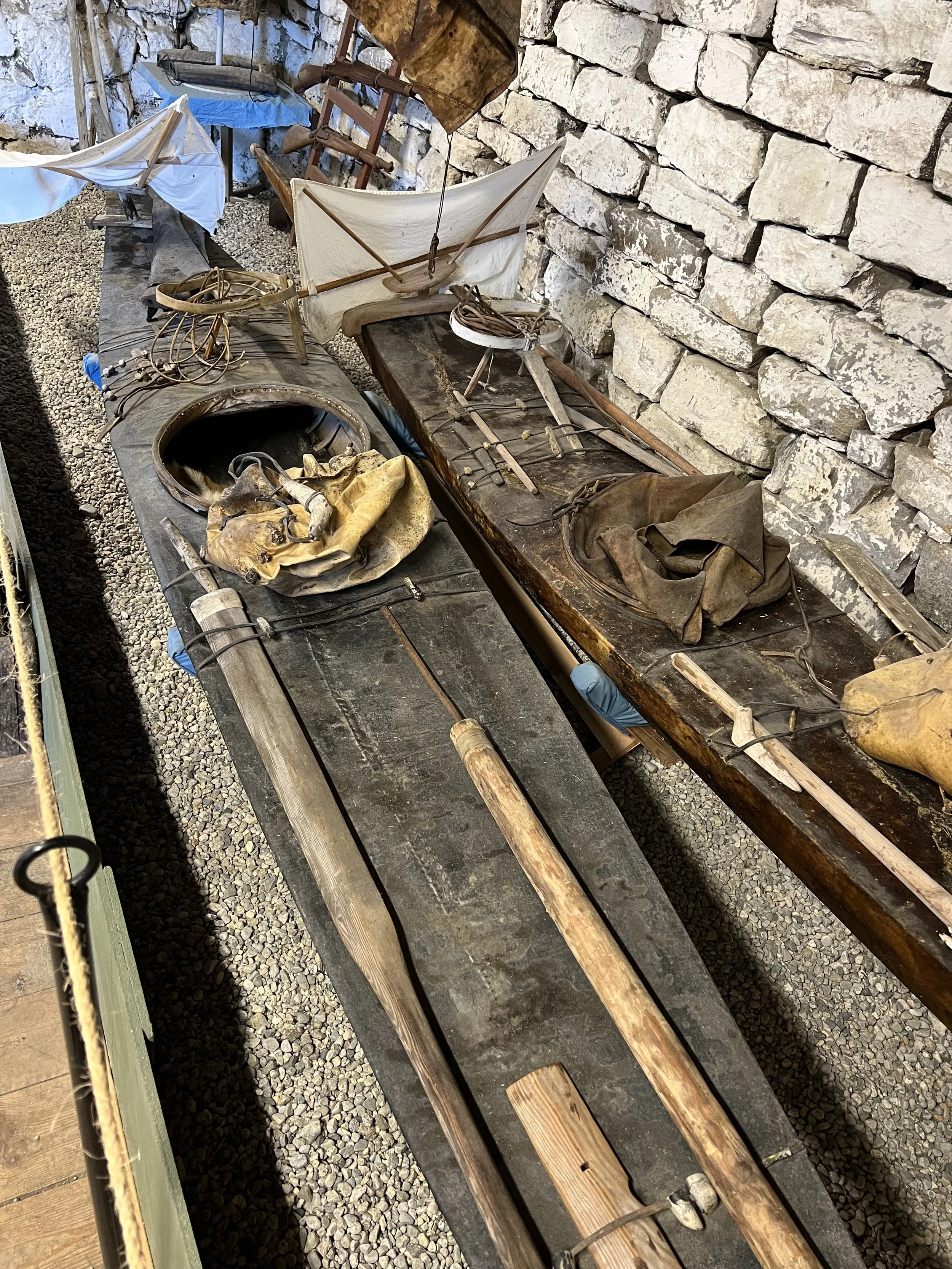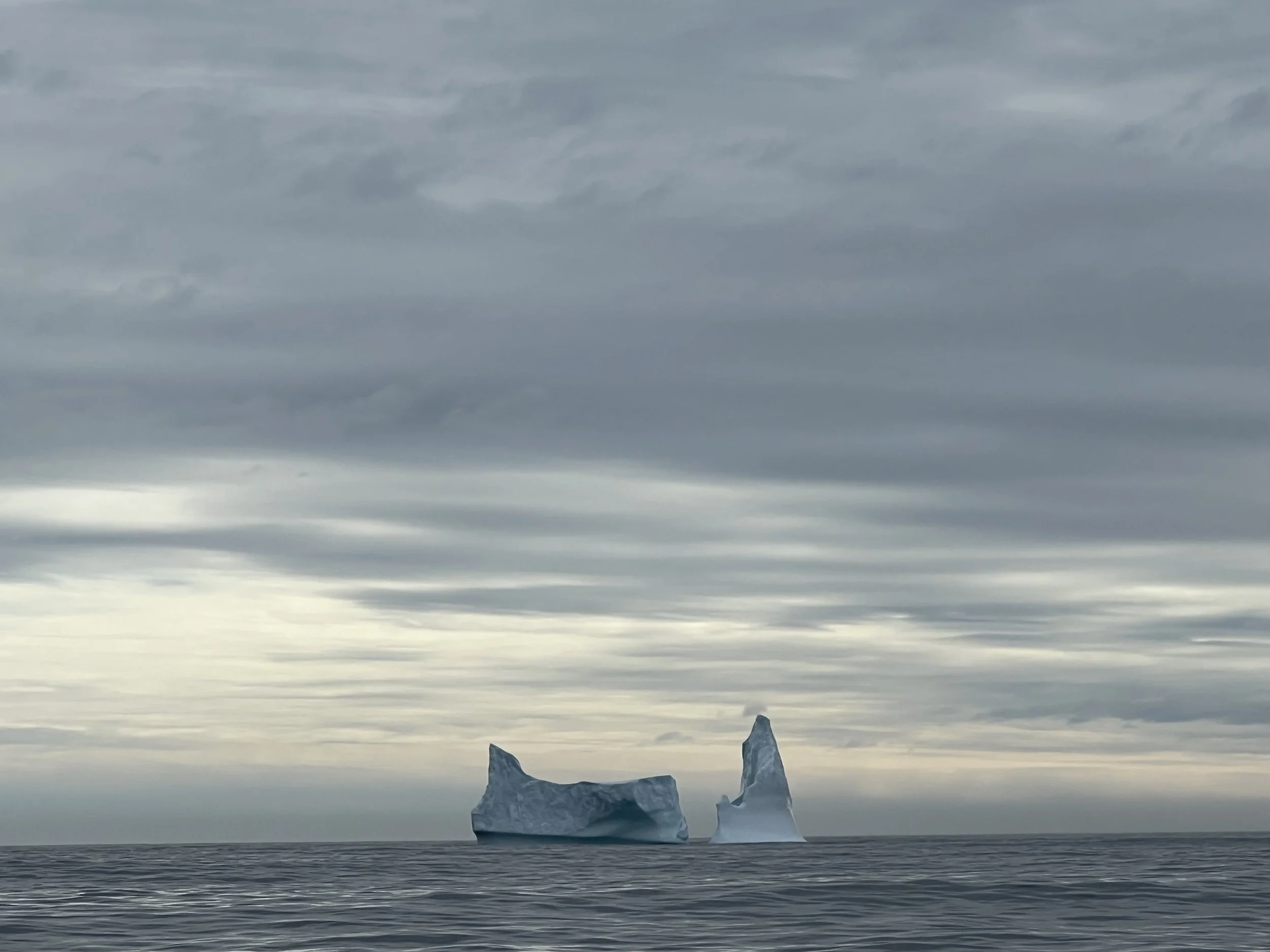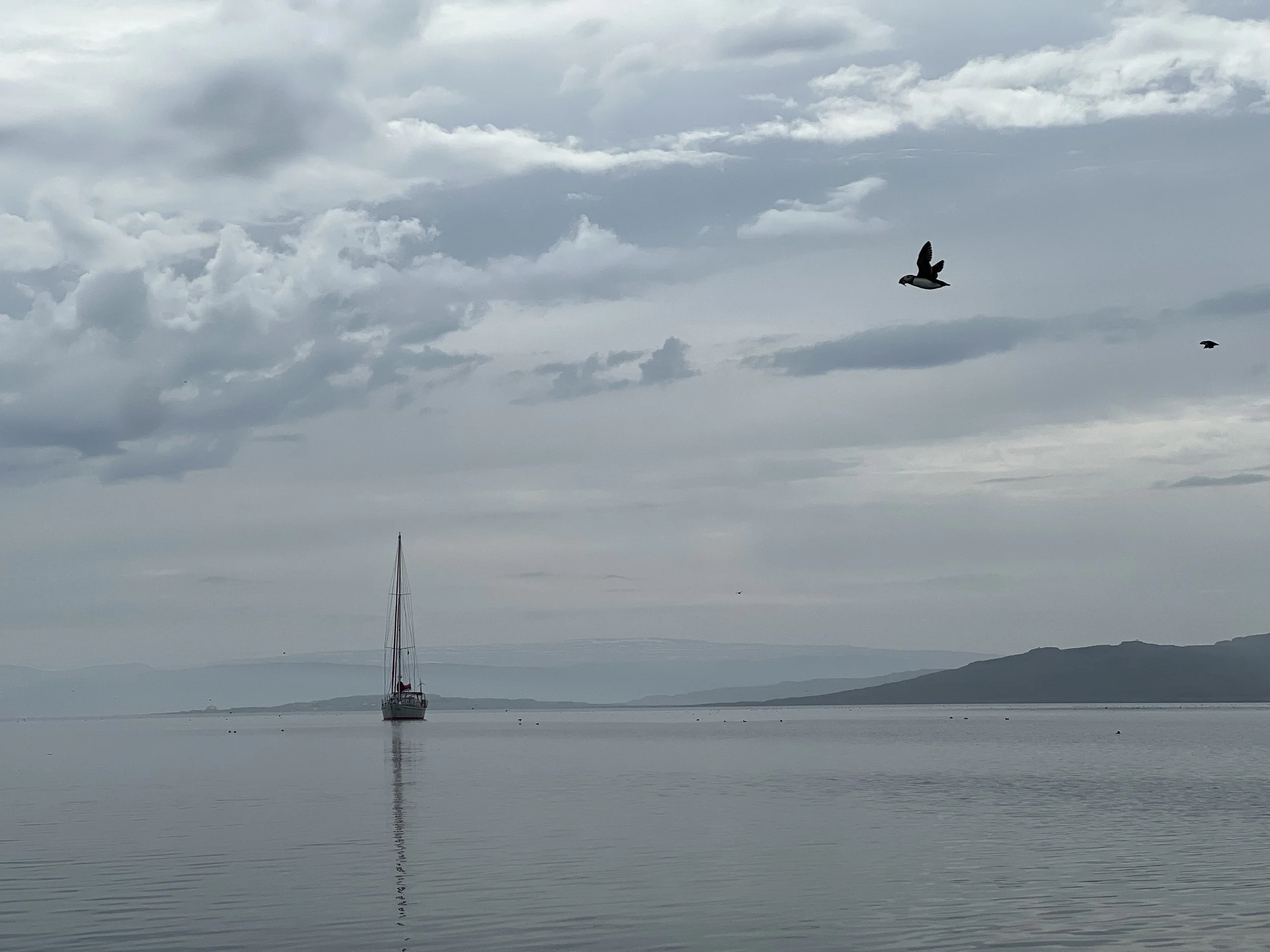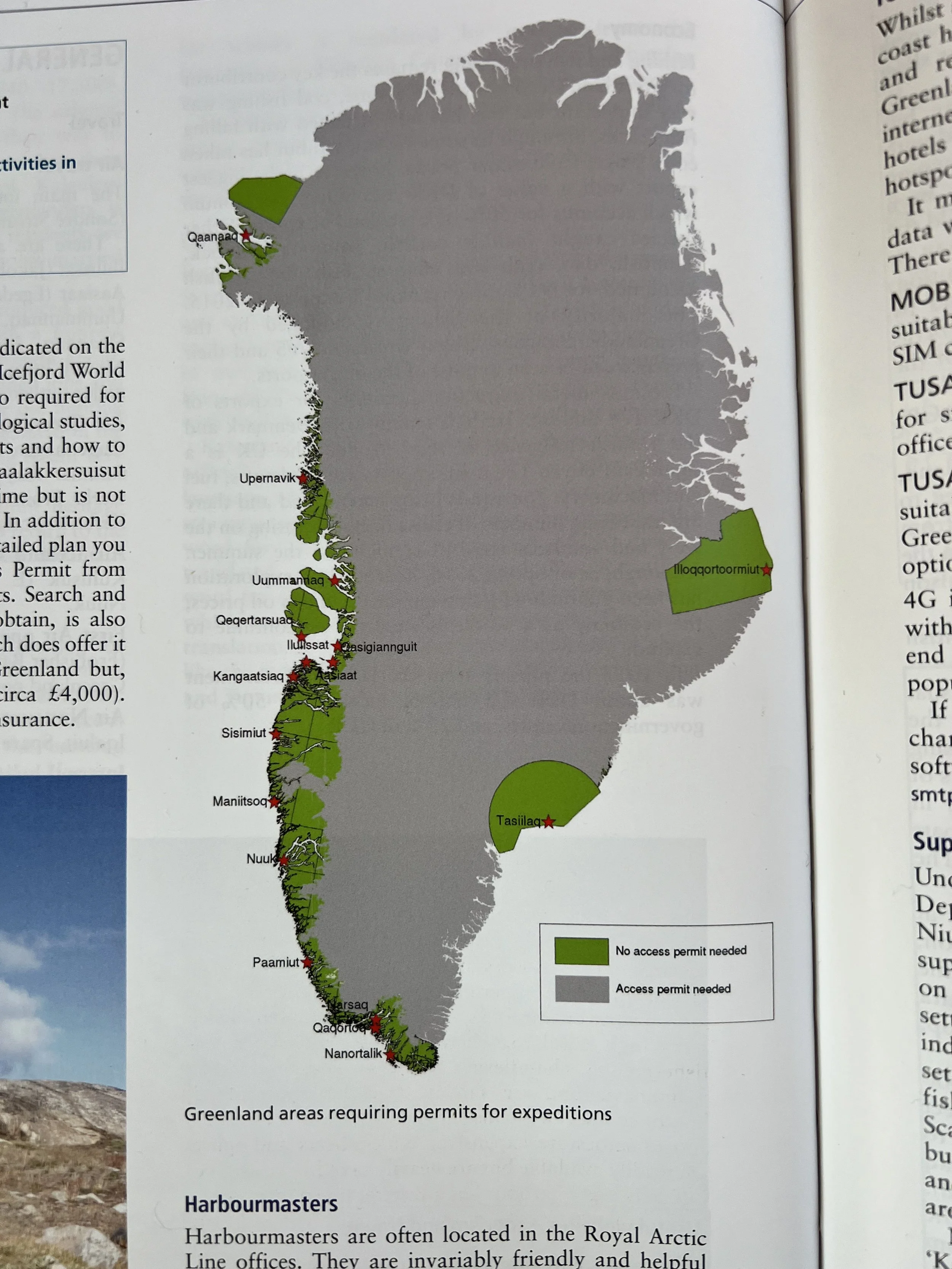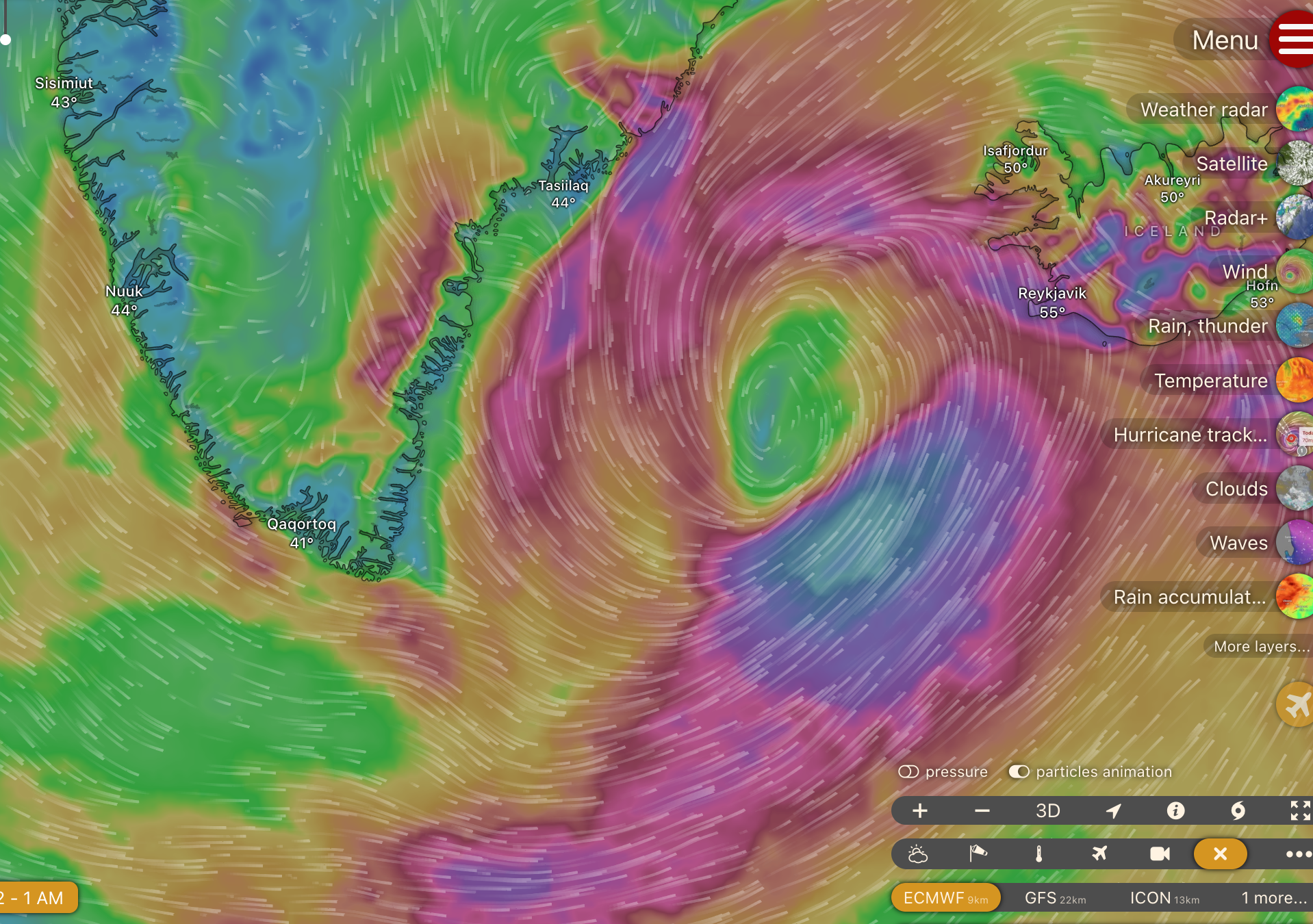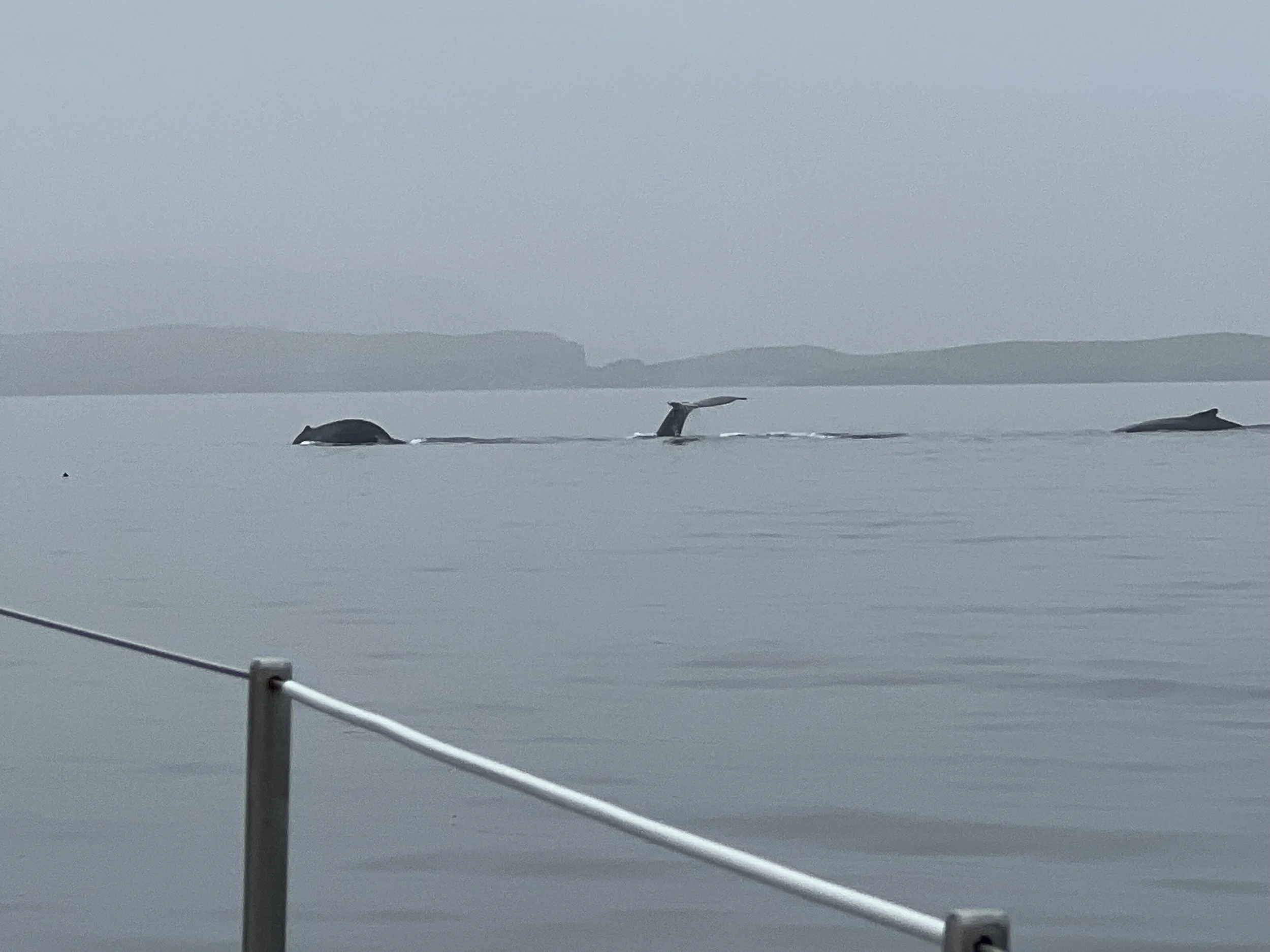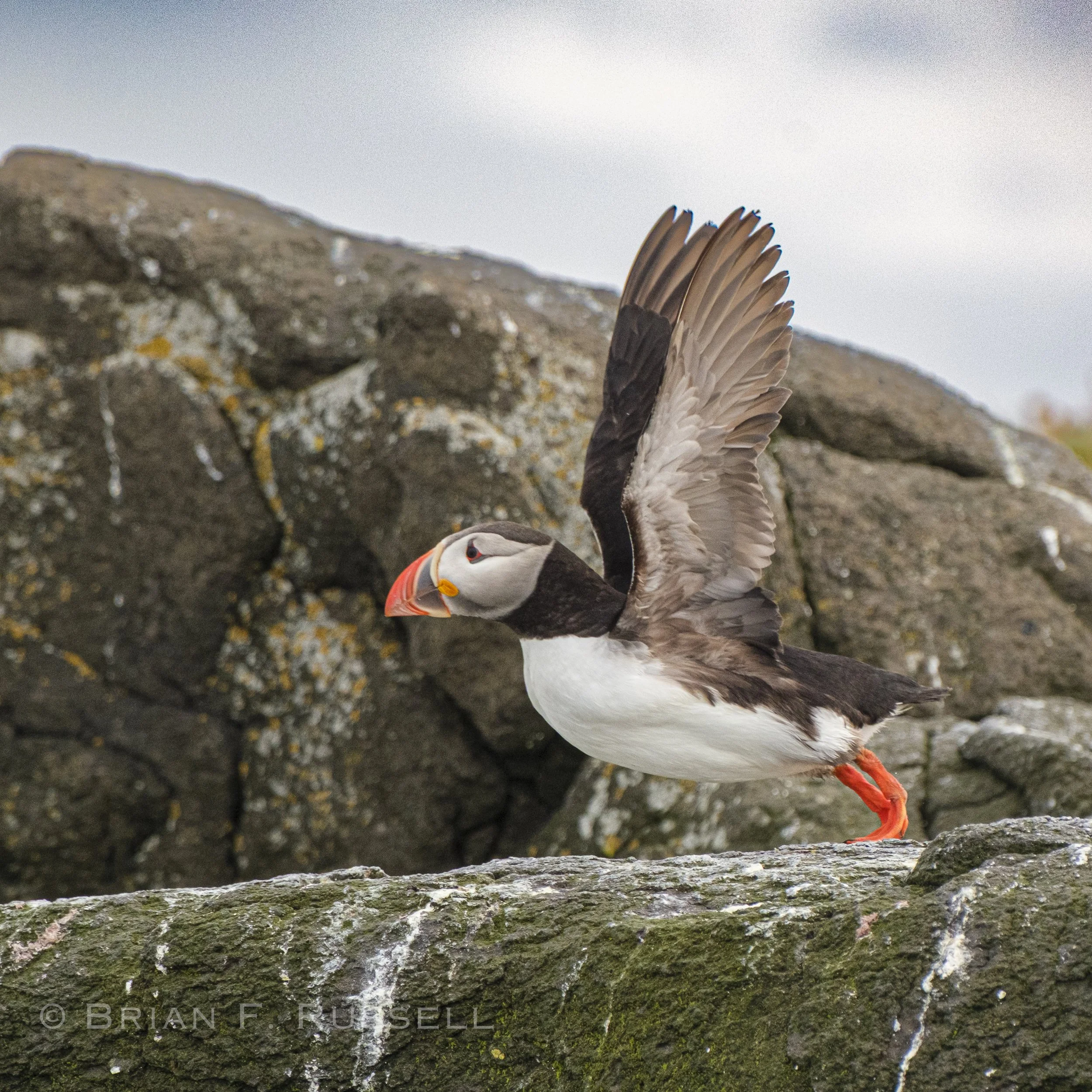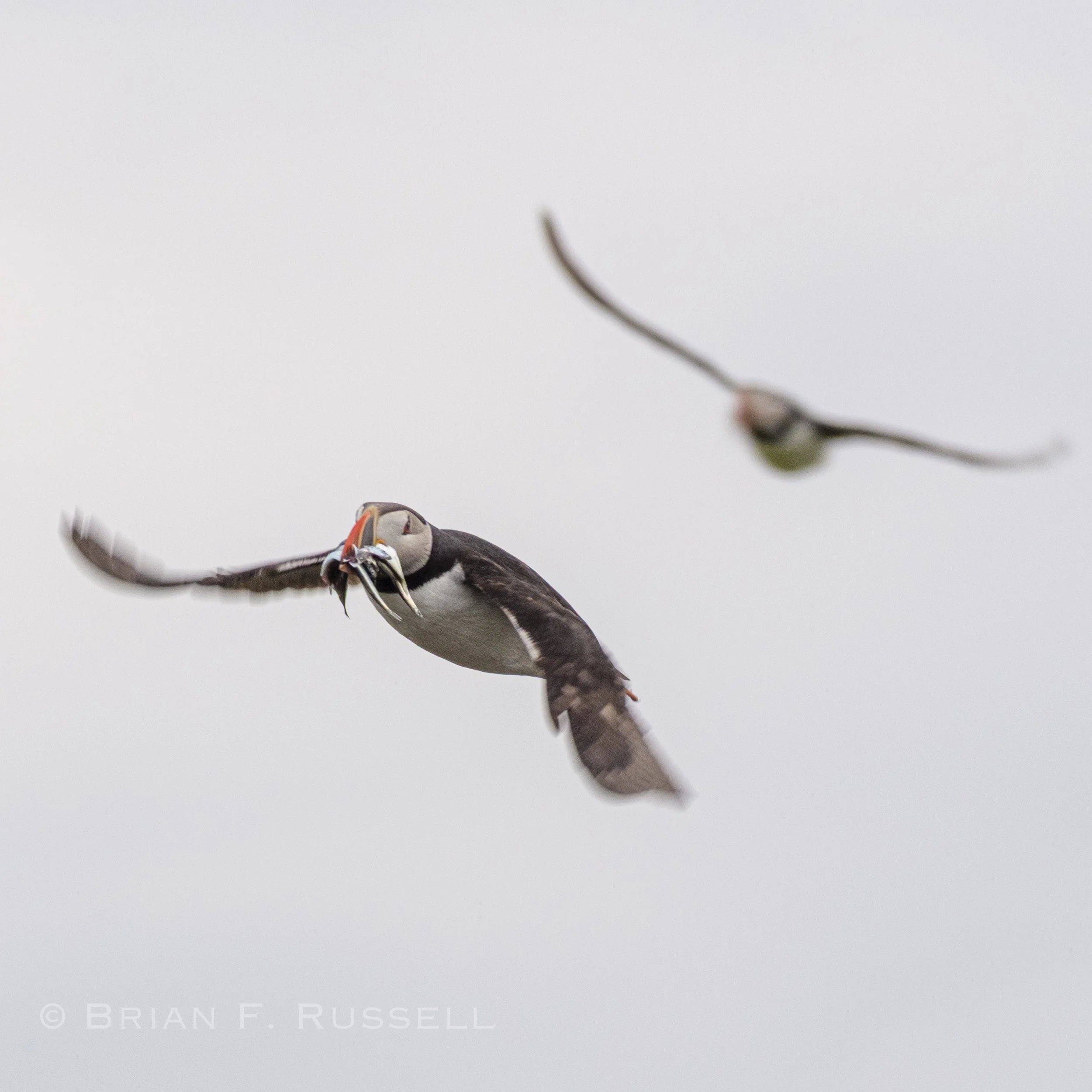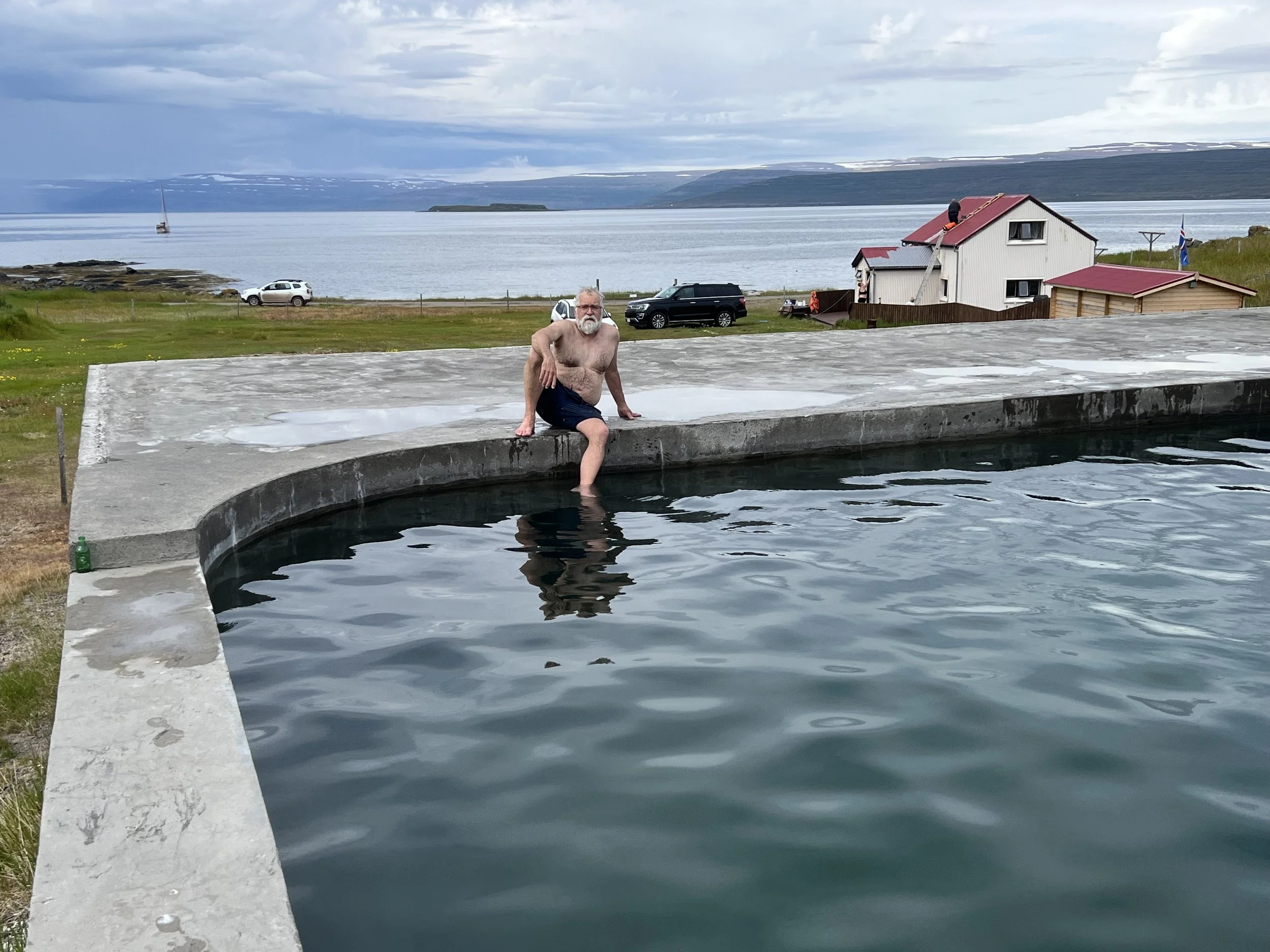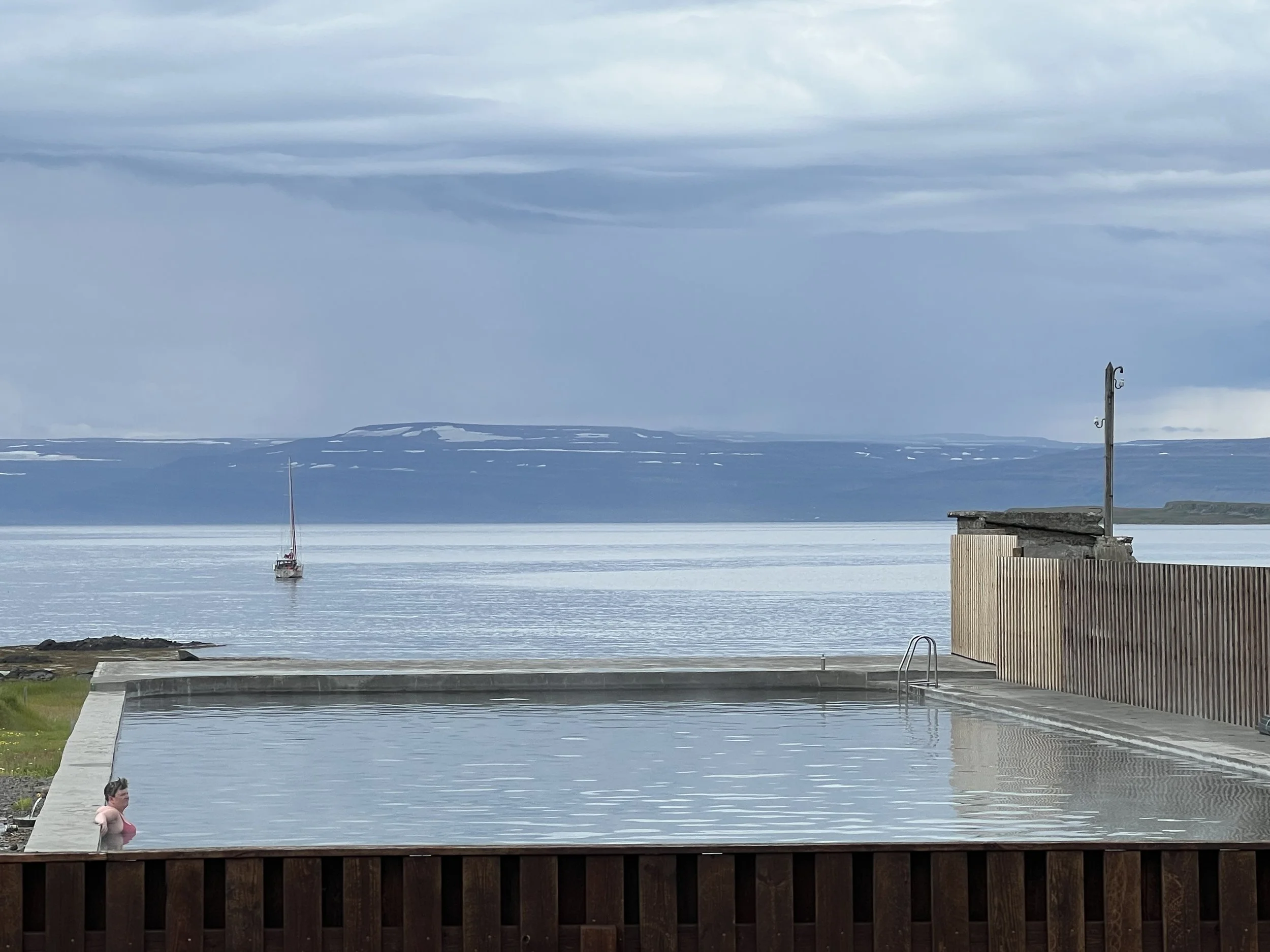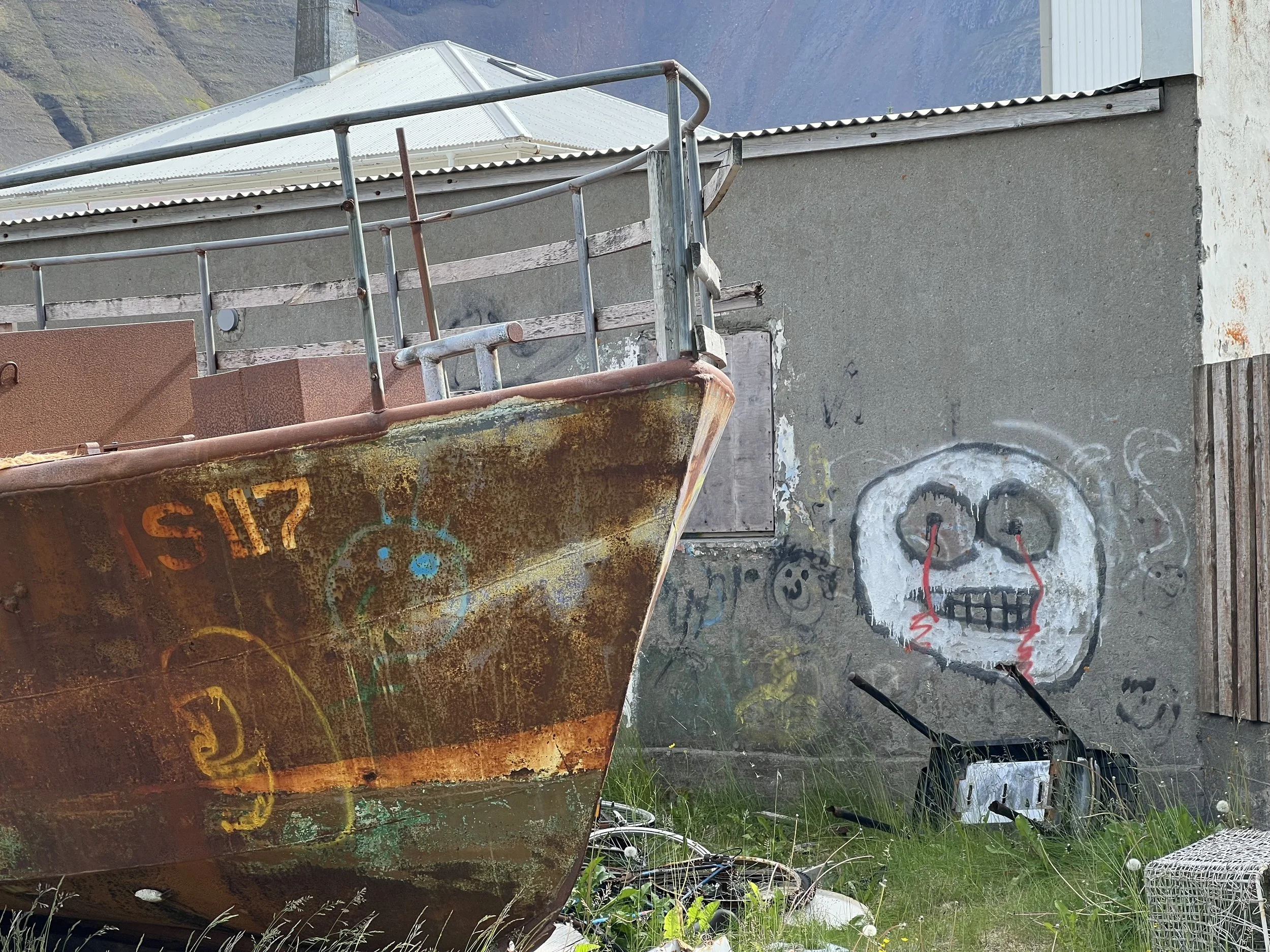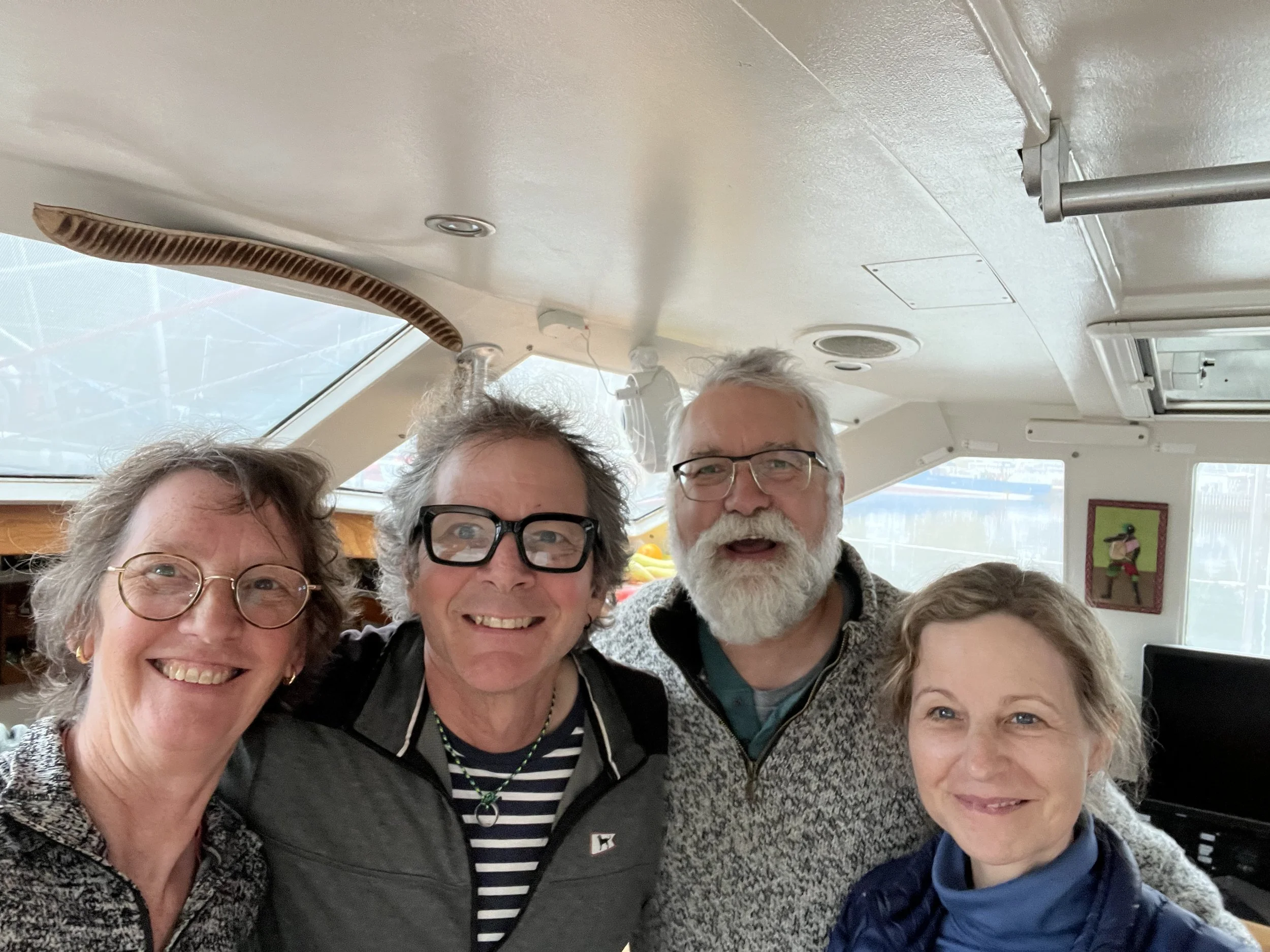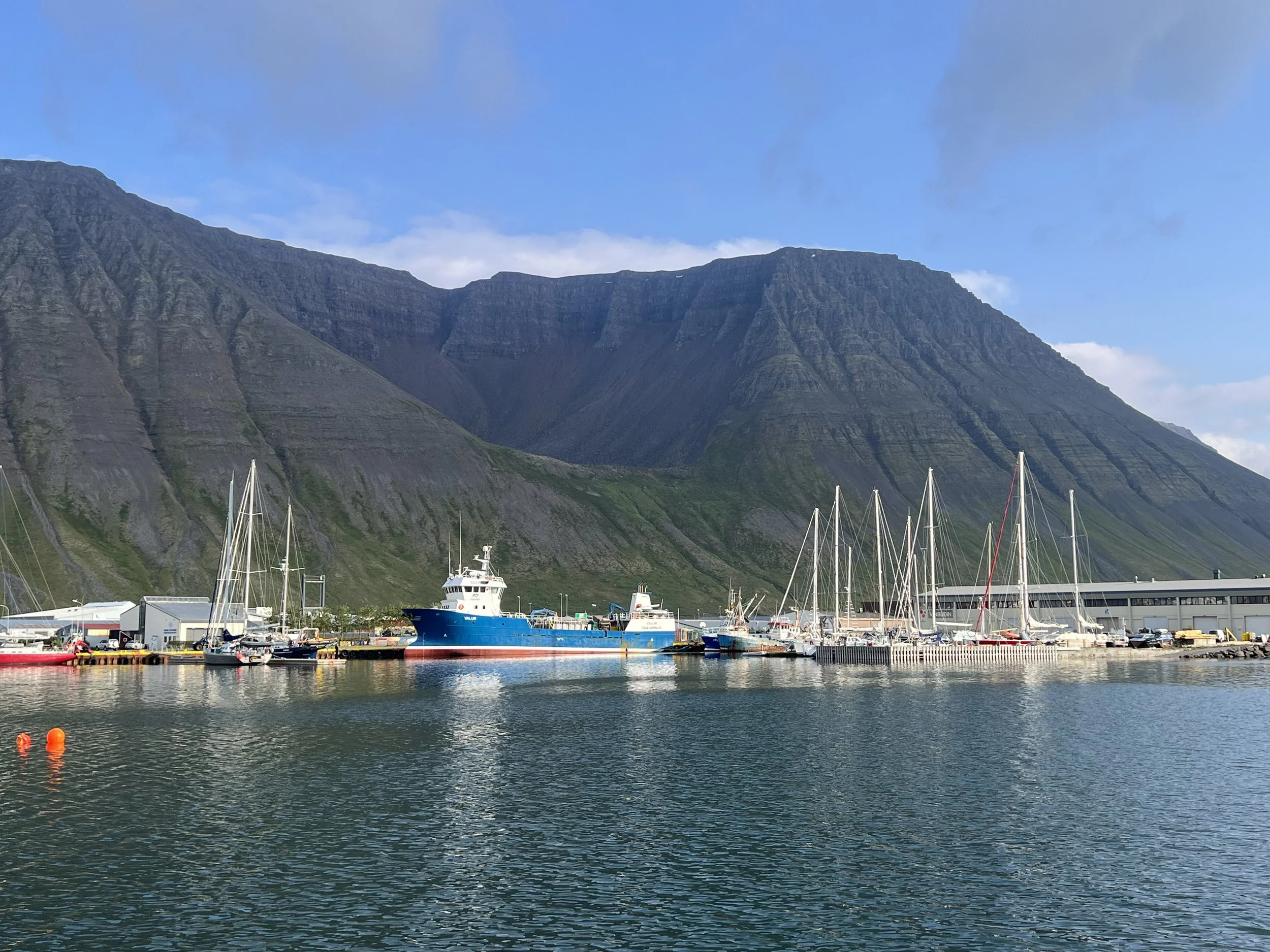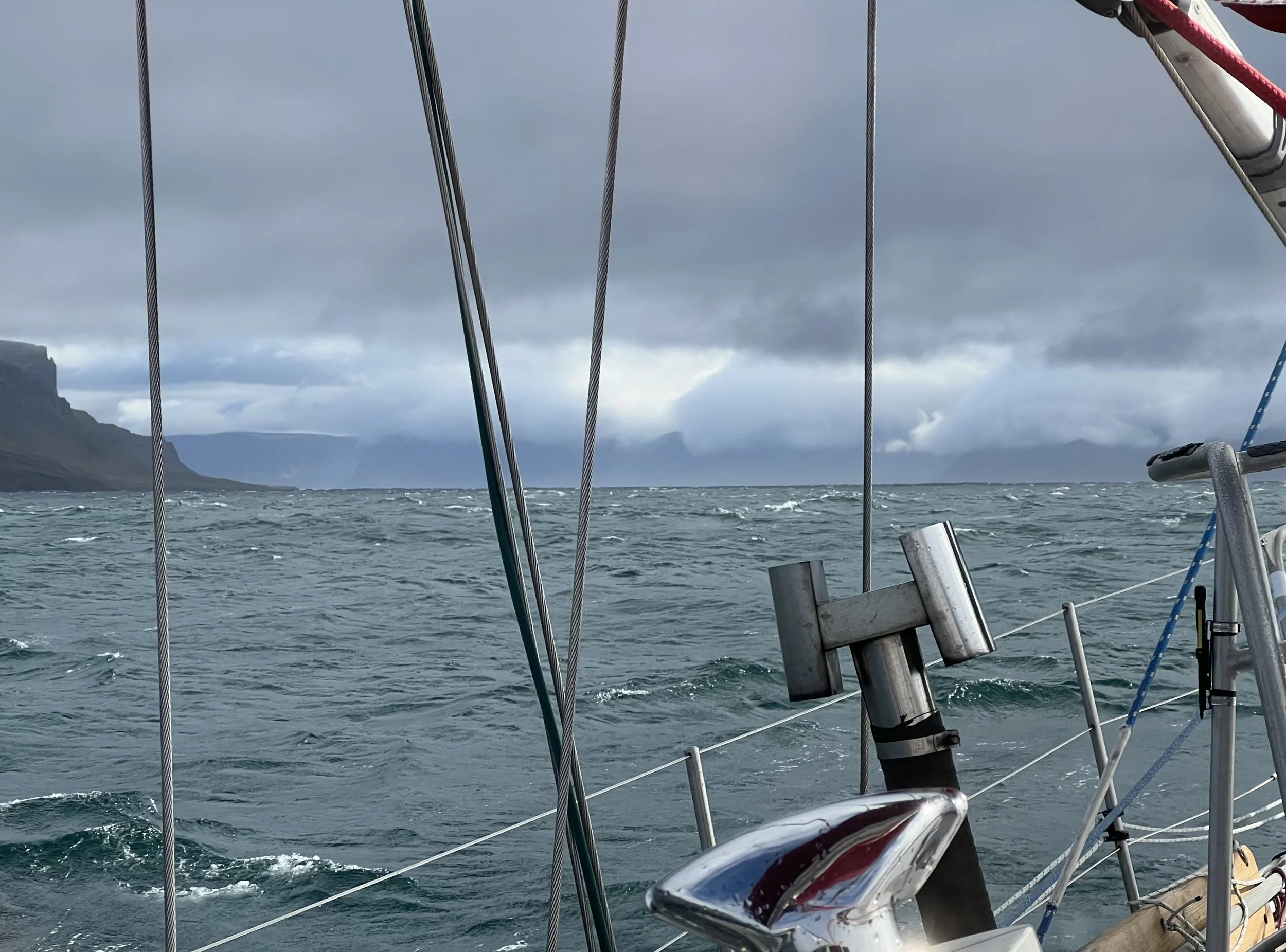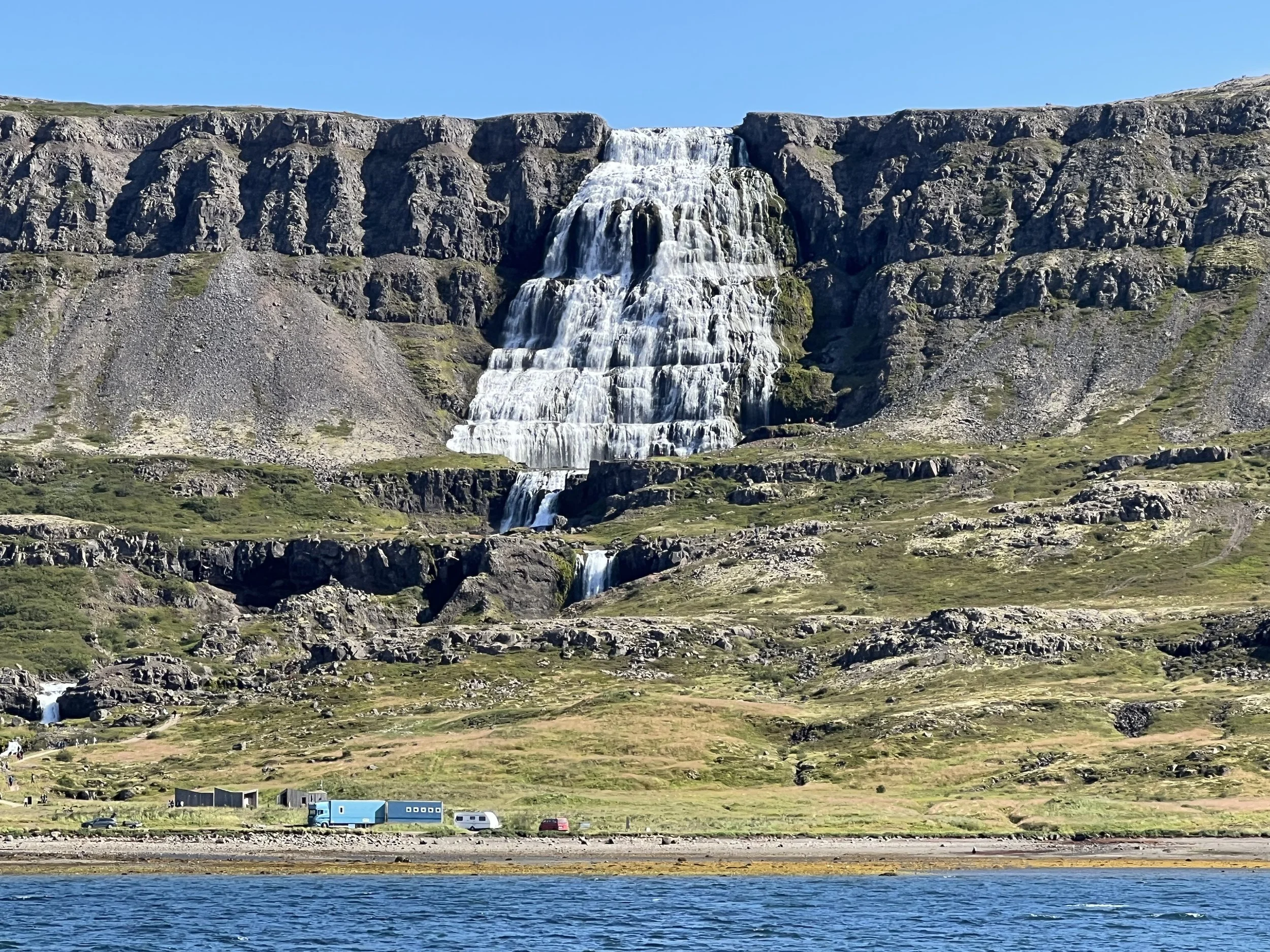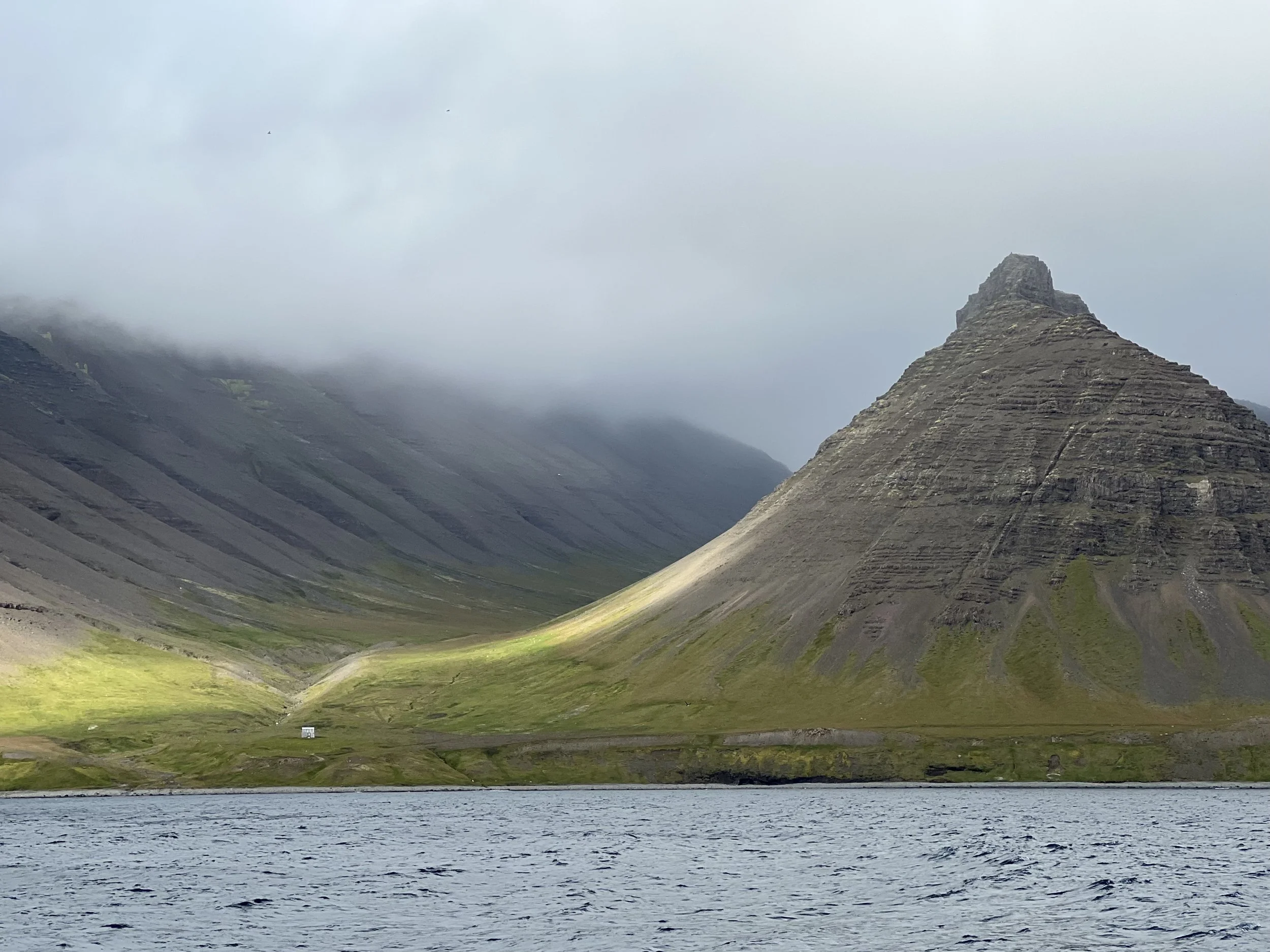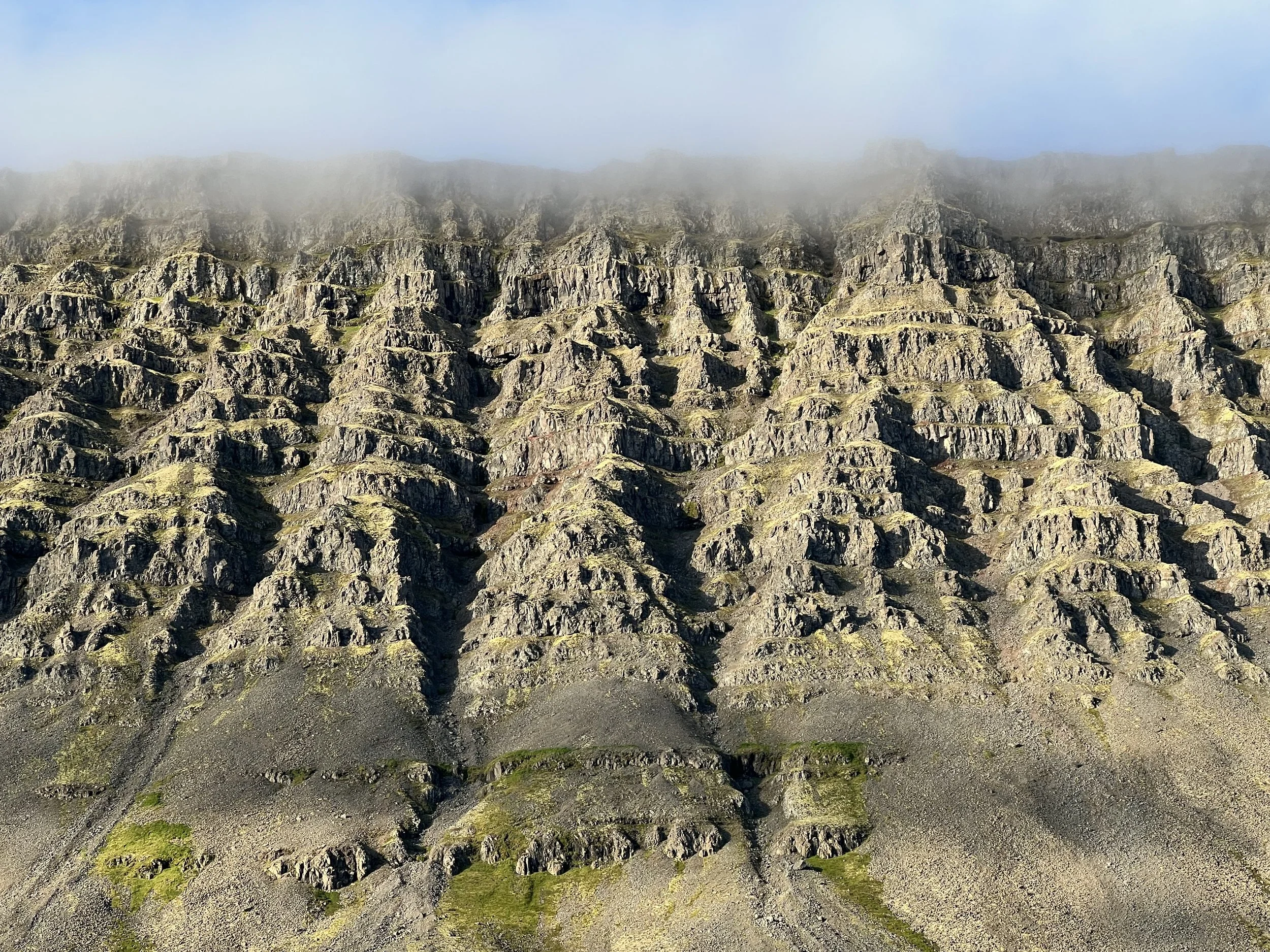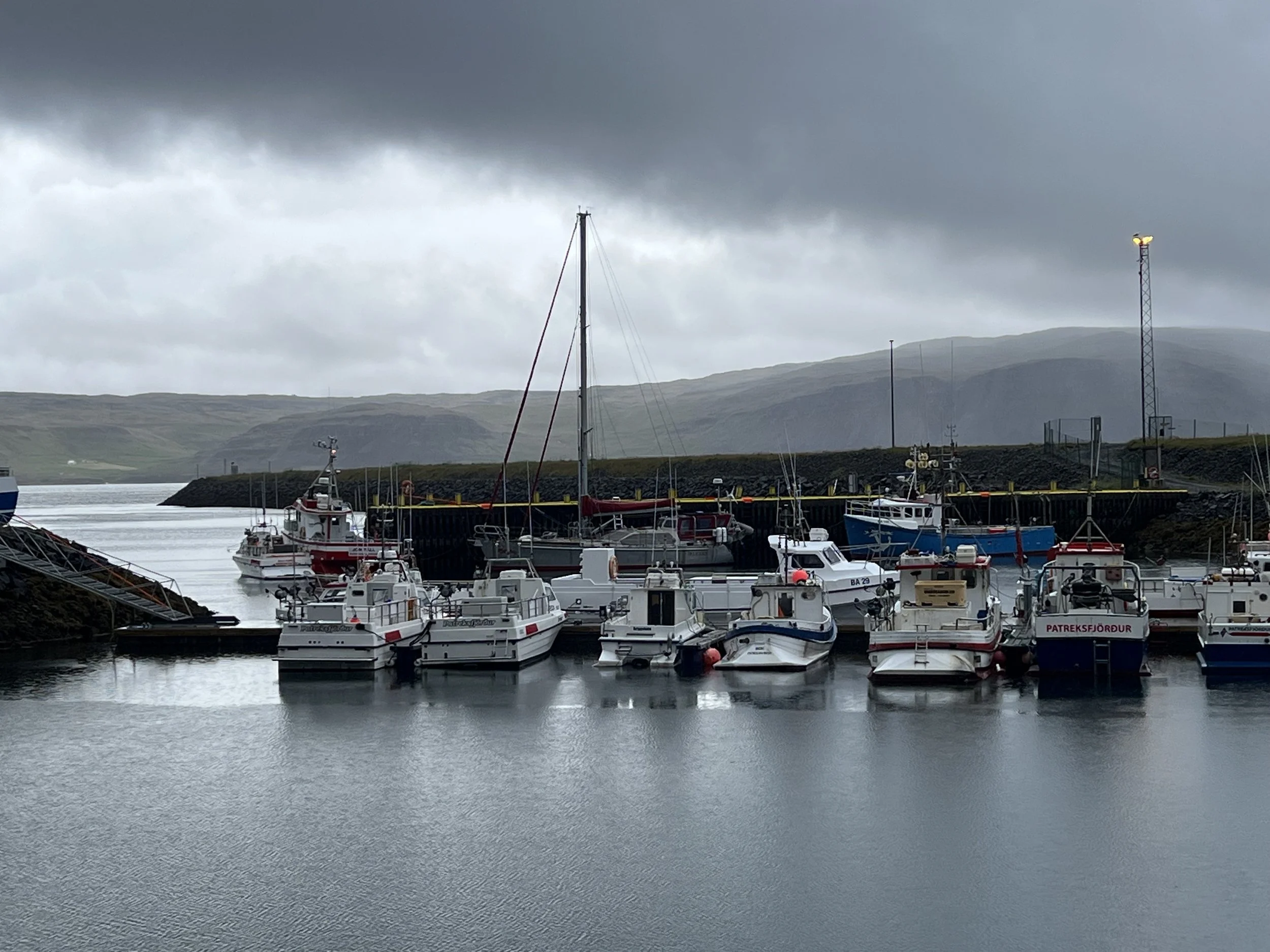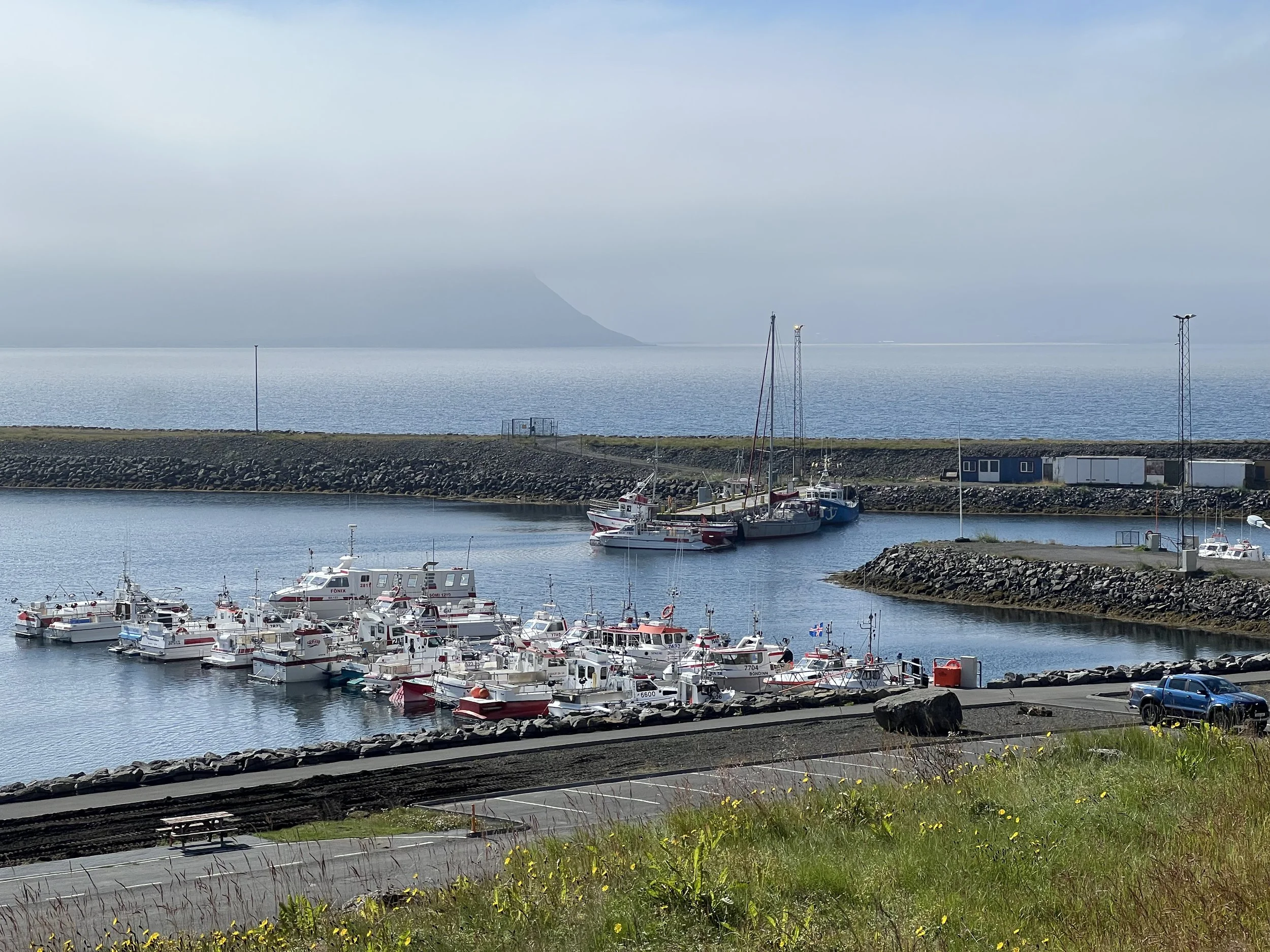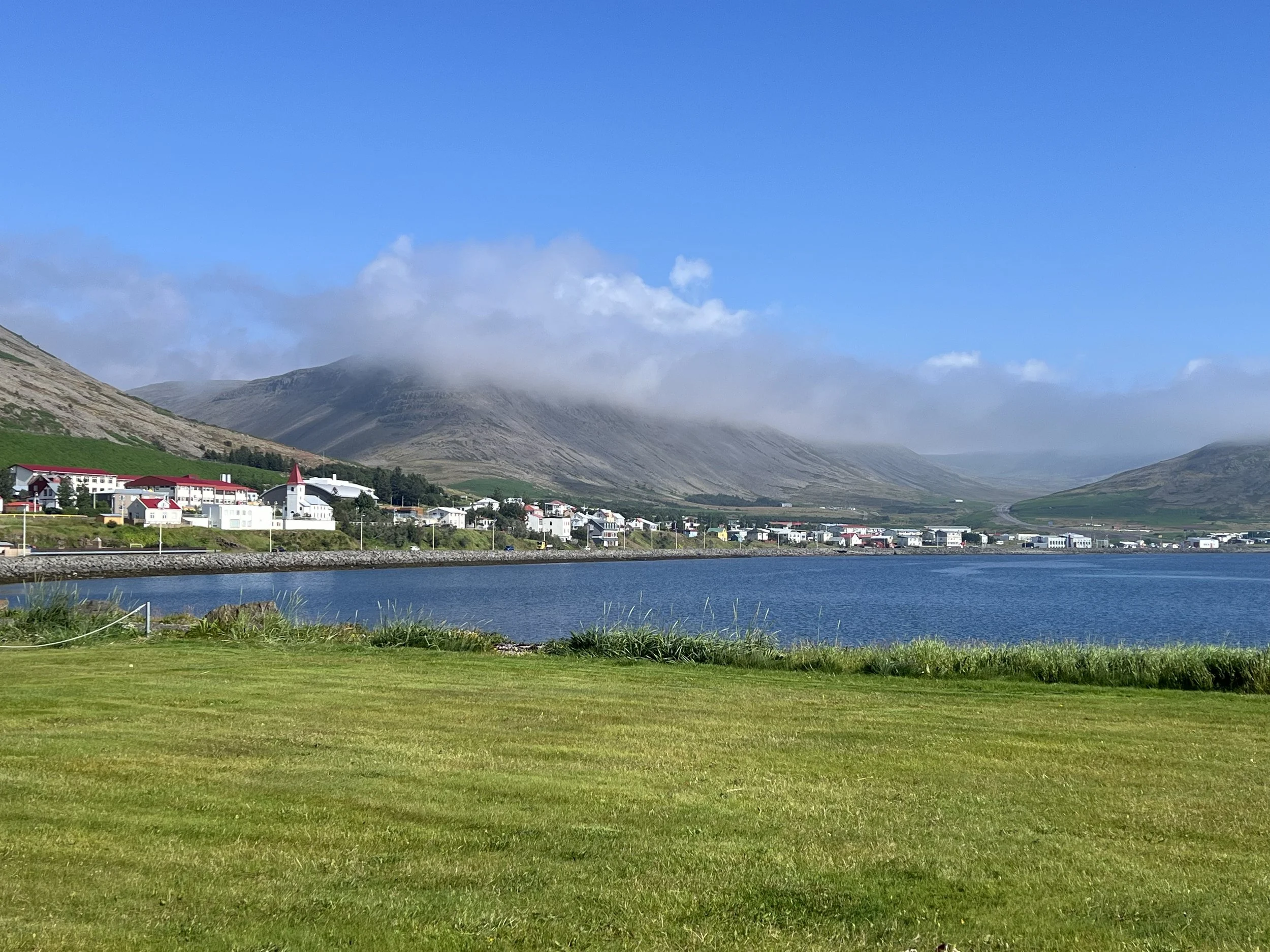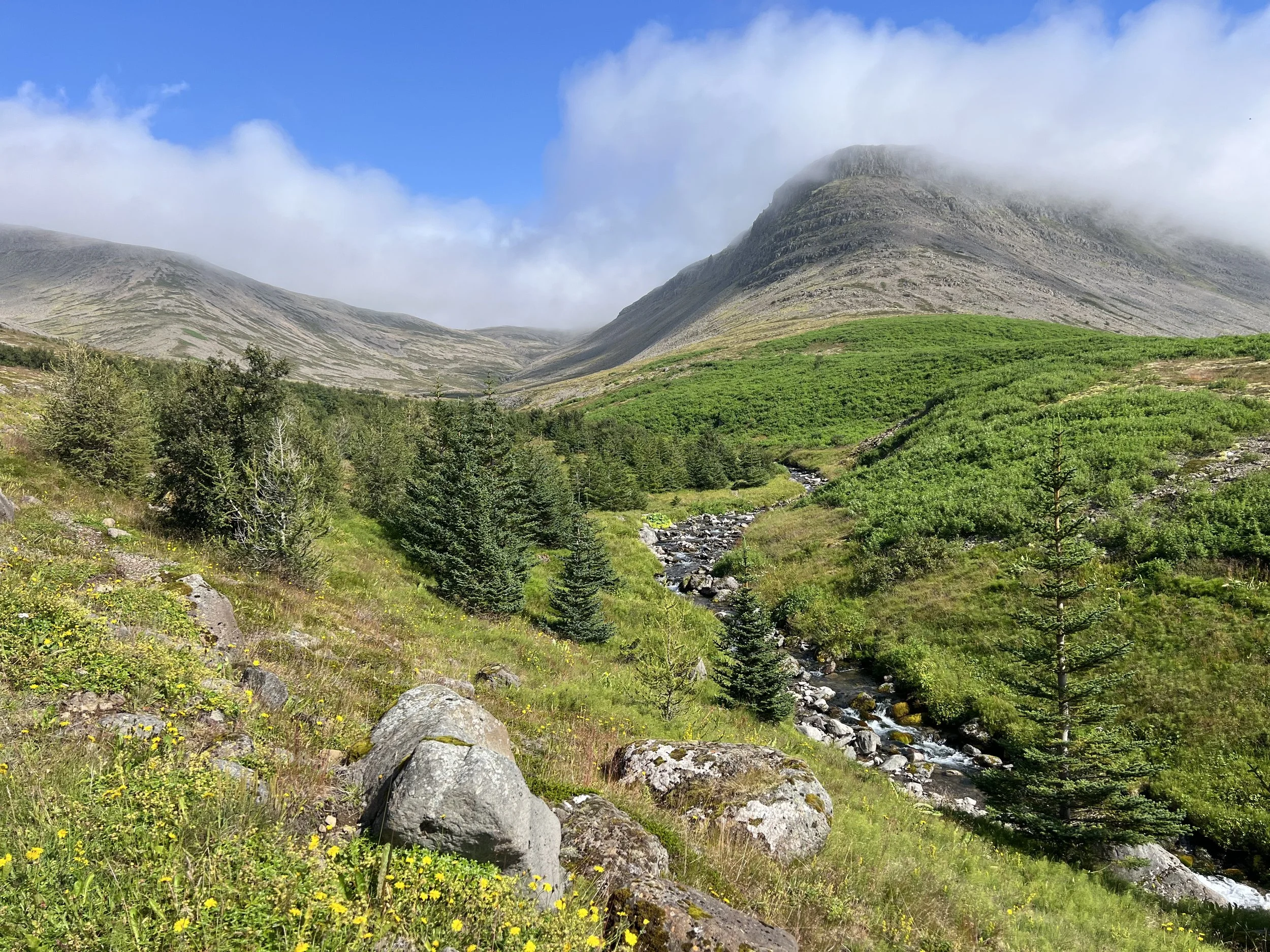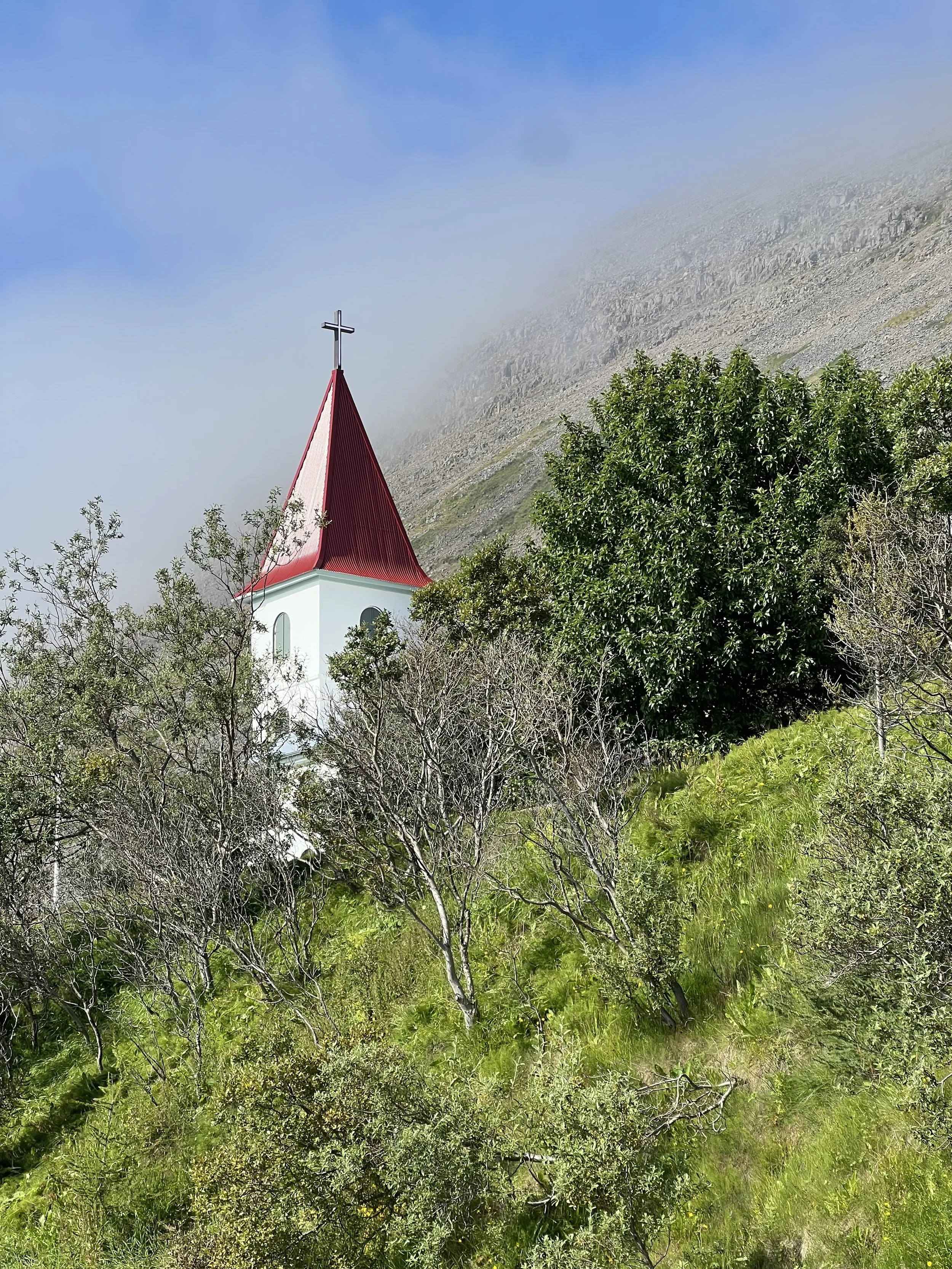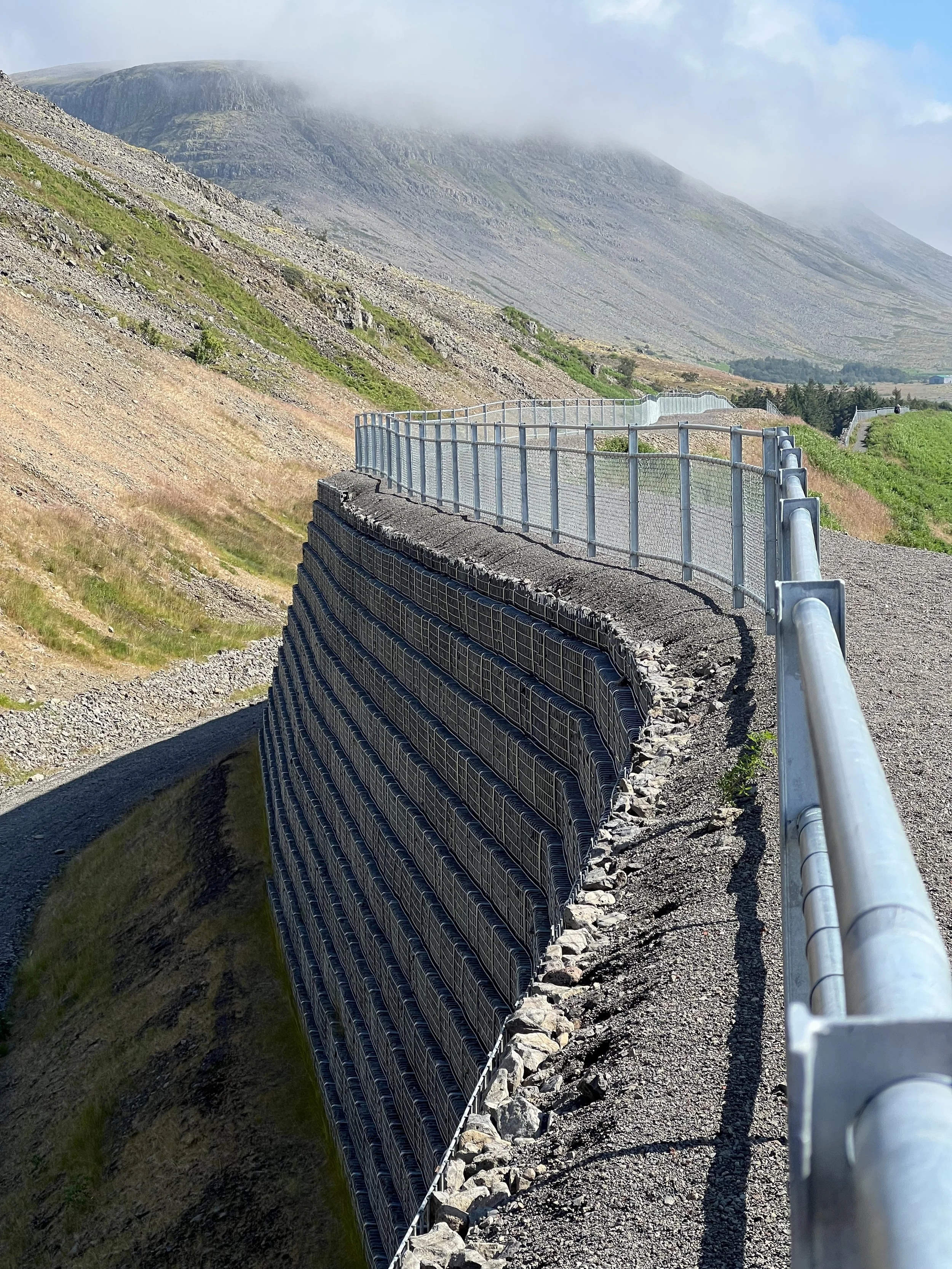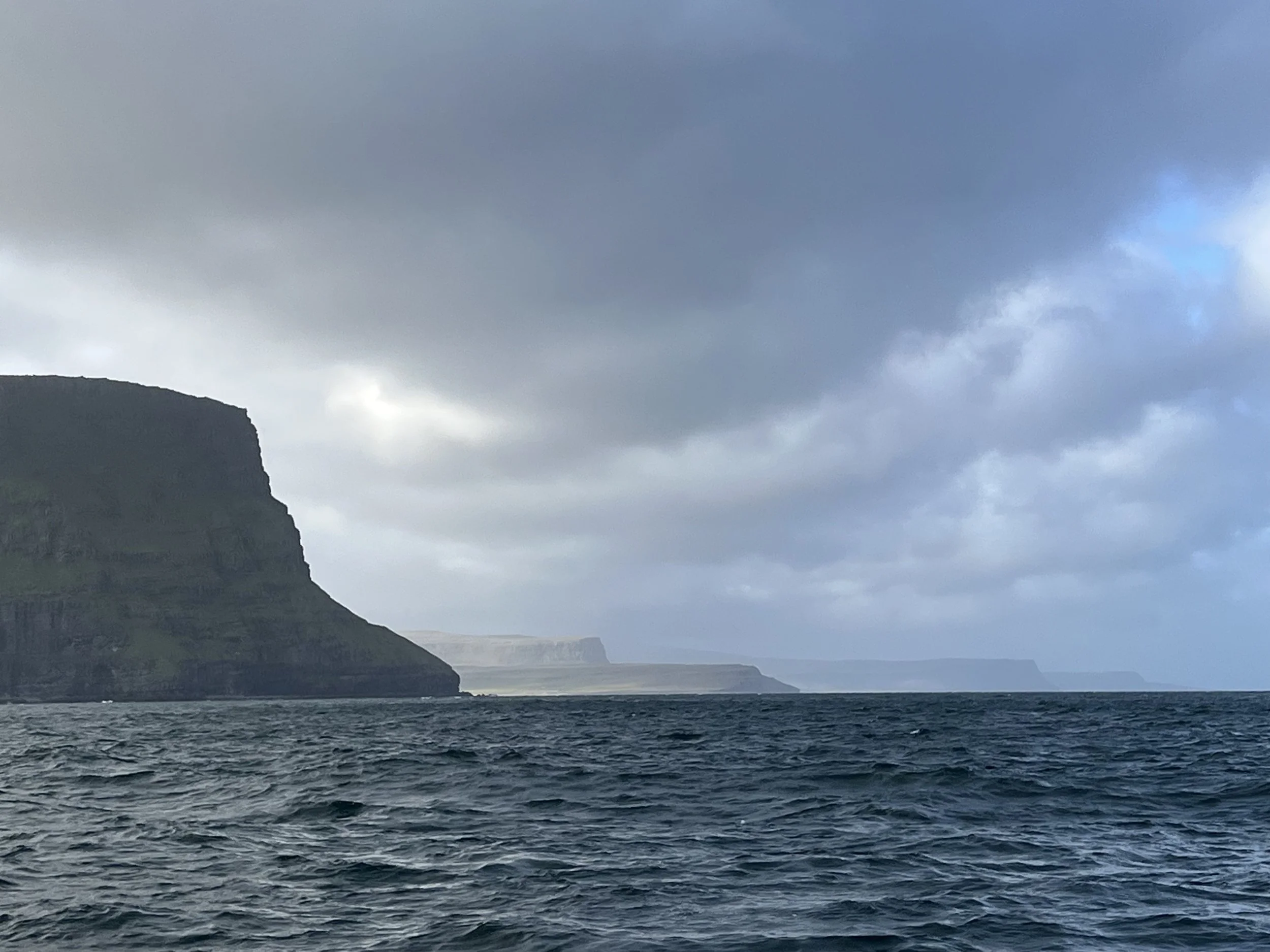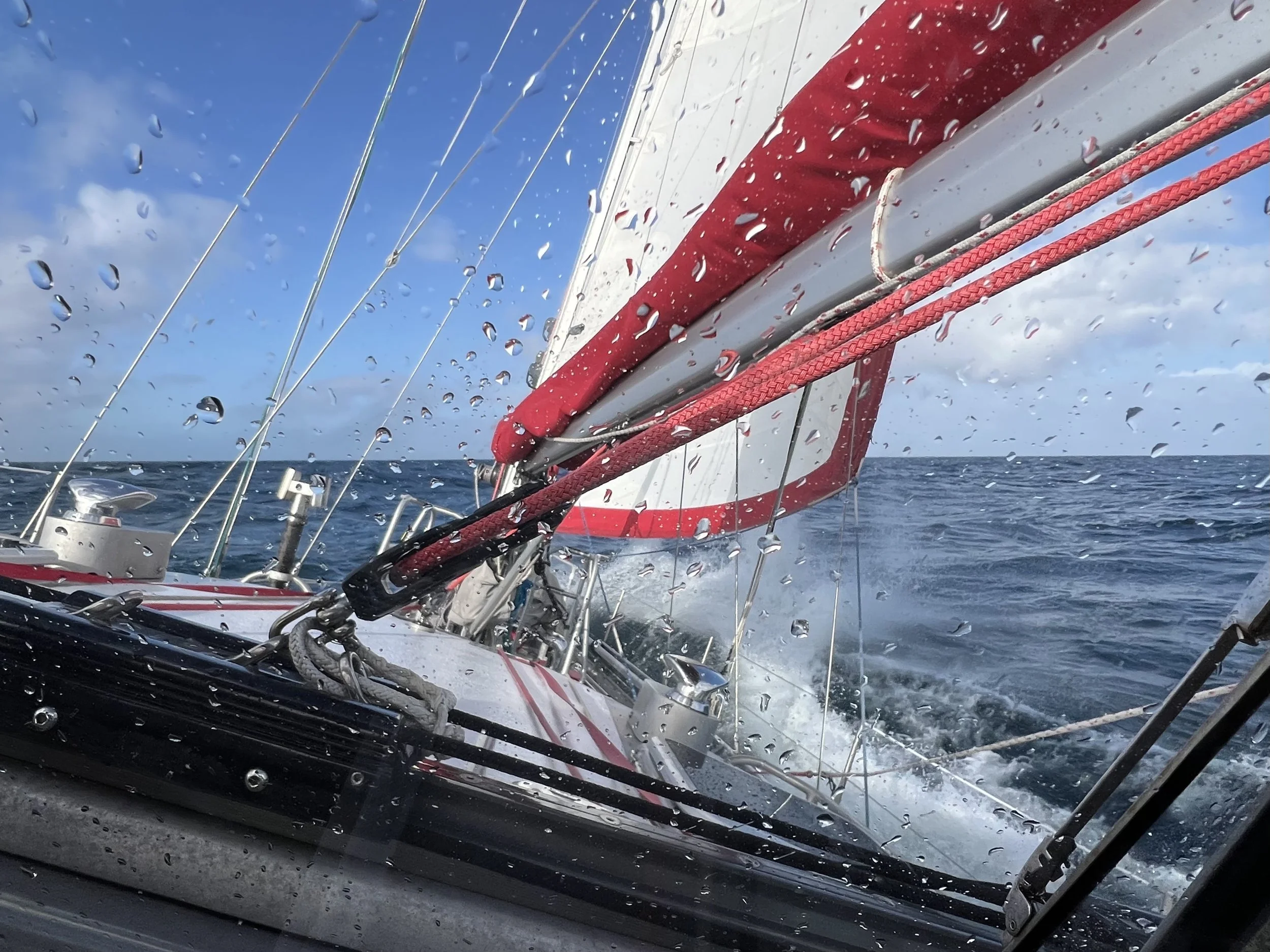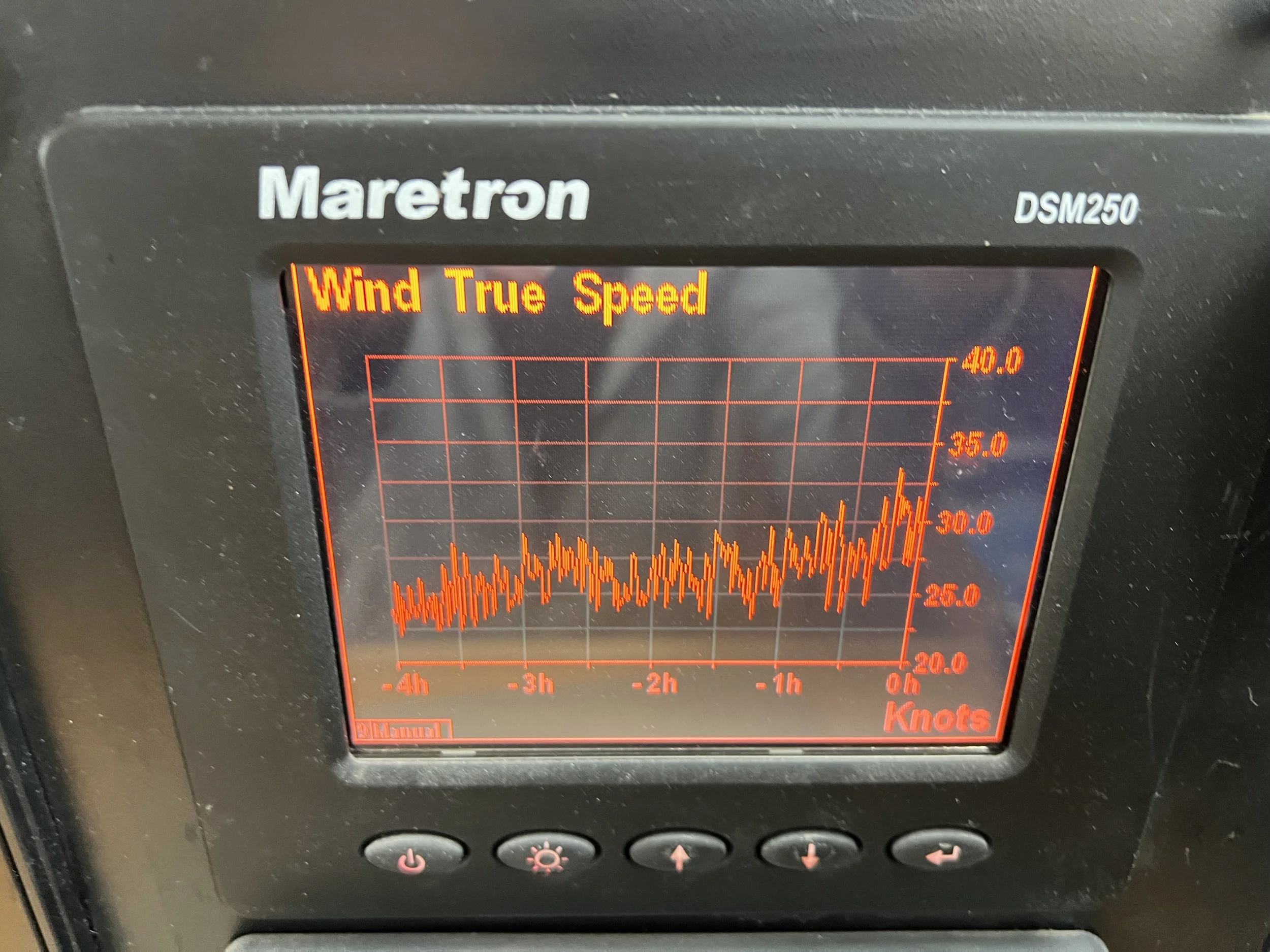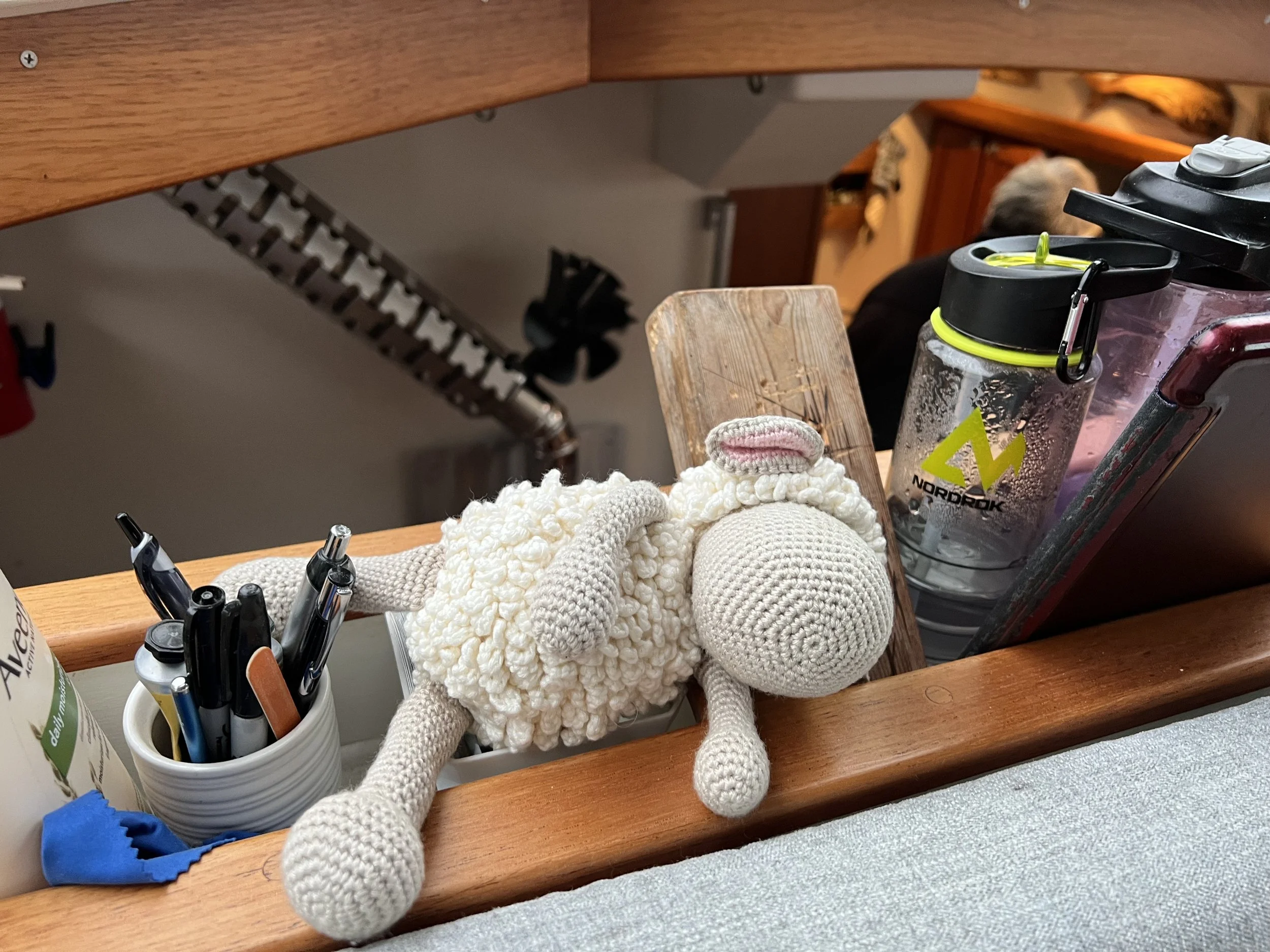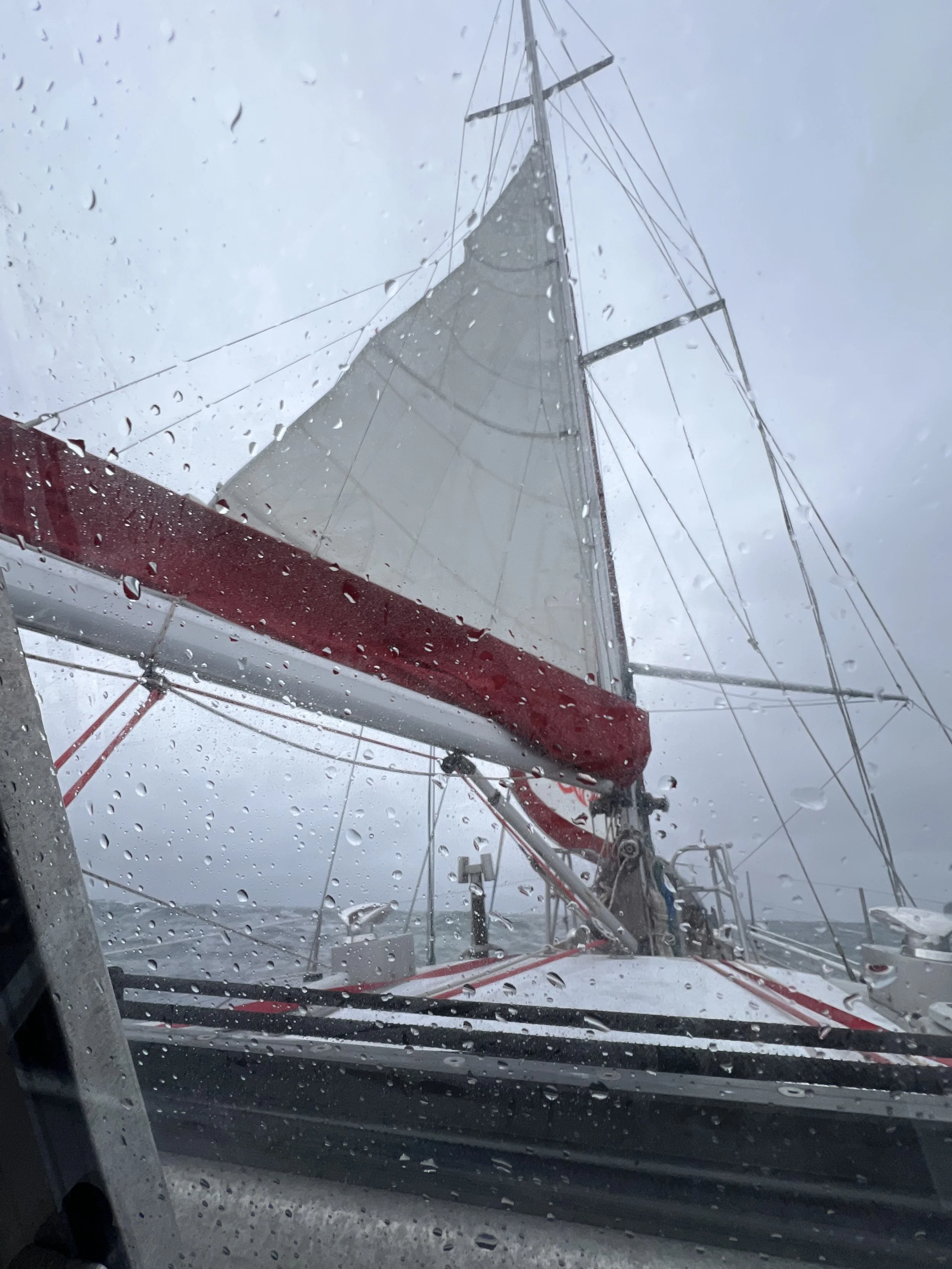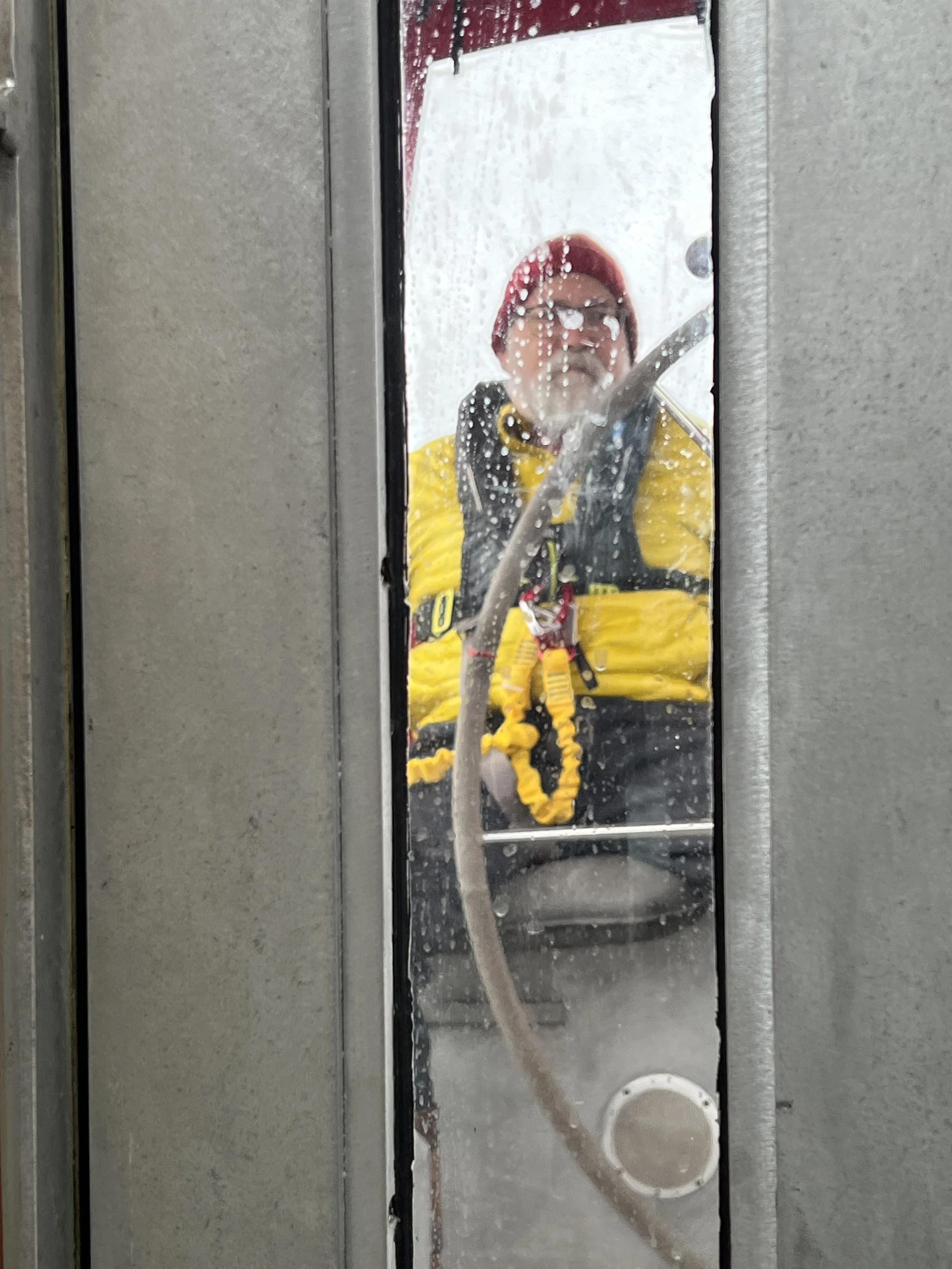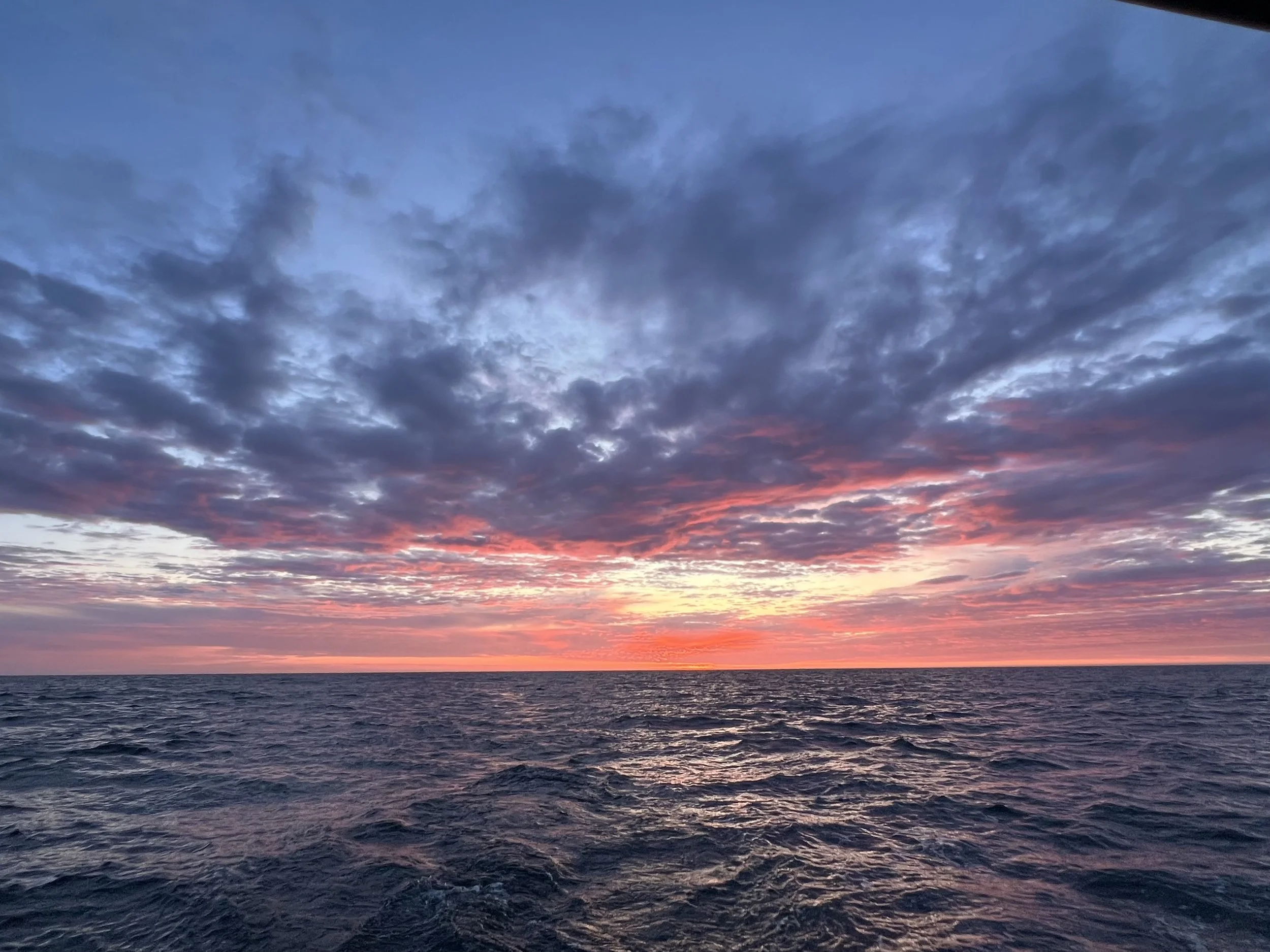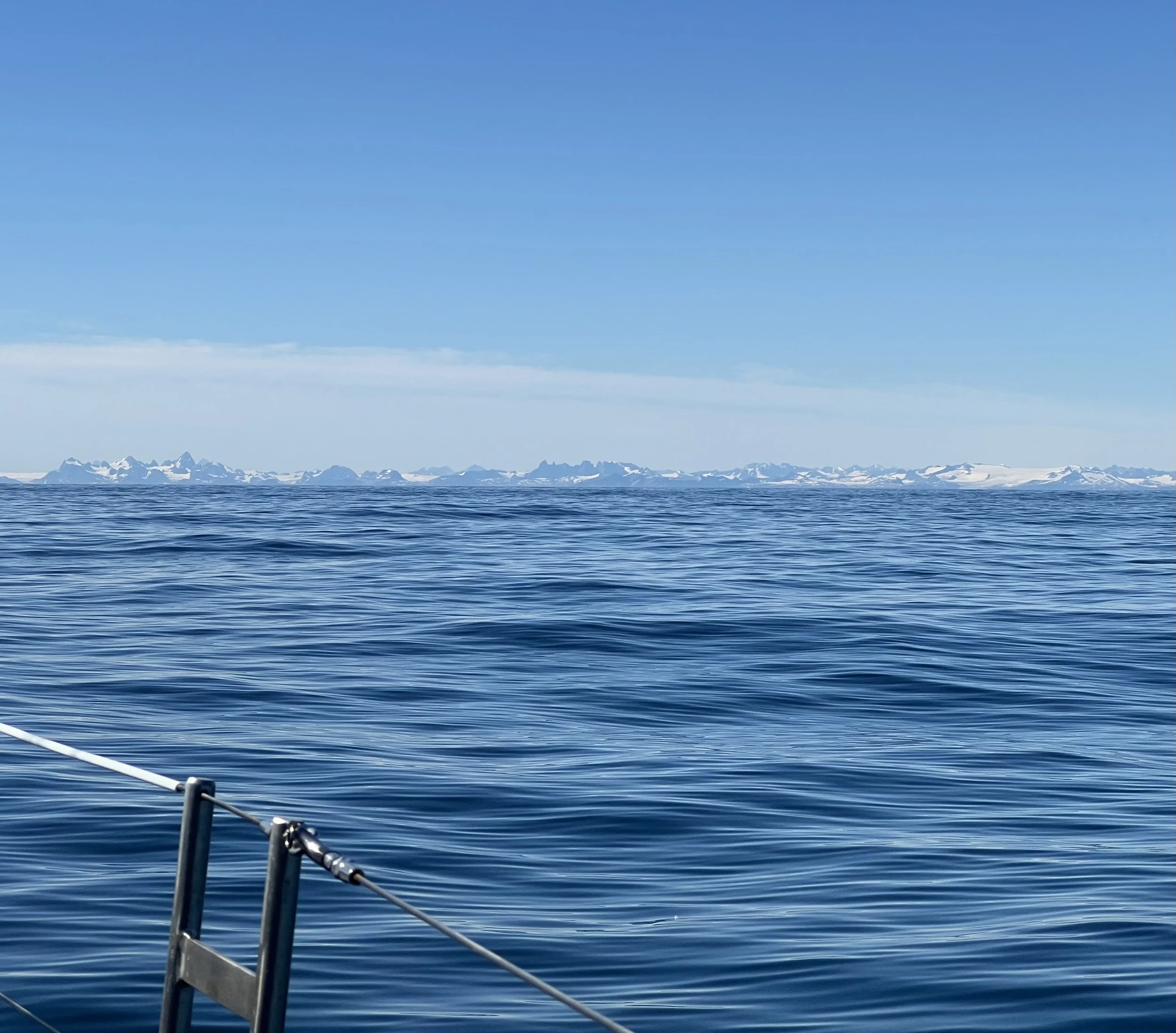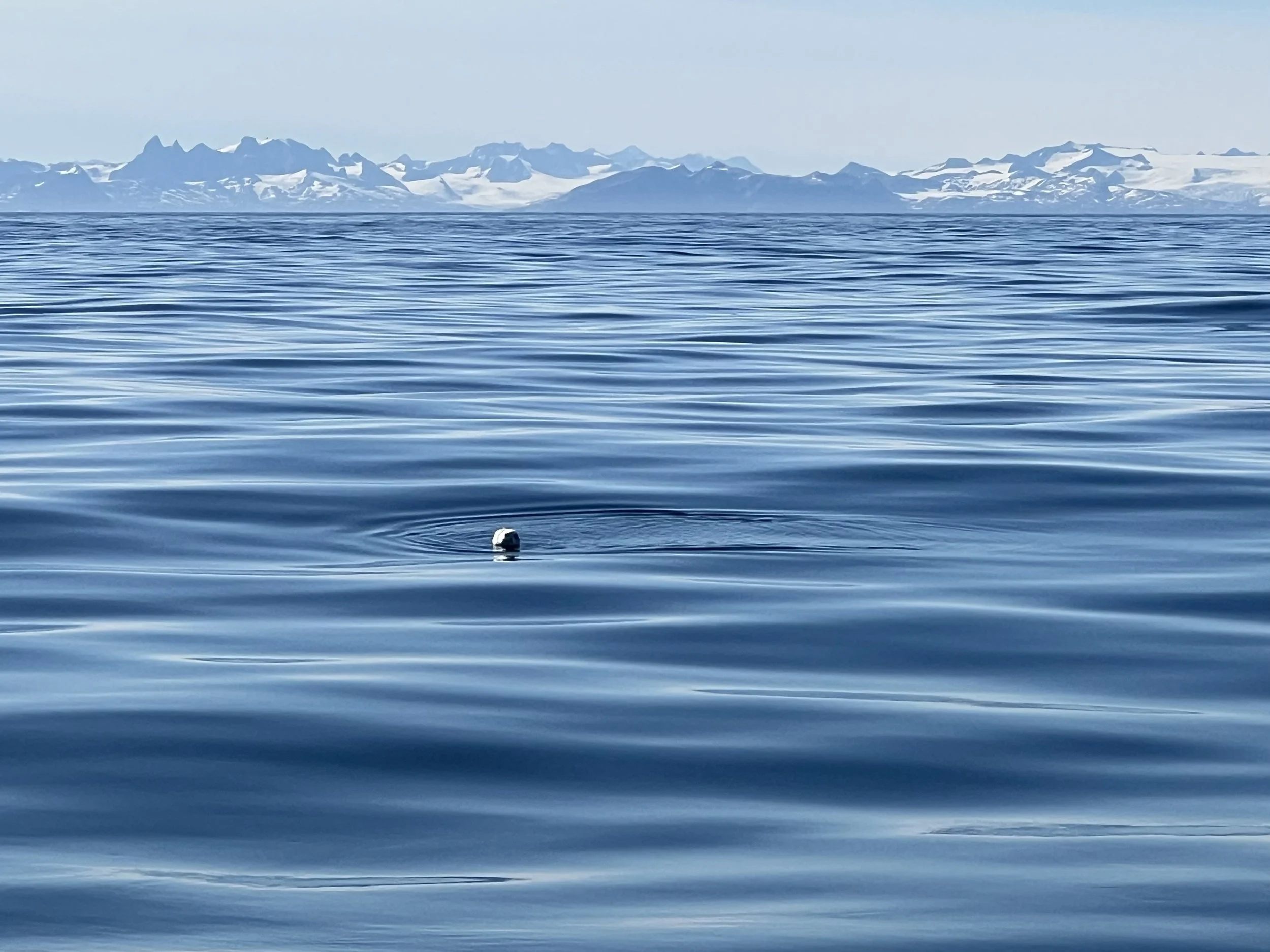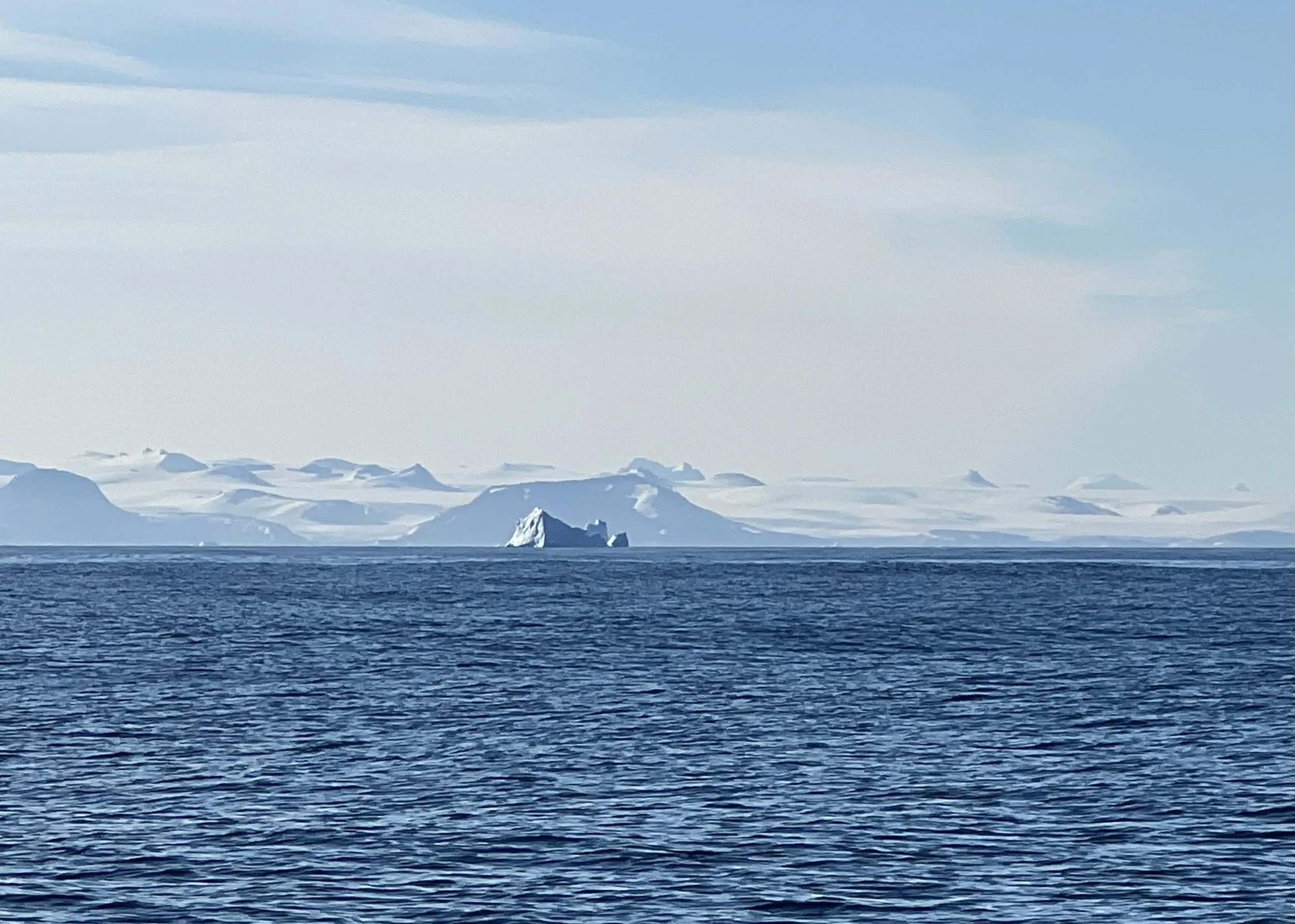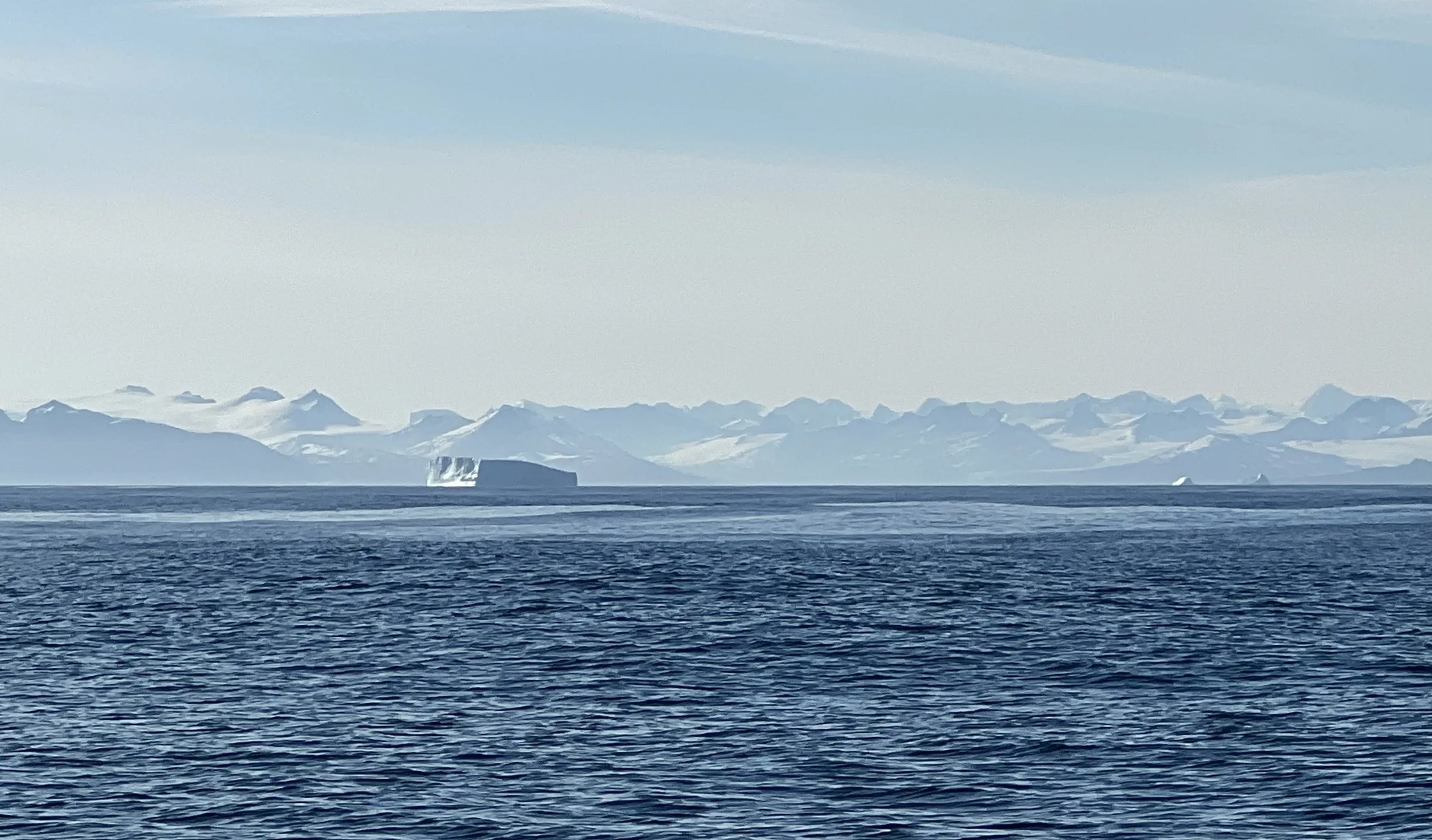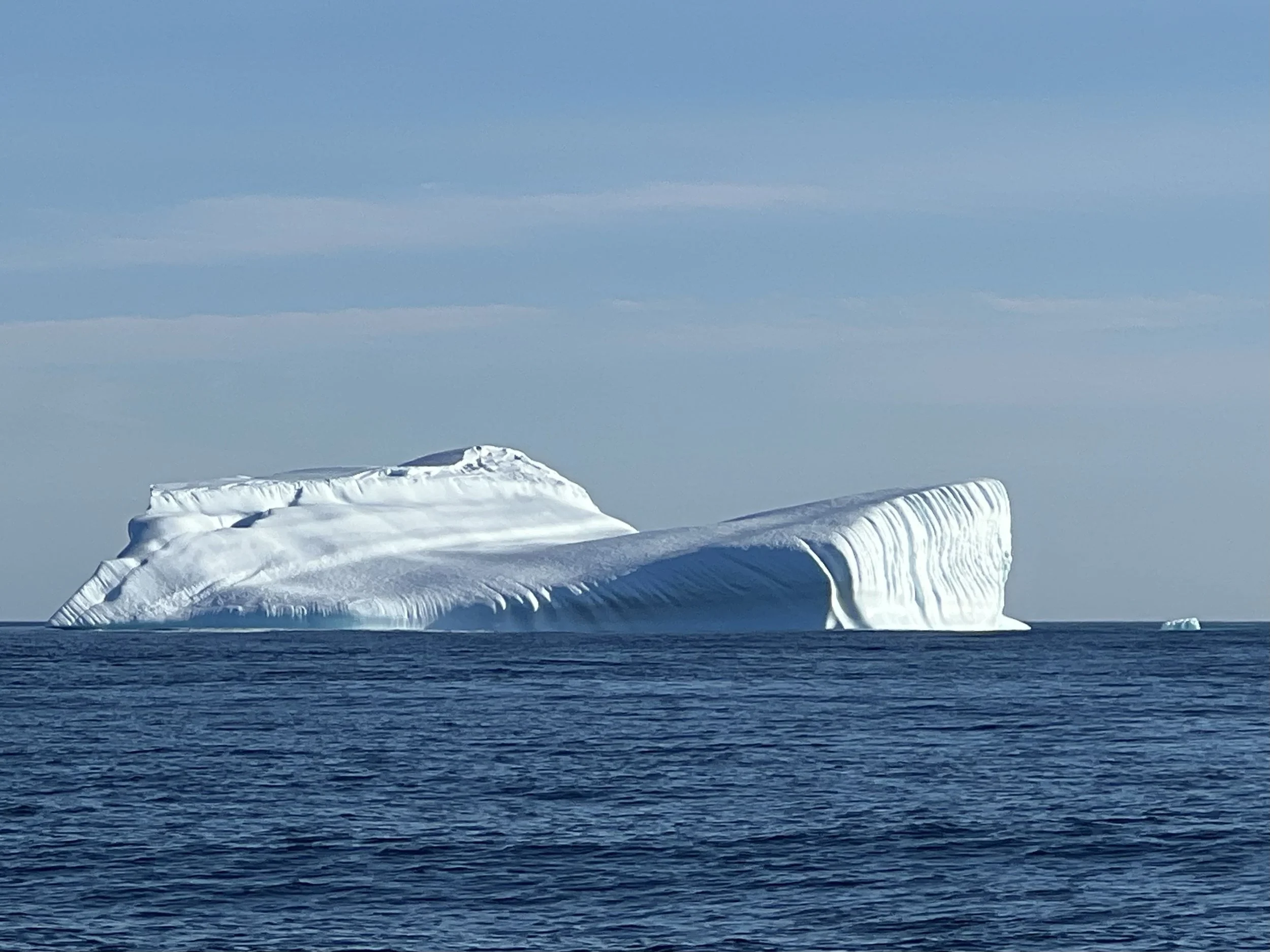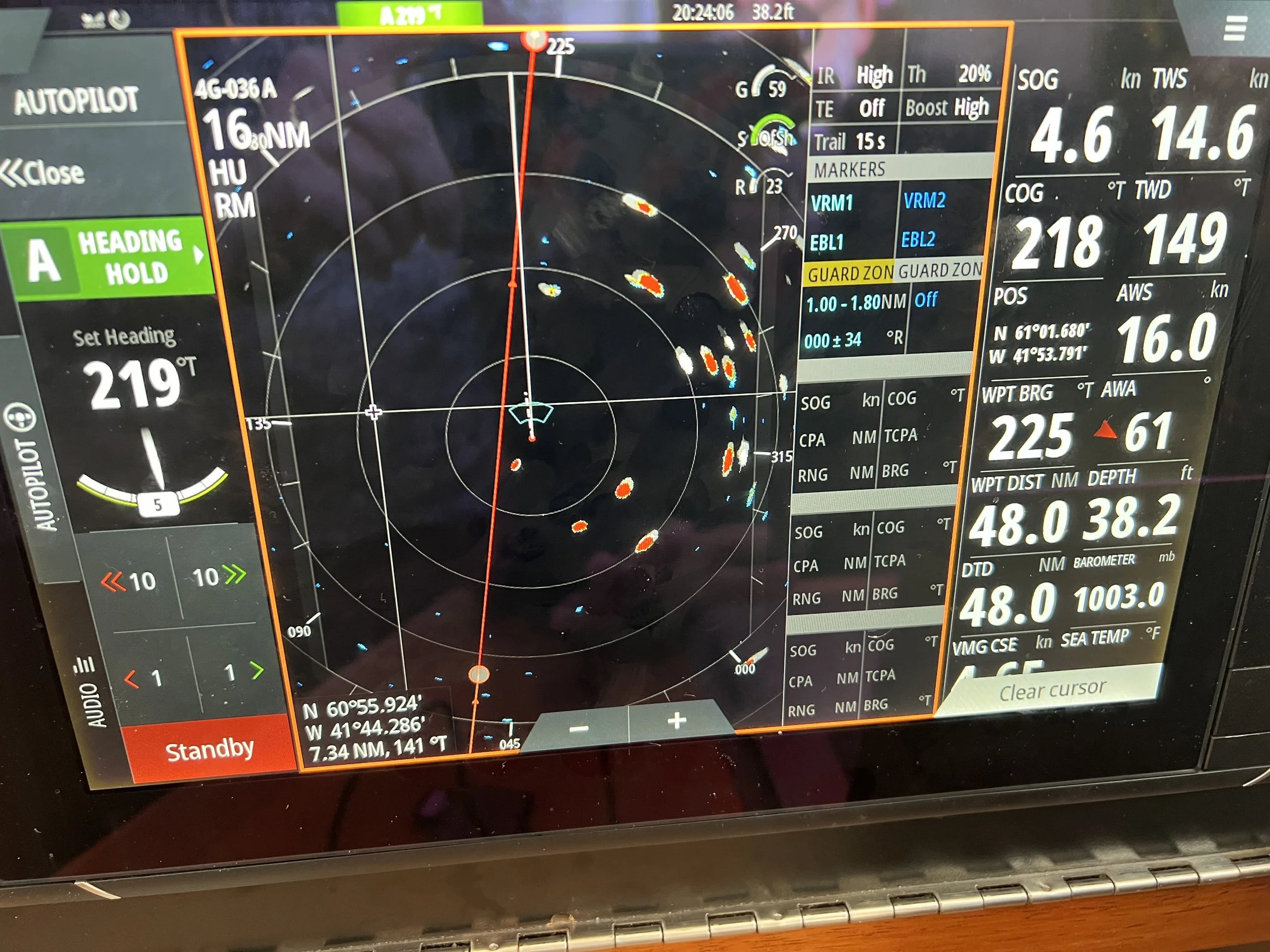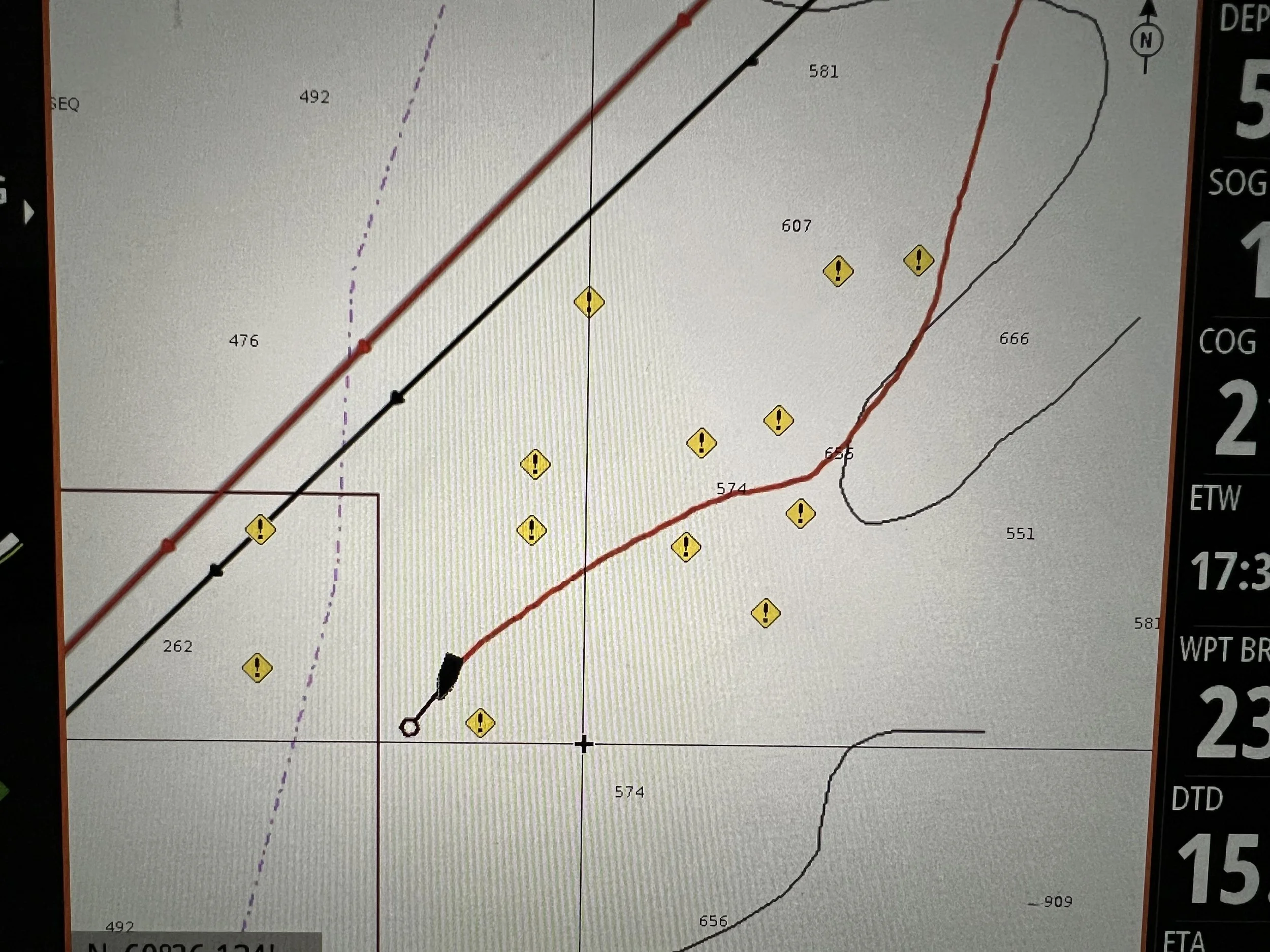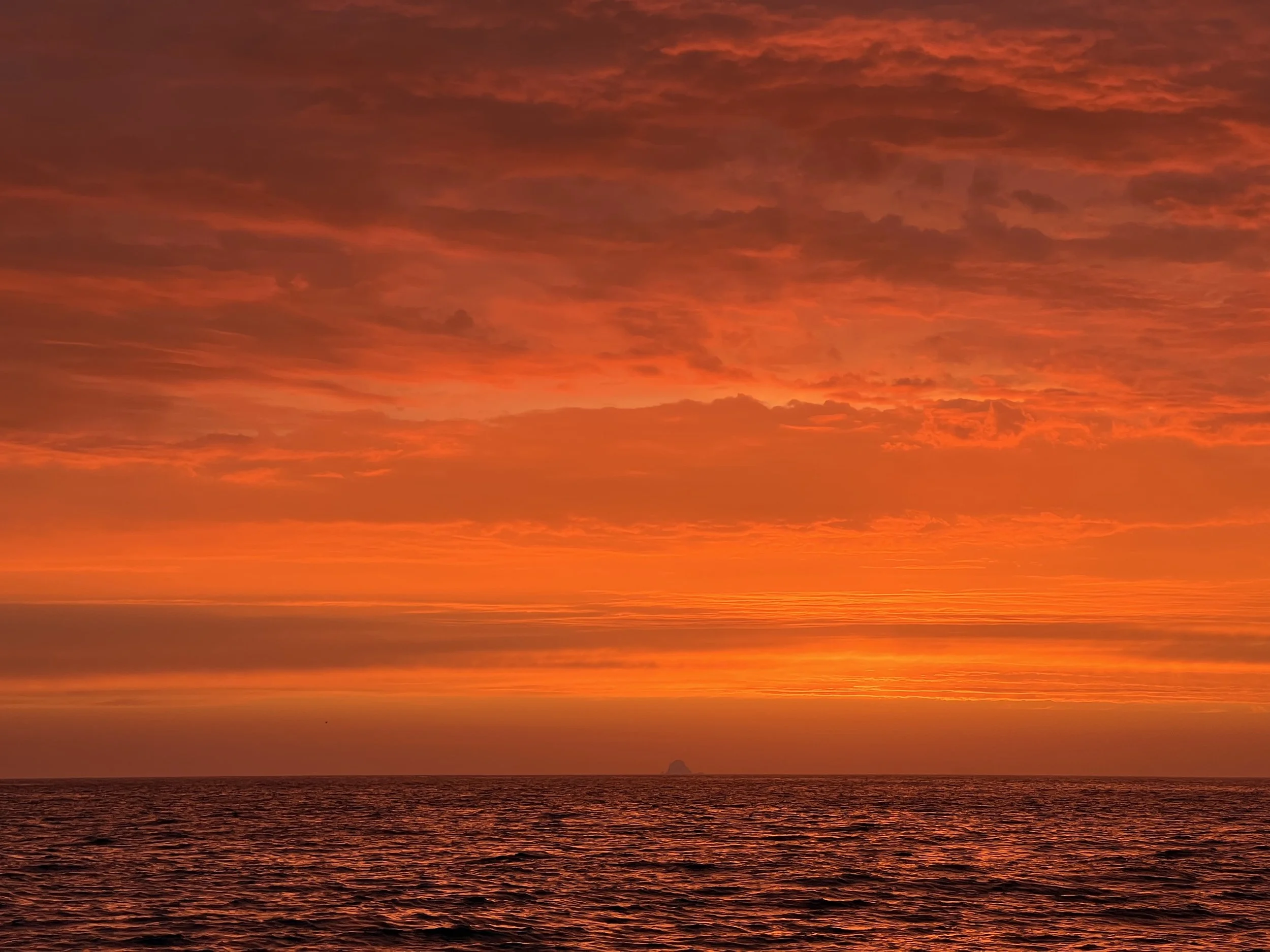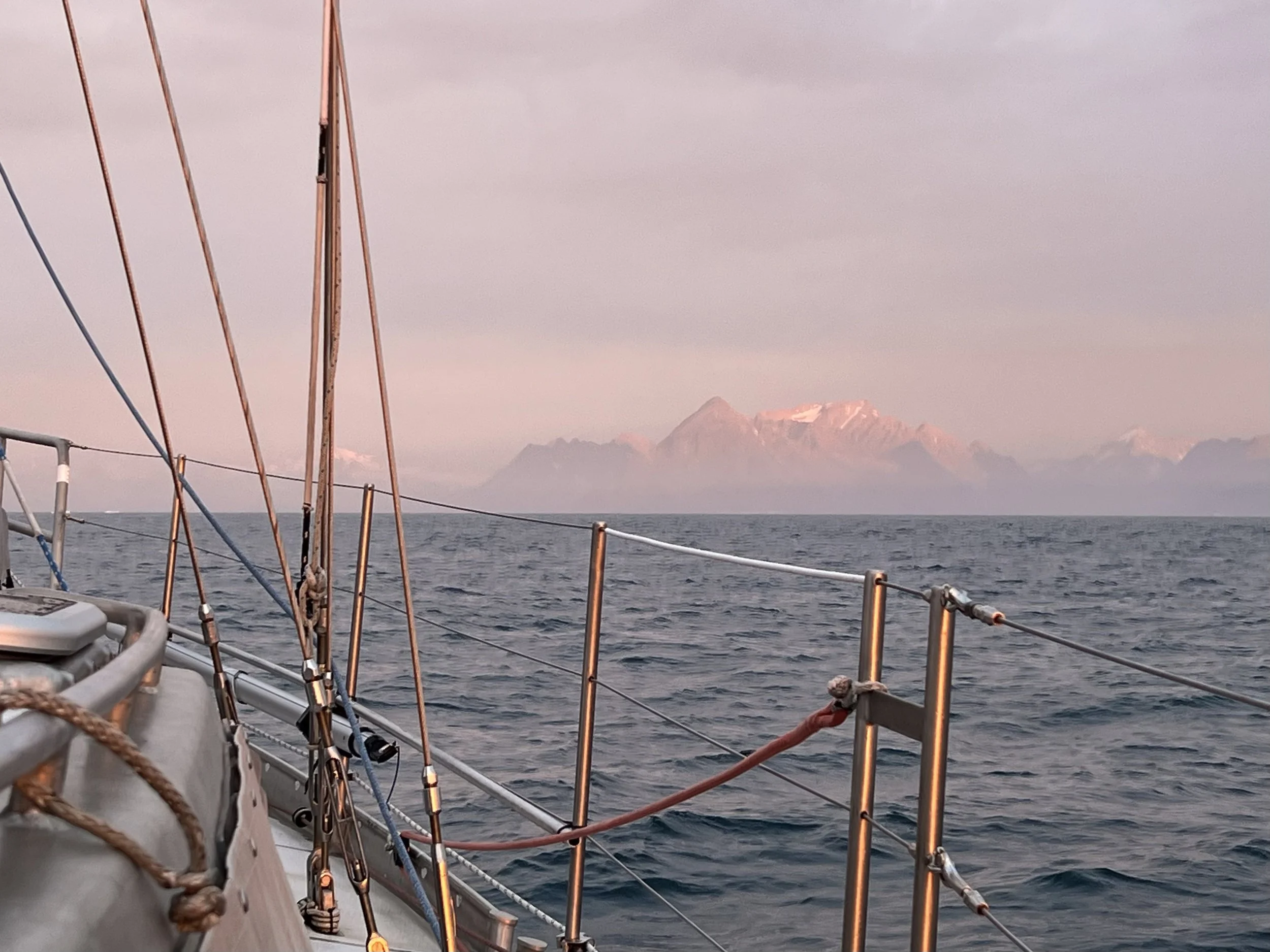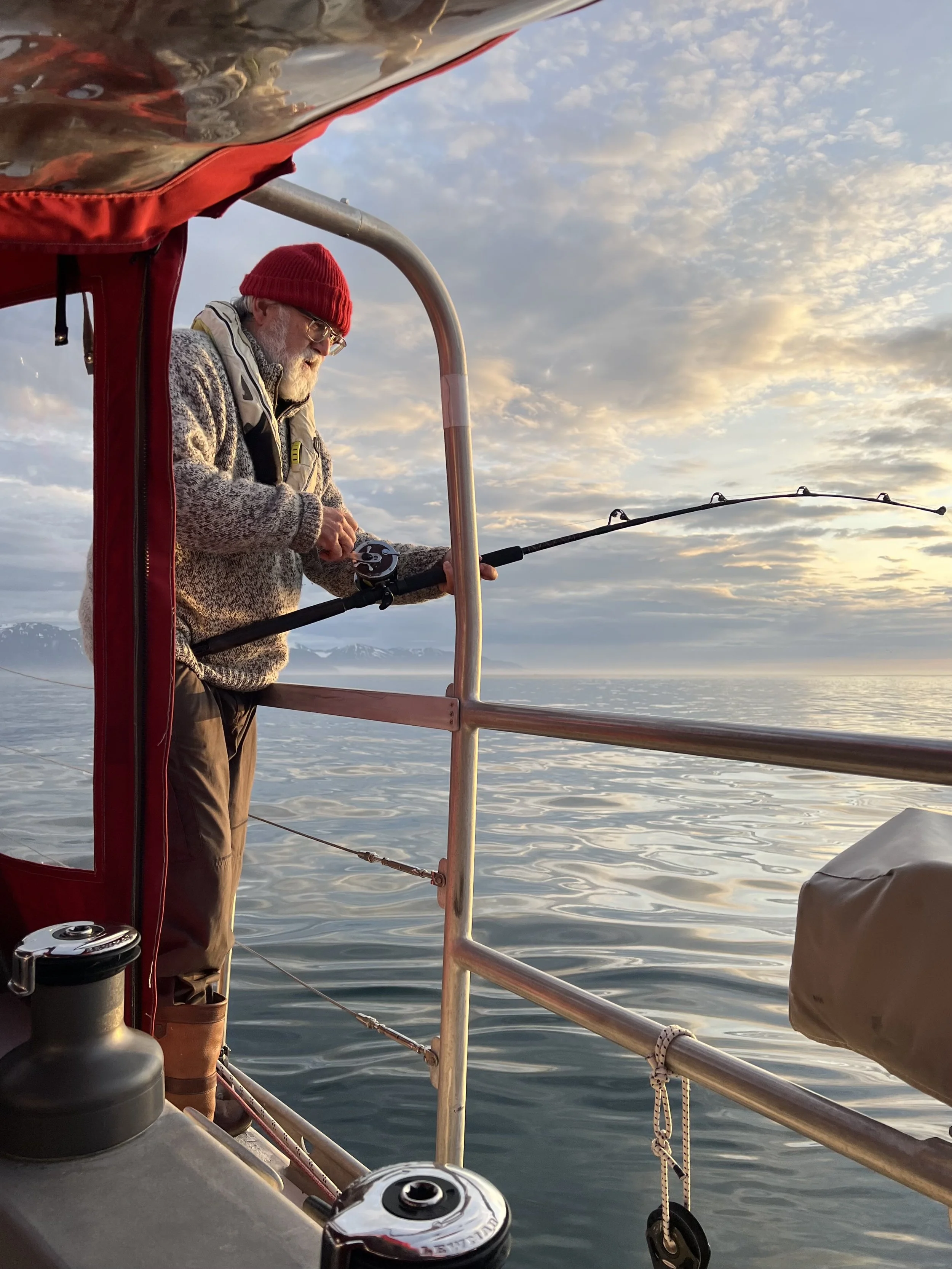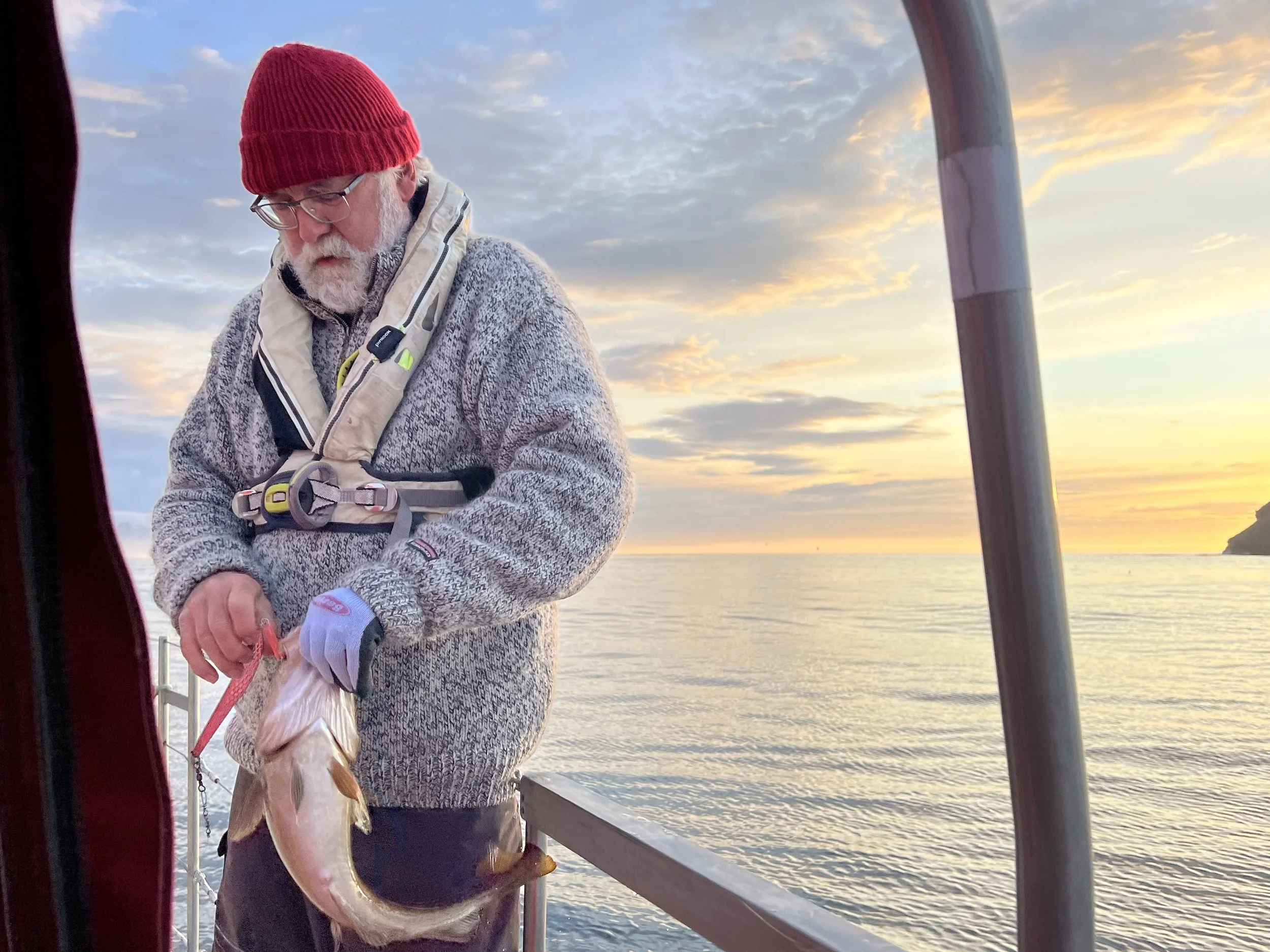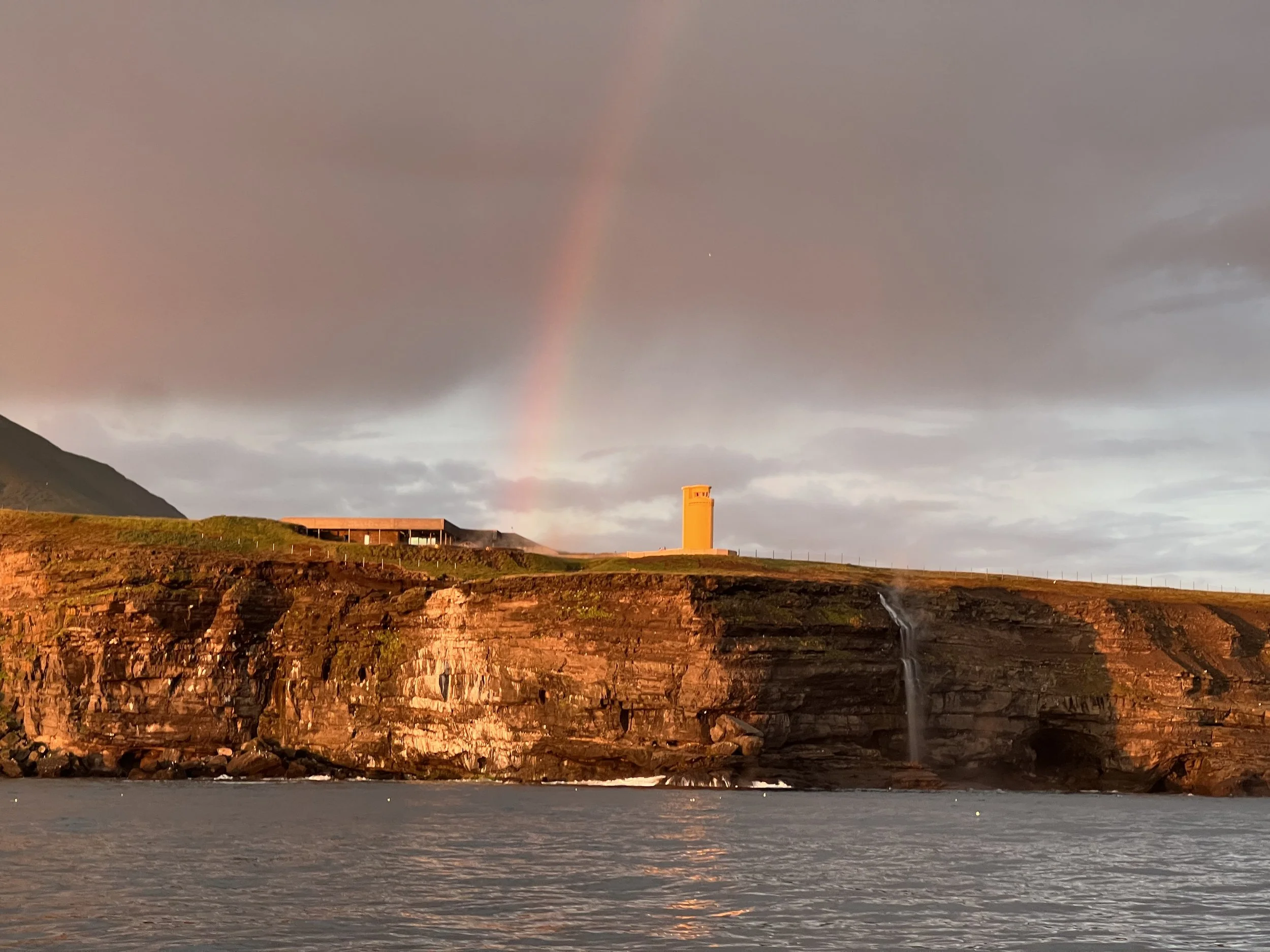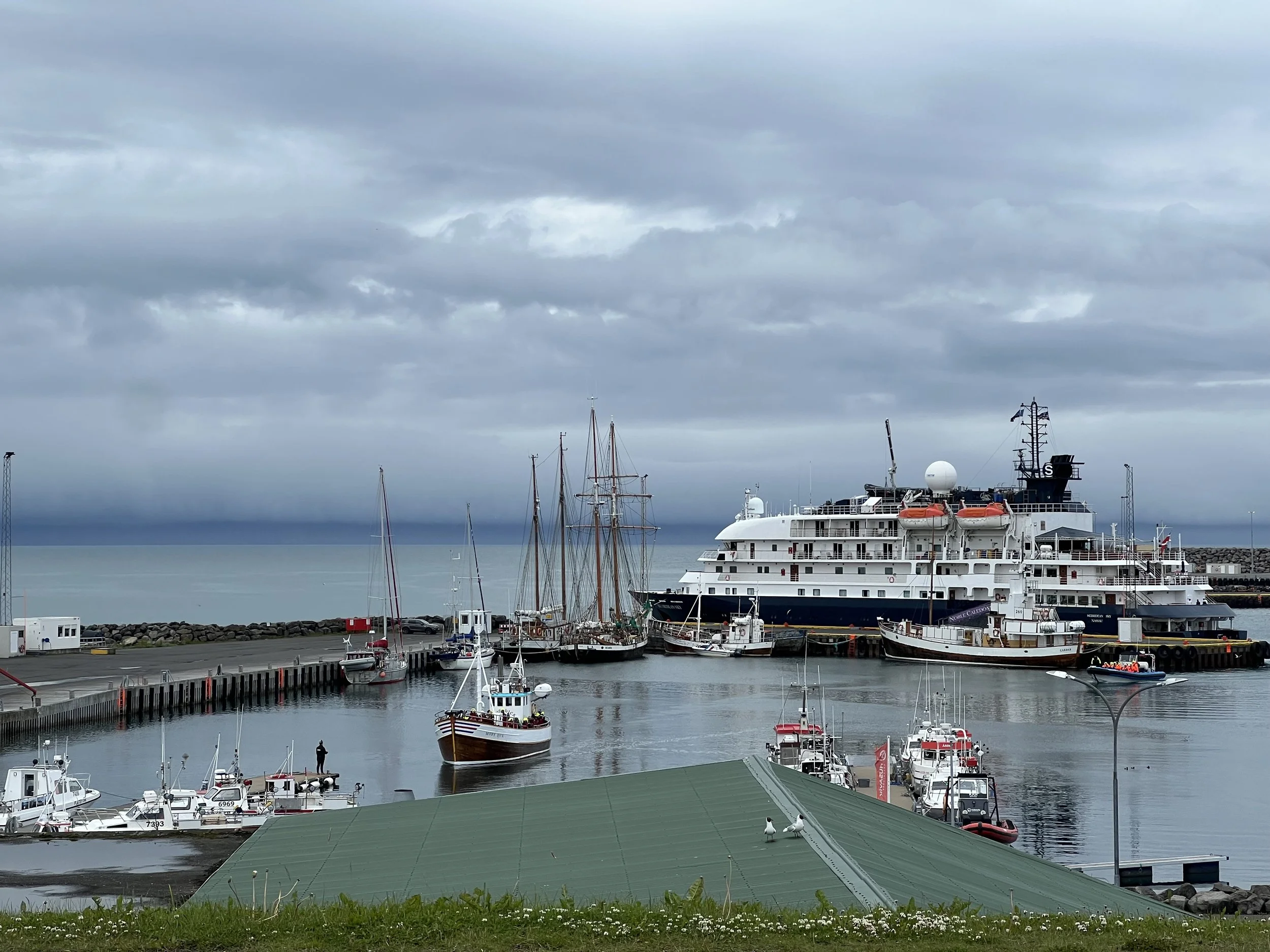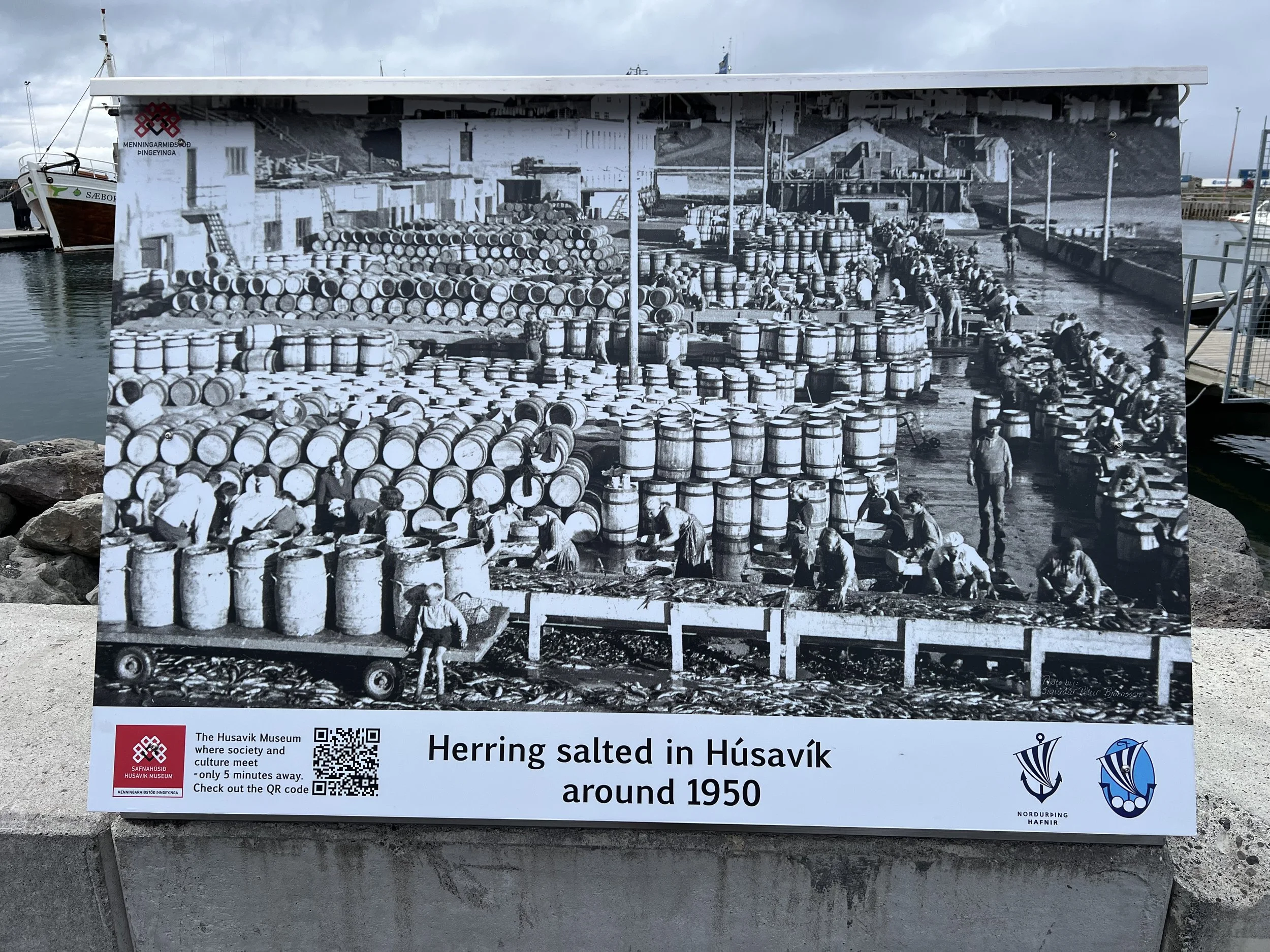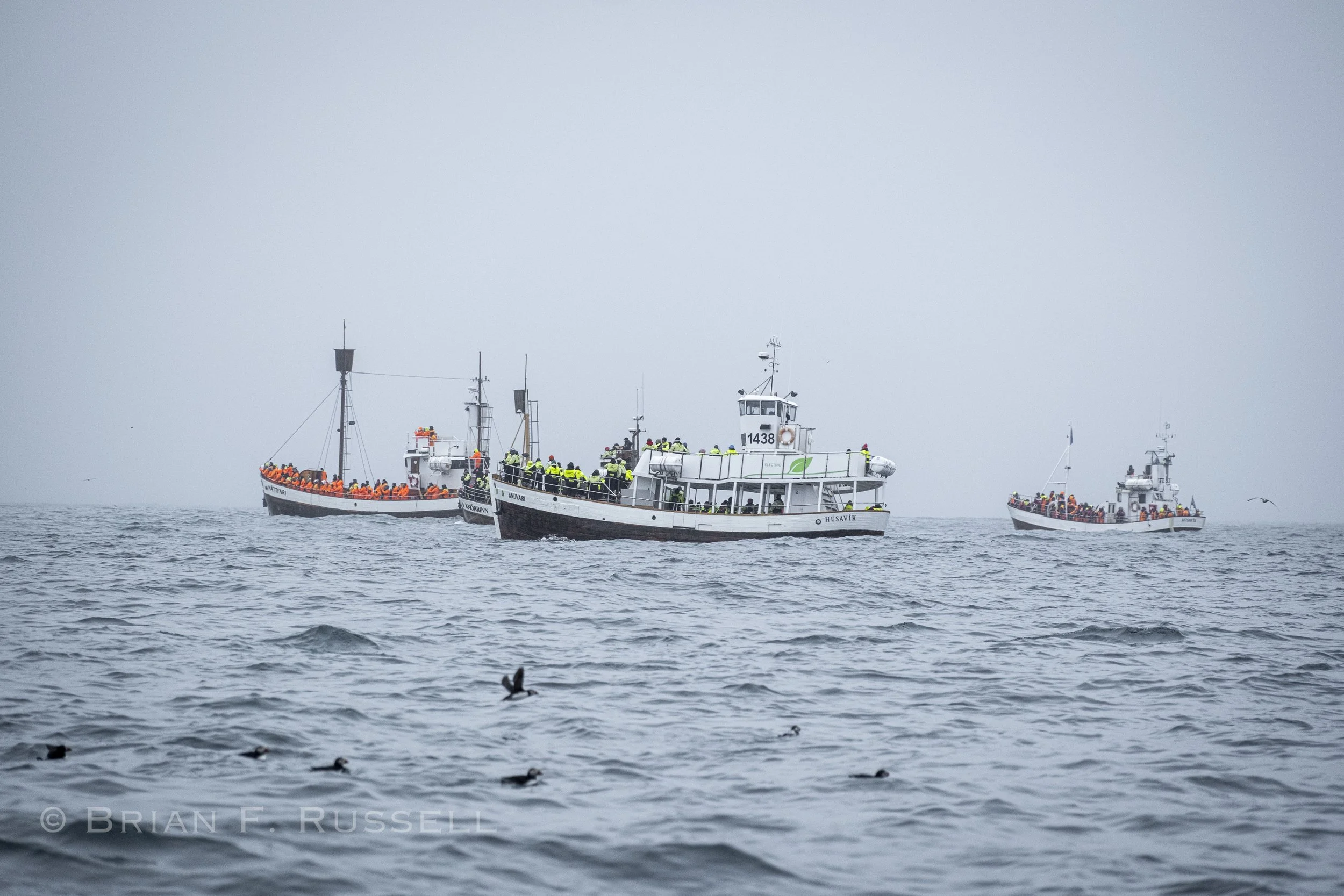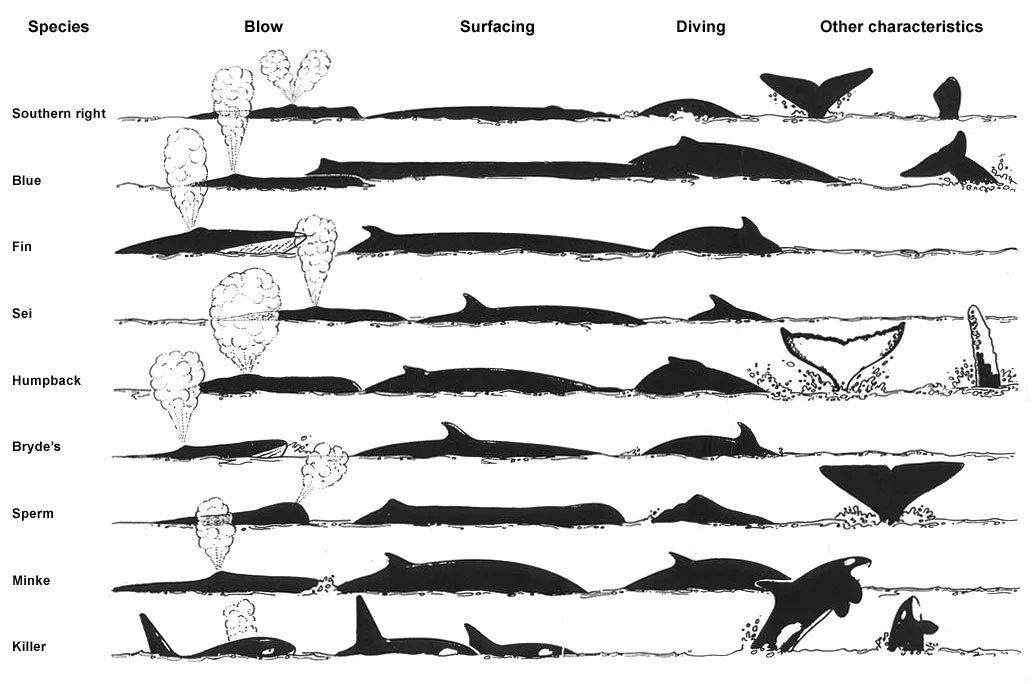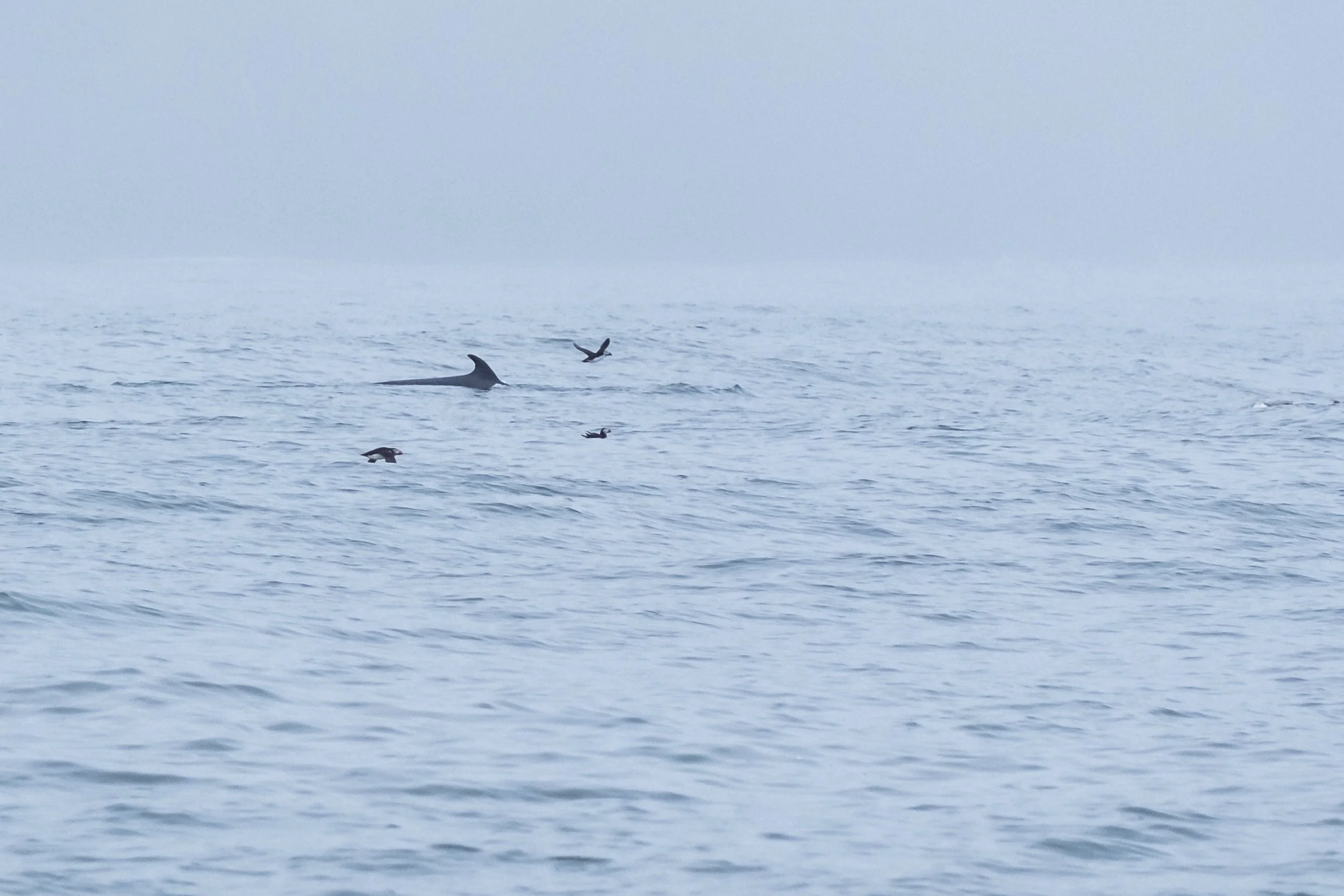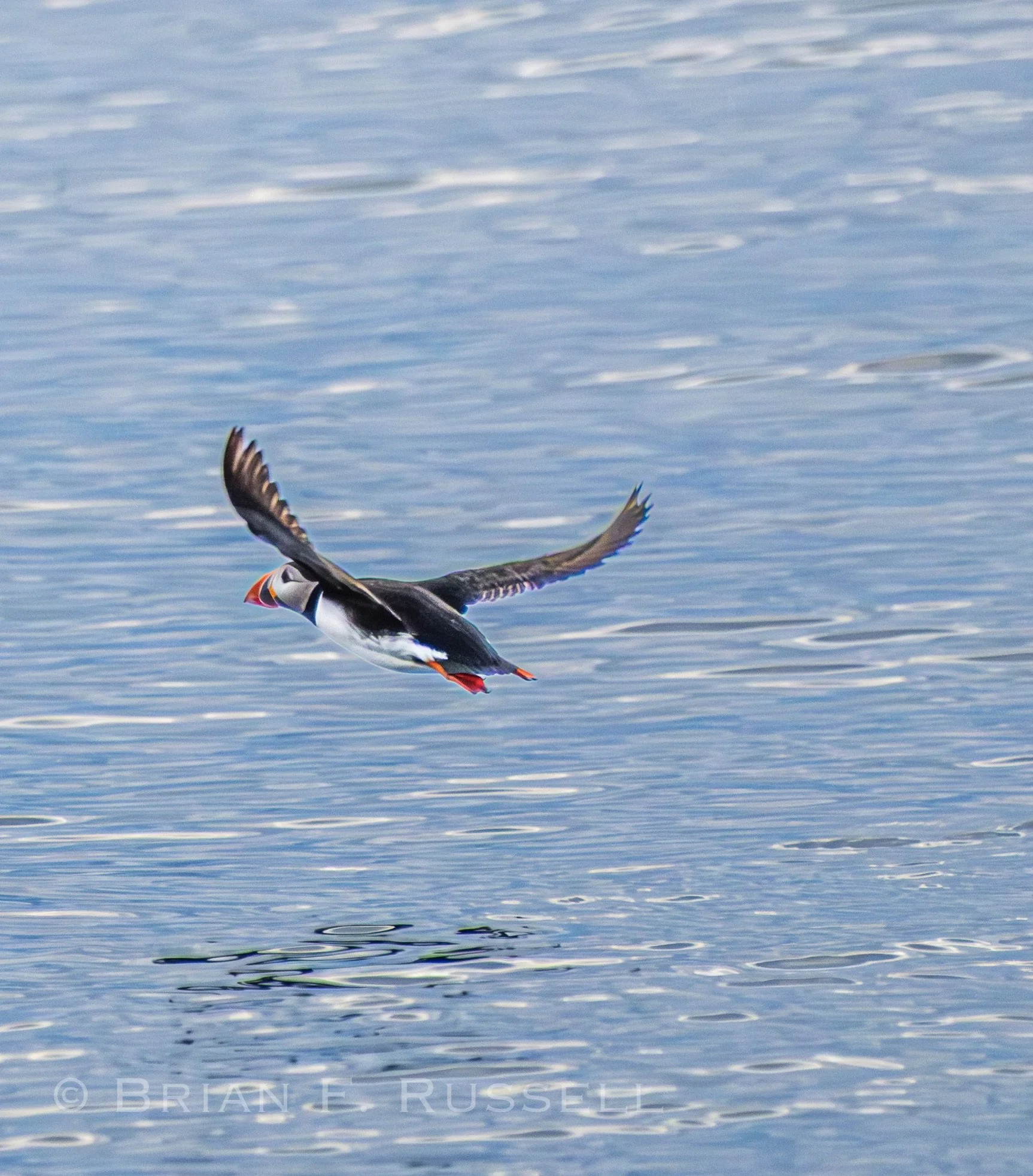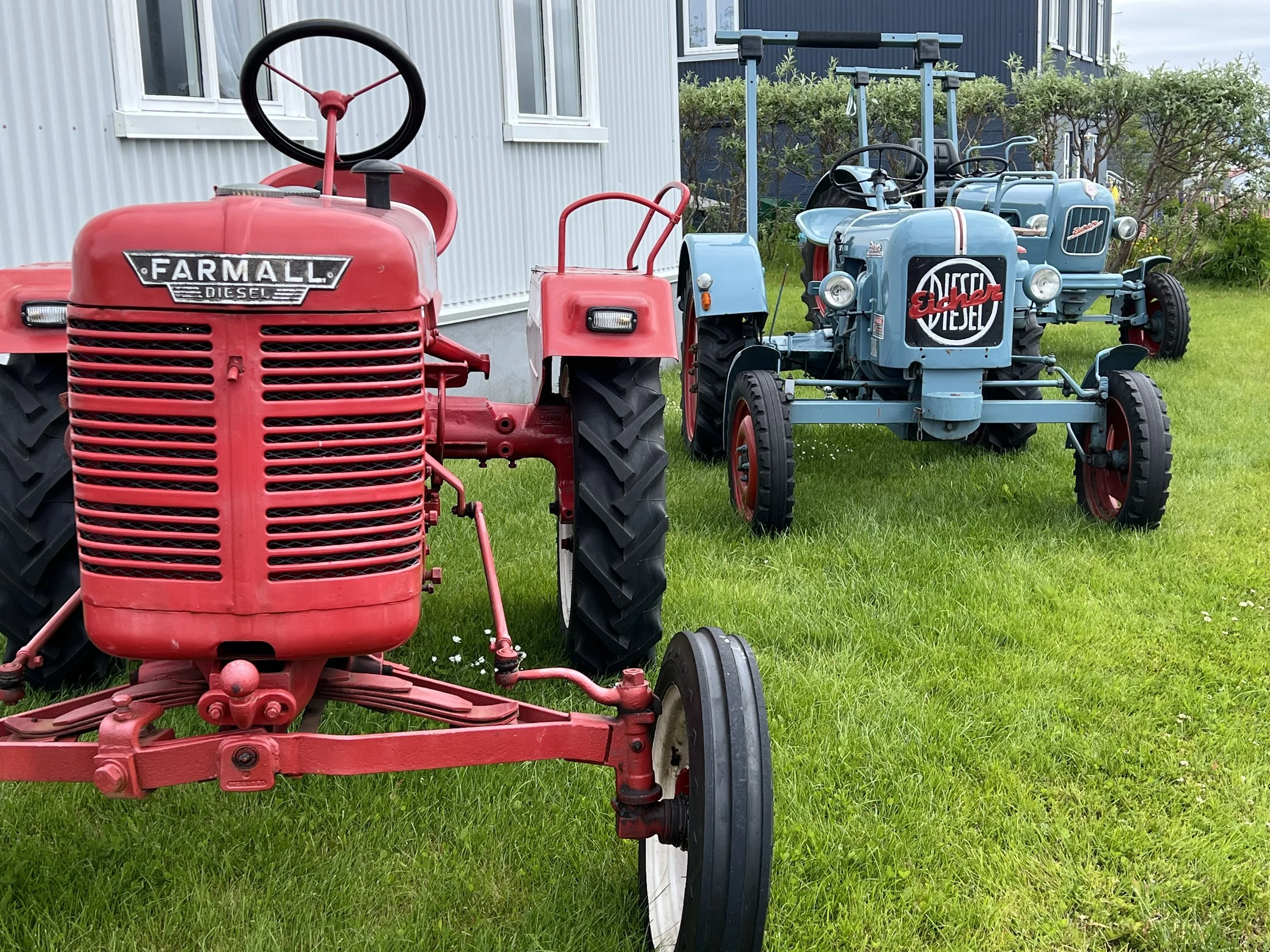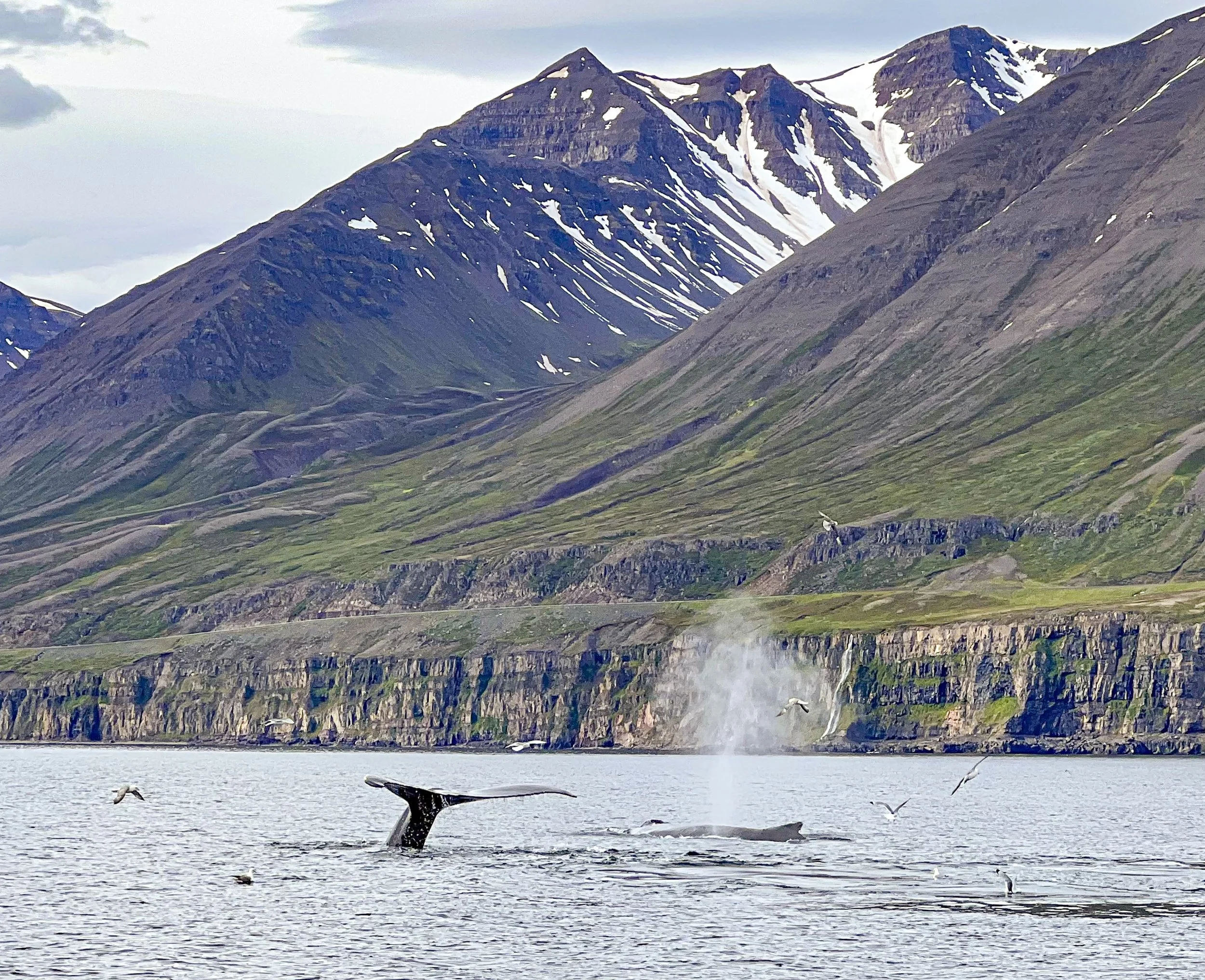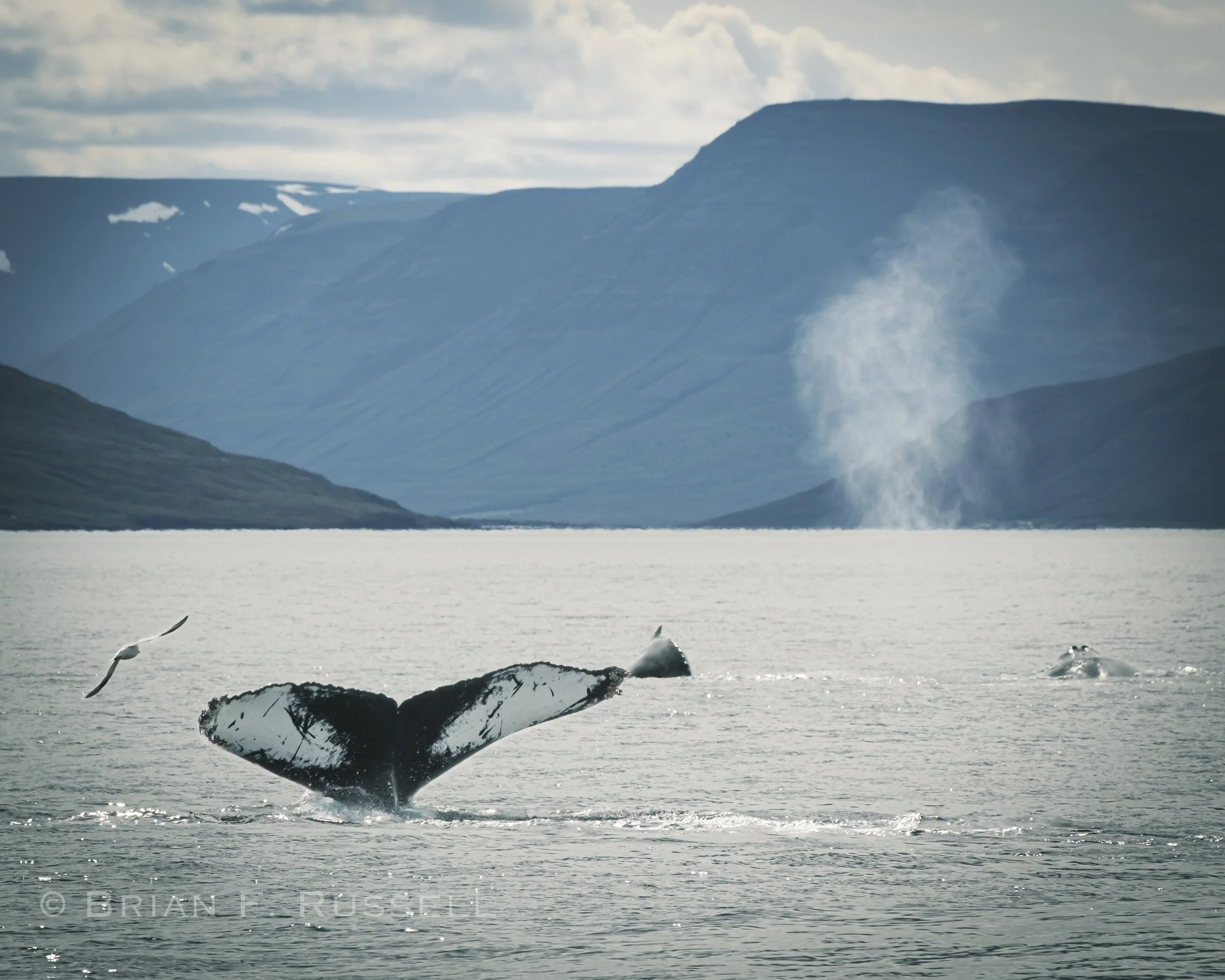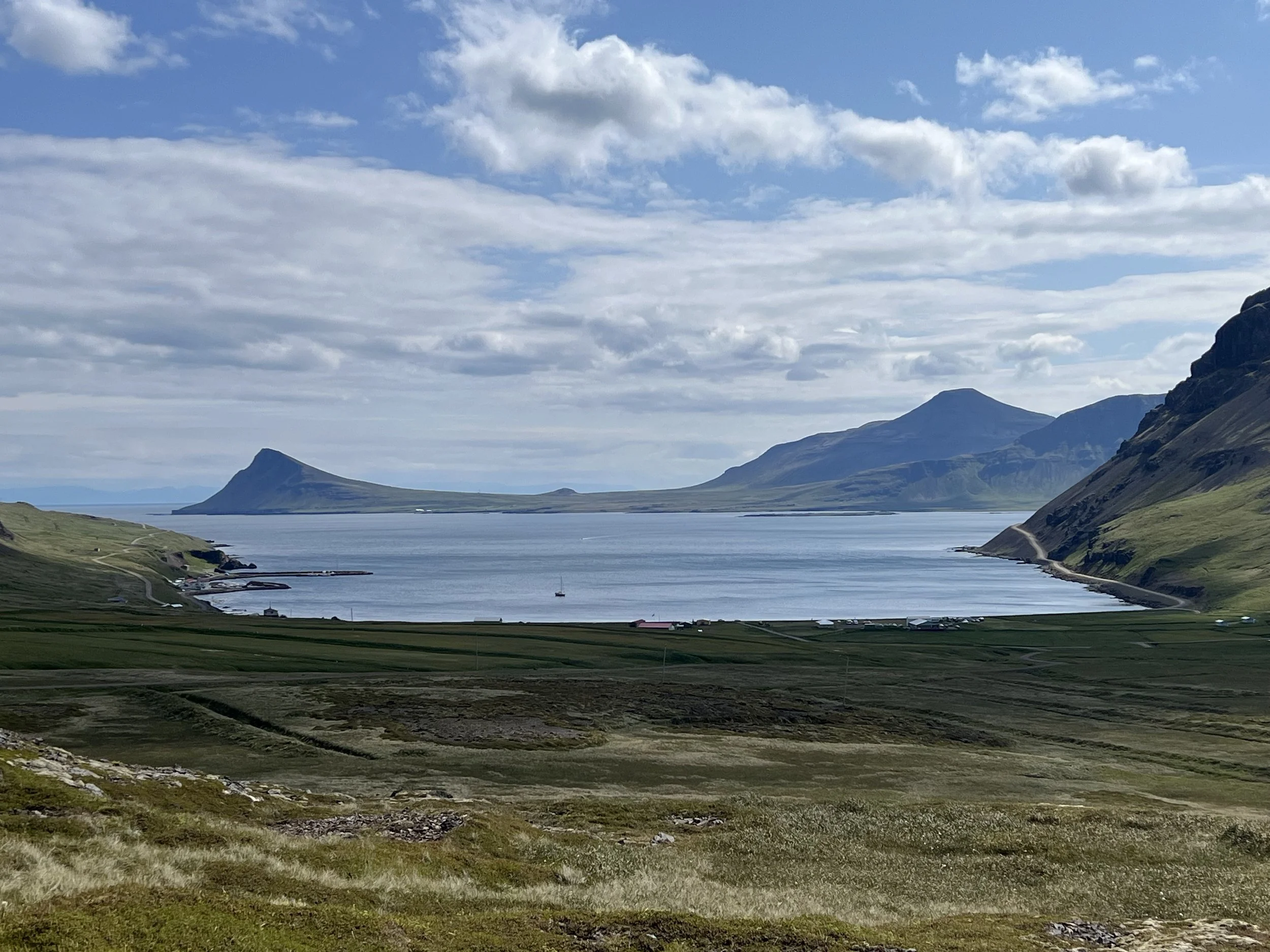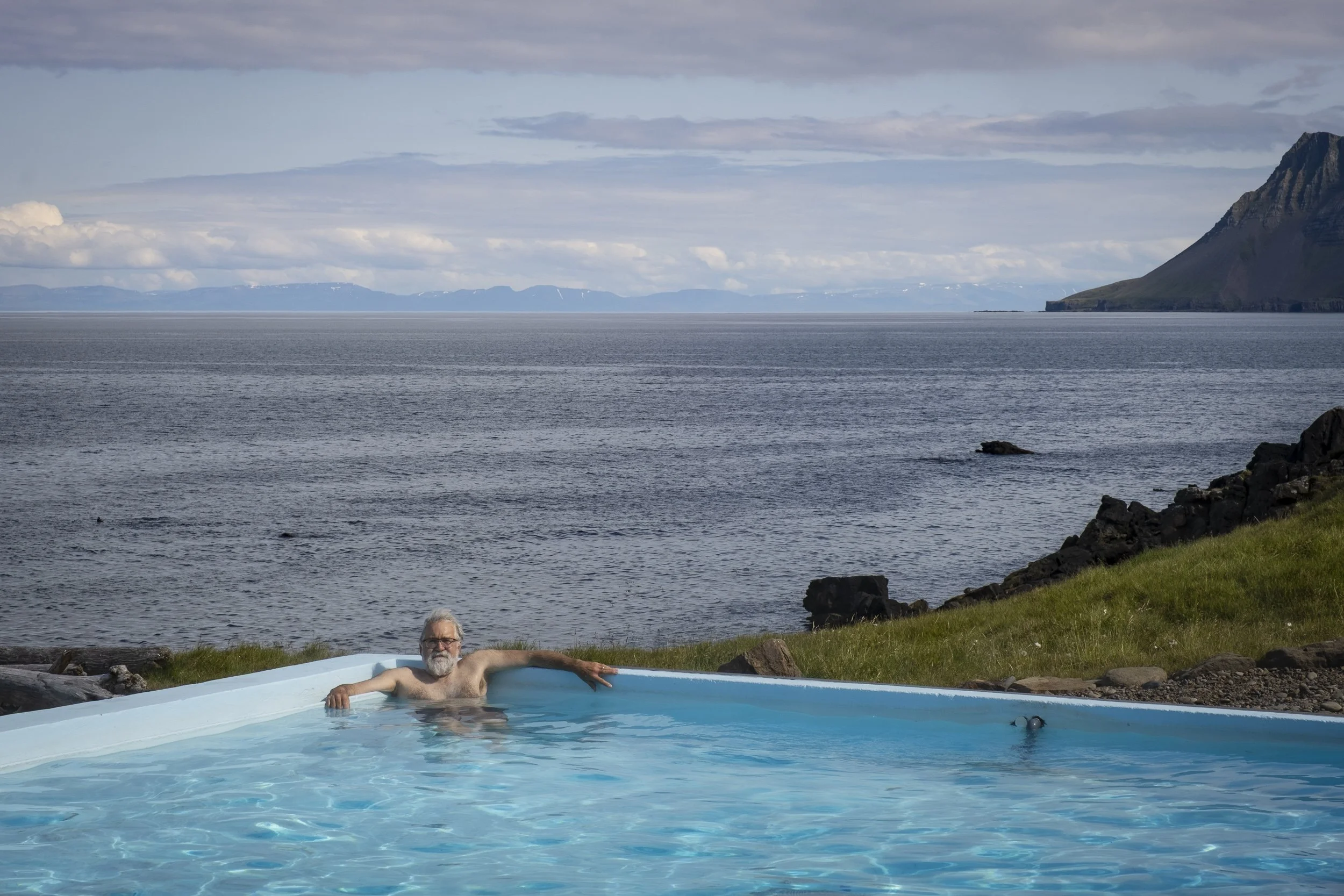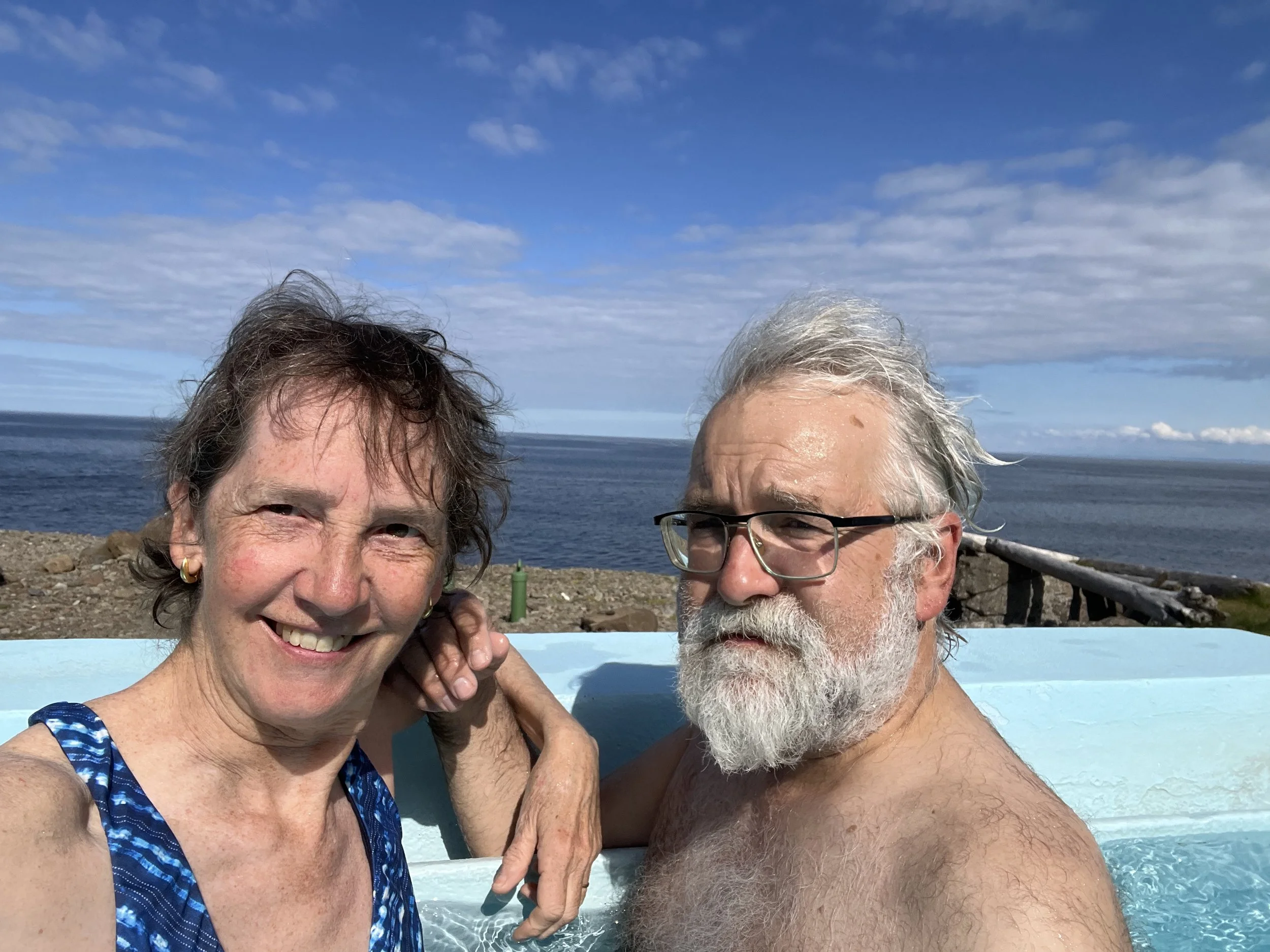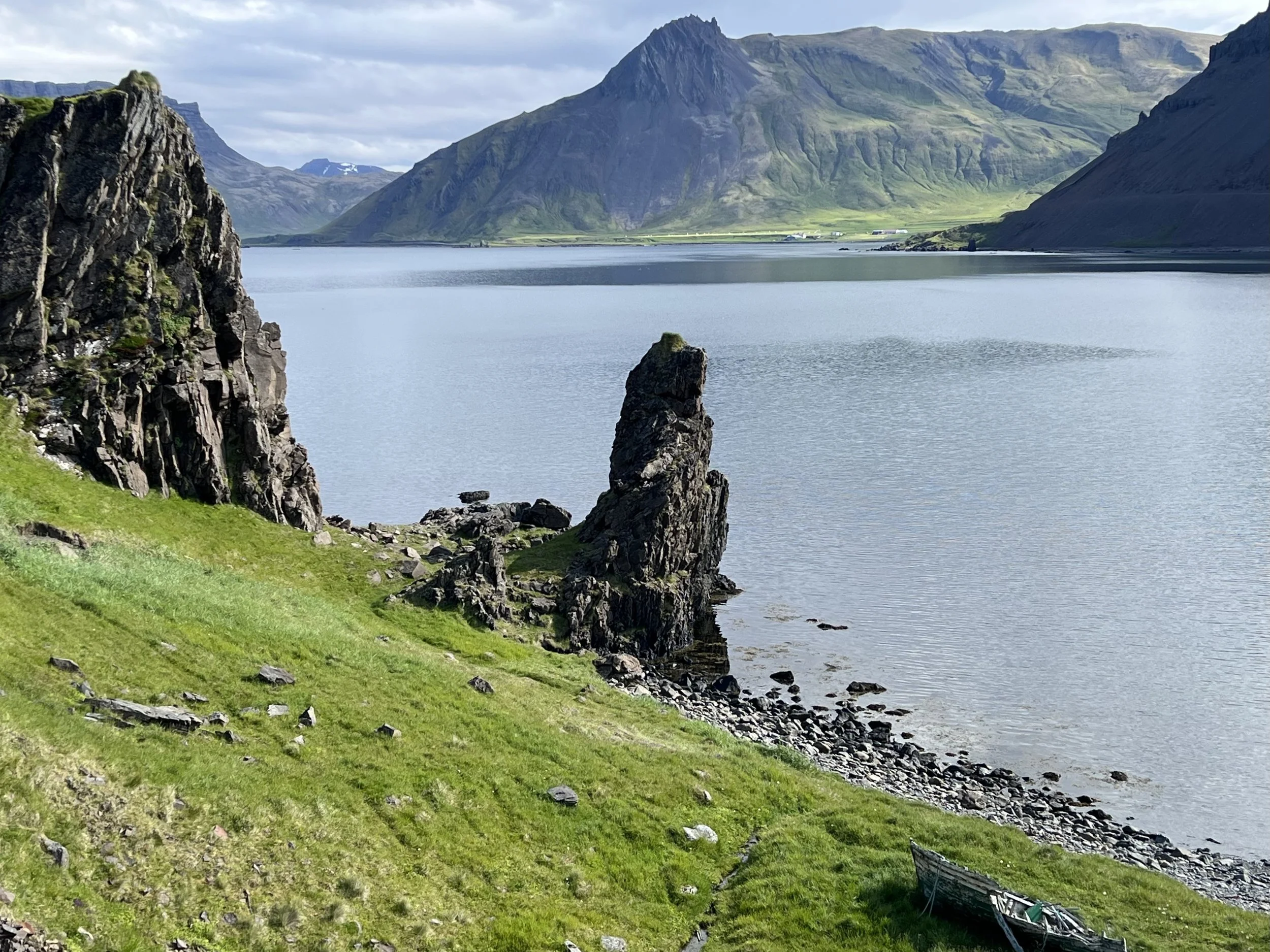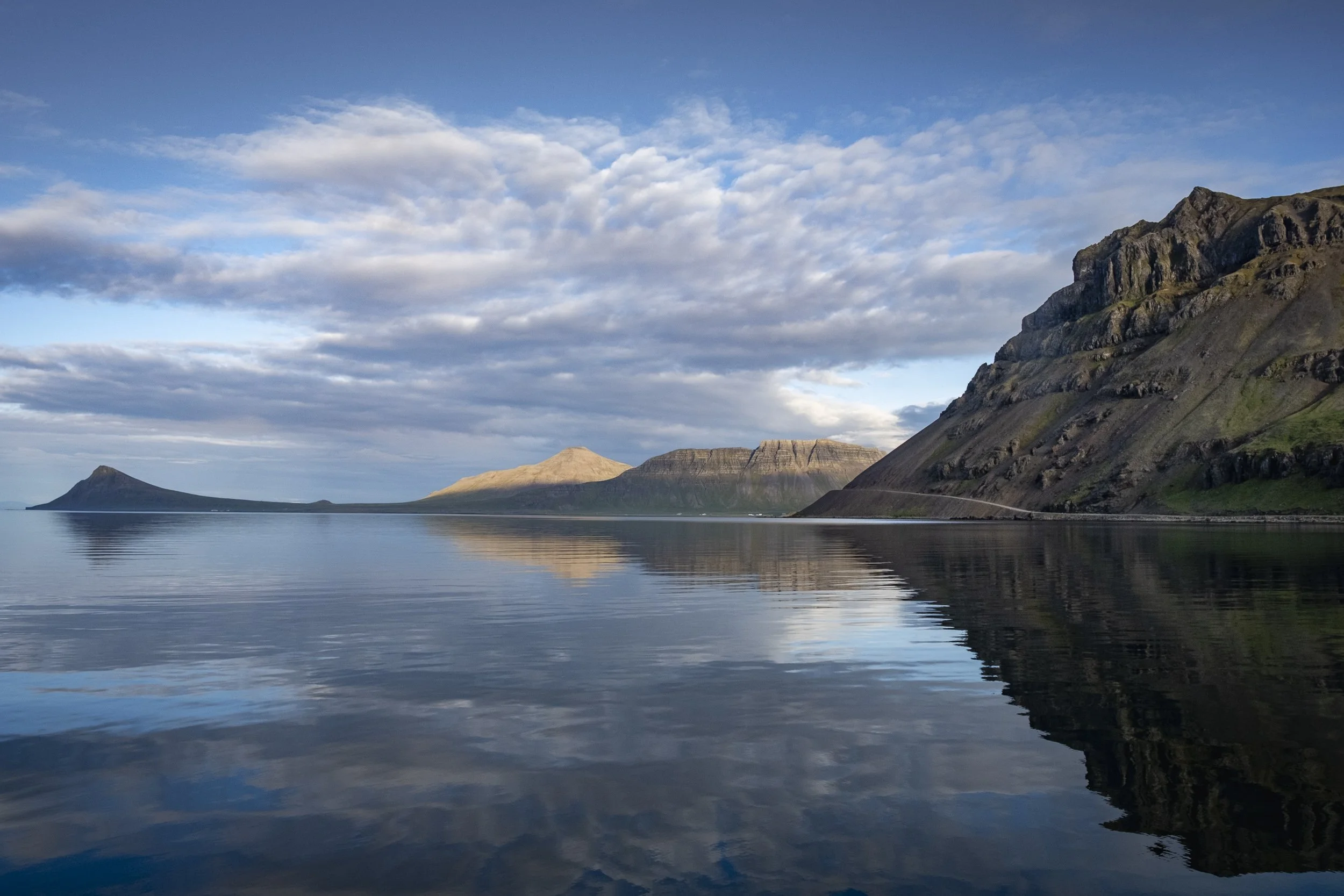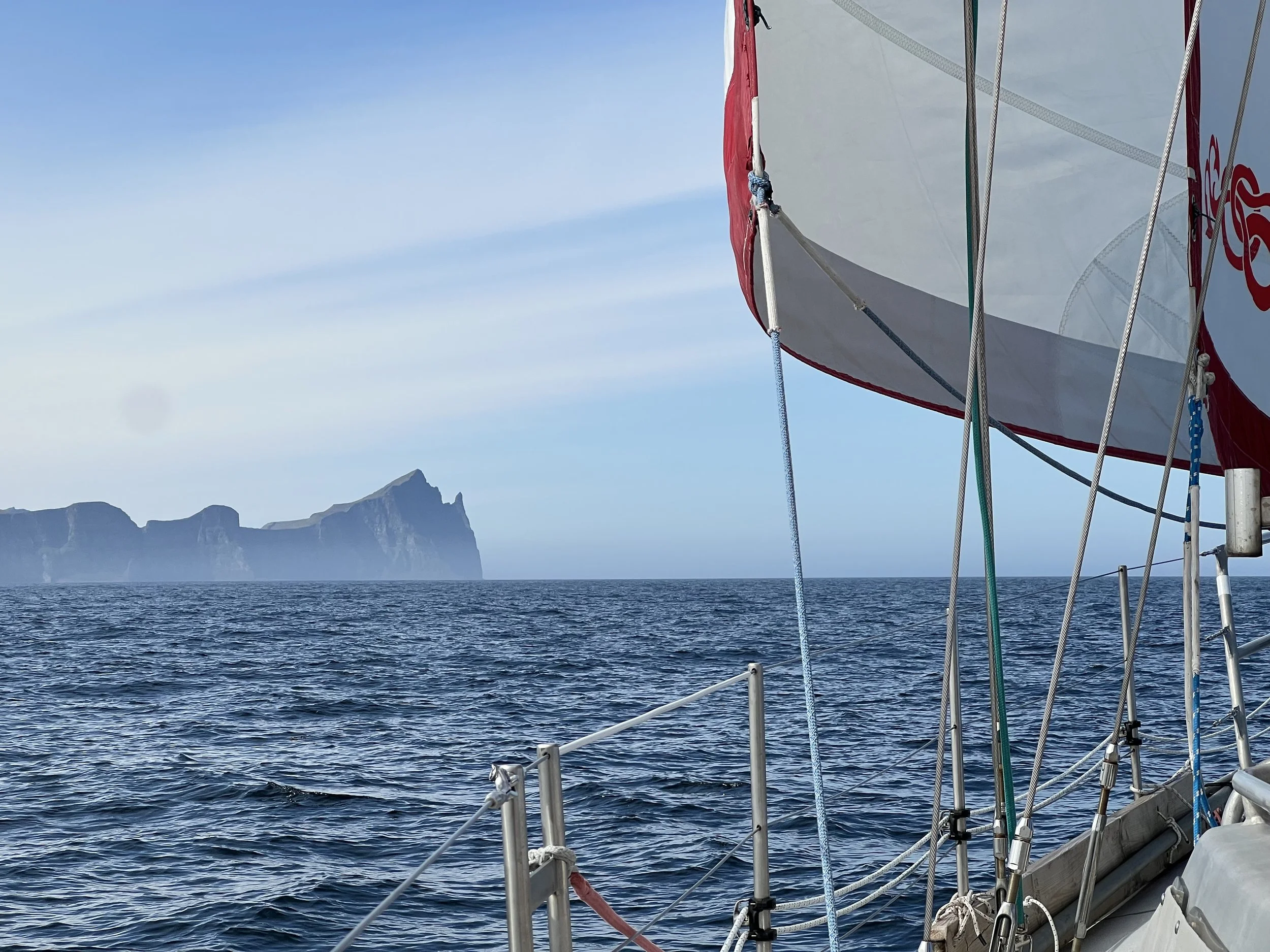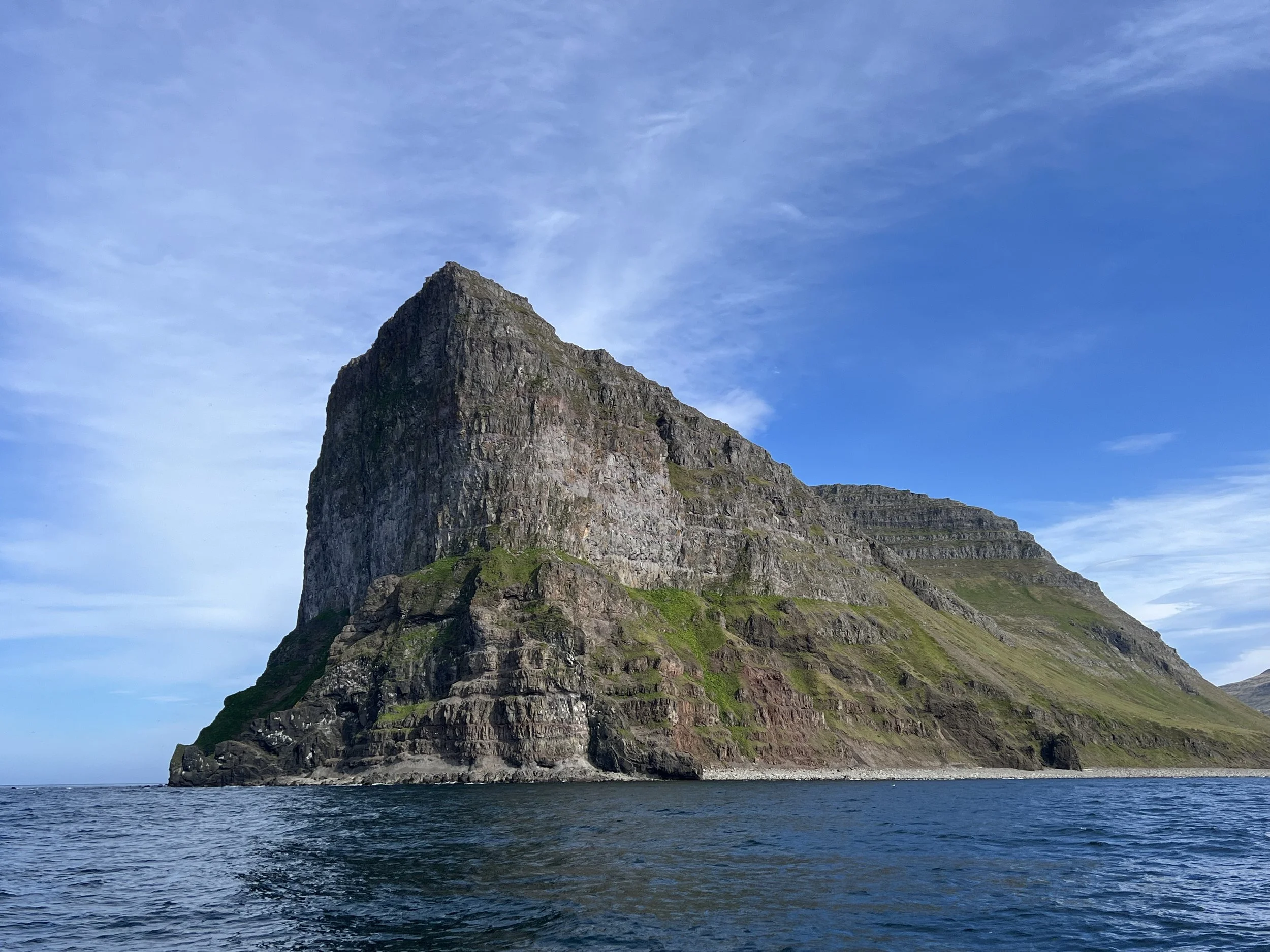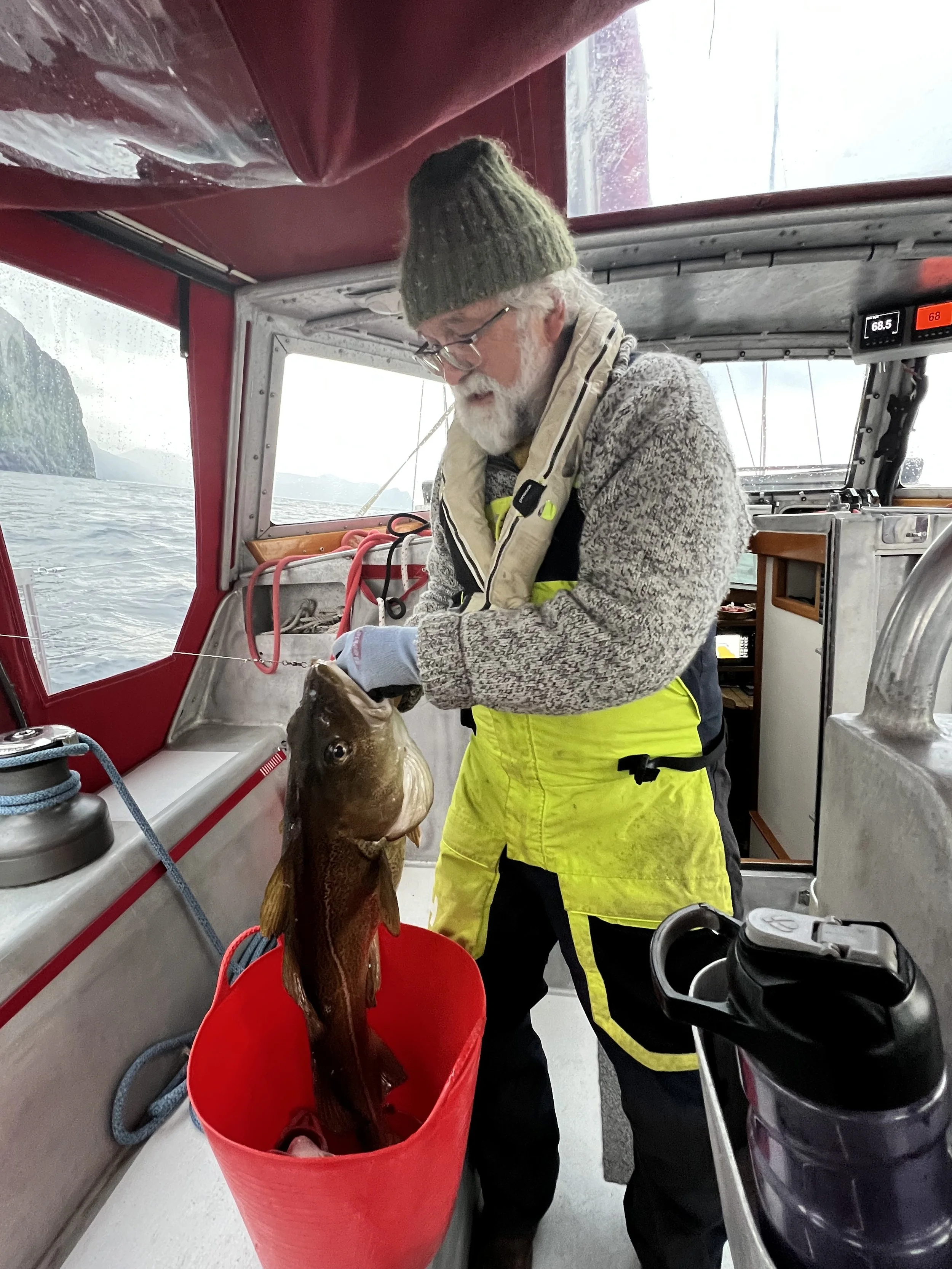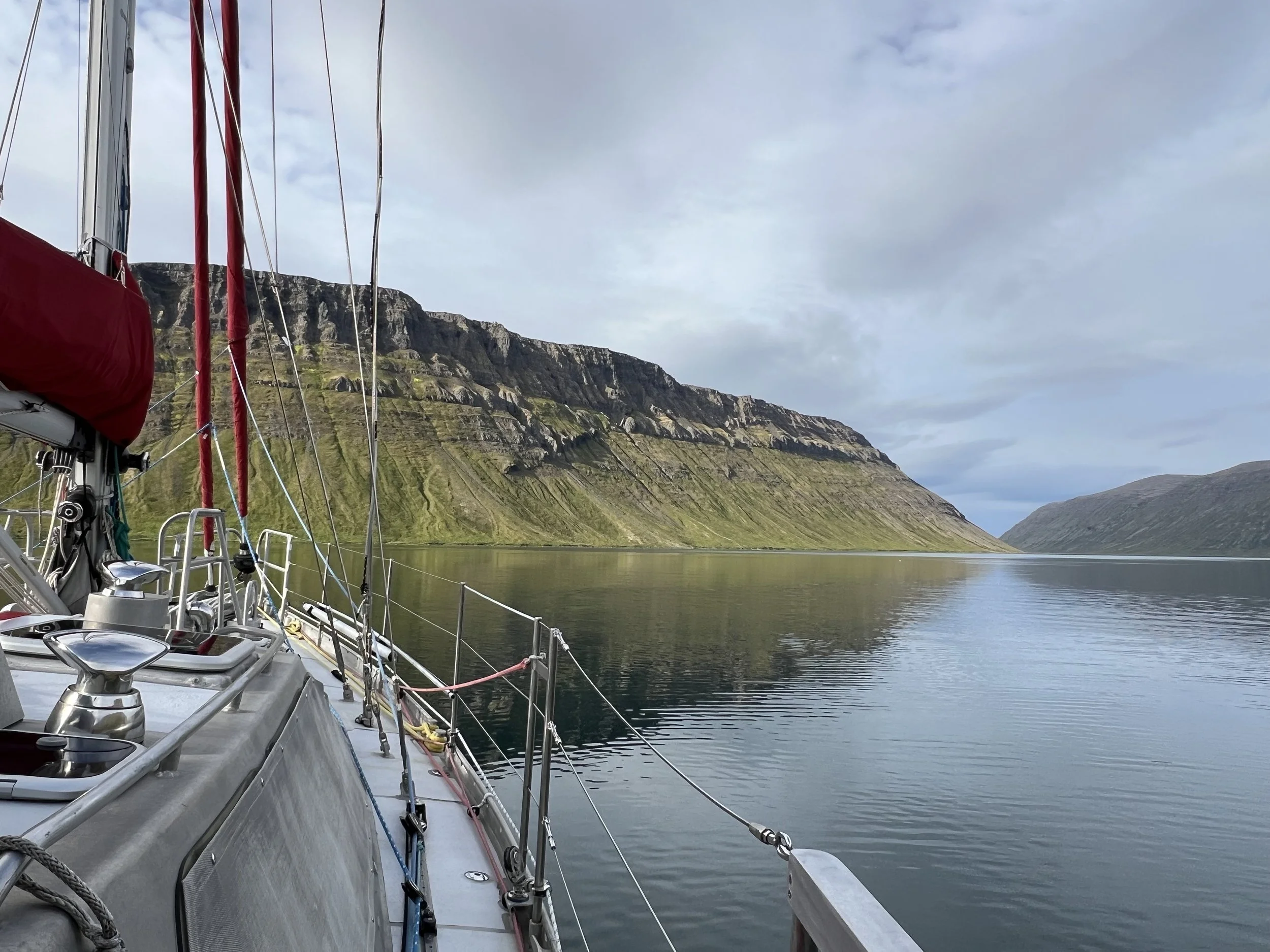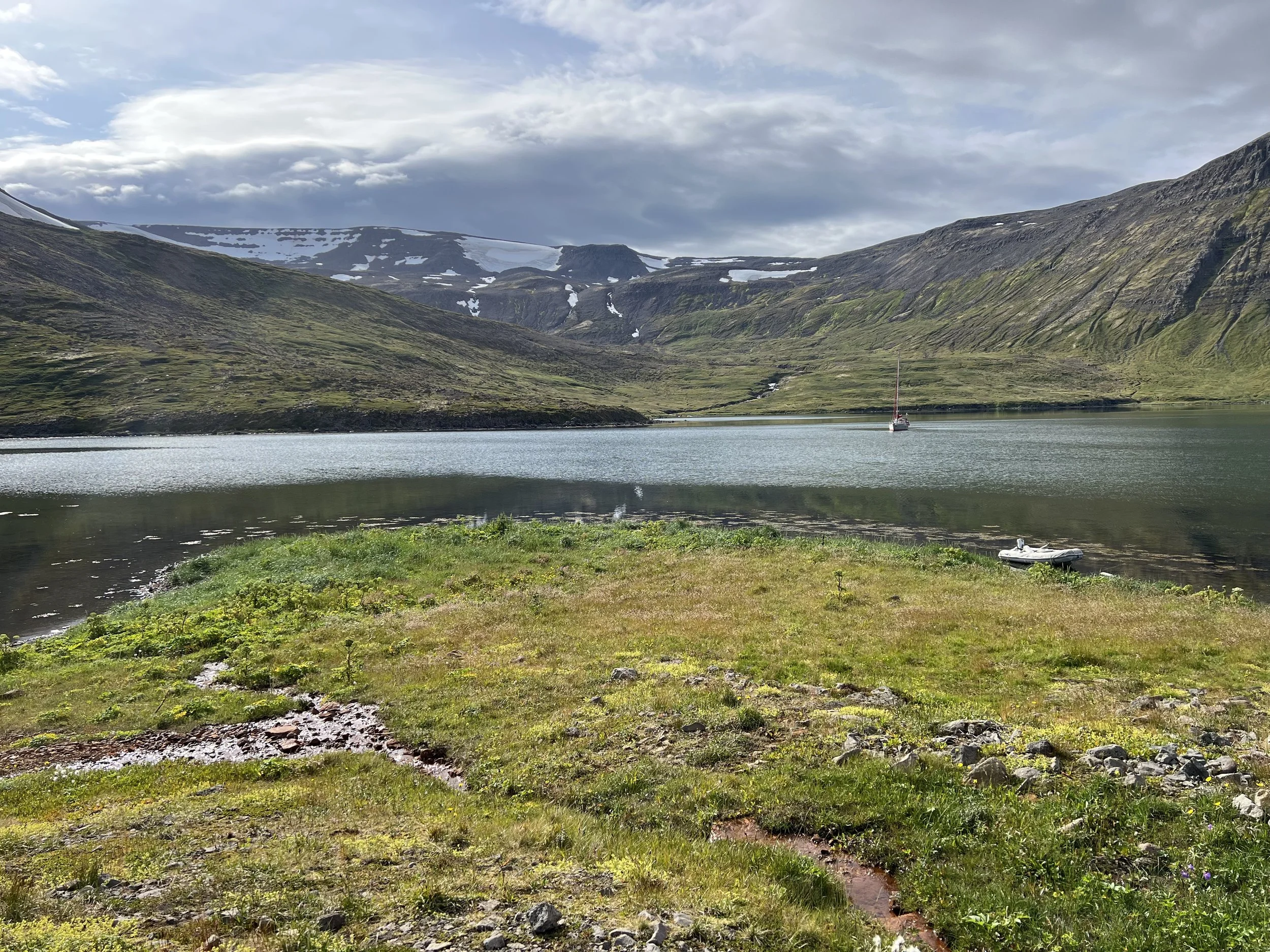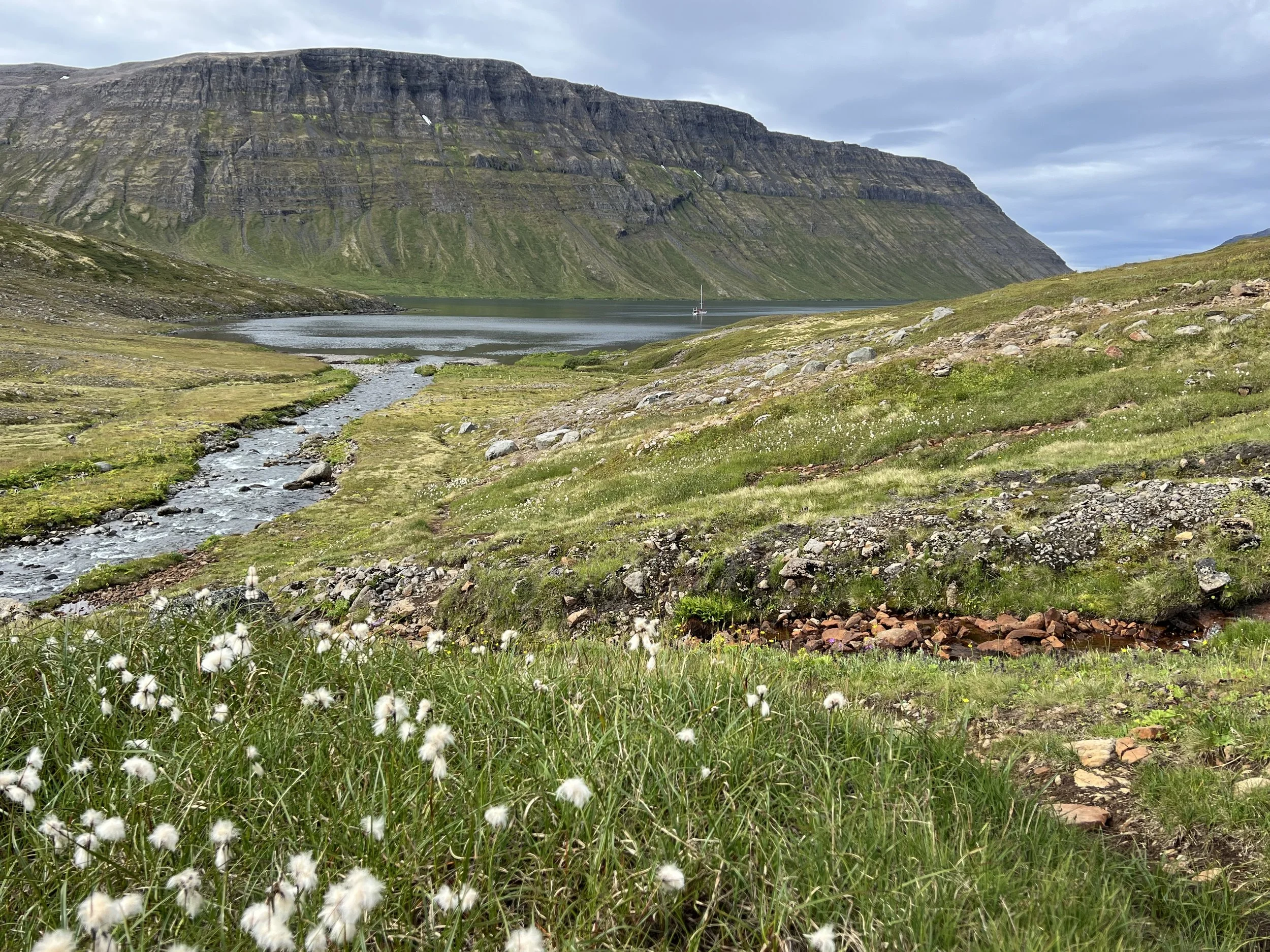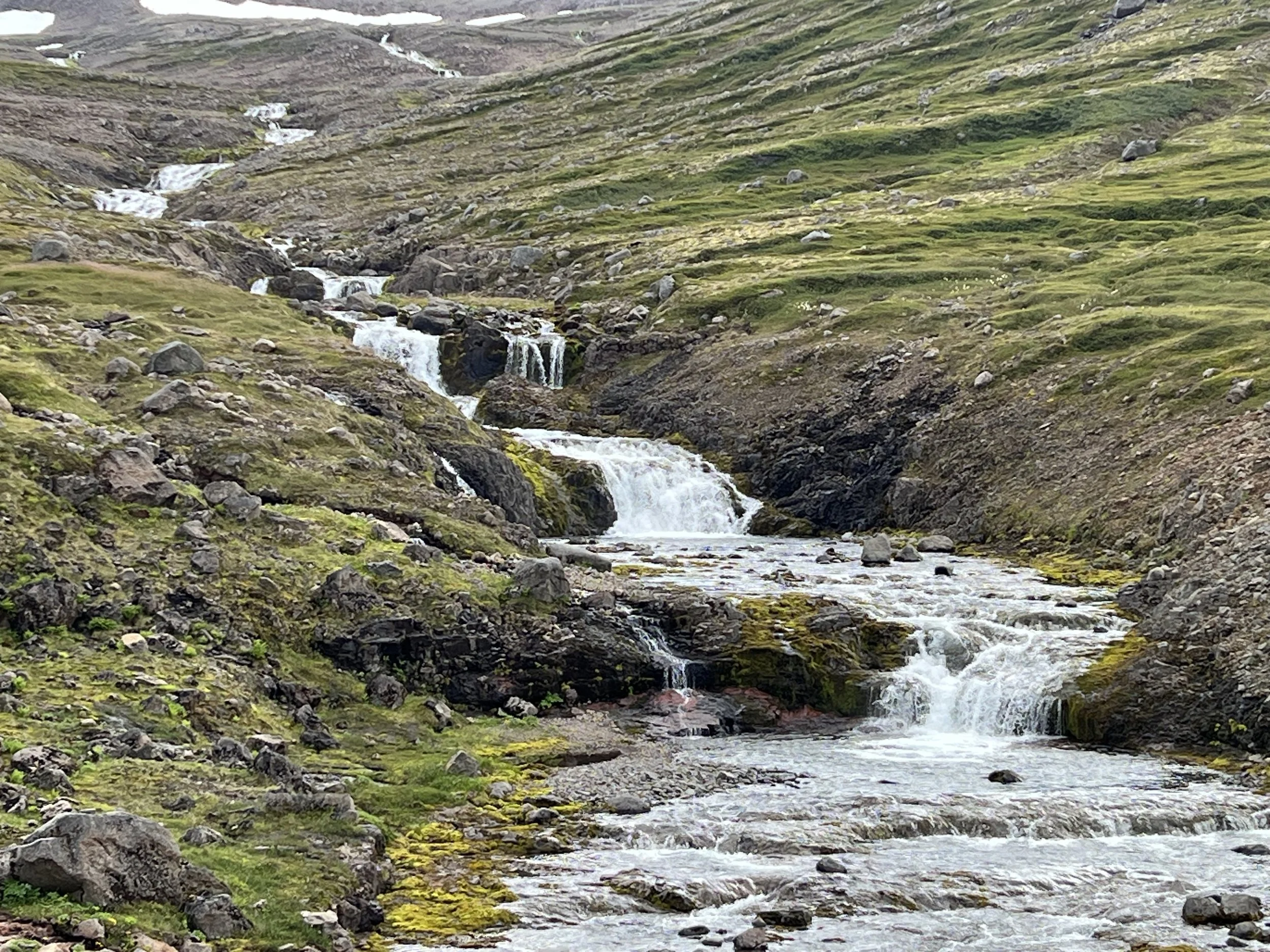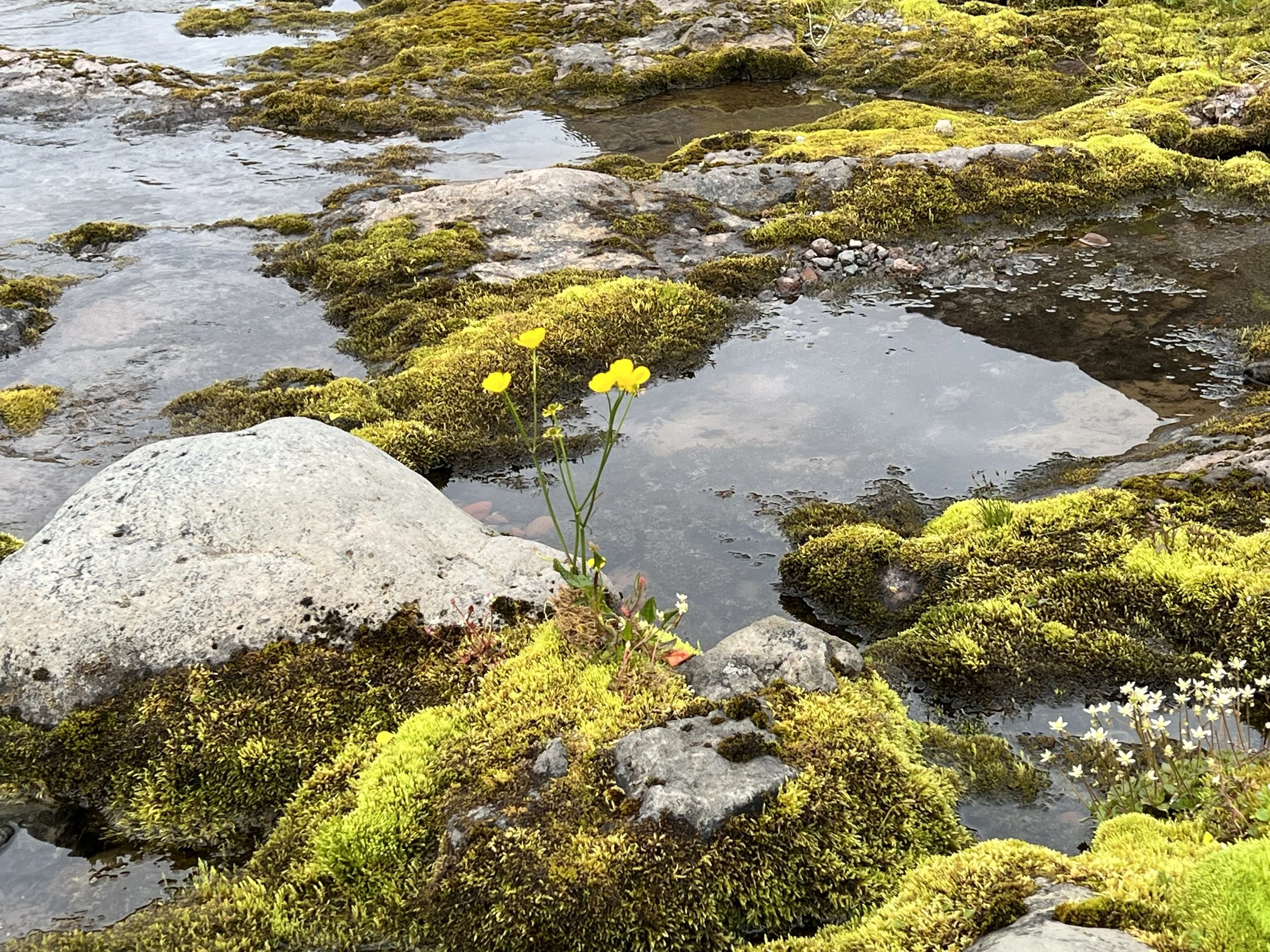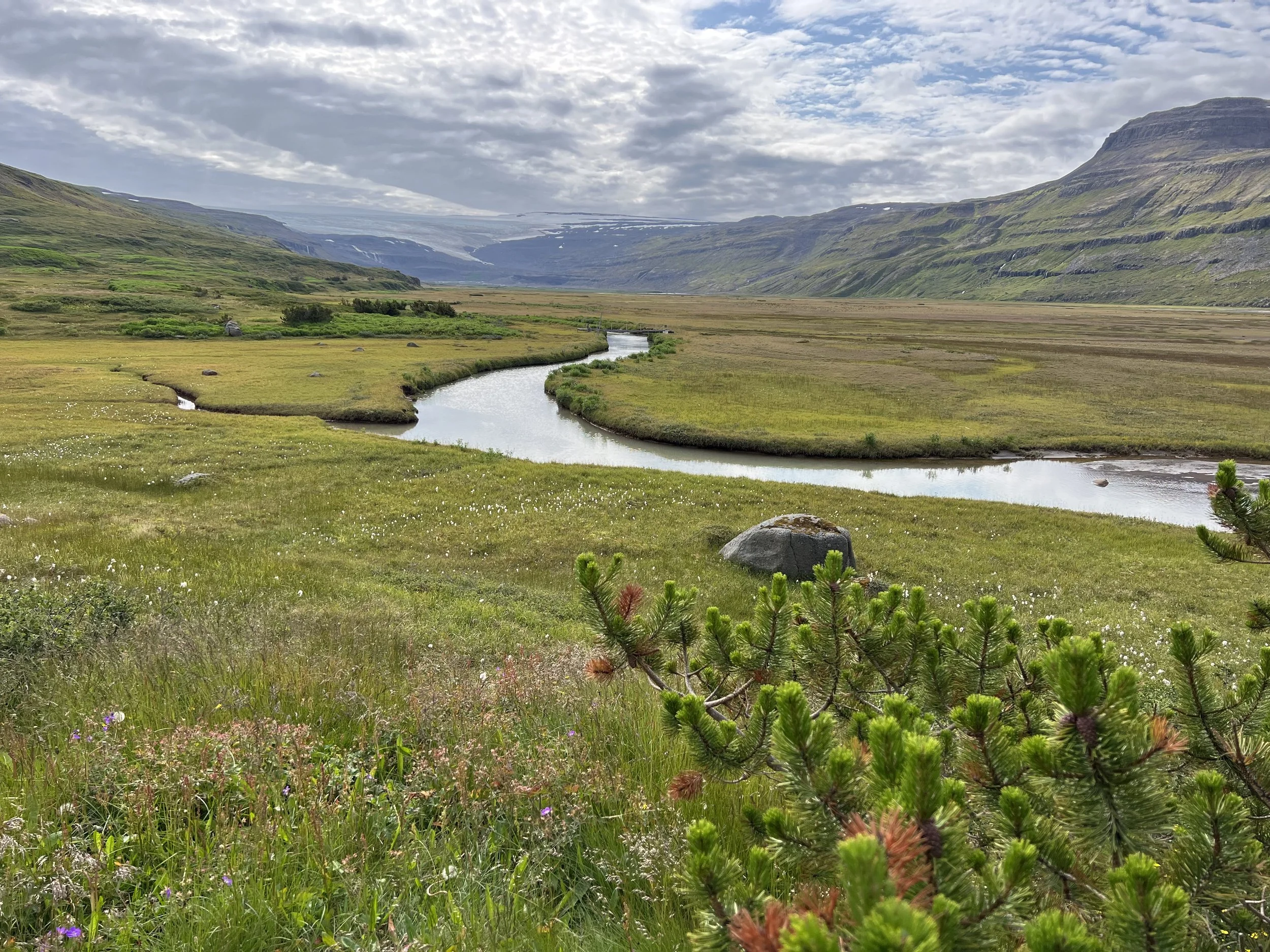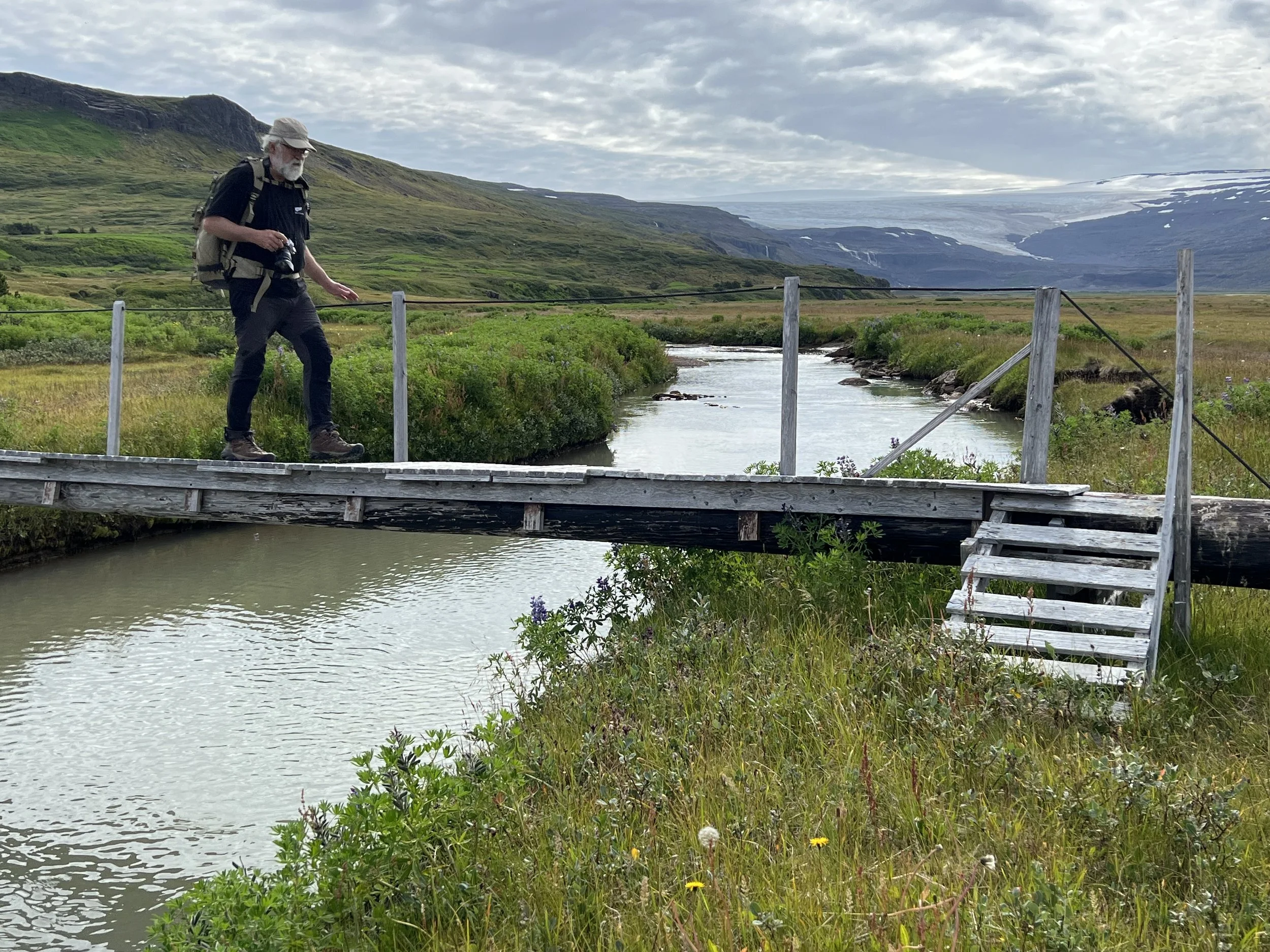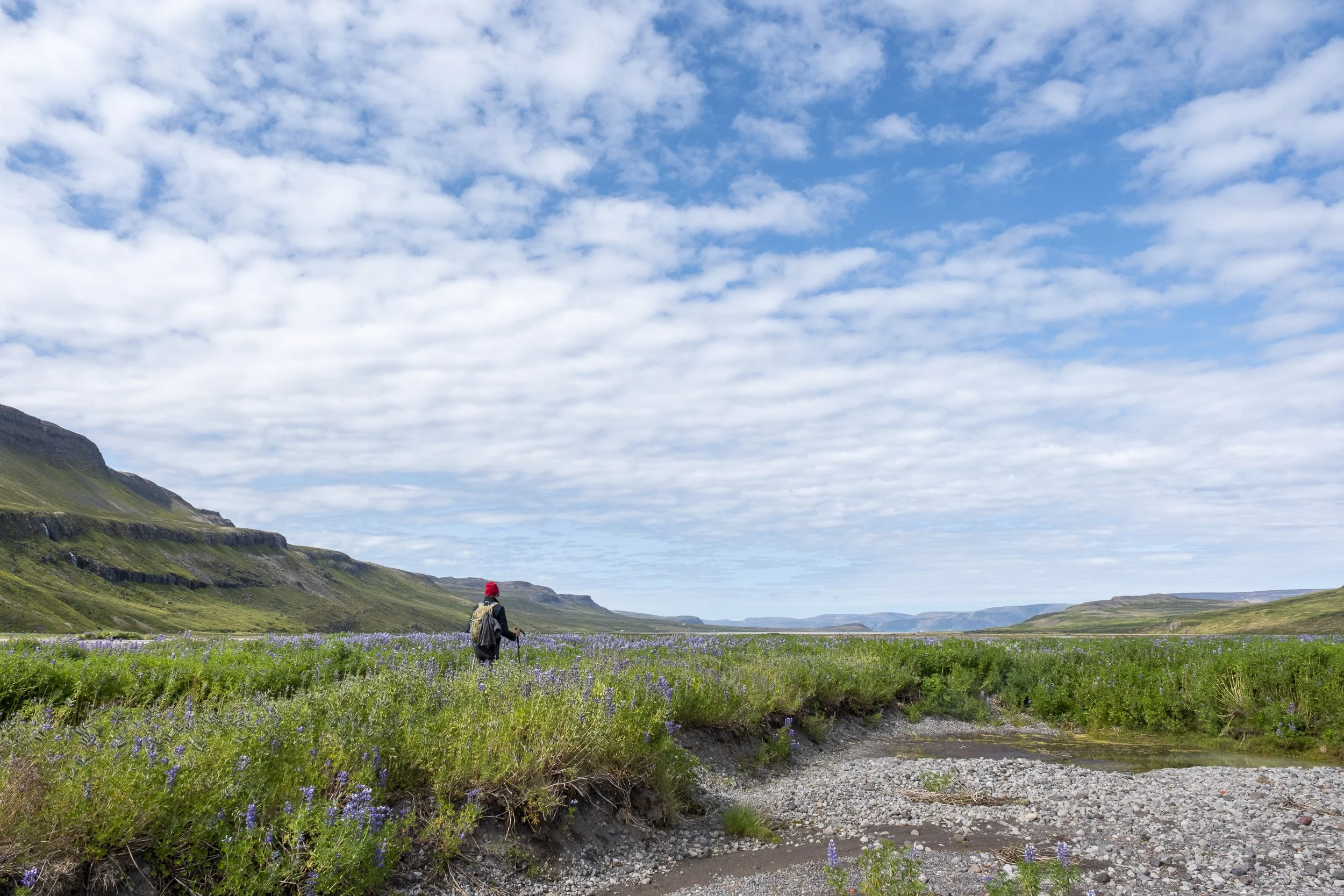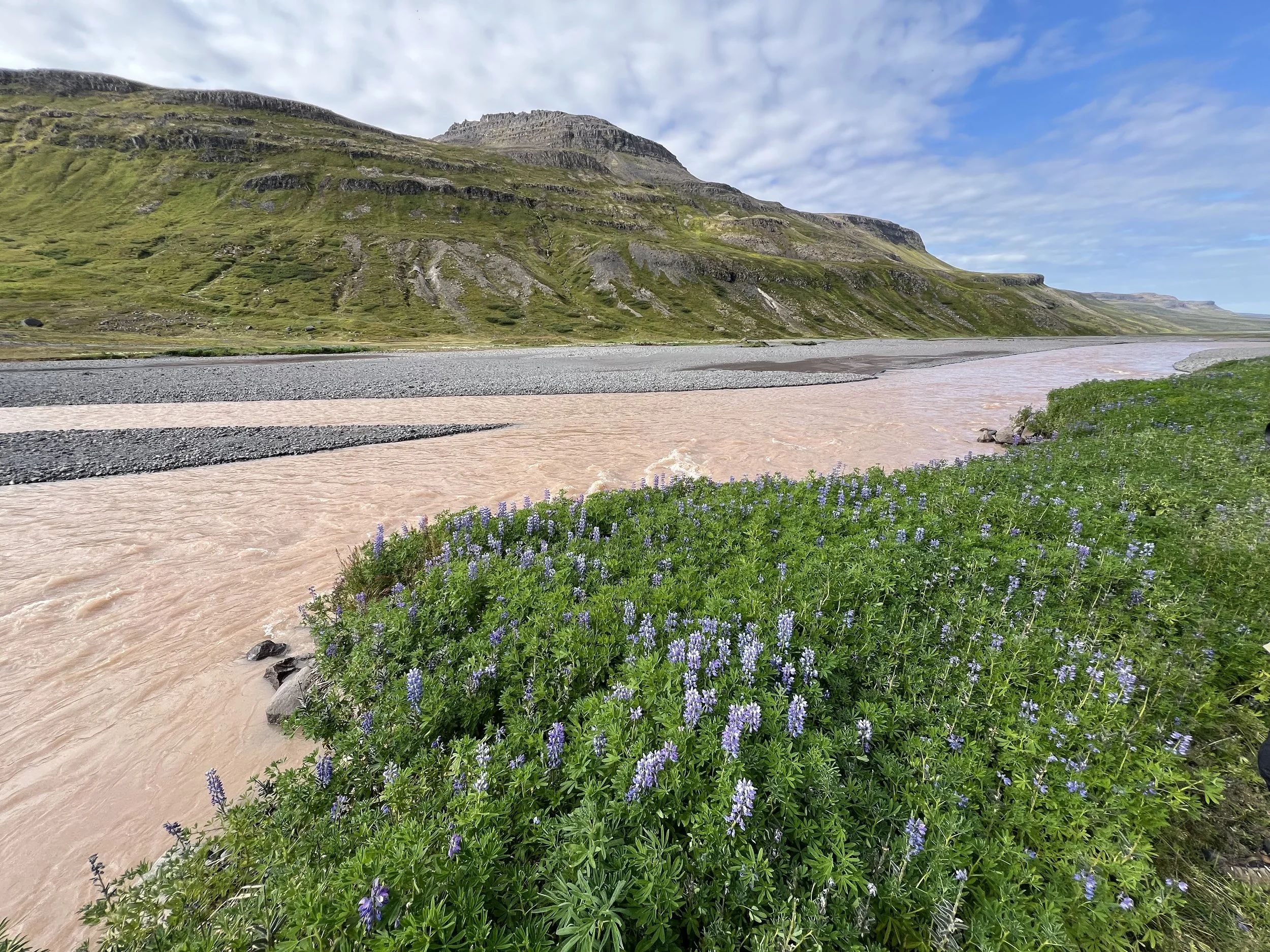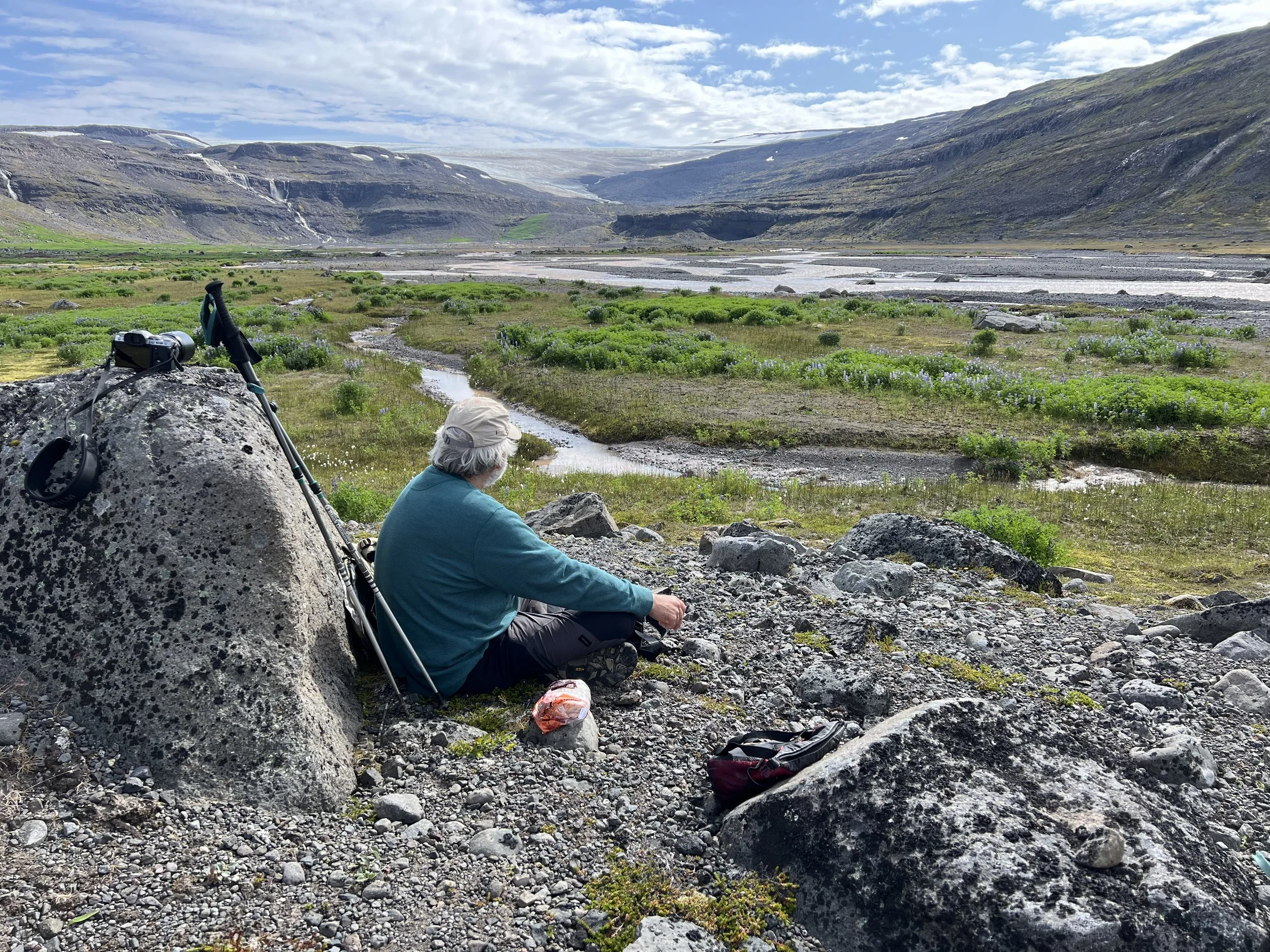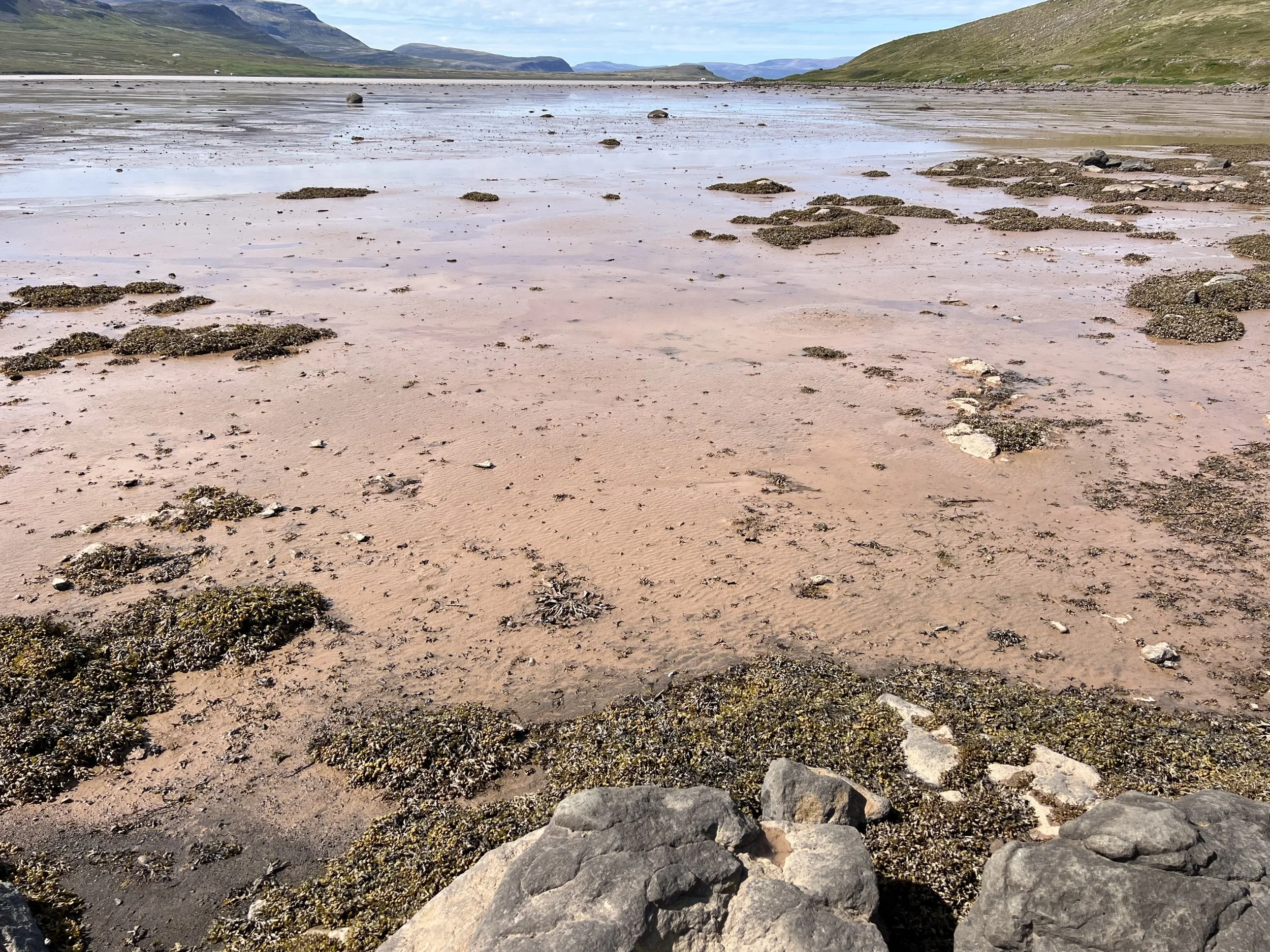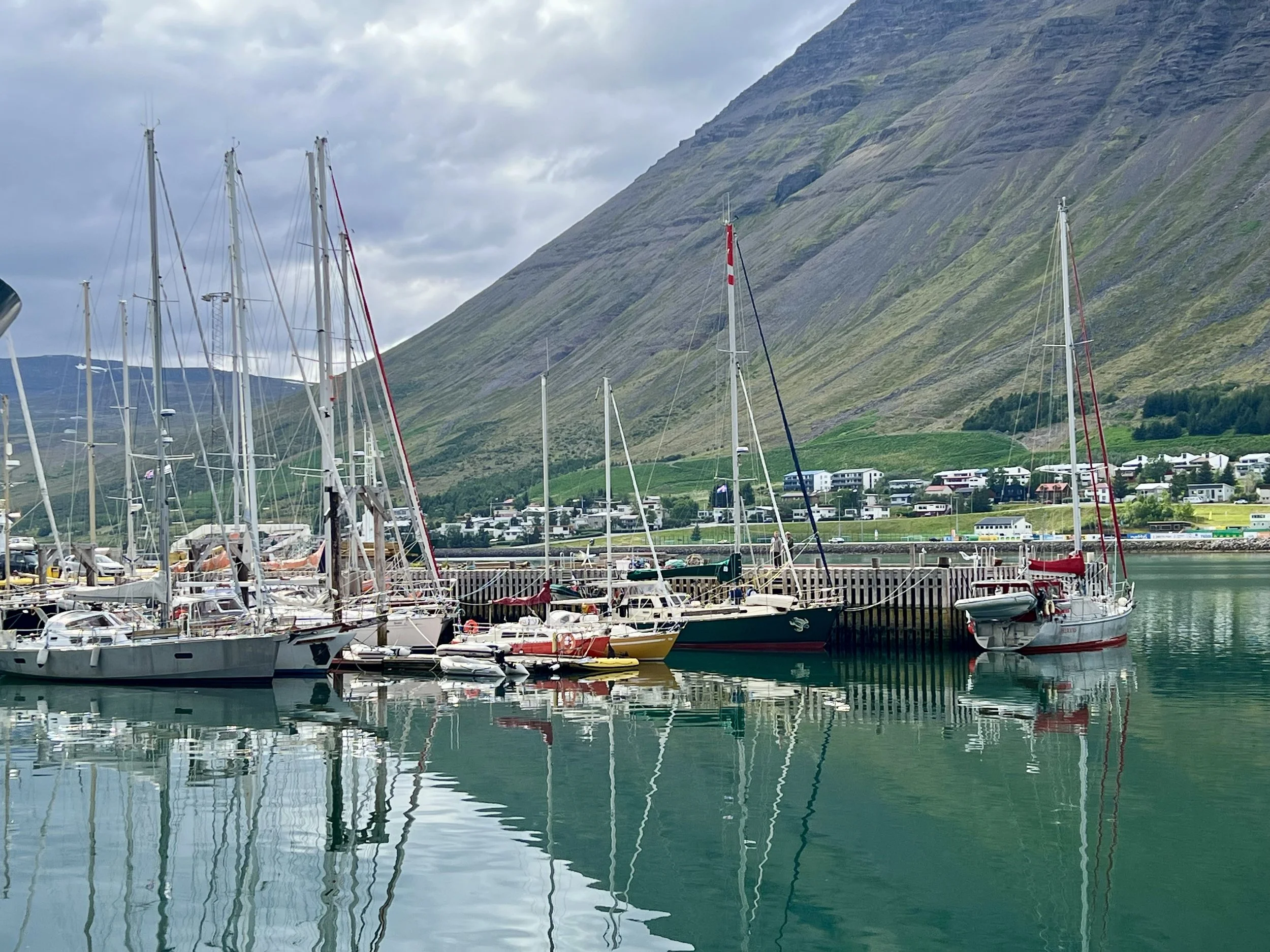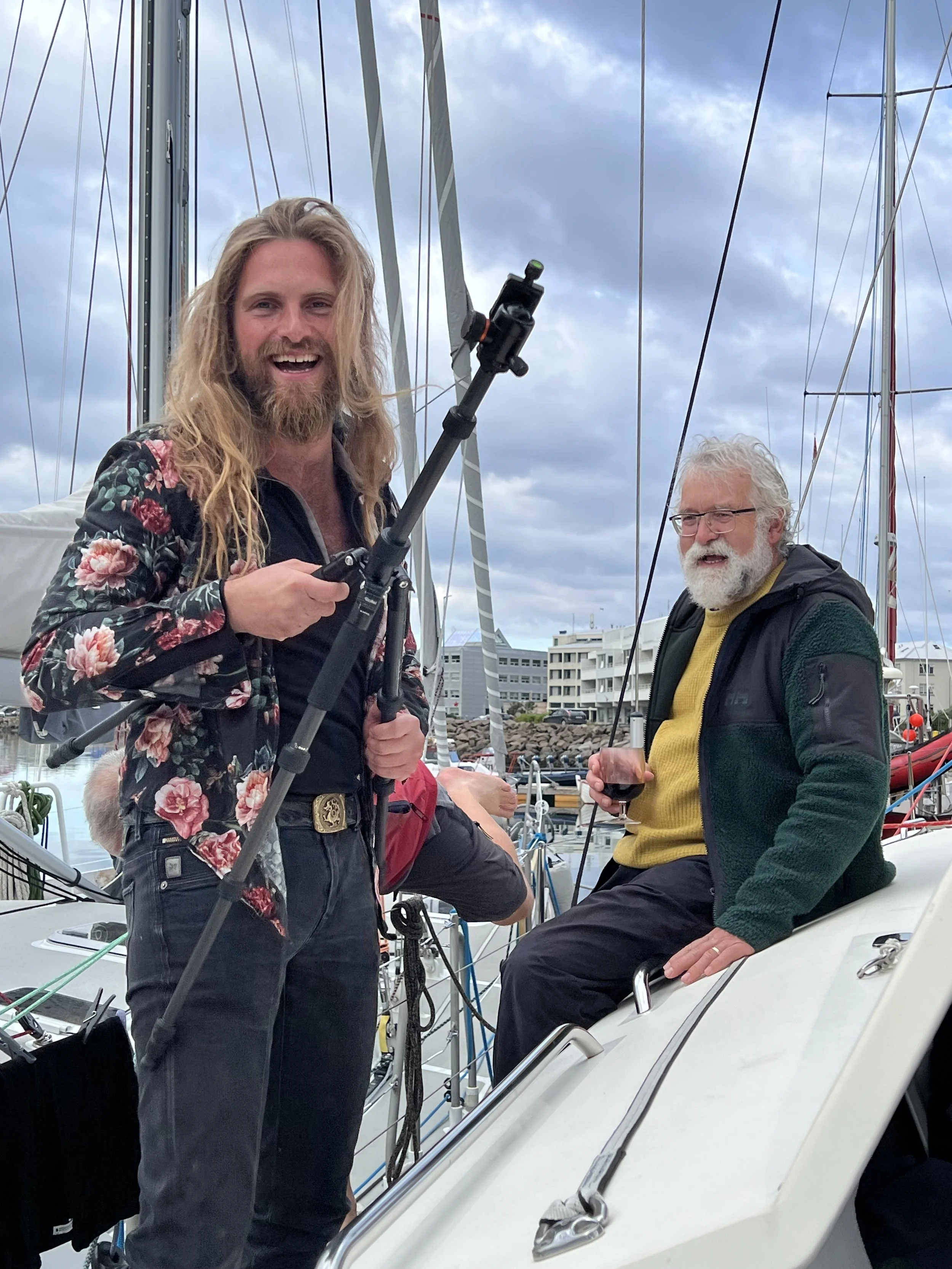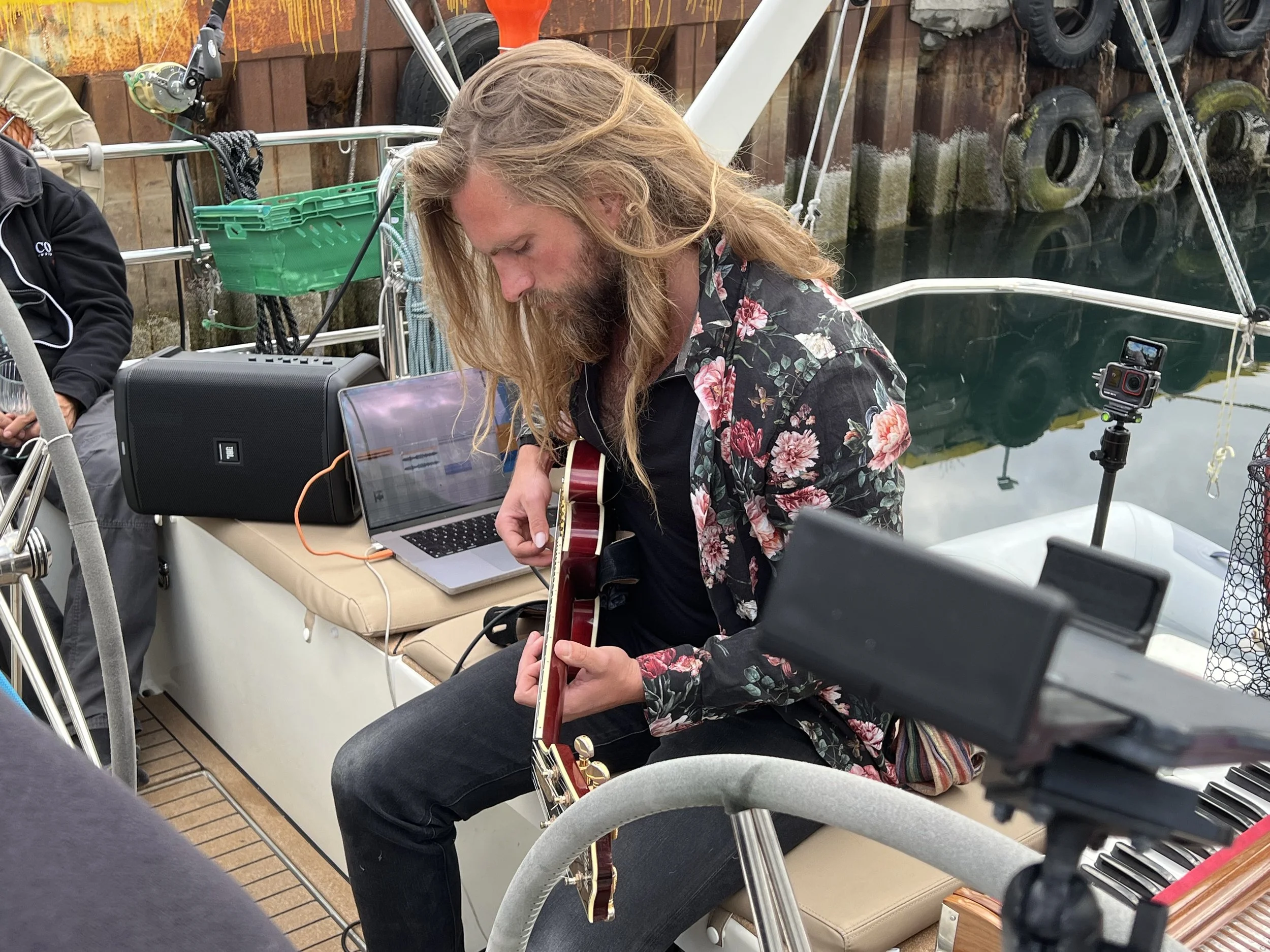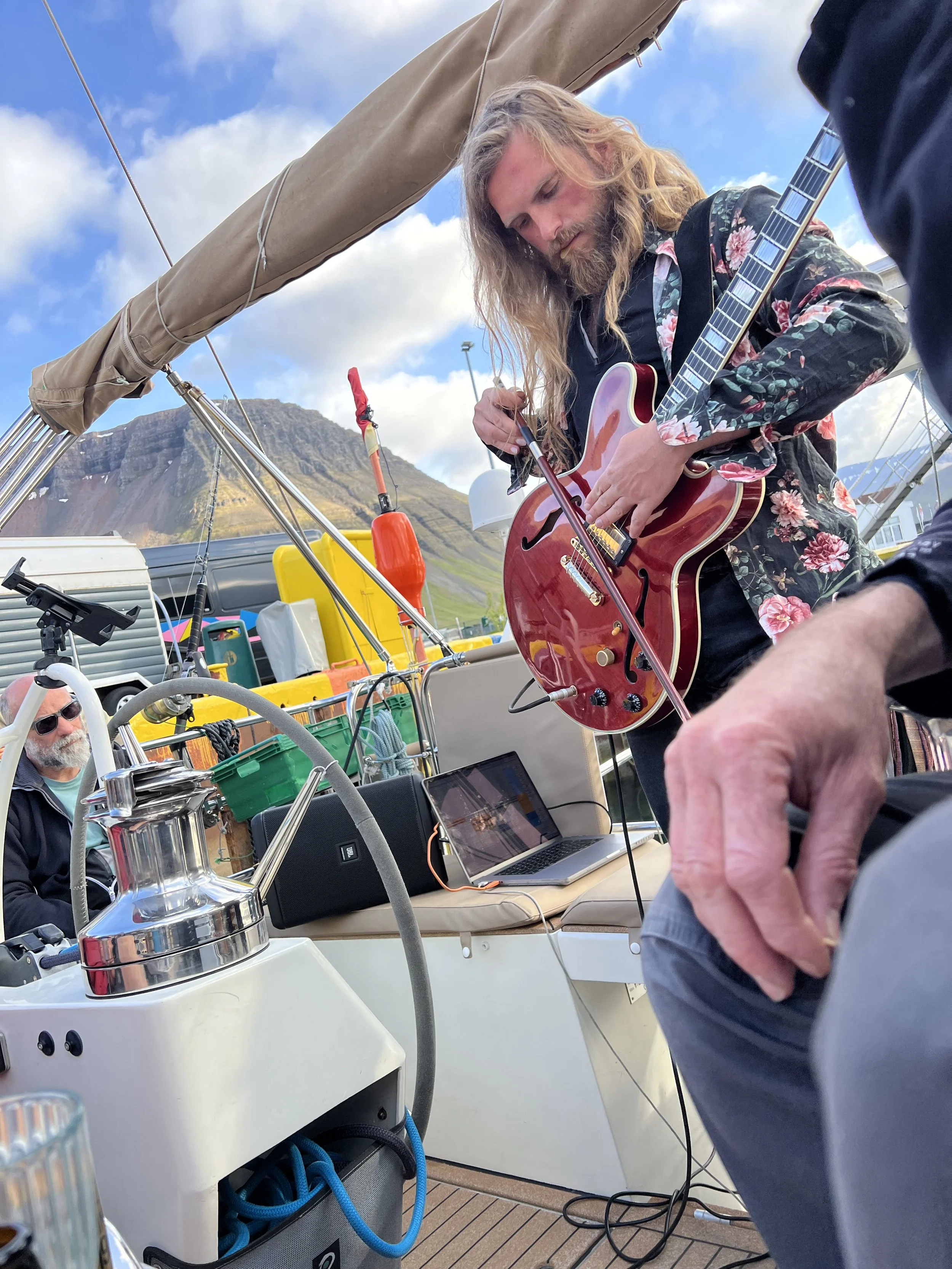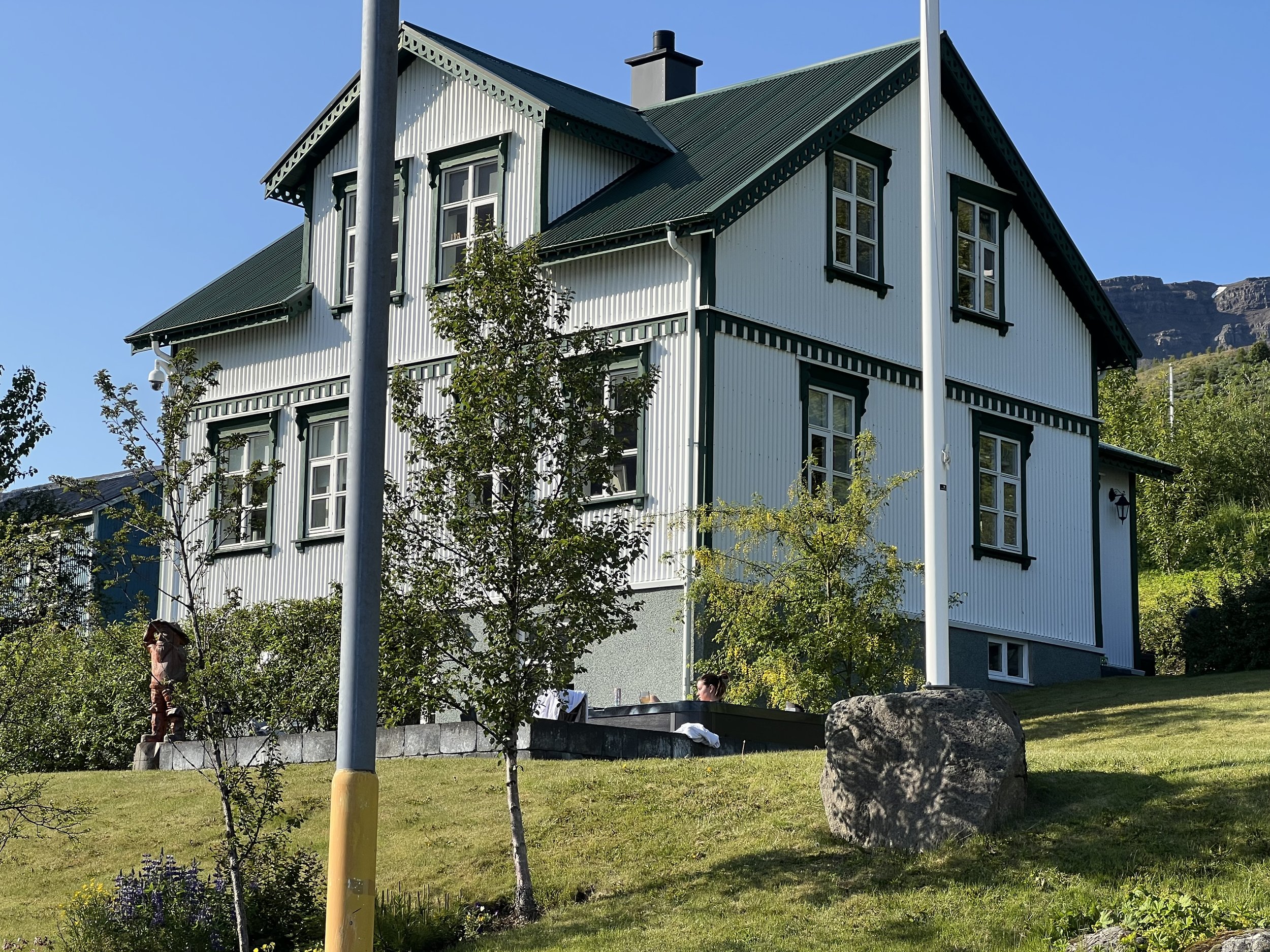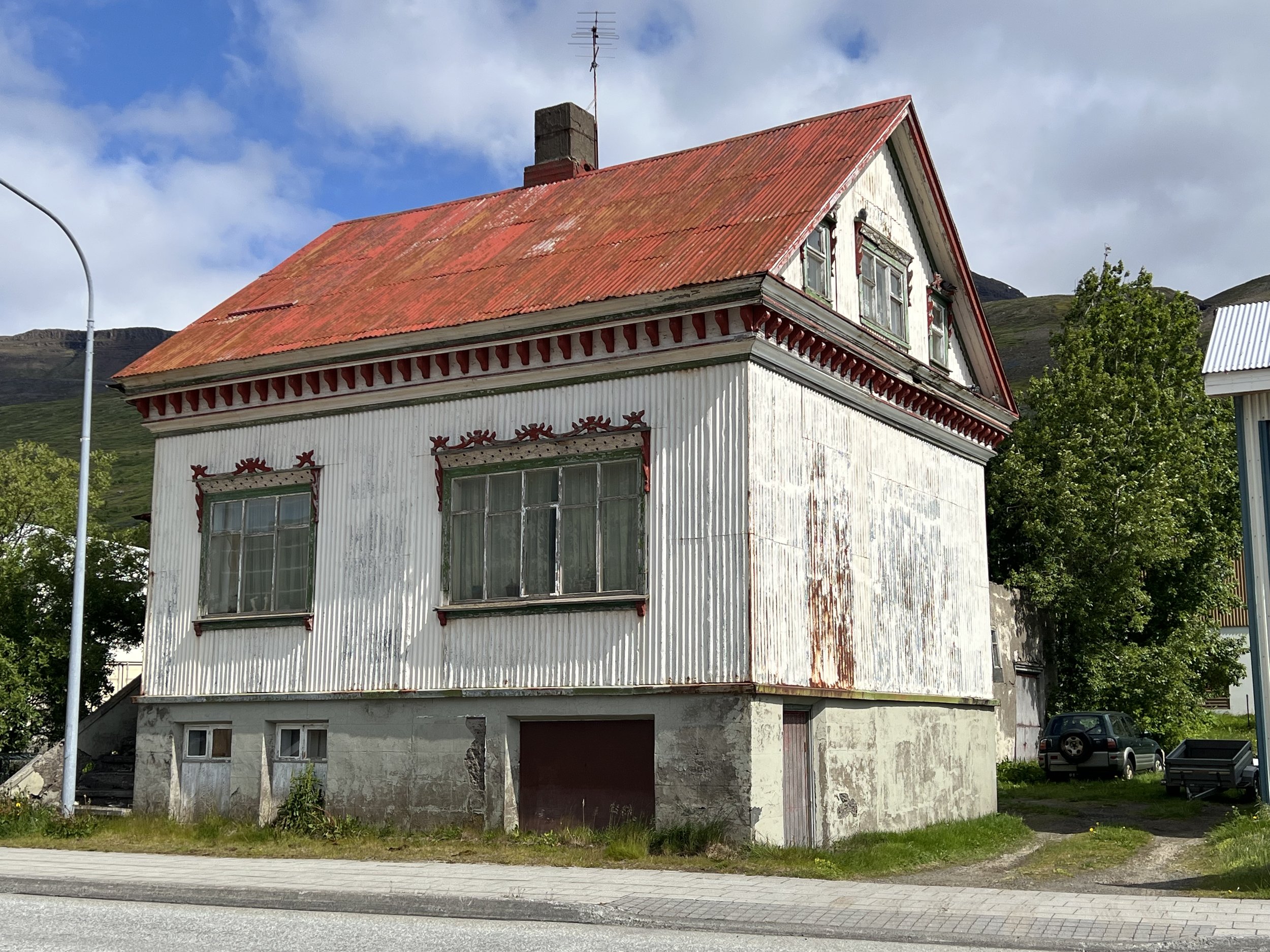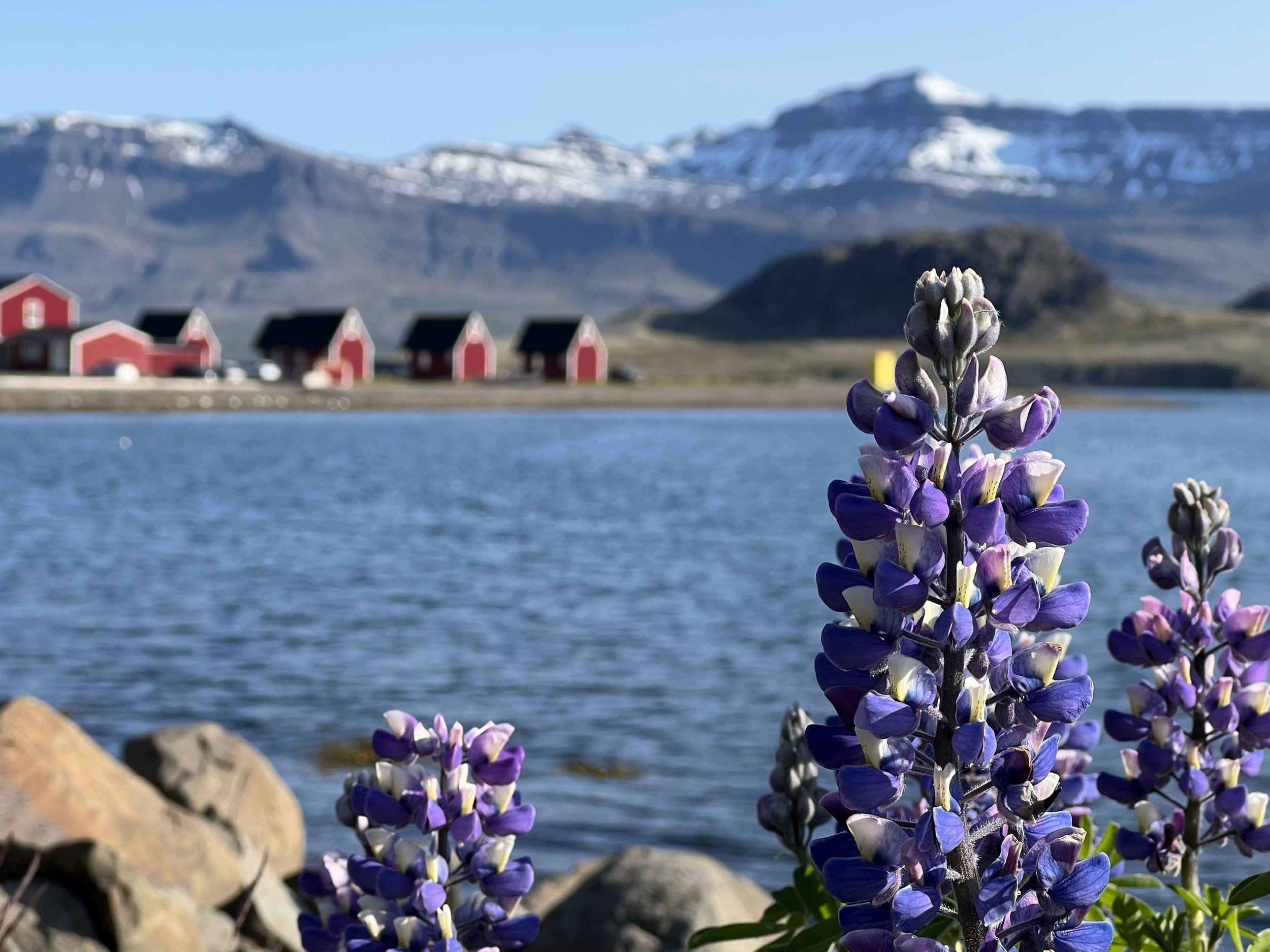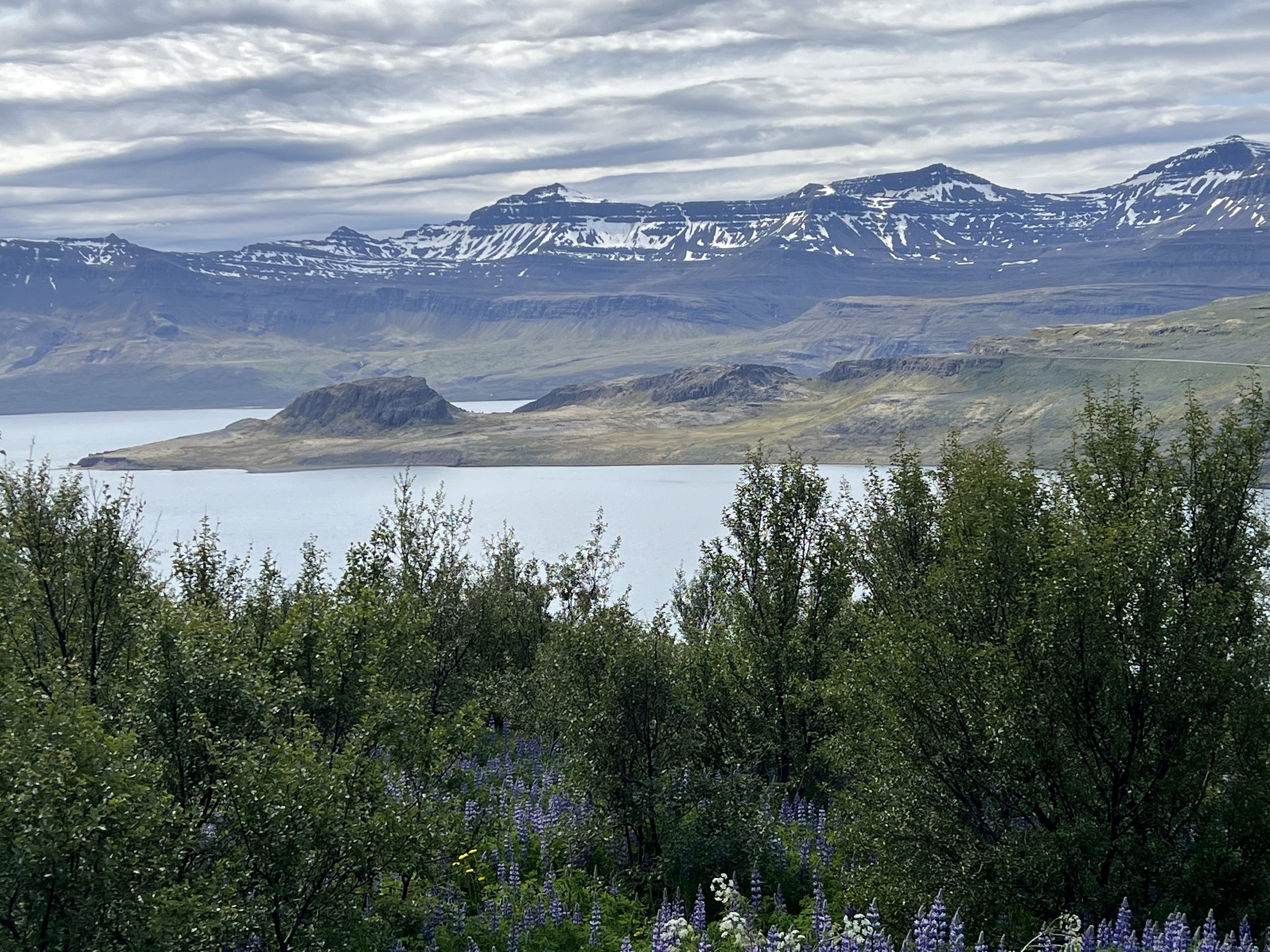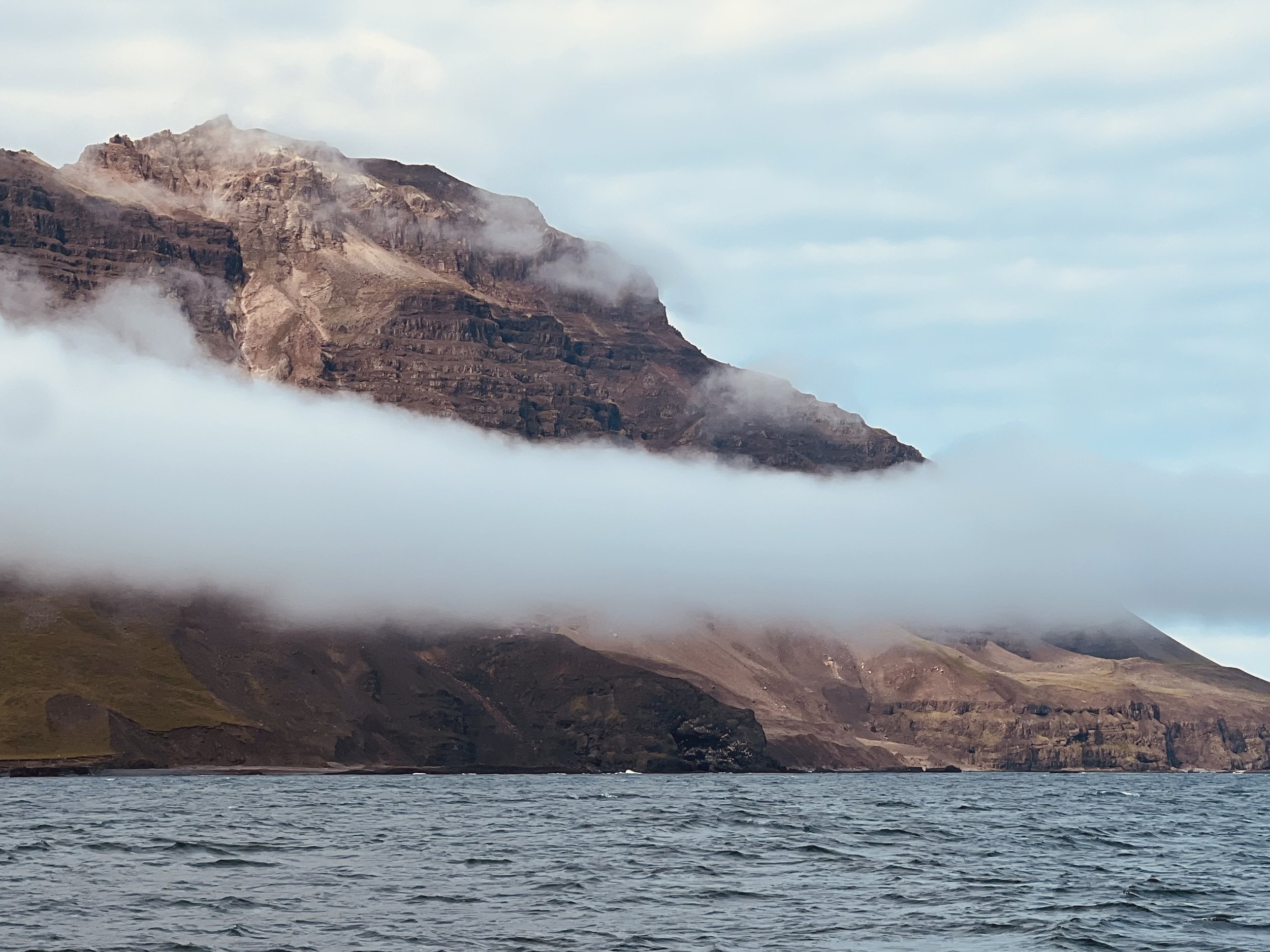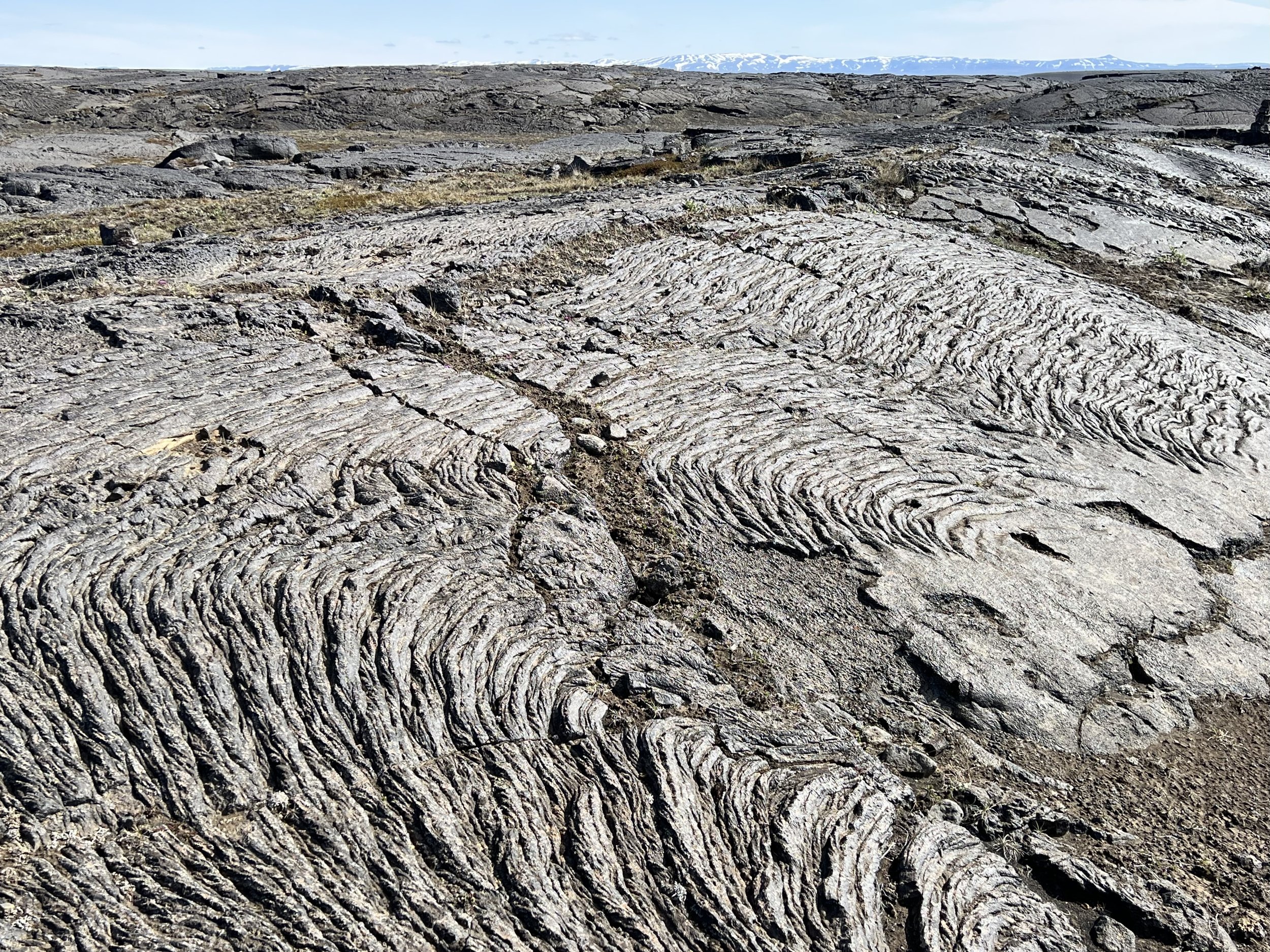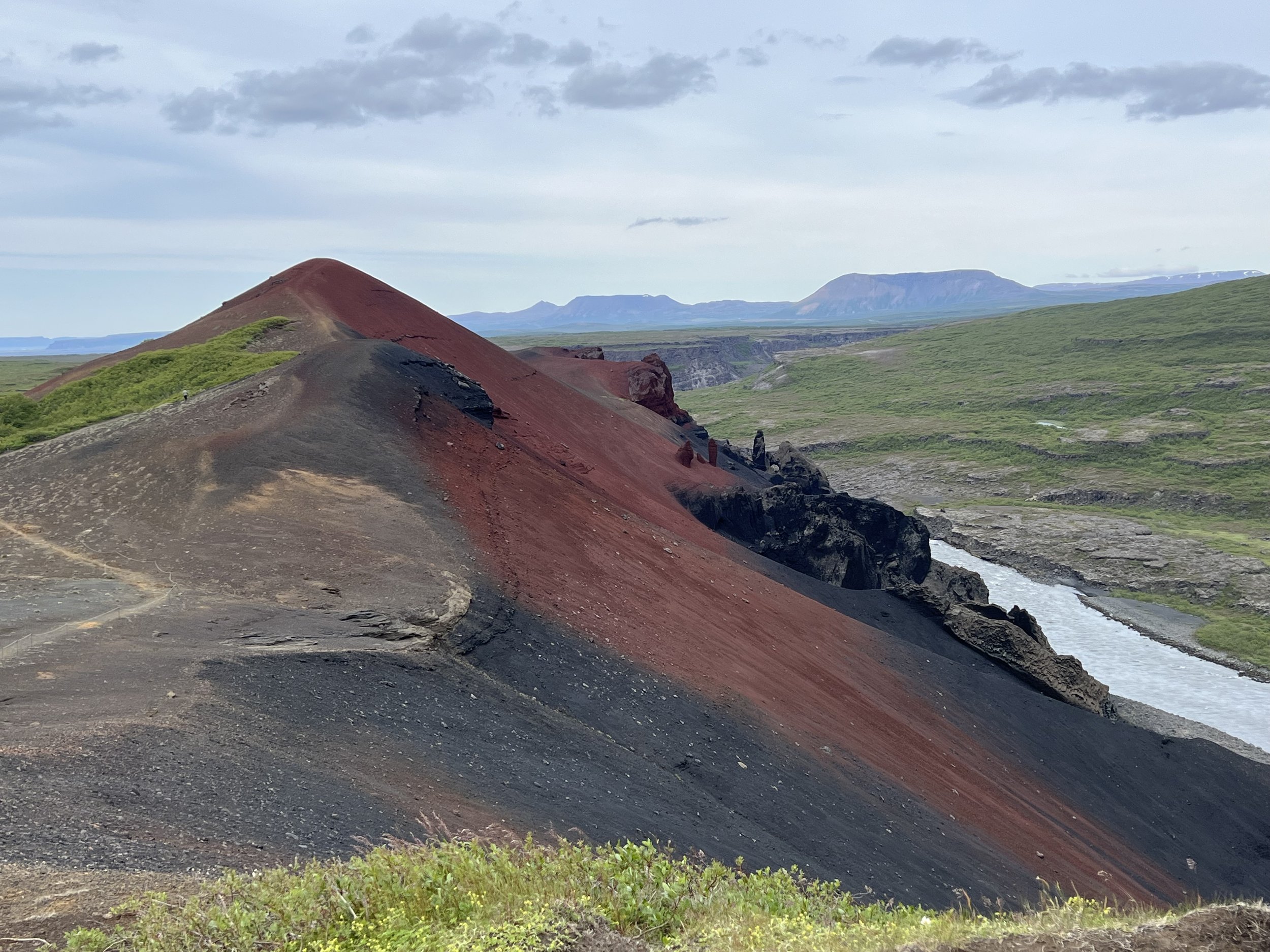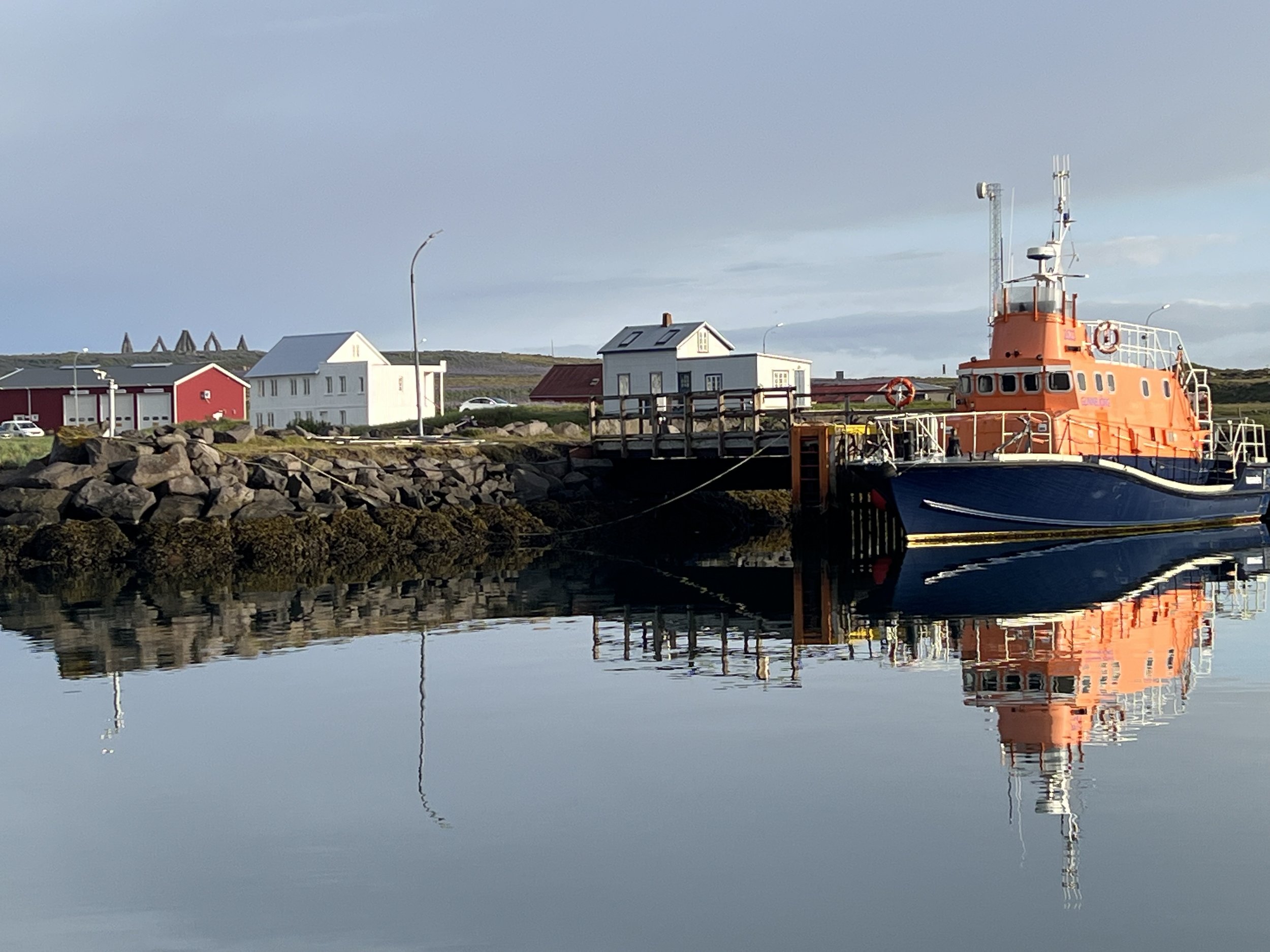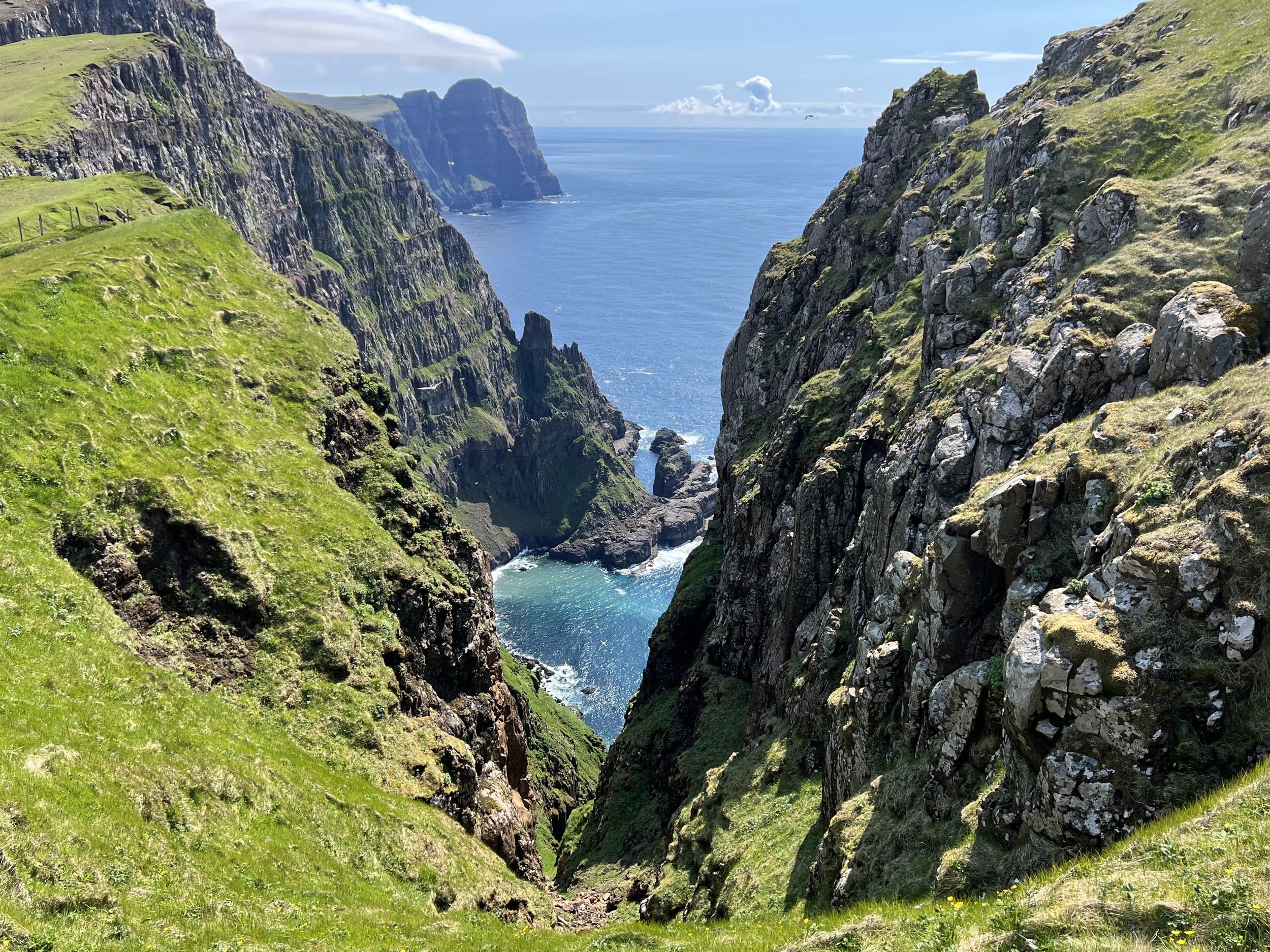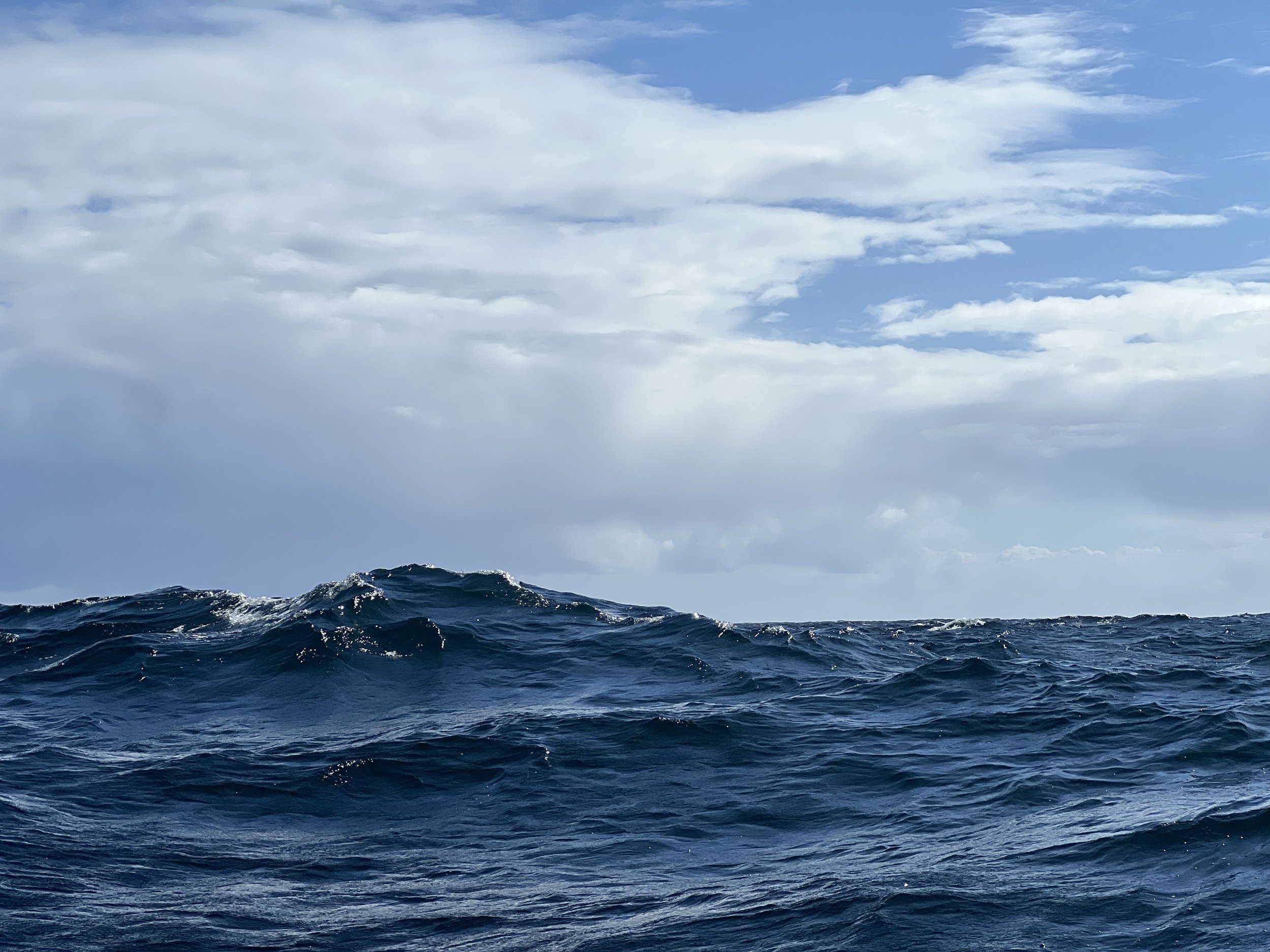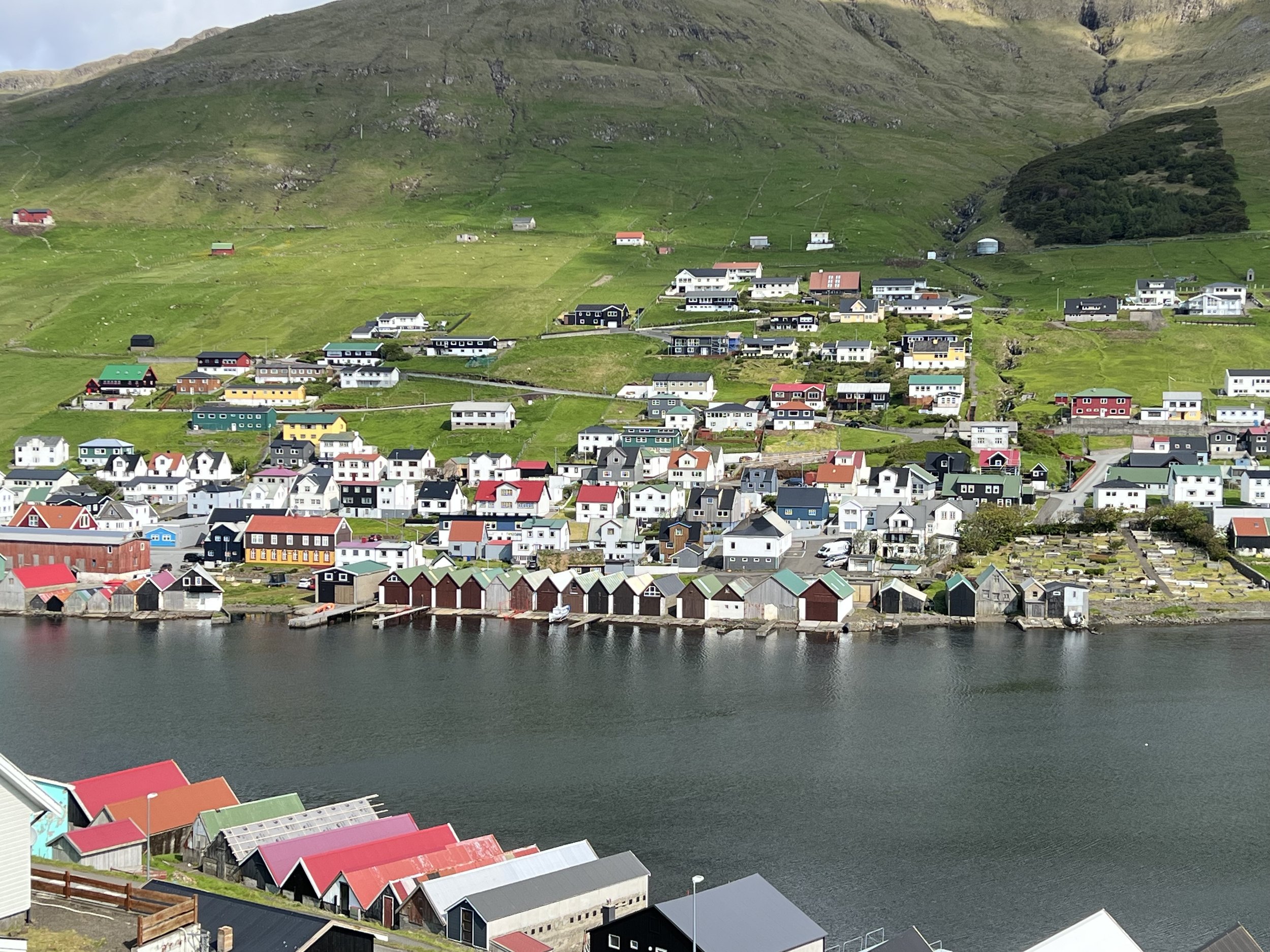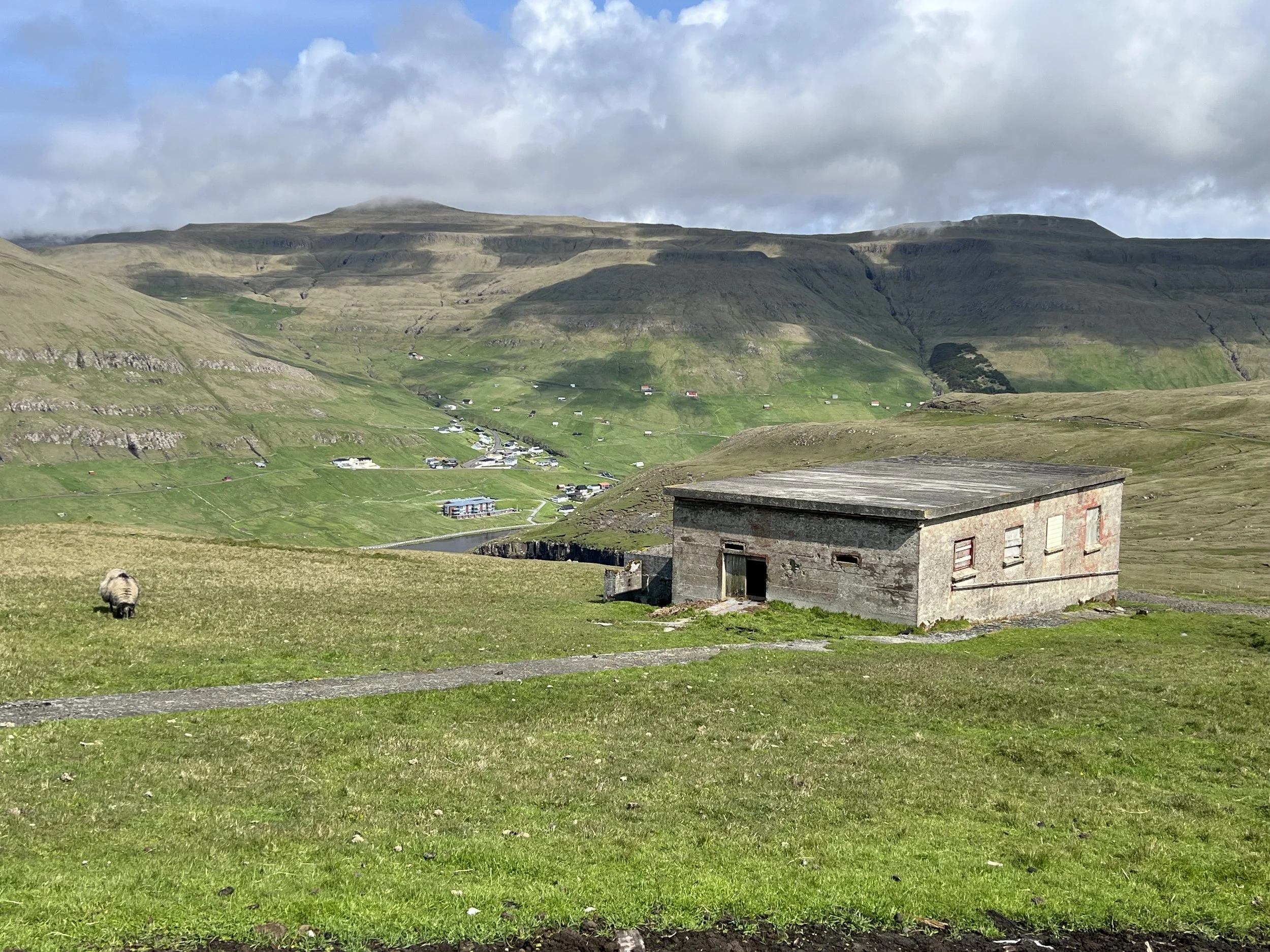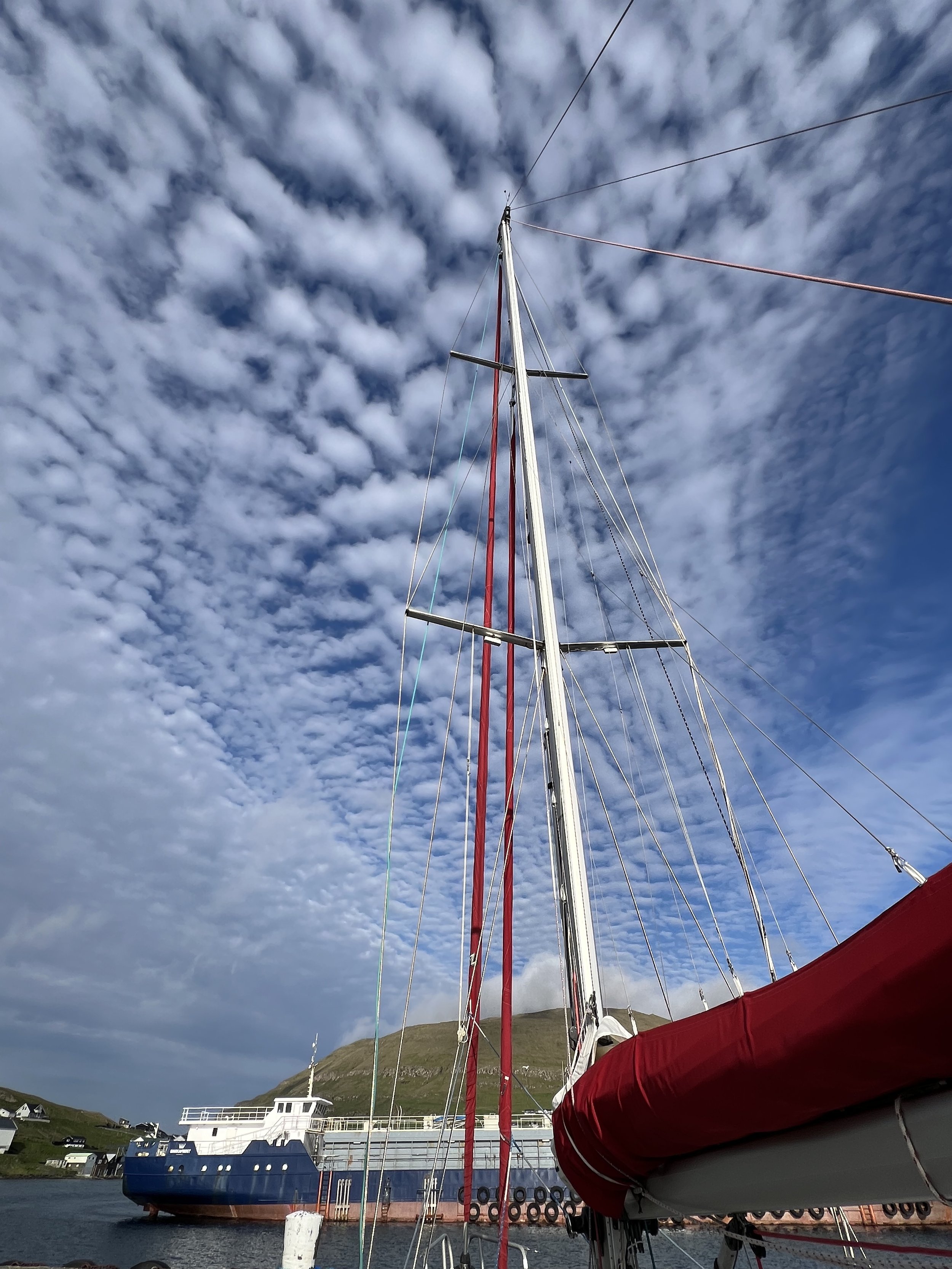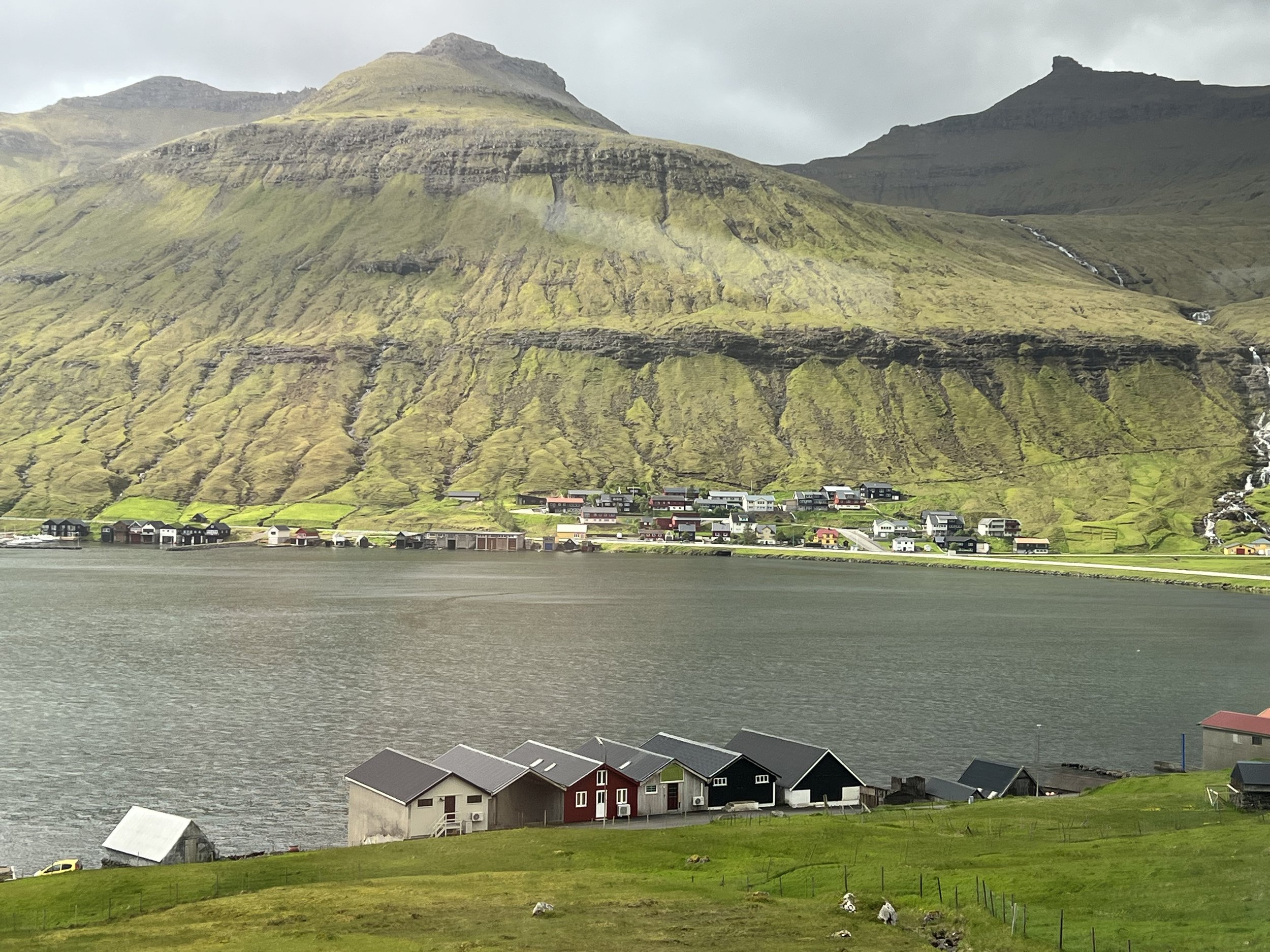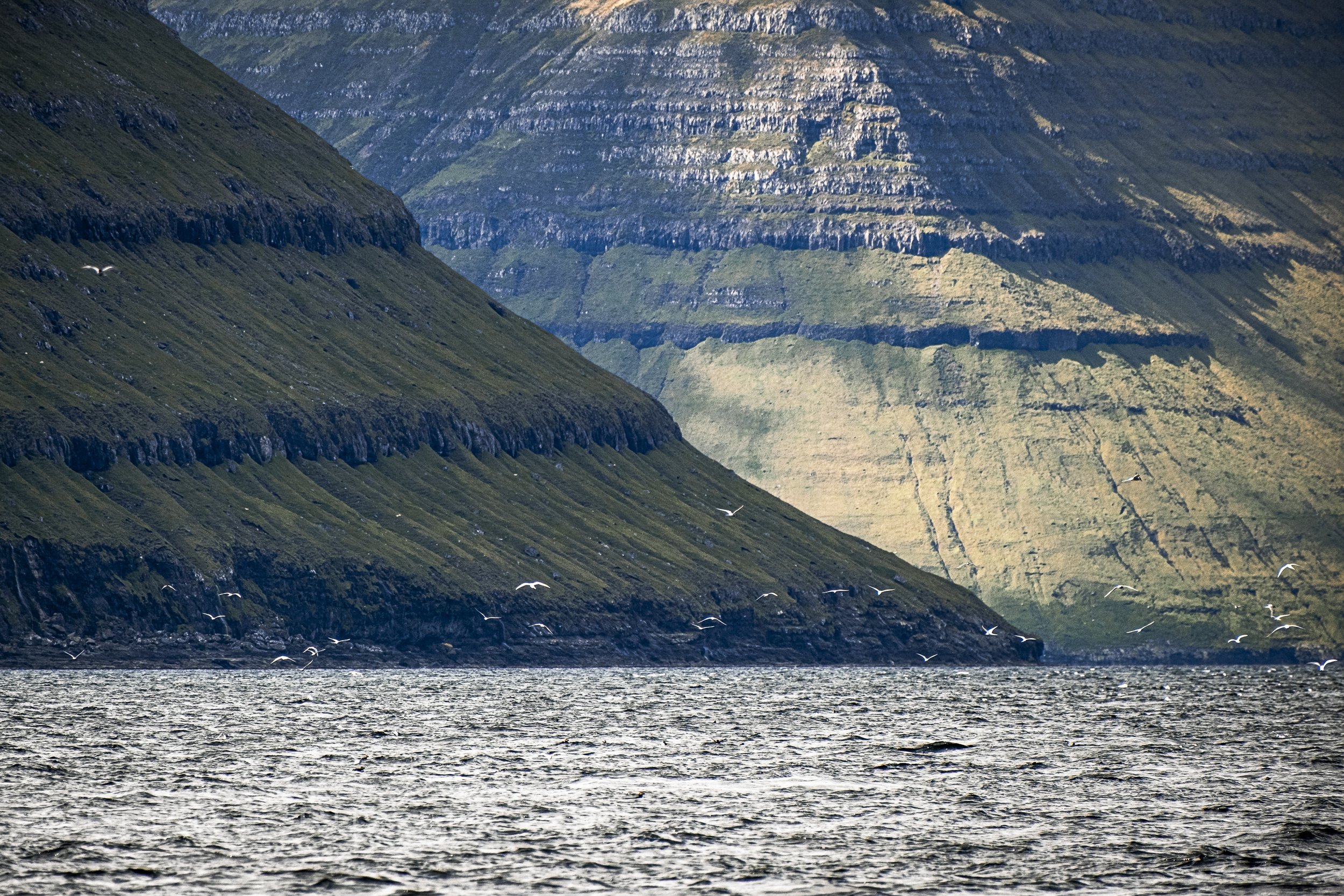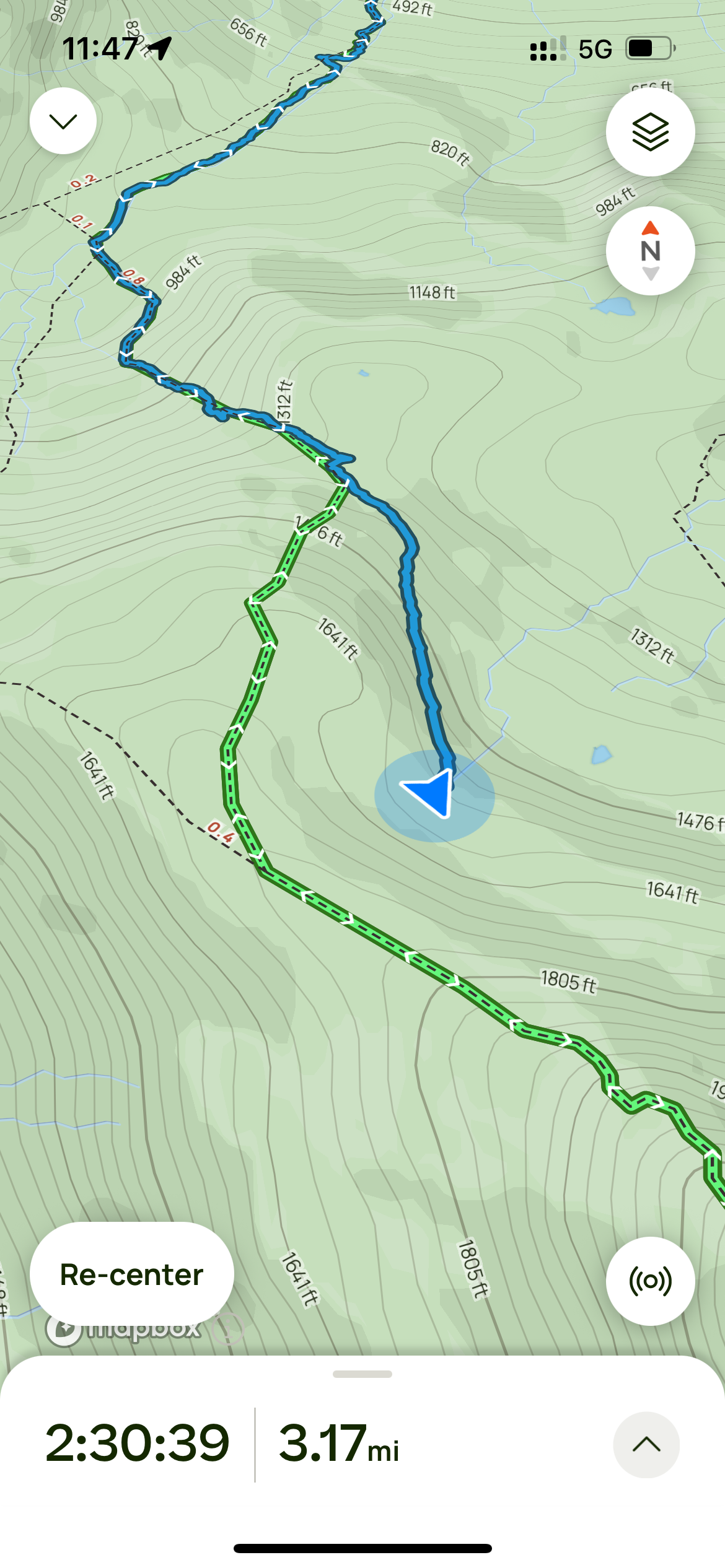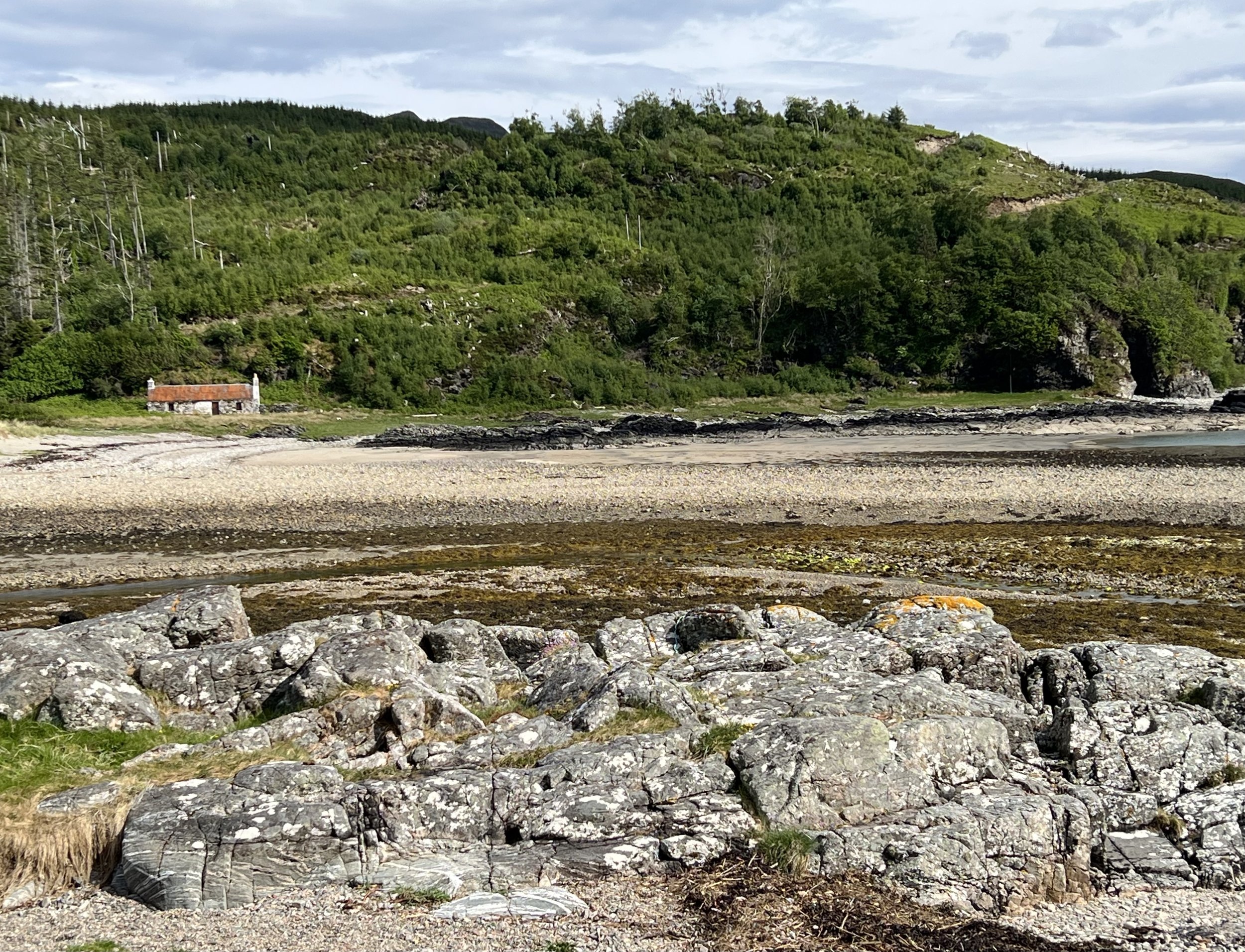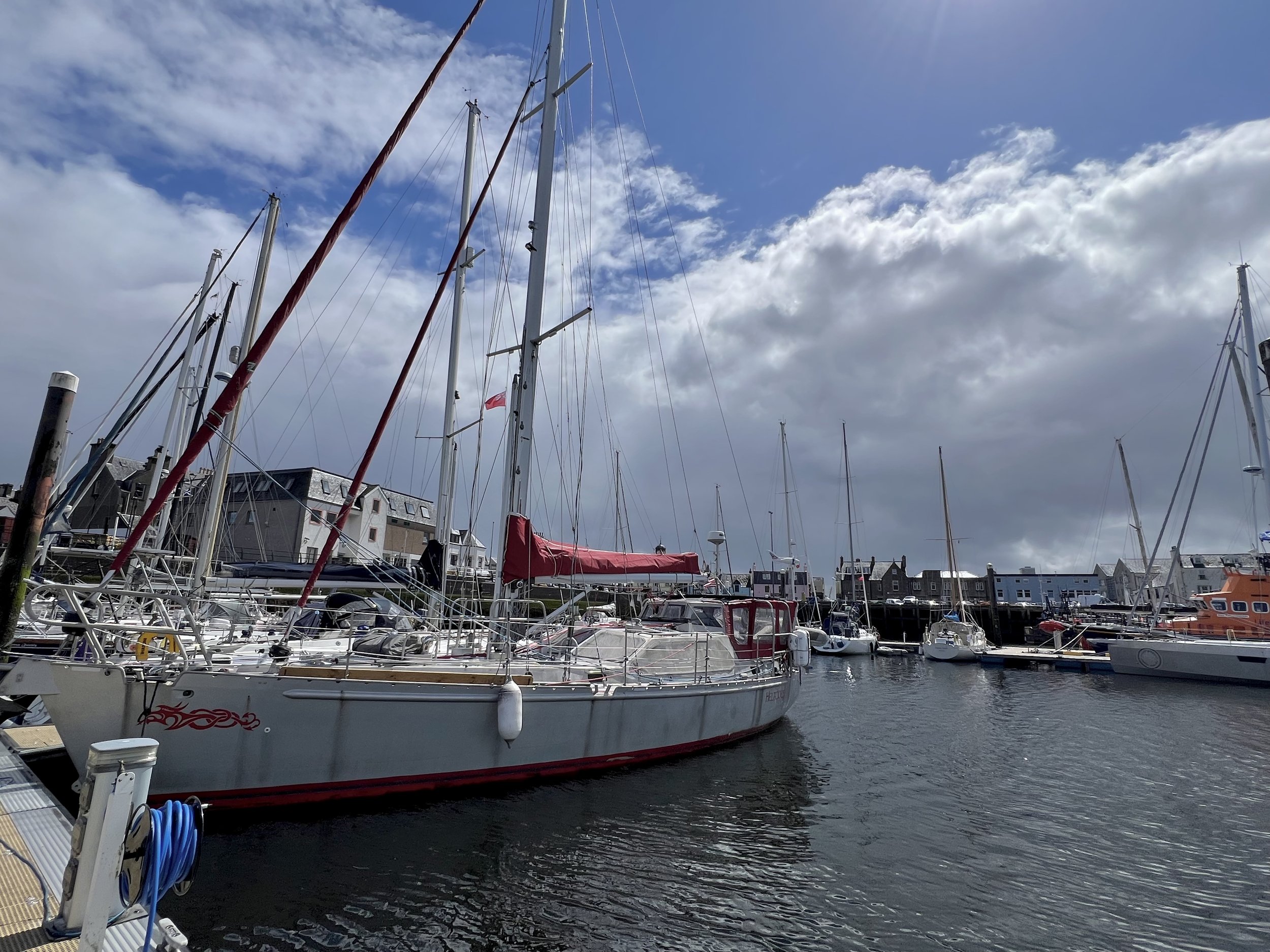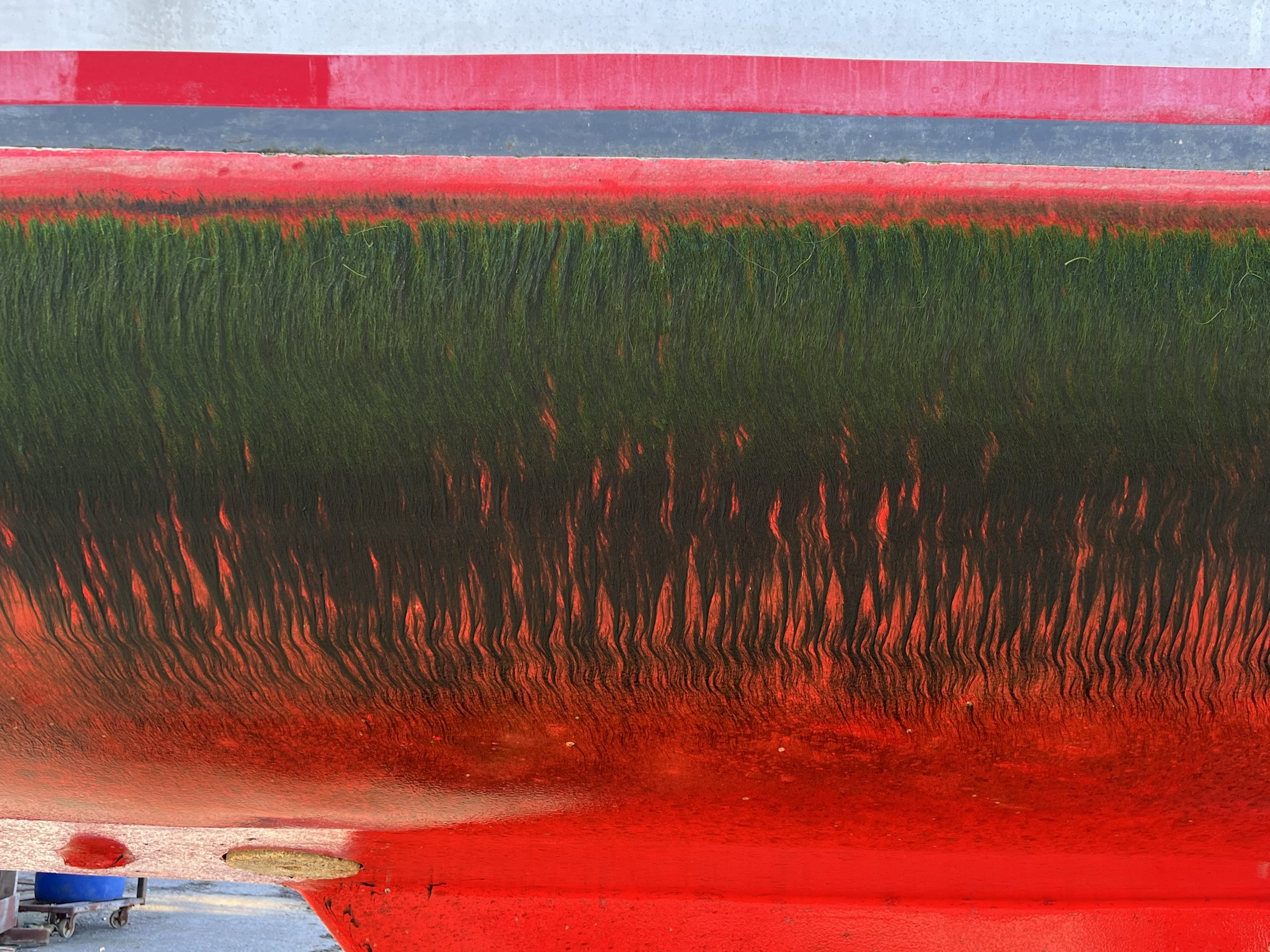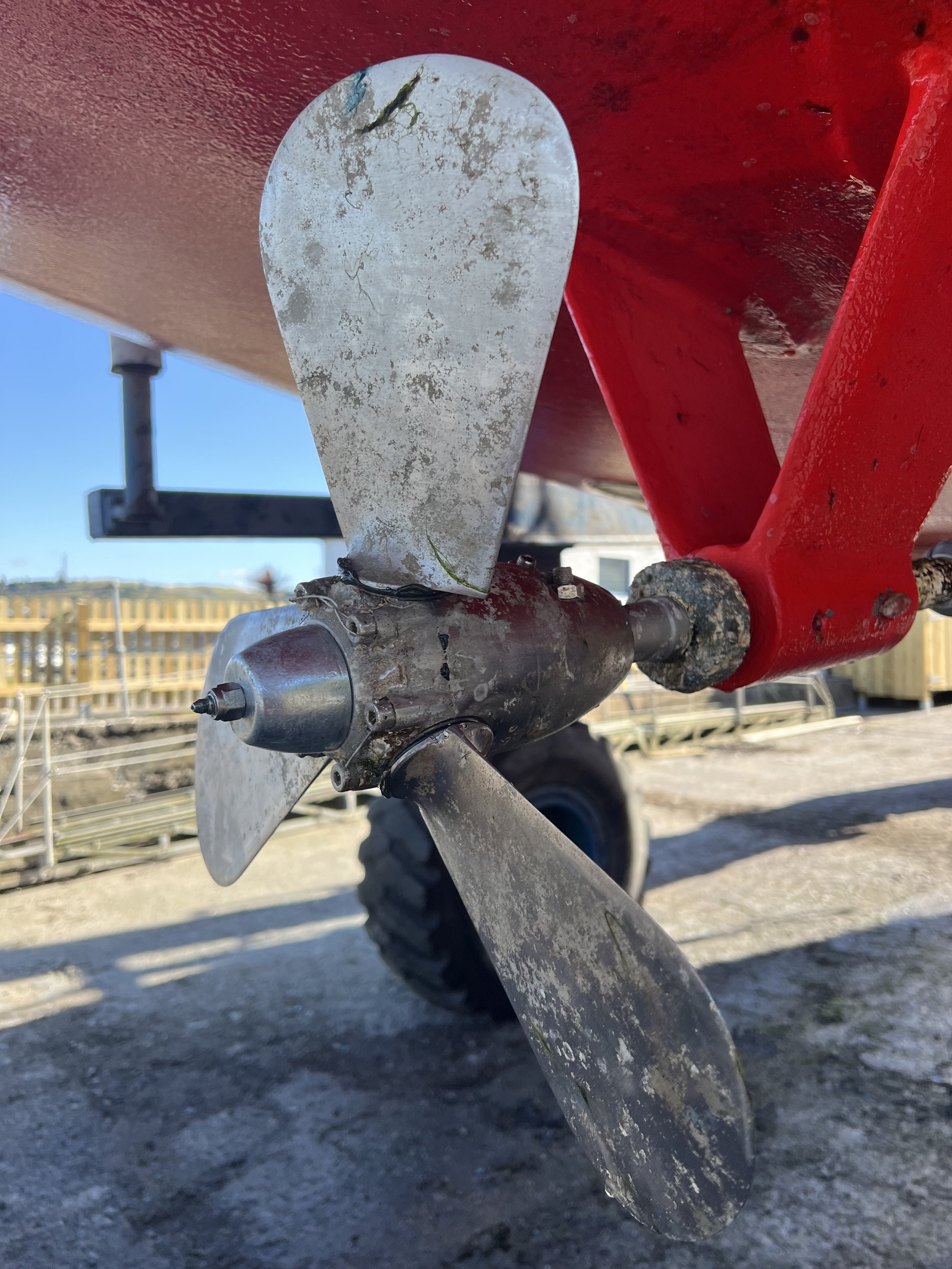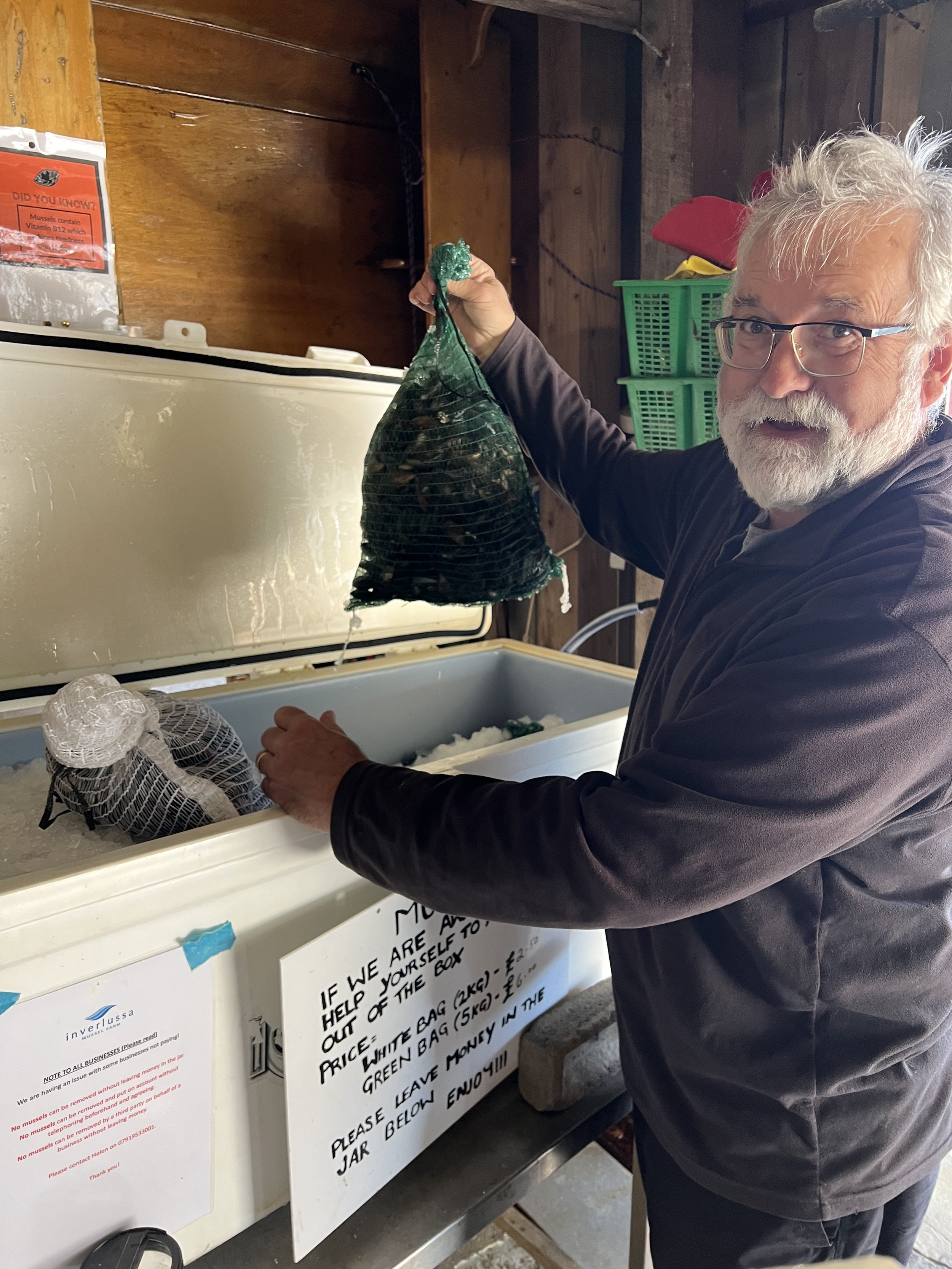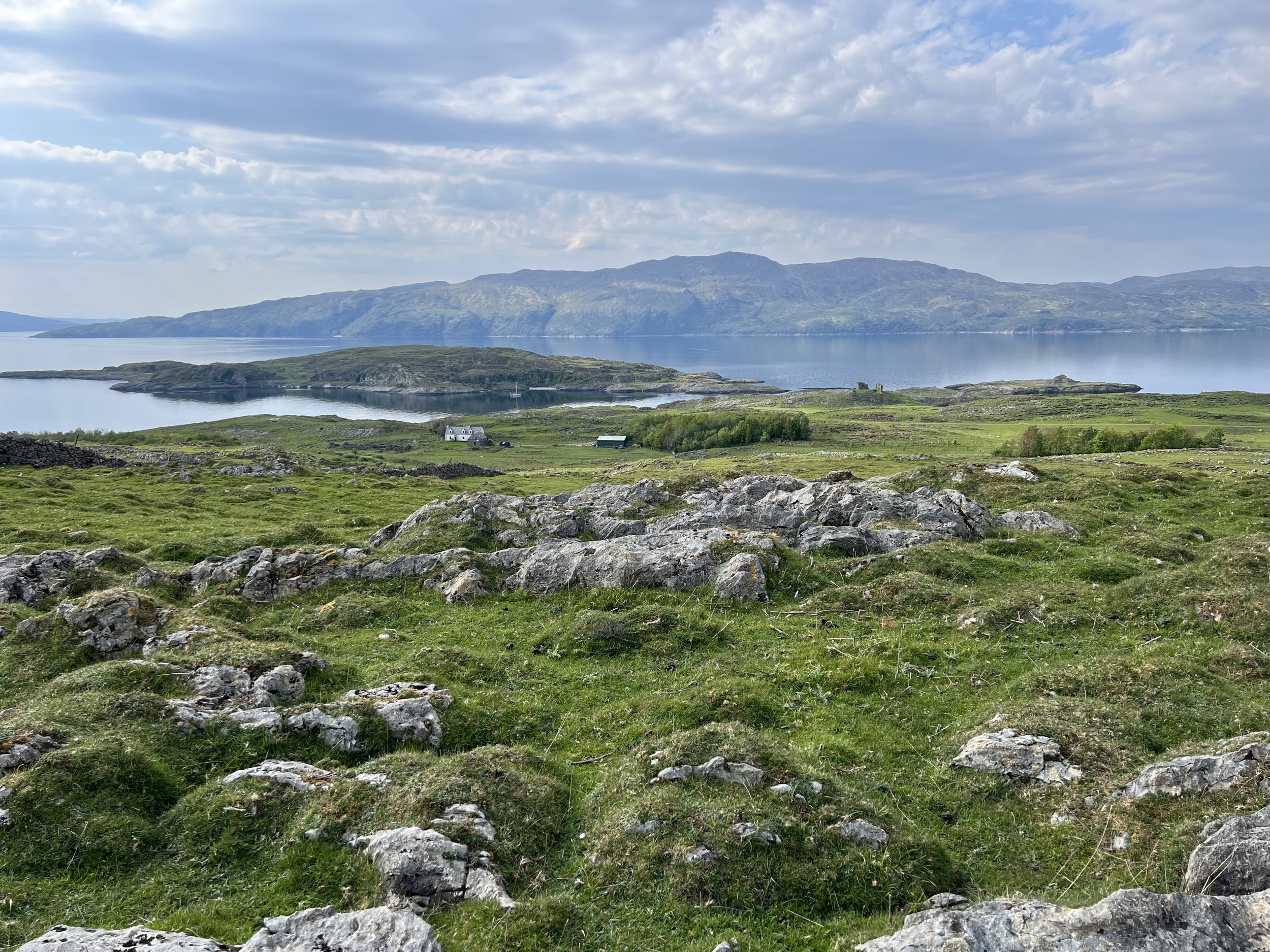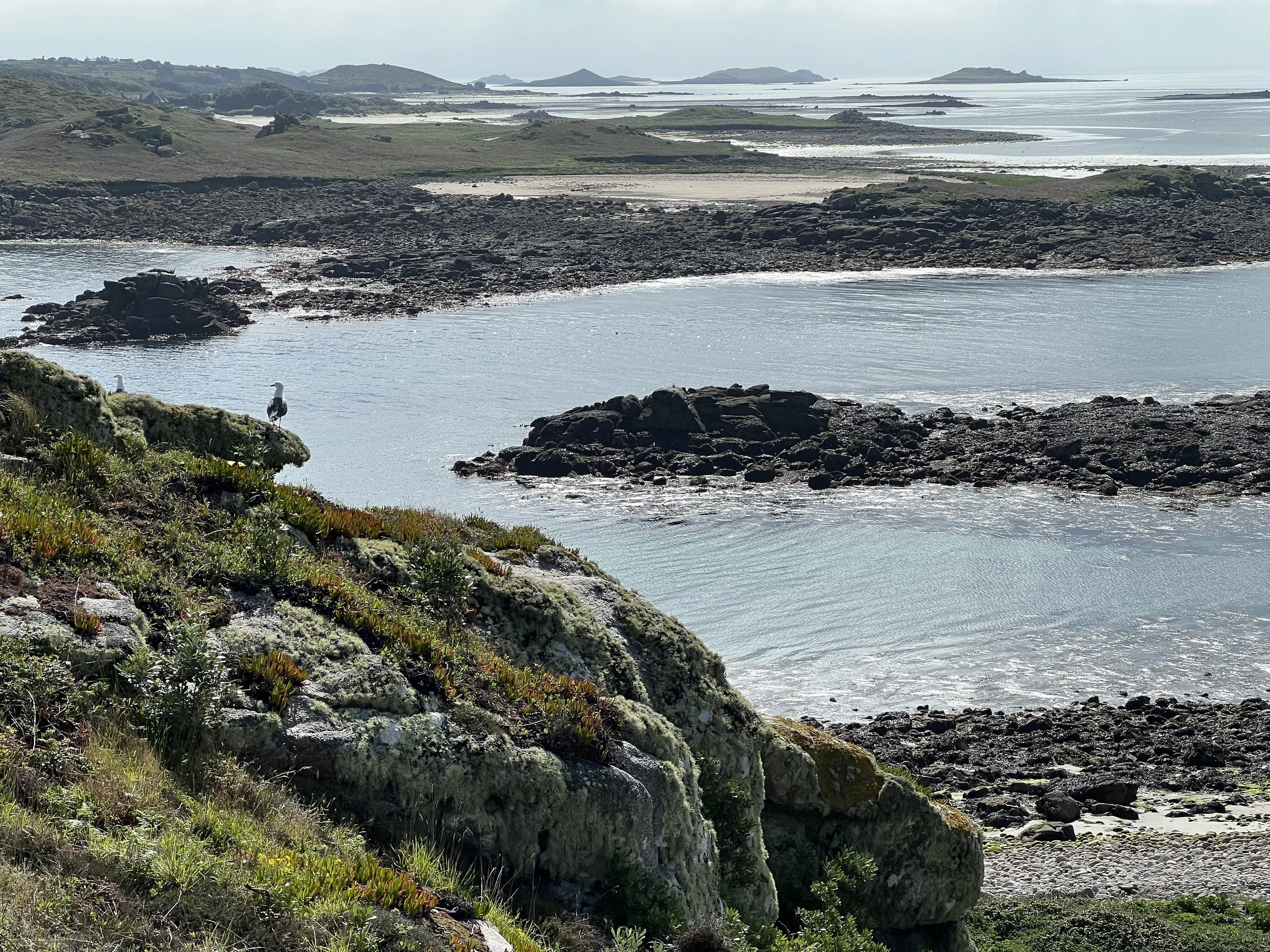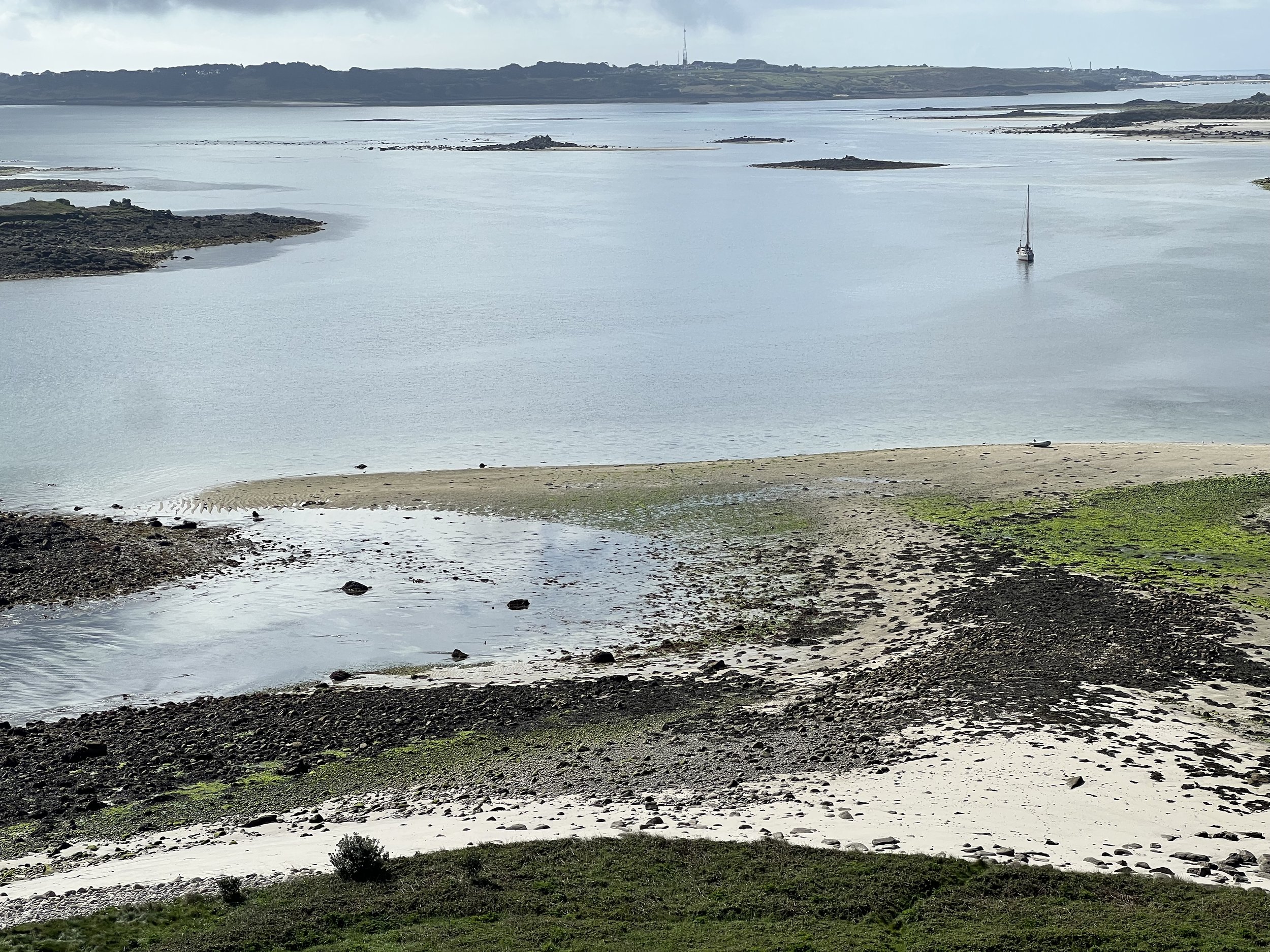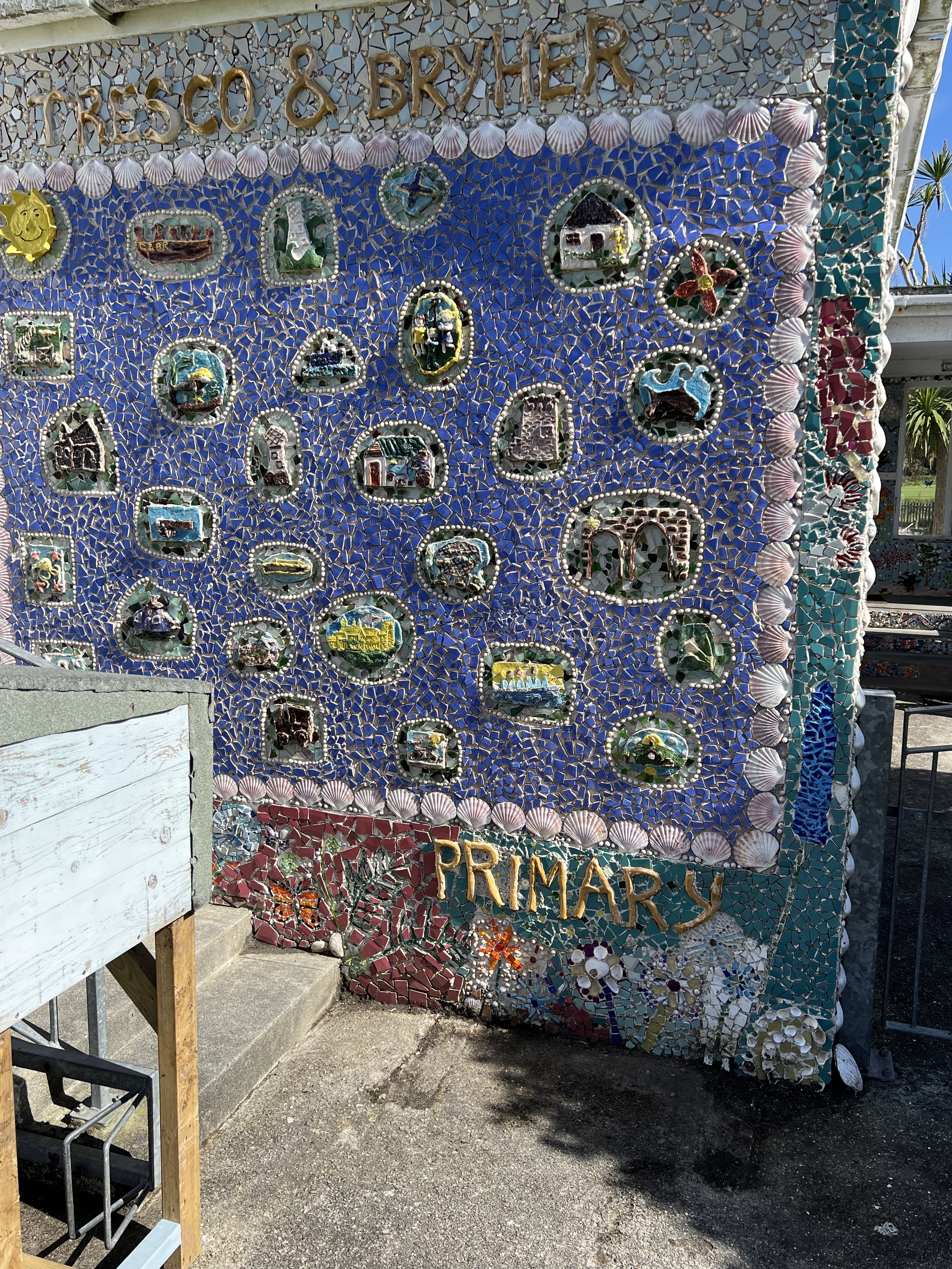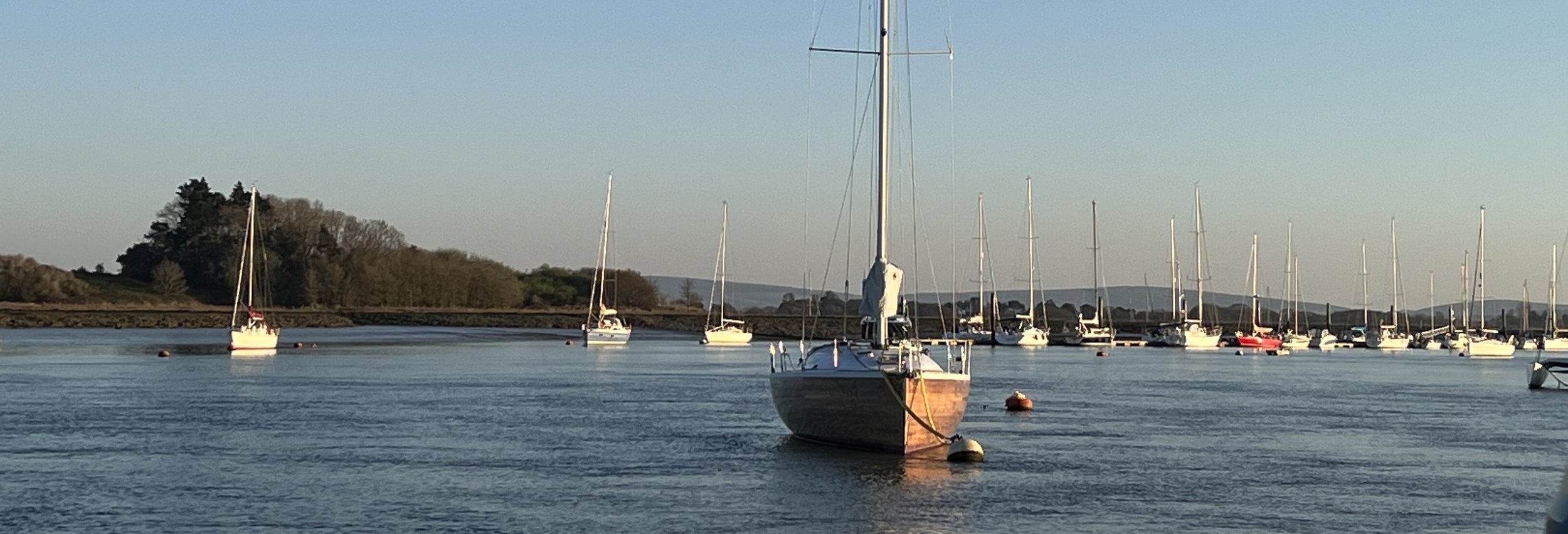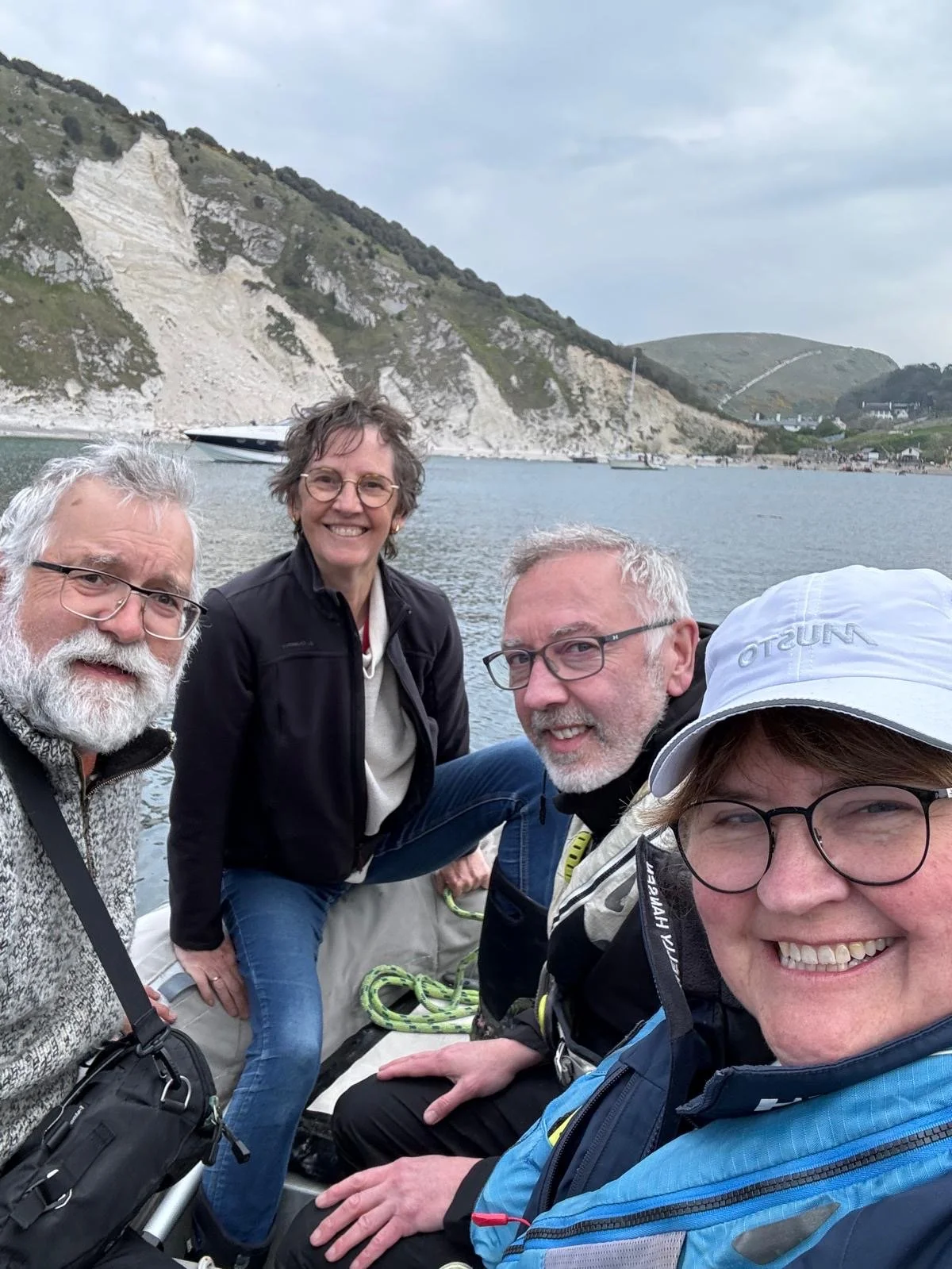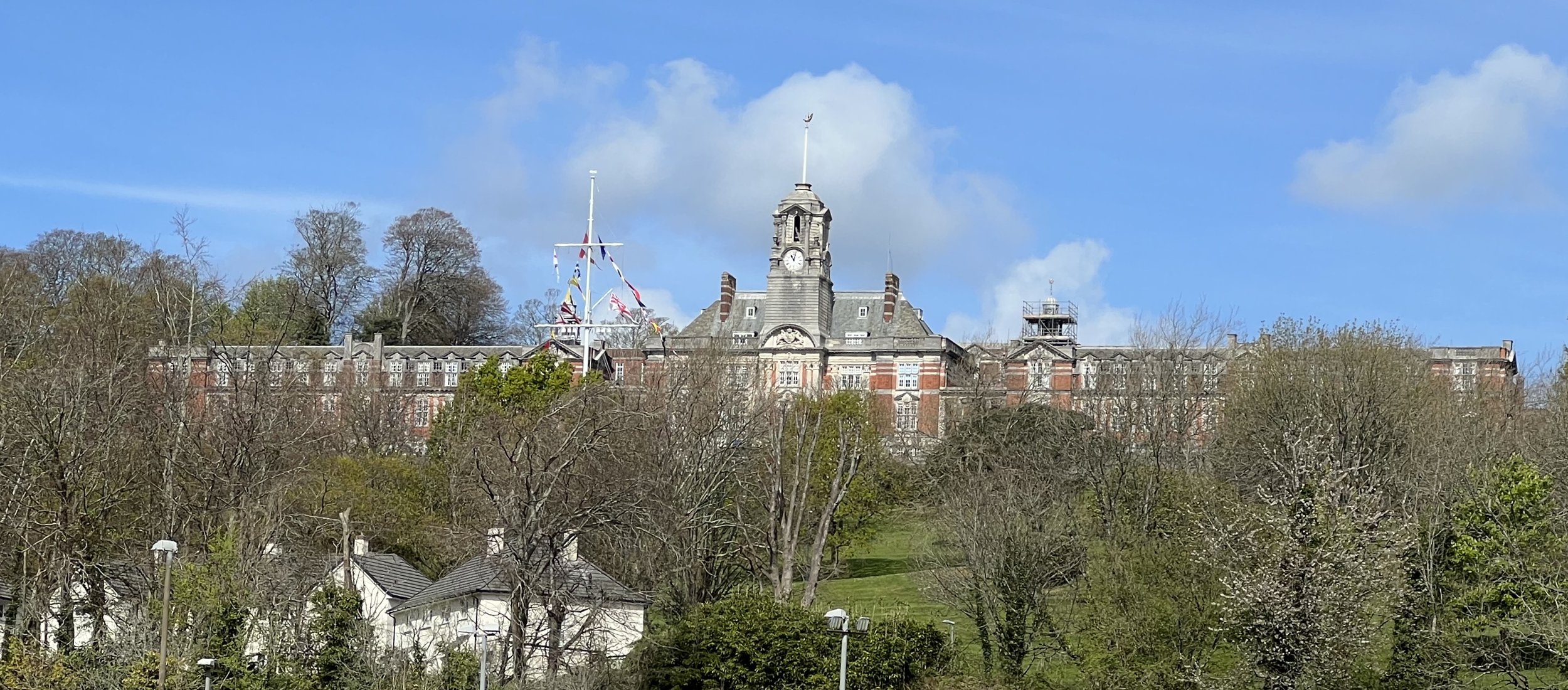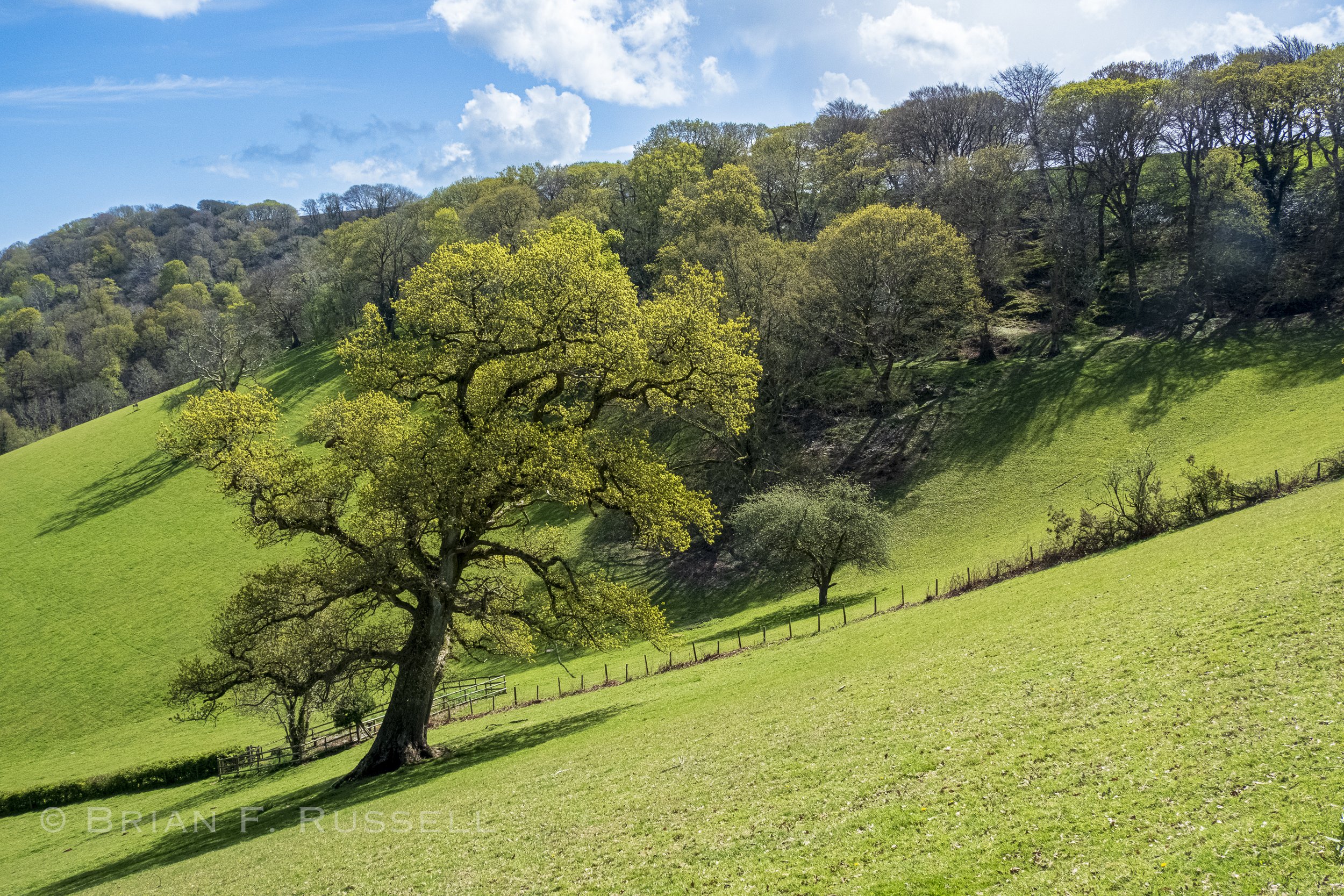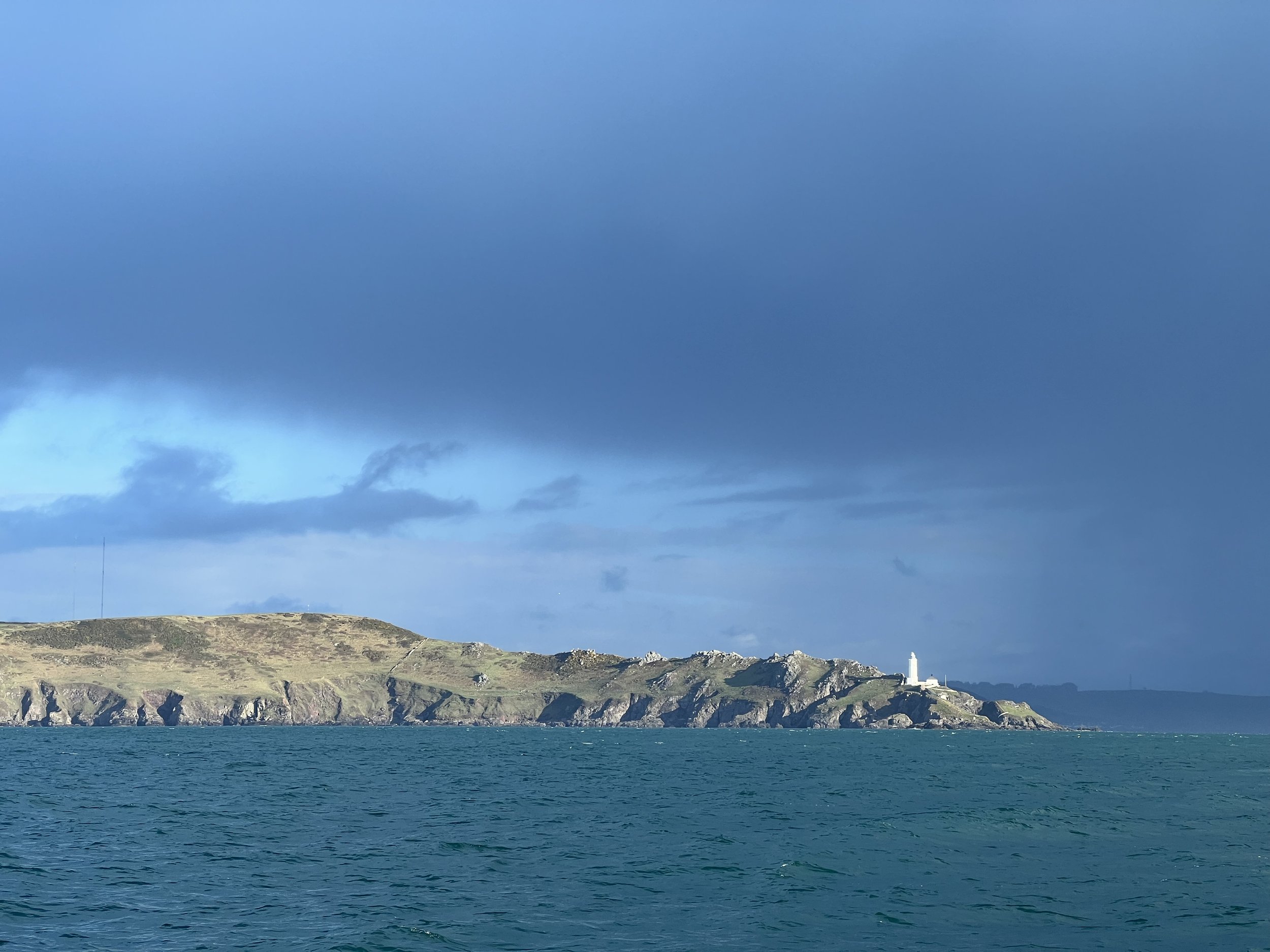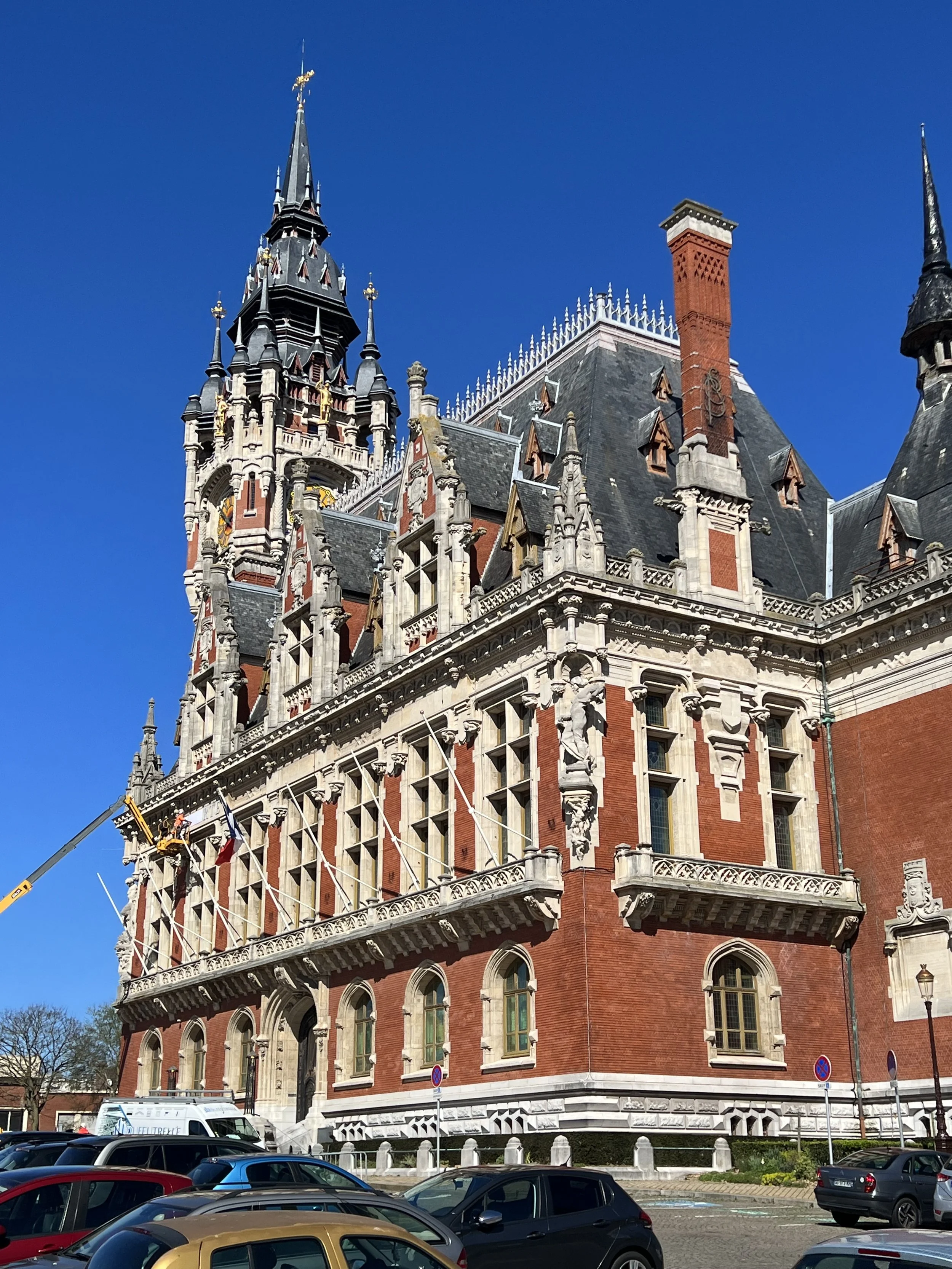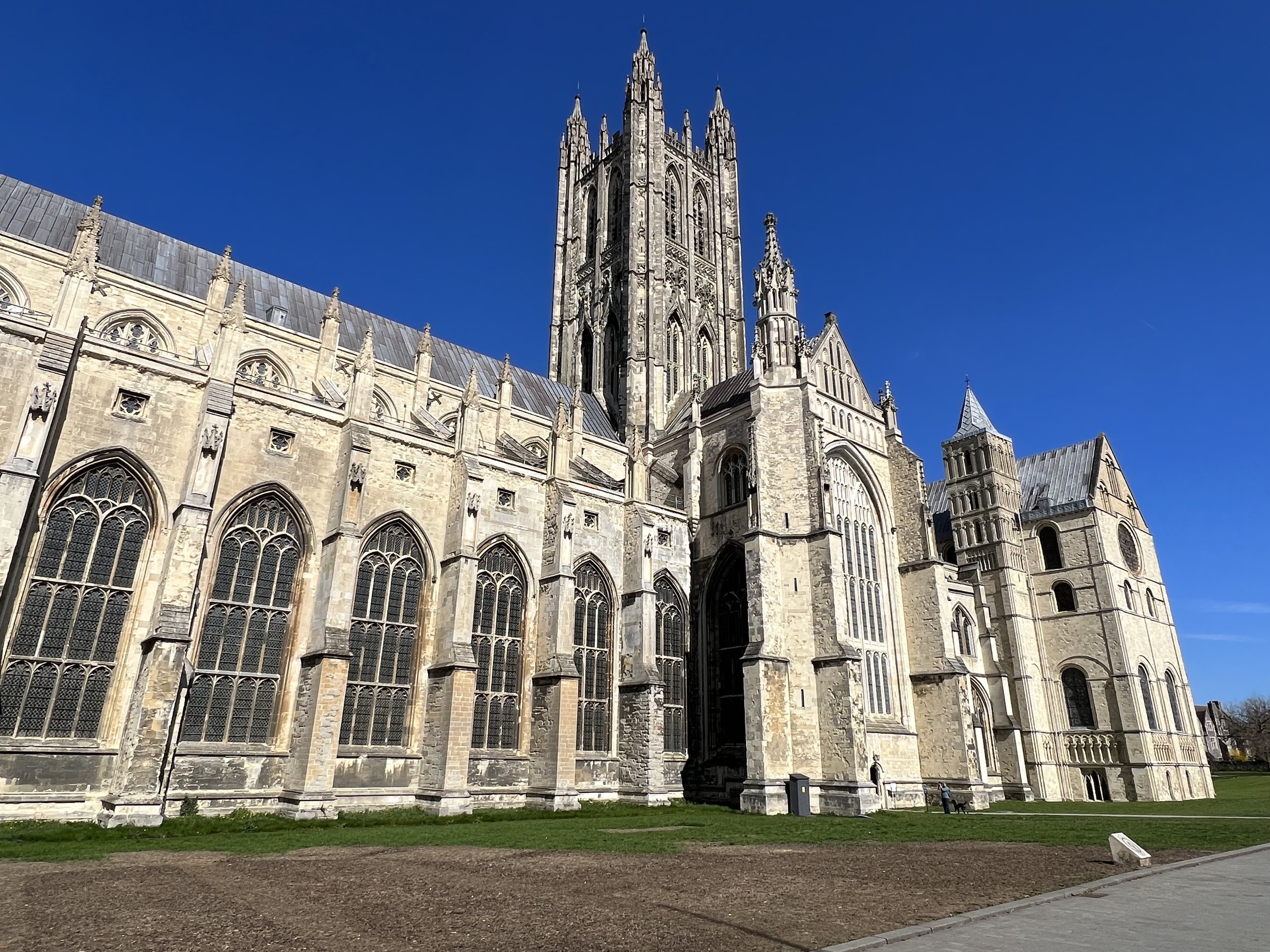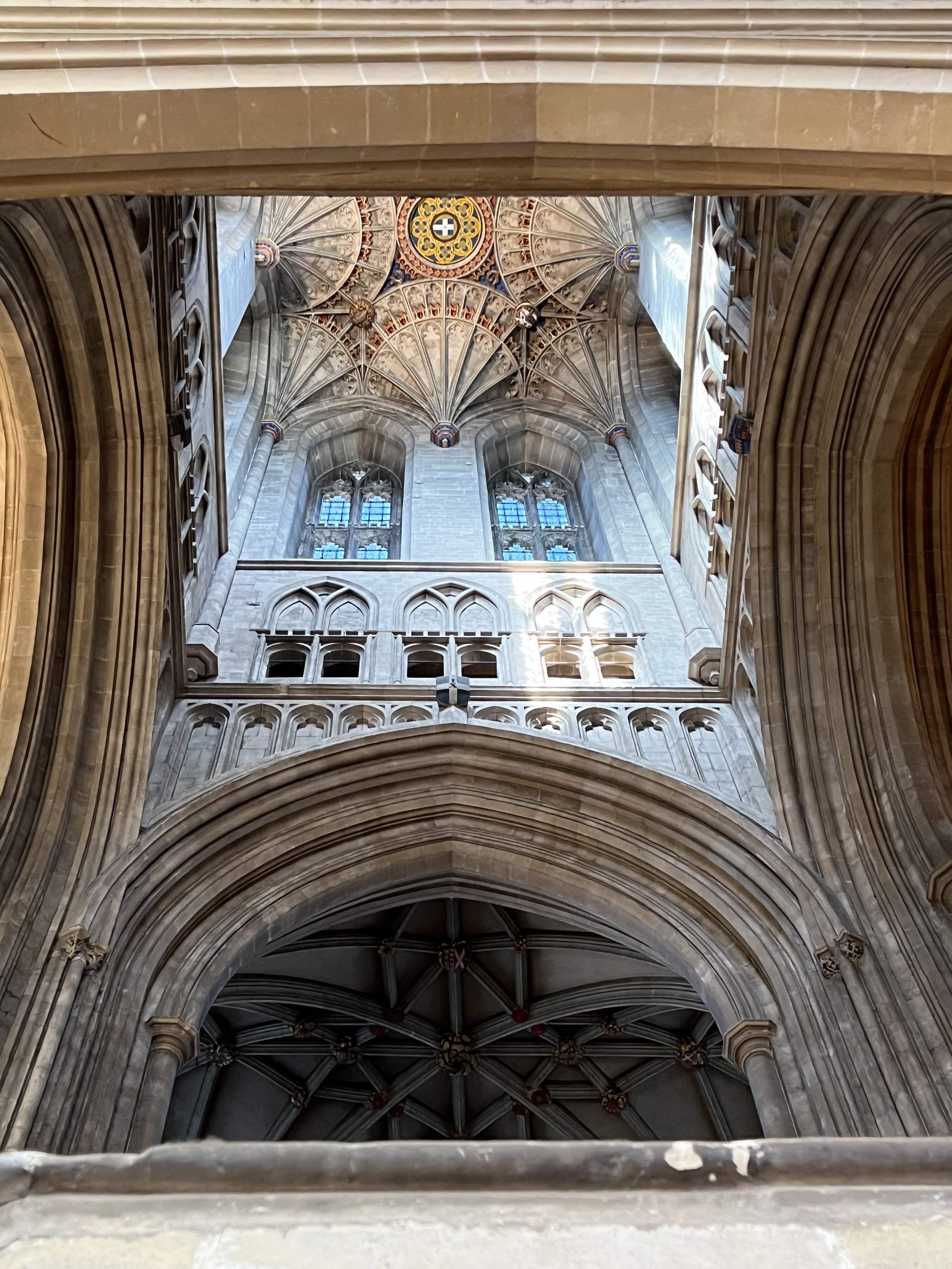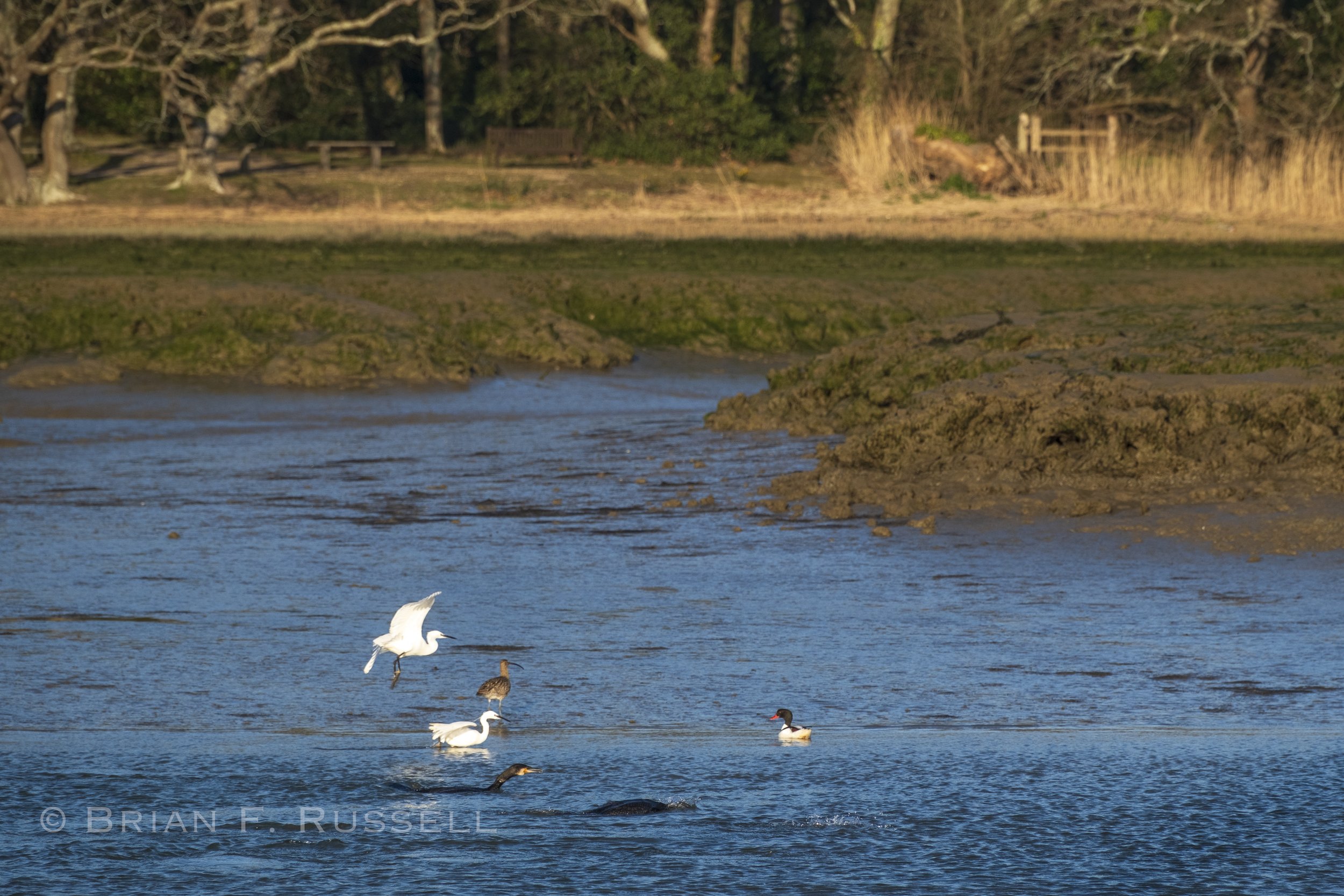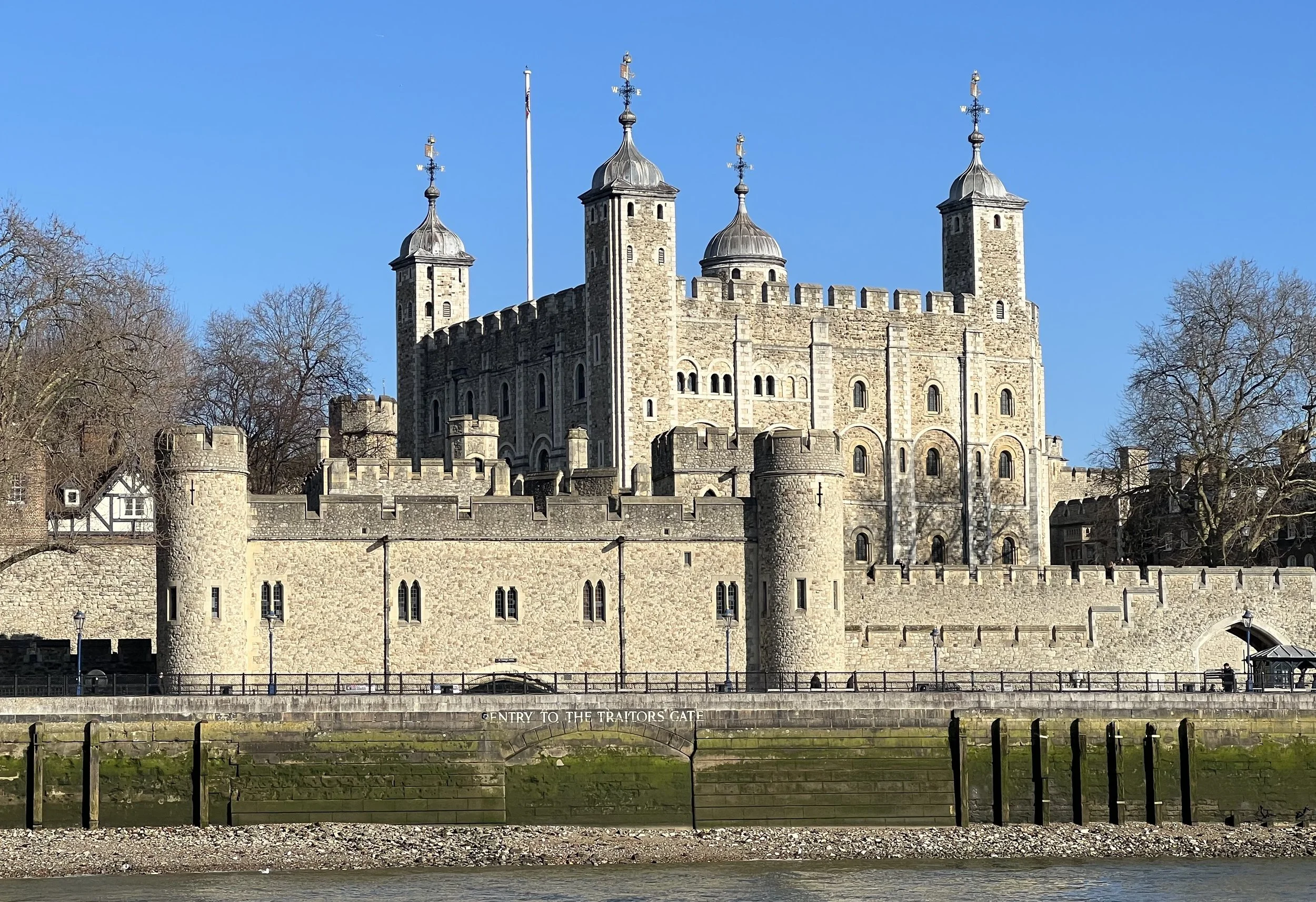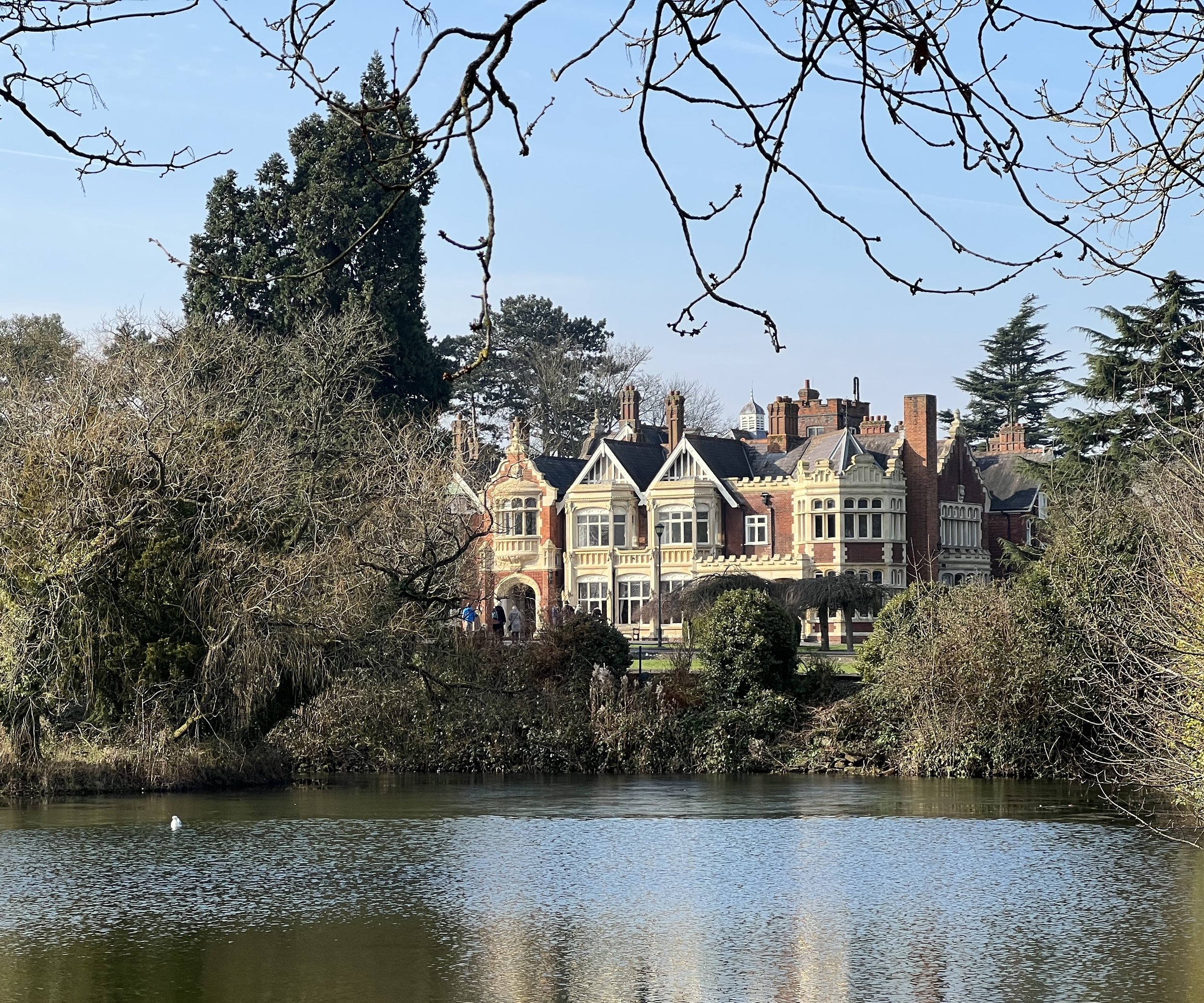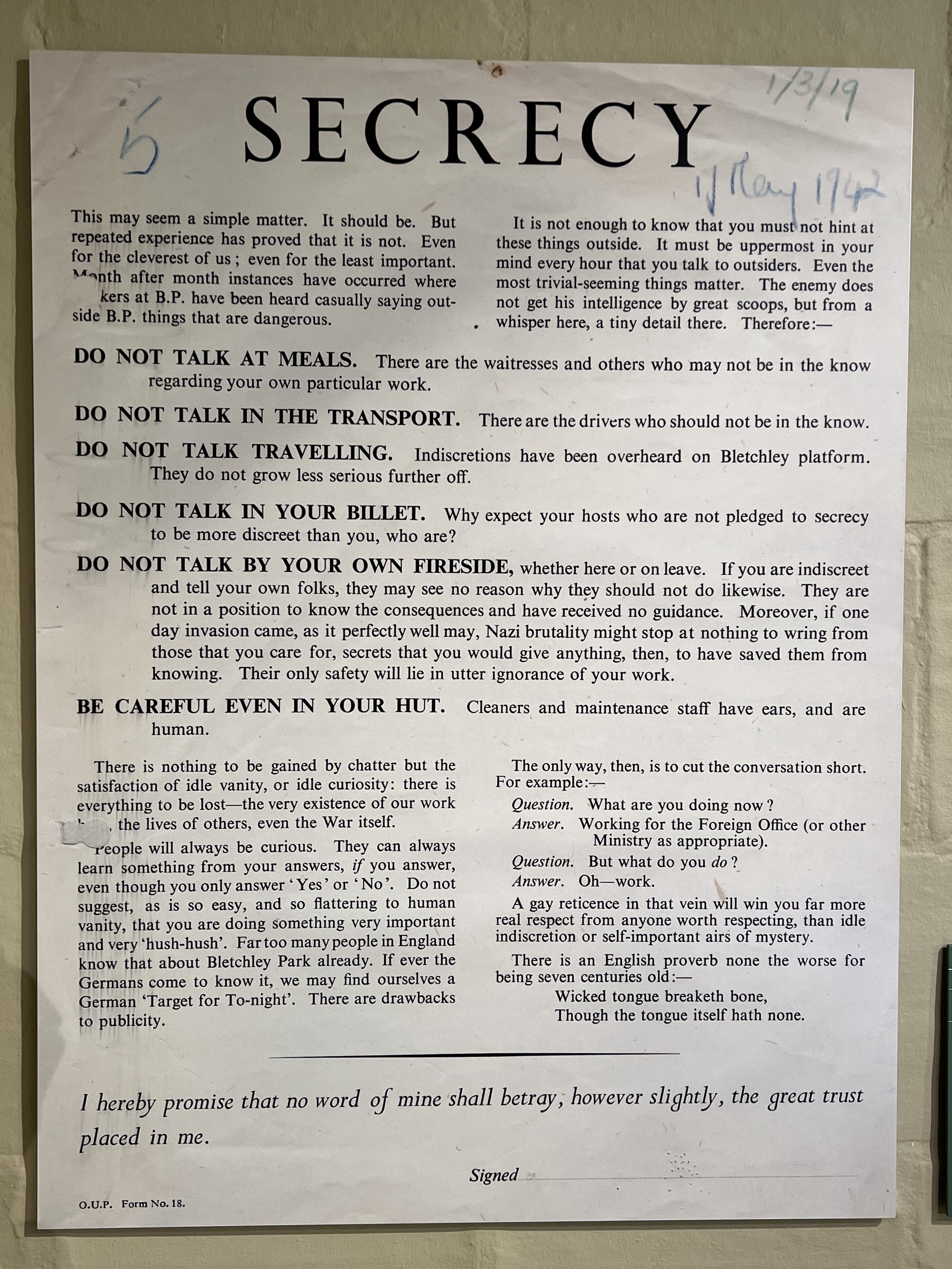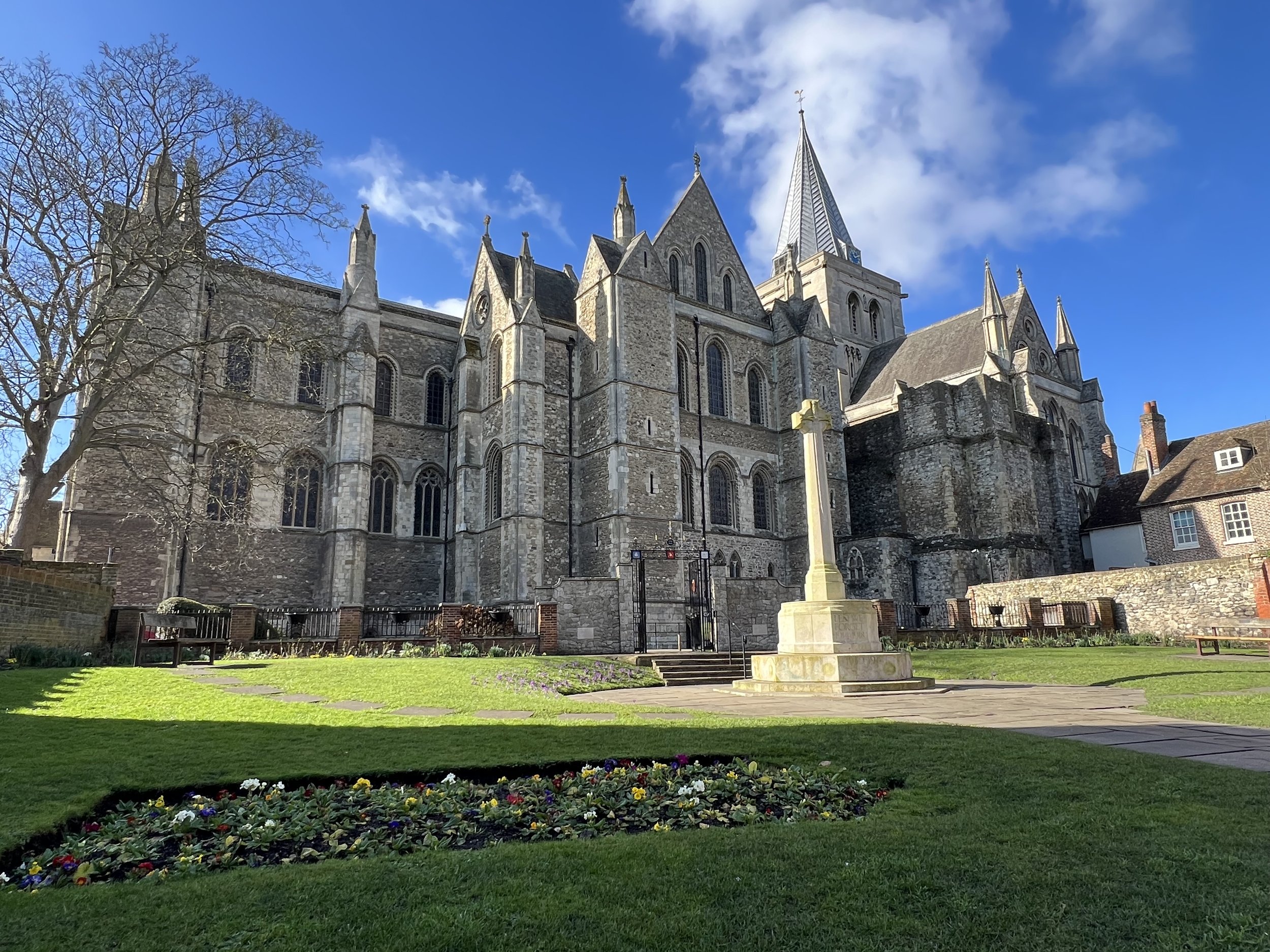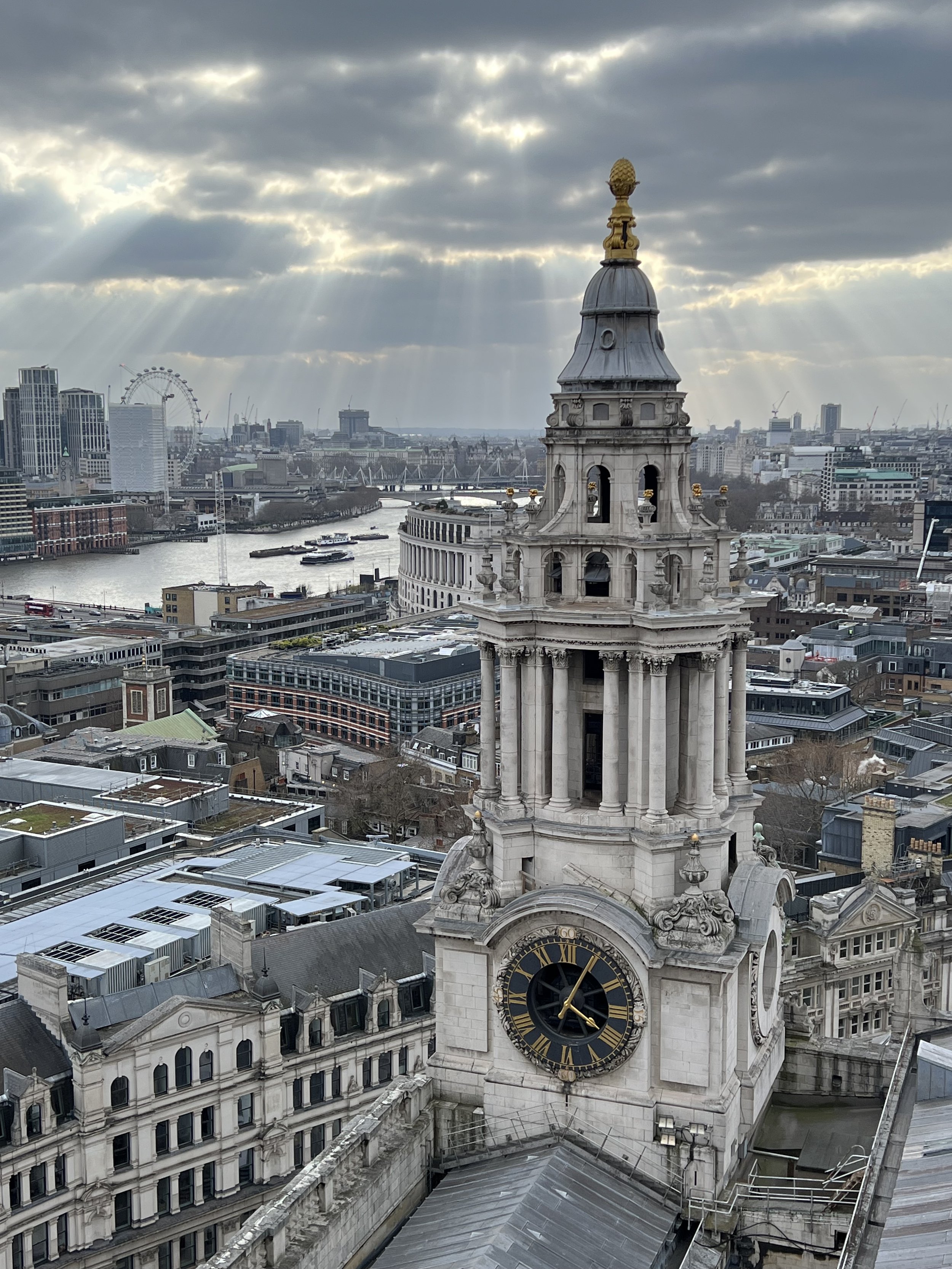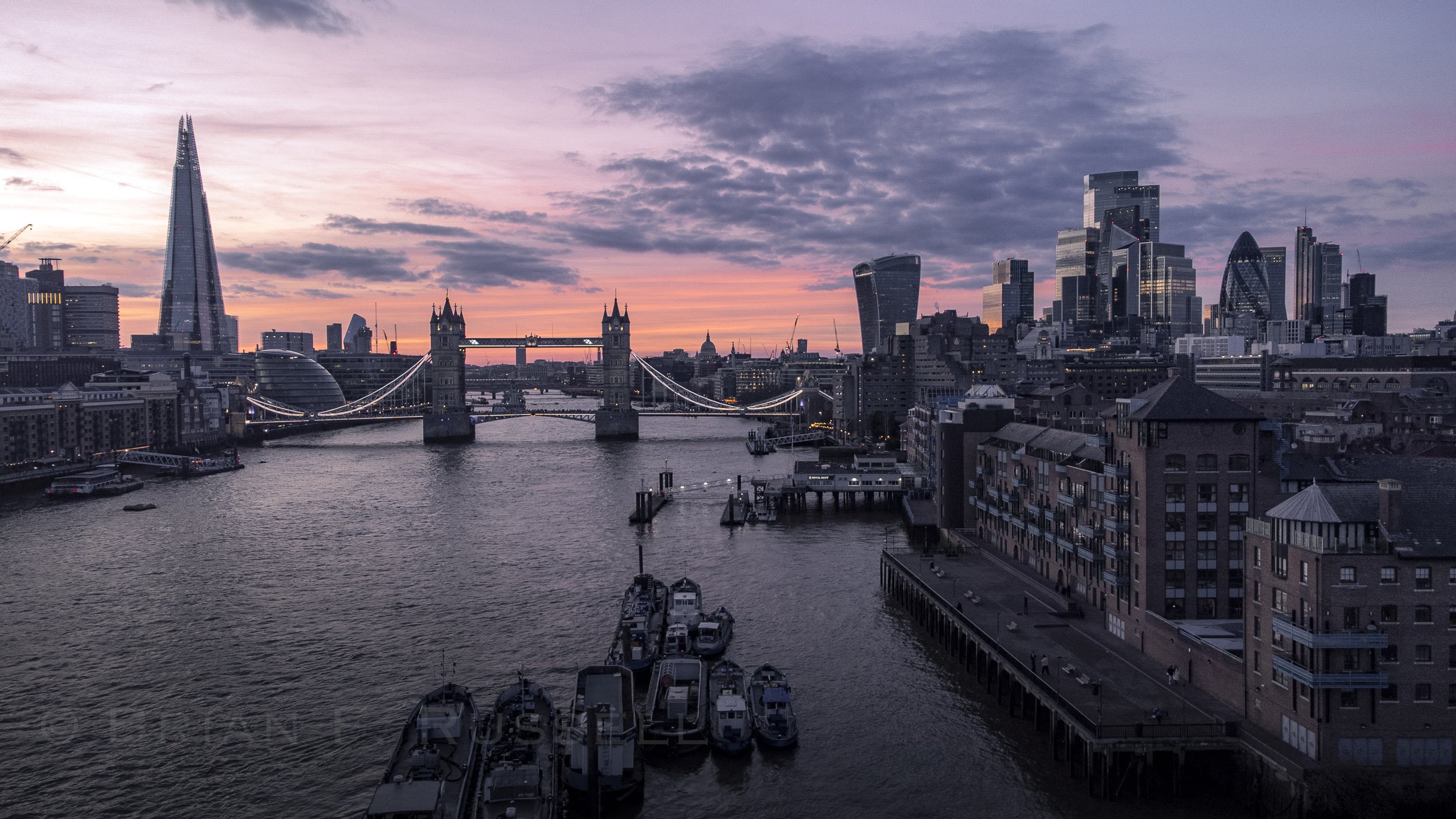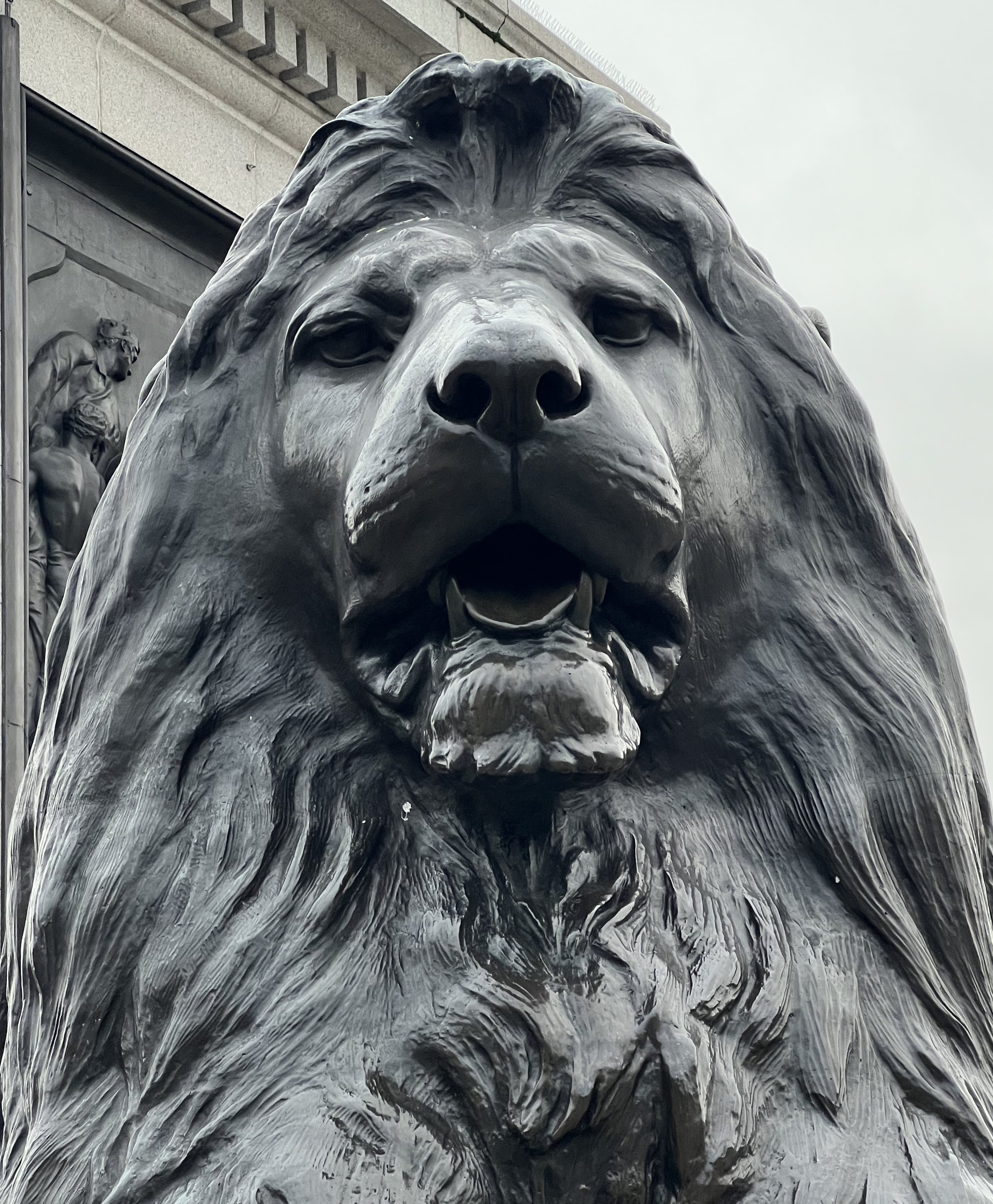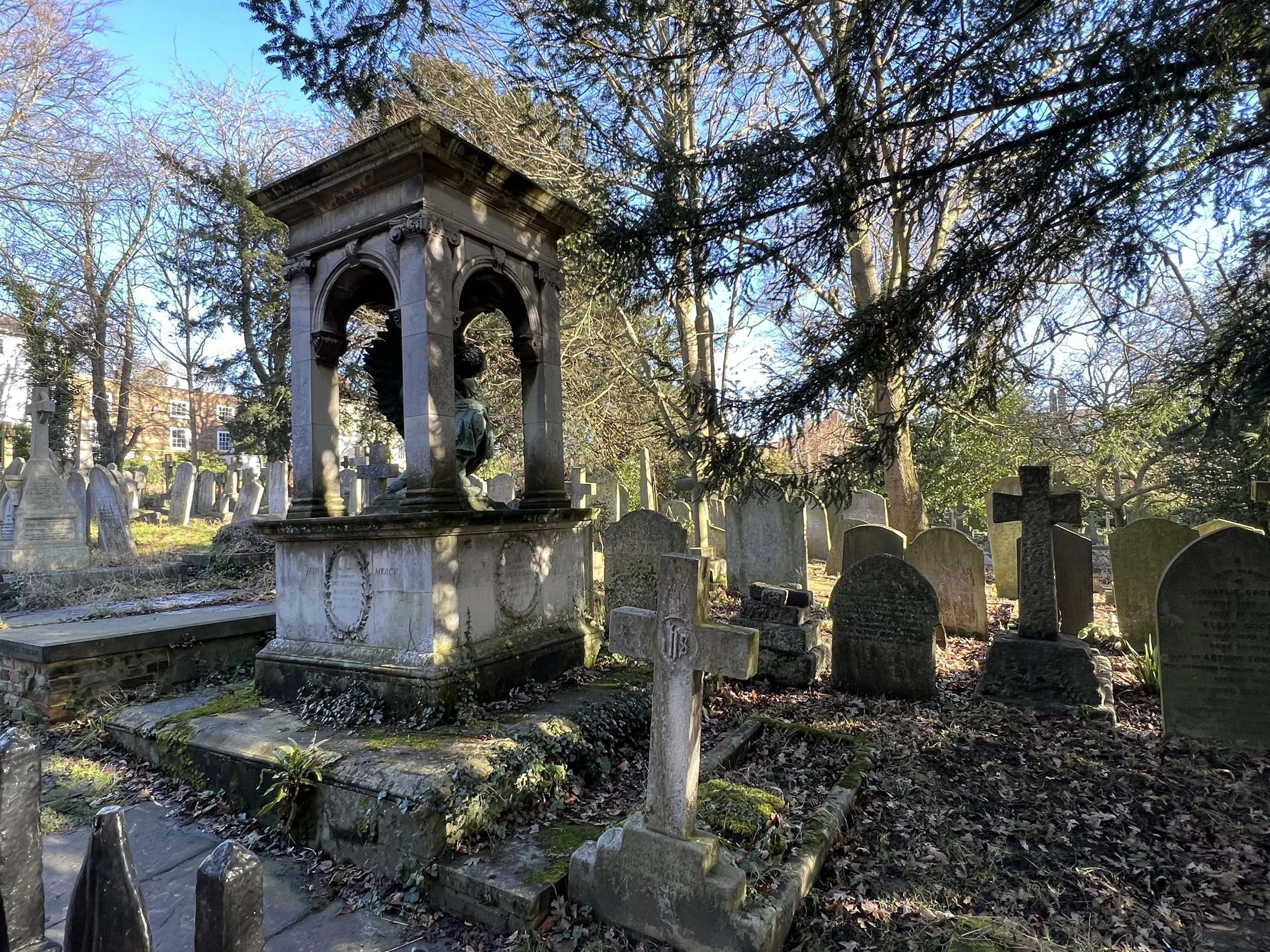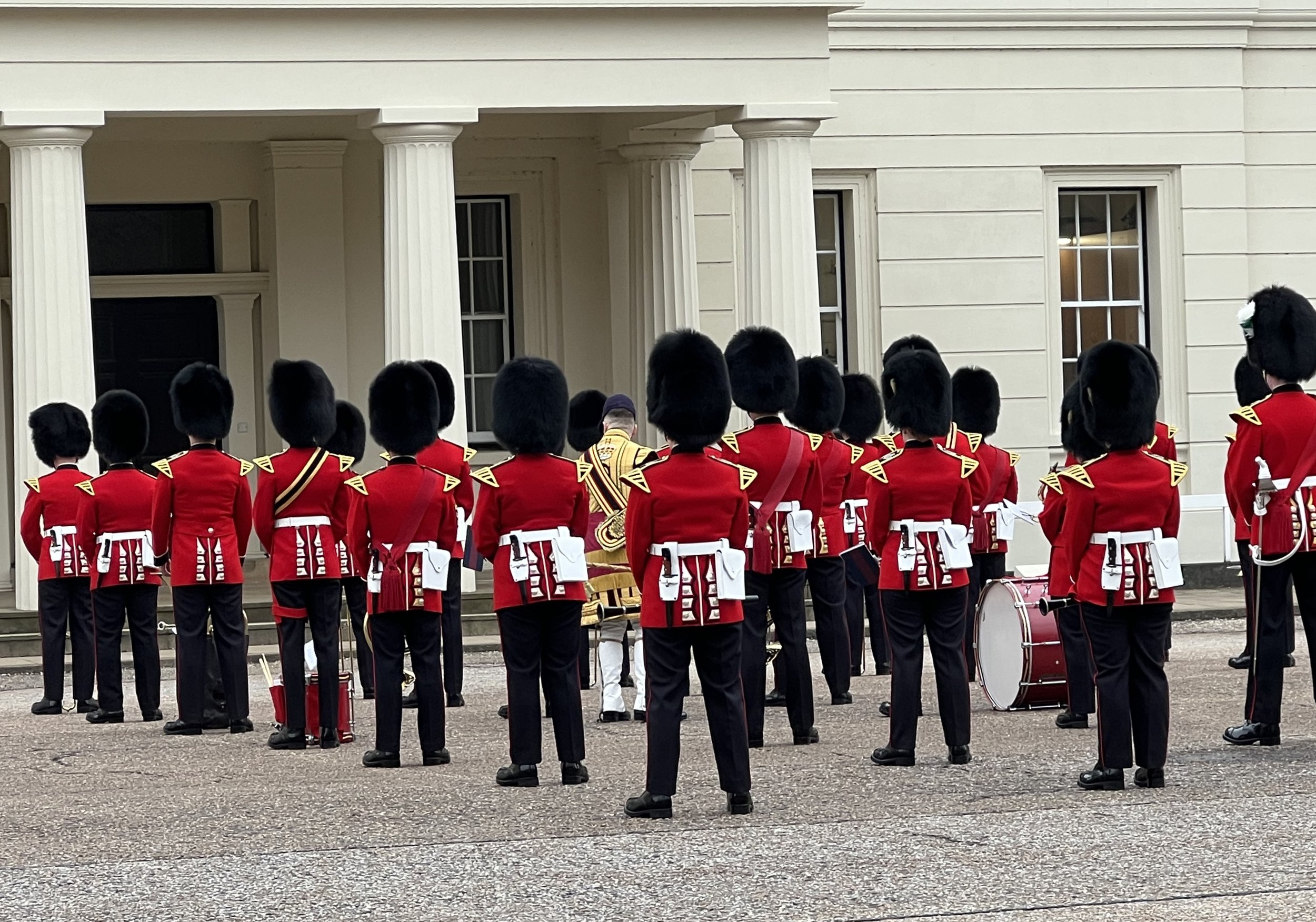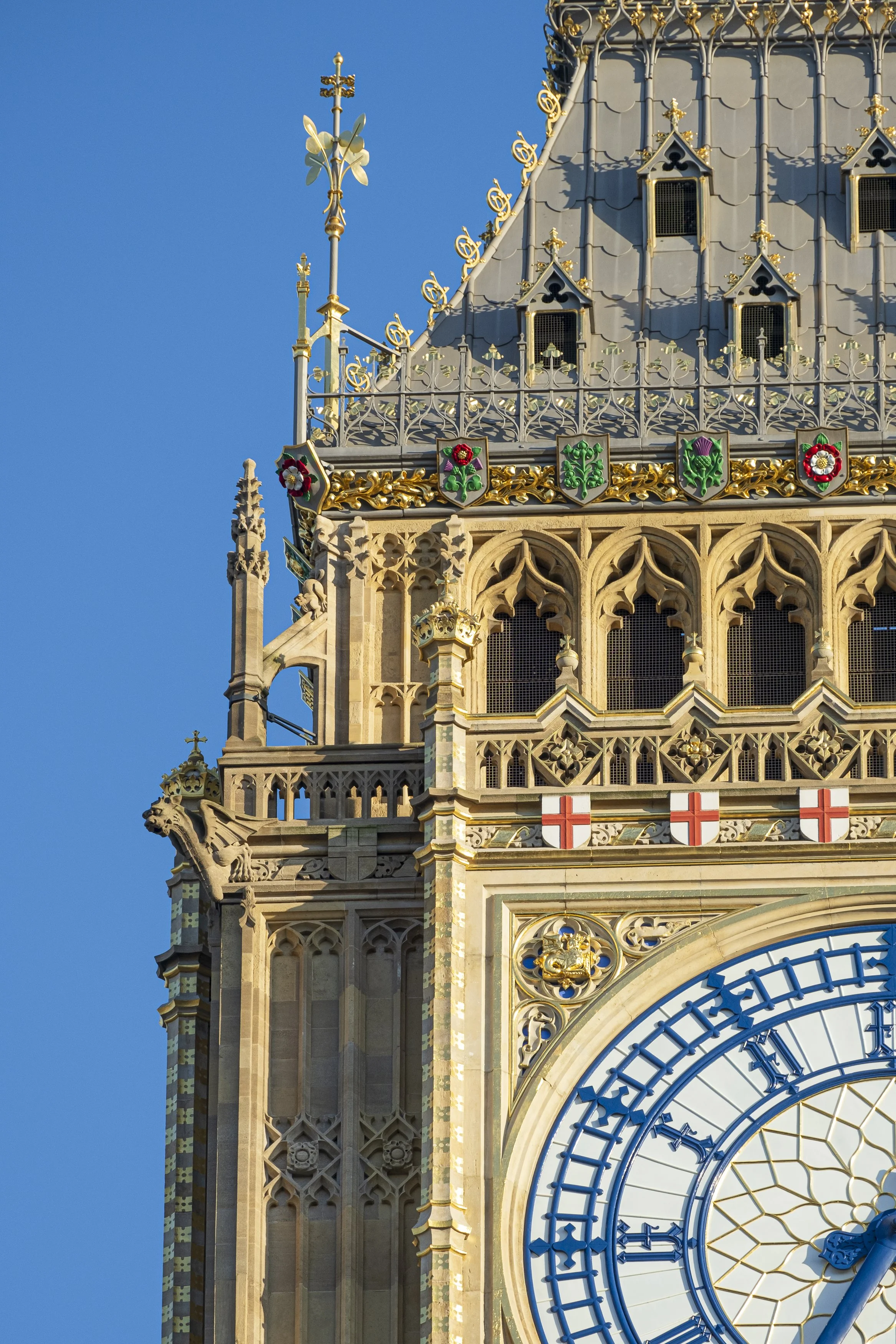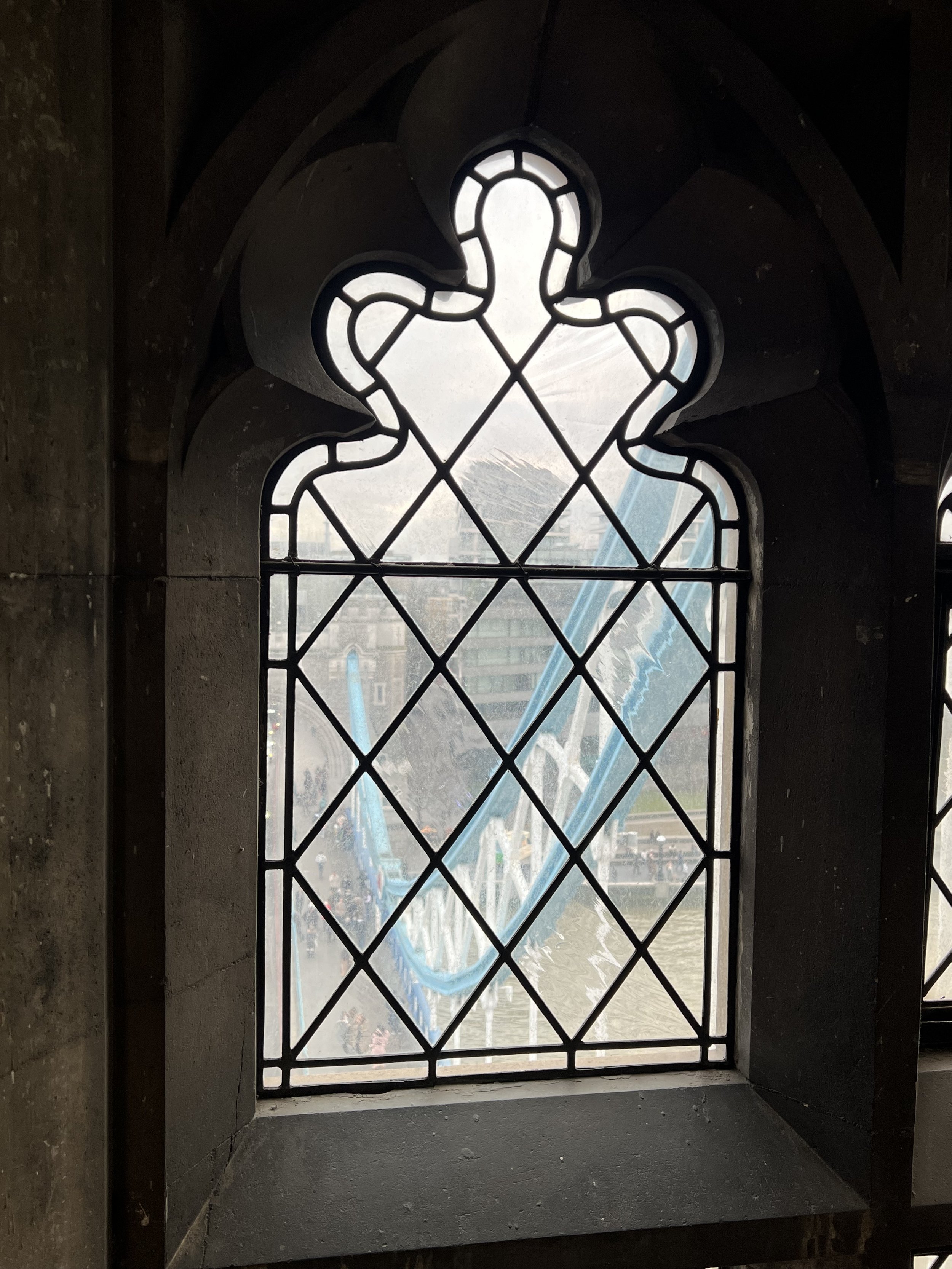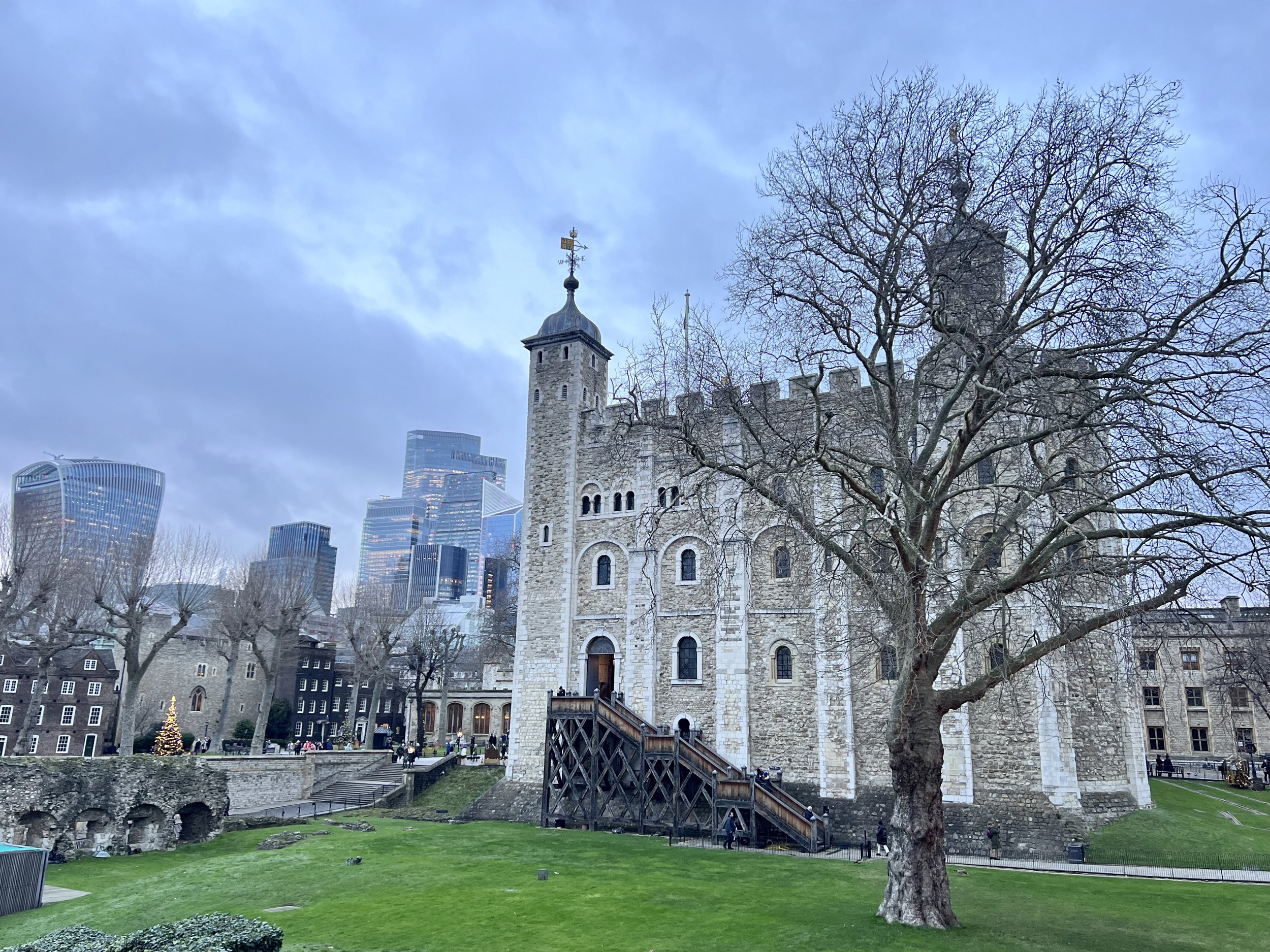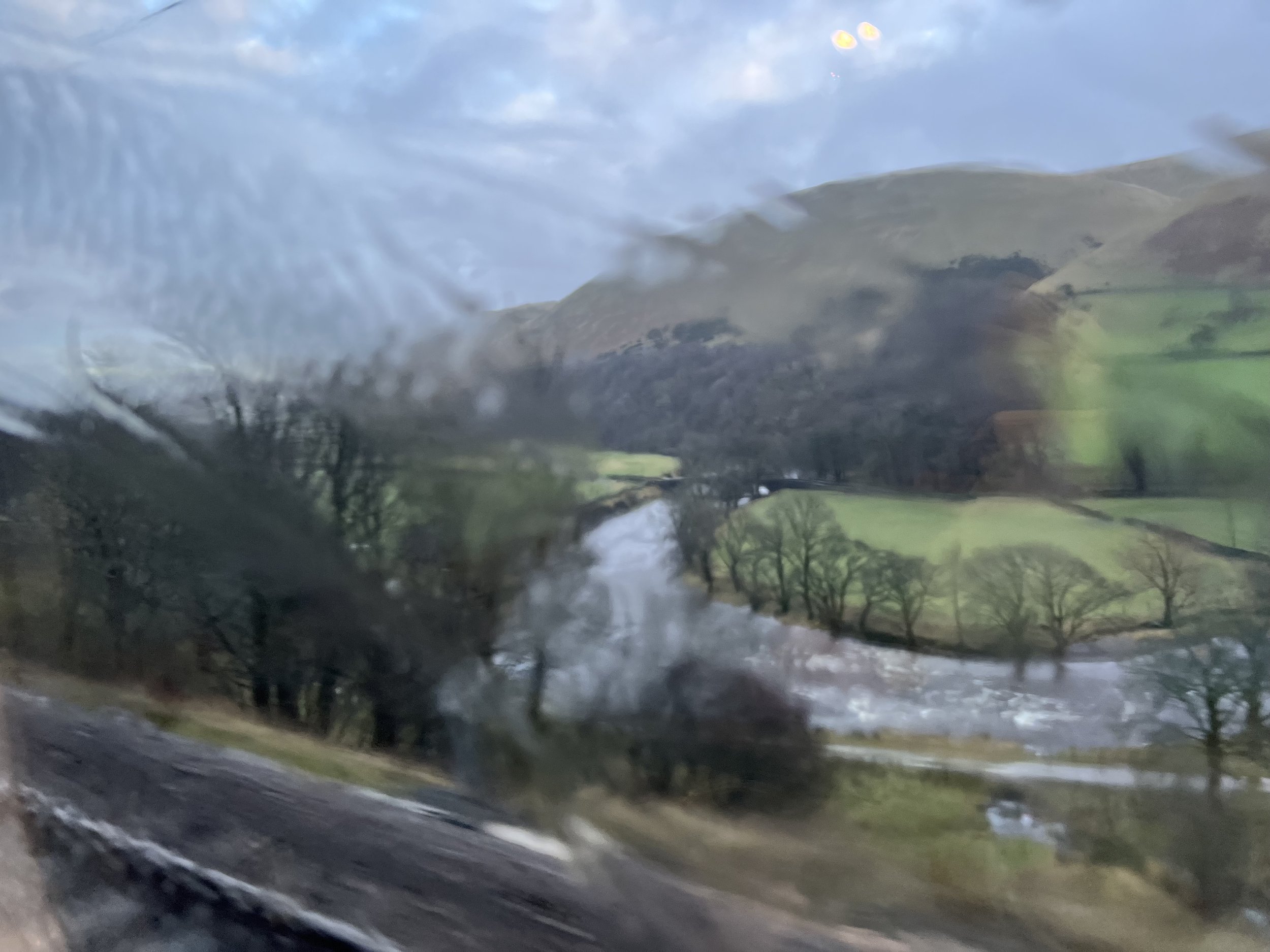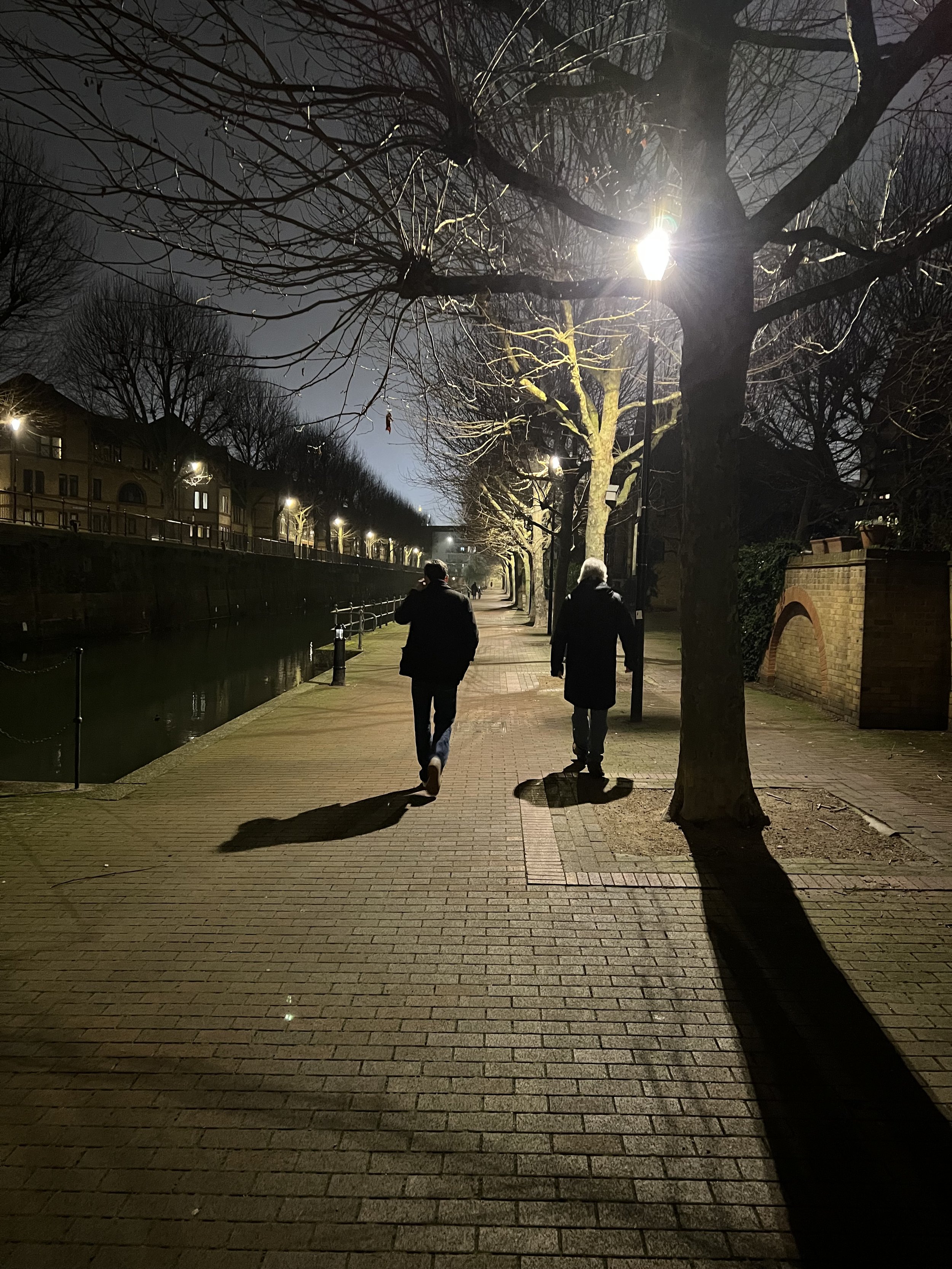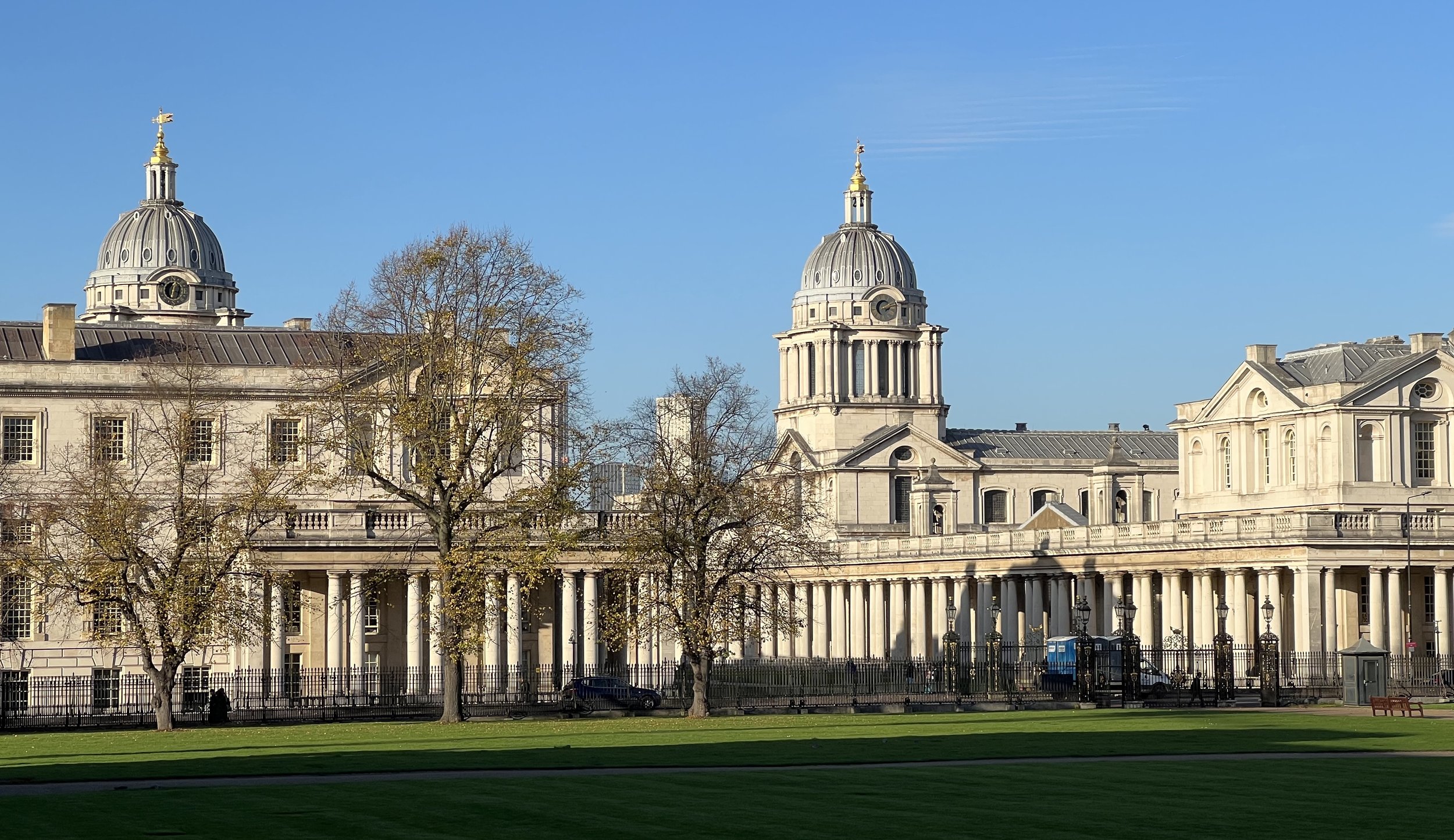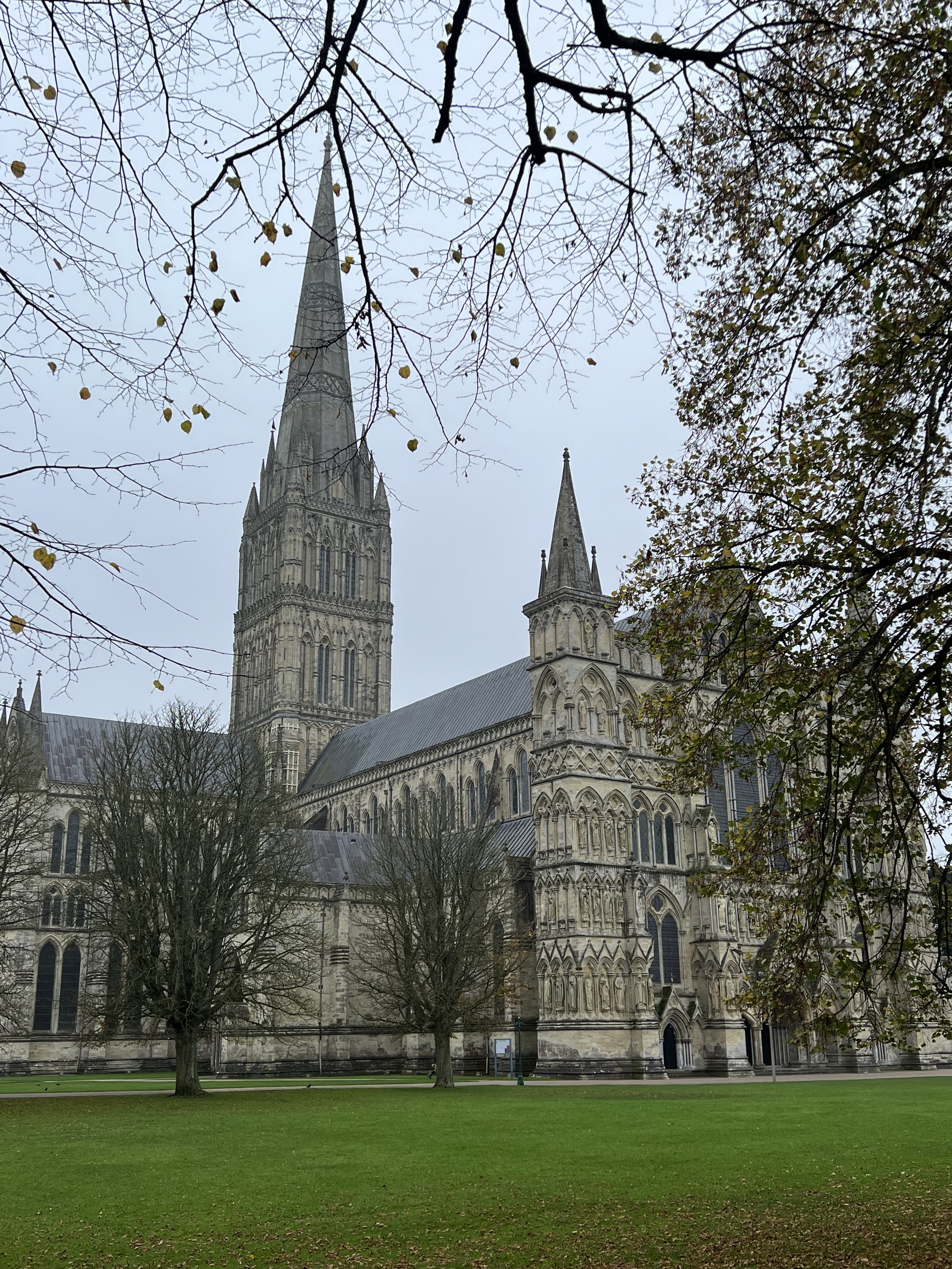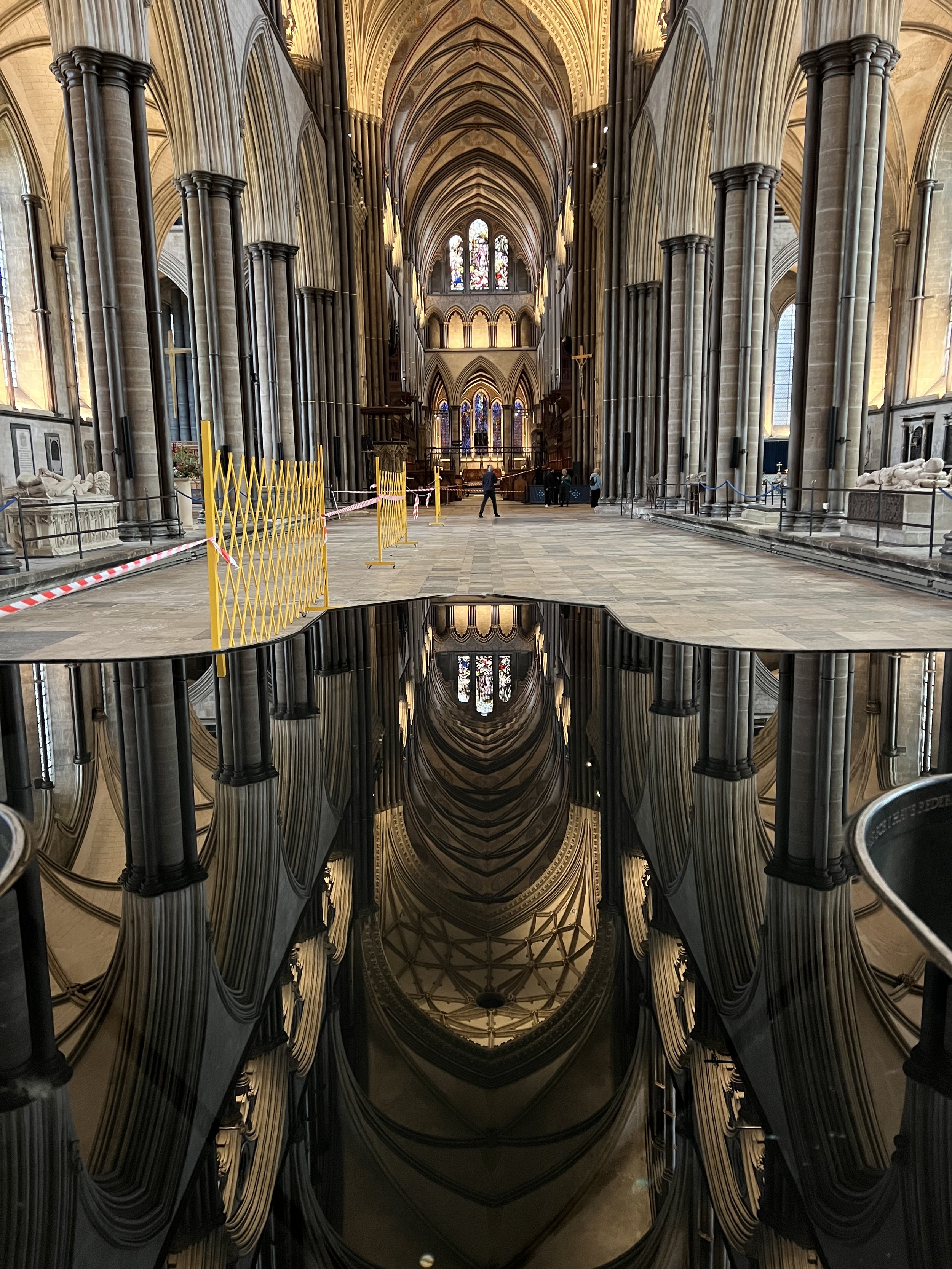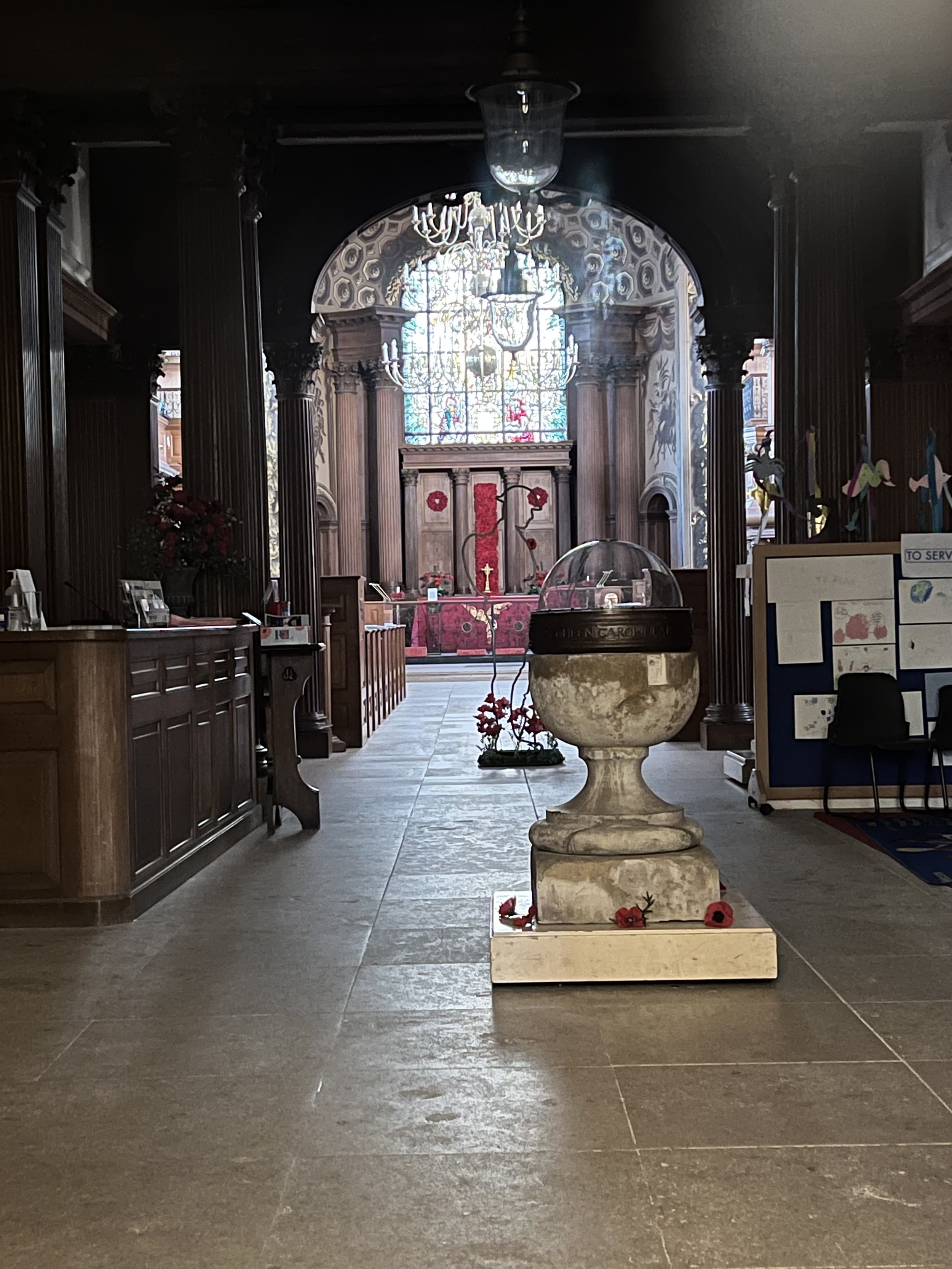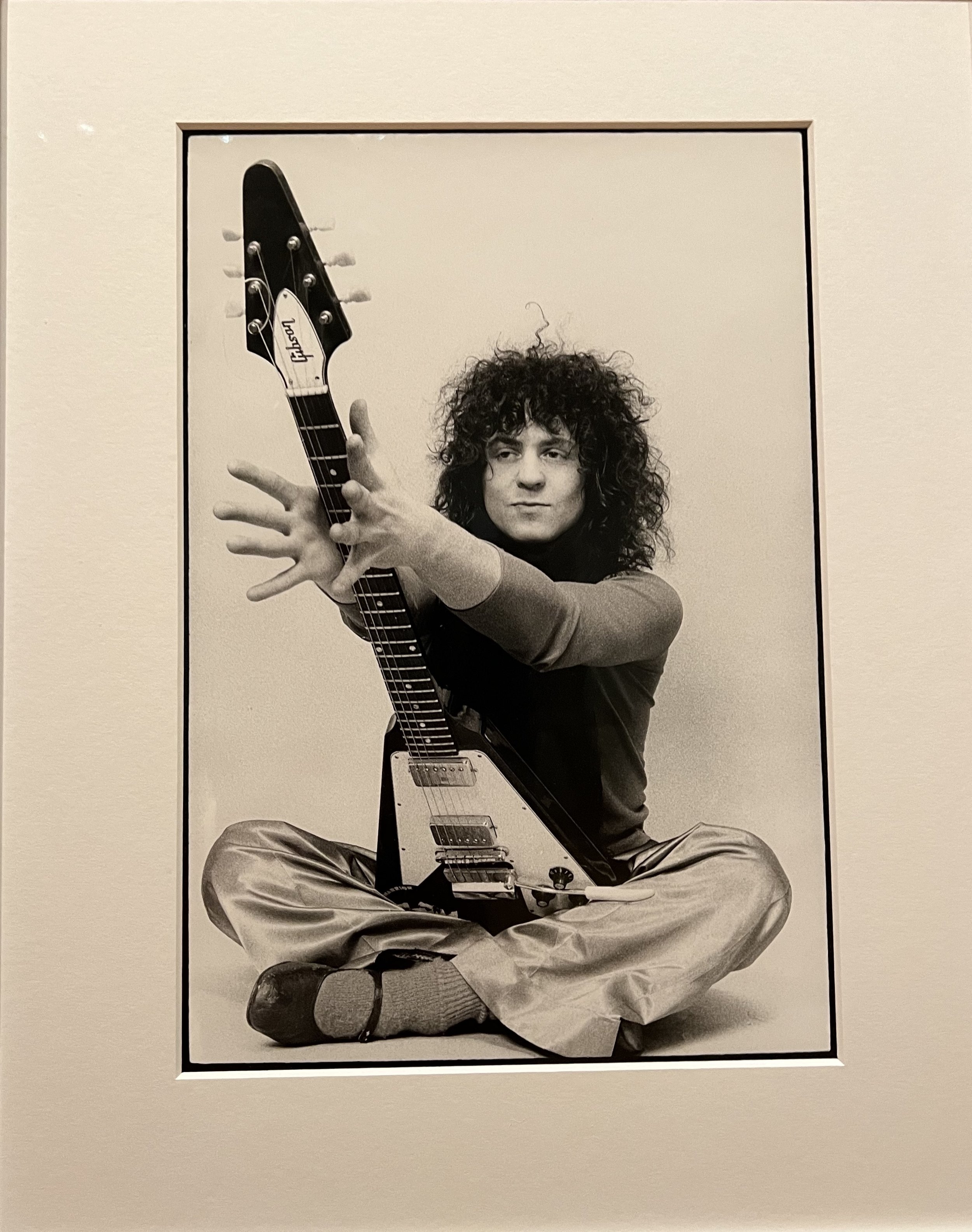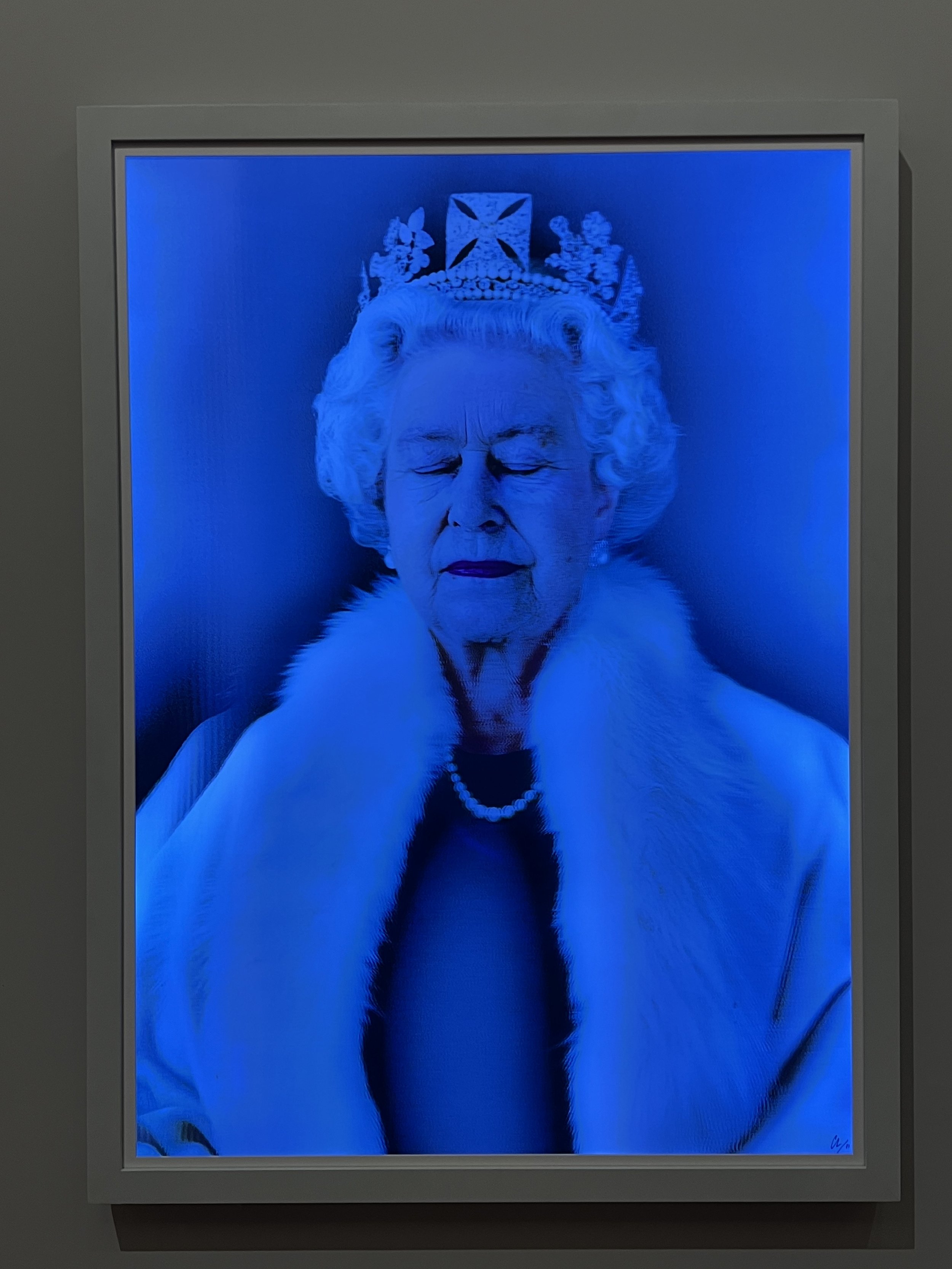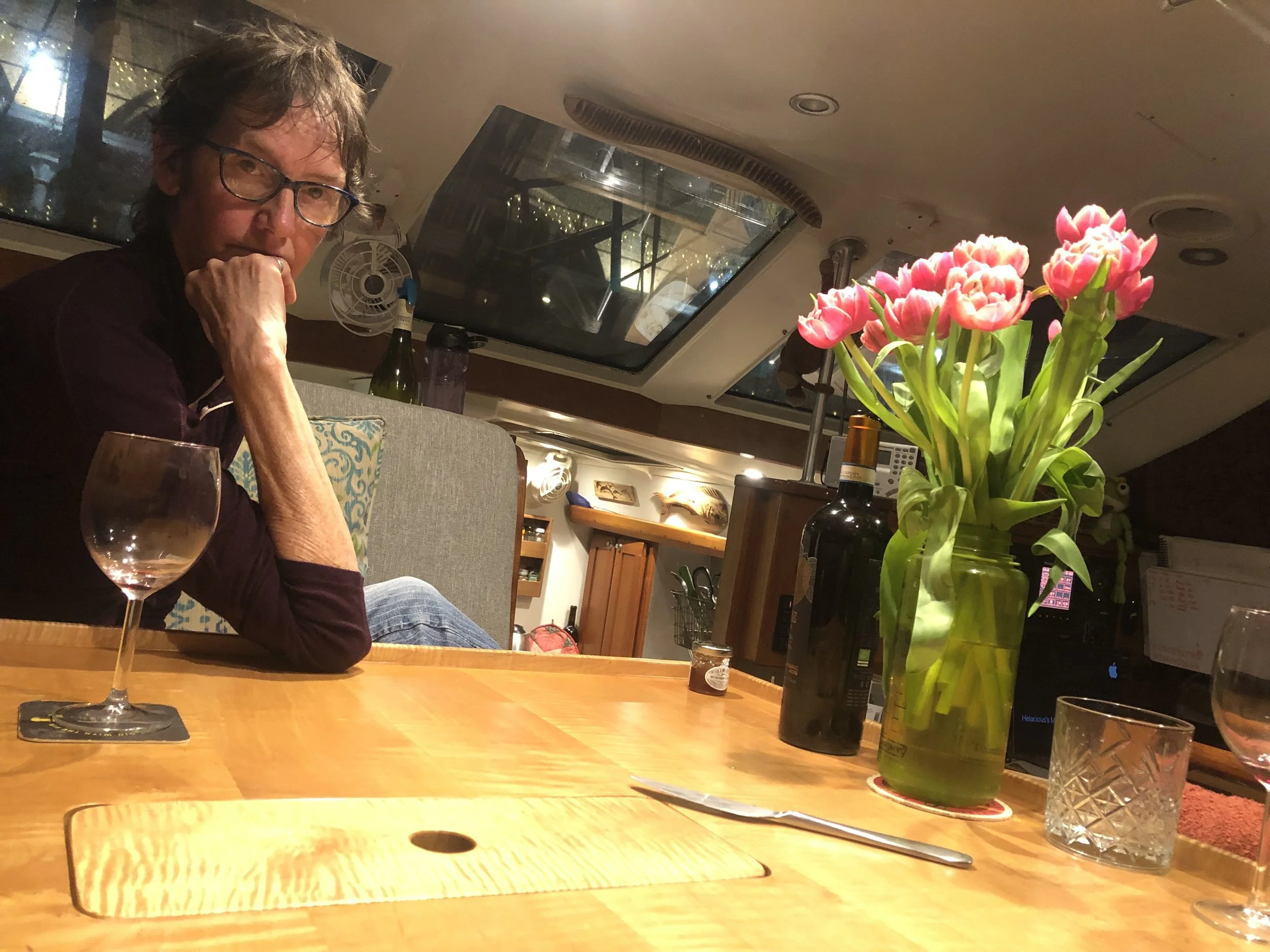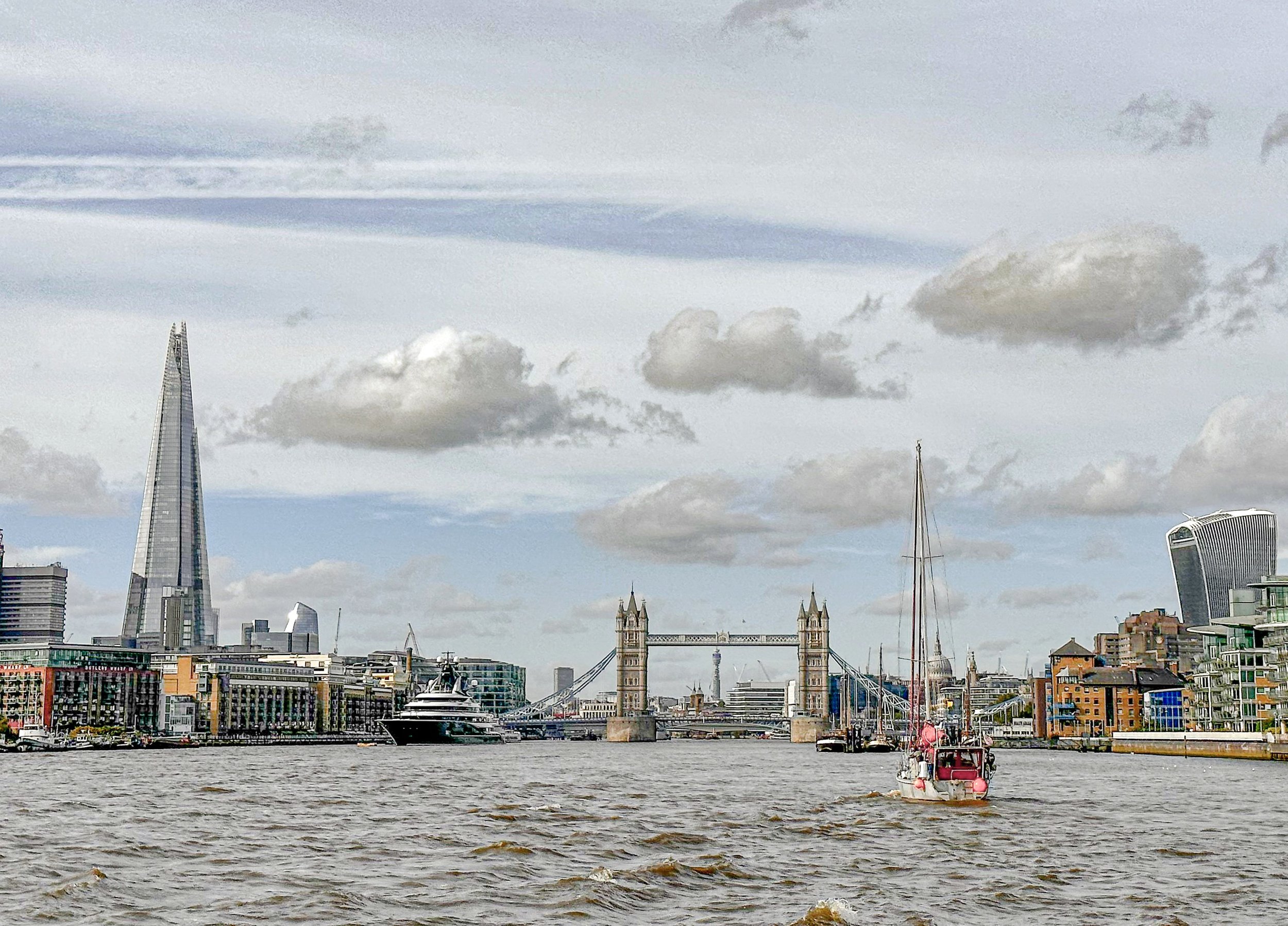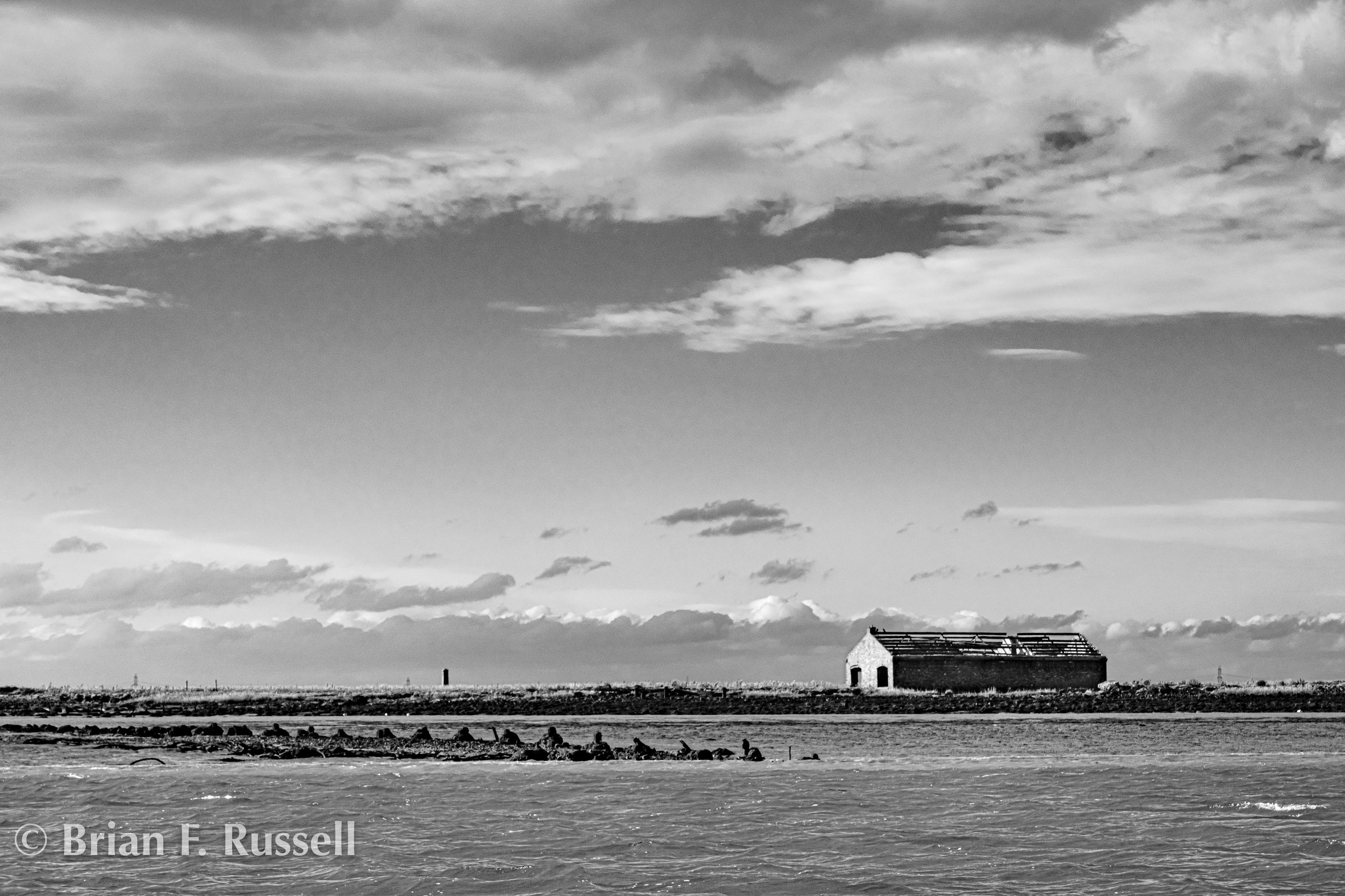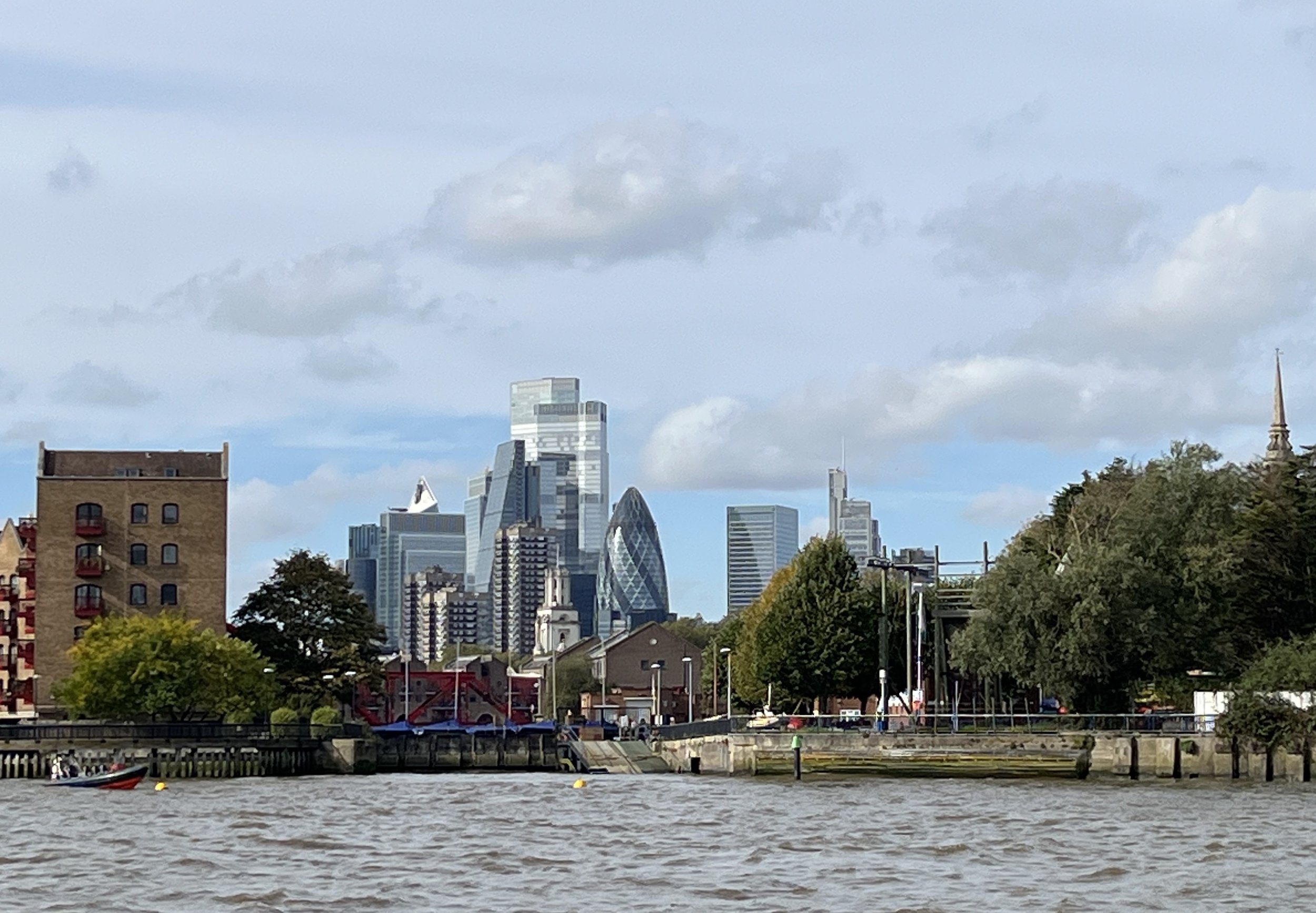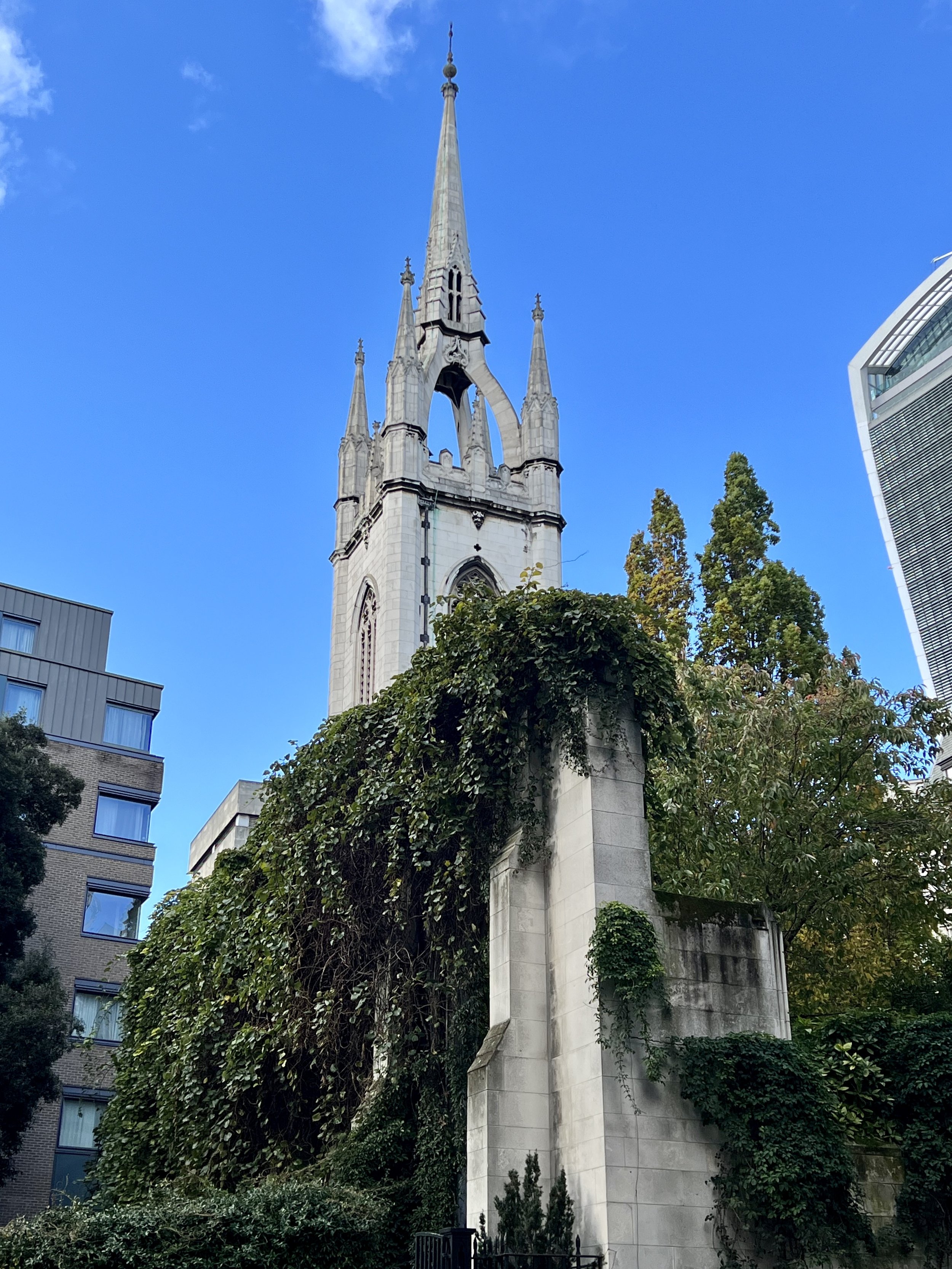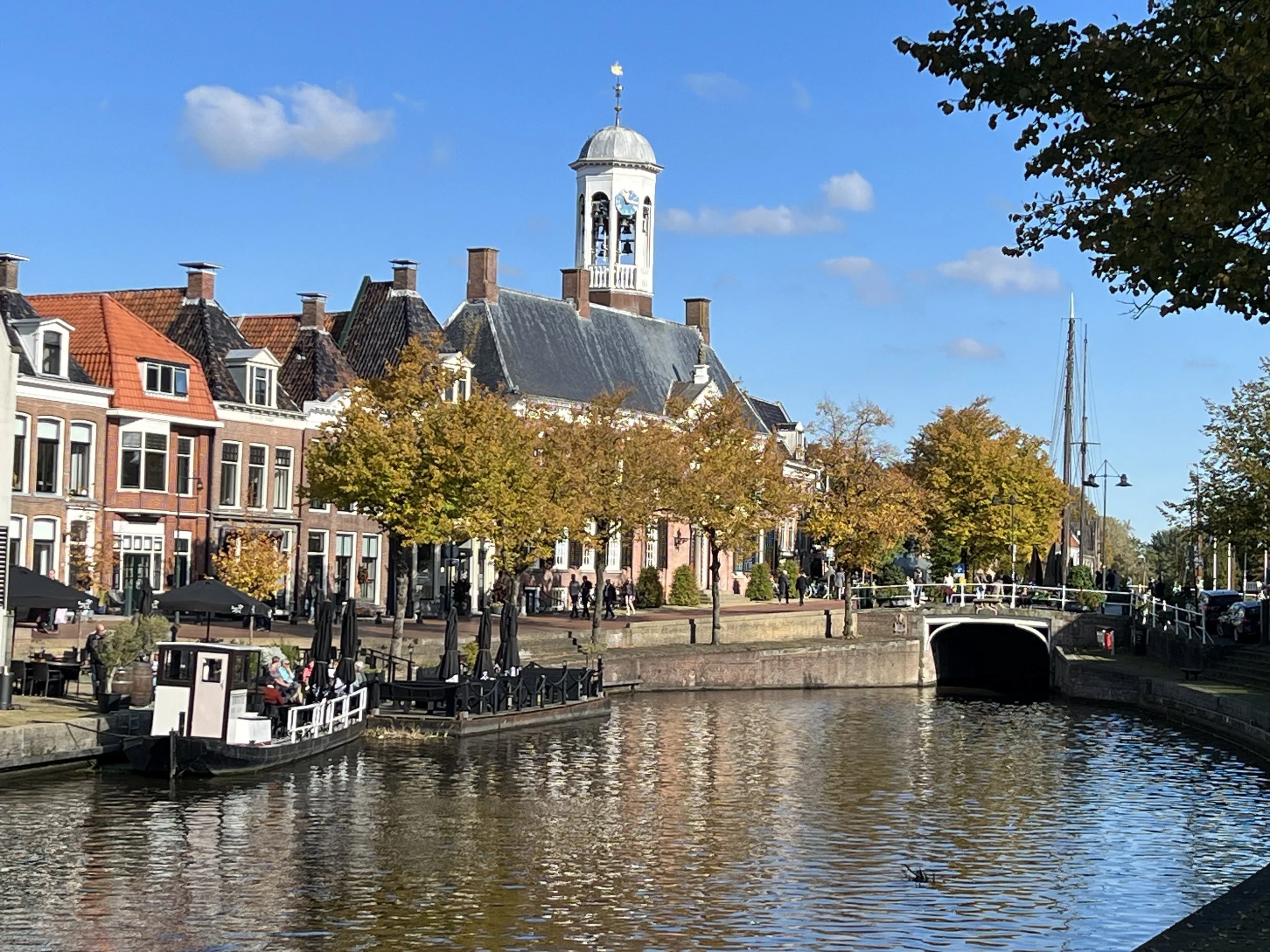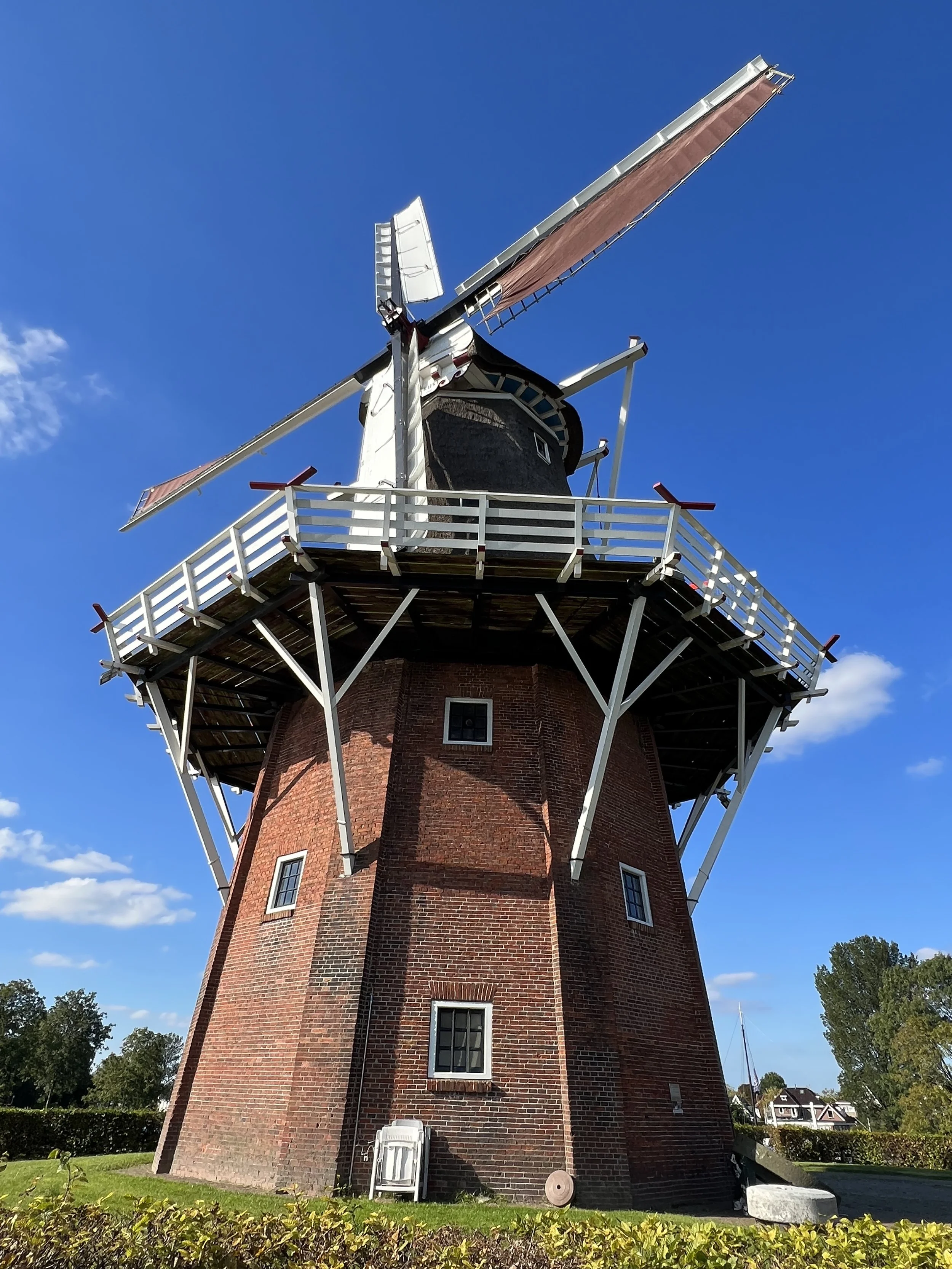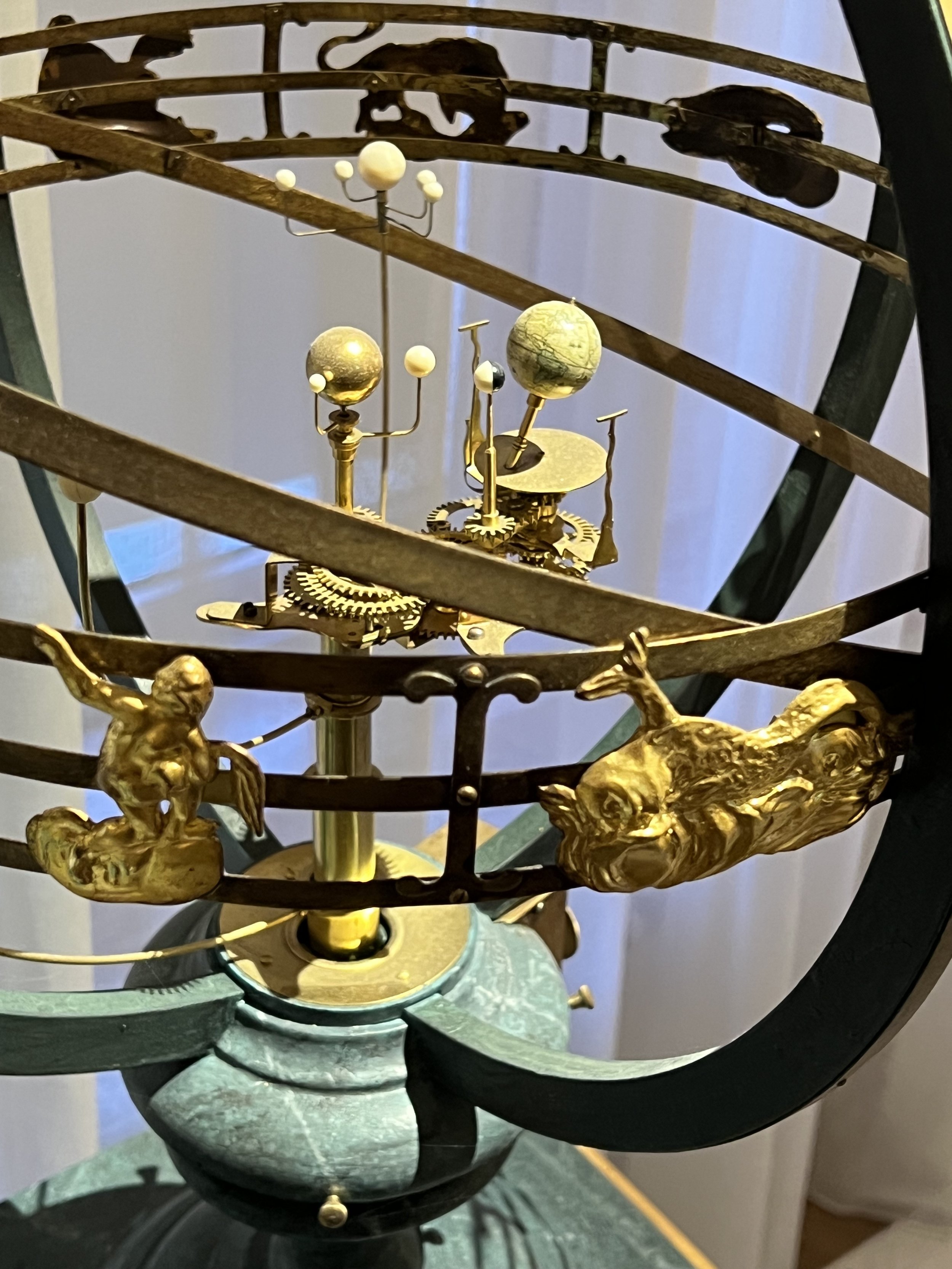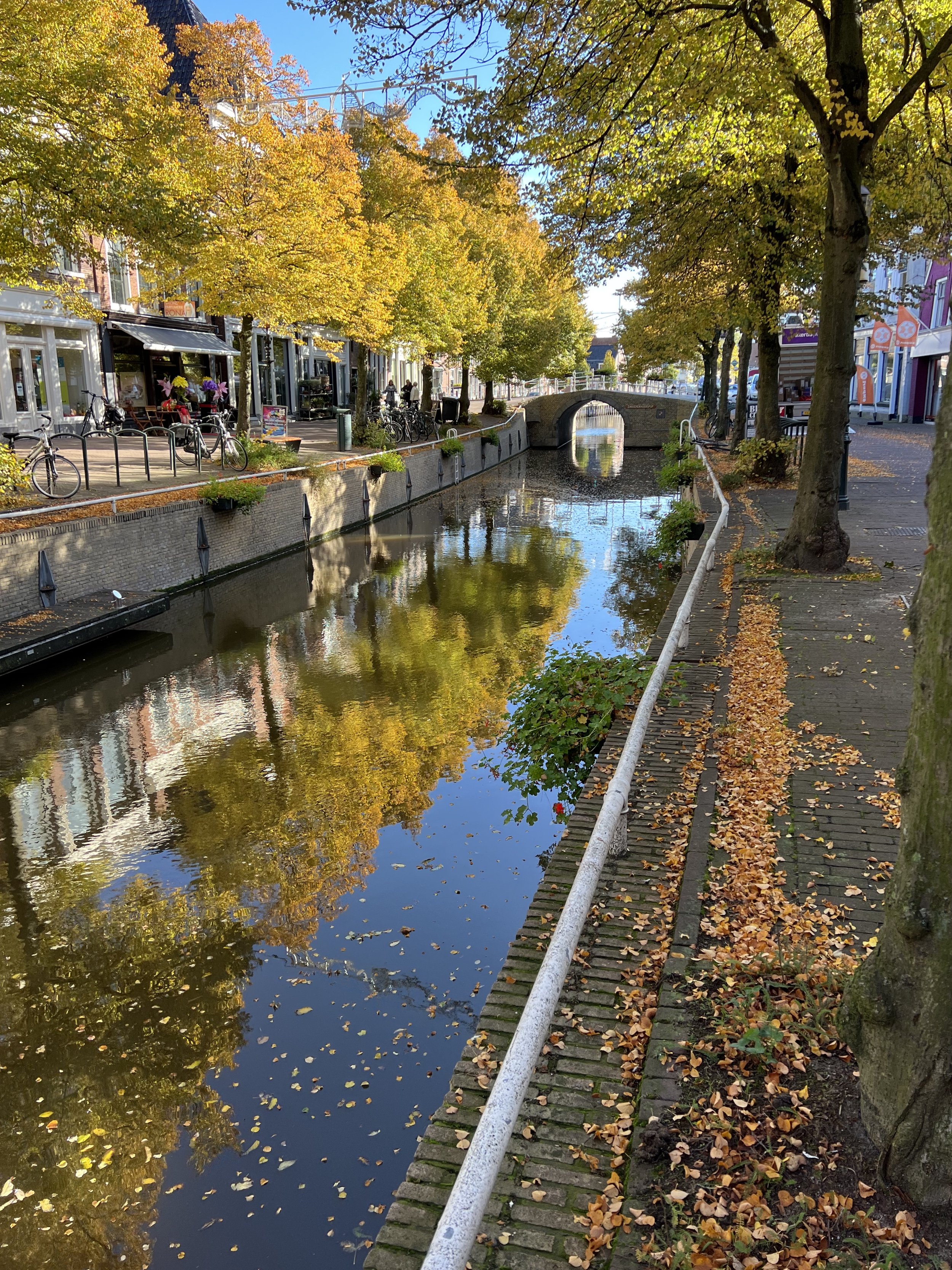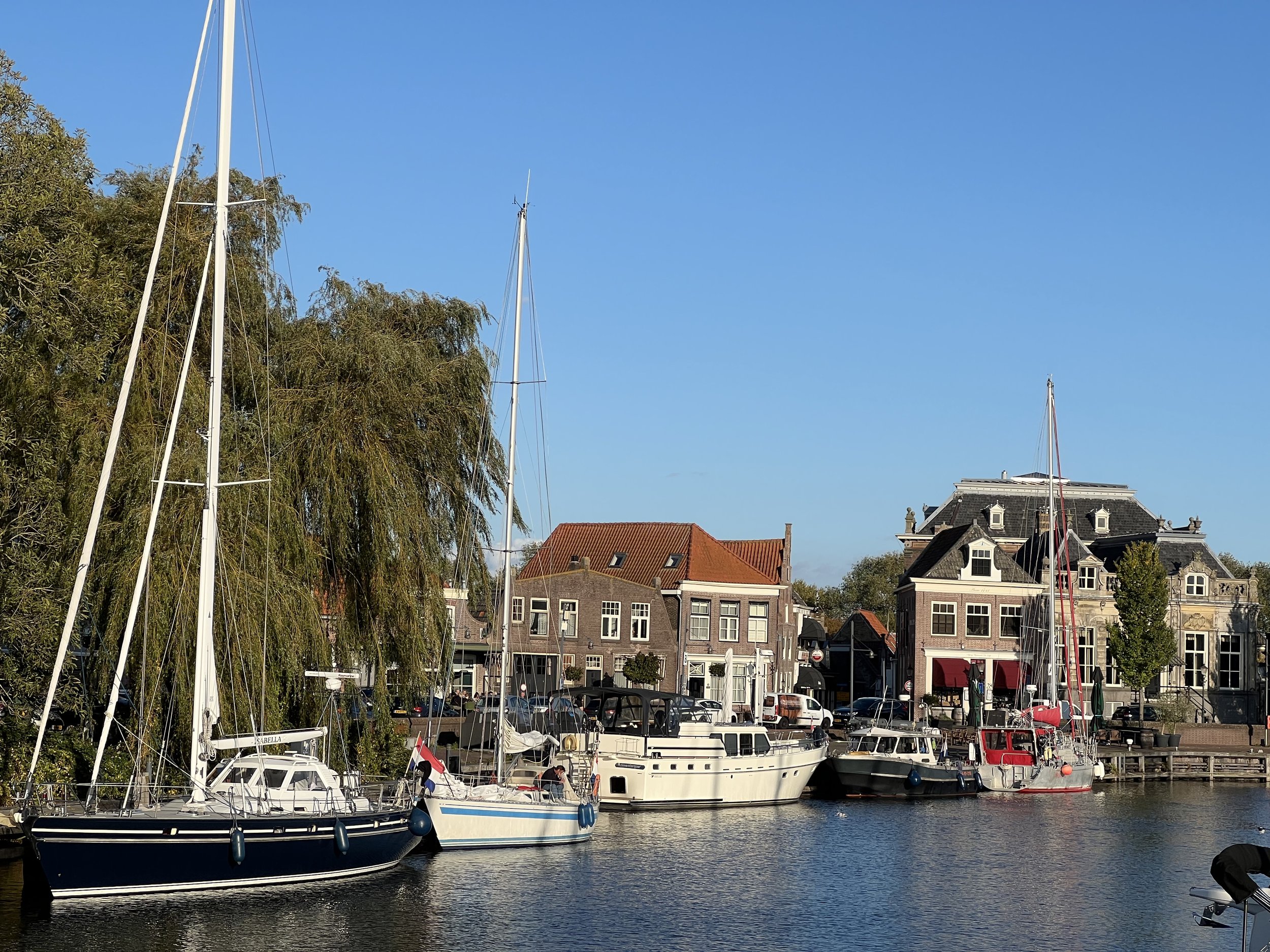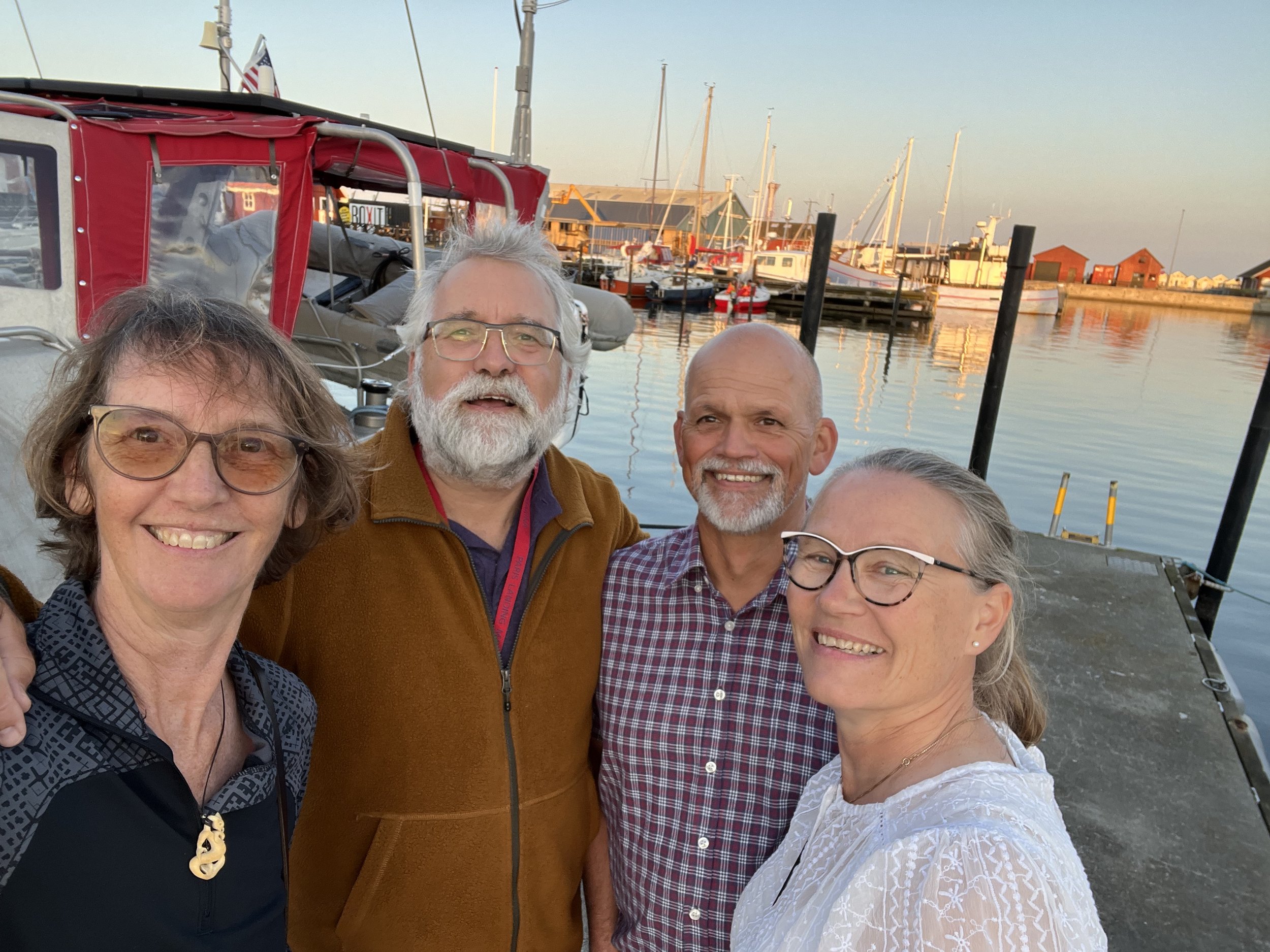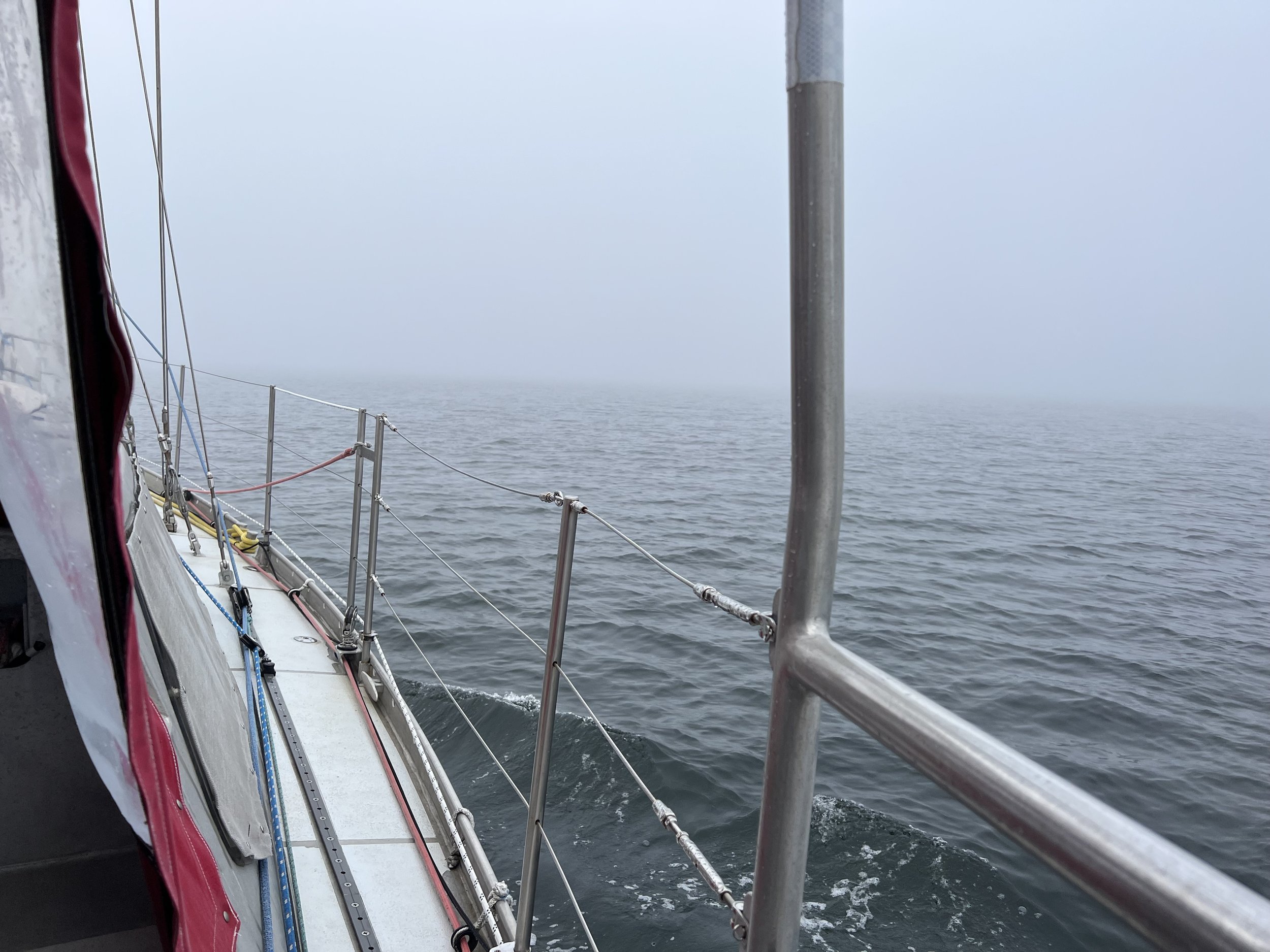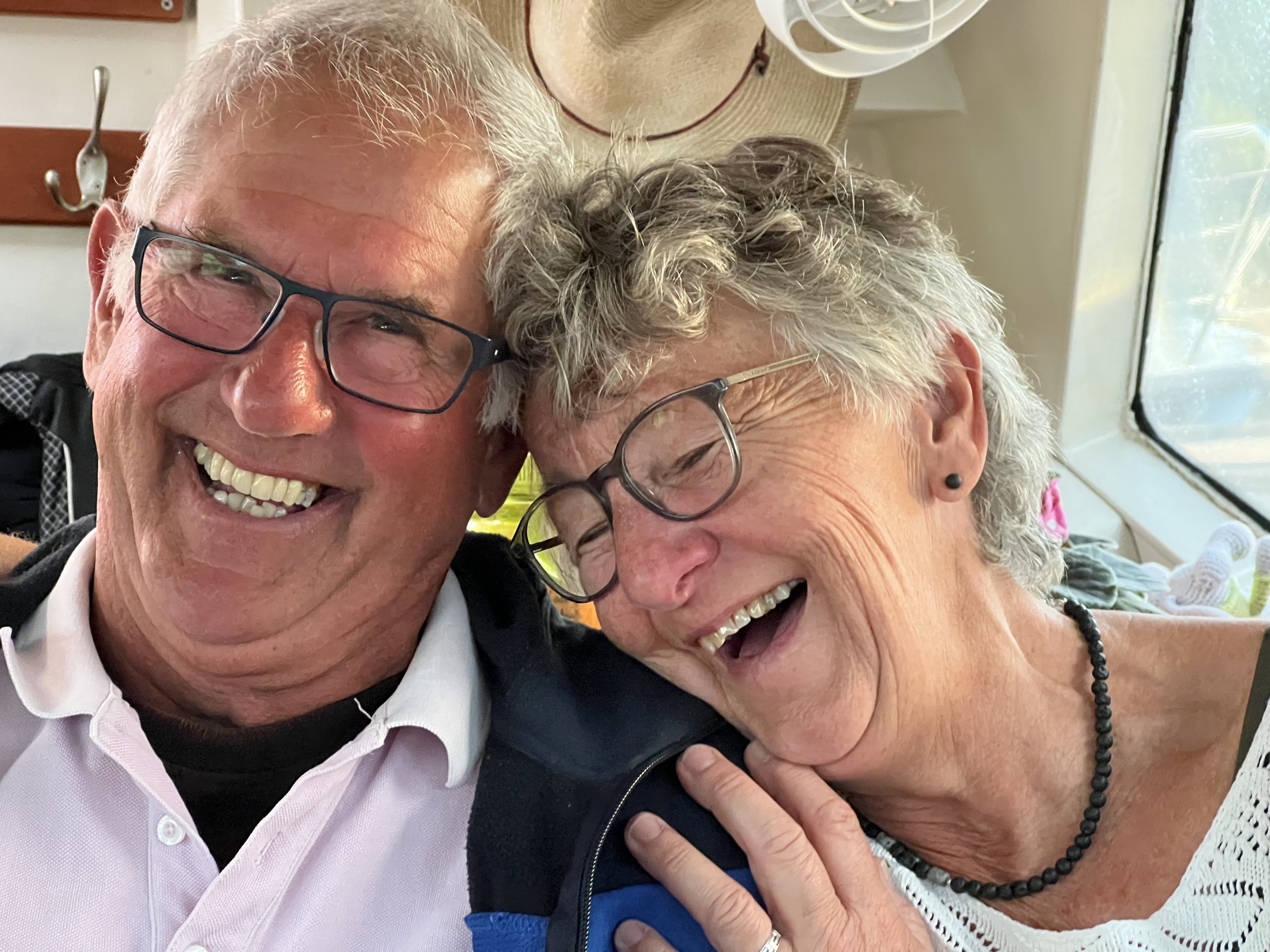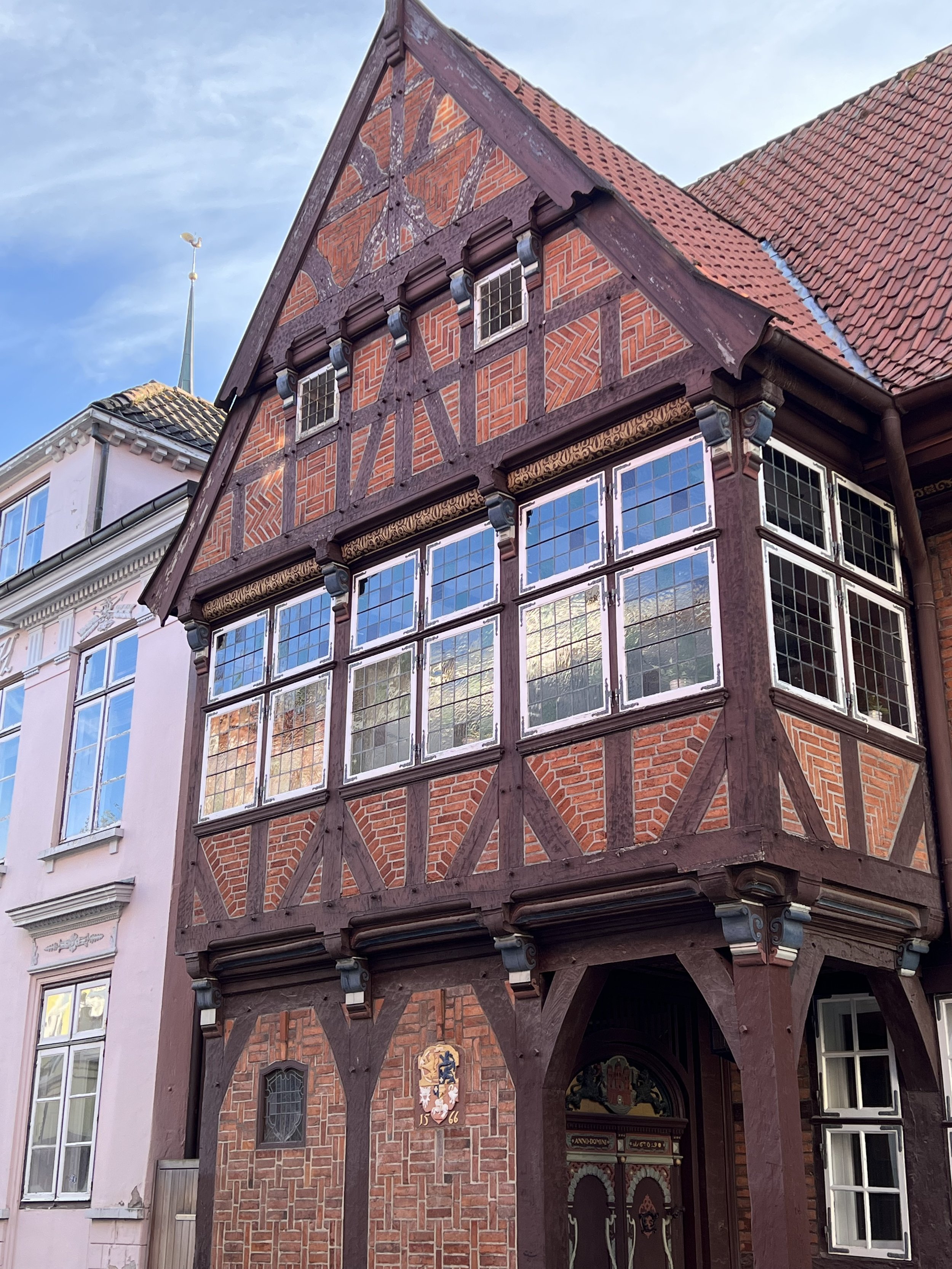
Home waters.
Isles of Shoals, Maine.
Arriving back in the USA after nearly 2 years absence was interesting. Oh my! Still the land of plenty, despite the tariffs. We made landfall at the Isles of Shoals, a small archipelago just off the coast of southern Maine. We picked up one of the free moorings in the harbor, next to the delightfully named Smuttynose Island. The next morning we went ashore to stretch our legs and check out the Oceanic Hotel – it reminded us of “The Shining”.
Unfortunately, it was closed for the season. We still managed to explore, checking out the huge boulders making up the recently finished causeway and the quaint chapel. After lunch we had a lovely gentle sail over to the mainland and picked up the mooring belonging to friends Diane and Tim in Kittery, Maine. There were crab pot floats everywhere, even in the channel. It made us glad we were not sailing for long in Maine waters.
We had a fun party that night at Tim and Dianes lovely home, catching up with other sailing friends in the neighborhood: Dana, Lisa and Leon. The next day Dana and Lisa took us shopping and provided much needed laundry service. Thanks everyone for the warm welcome home.
We could see there was only one day of NE wind for the foreseeable future, so we jumped the 70 miles south to arrive in Provincetown just after sunset. The days getting shorter make these longer passages more difficult. We motored in to the harbor with high beam flashlight to help pick out the crab pots, and anchored next to the nearly empty mooring field. The next day was blustery and foggy, a perfect day to make cupcakes for the birthday boy.
Provincetown.
Once the weather cleared up we had a wander around the galleries in Provincetown. Being so late in the season it was not at all crowded, although some of the shops were closed.
A quick trip through the Cape Cod canal took us to sheltered waters where we spent a pleasant couple of days in Onset Bay before moving over to a mooring in New Bedford, ahead of a gale.
New Bedford is a working town, a large fishing fleet is based here and the deep water port, protected by storm gates, is perfect for the growing (hopefully) wind generator industry.
Storm gates which can be closed in the event of a hurricane. One of very few truly protected harbors along this coast.
New Bedford, with its quaint cobble streets in the downtown area, enjoys a rich history. It was the base of the nation’s Whaling industry in the 1800’s, and there is a strong Portuguese immigrant community here, mostly originating from the Azores due to the whaling opportunities. Both are celebrated in the wonderful Whaling museum based in the historic downtown area.
In addition, Herman Melville set out on his voyage upon a whaling ship from New Bedford, the experience he used in his writing of the novel Moby Dick. The Seamen’s Bethel, a chapel for seamen to use while onshore, has a pew he supposedly frequented along with an impressive pulpit. The plaques all along the walls told of some brutal times and unpleasant ends.
Seamen’s Bethel.
There were another couple of reasons to visit New Bedford. Jake has his company headquarters here in the New Bedford Research and Robotics Center. We go check it all out.
Helen’s friend from those old work days, Mahnaz, came to see if the boating life was for her. It was lovely seeing you again dear friend. John and Allison, last seen onboard Helacious in Iceland, came to pick us up and whisk us off to Bristol, Rhode Island. There we visited the Herreschoff Marine Museum, an incredible collection of beautiful wooden boats built and designed by the Herreschoff brothers. Thank you guys for a fantastic day out.
Moving on, we spend a few days at Block Island. In the summer, this anchorage is heaving with boats, yet we shared it in early October with one other boat.
Block Island sunset.
We have wonderful weather, taking a walk along the coastal path we see signs of approaching fall.
Finally the weather looks good to make the crossing from New England down to the Delaware Bay. The dinghy is tied on the foredeck and we wait until the wind shifts to the NE. The trip out of the Block Island narrow channel was quite hairy, with strong winds on the beam and large breaking waves. Still we muscled through, turned and pulled the sails out then flew south. We were literally holding on for some of the trip, picking up small visitors for a while; a couple of birds had been swept off shore in the high winds and were exhausted. They rested for an hour or so, then flew away.
Passing Atlantic City. It was so rough even the iphone could not manage.
We had timed our departure from Block Island to arrive at the entrance to Delaware bay at the turn of the tide. We nailed it. Arriving at slack, we rode the tide all the way up to the C&D canal, managing to reach Chesapeake City for the night. Despite its grandiose name, there is not even a grocery store there, and we were a little low on supplies. A nasty storm was approaching; we hunker down for 3 days in the entrance to Sassafras River, raiding the deep storage for crackers and tortillas to keep us going.
Chesapeake Bay Bridge.
The weather cleared up and we moved on south to Annapolis where Helacious had a date at Bert Jabin boatyard for some spa treatment. It was short notice, as we had been uncertain of our arrival date. Other boatyards were too busy putting boats away for the winter to be able to fit us in. Fortunately this yard was large and more flexible, although it came at a price.
We hauled out and the next day a crew came to sand the bottom. Then began the process of repainting, including the priming and painting of a new boot stripe. The old vinyl stripe we had put on 2 years ago had not even survived the first passage down to the Carribbean. We had been shamefully sporting a tatty waterline stripe ever since, not having had the opportunity to fix it. Now it will be done properly. We also had to get a survey performed for the insurance underwriters, this went well with no issues and our theoretical value actually increased. Unheard of in maritime circles.
We made some saw horses so we could reach for painting the stripe, and used our fender board to walk along. The multiple layers of primer, epoxy and final coats meant there were 8 layers in all. We were so lucky with the weather, warm and dry for a whole week. There was also some sewing going on inside. We replaced all the clear vinyl material in the cockpit enclosure. Much brighter and no scratches.
After a spell in Charleston visiting a birthday boy, and allowing the paint to dry, we return to Annapolis and the next day Helacious is back in the slings and hovering over the water.
After a day at anchor to wait for the north wind, we head off down the Chesapeake. We are leading the pack, it is a mad dash for warmer waters. November 1st is frequently the date the insurance companies quote as “hurricane free” and permission to head south is thus granted.
One morning, as we were at anchor eating breakfast this parade of more than ten specialized large fishing vessels came home after a night fishing. They are part of the last remaining fleet of Menhaden fishing boats. Menhaden is a small bait fish, however in this case it is processed into “protein”, to be used in fish and animal meal, in addition to fish oil. Some of the boats had a couple of powerful skiffs on the back, which could be launched with a net between which they would round up the Menhaden to then be hauled up into the larger ships for processing. Apparently Reedville, the base for this fleet, is known for its smelly fish processing plant. We were lucky, either they were not working or the wind was in the other direction.
After a few days we arrive in Norfolk, at the southern end of Chesapeake Bay, ready to enter the sheltered waters of the ICW. Passing the many impressive Navy ships, we wondered what each specialized vessel was for. The cranes and gantries of the container port and the parts of wind farms waiting to be shipped out was an interesting mix.
The next morning we head out, passing under the first of many bridges on our way down the ICW.
The ICW is frequently referred to as “The Great Ditch” in a dismissive way. However I find this stretch to be quite lovely. A mix of forested swamps, endless reeds and grasses. This time of year with the changing leaf colors, it was beautiful.
There are some stretches where there is what looks like vast expanses of open water, however the eye is deceived. The depth in the channel is usually about 12ft, while either side it is a mere 3 feet or less; we are quite constrained. We did however manage to raise the sail and turn the engine off for a day as we crossed Albmarle Sound.
The Alligator River canal is a 22 mile stretch, straight as a die and rather boring. Not a time to let concentration lapse though, the stumps and crab pots along the edge would quickly put a propellor out of action. Over the radio chatter we heard of at least a couple of boats discovering a submerged log. We spend a lovely couple of days sitting at anchor, among the reeds, just off the waterway before the final push to where we will leave Helacious for a short break.
We arrive in Broad Creek, near Oriental NC. There is a small marina where friend Mads and Ava, who we first met in Å Coruna, Spain over 3 years ago, currently have their boat. It was off the beaten track and well sheltered, a perfect place to leave Helacious under a watchful eye while we go for a quick visit back to our home in Memphis.
And this is where I shall leave you, dear reader. We will resume the adventure forthwith, do not fear. Taking things easy, one anchorage at a time. Stay tuned.
To follow our progress or see where we have been click the button below.
Canadian Maritimes.
A calm evening at anchor in west Newfoundland.
We had planned to make landfall in Marys Harbor, southern Labrador. It was not an “official” port of entry for the Canadian border patrol, but it was the shortest distance from Nanortalik, Greenland. Marys Harbor had a police station and we had heard that they can arrange for the customs officials to visit if required. We had tried to cover all our bases by notifying them of our intentions ahead of time, but as with many plans made while sailing, they change.
The strong winds we encountered on our crossing faded at the end, along with the daylight. We diverted to Fox Harbor in a small settlement called St Lewis, close to the entrance of the bay. As we approached the harbor entrance in the dark and the rain, our path was helpfully illuminated by the headlights from two local gentlemen on the harbor wall, who then raced around to the dock to help catch our lines. This simple action totally encapsulates, for me, the whole character of the Canadian people. Generous, friendly and curious. We stood on the dock - after getting everything secure - in the pouring rain, telling them of our adventures.
Back onboard we phoned the Canadian authorities to tell them we had arrived. We hit the jackpot and got a friendly lady who, when we explained why we were tied up in an unauthorized location, declared that safety of the boat and crew were paramount. We could not have agreed more, and were quite relieved, having heard horror stories of fines and threats of boat impounding for similar infractions. We celebrated with the last of our special bottle we had been savoring since leaving Scotland. Thanks Justine and Philip.
The next day we raised the Canadian flag and motored the final 5 nm to Marys Harbor. Here we visited the police station to tell them we were official, and to top up on fuel. The harbormaster, Barry, pulled the heavy fuel hose around to Helacious dangling from the hitch on his truck and while we were waiting, Brian made a new friend with our boat neighbor, fisherman Greg. Later Greg gave us a ride to the grocery store, and back….. so kind. Barry’s cousin, Alton, was filleting some halibut he had caught as a by-catch to the cod. After chatting he generously handed us a couple of pieces.
The following morning we were up even before Greg and the other fishing boats, and we caught the tide to make the passage around the cape and down the Belle Isle Strait to an anchorage where we could stage for the crossing to Newfoundland. We found out later we just missed meeting up with Alistair, a Scottish sailor from the Shetland Isles, who we had met in the Caribbean. He arrived the day we left, sailing down from Greenland and Labrador on his way to leaving his boat for the winter in St John’s.
Unfortunately the days were pretty windless and the distances to travel between safe havens in this area are quite large. It all felt a bit rushed, having to make the jumps when the wind was not against us, but then having to motor as it was too light to sail. We were trying to get south of 47.55° N , the latitude of St John’s, Newfoundland, per our boat insurance contract, by the middle of September. We had already been granted an extension, but the weather was making it challenging. We found a few nice anchorages where we could wait for the right conditions to continue. The fishing was good, Brian caught a dozen mackerel one day, so we smoked some, and froze the rest for good eats later.
We enjoyed the landscape, finally back on human scale, not as large and dramatic as we had seen this summer, the gentle hillsides covered in trees.
The two main attractions along the west coast of Newfoundland are Bonne Bay, with Gros Morne National Park and a little further south is the Bay of Islands, as the name suggests, a large inlet with multiple islands in protected waters.
In Bonne Bay we tied up to the dock at Norris Cove and enjoyed a walk around the coastline. The harbormaster, Hubert, was our new best friend, and upon departure gifted us some homemade blueberry-hot pepper jelly. We also spent a couple of nights off Lomand Cove, enjoying the walk through the woodlands where there were signs of approaching fall.
Moving south, the Bay of Islands was a good place to find a protected spot for a couple of says of strong southerlies, and wait for the wind to help us across the Cabot Strait to Nova Scotia. In the center of the Bay is an island called Woods Island which has an almost perfect 360 protected anchorage in its center. We met fellow OCC cruisers, Nina and Thomas on sv Maribelle from Sweden, who we had been hopping down the coast with, but never got to meet…until now. We enjoyed sundowners one night and went for a walk around the island the following day. We met Holly and Bernard, friendly locals who spend their summer on the island, and watched as Bernard harvested some potatoes for us from his beautiful garden. It is protected by a substantial fence as apparently there are a number of moose on island, which would quickly destroy all his hard work.
The following day we left together, both boats heading for Nova Scotia. The wind was a little stronger than predicted and further south, making for a tight wind angle. After about 6 hours, Maribelle called to tell us they were stopping in Port aux Basques, on the southwestern tip on Newfoundland, and they would attempt the crossing in less uncomfortable conditions. I think our heavier Helacious (18 tons vs. 8T) made the ride marginally more bearable, and we chose to continue through the night, arriving at the tide gate to enter Bras d’Or Lakes within 15 minutes of the tide turning in our favor. Perfect.
Baddeck, Nova Scotia.
We spend a couple of days anchored off Baddeck. It was the first opportunity to reprovision from a well stocked grocery store. The rows of perky leafy greens and other fresh produce was a delight to see. We also took the opportunity to restock the wine cellar – we were down to the last bottle of wine; a mutiny was averted.
We moved on. It was a shame we were in such a rush to cover ground as we missed reconnecting with yet more friends from our previous visit to Bras d’Or Lakes, Iain and Susan on sv Chelsea. We must have been within 5nm from them, but did not realize until we were long gone. Oh well, next time guys!
In Halifax we stopped at The Binnacle chandlery. If you recall we broke two mainsail slides in an accidental gybe on the passage to Greenland, but only had one replacement onboard. Since then we had been forced to sail with 2 reefs in the main, which turned out fine, for the most part, although a little frustrating when the wind was really light. Anyway, five more were ordered and ready for pickup in Halifax. We tied to the dock in Armdale and enjoyed visits from Judy and Håkon from sv Touche, John, the OCC port officer for Halifax and his friend Kim, a wooden boatbuilder.
We were also lucky to reconnect with Eric, who generously loaned us his car for the afternoon. Who knew we needed so much more stuff? Thanks, Eric! Now fully resupplied, it was time to move on and start planning our next long jump.
A cormorant struggling to take off.
The few short day sails down the coast toward our departure point of Shelburne were lovely. The weather was warm, finally pulling out the shorts and sandals. The anchorage just south of Rogues Roost was a perfect example, surrounded by rocky islets we could quietly explore in the dinghy watching the wild life. In this case we watched as a bald eagle stole a fish from an Osprey.
Another favorite stop from our first visit to Nova Scotia, Carters Beach at Port Mouton. The weather was perfect for a walk on the beach.
Finally, our last stop in Nova Scotia was Shelburne. This lovely small town is frequently the first stop for cruising sailors, and it had been our intended destination when we visited in 2023. However at that time Nova Scotia was on fire, and the harbor at Shelburne was closed as the fire fighting planes were scooping up water from the bay. We had to make alternate arrangements. Now there were no fires and we could visit. It was also a good stop as we met up with James and Wijnanda, fellow aluminum boat owners from New York. We had a nice evening together, and hope to meet up again when we return.
And just like that, in less than a month after arriving in Labrador, we were now planning our last passage for a while, the crossing to Maine, USA. Making new friends and reconnecting with old ones; It has been quite a social month, considerably more so than the long weeks of near-isolation in Iceland and Greenland. It would have been nice to enjoy the coastline at a more leisurely pace, but this was not that time. All the more reason to consider revisiting the Canadian maritimes for their own season of exploration. We will see what the future holds.
Welcoming committee off the New England coast. We made it home.
To follow our progress or see where we have been click the button below.
Greenland.
East coast of Greenland with icebergs, mountains and the Greenland Ice Sheet feeding glaciers into the sea.
Where to start? Our stay in Greenland was not that long, but the impressions will last a lifetime.
After spending the short night 10 miles offshore drifting with the icebergs, we anchored amongst the low lying rocks of the Kuugarmiut anchorage, well protected from wind and swell, perfect for catching up on sorely needed sleep after 5 days at sea. The forecast for the next few days was perfect to enjoy the dramatic scenery. Our cruising guide showed a tortuous alternative route out of the anchorage which, had it not been for the encouragement of our friends on SV Pangey, we might not have tried. We are so glad we did.
Snug in the Kuugarmiut anchorage
An obstacle in the passage out of the anchorage.
The route passes behind the island of Dronning Louise, initially in quite tight quarters, so when we rounded the bend and saw this bergy bit, we were relieved to have the room to squeak by. On the chart, all those fjords are headed by glaciers. The Greenland ice sheet stretches to the water all along this south eastern shoreline. It calves off and the lumps of ice float through the waterways, incredible shapes and colors.
Greenland ice sheet meets the water.
It is prudent to keep some distance between the icebergs and your boat. They are unpredictable and may calve fragments off, completely break apart or even flip. Even the ones that are grounded in shallow water are not safe, there could be an underwater fragment that sheers off and flies up to the surface some distance from the iceberg itself. In this passage out to the ocean, it was hard to keep a safe distance from some of them, you could almost reach out and touch their chilly surfaces. Fortunately we emerged unscathed.
Close encounters.
What a morning. We exited the fjords and continued south down the coastline having two of my must-see-in-Greenland boxes checked: glaciers and a close encounter with an iceberg. Our next stop was the entrance to Prins Christian Sund, the shortcut across the southern tip of Greenland.
A glacial tongue reaching the ocean. Note the bergy bit and growlers, vigilance is necessary.
The start of Prins Christian Sund.
The sun came out as we entered Prins Christian Sund and the calm windless conditions allowed us to slip into the tiny harbor and tie up to the Danish weather station dock just inside the entrance to the Sound. It was tight quarters, but we made it without hitting any of those submerged rocks.
The weather station used to be fully staffed, and had a fabulous reputation as very welcoming to passing yachts, treating them to coffee and pastries. Unfortunately it is no longer manned, and as such is begining to fall into disrepair. That did not stop us from exploring, and leaving our Helacious sticker near the dock.
It was interesting to wander around the base, with a tiny helipad and dog kennel. Before you ask, no, we did not cross that suspension bridge, not after seeing that collapsed stairway. The flowers were blooming in the bright sun, and due to the windless weather, the mosquitoes came out in earnest. We retreated to the boat and took care of some boat chores, like replacing the wind sensor at the top of the mast.
The evening view from the weather station.
The following day we moved on. Prins Christian Sund is a deep and narrow fjord allowing passage between the east and west coastlines of Greenland, avoiding the treacherous waters off Kap Farvel. The mountains arise to over 1800m on either side and the Greenland ice sheet reaches down in a number of places, shedding bergs and bergy bits into the water along its length. The winds get funneled by the narrow passage and the currents in the Qornoq Narrows, if not timed right, make passage laboriously slow. The deep waters and sheer cliffs mean there is nowhere to safely anchor until at least half way through. We had another day of glorious weather, so untied the lines and headed off.
The many glaciers were constantly calving, we heard the booms and could see by the amount of ice in the water that they were quite active. We chose not to get too close, who knows if the next piece to fall is the size of a block of flats.
I guess this is a hanging glacier.
Looking back down the sound.
Finally we arrive at our anchorage after a long day motoring; sailing is impossible with the downdrafts from glaciers and wind tunnel effects at the Narrows. We were welcomed by Helen and Mike on Pangey and fed a most welcome meal. Thanks again guys for all your help.
We took a short trip the next day, to spend the following night in Aappilattoq, a tiny settlement within Prince Christian Sund. There are less than 100 inhabitants based around a natural harbor tucked in under the cliffs.
Approaching Aappilattoq.
How on earth this small community survives is beyond my ken. It has a grocery/all sorts store and fuel. Little else. Not only were we too late to get groceries (close at 3pm) but we would not have wanted to deplete what little they had available. We were still well stocked up onboard Helacious. We did however avail ourselves of some fuel. All that motoring with more to come, it was prudent to stay topped up. It took a number of trips with the two jerry cans we have onboard, heaving them down from the dock to the boat, the tide was low and it was a 6ft drop.
Look closely in that first photo. There is a floating line across the entrance to the small boat harbor, with two orange buoys marking the pass through. It runs very close to the dock we are tied up to. We had been warned about this by the crew of Langa, a Dutch boat, who very nearly ran over it. So grateful for the knowledge that is passed around. Anyway, the function of this line is to keep the icebergs out of the small boat marina where they could do serious damage. We came across similar ice lines later in Nanortalik,
The second photo is of a water house. The community is built on rock, there is no way of digging trenches to bury the water or electrical lines. Instead the electrical lines are snaked across the rocky outcrops, protected in steel pipes from the ice. The water for almost all residences has to be collected by hand from the water house. What an existence?
School house and harbor.
We noticed the houses all had their entrances protected with porches and facing away from the prevailing cold north winds. In addition the town dump made us decide to hold on to our garbage until we were in a place where it could be dealt with in a more sustainable fashion. We really do not have much, only plastics. All organics and paper go overboard when offshore. The notice on the information board at the grocery was in Kalaallisut, the official language of the country.
Interestingly we saw quite a few young folk around. Unlike the settlements on the southern shore of Newfoundland where the population is rapidly aging, here it appears there is still young blood present. The presence of a school house even in this tiny community confirms this.
The days of good weather were coming to an end. A nasty storm system was approaching and we had a few days to get ourselves north, away from Kap Farvel and to a protected spot. The next day we left Prince Christian Sund. We make the trip up to Nanortalik, passing by some places we would have liked to explore, however weather dictates our itinerary unfortunately.
Helacious at anchor in Nanortalik harbor.
We spent a couple of days in Nanortalik, we reprovisioned with a few fresh vegetables and had a shower at the hotel in town. The police station was closed so while at the hotel we asked if they would call the police and see if we could schedule a time for an official to stamp our passports, confirming our departure from the Shengen zone. Five minutes later the policeman arrives at the hotel, stamps in hand. He was on his way to the climbing gym, but diverted to pick up the stamps for us. So kind. So now we are checked out and waiting for a weather window to cross the Labrador Sea.
What a view from the soccer field. The whole town turned out for the games.
While in Nanortalik we met some other OCC sailors. Crew of Snow Bear and Bonny who were all heading east. We compared notes and talked about the weather to come.
While waiting for a favorable forecast we go exploring the coast north of Nanortalik. We leave in fog, fortunately this monster showed up on the radar. Our journey was all motoring through the skerries and icebergs until we reached our anchorage for the night.
This south western coast of Greenland has a lot of ancient Viking settlements, dating back to the 10th-15th century. There are no ruins to see, just the names of the bays indicate it was once a safe haven. One site, mentioned in The Sagas, is the hot spring on Uunartoq. We drop anchor on the eastern shore in a sandy bay.
Anchorage at Uunartoq.
A short hike up from the anchorage and we find the small spring. It is more of a warm spring than a hot spring, but that is fine. There is a small hut for changing and we slip into the pool. We are sharing the fun with some local children. They were having a good time, but respectful of our presence. It occurred to me, this must be the local swimming pool, the only place with warm, fresh water for swimming in. It was not large, maybe 20ft diameter and barely 3 feet deep.
We while away a couple of days in Zakarias Havn, a protected spot with a shallow bar at the entrance preventing any icebergs from entering.
As the weather seemed to be easing further south, we head back to Nanortalik for one last visit, a trip to the grocery and to top up on fuel. The bergy bit next to the fuel dock added to the docking experience.
The small museum housed in buildings around the old harbor was a wonderful and eclectic collection of all things relating to Greenlandic history and culture. The traditional kayaks, each custom made to fit the owner, complete with small sail and seal skin “skirt” for keeping the water out.
We depart Greenland the following day. The weather window is far from perfect, motoring for a day to find the wind, then strong but steady winds from the north, on the beam. These winds were being funneled down the Labrador Sea into hurricane Erin, which was passing just to the south of Greenland. The weather models would not agree on what was going to happen at the end of the passage, but as time was beginning to get short, we decided we would suck it up and deal with whatever we got.
Departing the Greenland coastline.
The last iceberg as we head west. Labrador, here we come.
Follow our progress on the tracking page.
https://forecast.predictwind.com/tracking/display/SVHelacious/
The Viking Route
Helacious and puffin, waiting patiently. The smog was courtesy of Sundhnúkur volcanic activity.
Patience is a virtue. Well, we sure hope it will pay off. How ironic that the ice had cleared in Greenland very early in the season. Our friends on SV Pangey had left at the beginning of July for Tasiilaq. On the eastern shore of Greenland, halfway between Kap Farvel and Scoresby Sund, Tasiilaq is a popular place for European boats to visit. It is a mere 300 nm crossing from NW Iceland, needing a weather window of just 2.5 days. Ideal for those boats wishing to return home after their Greenland adventure.
Helacious, however, is wanting to continue west, complete the Viking route and sail to Canada and back to the US east coast. Crossing over to Tasiilaq was tempting, but we would still need to make the sail south at a later date. Once on the eastern shore of Greenland, that would mean a 350nm sail through the ice field with no charted anchorages. Outside of a few designated areas, a permit is required to explore Greenlands east coast. This was not something we relished, especially being shorthanded with just us two onboard. A better plan for us was to sail 600nm across the Denmark Strait toward the southern tip of Greenland and cut through Kap Farvel via Prins Christian Sund.
The weather would not cooperate, “most unusual,” we would hear constantly from the local fishermen. It was indeed; prevailing winds for July are normally from the NE, providing a gentle push across the Denmark Strait. What we saw instead was a constant parade of lows passing north. In “normal” years, these would slide along the south of Iceland and pass by the Faroes and Scotland, in July 2025 they took a different route. There was just not enough time between weather systems to make the 5-6 day crossing without getting slammed. In addition we wanted to arrive in calm conditions when we were likely to need to spot icebergs, bergy bits and growlers.
We tried to stay busy. We explored the length of Isafjarðardjúp, the large fjord that digs deep into the northwestern penninsula of Iceland. The pod of humpback whales we saw on the way down to Borgarey, provided entertainment. The gloomy smoggy skies were due to the erruption of a volcano in the south west, some 250 miles away. We anchored in a bay off Borgarey and watched that evening as three people landed on the island, unloading a huge net and rifles. The following day we took the dinghy in and asked if we were allowed to land, we were curtly told no, so we went for a dinghy tour of the small island instead. The puffin breeding colony appeared to be very healthy judging by the enormous numbers of puffin, both onshore and in the water. Normally very shy, they bobbed around close to the boat and stood guard near their nests on land. Puffin hunting is still permitted in Iceland, the season is April 15th to 25th, heavily restricted due to concern about declining puffin populations. We are not sure what those ‘gentlemen’ were up to.
There were also many seals basking in the faint sunlight that made it through the smog. Their large numbers probably explained the poor fishing that evening. The next day we went for a swim in the thermal pool at Reykjanes. The old boarding school, converted to a hotel, had a large geo-thermally heated pool. The hotel was very rundown and was more reminiscent of a barracks than a hotel. However the water was warm and the view not too shabby.
We returned to Isafjörður to stock up on supplies. We discovered a patch of rhubarb on the hillside and filled the freezer with future treats. John and Allison, sailing friends we met in Dominica in 2021, were on a driving tour of Iceland. We welcomed them onboard for tea and cake and caught up on news of their new boat and sailing plans. The harbor was still full, although the turnover was steady with boats coming and going.
Getting weary of the scenery and watching boats leaving for Greenland while we were still trapped, we left Isafjörður and made our way slowly south. We quickly regained our sea legs on the first passage with winds more sporty than expected. A reminder that these northern winds are to be taken seriously. We anchored adjacent to Dynjandi waterfall, a spectacular sight. The fjord on the way in was also dramatic with the afternoon light and deeply carved hillsides.
Dynjandi waterfall.
We moved on to take shelter from the next storm system heading our way, in the small and busy fishing harbor of Patreksfjörður.
We stayed here for a while, watching the weather. There was a small grocery store and a nice walk along the river valley. The defences constructed to protect the town from landslides were most impressive, indicating the serious threat they pose.
We had made the right call, a huge weather system passed by, pounding us with 35+ kt winds for two days. Fortunately we were on the leeward side of the dock and we were blown off with only the occasional crash into the wooden pier. We amused ourselves, Brian working on his book about building Helacious; I plan on wearing this airy sweater in warmer climates.
And then we saw our chance. Finally a few days with no serious low heading our way. We left Patreksfjörður and sailed west, leaving the coast of Iceland early August.
Leaving the west coast of Iceland.
The journey started sporty, with the wind insufficient to overcome the waves from the previous storm. The winds slowly but steadily built.
Some of us felt a little mal de mer. And then a previously unforecast gale approached. 30-35kt sustained winds for 24 hours. Fortunately the wind was from behind which lessens the impact (for the non sailing readers). We had a third reef in for the first time and the genoa poled out. It was uncomfortable but manageable, until it wasn’t.
In the large waves the autopilot would keep us on course for the most part, however occasionally a much larger wave would throw us around. It only takes one of those to spin you; the wind catches the sail on the wrong side, and before you know it you have gybed. Two of our batten sail cars broke. We quickly realized that sail plan was not the best in these large, quick seas. We had used it successfully for the trans-Atlantic crossing in the trade winds, Cape Verde to Caribbean. However these were quite different waters. With the poled out headsail there was no force at the front to correct the slewing motion. When we took the genoa in and instead pulled out the staysail, it was a more controlled (not necessarily comfortable) ride. Lesson learned, but it now meant we would have to sail with reduced sail until we could rummage in the lockers to see if we have replacement parts.
The morning after the storm.
The storm calmed down as we began the approach to the Greenland coastline. We had opted to stay a little north of the rhumb line to try to mitigate the severity of the winds. However this needed to be balanced with the need to stay out of the northern iceberg field. The end result was we saw land quite far north and then had the pleasure of traveling south, about 30 miles offshore, with that incredible vista for a full day.
The wind had died completely, and the water was so calm. It was easy to forget the past couple of days when we had hunkered down and swore we wanted to take up gardening as a hobby.
And then we got closer and finally spotted our first icebergs. Majestic in their size. We were hooked.
The sun shone and the winds were light, this time there were no complaints from the crew. It was perfect conditions to enjoy the view and also spot the growlers lurking just at the waters surface.
We still had 30 miles to go to our intended anchorage as the sun began to set. The moon rose full and the skies were clear. However, soon the clouds began to build, blocking the moon. Now the icebergs were only visible on the radar, the bergy bits too, although only when fairly close. The growlers remained invisible. This was a disaster waiting to happen. We turned the engine off and kept watch via radar, with the occasional visual look around. As I saw targets on the radar I marked them with a waypoint. We could then estimate their drift and make sure we were not on a collision course. The screenshot shows the result.
Monolith on the horizon.
The next morning at sunrise we cranked the engine and motored slowly toward the shore, dodging an increasing number of nearly invisible floating rocks.
Our destination was a protected pool in a landlocked bay, Kuugarmiut, about 20 miles north of the Prins Christian Sund entrance. The perfect stop for our first Greenland experience.
Follow our progress on the tracking page.
https://forecast.predictwind.com/tracking/display/SVHelacious/
Over the top of Iceland.
Helen, on top of the world.
Moving on we start the sail along the northern Icelandic coast. The first stop is Husavik. The afternoon turns to evening and the sun lingers in the sky to past midnight.
Approaching Husavik in the late evening light.
As we pass over a shallow area Brian drops his line in the water and within 15 minutes we have 3 good sized cod in the bucket.
Húsavik is a good stop for us. We catch up with Mike and Helen on Pangey, (thanks Helen for the lovely rhubarb). We stock up on groceries and get some laundry done at the local campground. Husavik used to have a thriving herring industry, but after the collapse of the fisheries it became a popular tourist stop and is now more famous for whale watching. We see the boats heading out, hopeful guests dressed in colorful foul weather gear gathered on deck. The following day we get our whale identification sheet out and follow the tour boats.
After a while we leave the whale watchers and actually have better luck ourselves as we head out of the fjord. We see some minke whales and many puffins, too. Iceland used to actively hunt whales, predominantly the minke whale, but it is considerably reduced in recent years. Modern sensibilities for the win.
Minke whale and puffins.
Our next harbor is on the southern tip of a small island in the center of Eyjafjörður. Hrisey has been designated as a bird sanctuary and is a major nesting ground for Ptarmigan. Tractors are the preferred mode of transport, and there were some fine antique samples.
The gentle rolling landscape made a nice contrast to the rugged snow covered peaks all around. The trail we followed was lovely and we saw many birds; Ptarmigan, Golden Plover and Whimbrel.
Drying racks for cod, not used in quite a while.
A couple of days later we have a light wind forecast, suitable for us to head west. As we round the northern tip of Hrisey we notice some small jetskis bobbing around. Upon closer inspection we see they are following a pod of feeding whales. We immediately turn to check it out.
What an experience! There were at least a couple of pods, the one we followed had about four humpback whales, slowly working their way along, diving and surfacing as they browsed on the schools of fish somewhere beneath. A raft of seagulls followed them, ready to pick up any scraps.
The weather was perfect for a gentle and slow sail all the way over to the western cape. We arrive at about 3am and anchor in the large, but sheltered bay of Trékillisvik.
The small harbor was 3 deep in small fishing boats, no room for a big boat like Helacious. We take the dinghy in and tie up. Chatting to a fishing boat that had just come in we find out they are seasonal fishermen, getting a permit for the summer to fish for cod, maximum catch 700kg in a 24 hour period. They have to have it back to the marina for pick up by the refrigerated truck that then takes it to Reykjavik. We had seen a stream of boats leaving at 3am as we had arrived, that was why.
That afternoon we make our way around the peninsula to the geo-thermal pool on the waters edge. We meet our fishermen friends again, relaxing after a long day out on the water.
There are many outdoor geo-thermally heated pools throughout Iceland. We had waited until we found one that was less developed and the sun was shining before diving in. It was lovely, 37C main pool and 39C hot tubs.
We stayed in Trékillisvik for a few days, enjoying the walks around the bay, but then it was time to move on.
Heading north we approach the Horn, the distinctive rock formation marking the northern tip, and the wind dies. Instead of motoring the remaining 50 nm, we decide to pop into the large bay just behind the Horn and anchor for the night.
The Horn.
The Horn and Hornvik Bay.
We get up early the next morning hoping to catch the forecasted winds to continue our journey around to the northwestern fjords. Unfortunately they did not get the memo and we still ended up motoring most of the way. Still the disappointment was more than made up for by the magnificent scenery and Brians biggest catch yet, the Daddy of all cod.
Leaving Hornvik Bay, heading west.
Now the freezer is truly full. Fishing poles are stored away. We rounded the cape in calm seas and entered Veiðileysufjörður. The forecast called for some SW wind over the next couple of days. Tucked around the corner in this fjord, we should be snug and protected.
Helacious at anchor in Veiðileysufjörður.
Well, the forecasted winds arrived. We had forgotten how the wind can rise up over the steep mountains and accelerate as they swoop down into the fjords. We had some fierce katabatic winds that night and the next day. So strong in fact, we found later one of the blades on our wind generator had broken. We could have prevented that happening by turning it off, but this was a first for us.
Once the winds passed we went ashore to take a hike up one of the many rivers feeding into the fjord. There were many waterfalls all the way up. The meadow flowers were in full bloom.
Heading over to the Leirufjörður anchorage with Drangajökull glacier.
We move on to another of the northern fjords, Leirufjörður, the main outlet from the Drangajökull glacier. There is a very shallow bar across the entrance to the fjord, fortunately one of our guides gave waypoints to plot a transit across the bar. As we approached and the depth decreased from over 200ft to less than 20ft, we began to get a little nervous. It was low tide and the water was milky from the glacial water so we could not see anything in the water. A small tour boat had sped past us earlier, taking hikers into the fjord (there is no road access to this area). We called them on the VHF and asked how deep it was where they passed through (I had marked their course as they went, and it differed from our proposed transit line). They said less than 2m. That was no good, our keel is at approximately 2m. They then offered to exit on a deeper water path, so we could see where the true pass was. They did just that, and it lined up with our transit marks, so we were safe to enter.
The following day we pack a lunch and head off to try and hike to the glacier. Things started off well, we knew the head of the fjord was really shallow and the tide was approximately 7ft, so we tried to tie the dinghy offshore using an anchor to hold it off the beach, and we waded in with our wellies. Changing into hiking shoes, we continued on. The first obstacle was a wide and deep river from the multiple waterfalls that fed into the delta. Fortunately there was a sketchy bridge that took care of that.
We then walked along nice flat grassland with a trail that eventually faded away, just as the lupins started. We forged a path through thigh high lupins for quite a way, until we came to another obstacle. The very fast flowing river from the glacier, with its many rivulets. This was not fordable, so we tried to follow along the bank as far as we could.
By now it was lunch time, and still the glacier was far off in the distance, not appearing to get any closer. We found a nice elevated spot for lunch on top of a terminal moraine, and decided that was probably it. Save our energy for the return journey.
Getting back to the dinghy, we found a large expanse of mud between us and the water. It took a while to get the dinghy floating again. The upside was we found plenty of mussels, appetizers sorted.
Low tide.
The next day we head to Isafjörður, the largest town in the NW fjords, and the place where boats gather before heading off on the voyage over to Greenland. We could provision here, check out of the country and wait for good weather for this exciting passage.
What a lot of very rugged and seaworthy boats. Helacous got lucky with the last position open on the end of the dock. All other boats were rafted 2 and 3 deep.
As we walked around the dock early that evening we were invited to join other sailors on Aquarius, an impressive 52ft Garcia Exploration, for an impromptu musical concert. Tristan Visser, a nomadic musician, brought his guitar, computer with whale song tracks that he had collected, a portable Indian harmonium and an amplifier, and provided us with a lovely evenings entertainment. What a treat.
And here, dear reader, I will leave you for now. We wait for good weather to take us across the Denmark Strait to Greenland. Where we go, we are not sure yet. The ice appears to have cleared from the coast very early this year, so maybe we can explore some of the eastern shore before transiting through Prince Christian Sund. We are downloading the ice charts as they are released. However conditions can change rapidly.
Follow our progress on the tracking page.
https://forecast.predictwind.com/tracking/display/SVHelacious/
Iceland eastern fjords
The crossing from the Faroes was rough. We knew the winds would be quite strong, but had reasoned they were aft of the beam, so that eased their apparent strength. We had forgotten that in colder climates, the air is denser, and as such the wind is effectively a little stronger. In addition, the relatively shallow waters seemed to kick up bigger waves. There were following seas and for the first time ever we got pooped! Over the back seat, into the cockpit. Four feet above sea level, 50+ gallons of water flooded into the cockpit and smashed up against the cabin door. Fortunately it was closed and very little leaked in. It did tear the back cockpit fabric panel though. Another job for the trusty Sailrite sewing machine.
An additional victim of this passage was the extending whisker pole we use to hold the genoa out when sailing downwind. At about 4am there was a loud crunch, and the genoa started flapping around. This had happened before, on our trans-Atlantic passage from Cape Verde to St Lucia, so we were able to quickly diagnose the issue and knew how to get it under control. Needless to say we are not fans of Forespar extendable whisker poles. The weak spot is internal wear, so we are unable to see if there is damage, until it breaks. Fixing that will also have to wait until on a dock.
Closing in on the east coast of Iceland at midnight.
We saw land late in the evening of the second day, finally tying up to a dock at 3am. The skies never got dark and we could enjoy the dramatic scenery as we entered the eastern Icelandic fjords, snow capped mountains all around.
An early morning arrival in eastern Iceland.
Eskifjörður was at the head of the 10 mile long fjord. The water was flat calm as we arrived and we chose to tie up to the local ‘yacht’ club dock on the outskirts of town. It was straightforward and had nice wooden battens on the sides, easy on us and on Helacious. We went to bed. At 5am the winds picked up and the waves started smashing on the transom, it was most unpleasant and sounded like some damage could eventually occur. We got up and moved up the fjord to the town. The small boat harbor was full so we had to tie to the tire covered concrete wall in the commercial fishing harbor. We went to bed for the second time.
The local police had been alerted to our arrival by the coastguard, as we had filed an arrival document with them while enroute. They came to check us in to Iceland, but we were asleep, so they kindly came back later in the morning. That afternoon a spot became available in the small boat harbor, so we moved over there. Much easier to get on and off the boat with floating pontoons. When up against a wall, depending on the tidal range, ladders can be involved, especially at low tide. It was not Helen’s favorite activity, docking 3 times in one day.
Eskifjörður.
For Iceland, Eskifjörður is a mid sized town, the industry is fish processing. A wander down the main street, looking at the homes. Built more with function in mind than aesthetics. They were mostly corrugated steel siding, but with flourishes. One fancier home had a hot tub in the front yard.
Despite the sign, the museum remained closed for the duration of our stay. A shame, as it looked interesting peeking in the windows. The large bouncy playground…. what a great idea; safe, fun and clean. The few items we bought in the grocery, confirmed the eye watering prices we had to get used to. Approximately two-three times US prices. We passed on the smoked whale meat for now. A little conflicted on that score.
A walk along and above the fjord gave some lovely views. Blue lupins were everywhere, the hillsides were purple on the lower slopes. Apparently they are an invasive species, colonizing the infertile volcanic soil, but then with time, making it more fertile and so not suitable for their growth. They are fleeting presence in the grand scheme of things, but so pretty for now.
The next day it was time for repairs. The whisker pole was the most important. Brian managed to pull it apart and he replaced the internal line system with a sturdy bolt. That should solve the issue. Forespar take note, your design is no good.
After a few days in Eskifjörður it was time to move on. We left in the morning with fog banks hovering over the water.
As we exited the fjord, the fog banks lifted and we could enjoy the coastline. The snow capped mountains of the interior were replaced by volcanic hillsides. The colors and patterns in the rock, the spiky ridge-lines and obvious landslides made us realize how new this whole landscape was in geological terms.
Seyðisfjörður.
The next town we visit is Seyðisfjörður. As a ferry port linking Iceland with Europe, and as it was described as a popular tourist town, we anticipated a little more activity than we had found on our first stop. It was not to be, however. We woke up the next day to find a cruise ship had arrived, it was amusing to see the crowds of people wandering around town, also looking for something to do. The weather did not cooperate, it showered on and off all day. It was Iceland Independence day, and so a parade was in order. The town’s 2 fire trucks and 2 police cars took excited youngsters on a tour of downtown, sirens blaring. We visited with a couple of other boats we were familiar with from the Faroes, Daisy from Norway and Momentum from USA. Comparing notes and travel plans was a fun way to spend a damp afternoon.
Enjoying the hospitality of Daisy.
The following day we left and made a short hop north up the coast. We were tired of tying up to docks, we wanted to anchor and have the chance to get our dinghy off the front deck and back in the water.
The anchorage at Borgarfjorður.
The difference between Iceland and other places we have been is the scale. What looks like a nice protected bay on the charts in reality is wide open, 2 miles across, and exposed to swell. Still, it was nice to be off the dock.
The anchorage at Bakkagerði.
After a sketchy beach landing we walked up into the foothills around the bay. How different this landscape is. The photos simply do not reflect the colors in the hillsides, reds, oranges and yellows. The thick mossy undergrowth with occasional bright patches of flowers.
A night of constant rolling had us moving on the next day. We sailed around to Vopnafjörður and tied up to a floating pontoon in the inner small boat harbor. The perfect protected spot to wait out nearly a week of foul weather.
East Icelandic coastline, so raw.
The brief view from Vopnafjörður harbor before the clouds descended..
We stop a man on the street to ask about the car rental office, indicated on the map, but not to be found. The kind gentleman pulls out his phone, makes a couple of calls, and just like that, a rental car gets delivered to our dock that evening, ready for the following day’s adventure. People are so kind, the world over.
We take a tour of the NE corner of Iceland, wanting to see the interior and some crazy geology. We were not disappointed. The snowy mountains of the eastern fjords gave way to barren plains of volcanic gravel and black sand-dunes with volcanic domes rising in the distance.
Lava flows, just a stop at the side of the road.
We arrive at the Dettifoss waterfall, definitely a tourist destination. Along with the throngs we venture to the lookout. Part of the trail had been closed due to a rockfall just a week previously. It seems landslides are a constant threat with this brand new landscape. Dettifoss is one of the largest waterfalls in Europe, water from the Vatnajökull glacier feeds the river and the water has that milky appearence from the sediment it carries.
A little downstream, away from the crowds we visit another waterfall, obviously the same volume of water, but not as wide nor high. The Hafragilsfoss waterfall. The black sandbars deposited along the edges of the turbulant water were a dramatic contrast.
Hafragilsfoss waterfall.
The walls of the canyon were lined with columnar basalt formations were were to see more of at the next stop.
Hljóðaklettar National park. 8-9000 years ago a 6km long volcanic fissure opened up and lava met the river water. The rapid cooling of the lava caused the structures to form columns which were contorted into rosettes and drapes. Subsequent river erosion carved the canyon and exposed the formations.
This was called the Lava Church.
There was a nice walk, winding through the canyons, and finally up a steep climb at the end to view the amazing colors of the Rauðhòlar peak.
We completed our circular drive back to the boat, all highway driving, except for about 10 miles the highway turned into a dirt track. Yes, that low cloud was also en-route, we did not get to see those spectacular sea views.
While in Vopnafjorður waiting for weather to round cape Langanes, we did some maintenance. Good thing too, the generator impeller had broken and parts were discovered downstream of the heat exchanger. We also fixed the aft panel of the cockpit enclosure that had been torn when we got pooped.
We finally had a good forecast and early in the morning we slipped the lines and headed north to Cape Langanes. Our friends who have written a wonderful guide to these northern waters, suggest rounding the cape very close in, along the 10m contour line, about 0.25nm off shore. This is very close, but it reduces the chance of being caught in overfalls, where currents collide and cause very unsettled and rough seas. We mistimed the approach, and were not at slack tide, but at least we had it in our favor. It was rough, but only for a short while as we went right around the tip. It felt like we could touch the cliffs.
Cape Langanes.
We pull into Raufarhöfn, the most northerly port on mainland Iceland, just 3nm south of the arctic circle. The next day we visit the Arctic Henge, a recent and ambitious project, still under construction.
The description of the proposed site; 72 boulders in a circle, indicating the 72 dwarfs of the old world Viking Sagas, above which the gates facing the cardinal points arise and in the center a throne topped with a crystal stone to reflect the midnight sun. It will be quite a sight, once it is finished.
Icelandic horses are small and rugged. No foreign born horses may be imported, and exported animals are not permitted to return, protecting the blood line.
The weather changes so dramatically here. After a cold and very blustery day, we woke to sunny skies and calm water. It was time to start the journey west.
Follow our progress on the tracking page.
https://forecast.predictwind.com/tracking/display/SVHelacious/
Cliffs and Clouds, the Faroe Islands.
West coast of Suðuroy.
The sail north from Scotland was squally and sporty at times. The winds a little higher than anticipated and the left over waves from the previous gale made for a rough ride. Then the winds left us and we motored the last part into the southernmost island, Suðuroy, and the small town of Vàgur.
Sunrise over the North Atlantic waters.
After a very efficient meeting with the immigration official who drove out to check us in on a Thursday evening, we lowered the Q flag and caught up on our sleep. The next morning was bright and sunny, we knew this was going to be a rare event so we went out to explore.
Vàgur wraps around the tip of the fjord, the colorful metal roofs and painted houses were bright against the greenest of green grass.
As we walked up the hill, we met the predominant inhabitant of the islands, the Faroese sheep. They were quite interesting with their chimeric coat colors and dreadlock style wool. Much more delicate, we were told, than the Scottish sheep wool
Meeting one of the locals.
The hike took us to Eggjarnar, the site of the now abandoned Loran-A station. Built during World War II, four high radio masts provided long range radio signals which were used to guide aircraft and ships across the Atlantic. It was abandoned in the 1970’s as satellite GPS took over and an earthquake made the site unsafe.
The view along the cliffs was spectacular.
The hike continued on up the hill for more fantastic views of the sheer cliffs and many seabird colonies.
The Faroese smack,, Johanna was tied up along side us. Made in Rye, on the south coast of England in 1884, Johanna sailed large quantities of fish from Iceland to England up to and throughout the second world war. Her achievements were even mentioned in a speech by Winston Churchill after the war. In 1980 she was sold for less than $1 and has been lovingly restored and is now chartered to take visitors out.
Mackerel skies, an indication of changing weather.
We left the following day, having a lovely sail in perfect conditions north to Tórshavn, the capital of the Faroe Islands. There were two successive gales forecast, and we were not the only ones seeking shelter in the marina there. A polish flagged boat slowly passed us, we told ourselves it was not a race.
We passed the smallest island in the Faroes, Lítla Dímun. Its sheer cliffs and steep grass covered upper levels made it totally inhospitable, and it was indeed uninhabited, at least by humans. Apparently it is used for grazing sheep still. They are deposited in spring and gathered each fall, rowing skiffs are taken to the island and a human chain fans out across the hills, herding the sheep into pens. They are then put in nets and lowered, 5 at a time, into the waiting skiffs and taken back to the “mainland”. There are ropes secured along the cliffs for “easy” access.
Lítla Dímun.
Tórshavn, founded in the 9th century, was the site of the Viking parliament, for the Faroes. The site called Tinganes, has old government buildings, some still in use today, which are clustered onto the rocky peninsula. The buildings are traditonal Faroese style, with sod roofs, although these government buildings are red, not the traditional black.
The small neighborhood just north of Tinganes was a maze of the traditional black houses with white windows and sod roofs. In many you could see the traditional silver birch bark that sealed the roof from dripping water. Surely something better than that is used these days. Harking back to my childhood, we saw a pram with baby, just left out on the street for their afternoon nap in the fresh air. How European.
The town wrapped around several marinas catering for boats from cruise ships, container ships and naval vessels down to us cruising yachts and small fishing boats. Our not so near neighbor was selling cod that he caught, and 4 days later it was still hanging in the rigging. Smelt like you can imagine.
As the gales passed we ticked off a few boat projects. The most important being to identify the source of an oil leak, and fix it. Also to replace the clear plastic eisenglas in a couple of the cockpit enclosure panels. One had cracked, and the other was similarly worn.
We also met Helen and Mike from SV Pangey, experienced sailors who have not only visited Faroes, Iceland and Greenland on many occasions, but also wrote the Cruising Association guide to these shores. It was wonderful to spend a few evenings, sharing meals and pouring over the charts and slides to help get us up to speed.
We wanted to explore more of the islands, and Tórshavn was a good base to do that from. The islands from here heading north are all connected by either tunnels or a bridge. We could simply hop on a bus, and cover a lot of ground that we simply did not have the time to explore by boat. The 400 bus from Tórshavn to Klaksvik was perfect. Multiple tunnels and the one bridge in the Faroes.
In Klaksvik we found a trail that led up the mountain to a radio station. It was a steep trail then boggy hike. But the views down from the summit were spectacular.
Looking north down Kalsoyarfjørður.
A couple of days later the weather was calm and we left the marina to head over to Hestur, a small nearby island with dramatic cliffs. The tidal races between these islands are severe. There is even an App to help you time your passages. The strong tides can kick up quite a chop if the wind is contrary. We had the tides in our favor and the wind was light, so it was an uneventful trip.
Hestur with Kóltur in the middle distance.
Southern cliffs of Hestur.
Helacious found a snug berth in the harbor and we went for a walk. It was a slow day in “town” and it seems the local residents pass the time with football target practice. We did not hang around, but started the climb. The view from the top were impressive with Fulmar gulls wheeling around.
As we laboriously clambered down, we were passed by this young man, Johannes, who literally skipped past us. He had been fishing in the lakes on the top of the island. When we got back to the harbor he was fishing again while waiting for the ferry to take him back to Tórshavn. We asked him about his catch, then, as it was raining, invited him onboard for a cup of coffee to pass the time. We had such a good time chatting, he nearly missed the ferry.
The turf roofs were quite common, all through the Faroe Islands, but not all as cute as this one. The black walls look like they were treated maybe with hot tar, not just painted black.
Nólsoy.
The next day we took the morning tide out and crossed over to Nólsoy, across the sound from Tórshavn, but a world away.
Nólsoy is known for its bird colonies, specifically the European Storm-petrel. Half the world’s population nest here. The Storm petrels were very shy, however we did enjoy spotting these Arctic terns, puffins, Eider ducks and the Great Skua.
We went on a couple of walks on Nólsoy, the one down the length of the island started off fine, but about half way just became a boggy mess, and I unfortunately became a victim.
Nólsoy looking north.
Our last stop in the Faroe Islands was Fuglafjørður, recommended to us as a good place to wait for weather for our next passage on to Iceland. As with all the sailing around these remote islands, the scenery was dramatic.
We spent a few days in Fuglafjørður, adding a little to our provisions. The main reason for stopping here was the ease of refueling. With all the motoring around Scotland in those lovely sunny and windless days, we needed to top up. Here the pontoon was the fuel dock. The problem was, how to pay. As boat fuel is taxed differently to auto fuel, it was necessary to have a fuel card to purchase diesel at the reduced tax rate. We did not have this. However we managed to contact the fuel supply company and they sent a technician over to provide the card and we could then reimburse him in cash. Of course with the limits on daily ATM withdrawals, this was also a delicate balance on how much to take out, and not be stuck with excess Faroese Krone. We were successful (of course) and just have a little left over.
The weather forecast had strong and steady wind in the right direction, from the SE. However the waves predicted were quite high and steep. We were a little conflicted. Should we or shouldn’t we make the escape across to Iceland. The journey was only a couple of days and the wind and waves would be behind us, thereby reducing their ferocity. We felt maybe we had been too timid in past passages, often resulting in simply too little wind and resorting to wallowing around in lumpy seas which is absolutely the worst combination. We decided to go for it and at 5am the following morning we untied the lines and headed out, using the currents to speed us on our way.
Iceland, this way.
Farewell Faroe Islands.
Follow our progress on the tracking page.
https://forecast.predictwind.com/tracking/display/SVHelacious/
Northern Scottish Waters
After leaving Oban we motor up the Sound of Mull and consider our choices for an overnight spot. As we passed Tobermory, it seemed that the longer evenings, now staying light until after 9pm, would enable us to get around Ardnamurchan peninsula. With the light winds, Sanna Bay was a tempting choice. We entered the anchorage through the unseen reefs using the wonderful Antares charts, and dropped the anchor as the sun set.
Sanna Bay. Looking north toward Rum and the very recognizable silhouette of Eigg.
The next morning the sun rose to show off the soft sandy beaches and rocky shoreline to full advantage. We did not stay to explore more, however. We wanted to move on, to visit Rum where friends we first met four years ago were waiting in the bay. We sailed, then motored, north and anchored adjacent to the moorings in Loch Scresort. As we entered the anchorage we checked out the mountains to the south. We were planning on hiking Hallival, the hill to the right in this picture.
Askival and Hallival as we were entering Loch Scresort.
We met up with Jane and Ewen, catching up on past adventures over ice cream at the Rum General Store. That evening we continued the conversation on Morar Lass, Brian getting some inspiration from Ewen’s lithium battery installation. It was lovely reconnecting with them, we had shared an anchorage on the Outer Hebrides, back in 2021. The time that has passed seems like nothing. It is like that, with the sailing community, fast friendships are forged in a very short time.
The next morning we set out on our hike. The weather was fine.
View from the head of Loch Scresort, Isle of Rum.
The most prominent manmade landmark on Rum, as mentioned in previous blog entries, is the deserted and abandoned Kinloch Castle. A remnant of the innovative and decadent lifestyle of the jet set of the period. Built in 1900, it had its own electricity supply, plumbing, heating and a telephone system. There was a mechanical orchestrion for evening entertainment and a menagerie in the gardens including peacocks and alligators. It now stands abandoned, just recently it seems when viewing through the windows,
Kinloch Castle.
Our trail started in the lawns of the castle. We wound our way up well worn paths, past a healthy looking stream that was used for local hydroelectric power. It was a steep climb on a clear path –until it wasn’t. We went a little “off piste”, but no damage done. The scramble up through rocks at the summit was fun.
The views from the top were outstanding. We could see the length of the Outer Hebrides, south to Ardnamurchan and to the mountain ranges of the mainland to the east. The grassy knolls on the top of Hallival were due to the ground nests of the Manx Shearwater as this is one of their main nesting sites. There was a little burbling from underground if you listened carefully. As we sat eating our lunch, there was a roar as two fighter jets slipped between the peaks of Hallival and Askival. So close, and we were above them!
Looking north toward Skye and the Cullin Ridge.
The Outer Hebrides on the horizon.
Before we left the next morning Brian pulled out his pencils and made this lovely sketch to remember our visit by.
We motored over to the neighboring island, it was not far and with no wind for sailing we did not want to spend a long day with the motor droning on. As we approached Eigg we were hailed on the radio by Ab, another sailor we had met a few years back in Stornoway. We enjoyed catching up that evening over sundowners.
The next day we packed a lunch and set off to hike the Sgùrr of Eigg, a very recognizable rock, the remnants of volcanic outflow from the mountains on Rum.
Aerial view, looking west towards Rum. We are perched on the summit.
We had hiked enough hills for now, it was time for a rest. Heading north up the Sound of Sleat, we staged for passage through the narrows of Kyle Rhea at a lovely anchorage in the shelter of the Sandaig Islands. The sandy bay had a stream entering it and a deserted cottage overlooking the beach. This was where Gavin Maxwell lived in the 1950’s with his pet Otter, Mijbil, the subject of the book and movie, Ring of Bright Water. There must not be any otters living there now as we found numerous clams and mussels on the beach at low water, perfect pickings.
Sandaig Island anchorage.
The next morning at the turn of the tide we headed north to pass through the narrow channel between Skye and mainland Scotland. With the current assist we clocked 9.5kt and sped by a gaggle of seals feeding on something that had been attracted by the fast waters. Continuing on we tuck into a snug anchorage at the southern end of Raasay, next to the ferry dock, with good protection from the predicted north wind for the next few days.
At anchor in Churchton Bay, Raasay.
The views across the Sound of Raasay to Skye were glorious.
The following afternoon we rendezvous with Justine and Philip in Portree for a last visit onboard Helacious in Scottish waters. The visit was brief, but filled with good food and fine whisky. Shortly after anchoring in the designated area, we were politely asked if we could move, as the Waverly, a restored side paddle steamer was on her way. She was quite a sight and travelled surprisingly fast. Her narrow beam must really reduce maneuverabilty, though.
We return to Raasay and took an interesting hike around the southern coastline that passed by a number of sites related to the ironstone mining that was prevalent during the late 1800’s. There was the old hopper for storing the rock prior to loading on ships for transport and the buildings where the ore was crushed. The path followed the rail line that transported the ore from the mines down the hill. At present the local sheep had things under control.
We said our farewells and spent the following evening on Rona, the smaller island to the north. We had heard of an interesting spot, a cave that served as a church for the islands inhabitants up until as recently as 1970’s.
Helacious nestled in the Acairsaid Mhor anchorage on Rona.
The entrance to the cave formed a huge arch, under which a pillar was used as the pulpit. A font to one side was filled by the drip from above and there were rows of stones used as pews by the congregation. The clamber down a steep and boggy trail to get to Church Cave made us think they were very devoted back in the day.
The forecast for the next few days had us on high alert. A gale was approaching and we needed to find a spot to hunker down. Initially we were going to anchor in one of the deep sea lochs on the mainland side, hoping to continue our exploration of that northern mainland coast that we had not yet visited. However, the extended forecast made that not such a good choice, and we were now approaching the end of May. Our plans were to head to the Faroes, therefore we sailed across the Minch to Stornoway, on the Outer Hebrides, arriving just ahead of the gale.
Changing weather.
Helacious in the protected inner harbor, Stornoway.
Here we could provision with those last jars of pickled onions, marmite and black pudding – all essential items for crew moral. Laundry was done, although it took all day as the machine held our clothes hostage on wash cycle. We finally rescued the laundry, rinsed and dried it. We took a quick walk about town between the rain showers, enjoying the solidly built homes. Each one is different, all built with local stone.
The time was right. We were ready to say goodbye to Great Britain and continue our travels. Time to explore more.
Leaving Stornoway at dawn.
Follow our progress on the tracking page.
https://forecast.predictwind.com/tracking/display/SVHelacious/
Sunny Days
Helacious tied to the dock at Kerrera marina, Oban.
Sometimes it is just not sailing weather, and May 2025 was that time. We are not going to complain too much, apart from a little grumbling at the fuel bill. The sky was blue and there was no rain, so our time was spent hiking the wonderful hills all the way up the west coast of Scotland.
Brian contemplating the Cullin Ridge over on the Isle of Skye.
We had checked the weather forecast before leaving the Scilly Isles and it predicted a couple of days of fine downwind sailing all the way up the Irish Sea. We had originally planned to spend some time exploring the west coast of Ireland on our way to Scotland, but it had taken longer than planned going along the south coast of England. We therefore decided to forgo Ireland and instead head straight up to join our OCC friends for a gathering in Loch Shuna. Shortly after leaving the protection of the Scilly Isles, the wind died. We motored pretty much the whole way.
A calm evening motoring north.
We make landfall on the south coast of Islay as the evening light was fading. The Ardmore islands and associated reefs protect the anchorage from the swell of the Atlantic ocean. The next morning we awoke to find ourselves surrounded by seals perching on the exposed rocky ledges.
The head of the bay we were anchored in dried out at low tide, and we had been informed there were shellfish there. We grabbed the fishing net, stuck it on a boat pole and went hunting.
It was a good job we were still well provisioned, as the shellfish could not be found. Maybe the seals and oyster catchers had beaten us to it.
Early morning departure from Ardmore Islands.
Early the next morning we left the shelter of Ardmore anchorage and sailed up the sound of Jura to meet Simon and Sally Currin, OCC members who were hosting a gathering at their lovely house on the hill overlooking Loch Shuna. We picked up their mooring just below the house and the next day went in to enjoy a most welcome shower, do some laundry and prepare for the party. About 30 sailors gathered in the afternoon, enjoying the sunshine and views from the garden. It was such fun hearing of the adventures of these seasoned and very salty sailors. We hope to see some of them at a later date as we continue our travels.
The weather looked settled for the next few days, so we decided to revisit a few favorite spots and explore some of the fair-weather anchorages we had not been able to visit on previous trips. As we left Loch Shuna, it was approaching slack tide so we decided to take the shortcut and pass through the notorious Gulf of Corryvreckan. After reading about the turbulent waters, whirlpools and overfalls, our transit was rather a non-event as we motored through placid calm water safely to the other side.
Once safely on the other side we went down to West Loch Tarbert on the Isle of Jura, arriving at that wonderful time of the evening when the hills glow. The view over to the Paps of Jura, the steep scree-covered mountains to our south, was spectacular.
In addition to the fine views, Loch Tarbert also has the unique raised stone beaches, deposits from retreating glaciers eons past. The next day we went ashore to explore.
Perfect pebbles on the raised stone beach.
West Loch Tarbert, Jura.
The next stop was a narrow anchorage amongst the Garvellachs, Isles of the Sea. The southernmost of the islands, Eileach an Naoimh, has extensive remains of the 9th century St Brendan’s monastery.
At anchor in the Garvellachs.
The main attraction was the beehive cells the monks used for isolated contemplation. While there, we met a work crew who had just made a fantastic job of trimming the whole site. We joined them in the beehive cell for a short break and to chat about life and our travels.
It was time to replenish the supplies and pick up some packages, so we headed up to Kerrera marina in Oban. Here we made a few trips into town to get stocked up for the next few weeks. We also took the opportunity to have a brief haul out; sit in the slings and get Helacious’s bottom power-washed and the anodes replaced. We also greased the prop and cleaned out the sea chest.
An hour later we were back in the water. We celebrated a job well done with a beer and a trip to the Green Shack.
One of our packages had not arrived, despite express shipping, so we decided to move out of the marina for a few days and return when the package had been delivered. We did not want to go far so we managed to find a few places nearby we had not yet visited and set about exploring them.
The first was Loch Spelve, almost fully landlocked and surrounded by some lovely hills. In the northern arm, there is a mussel farm. We anchored here and went in to the pontoon where there was a cooler full of mussels and an honesty box.
Well, 2kg mussels is quite a lot for two people! We had meals sorted for two days. The following day we walked a lovely circular walk in the hills above our anchorage. We spotted an Adder, Britains only venomous snake.
The southern end of Loch Spelve was a tranquil anchorage, surrounded by gently rolling hills. There was a lovely walk, past Loch Uisg, a freshwater loch, to Loch Buie on the south side.
At anchor in Loch Spelve.
Just inland from Loch Buie is a ring of ancient standing stones. In a field of sheep, the stones stand vertically in a near-perfect circle.
Back on the shores of Loch Buie we stumbled across Moy castle, stronghold of clan MacLaine until 1752. Unlike many castle remains, this appeared to be in fairly good condition, however the doors were barred.
The next day we motor up to Lismore island and a beautiful anchorage in the shelter of Benera Island. There was a drying causway between the two. Up on the hill, overlooking the anchorage was the ruins of Achanduin castle, significantly less well maintained than Moy castle.
Lismore island looking north toward the Sound of Mull.
Finally our package was delivered. and we head back to Oban. We fueled up (again), spending a small fortune for the pleasure of these sunny, windless days. The next day we start the slow journey north.
Lismore lighthouse.
Follow our progress on our tracking page.
https://forecast.predictwind.com/tracking/display/SVHelacious/
Well, that is just Scilly.
Low tide in Scilly Isles
We depart Cornwall and mainland UK at 6am to catch the outgoing tide helping us round the Lizard peninsula before heading due west. Our destination was the archipelago of islands just to the southwest, the Scilly Isles. On our journey we are joined by some playful porpoises and an exhausted swallow.
Only five islands are inhabited with a total permanent population of around 2,000. The tidal range is huge, especially for an open sea location, over 19ft (6m). In addition, the area between the islands is fairly shallow which means at low tide large areas of land become visible, and at spring low tides one can sometimes walk between some of the islands. We arrived at high tide (good planning maybe) and could comfortably sail over to our chosen anchorage. The next day we woke up to low tide and saw the vast sand banks and rocky outcrops that had just not been visible the night before.
Helacious at anchor in St Helens Pool, how could we resist? Most of these rocks and sandbanks were submerged at high tide.
Fortunately we had arrived before peak season as the cruising guides paint rather an alarming picture as to the crowded and expensive mooring fields. In fact the following weekend was going to be a bank holiday and the annual World Gig rowing competition would bring hundreds of folk here. Although that would be a lot of fun to watch, we enjoyed having the whole place to ourselves.
St Helen’s island is uninhabited at present, but we saw signs of previous tenants. The stone walls from an old croft and the ruins of the Pest House, an 18th century quarantine house for sailors. The view from the top over to Round Island with the lighthouse and the breakers at the entrance to Old Grimsby Sound.
It was lovely to be back in a pristine environment. It was sunny and the water was so clear, Brian simply felt the need to check the prop shaft anode after the winter in a marina. However once in (8C water) he had trouble even getting his head under water, simply too cold.
We take the dinghy over to Tresco, the second largest inhabited island, to have a hike. After securing it on the stone quay we walk around the north coast of the island. The low heather and weather sculpted rhododendrons were close to blooming. The heather gave way to peat and grassy tussocks with rocky outcrops. It was quite a lunar feeling.
We walk over to the other side of Tresco to check out the next island, Bryher. The fort on the hill overlooking Cromwell’s Castle, both relics from around the time of the Civil War. We stroll through the small village and enjoy the solid St Nicholas church and delightful mosaic on the Tresco Primary School. After age 11 students have to board during the week on St Mary’s, the most populated Island, to attend school.
We return to the dinghy tied to the quay that was nearly underwater. As there was still 2ft of tide to go, we were lucky to escape with just damp feet. We sent the drone up and compared the view at low water to what we saw now.
The rock on left is all that is visible at high tide, and the islands just to our right are completely submerged at high tide.
The sunset that evening was golden. The next morning we had to be off early, catching the high tide so we could safely exit the channels. It was only a brief visit, but I think we saw the Scillies at their best. In the sunshine - and empty of tourists. I wish we had more time to explore the many secluded anchorages, but northern waters were calling.
Follow our progress on our tracking page. https://forecast.predictwind.com/tracking/display/SVHelacious/
England’s South Coast.
Peaceful Beaulieu River
The south coast of England has a massive sailing reputation, the rivers are all chock a block with marinas and moorings. Anchoring is difficult, not just finding an empty spot, but the strong tidal currents make it challenging to stay put. We opt to pick up a mooring.
Beaulieu River, just off the Solent, is part of the huge estate owned by Lord Montagu, sold to his family in 1538 by Henry VIII. He owns the lands all around, the river and river bed. It appears that he is a good steward, the limited and careful development of the countryside is testament to that fact. On the lovely walk along the river to the small village of Beaulieu we see signs of spring everywhere.
The village was beautifully maintained, helped in part by the free roaming horse that nibbled the shrubbery. There is an Abbey and a motorcar museum here, but we instead opted to visit the 18th century public house at Bucklers Hard where war ships of old were built from the oak forests that once graced the river banks.
We spent a delightful afternoon with Lesley, a college friend of Helens. We missed the rest of the gang who were all too far away to join us
We pottered around the Solent for a few days, passing the time on the Isle of Wight as we were waiting for a bonus meet up with Jake. We stayed in Newtown River on a mooring, and we tied up to the dock in Cowes. Here we caught a local bus for a cheap tour of the Isle of Wight. We also replenished ships stores.
The tides dictate when you can go ashore. Fortunately this was a rising tide.
After some pleasant hiking along the cliffs toThe Needles we take Helacious up to Southampton and join up with Jake at the Ocean Business conference. We sign in and marvel at the incredible technology of aquatic robotics.
Before we knew it, Jake was leaving and we welcome Tracy and Ray onboard for a few days.
The Needles, on the western tip of the Isle of Wight.
We pass the Needles as we leave the Solent and sail across to Studland Bay. There we have a quiet night on anchor next to Old Harry Rocks. What a dramatic coastline this is, the chalk cliffs and sea stacks. The wind shifted in the middle of the night and it began to rock and roll, so the next morning we move on.
Helacious at anchor in Studland Bay.
Old Harry Rocks.
The coastline along here is known as the Jurassic Coast, and recognized as a World Heritage site. In addition to the geological formations there are also fossil remains covering Triassic to Cretaceous periods. Mary Anning collected many fossils in this area in the early 19th century including the first ichthyosaur when she was 12 years old, contributing significantly to the new science of palaeontology. We pop into Lulworth Cove, an almost 360° protected bay that apparently is a source of many fossils. I could not find anything small enough to take home but I managed to spot some quartz inclusions and possibly a fossilized mussel bed.
Lulworth Cove.
We spent a quiet night anchored in Portland harbor, one of the largest man made harbors in the world. Portland is also known for its high-grade limestone quarries. St. Pauls cathedral was built from Portland stone. We say farewell to Tracy and Ray and plan our transit of Portland Bill, described in the cruising guide as “the most dangerous extended area of water in the English Channel. Quite substantial vessels drawn into it have been known to disappear without a trace”. Well, after reading that, we did our homework well.
We time our departure to have a slack tide as we pass by the Shambles bank and pick up the beginning of the ebb tide as we pass Portland Bill with at least 3nm clearance. It was still rough (and this was a calm day!), but we could see the choppy overfalls of the race to our north, and were very glad not to be caught in that. It was a long day and we pulled into Dartmouth just after sunset, before the rain arrived.
Dartmouth Castle guarding the river entrance.
Dartmouith climbing both banks of the river.
We tied up to the visitor pontoon and the next day wandered around town in the afternoon, dodging showers. The low clouds made it all quite mysterious. Dartmouth straddles the river, climbing the hills on each side. There is a small steam train that runs up and down one side of the river, tooting its horn several times a day. The following day was better weather so we took a walk along the river and over the hills to the small town of Dittisham. We passed the Royal Naval college that sits imposingly on the hill overlooking the town, and quickly discovered the delightful rolling countryside of Devon.
Royal Naval College, Dartmouth.
Taking advantage of the sunshine we enjoy an early evening stroll around the town. The quaint backstreets wound up the hill for fine views over the town and river. The church had a surprising and fine interior; the incredibly ornate wooden screen was carved in 1480. Dartmouth has many maritime connections. The Pilgrims left from here in the Mayflower and Speedwell in 1620, bound for the New World. The Speedwell was found to be unseaworthy some 300 miles off Lands End, so returned, leaving the Mayflower to complete the voyage alone.
It was graduation day for the Naval cadets and we saw a number of finely dressed and medalled folk heading up to the College for the celebrations. The fireworks display that night was a bonus before leaving the next day for Falmouth, Cornwall.
The Devonshire coastline, heading to Cornwall.
It was a full day sail west to our next stop where we found a great anchorage tucked up the River Fal for a few days to wait out the stiff winds. It was a fine spot with nice walks and we enjoyed having visitors Caroline and James onboard for a traditional scone-and-clotted-cream tea.
We move down to the town of Falmouth and anchor Helacious among some impressive naval vessels. Many serious sailors call Falmouth their home port, Sir Robin Knox-Johnson and Dame Ellen Macarthur amongst others.
After provisioning in Falmouth we moved on to the Helford river, waiting for the right weather for onward passage. This was a lovely spot and we enjoyed looking around the charming village, hiking along the coastline and exploring Frenchman’s creek, made famous in the Daphne Du Maurier novel. It was wild garlic season so we harvested some and made a pesto back on Helacious. We will let you know how it turned out.
We had come to the end of our trip along the south coast of England. So many iconic maritime locations, it really has been a fun month, but we are ready to move on, looking for a little isolation – and free anchorages.
One of the many Cornish coves, a hive of smuggling activity back in the day.
You may ask where are we off to next? Well that is a bit Scilly…
Follow our progress on our tracking page. https://forecast.predictwind.com/tracking/display/SVHelacious/
Sailing through History.
Powering out of St Katharines lock.
We had lots of help untying the lines and getting us through the lock into the Thames. Thank you to all our London friends, the shared meals and fun evenings tucked into each others boats. It made our stay most memorable.
We leave St Katharines Dock marina on a gloomy Monday morning. The cold mist on the water did not inspire the photographer in us. Besides we had taken all the photos as we had arrived, all excited and eager to explore this magnificent city. Now the mood was more somber as we retraced our steps down the Thames. The mist descended and it was difficult to see the difference between sky and sea. We tuck into Stangate Creek to anchor overnight. Not the most scenic surroundings, but the peace, sunset and then real darkness was most welcome.
The next day we catch the morning ebb tide and pick our way through the shallow sandbanks off the coast of Kent. The sails are raised for the first time in quite awhile – it’s so good to be sailing again! We run into some confused and choppy seas off the easternmost coastline, we later discover this has dislodged 6 months of galley drain gunk and our first few hours in Dover marina has Brian under the sink unblocking the plumbing.
Dover was a good stop for a few days to wait out the contrary winds. We took a lovely walk along the infamous White Cliffs, passing the busy port with many ferries heading to Belgium and France.
Yes, that is a little ladder down to the beach….. see later.
The chalk cliffs are riddled with tunnels. Some were started during the Napoleonic wars, and expanded for use during the second world wars. We learn more about this later when we explore Dover Castle, but for now we were surprised to discover a tunnel on our way down to the beach at the base of the cliffs.
Pretty impressive cliffs.
We let someone else do the driving for a change and take a day trip to France on a ferry. Stocking up with cheese, pate and wine, not a wasted trip. We see Rodin’s Burghers of Calais….. in Calais. The bonus is that Brian’s passport is stamped for another 6 months stay.
Dover Castle dominates the port town of Dover. A fortification has been on the imposing hill since Roman times, along with a lighthouse that still survives. The current castle was started in the 11th century and expanded significantly to most of what is seen today during the reign of Henry II, not for defensive purposes, but to have a grand place to entertain visiting dignitaries.
Those pilings in the marina indicate the huge tidal range here.
The interior of the main keep has been restored recently by British Heritage Foundation and they have done a magnificent job bringing it to life. The reproduction wall hangings, furniture and interiors have been extensively researched. It was surprising to us how colorful it all was, but it was pointed out that it demonstrated the wealth of the Royal Court. The pigments required came from continents away, the Siberian squirrel fur blanket on the Royal bed was also quite an extravagance.
The castle has also been used in recent times as a stronghold and base for military operations, mostly in the protected tunnels deep in the chalk cliffs. Under the castle, campaigns were planned, soldiers billeted and a fully functional hospital operated. The evacuation of Dunkirk, Operation Dynamo, which happened early in World War II was planned and coordinated in these tunnels. The Allies trapped in Belgium and northeast France were rescued by Naval vessels and hundreds of small privately owned watercraft over just a few days. The story is quite remarkable, look it up.
Another sunny day and we took the bus to Canterbury. This ancient city is home to Canterbury Cathedral, the seat of the Anglican Church. The cathedral dominates the skyline of the walled town. The river Stour wanders through the middle. It was very pleasant exploring the back streets.
After a nice lunch and sampling the local brew we head off to the Cathedral.
Canterbury Cathedral.
Founded in 597, the cathedral was built in the 11th century and rebuilt and expanded in 12th century. The expansion was to accommodate the influx of pilgrims arriving to pay homage at the tomb of Thomas Becket, the popular and opinionated archbishop of Canterbury who was murdered, there, possibly on Henry II instructions, in 1170.
The modern sculpture at the site of the assassination was powerful and very well conceived. The two swords, and their shadows representing the four knights who slayed the archbishop. The cloisters, with the carved portraits in the ceiling joists were delightful.
Back in Dover we pass our last day visiting the oldest sea-going vessel in the world. The small town museum displays the bronze age boat that was discovered in 1992 during a road construction project. At over 3,000 years old, it was made of massive planks, held together with a clever arrangement of wedges and twine. The reproduction they made of it had a bit of a leaking problem.
The summer tourists are not yet arriving in Dover and we had the beach to ourselves. However it was time to move on and we leave just before the turn of the tide, to try and catch the ebb as it flows west down the Channel. We did an overnight sail, with the winds right behind and in the mid teens – until they were not. With the Code Zero out, at 1am the wind suddenly increased to 25kt. We had considerable difficulty pulling in the sail, the furling line skipped the furler and wrapped the pennant. We had to lower the sail and put it away to be sorted at a later date. Continuing on with the genoa, we sailed through to the Solent area, north of the Isle of Wight and pulled in to the Beaulieu River that afternoon.
Enjoying the nature in Beaulieu River.
Follow our progress on our tracking page. https://forecast.predictwind.com/tracking/display/SVHelacious/
London Diaries #6
Tower of London from the river. Traitors Gate is visible.
With a month left before we leave our berth in London, we begin to check off a few of our “must see” items. One of those was a trip out of London to Bletchley Park. For those of you who have no idea what or where this is, you are not alone. Its presence and importance to British history was only fully acknowledged in 2009. Bletchley Park was the secure site where the World War II codebreakers worked, where the Nazi’s Enigma code was cracked and the first programmable, digital electronic computer, Colossus, was developed.
As WWII loomed on the horizon the British government purchased the Bletchley Park mansion and grounds in Buckinghamshire, about 50 miles northwest of London. Conveniently located half way between Oxford and Cambridge, it was the perfect trifecta for recruitment of the intellect needed. At its peak over 7000 people worked there, all in complete secrecy.
In the 1990’s the site was nearly demolished, but funds were raised and a trust formed to save and preserve Bletchley Park’s history. Eventually, the trust created a wonderful museum about the Allied code breaking work which is estimated to have shortened the war by at least 2 years and saved countless lives.
The main house, used to house all departments at the start, but it was quickly outgrown.
Within a year wooden huts were built to house the increasing personnel, and by the end of the war there were over 23 large huts and 8 brick block buildings in the grounds. The people working in all these huts were housed in the towns and villages surrounding the mansion, with buses run to transport everyone to work for their shifts, 24 hours a day.
The Enigma machine was a devious device that produced a virtually unbreakable code. There were so many settings that reset after every letter was typed. One was captured in Poland and handed to the British so they could understand how it worked (below left photo). Decoding messages without the “key” was still an enormous task. The laziness of some of the Axis operatives, using a girlfriends name or changing the key by just one letter, enabled a few to be deciphered. The work of Alan Turing, among other mathematicians and engineers, developed a massive code breaking machine, the Bombe. It filled a room operated by 20 or more technicians, and was later replaced by the first electronic computer, Colossus. The sole mission of these was to crack the key for each day.
Once the key was known, the settings used by the enigma machine could be entered into the decoding typewriter (top right) which when typing in the code would “translate” it back into German. The museum made a valiant effort to explain it all, but we were still left with our heads spinning.
Everyone who worked at Bletchley signed the Official Secrets Act, many taking it so seriously they took the secret of their wartime work to their grave, never talking about it to anyone. It is hard in this day and age of free flowing information to imagine this level of secrecy. The notices were posted to remind you of the seriousness of this vow.
Back in London, a visit to the British Library with my Mum. The new building housing untold volumes apparently goes seven levels underground. We did not go down there, instead we explored an exhibition of Medieval women in Literature. It sounds rather dry, but it was a wonderful insight into the lives of women in the middle ages. The books with beautiful ornate calligraphy, the illustrated medical texts and choir book. The one below was written by a nun for the convent in 1260. When was musical notation invented?
The medical books were of considerable interest. The one on the right was written for St Bartholemews Hospital in London (14th century). The section on gynecology included procedures for testing virginity, for making a woman appear to be a virgin and a section on contraception that was written in code.
Other treasures in the main Library archive included Shakespeares first Folio of plays from 1623. The Codex Sinaiticus - the earliest surviving manuscript to contain the complete New Testament from the middle of the 4th century and this wax tablet of Greek homework from 2nd century, the top is written by the teacher, the students efforts are below. More current items are also displayed; handwritten skit ‘The Spanish Inquisition’ from Michael Palin of Monty Python, and lyrics for the Beatles tune ‘Penny Lane' by Paul McCartney. The final images are of the Proclamation of Emancipation banning slavery which was written in such a way as to create a portrait of Abraham Lincoln, so cool.
We explore Soho and Chinatown, the Victorian penny chute to donate coins for charity. An evening out in Brick Lane with friends Vanessa and Gavin, Turkish delights in the many local bakeries.
One evening we gave a presentation to the Little Ship Club, a yacht club in London. We talked about the building of Helacious and our favorite sailing grounds of Scotland and Norway. It was quite different from any presentation they had seen before and we were gifted with honorary membership of the club and a wonderful burgee to fly.
Rochester Cathedral.
Another adventure out of town took us southeast to visit the ancient towns of Rochester and nearby Chatham. Rochester Cathedral was built beginning in 1080. Norman style with a barrel roof and sturdy columns, rebuilt and repaired over the centuries. The beautiful and colorful organ pipes and the spectacular crypt with those endless arches.
Right next door was Rochester Castle which you could explore, all the way to the top. The 12th century stone keep is one of the best examples of its kind. It has a long and convoluted history, involving being under siege three times, suffering extensive damage, only to be rebuilt again and again.
The elegant arches with chevron carving marked where the grand hall was. The fireplaces and a central well were also still intact. At five stories high, it was quite impressive.
On to Chatham where our OCC friend Hilary showed us around the old Naval Dockyards, an immense area that used to be bustling with shipbuilding businesses: shipwrights, blacksmiths, sailmakers, riggers, ropemakers, joiners and carpenters. HMS Victory, amongst many other ships, was built here in 1765. It is now a fascinating marine museum.
The highlight of the visit was the Ropery. Housed in the 1,135ft (346m) long building. The equipment used today is the same as that used centuries ago, just run these days by electricity, replacing the manual and later steam driven machines of old. The 3-strand rope is now made from synthetic fiber, instead of the hemp and sisal used previously. The process first involves twisting the strands in one direction, then twisting them together in the opposite direction, the tension between the two preventing the unwinding. The demonstration of the final winding was fun to watch. Many of the splicing tools were very familiar.
Back in London we have a glorious week of fine warm weather.
Time to bend the sails back on the boat! We had stored them in the cockpit for the winter, to keep them out of the rain and hopefully prevent staining with mildew or algae growth. As we put them on we noticed damage on the slide attachment points. Brian quickly repaired those. There was also a little chafe on the sail where the lazy jacks rubbed when underway. A patch solved that.
The new sail cover went on a treat although as we assembled everything the lazy jack line broke, alarmingly easily as it was made with 1/4” dynema. We think they had worn out through repeated vibration against the mast. More line ordered and repairs were made. As to be expected, not all goes according to plan and Brian had to go fishing for his favorite screwdriver that slipped overboard. Alas, he did not get a bite.
We welcome OCC friends Michele and Nick onboard Helacious, a fun afternoon chatting about all things boaty and our future sailing plans. We sure hope to anchor alongside y’all in the Chesapeake later this year! As newly minted Roving Rear Commodores for the OCC we also enjoyed hosting a visit from Amy (OCC GC) and Roger who, as seasoned circumnavigators, could provide us with inspirational pointers for our future travels.
Taking a break from boat work we walk along the Thames, the South Bank this time, all the way past Westminster to visit the Tate Britain gallery. The views were wonderful up and down the river.
The Tate Britain houses art from British artists. The Turner wing was our goal, and we were not disappointed. It was interesting, as although familiar with William Turners later works, the hazy views across the water, we did not know about his earlier pieces. Especially the small watercolors with incredible detail, painted with a single hair brush.
Another visit to Borough Market, treating ourselves to some fancy cheese and sausages. The food available is amazing and it is always crowded.
We had a fun outing with our neighbor on the dock. Russell has lived on and off in London and knows west London, around Kensington, quite well. We enjoy a walk around the fabulous streets of million dollar homes and end up at the Scarsdale Tavern for a lovely Sunday roast lunch.
We purchase a 12ft plank of wood for a new long fender-board that we anticipate needing along the docks of Iceland and Greenland this summer. Getting it back to the boat through the tourist traffic of Tower Bridge was a challenge. A new wind generator was installed, lines on the boat were closely inspected. Some were replaced and some just turned end for end.
St Pauls is an imposing cathedral, the seat of the Anglican church in London, built by Sir Christopher Wren after the original was destroyed in the Great Fire of London in 1666. It is quite different from other British cathedrals in that it sports a dome instead of a spire. Amazingly it was the tallest building in London, up until 1963, the dome remains one of the highest in the world.
But not is all as it seems, it is in fact composed of 3 domes. The lower one is close enough to the ground so on the inside people could see the paintings depicting the life of St Paul on the ceiling. There is then the outer, taller impressive dome that is in keeping with the overall majesty of the building, and can be seen as a landmark over London from afar. The two are connected and supported by a third, interior dome as shown in the schematic.
The interior is pretty impressive, too. The beautiful white Portland stone has recently been cleaned from the soot, after years of the cathedral being warmed by wood and coal fires burning in the crypt. The more austere nave is in keeping with the Anglican sensibilities, but apparently Queen Victoria thought it too dull and ordered some decoration. The quire, transepts and dome were duly filled with mosaics that sparkle in the sunlight. The Queen never went back to check it out, though!
It is possible to climb up to the balcony of the interior dome. It is called the whispering gallery as the acoustics are such that if one whispers on one side, it can be heard on the other. From the first interior balcony, It is then possible to climb on the outside to the base of the exterior dome and on up to the base of the cuppola. The views were worth the 528 steps.
Half way up.
At the top.
And suddenly, we only have a week to go. It is the begining of “the lasts”…. the last steak pie in The Town of Ramsgate pub, the last visit to Borough Market, the last time exploring our local neighborhood. Our last trip to see a classic art collection took us to the Courtauld Gallery. This amazing collection, predominantly of Impressionists, started as the private collection of the Courtauld family, made wealthy in the textile industry.
It is so nice in these smaller galleries, you can get really close to the art and see the brush strokes. I am in constant awe as to how purple, orange and green can look so right in the final image.
We finally visit London Glassblowing run by Peter Layton. I dont know why it took so long, it was just a short walk away from St Katharines. We first met Peter in 1989, and Brian has met him on a number of occasions since then. His gallery and working studio is well worth a visit.
More scenes from our walks around town, the dragons marking the boundary of the City of London, the green Cab-man shelters of old. Skateboard parks and rivets everywhere. A final walk along Regents canal, passing by the repurposed gas storage towers. A farewell gathering with our OCC marina friends, hoping the Canadians will adopt us.
The life vests come out of storage, the foul weather gear gets an airing. We fire up the charts and start reading about some prospective anchorages and marinas on the south coast. It is time to move on. A final visit with family. We sure will miss you. Spring is in the air, it is time to move on.
Time to say farewell to London, it really has been quite splendid.
Follow our progress on our tracking page. https://forecast.predictwind.com/tracking/display/SVHelacious/
London Diaries #5
Lion in Trafalgar Square.
Life in London continues. Another church, this one, All Hallows by the Tower Church, was right next door to the Tower of London. Our local, so to speak. It is the oldest church in the City of London, established in Saxon times. An arch from the original stone church was recently discovered behind a false wall. The arch lacks the keystone seen in all modern construction. In the basement is a small museum featuring the floor from a Roman house that was originally on the site, along with the beautiful oil lamps discovered during excavation.
I loved the tiny chapel, actually converted from a burial crypt. In keeping with our nautical interests, lo and behold, Shackleton’s (heated) crow’s nest was on display.
A lovely sunny day, so we went for a walk. This time around Hampstead, a neighborhood that has some of the most expensive homes and more blue plaques commemorating distinguished people than any other area of town. It is perched on a hill north of central London and has a long history as a refuge for well-heeled Londoners escaping either the Black Death, the Great Plague or to take spa treatments and the curative fresh air for tuberculosis.
Many famous folk no doubt buried in the beautiful graveyard here.
That last bright white house (above) is called Admirals House, once owned by an eccentric Naval Officer who built the roof to resemble a ships quarterdeck. He would fire a cannon to celebrate naval victories or the Kings birthday. The writer of Mary Poppins lived locally and based the eccentric Admiral Boom in her books upon this character.
Pergola and Hill Garden.
Walking on we come upon the Pergola and Hill garden, a hidden delight on the edge of the Heath. It was built in early 1900’s by a wealthy industrialist as part of his expansive garden. It must be quite spectacular in spring with the wisteria in bloom. The original house is now converted into expensive apartments.
Following a delicious lunch at the Spaniards Inn, a hostelry possibly frequented by the highwayman Dick Turpin and of course Dickens (who seems to have visited nearly every pub in London, if you believe the hype), we walked on to the open spaces of the heath and Kenwood House.
Yes, those are folks swimming in the frigid waters of the Mens bathing pond. We did not see any women in the Ladies pond (far too sensible). There were a number of parakeets nesting in one of the massive trees. Several flocks are established in London now, presumable arising from escaped pets. It is strange seeing these tropical birds flying around London, and hearing their distinctive call.
Inspection of the Royal Guard band. All dressed up in their finery on a Tuesday morning.
We swing by Buckingham Palace. Really not the most beautiful building in London, but impressive in size and the gold bling on the gates was dazzling. We pick up our London souvenir, perfect.
While there we visit the Kings Gallery to see the exhibit of Renaissance drawings. It did not disappoint. What details they conveyed with simple chalk or ink, truly remarkable. It was interesting to see the sketches used in the study and then the final painting, mural or etching.
Friends visit for a week and we re-explore a few places and discover some new treasures. With Birthe and Jochen, we spend a day in Greenwich. This time we were able to look inside St Alfege, the church that we were married in. Established in 1012, the current building was designed by Nicholas Hawksmoor. General James Wolfe, the victor in the battle between the French and English over the city of Quebec is buried in the crypt. The interior is beautiful, the wood carvings by Grinling Gibbons from 1600’s were so intricate.
Royal Observatory, Greenwich.
We spend some time in the Maritime museum and enjoy the vista up to the Royal Observatory. One evening we went to the theater and rocked to the music of Tina Turner. What a fun show.
There was an exhibition at the Natural History Museum; Wildlife Photographer of the Year. Once again, the building itself was as much part of the pleasure as the exhibition itself. Interestingly, the photos I enjoyed the most were of macro-photography rather than big game photos.
Discovered by chance, as excavations were underway for a new office building back in 1954, an underground temple from the Roman period built by the cult of Mithraeus was revealed. It was originally a meeting place and temple, used as site of initiation. Following excavation it was moved so the building could commence, but in 2010, as redevelopment of the area occurred, the ruins were returned to the original site. They are well displayed in the basement of the Bloomberg Building, using lighting to indicate missing columns and lots of atmospheric mist, along with a number of the objects found within the site.
The National Gallery in Trafalgar Square houses the country’s finest collection of old masters. We went to check some of them out. As with many other public spaces, the building itself is worth a good look.
Interior of the National Gallery.
We saw a number of recognizable pieces, but also some lesser known works. Check out the number of fingers in that last picture, how did that slip by?
Time is ticking by and projects still need to be done. Brian masters the art of sewing and tackles a number of projects. The most important being replacing the jack lines; the old lines had been out in the sun for over 5 years and we were not sure if they were still at full strength after the UV exposure. Best to be safe. We had ordered a new sail cover and a few additional straps needed to be added to secure the zipper.
Brian also reinforced the railing just outside the cockpit. This is now sturdy enough to brace against, making it much safer to exit the cockpit in boisterous seas.
The weather turned foul for a few days so museums seemed a very attractive diversion. With Ed and Eve we explored the British museum. What an incredible collection. I know I should feel guilty admiring the Elgin marbles, but to be able to see the whole fresco together was wonderful. The detail in the carvings, the expressions and detail of clothing styles. So fascinating.
More treasures from our own shores were very well displayed. The rooms of gold and silver, weapons, coins and housewares that were discovered as part of burials or as secret stashes, buried with the intent to recover at a later date. These hoards were frequently discovered in fields by amateurs with their metal detectors.
The British Museum is also the home of the Rosetta stone, the engraved slab that enabled the decryption of Egyptian hieroglyphs. Also fine examples of the script on elegant statues.
Friends from many years ago visited us and we all enjoyed a slap up Sunday Roast lunch at a local pub. We had last all been together over 20 years ago, when the boys were young and our hair was not grey! So much reminiscing with Sheryl, Mark and Dolores.
One chilly afternoon we head along to the Cruising Association library at Limehouse Basin. Here we score some secondhand guides and also are able to borrow some volumes to start getting excited about future plans. Which way will we go? Wherever it is, we will go slow, take our home with us and be grateful that we have the opportunity to enjoy this lifestyle and the many experiences it presents to us.
Bedtime reading for a while.
Follow our progress on our tracking page. https://forecast.predictwind.com/tracking/display/SVHelacious/
London Diaries #4
The Palace of Westminster.
The new year started off cold. When the sun came out we explored the streets and parks. When it rained we checked out the museums. There was really no excuse to stay onboard.
Helacious tucked into her berth in the central basin at St Katherines Docks on a nice sunny day.
We discovered the lovely Thames path along the north shore of the Thames. Less well advertised than the South Bank walkway, it stayed close to the water and the views were great.
The fishy theme of the cast iron street lamps, windvane and gateway on the old Billingsgate Fishmarket building were a delight to spot. The well crafted mosaic depicting the history of the Thames form 43BC to present times was a treat.
Our Ocean Cruising Club friend Nick introduced us to the Little Ship Club, a yacht club in the center of London. We went along for dinner one night and agreed to give a presentation before we leave London. We have the slides all prepared from our online talk to the OCC just before Christmas, so it should not be too much work. Maybe membership will be forthcoming? That would be fine.
Temple Church.
Hidden between the buildings of Fleet Street and the Thames is Temple Church, a unique and ancient church built and established by the Knights Templar in the 11th century. The Round Church was built to resemble the Church of the Holy Sepulchre built over the tomb of Jesus in Jerusalem. The Knights Templar were protecting Christian pilgrims during the bloody Crusades in the Holy Land. This church in London was considered the holiest site in Britain. The incredible history continued into the next century when William Marshall, the First Earl of Pembroke (1142-1219), “possibly the Greatest Knight that ever lived”, was instrumental in persuading King John I to sign the Magna Carta (1215), the first great bill of rights and establishment of fair law. We saw one of the originals in Salisbury Cathedral (London Diaries #1). Marshall then continued to protect and promote it when acting as regent to the boy king Henry III, and also after leading the defeat of the French in 1217. His effigy lies in the floor of the Round next to his son, one of the Barons of Runnymeade who were tasked with making sure King John followed the new laws.
The rest of the church was lovely with the soaring gothic arches, organ and beautiful stained glass. Although modern, having been commissioned to replace the windows destroyed during the Blitz of Second World War, they incorporate medieval glass, the vibrant colors which apparently can no longer be reproduced. Half way up the stairs to the rotunda was a small room too small to lie down in, the pentiential cell, used to punish wayward knights.
The history continued; In 1608 King James I gave the Temple to two of the four “Inns of Court”, London’s ancient legal colleges, on the condition they use it for the education and accommodation of lawyers. Since then Inner and Middle Temple have been maintaining the church and the association of lawyers with the Knights of the Temple became established. The Declaration of Independence and the American Constitution both have members of the Temple as signatories.
It seems every time we have visited London over the years, scaffolding was covering Big Ben and the Houses of Parliament. Not this year. The sun was shining that warm winter afternoon glow and Big Ben was dazzling after a multi-year makeover.
Walking the backstreets behind Westminster Abbey we discover the rows of exclusive Georgian townhouses, residences of the wealthier government officials and people of note. The faded sign indicating where the air raid shelters were located was painted right on someone’s wall. Sometimes, when visiting a big city, you just have to be a tourist. We did that, checking out the horse guards and the original Scotland Yard.
Another day was sunny but cold, too good to waste. We went for a dip into the Victoria and Albert museum, Islamic textiles and the photography section, then a nice walk around South Kensington in the late afternoon sun.
A frosty day in Kensington.
Visitors onboard; Helen’s Mum and cousin Margaret came for lunch bearlng gifts for Helacious. Thanks so much Margaret, see you in Ramsgate! Also, Rachel and Rob, cruisers we first met in Grenada over a year ago, were passing through London before heading back to their boat Aegle. Paths of cruisers frequently cross, the timing of passages and crossing oceans is seasonal, so we are often planning months ahead, and with similar goals for late 2025 and 2026, we are likely to see these folk again.
Making the most of our Tower Hamlets residency status, we score £1 tickets to tour the inner workings of Tower Bridge.
The view from the top walkway looking NW toward The City.
View looking east and Canary Wharf. St Katharine Docks entrance lock is to the left, a boat is locking in.
The glass floor up in Tower Bridge was surprisingly hard to walk along!
The engine rooms below with huge boilers, steam pump engines and hydraulic pumps working to raise enormous accumulators were impressive. The ingenuity of the system, providing the power to raise the bridge arms at short notice was impressive. In the early days when commerce on the Thames was much busier, sailing ships passed through over 25 times a day; it had to be ready to open, and quickly, so as not to hold up traffic on the bridge.
More boat jobs keep Brian busy. A new shelf for storage boxes so they can be strapped securely while underway. A new hydronic heating system installed. The Eberspächer system was gifted to us by Hilary, unfortunately no longer a boat owner so she had no need for it. With a little TLC it was encouraged into life, and now we have not only a backup heating system, but one we can safely use while underway.
Scenes from our various walks up and down the Thames; the remains of a platform that the barges would rest on while they were loaded and unloaded, an ornate store front for an old business dealing in hops and Shakespeare’s Globe Theater from across the water. A sphinx and of course, Westminster.
One day our destination was the Imperial War Museum.
This museum was established after the First World War, ‘the war to end all wars”. The displays continued with the Second World War and Holocaust, and on to the cold war. Oh how little we have learned. It was an extensive collection and very well exhibited. A pleasant change as it feels many museums have been “dumbed down'“.
A day making marmalade to begin the process of restocking our supplies. Thanks for the opportunity, Mum! We are checking off boxes, ordering new treats for us and Helacious. A new wind generator will soon grace our back arch and a new kettle, especially ordered from USA to keep us supplied in tea. Our old one stopped working, and next to the induction cooktop, it is the most utilized electrical item on the boat. A galley essential.
Another day we stumbled upon Leadenhall market. Now full of wine bars and upmarket shops catering to city gents, it used to be the London poultry market. Hooks lining the walls are still evident. A small toy museum had displays that looked all too familiar. What, me? Getting old??
Follow our progress on our tracking page. https://forecast.predictwind.com/tracking/display/SVHelacious/
London Diaries #3
Walking the walls at the Tower of London.
Winter has arrived in London, the days are dark in the morning, and by 4pm it is getting dark again. There is not so much time to get out and enjoy the sights. But that is fine, we had work to do on the boat.
For a while now, we have had our hot water heater turned off. It was leaking due to corrosion around the element fitting, and so our bilges kept getting a fresh water rinse. On a boat where water conservation is the rule, this was not sustainable, so we just managed without hot water for the summer. Now, however, we could order a replacement and had the time to get it installed. Brian folded himself into the smallest shape and started, first cutting a hole in the wall under the companionway stairs, so he could access the pipework. It was immediately apparent where the rusty fitting was.
After clean up we manhandled the new heater into position and connected it up. Oh joy! Hot water on demand once again.
Despite the boat being in a state of disrepair, we welcomed Vanessa, a friend from Brian’s college years, onboard. We also had neighbors Gus and Helen over for a traditional English Tea, complete with freshly made scones and clotted cream.
The Cruising Association has its headquarters just a short way down the river, at Limehouse Basin. We had previously visited their library and are looking forward to going back to spend a full afternoon there, browsing the guides and travel books. They also hold seminars. We attended one with Gary and Jackie (Inspiration Lady) and Hilary (Altarama Dover). The speaker was Ian Herbert-Jones, a British sailor in the Golden Globe race of 2022. He had to abandon the race in the final leg of the Atlantic as he was dismasted in a storm. It was very interesting meeting him and hearing about the conditions leading up to the disaster, and what happened next.
The White Tower within the Tower of London.
One of the perks of living in London is that residents of Tower Hamlets (where St Katharine’s Dock is located) can get discounted tickets for the Tower of London for a mere £1, a significant savings over the regular £37. One cloudy afternoon we took advantage of this offer and checked out the Tower and Crown Jewels.
We saw the Crown Jewels; sparkly but no photography allowed, and saw how seriously they were protected with 18” thick steel doors. The Yeoman Warders or Beefeaters, ex-military volunteers, and the Tower of London Guard, were responsible for guarding the jewels, although how the guard could see if any were being taken in those hats is beyond me.
The Tower Ravens were squawking all over. It is said bad luck will come to pass if the ravens ever leave the Tower. They have a few in cages, just to make sure that does not happen. Before you are alarmed, the baboons in the last photo are merely sculptures. There were signs of the festive season all over, with garlands and decorated trees, and then we stumbled upon this Nativity scene….. but hold on, look more closely. Bizarre, and there was no explanation.
Shortly after arriving in London I found out you could apply for free tickets to watch TV shows being recorded at Television Center. I applied for the Graham Norton Show, a funny and topical chat show, often with interesting guests from stage or screen. We scored tickets and went along.
Our guests were Daniel Craig, Nicola Coughlan, Jesse Eisenberg and Kieran Culkin. Flo were the musical guests.
It was so interesting seeing the behind the scenes stuff, the cameras and retakes. It was surprisingly quick, very few out-takes and Graham Norton was the consummate professional. The turnaround was remarkable, the show was on TV the following evening.
Just before Christmas, tasked with providing the cheese board for the holidays, we headed to Borough Market. We met up with Vanessa and Gavin who knew their way around and we had a fun afternoon tasting our way through the market. The highlight was visiting Neals Yard, a cheesemonger that only sells British and Irish cheese. But what a selection! 15 or so cheesemongers were crammed behind the counter, each taking care of just one customer, offering tastings, suggestions and comparisons to get the best selection. They were so knowledgeable, it was a fun shopping experience.
Tower Bridge opening for a sailing barge to pass.
Gifts wrapped and bags packed, we took the train up to Scotland for a gathering of the clans in Glasgow. The train journey was through some of the more spectacular scenery in England, but the weather made it difficult to enjoy.
A soggy view from the train.
We had a lovely week with family. Jake arrived from NY and we were treated to fine food, plentiful drinks and indoor fireworks!
Brian and I were invited to make a raised pork and game pie for one feast. It is something I had always wanted to make, so this was a fun project. Did not turn out too bad, even though I say it myself.
Back down to London and Helacious with Jake for the New Year.
Wapping canals for an evening stroll.
We spent a day exploring Bloomsbury. A couple of the offbeat places we discovered and can recommend are the Foundling museum, dedicated to Thomas Coram who in 1740 established a system for the care and welfare of children at risk of abandonment. Prior to his Foundling Hospital and school, destitute families would send their children to the workhouse, where survival to adulthood was not guaranteed. It was very touching seeing the testimonies of mothers appealing for their infant to be accepted, and the simple tokens that were left with the child as a form of identification should they be in a situation in the future to be able to reclaim their child. We had seen old charity schools on our walks around Wapping.
The more entertaining museum was the Novelty Automation museum. This small space contained a number of fun home-made slot machines. Brian and Jake enjoyed testing some of them out; the Auto Frisk, the Instant Eclipse and the Alien Probe.
Another day we walked up through Brick Lane market and on to Columbia Road Flower Market. I love street markets, more for the people watching than the items on sale.
Over the next few days some of Jake’s friends joined us onboard. We went to a West End show, visited the Tate Modern (great space, shame about the “art”…. just my opinion). We saw an amazing exhibition of Van Gogh at the National Gallery and fought the crowds at the Natural History museum and everywhere else. It was a busy few days.
And then it was New Years eve; it is hard to believe a year ago we were in Grenada watching the fireworks. So many miles travelled onboard Helacious, so many wonderful views from the cockpit and new friends made. Where will we be this time next year? I am hoping for warmer water, so follow along and find out.
Follow our progress on our tracking page. https://forecast.predictwind.com/tracking/display/SVHelacious/
London Diaries #2
Royal Naval College, Greenwich.
It has been over a month since we arrived in London and settled in to our new home at St Katherines Docks. It has been a busy time, visiting with friends and family, meeting new friends, a trip out of town to the New Forest, guests onboard.
After 6 months on the boat full time it was nice to be invited for a short break to the New Forest. We visited Tracy and Ray, relatives once removed, near Romsey, Hampshire. The New Forest was literally in their back yard and we took a short walk to see if we could spot any of the famous New Forest ponies.
Well that was easy, they were everywhere. Small and sturdy and roaming free. They obviously were not wild, used to posing for photos, they were undeterred by all the attention. The next day we went in to town and visited the city of Salisbury.
The city lies at the confluence of five rivers. The cathedral towers above all and the old city walls were visible, although slowly being incorporated into the surrounding buildings. These beautiful old buildings were made of brick, stone, and in some cases a combination with some flint thrown in for good measure.
The cathedral was spectacular from the outside.
Even more so when you learn building commenced in 1220 and was completed (admittedly without the spire) just 37 years later. The rapid build makes it unique in that it is all one architectural style, Early English Gothic design. The foundations for this massive building are just 4 feet deep and under the center of the Nave is a small hole where our guide poked a stick to demonstrate that just 3 feet down was at least a foot of water flowed under the building. No doubt from those five rivers that converge here. It is a wonder the whole edifice is still standing.
The ceiling reflected in a mirror pool. They were setting up a light show hence the yellow barricades and red tape.
In addition to finding a famous fellow sailor laid to rest here, we also found possibly the worlds oldest pendulum clock. It did not have a clock-face as we would expect, but instead it timed the bells that called the monks to prayer multiple times a day.
Salisbury Cathedral is also home to one of the four surviving copies of the Magna Carta, written in 1215. We could view the original, under special low light conditions, but photograhphy was forbidden. It was surprisingly small, written on a single piece of sheep hide parchment. In addition they had an annotated copy with selected important passages translated from the latin, still relevant and the basis of law today.
After a slap up meal it was time to head back to London and prepare the boat for a fun visit from Brent and Kianna.
Lights in London were turned on for Remebrance Day.
We walked and walked. One day we went down the south bank to Greenwich where we walked around the Royal Naval College, visited the Queens House gallery and hiked up the hill to the Observatory.
The Queens House, Royal Naval College and Canary Wharf in the distance.
Most importantly we recreated one of our wedding photos from over 30 years ago, and visited the church we were married in, St Alfege.
Another day we followed a treasure hunt, a gift from my sister, Justine. It lead us all around “The City”, by St Pauls, the Bank of England and Guildhall, through alleyways and by buildings you would never normally notice. It was a lot of fun.
St Paul’s Cathedral.
One of the more touching discoveries were these tiles in Postman’s Park.
We were lucky with the weather so one clear late afternoon we looked out over London from the 58th floor of Horizon 22 building.
The week sped by. A visit to the Hunterian museum at the Royal College of Surgeons and the incredible collection of pickled specimens and body parts. A night at the theater enjoying Hamilton (how ironic watching that in the UK).
The Christmas lights they brought over from US for us were put up, and just like that they left. What a fun week.
After they left the weather turned quite wintry. Unusually cold and blustery, we were told by the folk that have spent many winters here. We kept warm with our Dickinson diesel stove and a small space heater. The issue, however, when living on a boat in cool climes is the condensation. Having a well insulated boat is key, and we are covered on that score. The problem we found was the portlights and hatches, where bare metal is in contact with the outside elements. The solution was elegant. We have plastic film on most hatches, that acts like double glazing, stopping the warm air from reaching the cold metal surrounds. We also have sliding covers which offer a second layer of insulation. However this meant these hatches were all now essentially inoperable. We need ventilation in the galley at least. The rest of the boat is serviced with dorades to give air exchange.
We purchased greenhouse plastic construction panels and fabricated a cover for the galley hatch, held in place with magnetic tape, for easy install and removal when we want to open the hatch. The portlights each had a small box constructed from the same material that fit over the whole area and sealed up tightly against the wall.
We also made some curtains for the salon. These have not been needed prior to our stay here in London, anchoring out or staying in isolated marinas, we have not felt the need for the privacy. However we are in rather a fishbowl here, so curtains it was. They also help keep the salon warmer at night.
Another day out exploring the delights of London. This time we went to the National Portrait Gallery just off Trafalger Square.
There were many portraits, however the contemporary ones I found more interesting, especially when I recognized the subject.
A 3-D image of QEII
St Martins in the Fields was right next door and a free choral concert was about to start. What a treat.
Finally toward the end of November we had an Ocean Cruising Club 70th Anniversary celebration. It was very interesting meeting all these British sailors, a number were circumnavigators, and a number had visited the Caribbean. There was only one, Hilary, on Altarama of Dover, who we had met before while out sailing.
One evening we went to Wiltons Music Hall, the oldest remaining music hall in England. They had an evening of traditional Music Hall entertainment. The theater was rescued from demolition and refurbished in 2015. It was packed and it was obvious many of the patrons were regulars from the way they were dressed up and singing along to the old standards.
It is beginning to feel a lot like Christmas. The street decorations are all up and St Katherines dock is sparkling. We celebrate Thanksgiving onboard, just us two. Brian is starting some major boat work, involving taking out walls. Not a boat I want to share with guests. But more on that in the next installment.
Follow our progress on our tracking page.
https://forecast.predictwind.com/tracking/display/SVHelacious/
London Diaries #1
Helacious arriving at our winter home. Thank you Michal for the image.
The North Sea crossing from Ijmuiden, Netherlands to the UK was fast and busy. No napping on this 165nm passage, what with the oil rigs, wind farms, fishing boats and lots of ship traffic. The wind was perfect, a steady 15-25kt aft of the beam. We arrived in Stangate Creek, at the mouth of the Medway River, mid-morning. We caught up on sleep and got things ready for the ride up the Thames the following day. The timing was all about the tide. Ebb tide was over at 6.45am, so we left the anchorage at 6.30am, using the last of the tide to get out of the Medway and into the Thames estuary. Then we had the flood tide in our favor, all the way into the center of London.
Leaving Stangate Creek, the cranes on the Isle of Grain were lit up like Christmas trees.
The majority of the trip was not particularly scenic. Marshes that had not changed since the time of Dickens. Industrial quays with huge cranes and conveyors.
Marshes along the Thames estuary.
There was only one bridge to pass under, fortunately with plenty of clearance. And then, around the bend, the City appeared just as we were approaching the Thames Barrier. We had to call the Barrier on the VHF radio to obtain permission to pass, which was immediately granted.
Now the scenery got a lot more interesting, along with the river boat traffic. The Uber boats and ferries sped by, their huge wakes leaving us bouncing around. First we passed the Docklands development and the huge O2 arena.
Then we went by Greenwich. Many memories here. We almost caught the moment when Helacious passed from the Eastern hemisphere to the Western at the Prime Meridian, but we were distracted.
Royal Naval College, Greenwich.
The incredible development of Canary Wharf, both towering skyscrapers and the old dockland buildings repurposed as very desirable residences.
The City, and just around the next bend…….
Tower Bridge, our destination.
We had timed our arrival perfectly. It was close to Spring tides, and due to high water the lock into St Katharine’s Docks had limited opening times. The marina gave us a window of 90 minutes to get in, and we nailed it.
Helacious locking in to the marina. The neighborhood is not too shabby!
Upon arrival, boat maintenance was a priority; washing and drying the sails, then packing them up for storage. Cleaning and painting the anchor chain where the galvanizing had started to break down and rust - the chain is only a year old ! We got travel passes sorted, found hair dressers and offices for doctor and dentists and also joined a gym to try and stay in shape while staying put in one place. There was still time to explore the immediate neighborhood.
After a week it was time to go on an adventure. The bus is the best way to see the neighborhoods and get orientated. We started at Paddington Station and walked along Regents canal through Little Venice.
The canal leads to St Johns Wood where the houses are definitely more upmarket, after which we climbed up Primrose Hill for a view over London.
View from our lunch spot on Primrose Hill.
Walking back down and through Regents Park to Marylebone, we passed by the impressive St James Church, squeezed in by development all around. We visited Daunt Books, great for travel books, and the fine art in the Wallace Collection.
On a Saturday morning we were invited by neighbors to go for a walk in the neighborhood to our east, Wapping, which is the start of the docklands. We walked along the remnants of old canals and turning basins that made up the old London docks which had opened in 1805, and in its heyday had room for over 300 ships. The protected waters meant that once the ships were in the docks they could be unloaded and loaded in a secure space, without consideration of tides and the pirates that plied the Thames. The whole area covered 90 acres and was surrounded by a wall for security, with many multi-story warehouses that could store the goods. These warehouses are now converted into very ritzy and pricey apartments. The names, Gunnery Wharf, Ivory House, Spirit Quay and Tobacco Dock tell of times past.
We watched the weekend water polo match being played in the Shadwell turning basin. The Thames Walk passed by a number of stone stairs that have allowed access to the Thames shoreline for centuries, names like Alderman’s Stairs and Executioners Dock. The waterside pubs along here are also quite historical, The Prospect of Whitby, Captain Kidd, and The Town of Ramsgate. The latter, established in 1600’s, has large cellars where those unfortunate enough to be caught by the Press Gangs were held before being sent off to sea. Also miscreants and criminals were often kept there, prior to starting their long journey to Australia.
One of the pleasures of this part of London are the many markets that exist: Borough Market, Spitalfields Market, Brick Lane Market and Camden Lock Market to name just a few. In the past they sold produce, which shifted to household goods and clothing. These days they are more often a source of vintage items, a foodies paradise and great street food. On our walk we stumbled across a small market, Wapping Docklands Market, seemingly only attended by local families. The bread and cheese was the same sold at the more famous Borough Market, but without the crowds. We enjoyed a food truck lunch with live music then wandered back home.
Another day out took us to north London and we explored the Highgate area. The walk along a trail developed from a disused rail line took us to the heart of Highgate. The famous cemetery and the quirky Holly Village were interesting to see.
We have settled into our new home. We are looking forward to exploring more with our upcoming guests and celebrating Christmas in London. Visitors beware!!
Follow our progress on our tracking page. https://forecast.predictwind.com/tracking/display/SVHelacious/
A Last Hurrah.
Helacious moored alongside a Dutch canal in Friesland.
The trip from the Kiel canal down the Elbe River to Cuxhaven harbor was a wild ride. We had timed the exit from the canal perfectly to catch the ebb current and we flew down the side of the channel, reaching speeds of 10kt at some points. The problem arises when you want to exit this fast stream and head out of the channel into your harbor. The cross currents were wicked. We were warned of this by Jacob and Anneke, and also followed their track on the chart-plotter, so we knew to approach at a very acute angle. Even with this knowledge, it was high fives all around once we got into the sheltered harbor and were tied up safely.
Old railway station in Cuxhaven.
We waited out some high and contrary winds for a couple of days, then timed our exit to catch the ebb tide again; we ventured forth into the Elbe. The passage from the North Sea into Hamburg is a busy shipping lane and the estuary is extremely shallow, apart from the channel which is heavily dredged to keep it open. In some places there was barely 500ft between the channel marker and the shallows, a mere 5ft depth. Even though we tried our best to stay just outside the channel, avoiding the large ships, at this point we opted to save the boat and move inside the channel. Within 15 minutes we were hailed on the radio by German Naval control, informing us we were in the channel and should exit. We mentioned the shallow water, limited space and very choppy waves, but to no avail. We therefore confirmed we would change course accordingly. We did, but very slowly, finally reaching an area with more depth outside the channel, well after the point where we were challenged. Later, on thinking about this, we confirmed with friends that we were not actually in the wrong. The channel is there for all. It was a little later, exiting the Elbe, that there is a Traffic Separation Zone (TSZ) where there are strict rules for directional travel.
Helacious sailing into the sunset. Photo courtesy of Jacob and Anneke on SV Kim.
The passage was overnight, sailing under a beautiful starlight sky, weaving between parked container ships and fishing vessels, to the entrance between the Frisian Islands. We had arrived in the Netherlands.
There were two options for our journey to the Thames, and our final destination of London. The direct route is along the coast of the Netherlands, where the waters are shallow and there are few safe harbors. The alternative is to journey THROUGH the countryside, along the extensive canal system via a route that has all opening bridges, and as such is known as “Staande Mast Route”, (Standing Mast Route).
Sailing in Norway and Sweden the depths were frequently 50 feet or more just an arm’s length from the rocks. Approaching Holland the channel to enter began over 3 miles off shore, seabirds standing on the sands just 20 feet from our bow. The sands constantly shift, and our charts were incorrect in a couple of places. But we followed the buoys and avoided running aground.
There was a sealock which we entered at Lauwersoog, dropping us about 3ft into the freshwater estuary. As we headed down the channel toward another lock that would drop us even lower, we saw a number of these traditional commercial boats out for a sail. They have a flat bottom with no keel, needing only about 2ft of water to move around. The leeboards on the side of the hull can be lowered in the water when sailing. Perfect design for these waters.
The second lock dropped us a further 6ft into the beginning of the canal system. We travelled in a east to west direction across the northern part of the Netherlands, Friesland. It was beautiful pastoral countryside. The signposts informed us of our route, the side channels lead off into the fields. Friendly folk waved from the banks and at one point we floated over a highway.
Every few miles there was a road bridge that we had to pass through. The procedure was to call them on the radio once we were in sight of the bridge. There was a light system in operation. Red meant it was closed. Once we had called, the bridge attendant prepared the bridge for opening by stopping the traffic. This would sometimes take quite a while, so adjusting our approach speed was always a gamble. The road barriers would descend and the bridge start to open. The lights would change to red and green, meaning approach the bridge. Finally when the bridge was fully open and it was safe to pass, the light would turn green. Then we had to quickly transit, so as not to keep the road traffic waiting too long. All this was fine in light winds, but became increasingly difficult as it became more gusty.
The bridges came in all sorts, mostly cantilevered lifting bridges, but there were some swing bridges and one unique one, where the road section was lifted and twisted off to the side.
In this case we started through too early. It was close!
The distance from Lauwersoog to Harlingen and the IJsselmeer, the large body of water we have to cross to get to Amsterdam, was only 35 miles as the crow flies. However with all the bridges and wonderful small towns along the route, it actually took us 4 days.
Our first stop was Dokkum.
We treated ourselves to lunch, meeting Salvatore, owner of the restaurant. He had just hung up the partially dried tomatoes his mother had sent him from Naples. The food was delicious.
After lunch a walk around the town, to inspect a couple of well restored windmills.
It was possible to climb inside and up to the platform, see where the grain was ground to flour, and check out the sails. They were reefed in high winds, just like a sailboat. Chatting to the guide, he asked if we would like to go higher, past the barrier and up where the cogs and wheels were. The guts of the windmill. Of course we said yes.
Moving on, we enjoyed the Dutch houses, many roofed with a combination of tile and thatch.
The capital of Friesland is Leeuwarden. The Gothic bell tower built in 1500’s leaned alarmingly. There was a reason they did not finish it, they assumed it would fall. The narrow roads lined with elegant houses, many with ornate exteriors made for a pleasant morning stroll.
We moved on, the next stop was the old university town of Franeker. Here we wanted to visit the Eise Eisinga Planetarium, recently awarded UNESCO World Heritage status. In 1774, Eise Eisinga, a wool carder and amateur astronomer started to build a mechanical planetarium in the ceiling of his living room. He built it, in part, to help explain to the townsfolk that the end of the world would not come due to an imminent alignment of the planets.
The main model of the solar system, which is remarkably accurate to this day, has the planetary orbits to scale (exception being Uranus which was not known at that time), moving in real time. Every 4 years it has to be reset, to compensate for leap year.
In addition to the solar system model, the surrounding panels had a clock, a calendar, phases of the moon and other astrological indictors. The board that records the year has to be repainted every 22 years.He left a full instruction manual on how to maintain it, which is used to this day. It was truly remarkable. And there, in the wall was his bed, with the drawer beneath for the children.
The ceiling was dropped down, with the machinery, cogs, pulleys and the pendulum clock that runs all of the action, suspended just above.
One of the orreries on display in the small, but quite delightful planetarium.
Moving on, always moving on. We make our final stop on the Dutch canals in the seaport of Harlingen. Here we get a close up look at the many sea barges that ply the shallow inland seas of Holland. Most are now used as tourist charters, taking guests for cruises up to the Fresian Islands. The traditional rigging and mechanical aesthetic hit home with Brian.
The canals, weaving their way throughout the town, were old. The operating system was rack and pinion. Different from the lever used in Scotland.
Fall had arrived, the leaves were so pretty, but still an indicator we needed to keep moving.
We checked out the traditional blue tilework, and bought a small souvenir. You cannot have large ones on a boat.
Now we were out of the canals and had to sail across the Ijslemeer, a shallow inland sea, toward Amsterdam,. We arrived in Enkhuizen, the half way point, and found the outer harbor full of the huge ships we had admired so much in Harlingen. It turns out it was race weekend. The annual Clipper Race was to start the next day and 29 of these enormous barges were filling the harbor. Fortunately we were able to enter the inner harbor and scored a spot on the wall.
The next day we watched the start of the race. All boats had to anchor out and on the signal the race started, raising the sails and sailing off anchor .
It was quite the spectacle. Once they had gone, we could leave. A couple of days later and we were through Amsterdam, opting to pass on by as we have visited on previous occasions. We staged on the western shore of the Netherlands, waiting for the weather window to cross over to Britain.
This trip through the northern Holland was un unexpected delight. It felt like a last hurrah before we tie our lines up for a six month stay in London. We had intended to pass by Friesland and enter the canals at Harlem and travel south past Rotterdam. However I think we ended up experiencing a gentler side of Holland. The small canals, quaint towns and lovely countryside. And now to make that North Sea crossing…..
Follow our progress on our tracking page. https://forecast.predictwind.com/tracking/display/SVHelacious/
Taking the Shortcut.
Empty marinas become more common.
Leaving Sweden we motor across the Kattegat, the body of water that separates Sweden from Denmark. We stop for a day on the Danish island, Læsø. The difference between the two is immediately apparent - sand.
Sand dunes on Læsø.
Only 30nm west of Sweden and we are on an island that is basically a sandbar. There is one boulder in the island, which is listed as a tourist attraction (Store Pigesten, if you don’t believe me). We were not here to see rocks however, we had come to see the houses thatched in Eelgrass and visit the Salt factory.
Eelgrass is a stringy weed that we were only just begining to encounter. It can mess up the propellor if you run through a patch, and it catches on the fishing line. Ask us how we know. It is quite common here on Læsø, so much so that it was collected from the beaches, dried, and used to thatch the half timbered houses. We found a number of houses thatched this way, some in better state of repair than others, including one house where they were actually working on the roof. We saw the rolls of Eel grass, talked to the builder and found out the grass is laid about a meter thick and can last for over 200-400 years, much longer than a traditional thatch roof (presumably with regular maintenance).
So shaggy.
Then it was off to find the Salt factory. We rented bicycles for the day and enjoyed the flat landscape., cycling along the south coast and tidal saltmarsh. In the Middle Ages Læsø was famous for its salt industry. It declined over time due to deforestation but since the mid 1980’s has been resurrected as an archaeological experiment.
The island is situated over a layer of blue clay which retains the sea water and concentrates it over time. This water, with a salinity of 12-14%, is pumped up and delivered to tanks in the many buildings making up the factory.
The salt factory buildings with insulating turf roofs.
The water tanks are heated from below by wood burning ovens. After three days the salinity has increased sufficiently for salt to start crystallizing on the surface, where it is collected every morning.
A new tank of water is kept moving as it slowly concentrates over the first three days of heating.
The morning's harvest of salt from one tank.
Unfortunately we were too late to see the collection of salt, but the baskets of freshly collected salt draining on the tank edge was pretty impressive. Along with the salt crystalizing on the surface, calcium carbonate also precipitates out and is removed daily.
The crystals were beautiful, and so big. It tasted really good too. After drying for a few days it gets packed up, ready for sale.
We cycle back to Helacious and the next day leave for mainland Denmark.
It is now late September and we are on a bit of a mission to make tracks. Having said that we could not pass by our friends Jette and Peter in Aalborg. We met them in Dominica over 3 years ago, where we were all part of the same covid pod. It was fun to catch up – thank you so much for your hospitality and route planning advice!
We continue south, down the eastern coast of Denmark. So different from the coastline we have been looking at all summer. Here the cliffs are made of sand and the grassy hills roll away to the hinterland. Unfortunately, we do not have the time to explore Denmark fully. We travel all day, then pull into a marina or anchorage for the night, repeat the next day. The wind stops blowing and the fog descends. We are so glad to have the radar operating again.
A foggy day out on the water.
Once again the architecture tells us we are in a different country.
We sail on down out of Denmark and into Germany. Our friends Birthe and Jochen, who we first met about two years ago in Porto Santo, Madeira, and again a number of times in the Caribbean, live in Flensburg. We tied up in their home marina and with their help did a number of boat projects and a MASSIVE re-provision. Yes, some of that might be wine. Don’t judge!
We did also manage to find the time to be tourist for a day. Flensburg is an old port town, and home of Glücksburg Castle. Built in the 16th century it was the seat for the Danish monarchy for many years; the House of Glücksburg is related to almost all the European monarchies. It was a rainy day, so perfect to explore inside.
Inside the vaulted ceilings, spacious light rooms and beautiful wood floors made it a very liveable castle, as castles go. The chapel in the basement was lovely, with decorative painted ceiling and organ.
The paintings of previous residents made me smile. Such dandies and horrors!
The center of Flensburg was also interesting to wander around with the old facades and my favorite: little alleyways to explore.
We leave our friends after a wonderful visit and sail south to the entrance of the Kiel canal, our 61 mile shortcut to the North Sea. The next morning we tie up alongside a large tanker and enter the freshwater canal. The traffic through the canal was not too busy, but the boats were huge.
The canal was too long to complete in a day, in addition the weather was foul at the western end, so we took our time and stopped overnight in a couple of places. We met Anneke and Jacob, Dutch sailors who provided us with a wealth of information about sailing in the Netherlands.
Was it something we said?
One of the stops was Rendsburg, nothing particularly special, but once again, the character of the old buildings scattered throughout town made for a lovely morning stroll.
One of the more alarming things we came across in the transit of Kiel canal was this cable car. It transports pedestrians and a car, suspended under the railroad bridge, just about boat height above the water.
The following day we exited the lock into the Elbe River estuary, ready to enter the North Sea, the last stretch before reaching the Thames and our home for winter.
Last lock on the Kiel canal.
Follow our progress on our tracking page https://forecast.predictwind.com/tracking/display/SVHelacious/

